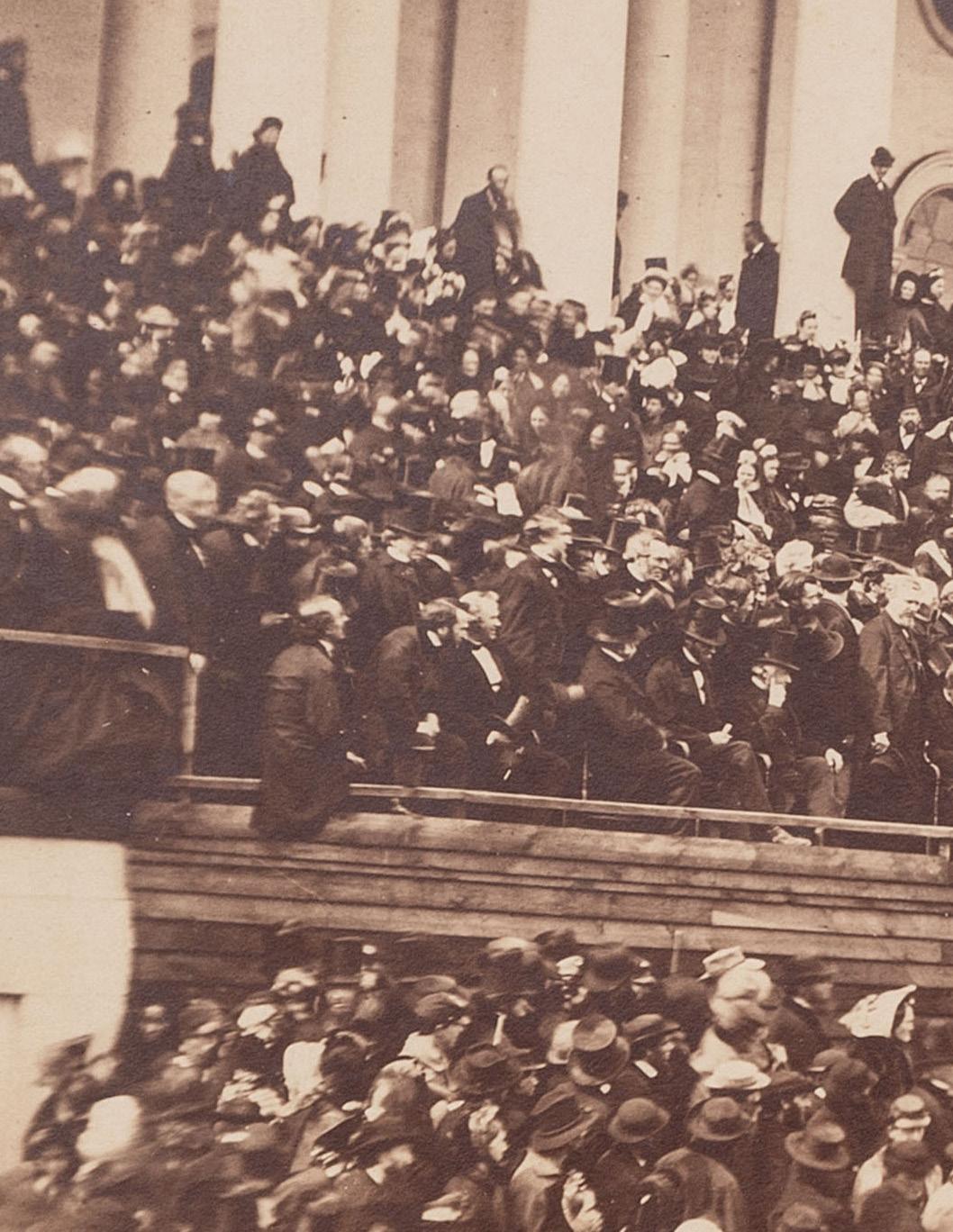AMERICAN HISTORICAL EPHEMERA & PHOTOGRAPHY



SALE 1192
Session I
15 June 2023
10:00am ET | Cincinnati Lots 1–294
PREVIEW
Auction Room and Galleries 5030 Oaklawn Drive, Cincinnati, OH
Preview by Appointment
June 12-13 | 10:00am–5:00pm historicphotography@hindmanauctions.com
Highlights Preview
June 14 | 10:00am–5:00pm
June 15 | 8:00–10:00am
June 16 | 8:00–10:00am
PROPERTY PICK UP HOURS
Monday–Friday | 9:00am–4:00pm By appointment
513.871.1670
Session II
16 June 2023
10:00am ET | Cincinnati Lots 295–567
All property must be paid for within seven days and picked up within thirty days per our Conditions of Sale.
All lots in this catalogue with a lower estimate value of $5,000 and above are searched against the Art Loss Register database
To view the complete catalogue, sign up to bid, and read our Conditions of Sale, visit hindmanauctions.com or the Hindman App. All bidders must agree to Hindman’s Conditions of Sale prior to registering to bid. For bid support contact: 312.280.1212 or bid@hindmanauctions.com.
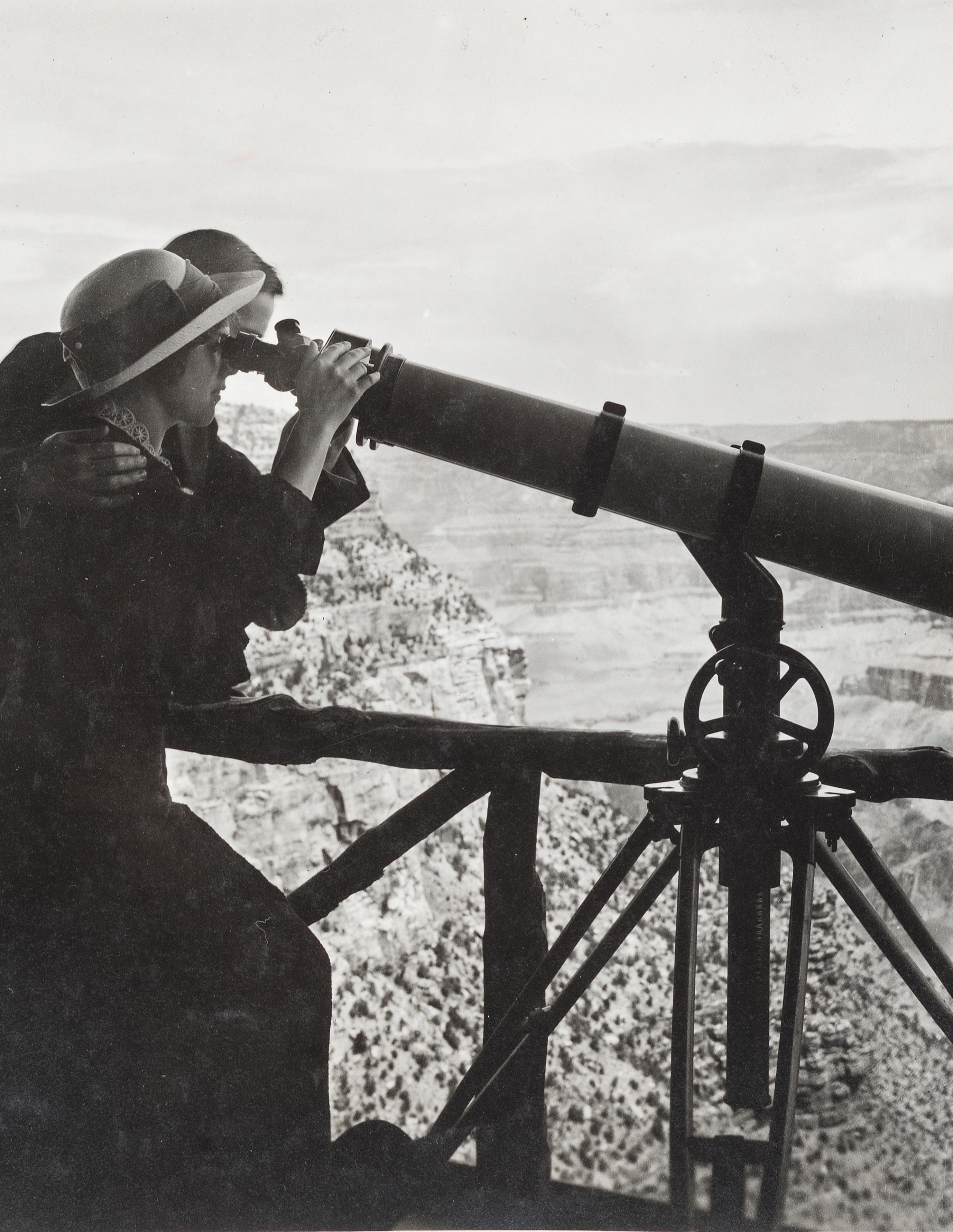
PROPERTY FROM THE TRUSTS AND ESTATES OF Carroll J. Delery III, Formerly the “Historical Shop”
PROPERTY FROM THE COLLECTIONS OF Patrick Atkinson, Minneapolis, Minnesota
The Inventory of James C. Frasca
The James Milgram, M.D., Collection of Broadsides, Ephemeral Americana, and Historical Documents
Property from the Collection of Dr. Brant Mittler
A New York Lady
19th-20th Century Historic Photography Collection of Dr. Joseph T. Pollock

Property from the Civil War and Militaria Collection of George Sanders of Albuquerque, New Mexico
Property from the Collection of Stanley B. Slocum
A 35-Year Collection from the Southern United States
PROPERTY SOLD TO BENEFIT
Property sold to Benefit the U.S. Children’s Center on Historical Education and Advocacy


SESSION I
LOTS 1–294
1 [FRENCH & INDIAN WAR] -- [PRIVATEERS]. A group of 5 documents associated with New York Privateer Captain James Lilley and the British ship he commanded during the French and Indian War, the Duke of Cumberland

$700 - 1,000
2
[FRENCH & INDIAN WAR]. Edinburgh Evening Courant. Edinburgh, Scotland: 11 October 1760. Featuring early, front page coverage of Britain’s capture of Montreal from the French.
$1,000 - 1,500

[PONTIAC’S WAR]. Manuscript orderly book chronicling the daily march of Colonel Henry Bouquet’s force of British, Pennsylvania and Virginia volunteers. AugustNovember, 1764.
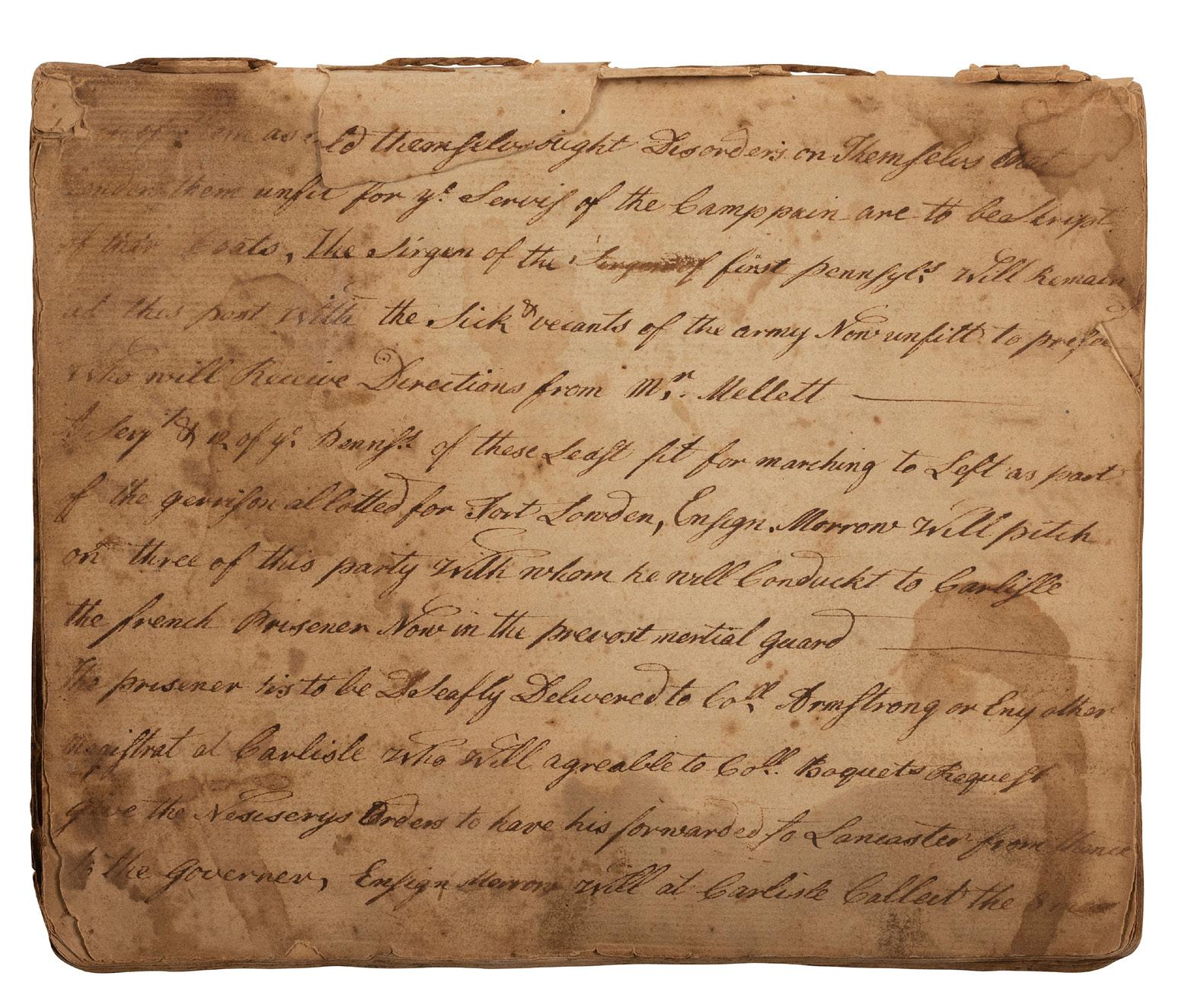
Approx. 7 1/2 x 6 1/4 in. manuscript orderly book, 36 sewn laid-paper leaves with entries on both sides of the sheets, comprising 68pp. of text, and an additional 17 full and clipped pages of receipts. Lacking covers and the first two pages of entries, the account chronicles the daily march of Colonel Henry Bouquet’s force of British, Pennsylvania and Virginia volunteers during the so-called “Pontiac Conspiracy” or “Rebellion” of 1764. Entries document the period between around 30 August 1764, and 30 November of the same year, with several gaps. The writer is unknown.
Two of the three original Bouquet orderly books are curated at the William Clements Library at the University of Michigan. Bouquet’s daily directives were transmitted and copied by various regimental adjutants, and this is more than likely one of these. Given the frequent reference to Pennsylvania troops and officers, it is assumed that the book was penned by an adjutant associated with one of these regiments.
Written in a confident, but semi-literate hand, each day’s entry records the daily password and countersign to be used, as well as the name of the Field officer(s) and adjutant for the day, along with general orders for the troops. Typically, these include what troops are to lead and follow the column, along with the placement of the horsemen, artillery, baggage train and cattle, and reveal the careful planning of the march. Bouquet wanted no surprises.
The uprising began in the spring of 1763 when various Ohio Country and eastern Illinois Country native groups attacked a series of British forts, hoping to drive the foreigners out of their territories. While many native leaders joined in the conflict, it has historically been identified with the Odawa leader Pontiac and is often known as the Pontiac Conspiracy or Rebellion.
Native groups in New France had traditionally been allied with the French, who were relatively few in number and adopted a more or less laissez faire attitude towards Native Groups. After the Treaty of Paris in February 1763, Britain laid claim to the former lands of New France. Under the command of General Geoffrey Amherst, the Crown began to implement policies which alienated native groups -- who had thought the British would abandon their claims to the lands (and peoples) of New France. That spring and summer combined Indian forces laid siege to Forts Detroit and Pitt and captured eight others across a broad swath of the Ohio and Illinois country. By the spring and early summer of 1764, colonists in Virginia, Maryland and Pennsylvania came under increasing attack. Amherst was blamed and recalled to London.
In response, the British launched two expeditions to the West, one aimed at reinforcing Fort Detroit led by Colonel John Bradstreet, and the other, aimed at Fort Pitt, led by Colonel Henry Bouquet. The journal begins as Bouquet is mustering forces in eastern Pennsylvania to march west to Fort Pitt to confront Native warriors whose aim was to drive the British out of the territory traditionally known as New France.
Bouquet began organizing troops in late August, and by early September had left Fort Loudon in eastern Pennsylvania with 1500 British regulars and regiments of Pennsylvania and Virginia troops. The orderly book offered here begins with a partial entry on August 29th outlining the order of march.
By the 30th with troops underway, the journal records that discipline among the troops was being dealt with harshly. “The sentences…passed by the court martial of the Line of which Capt. Wm. Piper was princpl…and their punishment…to be afflicted (sic) on the general parade this morning at 9 AM in the presence of guards.” Tents were to be struck the following morning at daybreak with the march to Fort Pitt to commence.
By the 3rd of September the column had reached Fort Bedford, and Bouquet ordered “Thanks to be given to Capt. Williams Chiefe Engineer and the officers and soulders…for completing the new rode of the Sidling hill…in the future to be called “Captain Williams Gap”.
On the 6th, encamped at Fort Bedford, troops were ordered to withdraw any “shot” from their loaded arms, all arms to be examined by an officer, and all arms from which shot cannot be withdrawn collected with preparations to march the next day with each man drawing two days rations. The writer notes that Bouquet had noticed that “There has been some abuses diluted in ye prov returns” and that officers are to take care.
There are no entries between September 7th and the 20th. By the 20th, the column had arrived at Fort Pitt, and was preparing to cross the Ohio River into the Ohio country. Part of the preparations included sharpening the shooting skills of the troops. “The Penns. Riflemen to be under arms to morrow morning as soon as the guards are marched (martialed) they will again shoot at marks….” Five rounds were to be expended, with five additional rounds to be used for the next day. “Whoever maks ye best shot…will receive a prisement of 3 dolers ye next best….will receive 2 dollars and the next best…will receive 1 doller…”
On September 21, the troops were given the orders to prepare to march. All were to be outfitted with canteens and tomahawks (the latter to be carried in leather straps), a blanket, a pair of leggings, shirt, and a pair of good shoes. September 23. Orders given to allow only a single woman and two nurses to accompany each corps. “No exceptions will be maid….it will be in vain for eny other woman to attempt to follying ye troops.”
On the 24th a General Order was given for 100 troops of each unit of the Regulars and 10 from each militia regiment to form a three-sided square one week later to witness the execution of one Frances Steedwell who had been court martialed and found guilty for desertion.
A General Order on Friday, September 28th commanded that 20th and 60th Royal Grendiers along with the Pennsylvania and Virginia militia to cross the Ohio under the command of Lt. Col. Frances. Colonel Bouquet reported that a “parcel of Mohack and other friendly Indians” were being sent to join the force to “prevent any mistakes happens that might hurt our frienes.”
By the first of October the main force had crossed the Ohio, leaving a small garrison at Fort Pitt. The writer of this manuscript was one of the men who remained behind. From this point forward the daily entries are shorter but containing interesting details about life at Fort Pitt during the absence of the larger column, now in the Ohio Country. Orders are given to clean out “the dirt” from each cabin, for axe men to leave the fort to cut wood, to gather corn and vegetables, what time lights are to be extinguished (9 pm), no burning of fence rails, and perhaps most importantly, prohibiting the sale of more than one gill of alcohol daily. By October 23, the sale of all alcohol was completely prohibited.
There is a significant gap in the entries after October 27th and November 30th, when the last entry is made – in a seemingly different hand. By this point the main force had returned to Fort Pitt. Another deserter was found guilty and sentenced to be shot to death, but Colonel Bouquet was to plead to General Gage for a pardon based upon the guilty party’s service in the campaign.
An important, and heretofore unknown account of this seminal expedition. $10,000 - 20,000
5 [SIGNER]. LANGDON, John (1741-1819). Autograph letter signed (“Jn. Langdon”), to Messrs. Gouverneur & Kemble. Portsmouth, 30 June 1792.

Property from the James Milgram, M.D., Collection of Broadsides, Ephemeral Americana, and Historical Documents
$300 - 500
4 [SIGNER]. LANGDON, John (1741-1819). Letter signed (“John Langdon”). Portsmouth, NH. 16 July 1762. [With:] LANGDON, Betsy. ALS 1763.

Property from the James Milgram, M.D., Collection of Broadsides, Ephemeral Americana, and Historical Documents
$500 - 700
6 [NONIMPORTATION AGREEMENTS]. Pennsylvania Chronicle and Universal Advertiser. Vol. III, No. 43. Philadelphia, PA: William Goddard and Benjamin Towne, 20 November 1769.
$800 - 1,200

7 [REVOLUTIONARY WAR]. London Chronicle. Vol. XL, No. 312. London, England: J. Wilkie, 21 December 1776. Coverage of the Battles of New York and British occupation of the city.

$500 - 700
8 [REVOLUTIONARY WAR - SIEGE OF CHARLESTON]. ALLEN, William (1704-1780). Autograph letter signed (“William Allen”), to Cyprian Stormy[?]. Morris-Town, [NJ], 4 April 1780.
1 page, 8vo.
William Allen, Mayor of Philadelphia and Chief Justice of the Province of Pennsylvania, was a Loyalist during the Revolutionary War. He writes: “By intelligence from New York we know that an embarkation of 4000 troops is going on with a possible expedition, their destination unknown, tho they have given out that they are Bound to South Carolina.”
The Siege of Charleston, fought in Charles Town between March 29 and May 12, 1780, was a major British victory during the Revolutionary War, representing one of the worst American defeats of the war.
Property from the James Milgram, M.D., Collection of Broadsides, Ephemeral Americana, and Historical Documents
$400 - 600
9 [REVOLUTIONARY WAR]. True copy of an order given by Timothy Pickering (17451829) as Quartermaster General. [Newburgh], [1 February 1781].

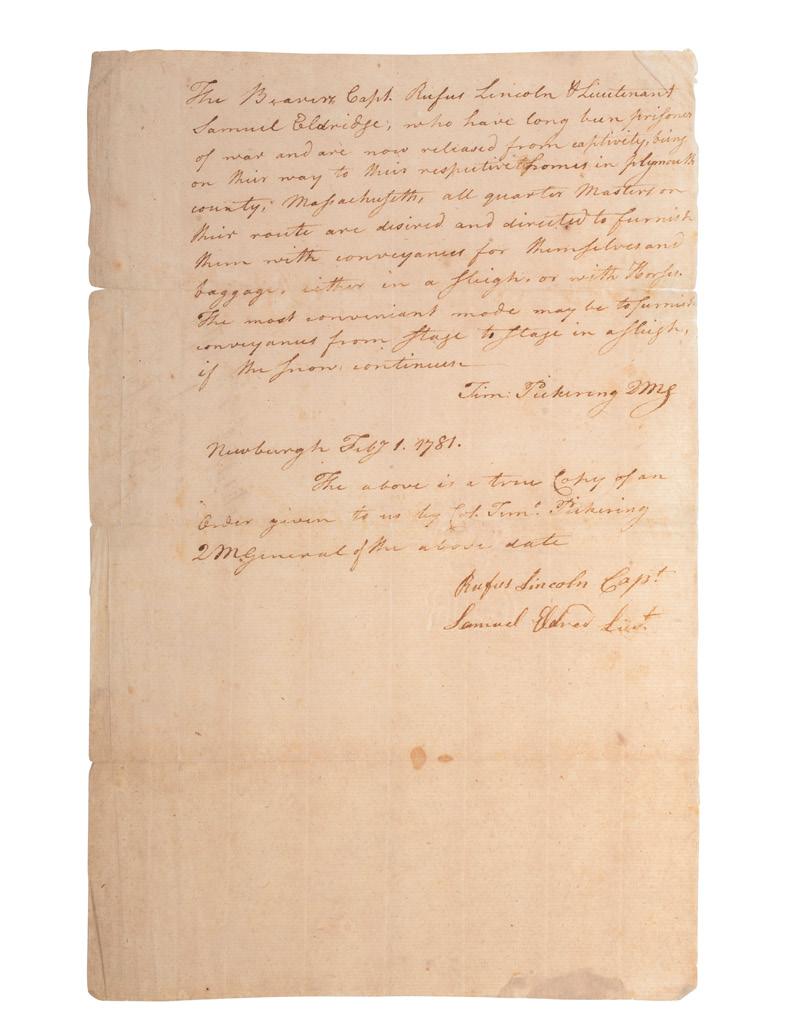
One page, 7 13/16 x 12 1/4 in. Docketed verso.
In full: “The Bearers, Capt. Rufus Lincoln & Lieutenant Samual Eldridge, who have long been prisoners of war and are now released from captivity, being on their way to their respective homes in Plymouth county, Massachusetts, all quarter masters on their route are desired and directed to furnish them with conveyances for themselves and baggage, either in a sleigh, or with Horses. The most conveniant [sic] mode may be to furnish conveyances from stage to stage in a sleigh, if the snow continues.”
Below order is a note indicating the above order is a “true copy of an order given to us by Col. Tim. Pickering QM General of the above date.” Undersigned “Rufus Lincoln Capt.” and “Samuel Eldred Lieut.”
Property from the James Milgram, M.D., Collection of Broadsides, Ephemeral Americana, and Historical Documents
$400 - 600
10
PICKERING, Timothy (1745-1829). Autograph letter signed (“T. Pickering QMG”) as Quartermaster General of the Continental Army. Newburgh, 17 March 1783.
2 pages, 8 3/8 x 13 1/2 in.
In this letter to his adjutant, David Wolfe, Pickering asks him to arrange payment such payment as was promised to an artificer who had been at West Point with General Knox.
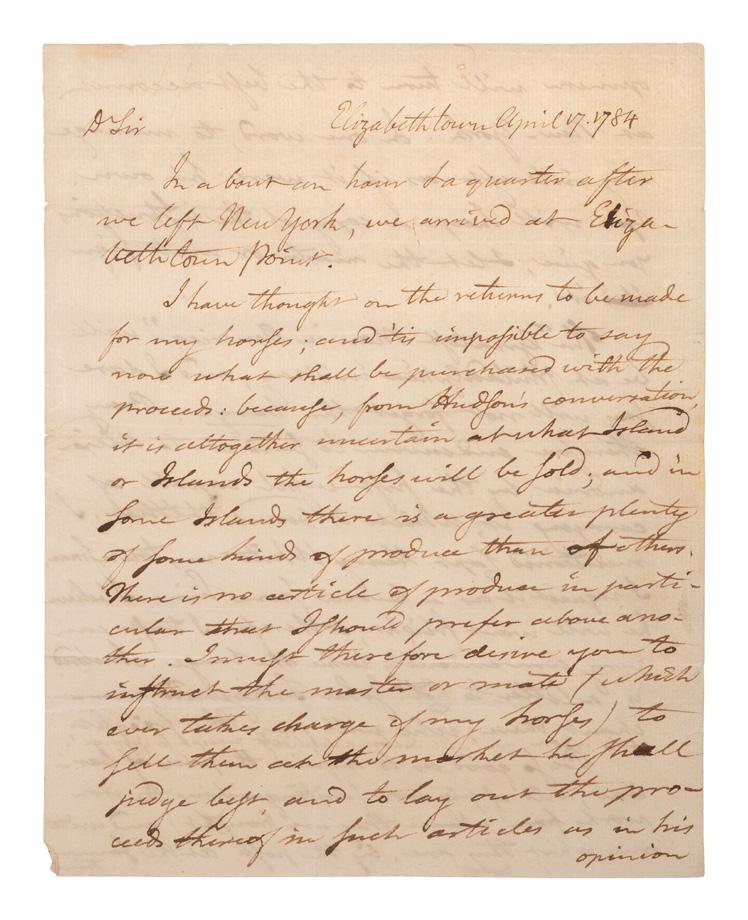

Property from the James Milgram, M.D., Collection of Broadsides, Ephemeral Americana, and Historical Documents
$300 - 400
11
PICKERING, Timothy (1745-1829). Autograph letter signed (“Tim Pickering”), to Peter Anspach and Messr. Wolfe. Elizabethtown, 17 April 1784.
4 pages, 4to, addressed on integral leaf, docketed “THE ‘GREATEST MAN IN AMERICA’ WILL BE AT PHILADELPHIA IN MAY” Washington’s trusted advisor, Timothy Pickering, arranges for Washington’s arrival in Philadelphia. “The ‘Greatest Man in America’ will be at Philadelphia in May, and I dare say will not forget the barge. Pray therefore endeavour to send it to Alexandria by the first [?] capable of carrying it, which is bound thither. I mentioned Capt. Henry White, my townsman, I request is at a favor from him.” Pickering also inquires about the cost of iron, mentions that he has lent his own barge to Baron Steuben, and attempts to arrange for returns for his horses.
Property from the James Milgram, M.D., Collection of Broadsides, Ephemeral Americana, and Historical Documents
$800 - 1,200
12
PICKERING, Timothy (1745-1829). Autograph letter signed (“Timothy Pickering”), as Secretary of State, to Richard VARICK (1753-1831), Mayor of New York. Philadelphia, 11 January 1798.
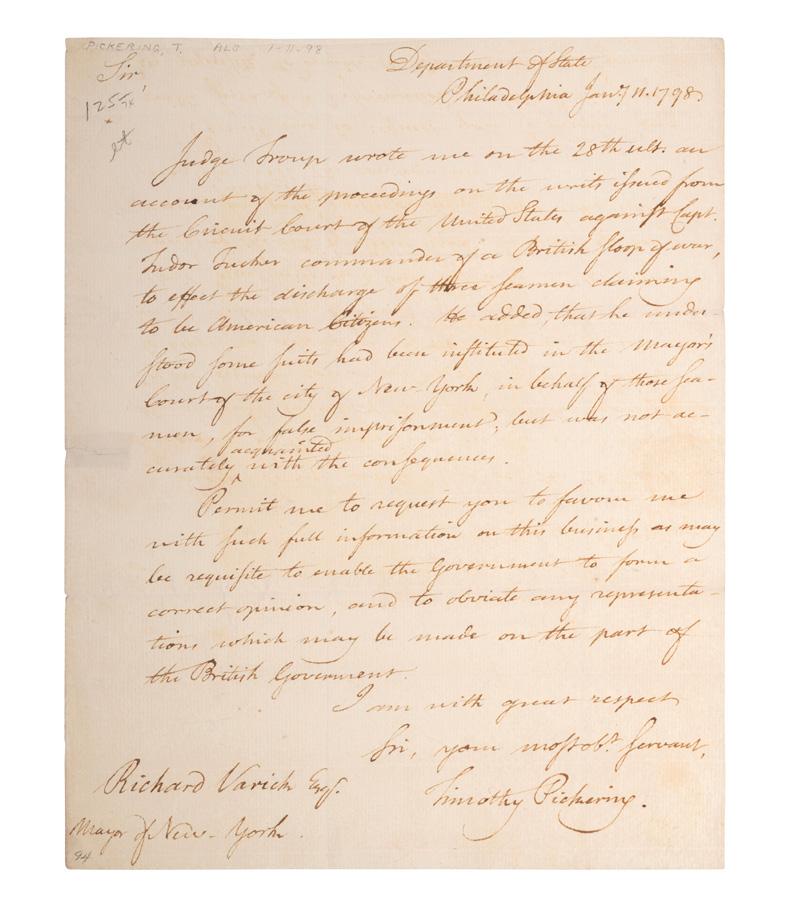
1 page, 4to Provenance: Walter Dormitzer (sold Henkels, Philadelphia, 18 March 1921.
PICKERING WRITES THE MAYOR OF NEW YORK ABOUT THE IMPRESSMENT OF AMERICAN SEAMEN BY THE BRITISH
Pickering writes: “Judge Trout wrote me on the 28th ult. an account of the proceedings on the writs issued from the Circuit Court of the United States against Capt. Tudor Tucker, commander of a British Sloop of war, to effect the discharge of three seamen claiming to be American Citizens. He added that he understood some suit had been instituted in the Mayor’s Court of the city of New York, in behalf of those seamen, for false imprisonment, but was not accurately acquainted with the consequences.” The impressment of American seamen by the British Royal Navy in the late 18th and early 19th centuries has traditionally been viewed as a primary cause of the War of 1812.
Property from the James Milgram, M.D., Collection of Broadsides, Ephemeral Americana, and Historical Documents
$800 - 1,200
13
[REVOLUTIONARY WAR - BATTLE OF GUILFORD COURT HOUSE]. Northampton Mercury. Vol. LXII, No. 10. London, England: Thomas Dicey & Co., 14 May 1781. $600 - 800
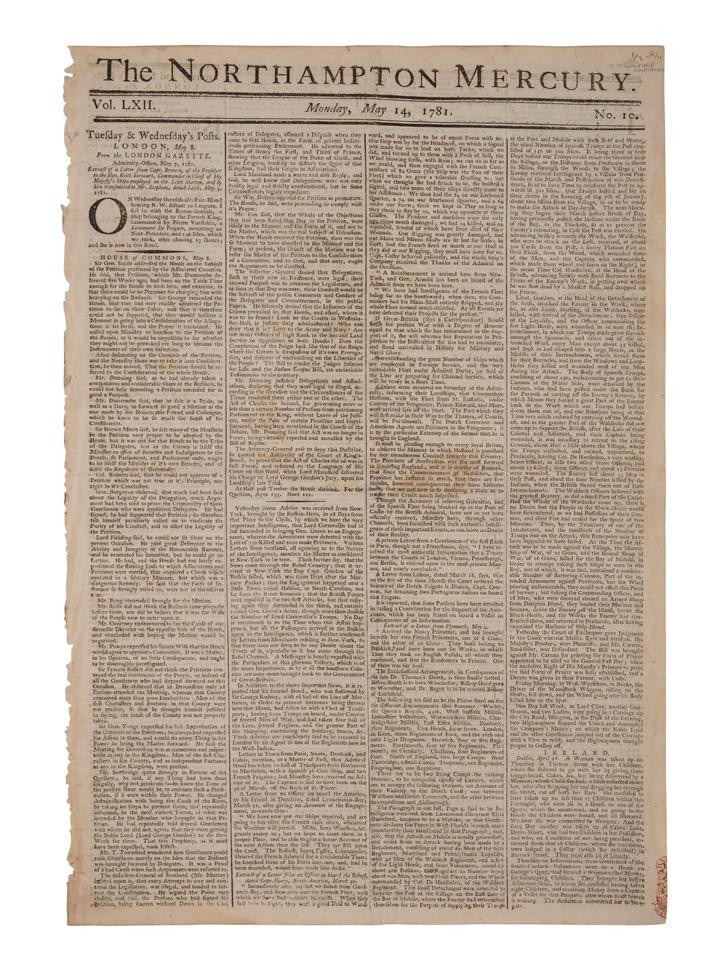
14
[REVOLUTIONARY WAR]. Manuscript document signed (“D.M.”?), to Captain Colville? Claverack, NY, 22 October 1781.

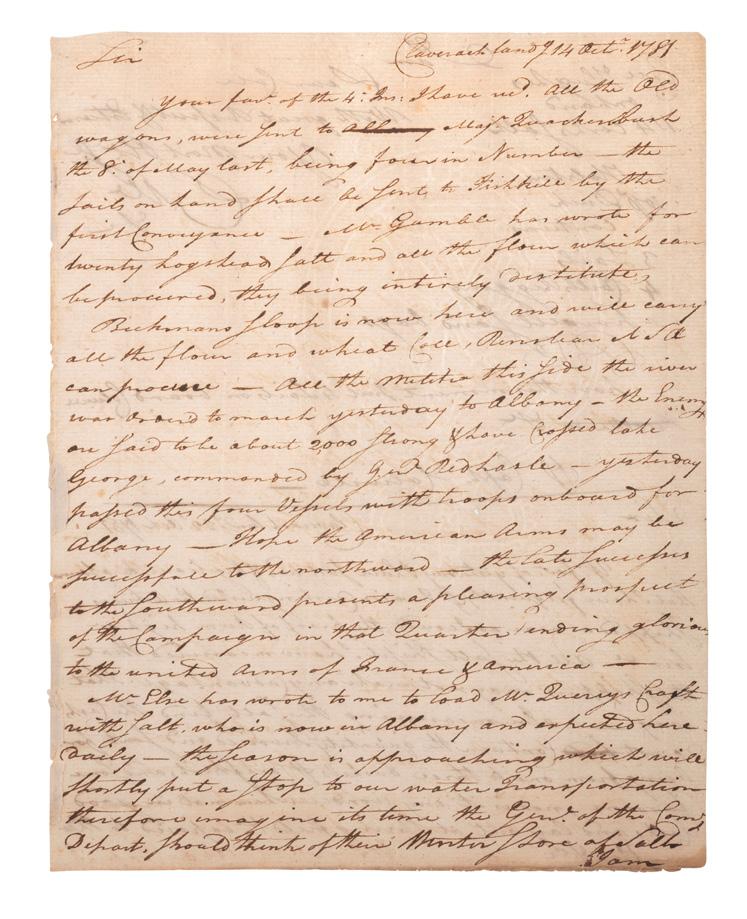
ORDERS FOR THE CONTINENTAL ARMY TO BEGIN THEIR MARCH TO YORKTOWN, VIRGINIA FOLLOWING AMERICAN VICTORY
In part: “All the militia this side of the river was ordered to march yesterday to Albany. The enemy are said to be about 2000 strong and have crossed Lake George commanded by Gen. Redhasle yesterday passed this four vessels with troops on board for Albany. Hope the American arms may be successful to the northward. The late successes to the Southward present a pleasing prospect of the Campaign in that quarter ending glorious to the united arms of France and America.”
The Battle of Yorktown, which ended in American victory, proved to be the decisive engagement of the American Revolution. Following their defeat, the British Army surrendered on October 19th.
Property from the James Milgram, M.D., Collection of Broadsides, Ephemeral Americana, and Historical Documents
$1,500 - 3,000
15 [REVOLUTIONARY WAR]. LESLIE, Alexander (1731-1794). Document signed (“Alexr. Leslie”), DECLARING HIS MEN’S SAFE PASSAGE UNDER FLAG OF TRUCE TO SPEAK WITH GENERAL NATHANAEL GREENE. Charleston, [SC], 19 December 1781.
Provenance: Parke Bernet, Autograph Letters and Documents Main American, Collected by the Late Forest G. Sweet, Battle Creek, Michigan. Part Two. 22-23 October 1957.
Property from the Collection of Dr. Brant Mittler
$800 - 1,200
16
[REVOLUTIONARY WAR]. Northampton Mercury. Vol LXIV, Nos. 30-33. London, England: Thomas Dicey & Co., 29 September - 20 October 1783. A group of 4 issues containing the complete printing of the Peace of Paris of 1783, the treaties that ended the Revolutionary War.
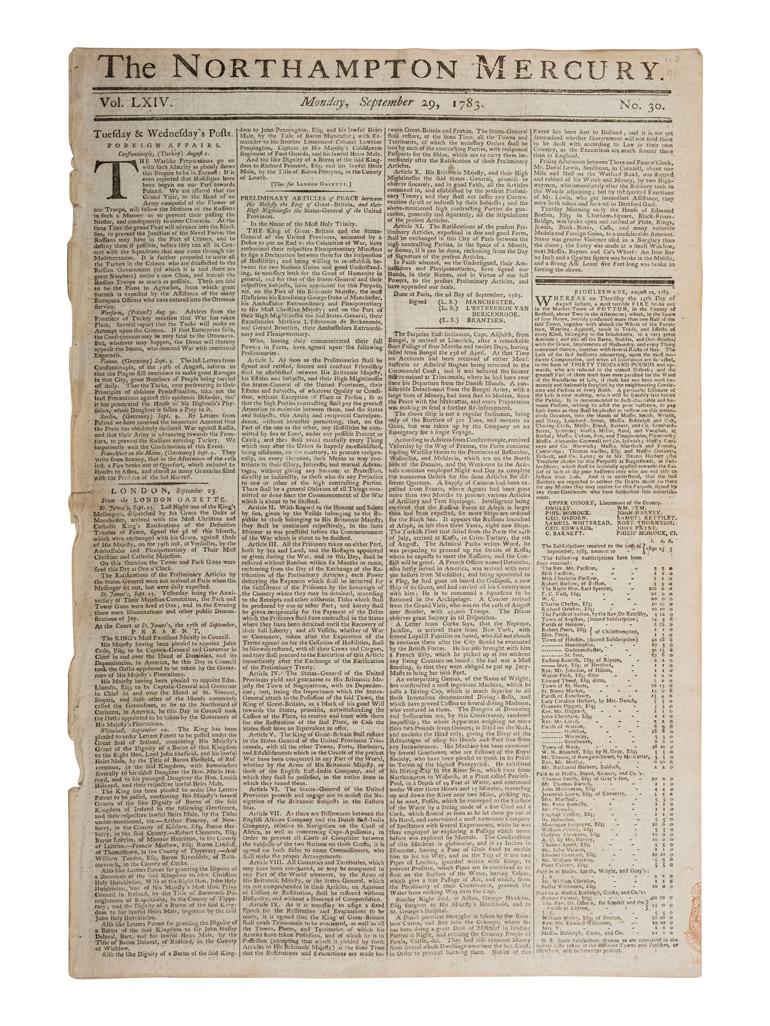
$1,000 - 1,500
17
WILSON, Robert (1777-1849). Autograph letter signed (“RT Wilson”) with identification possibly in Marquis de Lafayette’s hand. “Brighton Co.,” 27 September.
2 pages, 5 x 7 3/4 in. Author identified to upper margin “Sir Robert Wilson,” possibly written in Lafayette’s hand, with modern pencil inscription identifying it as such. In this letter written entirely in French, Sir Robert Wilson mentions a friend, Mr. Beaumont, who is a very liberal Member of Parliament, to whom he hopes General Lafayette will grant a friendly welcome.
Sir Robert Wilson served as a general of the British Army, as a Whig Member of Parliament from 1818-1831, and Governor of Gibraltar from 1842-1849.
Property from the James Milgram, M.D., Collection of Broadsides, Ephemeral Americana, and Historical Documents
$300 - 400
18
BROUGHAM, Henry P. (1778-1868). Autograph letter signed (“H. Brougham”) with identification possibly in Marquis de Lafayette’s hand. Lancaster, 29 August[?] 1830.
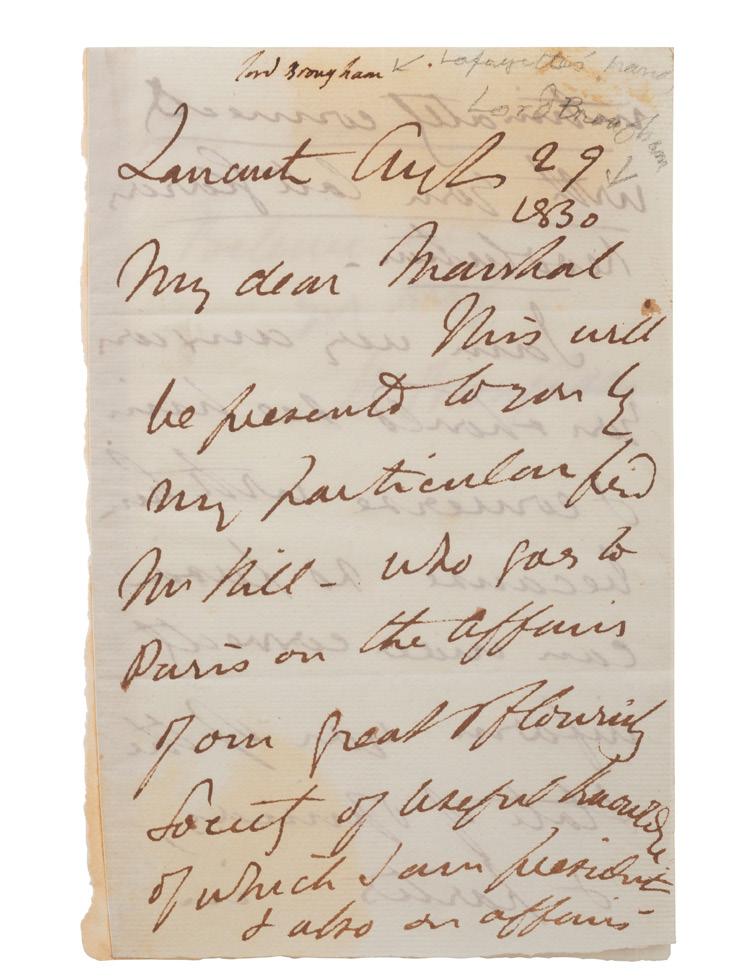
2 1/4 pages, on bifolium, 4 3/8 x 7 3/16 in. Author identified to upper margin “lord Brougham,” possibly written in Lafayette’s hand, with modern pencil inscription identifying it as such.
In this letter, believed to be written to Marquis de Lafayette (1757-1834), Lord Brougham writes, in full: My dear Marshal, This will be presented to you & my particular friend Mr. Hill - who goes[?] to Paris on the affairs of our great & flourishing Society of useful knowledge of which I am president & also on affairs intimately connected with your late glorious revolution. I am very anxious you should see him & converse with him because no person can more correctly inform you of the state of minds & hartes [sic] in this country.”
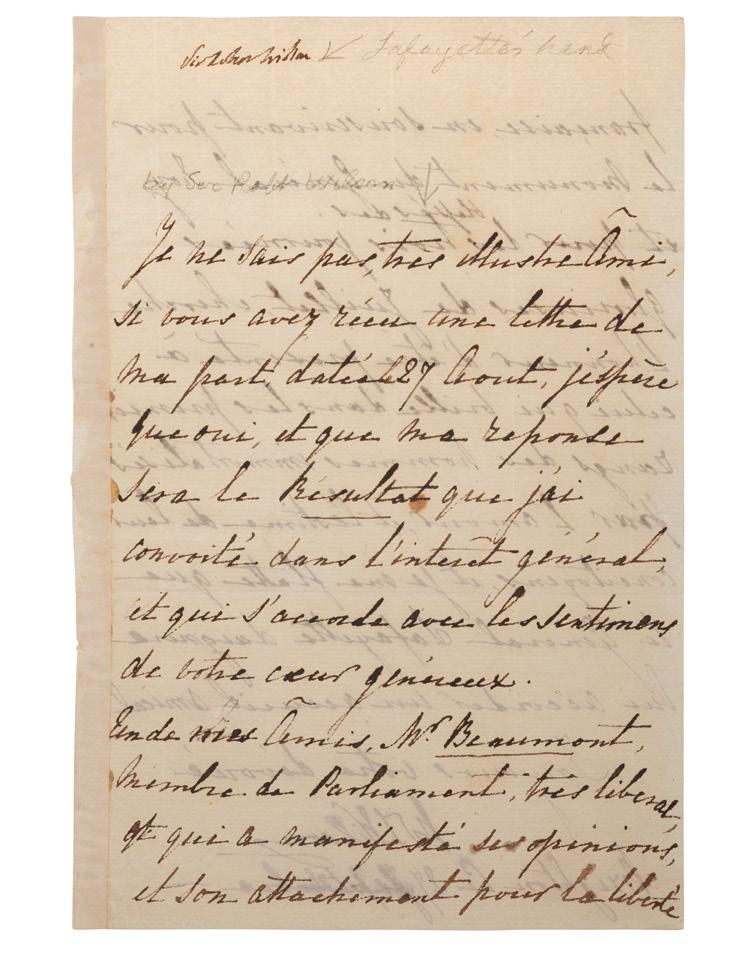
The “late glorious revolution” to which Lord Brougham refers here is likely the July Revolution of 1830, of which Lafayette was hailed the leader. Paris erupted in riots, and the Chamber of Deputies offered Lafayette the position of ruler, which he declined. Soon after, Lafayette retired from public life.
Henry P. Brougham, 1st Baron Brougham and Vaux, was a prominent British politician and academic, achieving the position of Lord High Chancellor of Britain (1830-1834) and being instrumental in the passing of the 1832 Reform Act and the 1833 Slavery Abolition Act. His Society for the Diffusion of Useful Knowledge was in existence from 1826-1846, purposed to provide inexpensive educational materials to common people who could not access or did not desire a formal education.
Property from the James Milgram, M.D., Collection of Broadsides, Ephemeral Americana, and Historical Documents
$300 - 400
19
LAFAYETTE, Marie Joseph Paul Yves Roch Gilbert du Motier, Marquis de (17571834). Two-word annotation (“Lord Holland”), accomplished on: VASSALL-FOX, Henry Richard, 3rd Baron Holland of Holland (1773-1840). Autograph letter signed (“Vassall Holland”), to Lafayette. N.p., 11 December 1830. 2 1/2 pages, 4to, on a bifolium. Vassal-Fox writes recommending a colleague (Palmerton?) to Lafayette: “He is good enough to think that ta line from me may be useful to him, & modest enough to imagine that this own exertions...are not sufficient to attract your attention to him. He is an in truth one of our most considerable public men & particularly distinguished both in & out of office.” He writes about affairs in Portugal, Peru, Paris, and Belgium.

Property from the James Milgram, M.D., Collection of Broadsides, Ephemeral Americana, and Historical Documents
$300 - 400
20
[NORTH CAROLINA]. Gazette of the United States. No. LXXV. New York: John Fenno, 30 December 1789. North Carolina’s Ratification of the US Constitution.
$500 - 700
21 [WASHINGTON, DC]. Gazette of the United States. Vol. II, No. 28. New York: John Fenno, 17 July 1790. First newspaper printing of the Act establishing Washington, DC, as the Federal Capitol City.
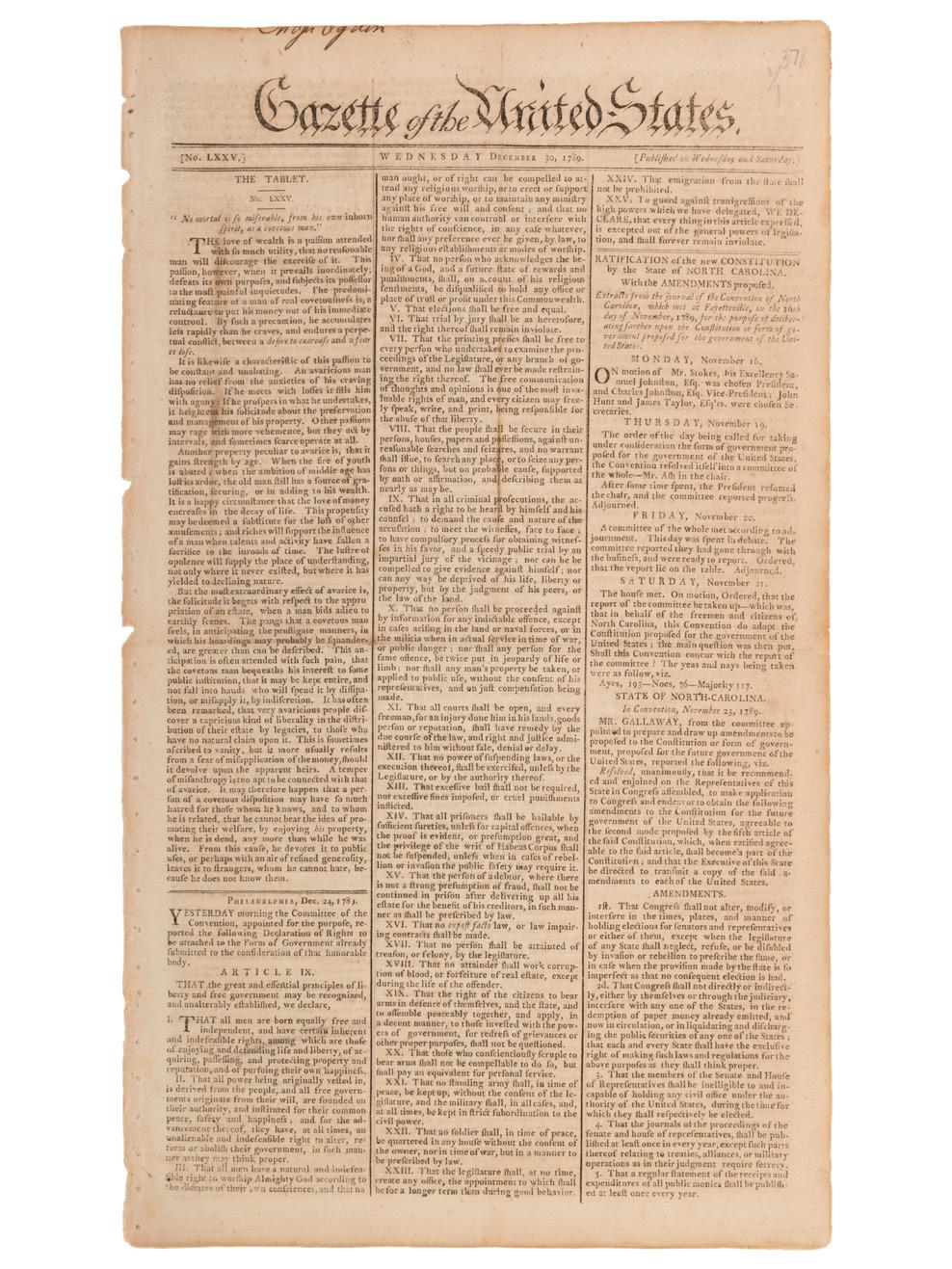
$3,000 - 4,000
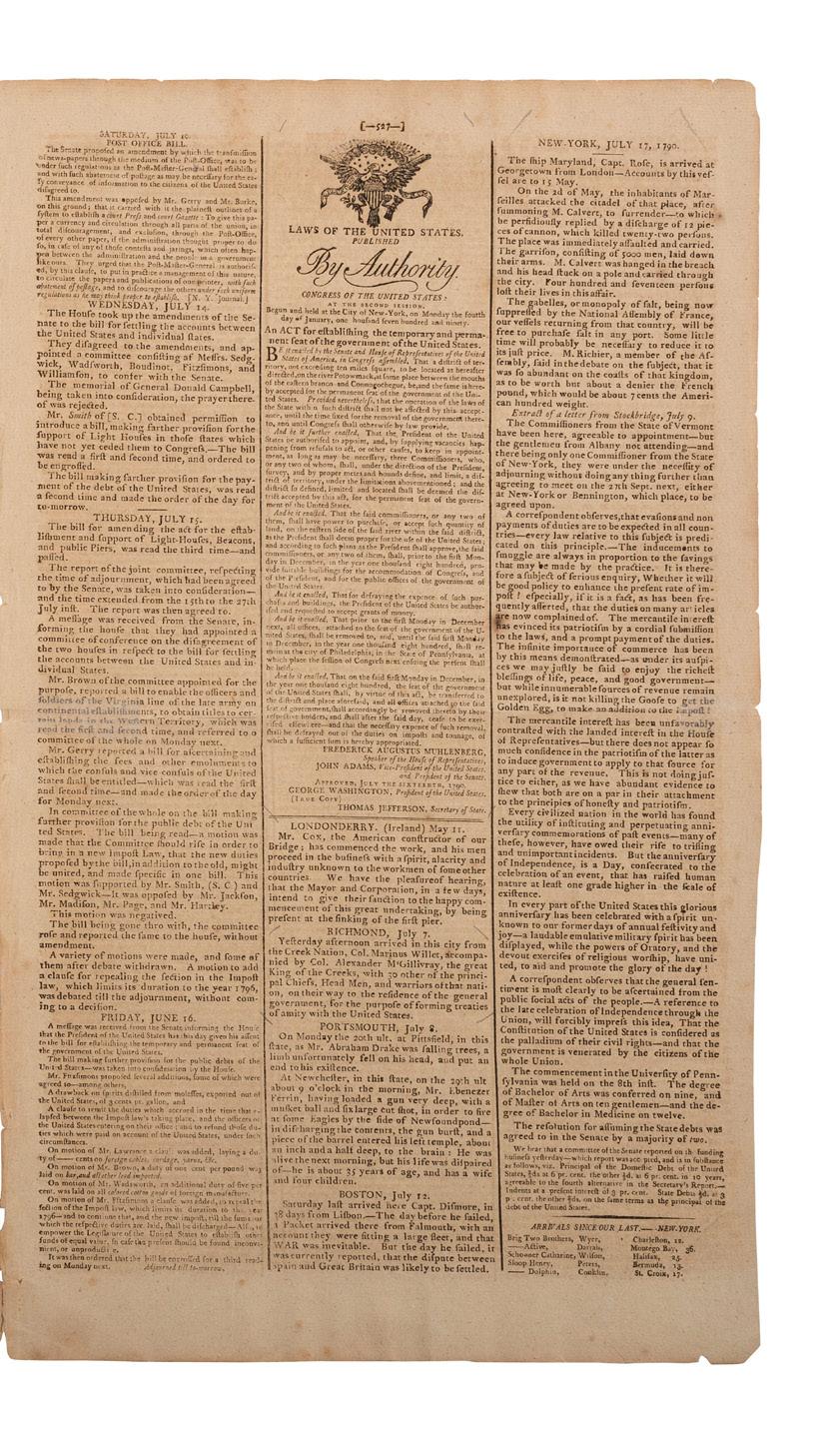
22
[WASHINGTON, DC]. Indenture of Lands Pertaining to the Formation of the City of Washington D.C. 1791-1804
$400 - 600
23
[NEW ENGLAND MISSISSIPPI LAND COMPANY]. 1802 hand-written power of attorney signed by all nine directors of the New England Mississippi Land Company to appoint five directors to negotiate their vast claim with the US commissioners with respect to Georgia lands ceded to the United States.


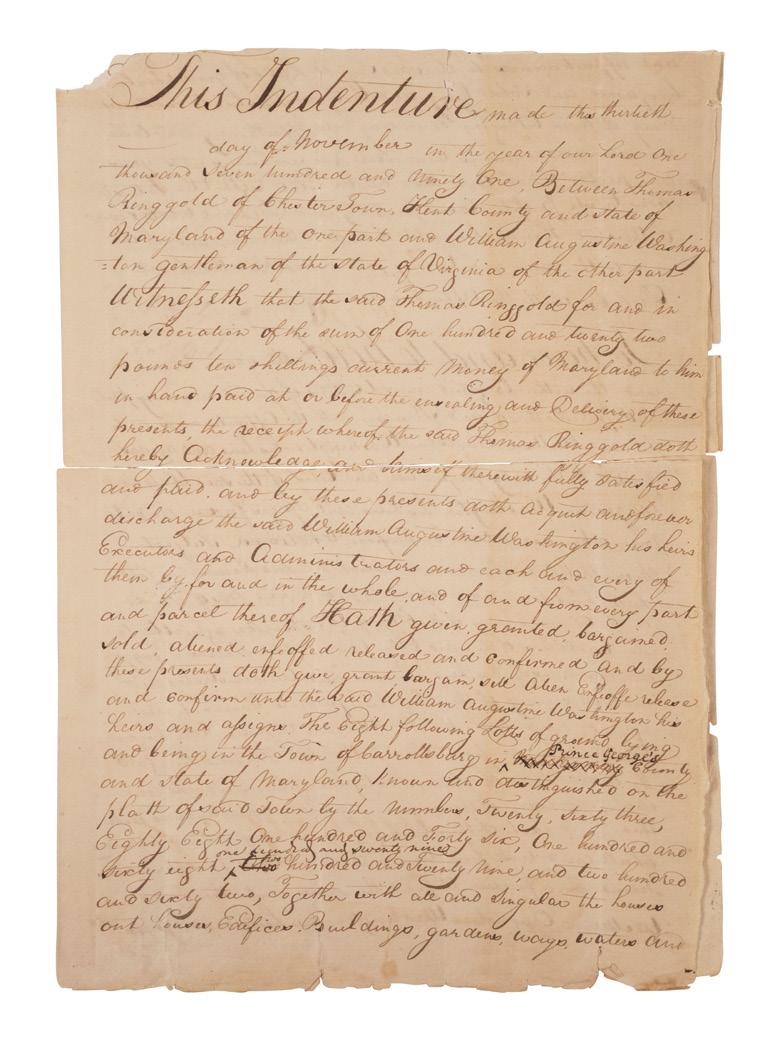
$500 - 700
24
[NEW YORK]. SANDS, Joshua (1757-1835). Partially printed Seaman Protection document signed (“Josha. Sands, Collector”), as Collector of the Port of New York. [New York], 4 May 1799.
One page, approx. 6 1/2 x 8 1/4 in. New York Customs House embossed seal affixed lower right.
Joshua Sands certifies that Jakamiah Allen, aged 21, with dark brown hair and brown complexion, born on Long Island, is a citizen of the United States of America.
These certificates were issued to American sailors to protect them from impressment on British ships leading up to the War of 1812 and thereafter. The 1796 Act of Protection required customs collectors to maintain records of citizenship of those working on US vessels.
Joshua Sands was appointed Collector of the Port of New York by John Adams, serving from 1797 until 1801. He thereafter represented New York’s 2nd District in the United States House of Representatives from 1803-1805, and again from 1825-1827.
Property from the James Milgram, M.D., Collection of Broadsides, Ephemeral Americana, and Historical Documents
$500 - 700
25 [WAR OF 1812]. HULL, William (1753-1825). Letter signed (“W. Hull B. Genl. Com.g”), written in a secretarial hand, to John Tharp, Esq. Detroit, 8 August 1812.
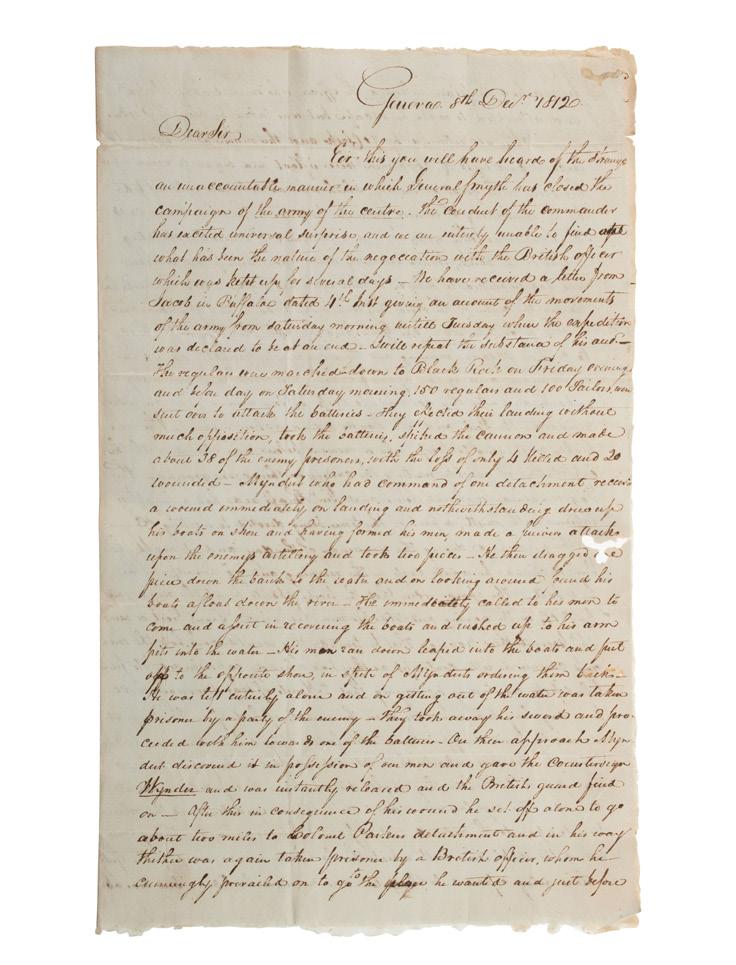
1 page, 4to, docketed verso.
HULL WRITES ON THE DAY OF RETREAT TO DETROIT
In full: “John Tharp Esqr. Superintendant of Artificers of the N Western Army will organize such number of Artificiers in the different acts (from Citizens if to be had if not from the Army) as he may deem necessary for the discharge of the duties attached to his office at this important Crisis to serve for such time as they may severally be willing to engage.”
Hull served during the Revolutionary War rising to the rank of Lt. Colonel. He was appointed Governor of the Michigan Territory, and was commissioned a Brigadier General at the outset of the War of 1812. Following a mismanaged invasion of Upper Canada, Hull retreated to Detroit on 8 August 1812, and surrendered the fort and 2,500 troops, without firing a shot, to a British force of 300 regulars, 400 militia, and 600 Indians. For this, he was court-martialed, nearly resulting in his execution. With an engraved portrait of Hull. Property from the James Milgram, M.D., Collection of Broadsides, Ephemeral Americana, and Historical Documents
$750 - 1,500
26 [WAR OF 1812]. ALLEN, Andrew, Jr. Manuscript document signed (“And’w Allen Junr.”). 18 September 1812. Addressed to the Commanders of his Majesty’s Ships of War, or of private armed Ships belonging to the subjects of his Majesty.

$300 - 500
27
[WAR OF 1812]. MORTON, G. H. Autograph letter signed (“G. H. Morton”), to Peter P. Dox. Geneva, NY, 8 December 1812. 3 pages, 4to, on a bifolium, addressed on an integral leaf MORTON WRITES TO PETER P. DOX ABOUT HIS BROTHER, CAPTAIN MYNDERT M. DOX

Myndert M. Dox served as Captain in the Thirteenth Regiment of Infantry from 1812 to 1815 in Geneva, NY. G. H. Morton sends his brother, Peter P. Dox, an updated: “Err this you will have heard of the strange and unaccountable manner in which General Smyth has closed the campaign of the army of the centre. We have received a letter from Jacob in Buffalo dated 4th...giving an account of the movements of the army from Saturday morning until Tuesday when the expedition was declared to be at an end. I will repeat the substance of his acct.--The regular war marched down to Black Rock on Friday evening and before day on Saturday morning. 150 regulars and 100 sailors were sent over to attack the batteries.”
“Myndert who had command of one detachment received a wound immediately on landing and notwithstanding drew up his boats on shore and having formed his men made a furious attack upon the enemy artillery and took two pieces. ...on looking around found his boats afloat down the river. He immediately called to his men to come and assist in recovering the boats and rushed up to his arm pits into the water. His men ran down leaped into the boards and put up the to the opposite shore, in spite of Myndert ordering them back. He was left entirely alone and on getting out of the water was taken prisoner by a party of the enemy. They took away his sword and proceeded with him toward one of the batteries. On their approach, Myndert discovered it in possession of our men and gave the countersign Wynder and was instantly released and the British guard fired on. ...Myndert was then in snug quarters in Buffalo and received every attention. His wound is in the calf of his leg and will not confine him long...We have not had a single line from him since he left Geneva.
...While writing Lawson has just arrived safe.”
Morton includes an extensive description of the battle action in early December around Black Rock and includes descriptions of the actions of General Smyth.
Property from the James Milgram, M.D., Collection of Broadsides, Ephemeral Americana, and Historical Documents
$400 - 800
28
SPAFFORD, Horatio Gates, Sr. (1778-1832). Autograph letter signed (“Horatio Gates Spafford”) pressing Aaron Burr to write on New York’s fortifications. Albany, NY, 17 March 1813.
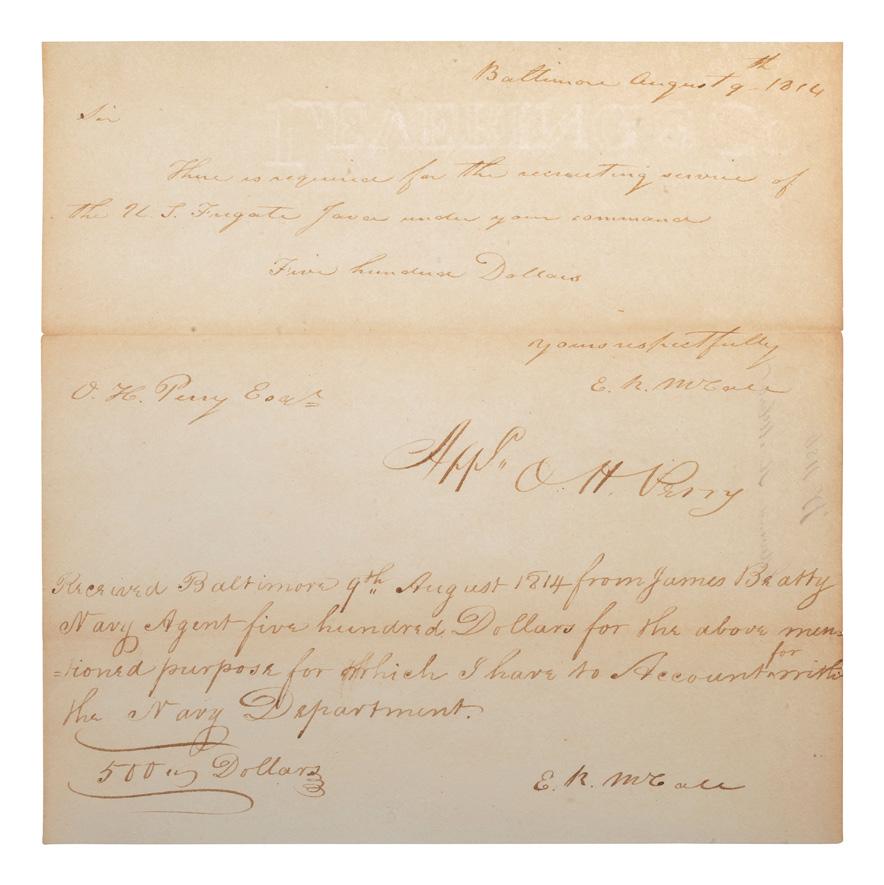

$250 - 350
29
[WAR OF 1812]. Letter describing military movements in Upstate New York, written by Ira Wright. Brownville, 4 April 1813.
2 pages, on bifolium, 7 3/4 x 10 3/4 in. Addressed on integral leaf.
In this letter to his brother, Orren Wright of Whitehall, New York, Ira writes that he is pleased to have arrived at “this place,” after a 10-day march. He notes that the 9th, 21st, and 25th regiments (one of them most likely his) left Burlington on 24 March and arrived at their current location on 2 April. He writes that they plan to stay around 20-30 days before moving “probablely [sic] to Sackets harbor.”
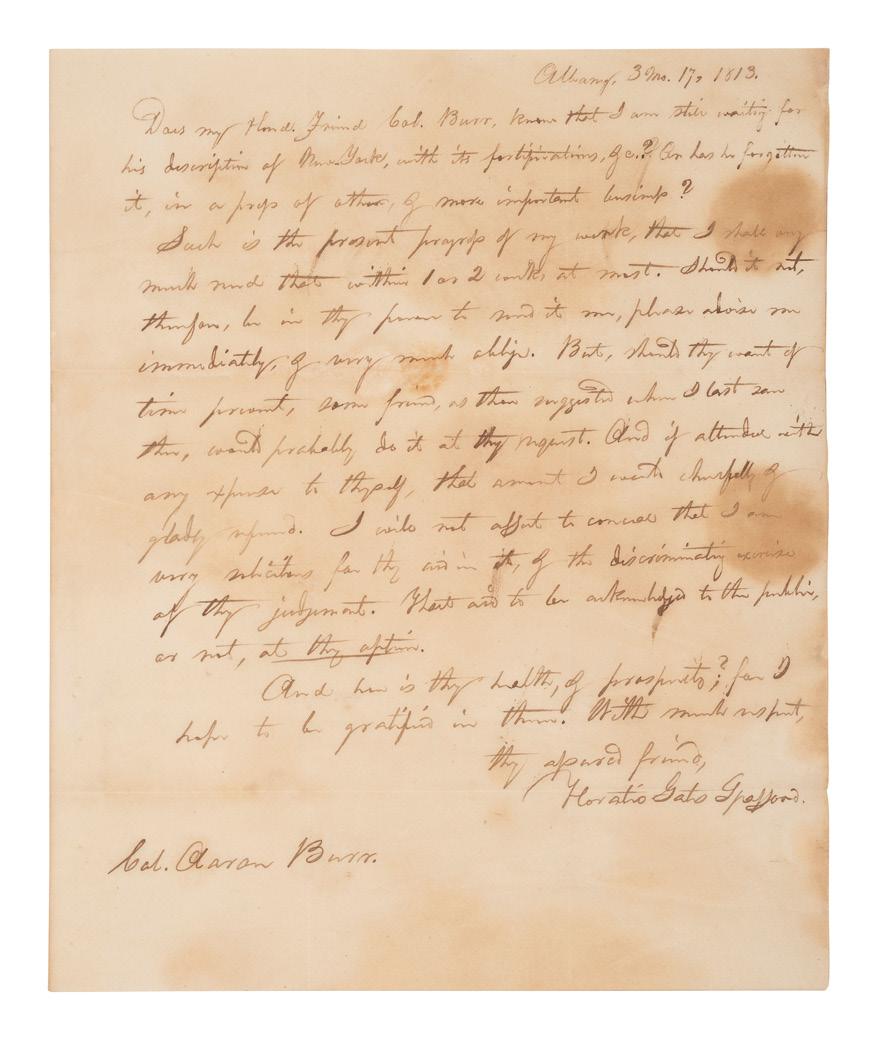
Ira then expresses his enjoyment of the northern countryside, waxing poetic about the land and the nation for which he fights: “I think this northern part is far superior to the southern, perhaps one day this is to be the seat of empire, here may be raised the American banner, whose stars will attrack [sic] the nations of the south and the nations of the north to partake of her freedom...As soon as the lakes are opened it is presumed this army will go into operation and I think the prospect of success is more in our favor than it has before been. This nation is yet to become great, she has not yet arriven to her achme [sic], there is too much wilderness yet uncultivated, there are yet too many streams unexplored to admit of the idea that she is to rais [sic] no higher...”
Property from the James Milgram, M.D., Collection of Broadsides, Ephemeral Americana, and Historical Documents
$300 - 400 30
PERRY, Oliver Hazard (1785-1819). Signature (“O. H. Perry”), accomplished beneath a manuscript note from E. R. McCall. Baltimore, 19 August 1814. 1 page, 4to
Perry boldly signs his name beneath an autograph note from E. R. McCall:
“There is required for the recruiting service of the U. S. Frigate Java under your command Five hundred Dollars.” Oliver Hazard Perry, the Hero of Lake Erie, commanded a successful fleet action against a squadron of the Royal Navy in the Battle of Lake Erie, forcing the surrender of the British naval squadron during the War of 1812.
The USS Java was a wooden-hulled sailing frigate, built in Baltimore in 1814 and 1815 by Flannigan & Parsons. It was completed after the War of 1812, and under the command of Captain Oliver Perry, sailed from Baltimore 5 August 1815 to Newport Rhode Island to fill out her crew. The ship was ordered to the Mediterranean to serve in the Second Barbary War. Java was off the coast of Algiers when Perry went ashore to honor the treaty he had signed, and then the ship sailed to Tripoli to demonstrate the strength and resolve of the U. S. Navy. Property from the James Milgram, M.D., Collection of Broadsides, Ephemeral Americana, and Historical Documents
$600 - 900
31
$1,000 - 1,500
32
[WAR
Property
$500 - 700
33
DEARBORN, Henry (1751-1829). Autograph letter signed (“H. Dearborn”), in which Dearborn advises his son on the treatment of sciatica. Gardiner, 16 September 1817. 2 pages, on fully separated bifolium, 7 3/4 x 9 3/4 in. Addressed on fully separated leaf, docketed.
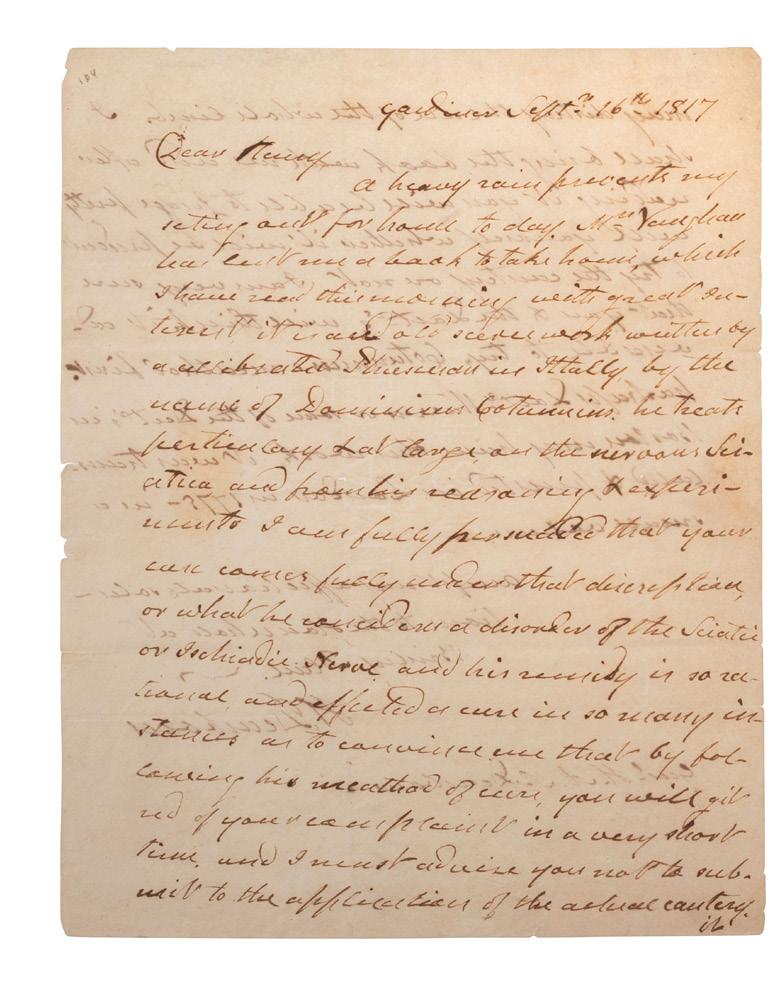
In this letter to his son, General Henry Alexander Scammell Dearborn, the senior General Henry Dearborn advises the junior Dearborn regarding a sciatic nerve problem he is experiencing. Referencing a medical book by Italian physician Dominicus Cotunnius, he writes, in part: “I am fully persuaded that your case comes fully under that discipline or what he considers a disorder of the Sciatic or Ischiadic Nerve and his remidy [sic] is so [indecipherable] and effected a cure in so many instances as to convince me that by following his method of cure you will git [sic] rid of your complaint in a very short time. I must advise you not to submit to the application of the actual cautery. It may destroy the use of the whole limb.”

Henry Dearborn (1751-1829) first studied medicine as a young man, practicing in Nottingham, New Jersey from 1772, before earning renown as a military leader in the Continental Army and later US Army, and eventually serving as the 5th United States Secretary of War. His medical writings are very scarce, though he clearly remained interested in medicine long after he was no longer practicing.
Property from the James Milgram, M.D., Collection of Broadsides, Ephemeral Americana, and Historical Documents
$400 - 600

[MILITARY] -- [CHOLERA OUTBREAK]. SCOTT, Winfield. Autograph letter signed (“Winfield Scott”), to Brigadier General Henry Atkinson. Headquarters North Western Army, Chicago, 18 July 1832.

4 pages, 4to, on a bifolium.
WHAT A CALAMITY HAS COME UPON THE EXPEDITION!
“Cholera was a disease of conquest in Chicago, making its first known appearance in 1832 with Winfield Scott’s troops who had been sent to subdue Black Hawk and his allies. This swift-moving disease could kill within hours of contraction. Victims felt sudden cramps, followed by vomiting, diarrhea, and often death due to dehydration” (Encyclopedia of Chicago). Winfield Scott writes to Atkinson: “Since I wrote you on the 13th all my intelligence from Detroit has been disastrous. The detachments of Lietu. Colonel’s Cummings & Twiggs, & that of Major Payne have suffered dreadfully from choler & were on the 13th encamped- the second & third near Fort Gratiot, & the first below Detroit. The steamers Clay & Superior, refused to proceed with infected troops. ...Repeated orders have been sent to separate the well from the sick...I learn also, that death & pannic have stopped the navigation above Detroit & that all our medicines & hospital stores & many other essential supplies were shifted from a seamer to the Schooner Napoleon, which lies in the river below Huron, without master or crew. ...I can collect small force of regulars, un-infected and unsuspected of infection, together with a surgeon, medicines & tents... We have lost from the four companies of artillery about 53 men & two officers (Lieuts Gustavus Brown & McDuffie by cholera... What a calamity has come upon the expedition! I sank my own grief of heart in the general disappointment of the government & country.” During the outbreak at his post
Property from the James Milgram, M.D., Collection of Broadsides, Ephemeral Americana, and Historical Documents

$300 - 500
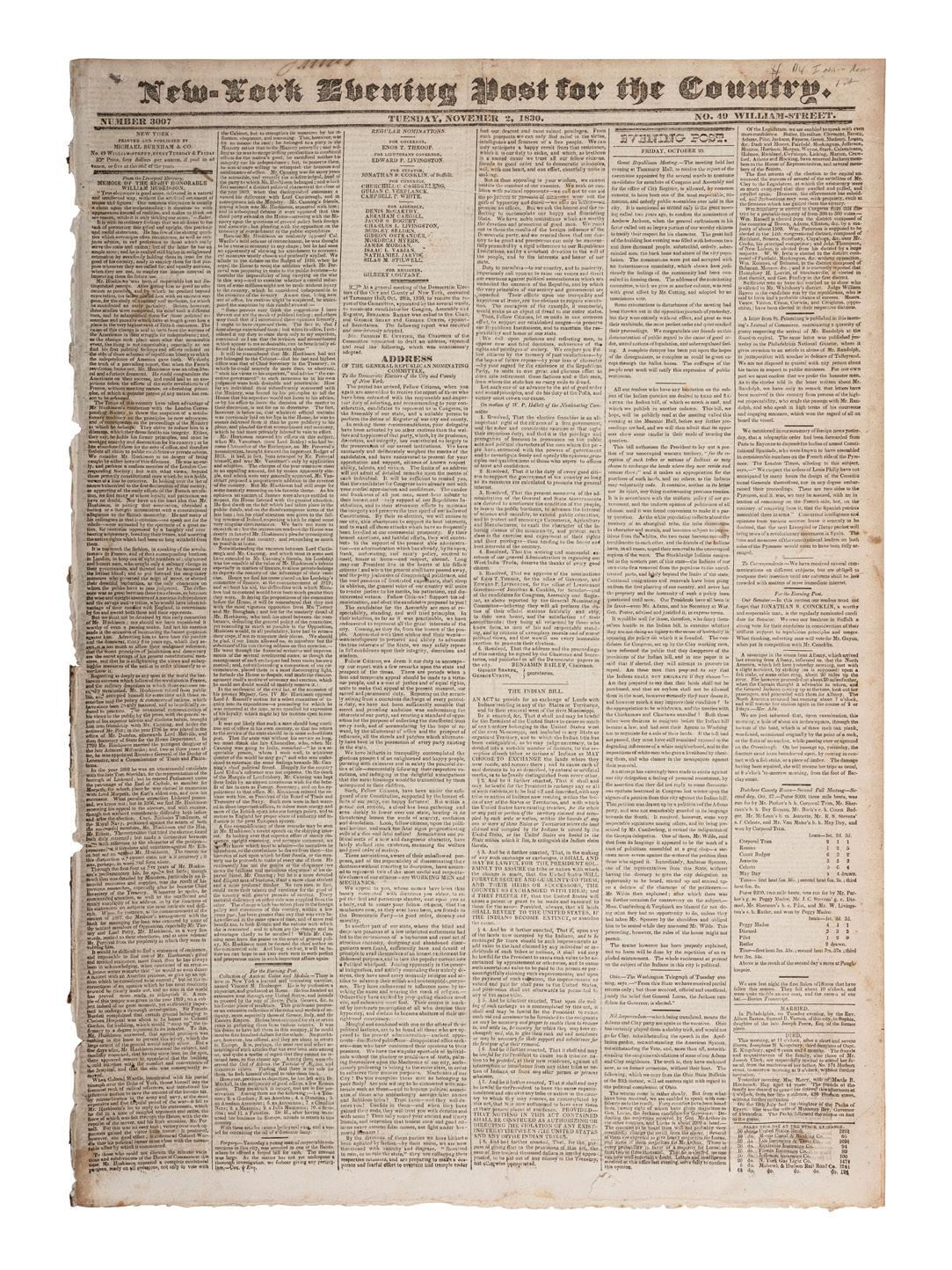
[BATTLE OF WINDSOR]. McNAIR, D. A. Autograph letter signed (“D. A. McNair”) to Mr. A. Kerly. Detroit (opposite) the Head Quarters of the Patriot Army, 4 December [1838], 12:00pm.
3 1/2 pages, 4to, on a bifolium, addressed on integral leaf, docketed verso. Written the day of Battle of Windsor, D. A. McNair writes to A. Kerly: “Our woods...have been filled with men...they placed securely upon the Canadian shore a large supply of arms and ammunition...we rose the next morning to witness Windsor in flames!...they left the wharf to the stream saw mill about 200 in number in the L.B. Champlain (owned by that stiff old Royalist Julius Eldred). The action commenced at 1/2 past 5 O’Clk this morning. After a fire of about 30 minutes a party of her majesty’s troops consisting of militia & regulars...had ensconced themselves in a large yellow building...This building was fired and was burnt to the ground together with five others...no private property was molested...a steam boat lying at the wharf, the Thames, was burnt...the loss of the royalists...17 killed 40 prisoners with arms, the wounded not known...together with 3 wagons of ammunition...the Pats stood their fire but a few moments, retreating to the woods...Col. John Prince is in command of the militia...he ordered six men out of his ranks to shoot down the 3 pat[riot] prisoners.”
The Canadian rebel and American raid on Windsor, Ontario, was a direct result of the uprising led by Canadian William Lyon Mackenzie, in an attempt to gain representative government for Canadians.
Property from the James Milgram, M.D., Collection of Broadsides, Ephemeral Americana, and Historical Documents
$400 - 600
38
KEARNY, Stephen W. (1794-1848). Document signed (“S. W. Kearny”). Fort Leavenworth, 9 May 1839.
Manuscript certificate of discharge for Private Edmund A. Daub, Captain C. V. Sumner’s Company B, 1st Regiment of Dragoons.
Stephen W. Kearny had a long and storied military career, beginning with service in the War of 1812, and ending with his brief stint as the 4th Military Governor of California in 1847.
Property from the James Milgram, M.D., Collection of Broadsides, Ephemeral Americana, and Historical Documents
$500 - 750
39 [MEXICAN WAR]. SCOTT, Winfield (1786-1866). Letter signed (“Winfield Scott”). West Point, NY, 12 September 1855.
One page, 7 3/4 x 9 7/8 in. Docketed verso.
In this letter addressed to “Lt Col J. J. Abercrombie & others, Committee &c &c.,” Scott acknowledges an invitation “to act for the time as President, of a proposed association of officers of the Mexican War.” This association would become the short-lived “Montezuma Society.” Scott then admits that he feels touched by the offer, but is unable to accept due to “the existence of a long settled, if not general, feeling of vigilant jealousy” prevalent in the country “against permanent societies of this character, which, I incline to believe, would, whether well or ill-founded, exclude from the association a large number of those who ought to compose it.” He goes even further, writing, “I would not myself wish to aid in initiating a society which so many, included in its scheme, would be withheld, I fear, from joining by a deference for public opinion.”

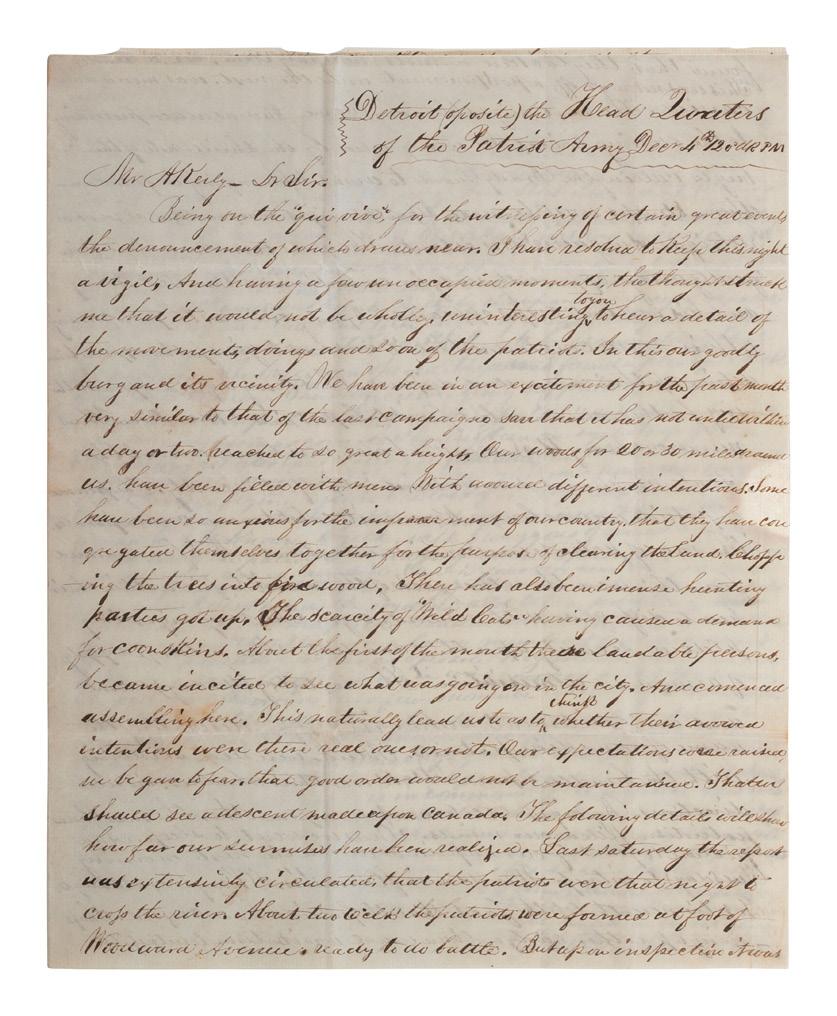
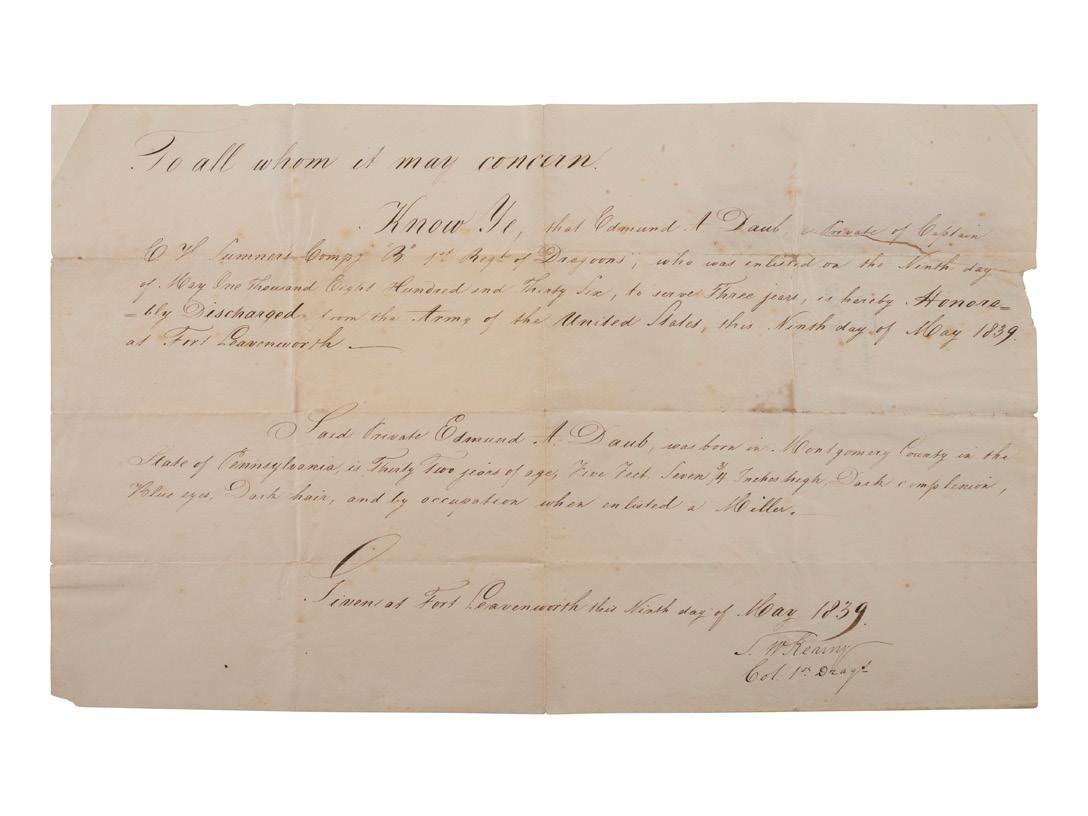
He concludes, however, that he will be always be present in heart, if not in person, at any voluntary and occasional reunion of officers, soldiers, or citizens, to celebrate the days they served.
[With:] 4 x 5 1/4 in. engraving on 5 5/8 x 8 5/8 in. sheet, featuring Scott as a lieutenant general by A.B. Hall (some toning from corner mounts). [New York]: D. Appleton & Co. Facsimile signature beneath image.
Winfield Scott (1786-1866) is regarded as one of the most important military figures in early American History. He served prominent roles in the War of 1812, Black Hawk War, Mexican War, and the early parts of the Civil War. Scott proposed the “Anaconda Plan” that would allow Union troops to reclaim the Confederacy by using naval and army forces to surround the South. In 1852, he won the presidential nomination for the Whig Party, though he ultimately lost to Democrat Franklin Pierce. In 1855, the same year as this letter was written, Congress passed a resolution breveting Scott a lieutenant general, making him the first man to hold that rank since George Washington.
Property from the James Milgram, M.D., Collection of Broadsides, Ephemeral Americana, and Historical Documents
$300 - 400
[ANTEBELLUM PERIOD]. Archive of 25 documents and imprints related to the 71st Infantry Regiment, New York State Militia, or “American Guard.” Ca 18541858.

The 71st NY State Militia was formed in 1850, as a “distinctively American Regiment” (i.e. no foreigners) with connections to the nativist Know Nothing Party, and was first called “The American Rifles” and later, “The American Guard.” In 1852, having a sufficient number of Companies, they were enrolled as a Regiment of the NY State Militia and assigned the number of 71st. At the outbreak of the Civil War, the 71st were mustered in for 3 months service, arriving in Washington, DC, in May 1861, and participated in the occupation of Alexandria, VA, accompanying Colonel Elmer E. Ellsworth and the New York Fire Zouaves, during which Ellsworth was killed by a secessionist hotel owner. The 71st fought with distinction at the First Battle of Bull Run.
Included in this archive is an autograph letter signed by the artist Otto Botticher, (1811-1886), 2+ pages, dated at New York City, 12 February 1858, “To the Board of Officers of the 71st Regt., American Guard,” with superb content regarding his being commissioned by the Regiment to make a large engraving on stone “representing the Presentation of an Eagle to your Regiment for superior discipline etc. by the N.Y.S. Military Association,” his intention “to get up this picture in a superior manner,” and urging that the Captains of the Regiment “use their best endeavors to procure subscribers for this work.”
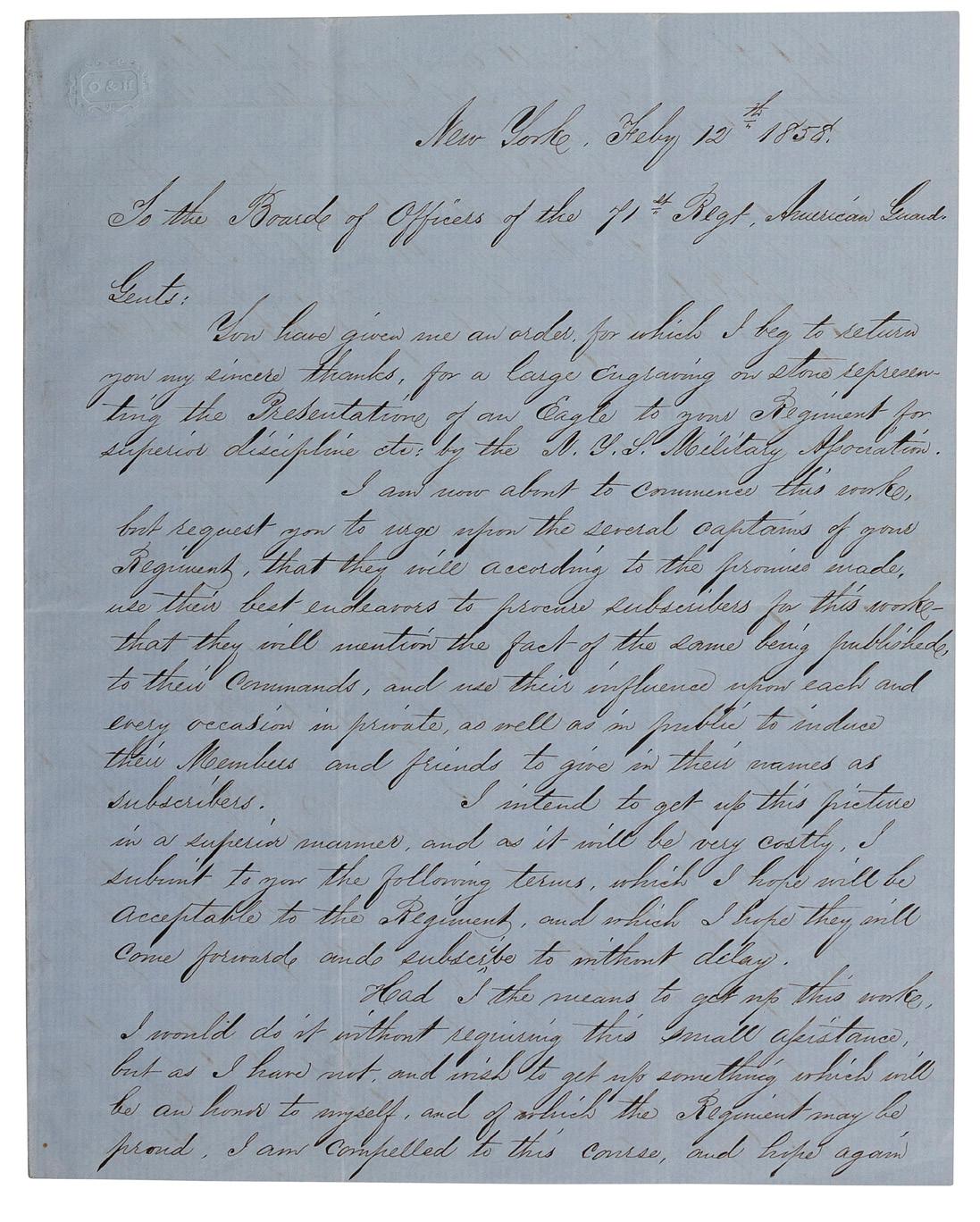
Botticher is best known for his 1864 rendering of a baseball game at the Salisbury, NC prisoner of war camp, based on his experiences as a prisoner there in 1862. He enlisted in the 68th NY Infantry in July 1861, and was Captain of Co. G, captured 29 March 1862 and imprisoned at Libby Prison and at Salisbury, NC until exchanged in September 1862. He rejoined his Regiment in 1863 and fought at the Battles of Chancellorsville and Gettysburg.
The balance of the archive consists of printed invitations, Orders, circulars, along with an unused sheet of Regimental stationery.
$1,500 - 2,500
$1,000
$1,000


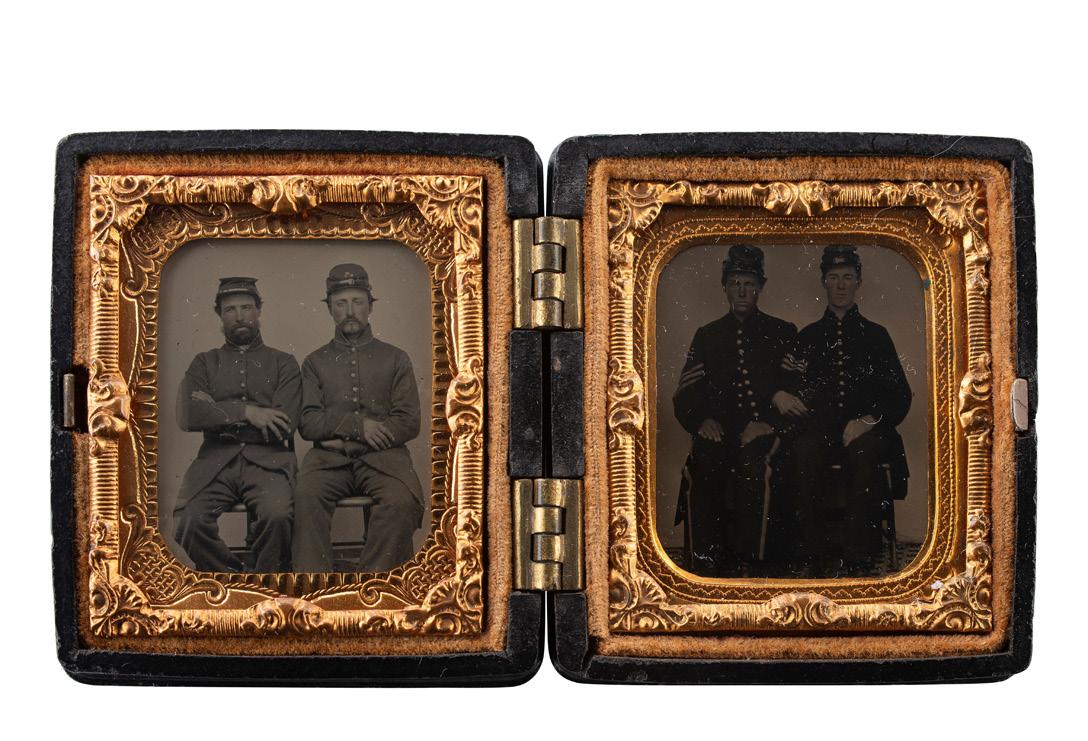
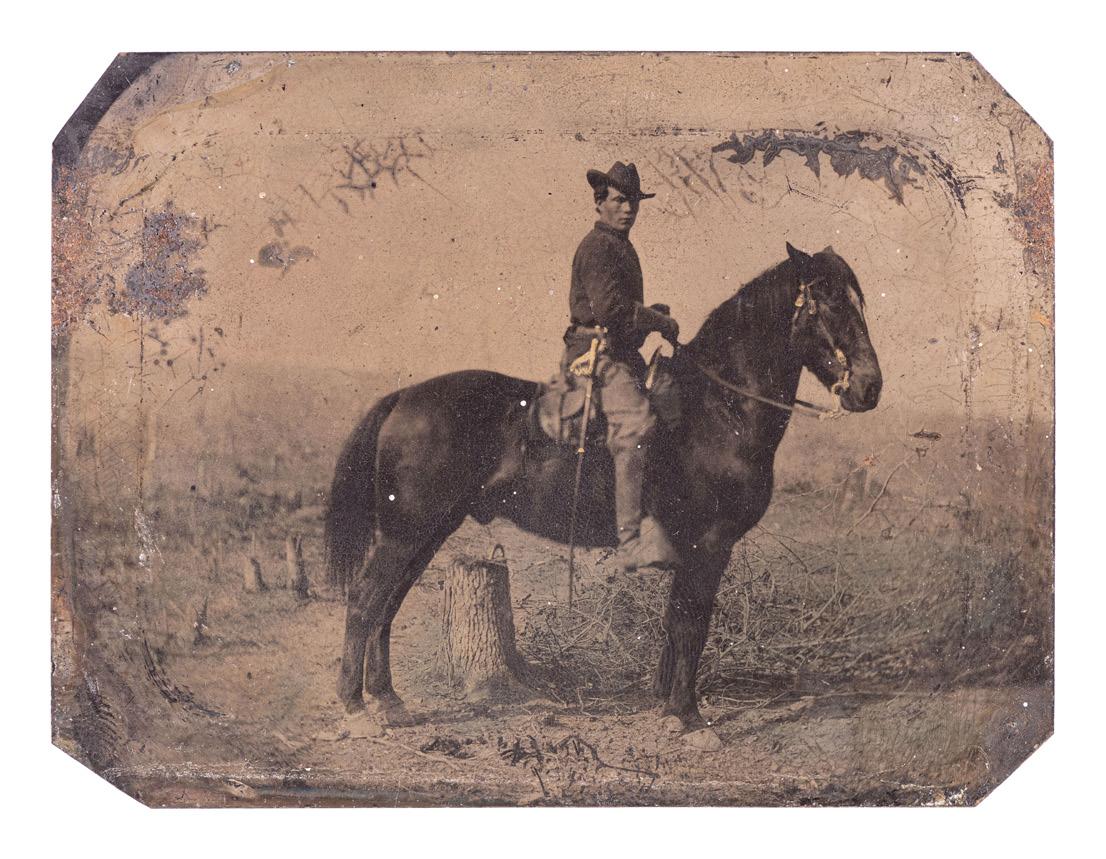
$300
$500
46 [CIVIL WAR]. GARDNER, Alexander (1821-1882), photographer. CDV of Ulysses S. Grant. Washington, DC, 1865.
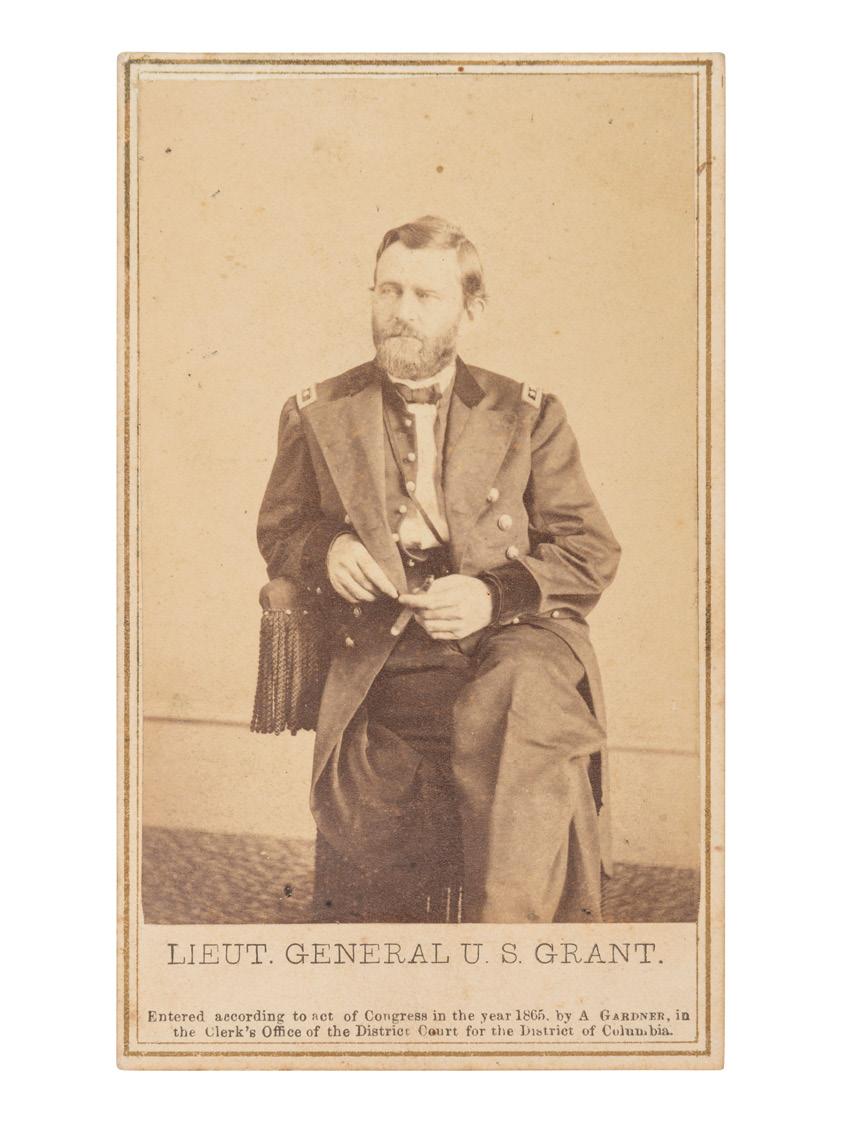
$300 - 400
48 [CIVIL WAR]. PARKER, Ely Samuel (1828-1895), Tonawanda Seneca engineer, attorney, US Army officer, and diplomat. Signed and inscribed cabinet card. Philadelphia: Gutekunst, n.d.

Property from the James Milgram, M.D., Collection of Broadsides, Ephemeral Americana, and Historical Documents
$1,000 - 1,500
47 [CIVIL WAR]. A pair of CDVs featuring Ulysses S. Grant (1822-1885).

$400 - 600
49 [CIVIL WAR]. FREDRICKS, C.D., photographer. Autographed CDV of Philip Henry Sheridan. New York, n.d.
$600 - 800
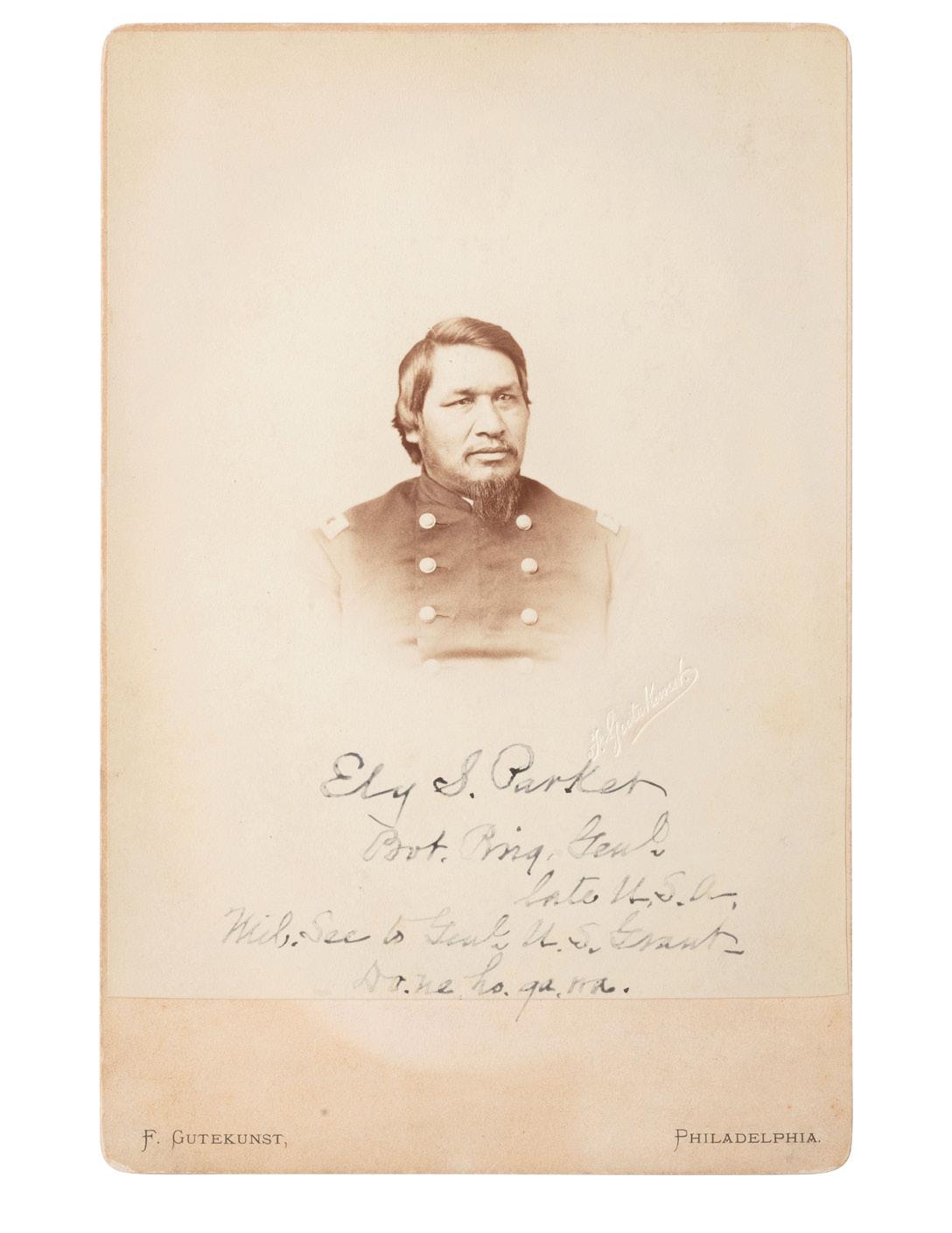
50 [CIVIL WAR]. CDV featuring General Philip H. Sheridan, General James W. Forsyth, and an unknown civilian. New Orleans: T. Lilienthal, n.d.

$600 - 800
51 [CIVIL WAR - CAVALRY]. BRADY, Mathew (1822-1896), photographer. A group of 11 CDVs of Union Cavalry generals, incl. BUFORD, SHERIDAN, KILPATRICK, GREGG, TORBERT, KAUTZ, & STURGIS.
$800 - 1,200
52 [CIVIL WAR - GETTYSBURG]. BRADY, Mathew (1822-1896), photographer. CDV of General Henry Jackson Hunt, Chief of Artillery, Army of Potomac. Washington, DC.
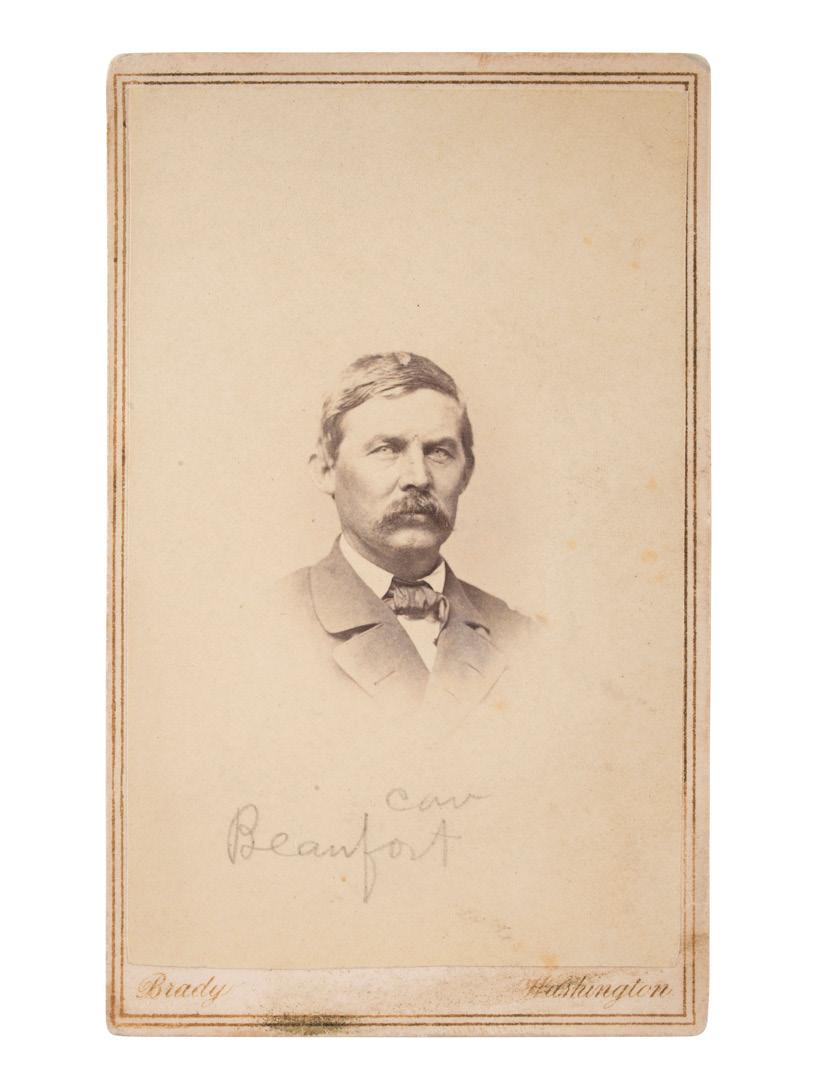
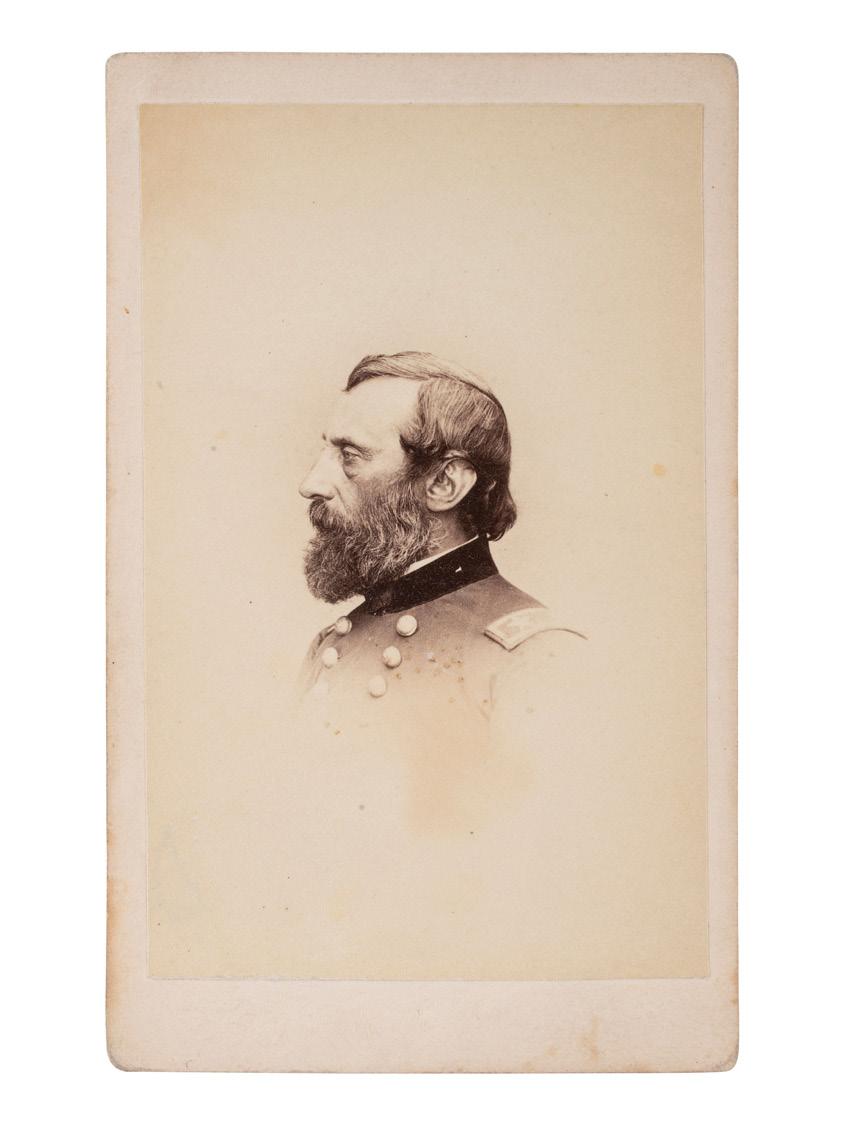
$400 - 600
53 [CIVIL WAR]. [CHAMBERLAIN, Joshua L. (1828-1914)]. BRADY, Mathew, photographer. CDV of Brigadier General Joshua Chamberlain, MOH Gettysburg. Washington, DC.
$1,000 - 1,500

54 [CIVIL WAR]. [CHAMBERLAIN, Joshua L. (1828-1914)]. PIERCE, Wm., photographer. CDV of Joshua Chamberlain, MOH Gettysburg. Brunswick, ME.

$1,000 - 1,500
55 [CHAMBERLAIN, Joshua L. (1828-1914), his copy]. ZUMPT, C.G. A Grammar of the Latin Language. Leonhard Schmitz, translator. Charles Anthon, editor. New York: Harper & Brothers, 1854.
Provenance: Joshua Lawrence Chamberlain (signature, Bowdoin College 1855 and inscription January 1904).
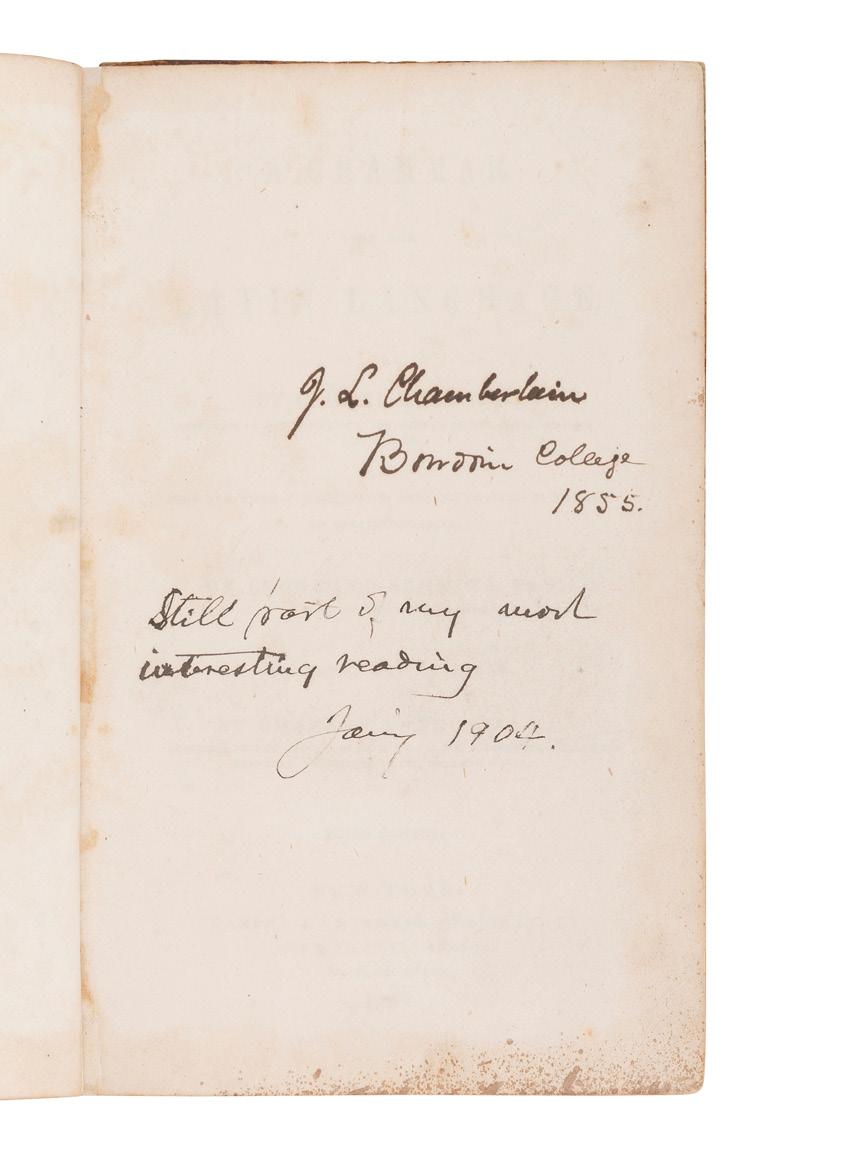
Third edition, Joshua Lawrence Chamberlain’s copy, INSCRIBED BY CHAMBERLAIN: “Still part of my work interesting reading.”
$600 - 800
56 [CIVIL WAR - GETTYSBURG]. BRADY, Mathew (1822-1896), photographer. CDV of General John Gibbon, WIA Fredericksburg and Gettysburg. Washington, DC.
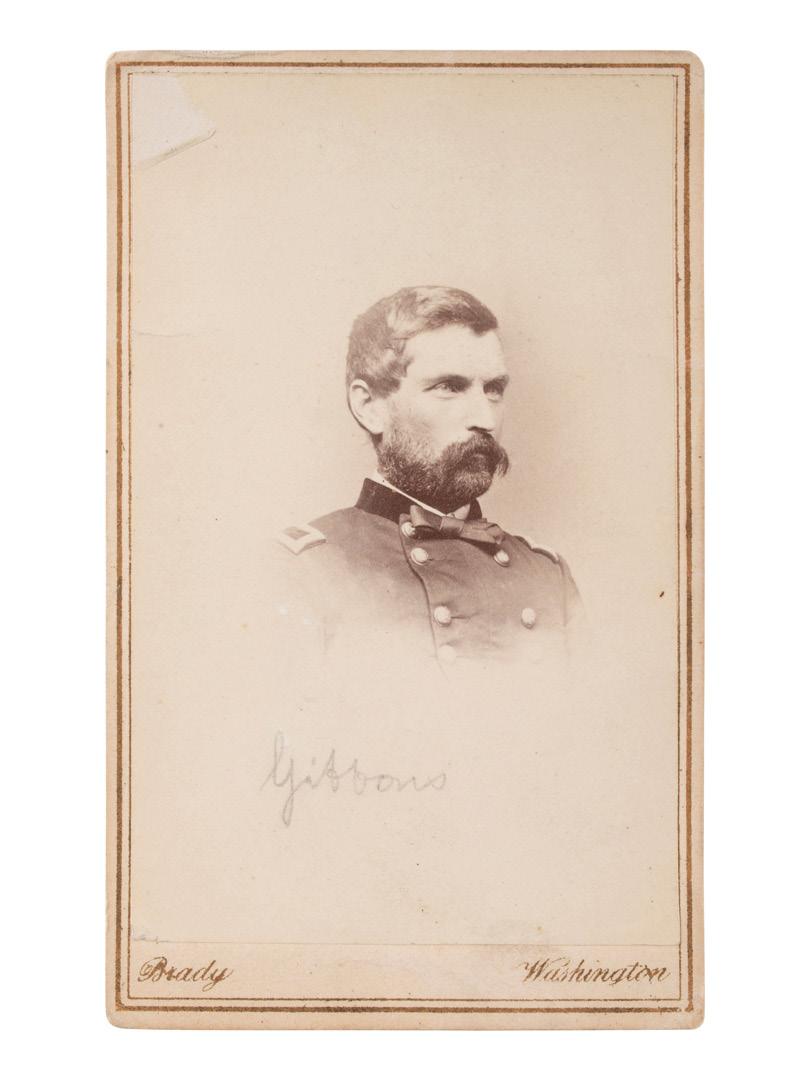
$300 - 400
57 [CIVIL WAR - CAVALRY]. BRADY, Mathew (1822-1896), photographer. A group of 2 CDVs of General Wesley Merritt. Washington, DC.
$400 - 600

58 [CIVIL WAR - GETTYSBURG]. BRADY, Mathew (1822-1896), photographer. A group of 11 CDVs of Union generals who served with distinction at Gettysburg, incl. Alexander WEBB, MOH.
$1,000 - 1,500
59 [CIVIL WAR]. A group of 16 CDVs of New York and Connecticut soldiers, highlighted by 10 images of identified members of the 94th New York Infantry, which was heavily engaged at Gettysburg.
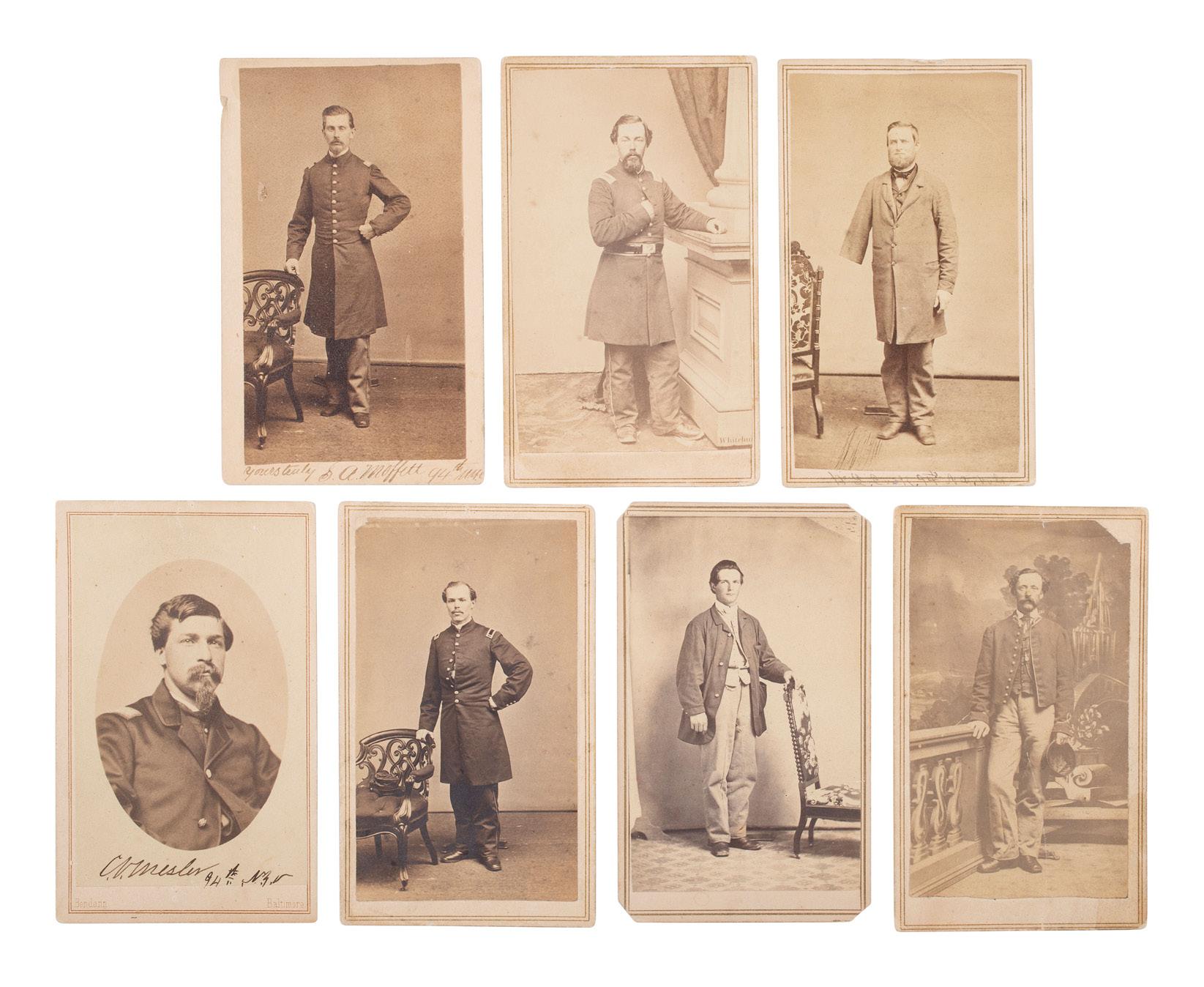
$800 - 1,200
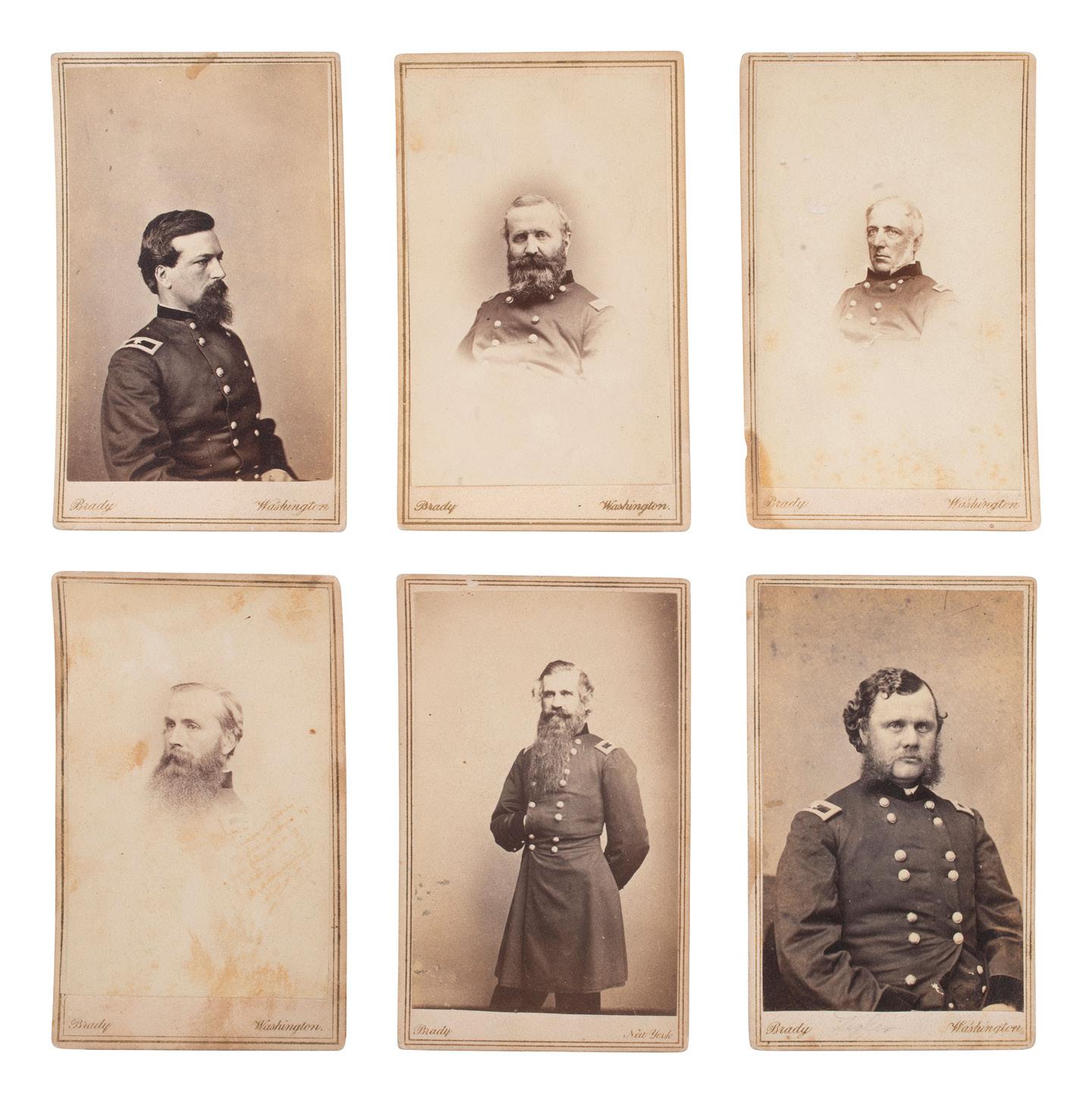
61
[CIVIL WAR - ARMY OF POTOMAC]. BRADY, Mathew (1822-1896), photographer. A group of 37 CDVs of Union generals, incl. MEADE, FRANKLIN, STONEMAN, BURNSIDE, TYLER, KEYES, GRIFFIN, MARTINDALE, and HATCH, MOH.
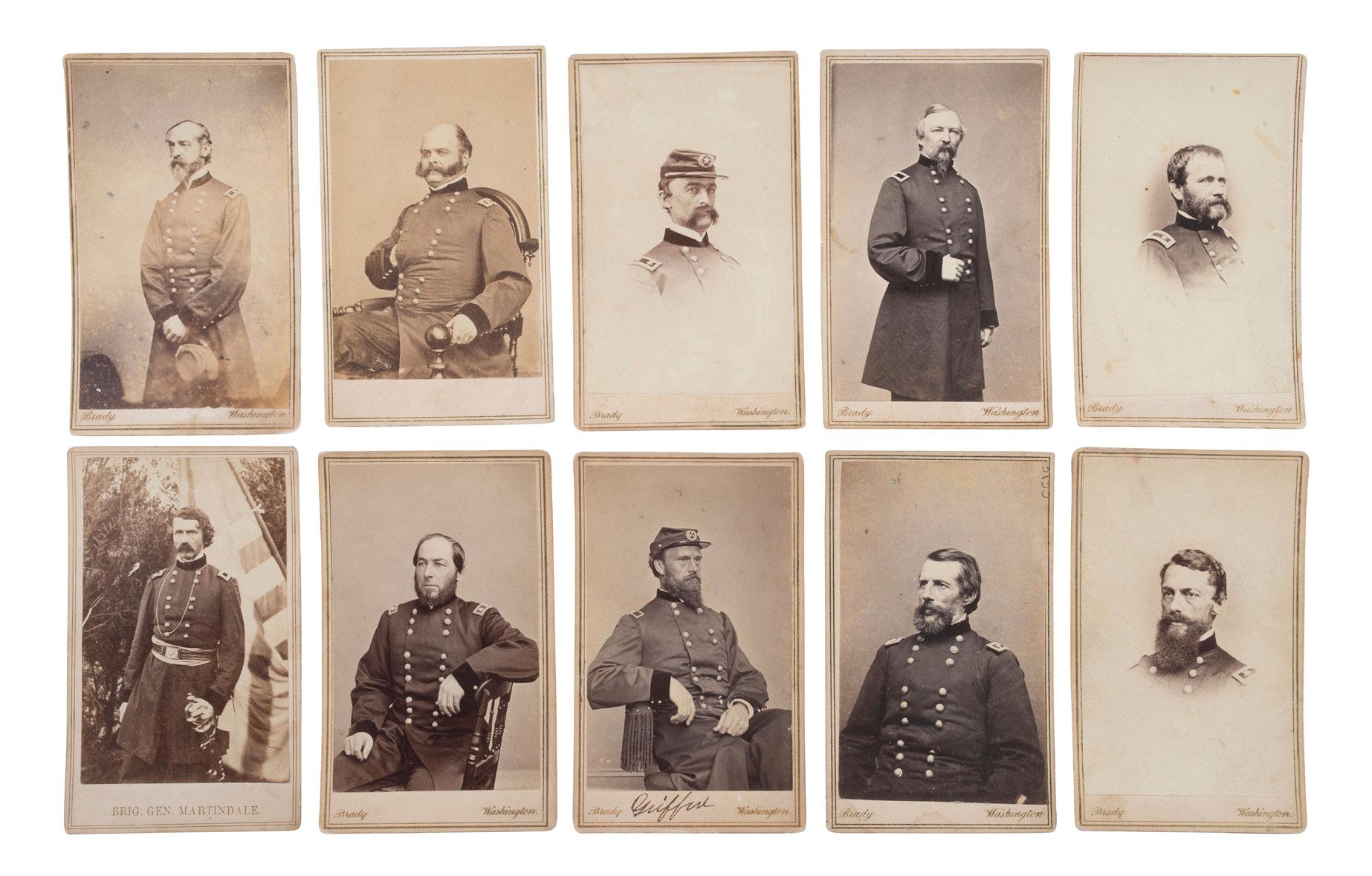
$2,000 - 3,000
60 [CIVIL WAR - ANTIETAM]. BRADY, Mathew (1822-1896), photographer. A group of 6 CDVs of Union generals known for their actions at Antietam, incl. RICHARDSON, HARTSUFF, SEDGWICK, CRAWFORD, and CALDWELL.
$400 - 600
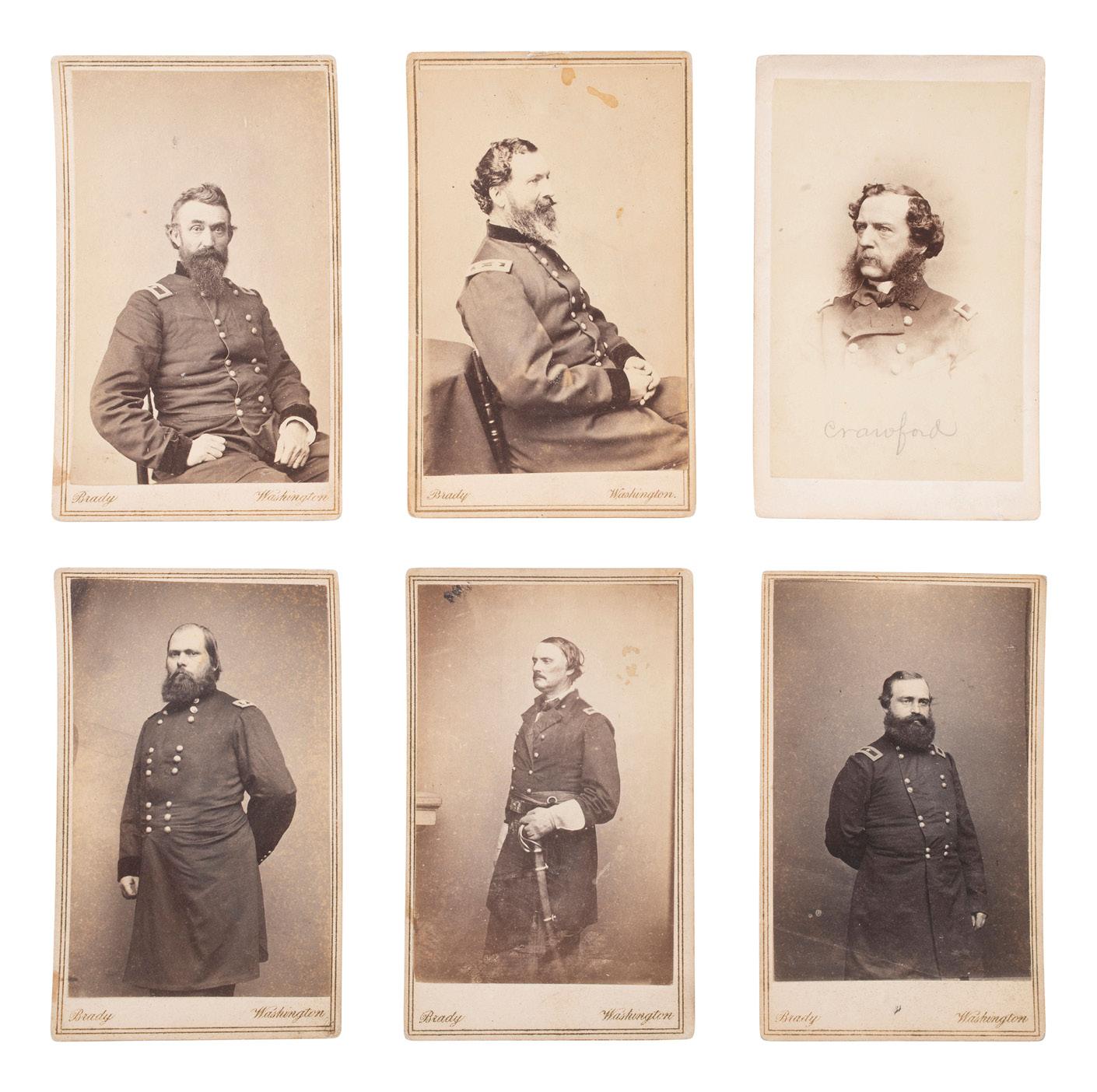
62
[CIVIL

$1,500 - 2,500
63

$300

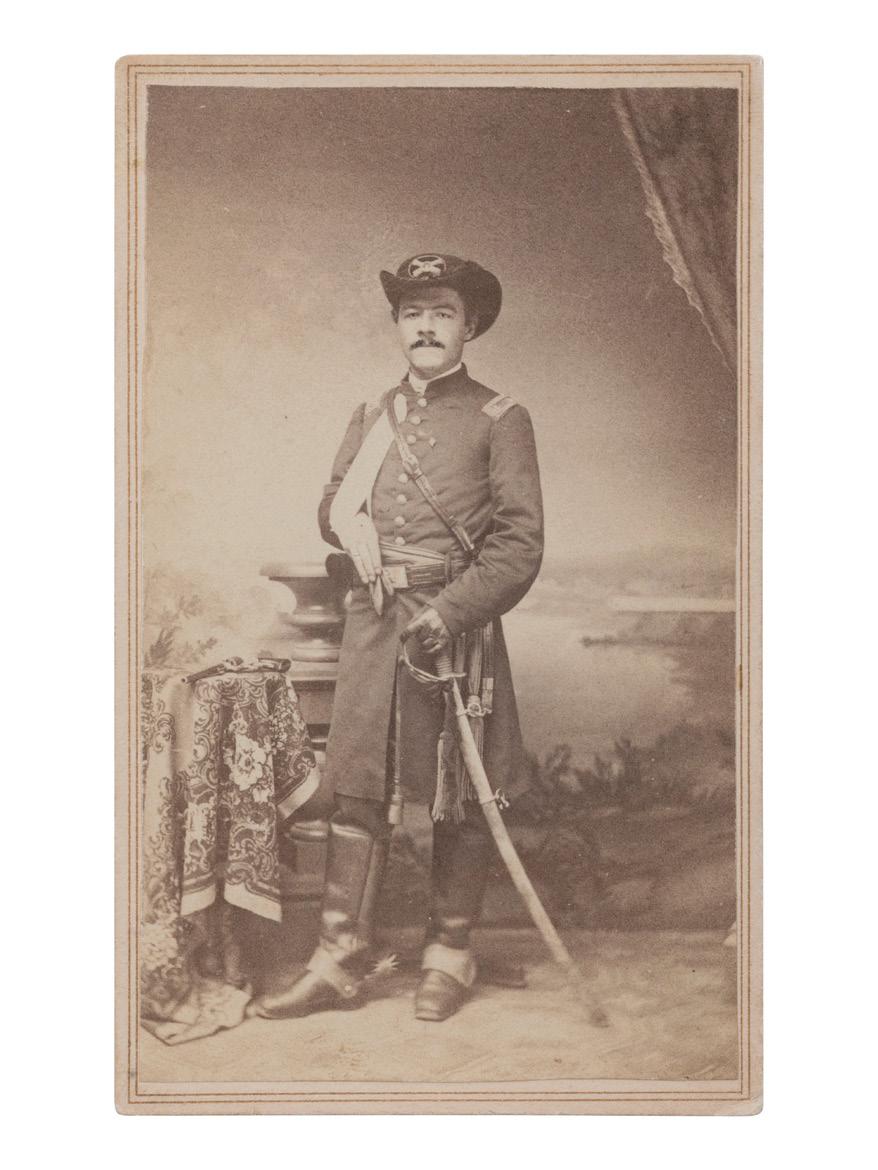
$300 - 500
$300 - 500
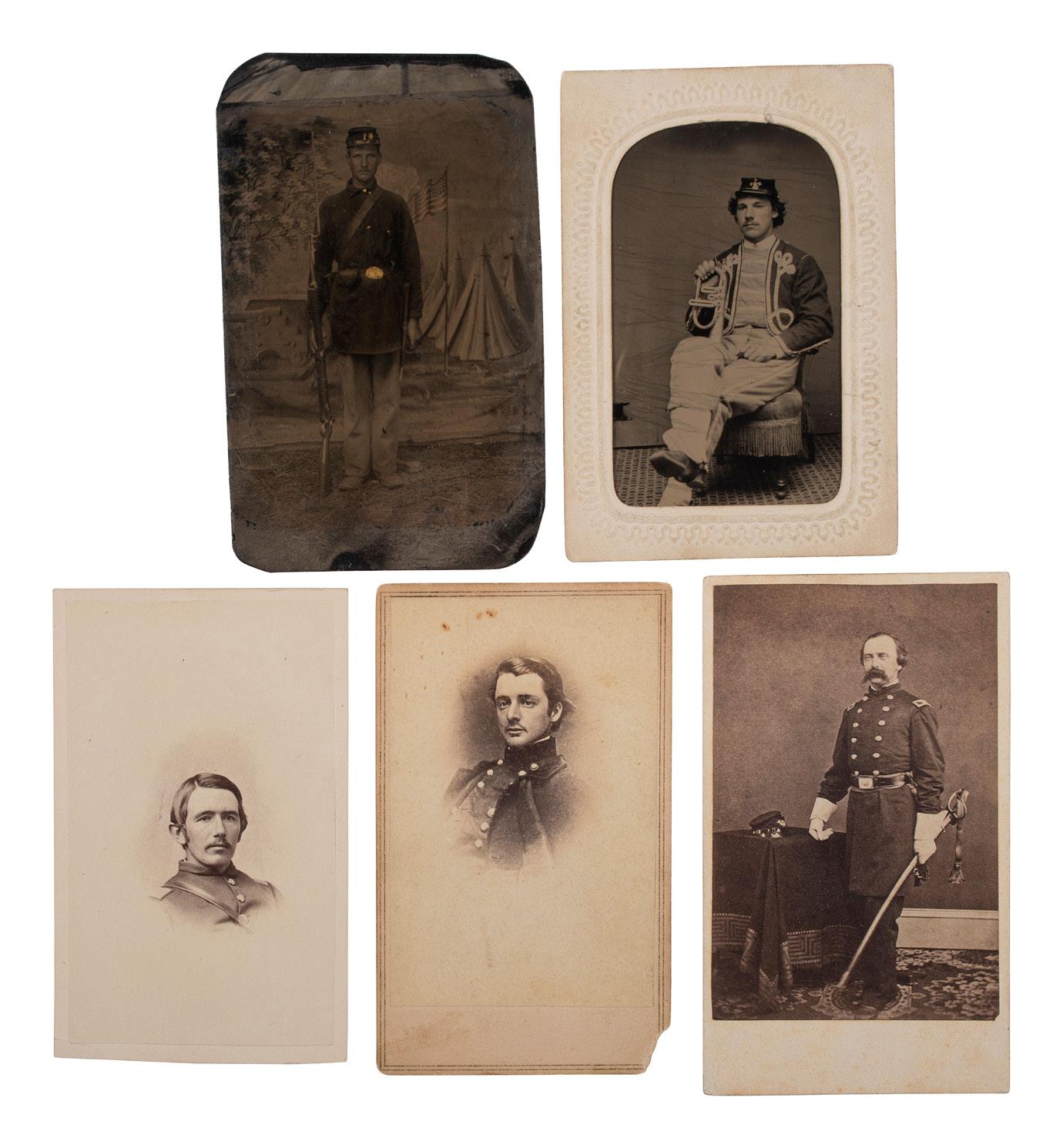
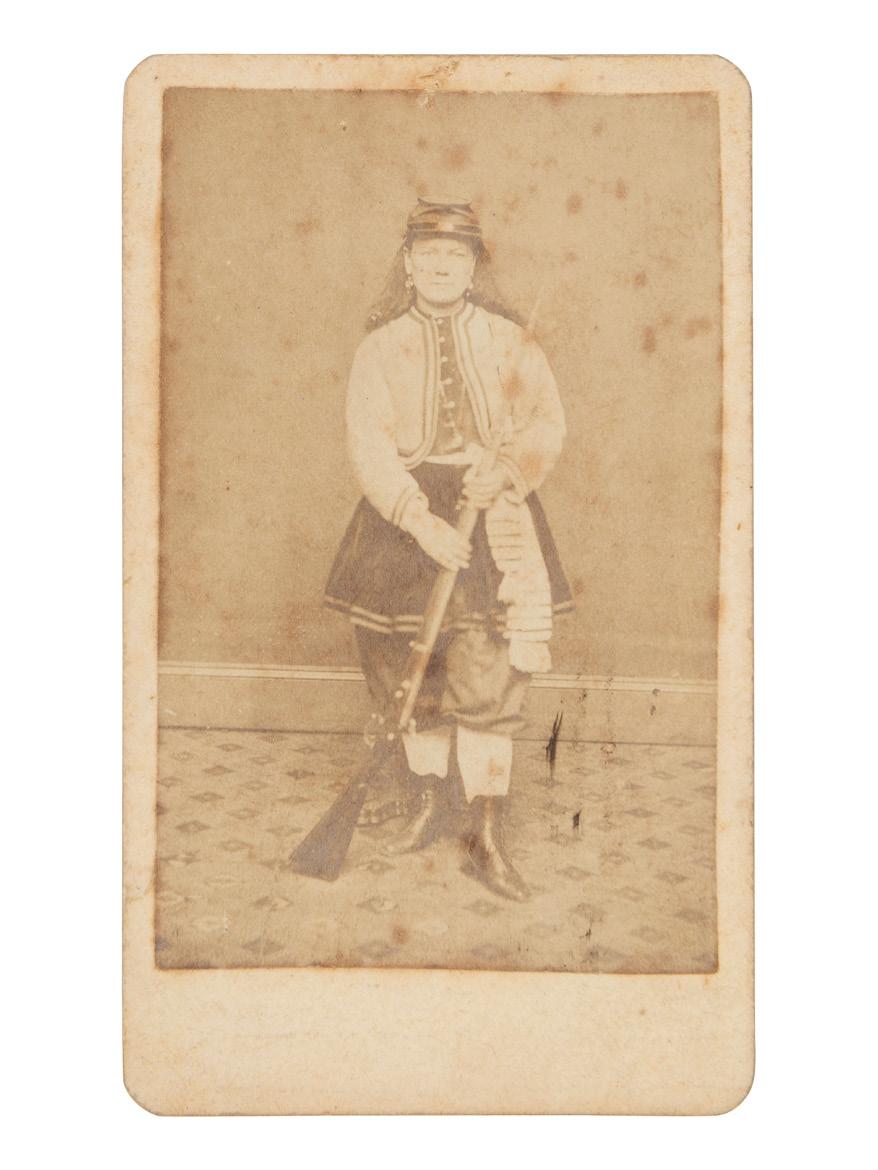


$300
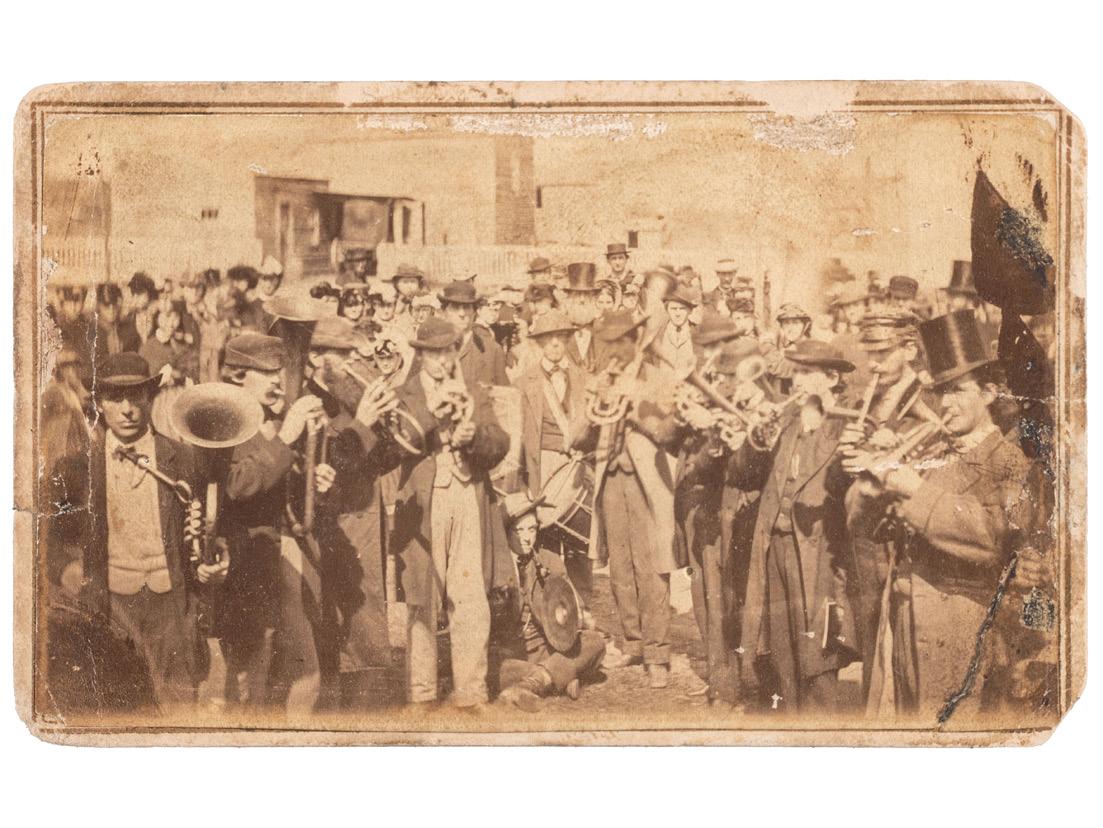
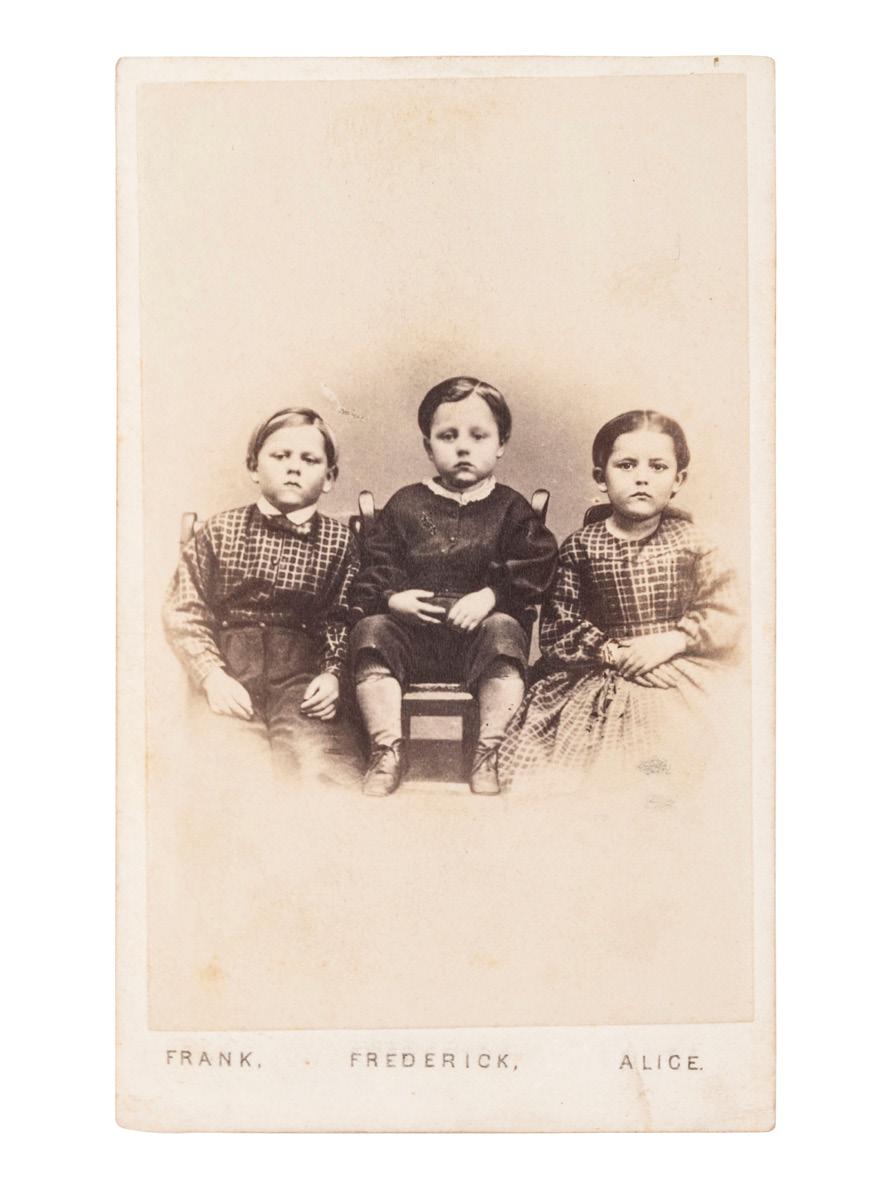
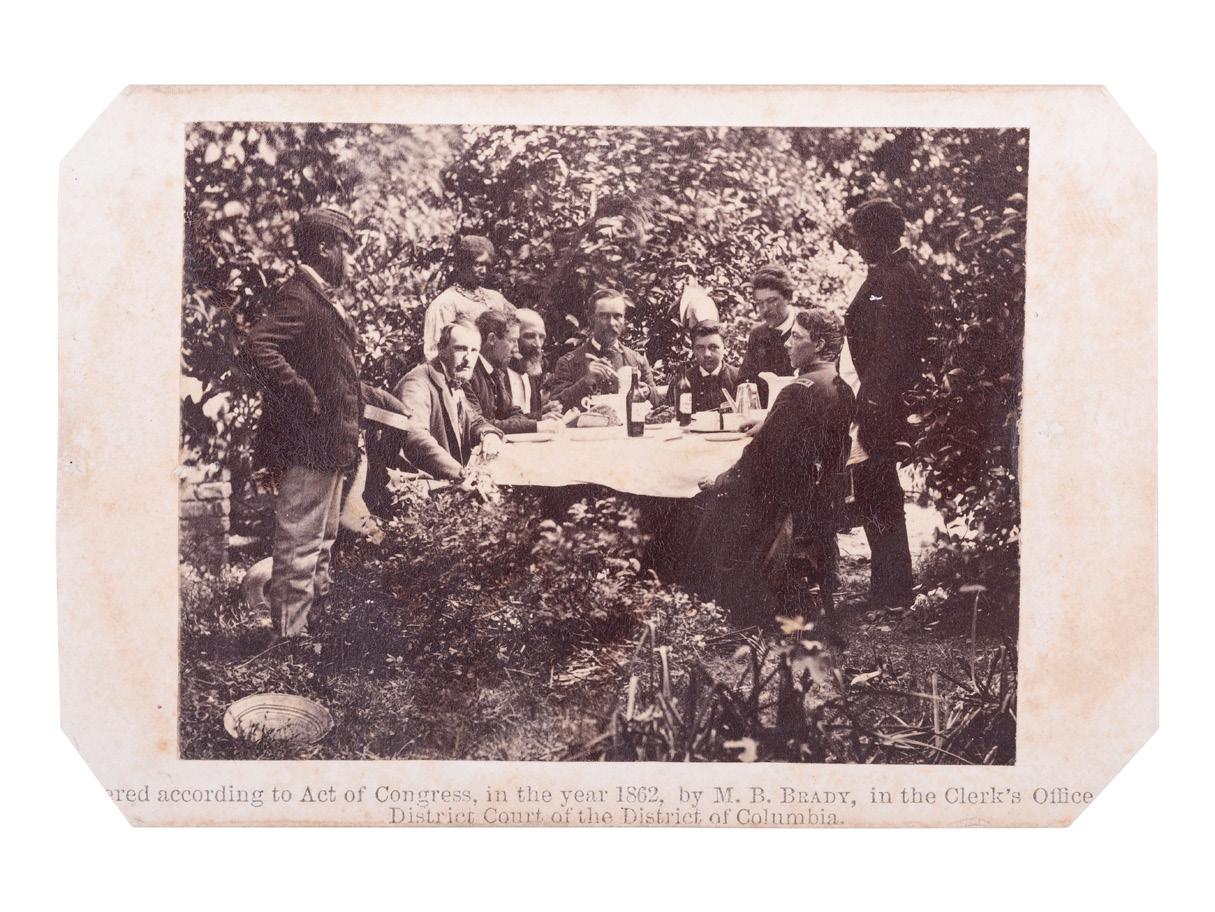
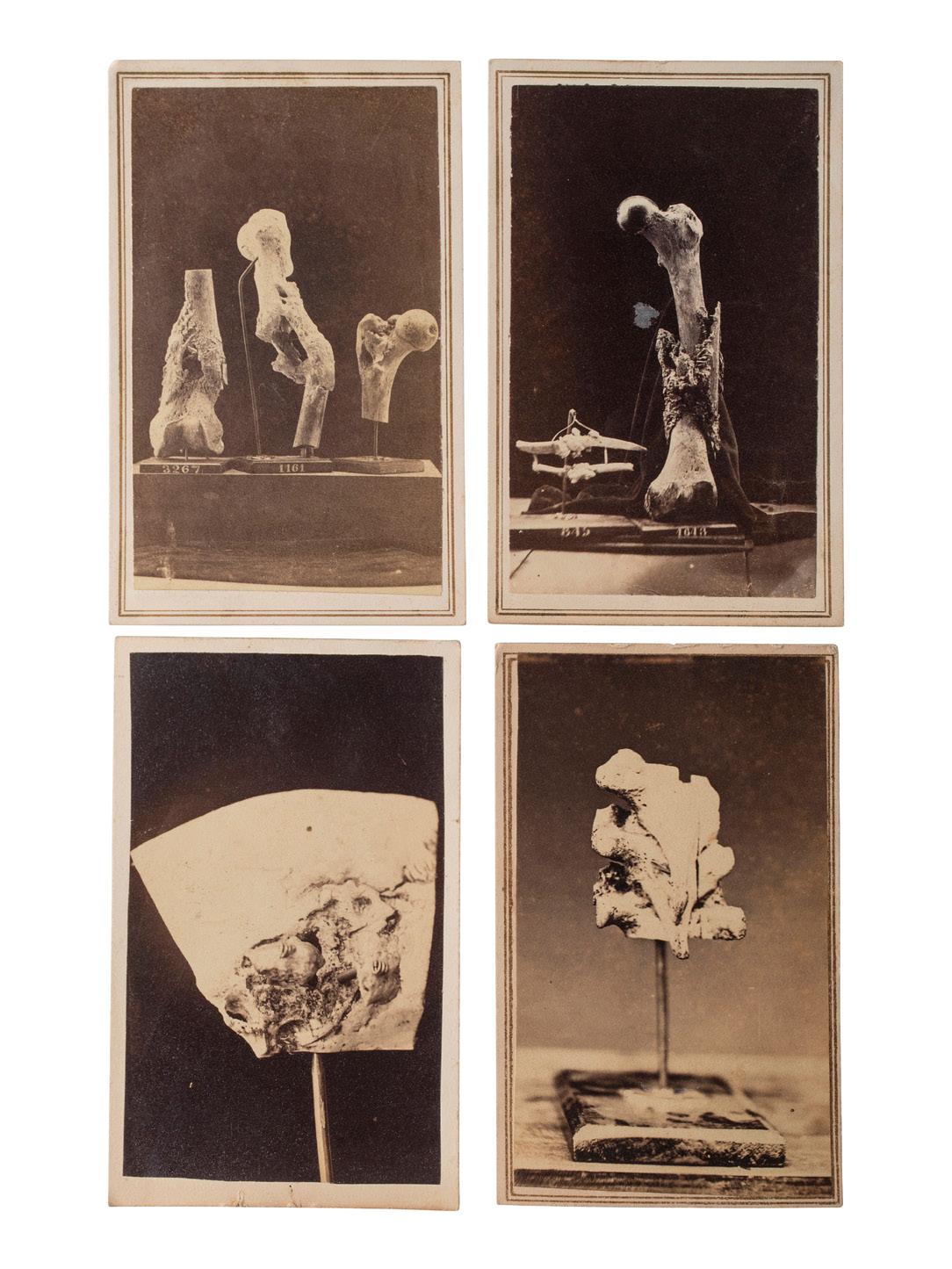

$600
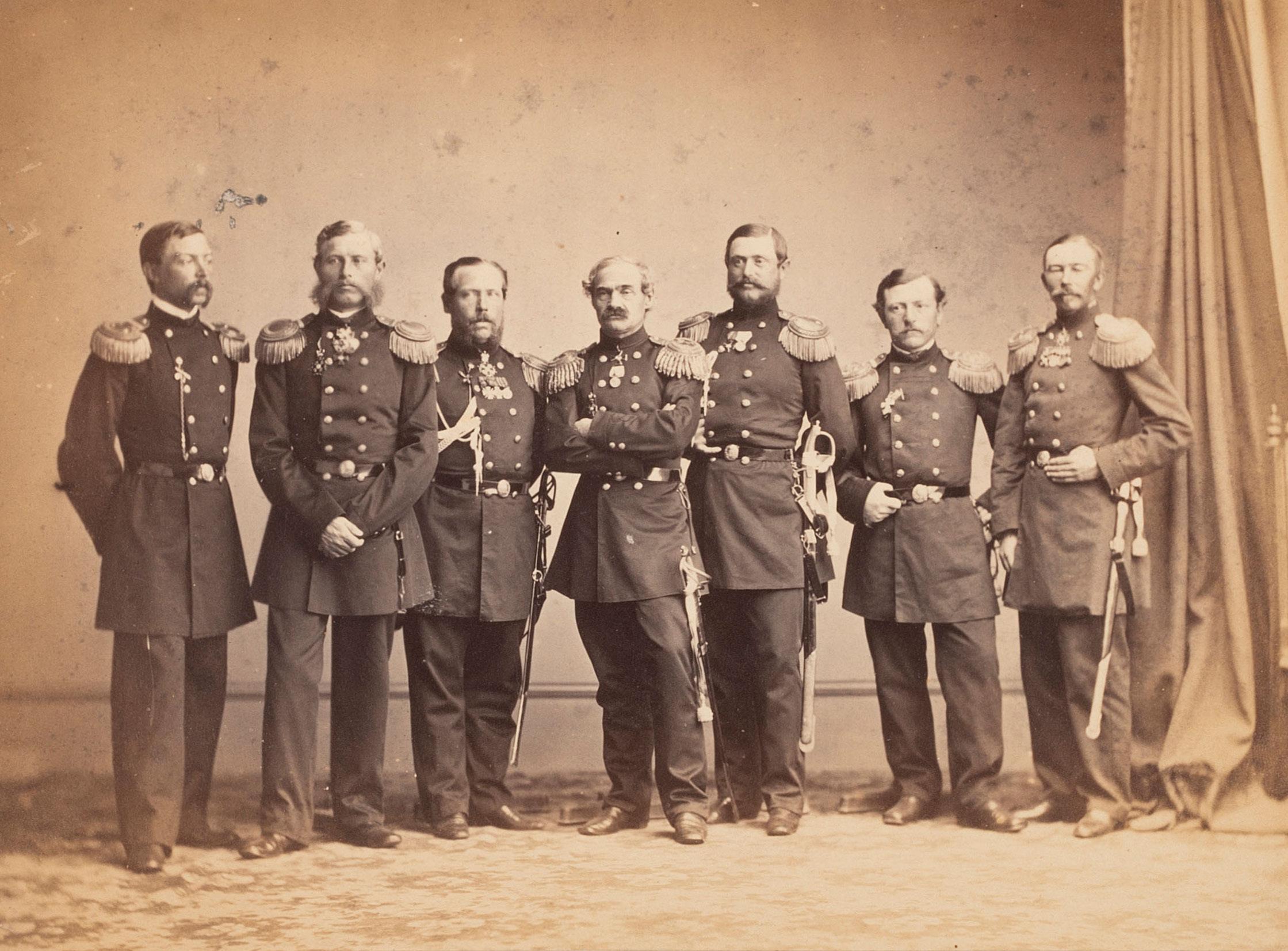

77 [CIVIL WAR]. BLACK, James Wallace (1825-1896) photographer. A group of 2 photographs of identified ships, incl. the USS Santee. Boston, MA, ca 1860s. Property from the James Milgram, M.D., Collection of Broadsides, Ephemeral Americana, and Historical Documents
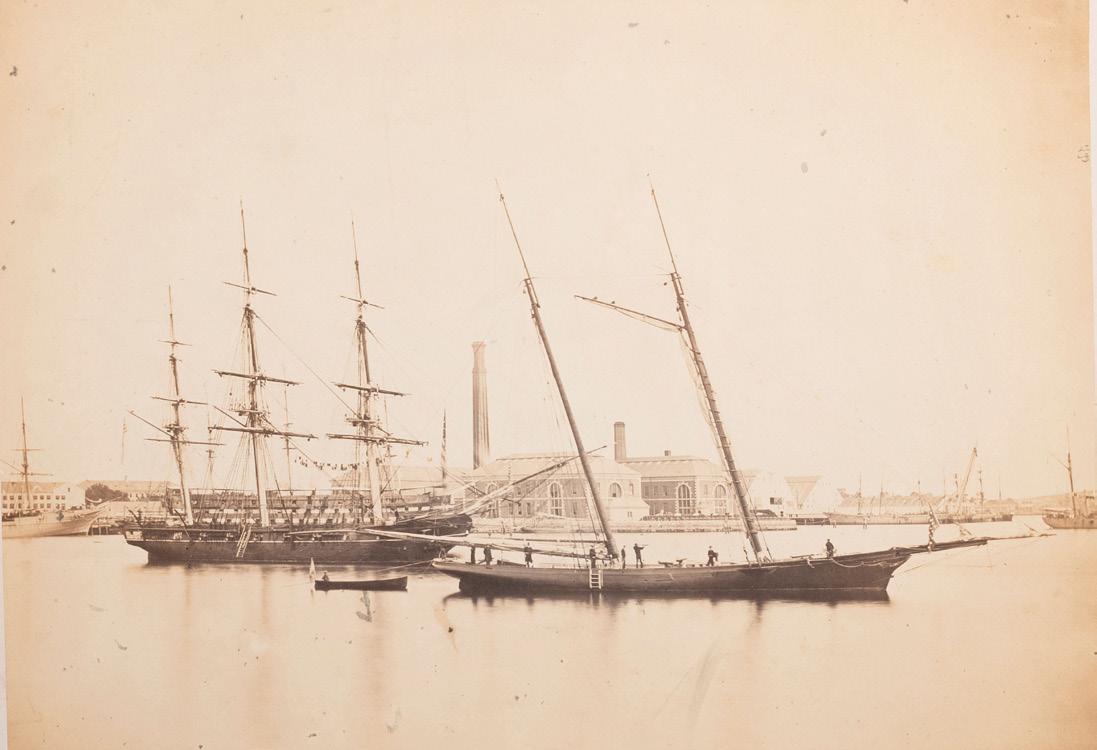
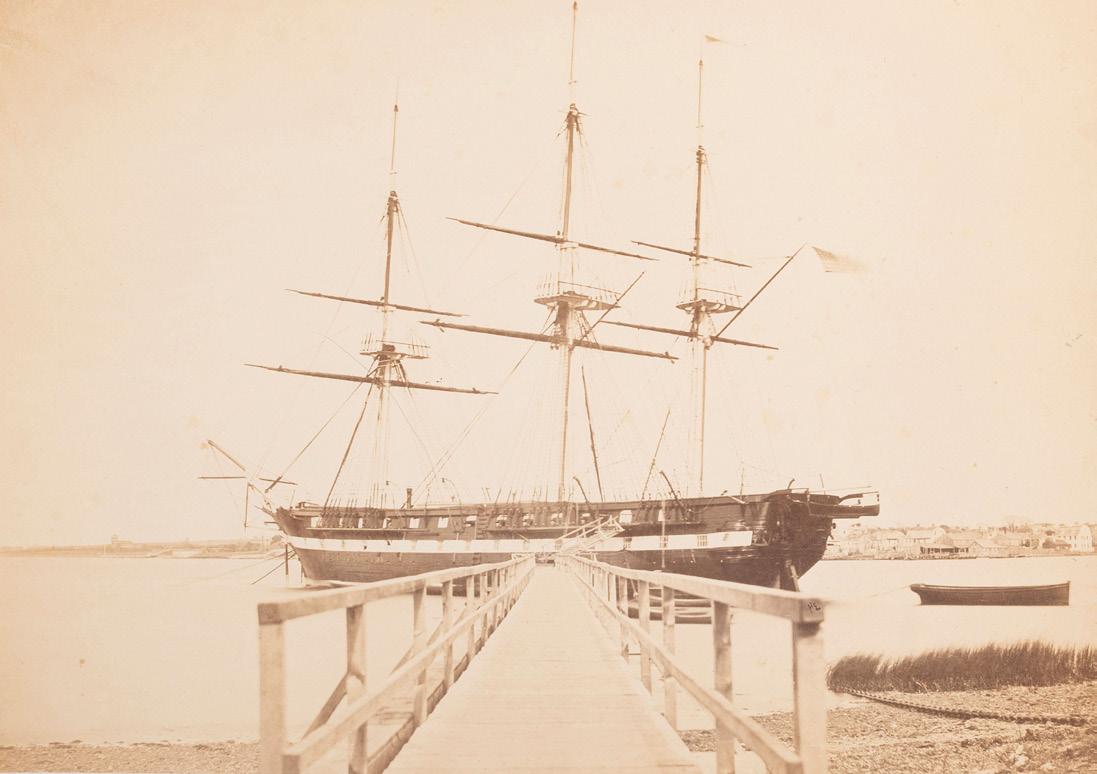
$400 - 600
78 [CIVIL WAR]. A group of 23 stereoviews featuring significant locations and events throughout the war. Hartford, CT: Taylor & Huntington, ca 1890s.
$800 - 1,200

80 [CIVIL WAR]. A group of 12 stereoviews featuring Union and Confederate dead at Gettysburg, Antietam, and other battlefields. Hartford, CT: Taylor & Huntington, ca 1890s.
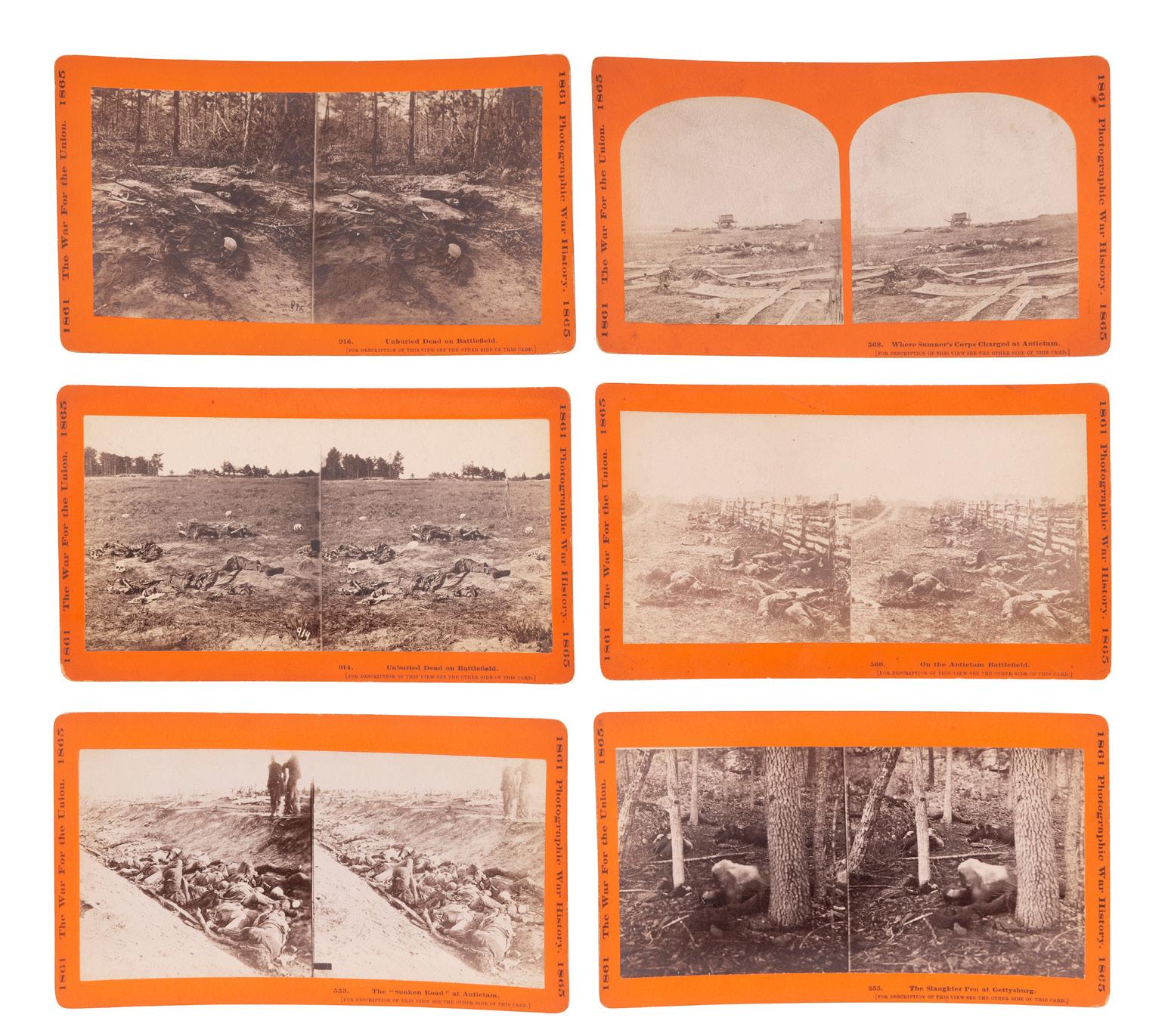
$1,000 - 1,500
79 [CIVIL WAR]. A group of 24 stereoviews featuring scenes around Virginia including artillery, fortifications, Confederate prisons, and other subjects. Hartford, CT: Taylor & Huntington, ca 1890s.
$700 - 900
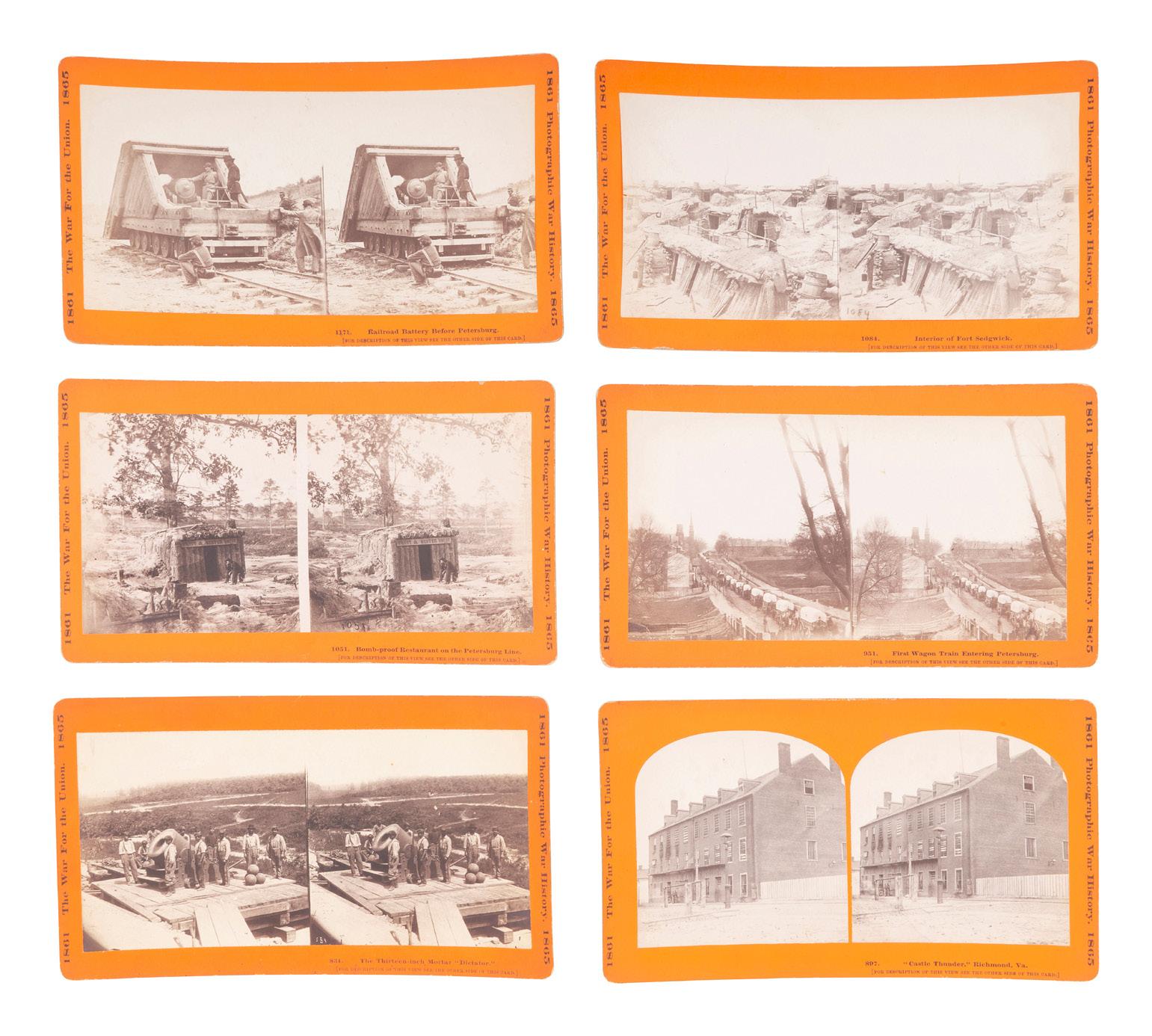
81


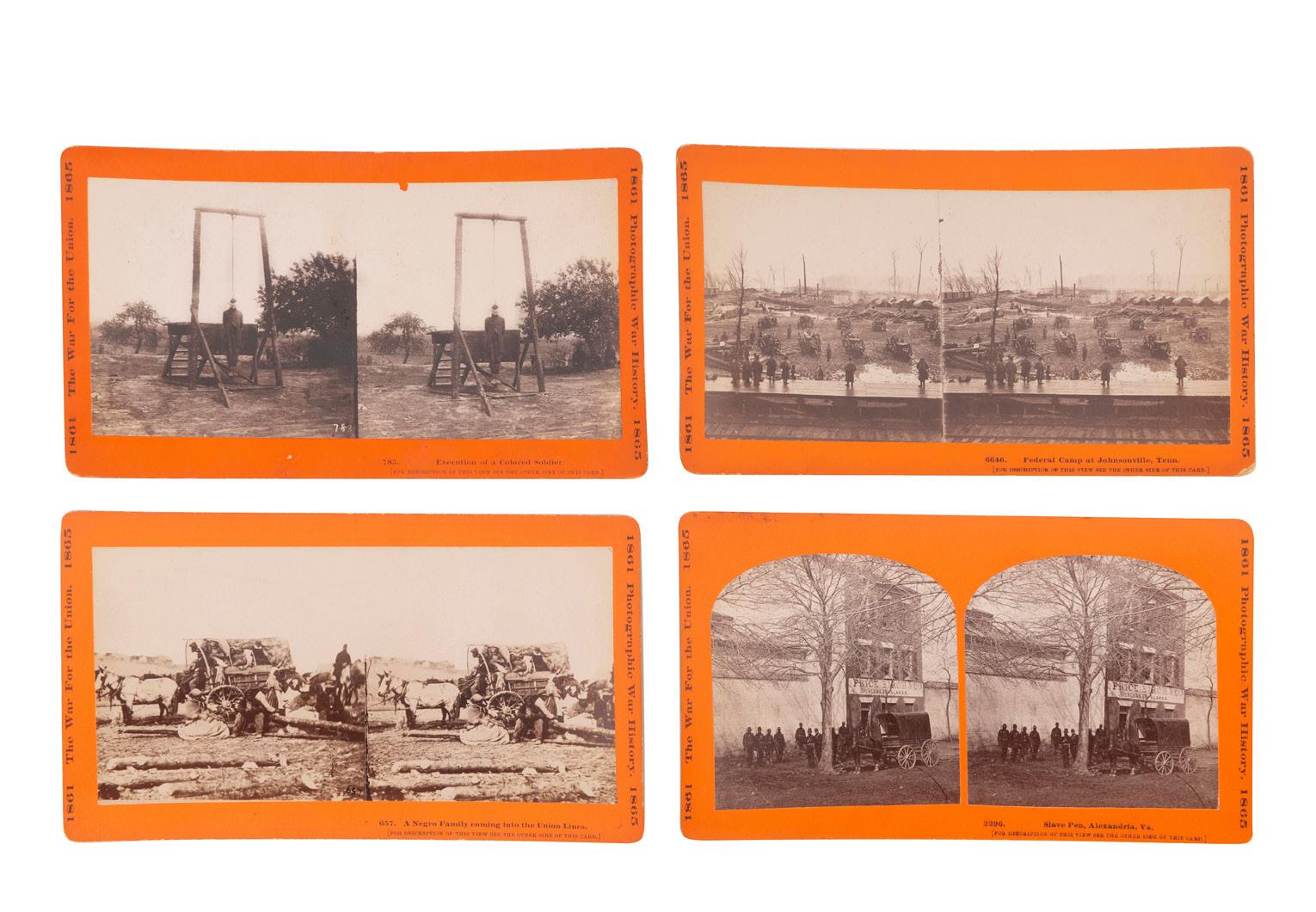

82
$700 - 900
83
[CIVIL WAR] -- [WESTERN EXPANSION]. Quarter plate tintype of Andrew Joseph Russell (1830-1902), noted Civil War and Union Pacific Railroad photographer.
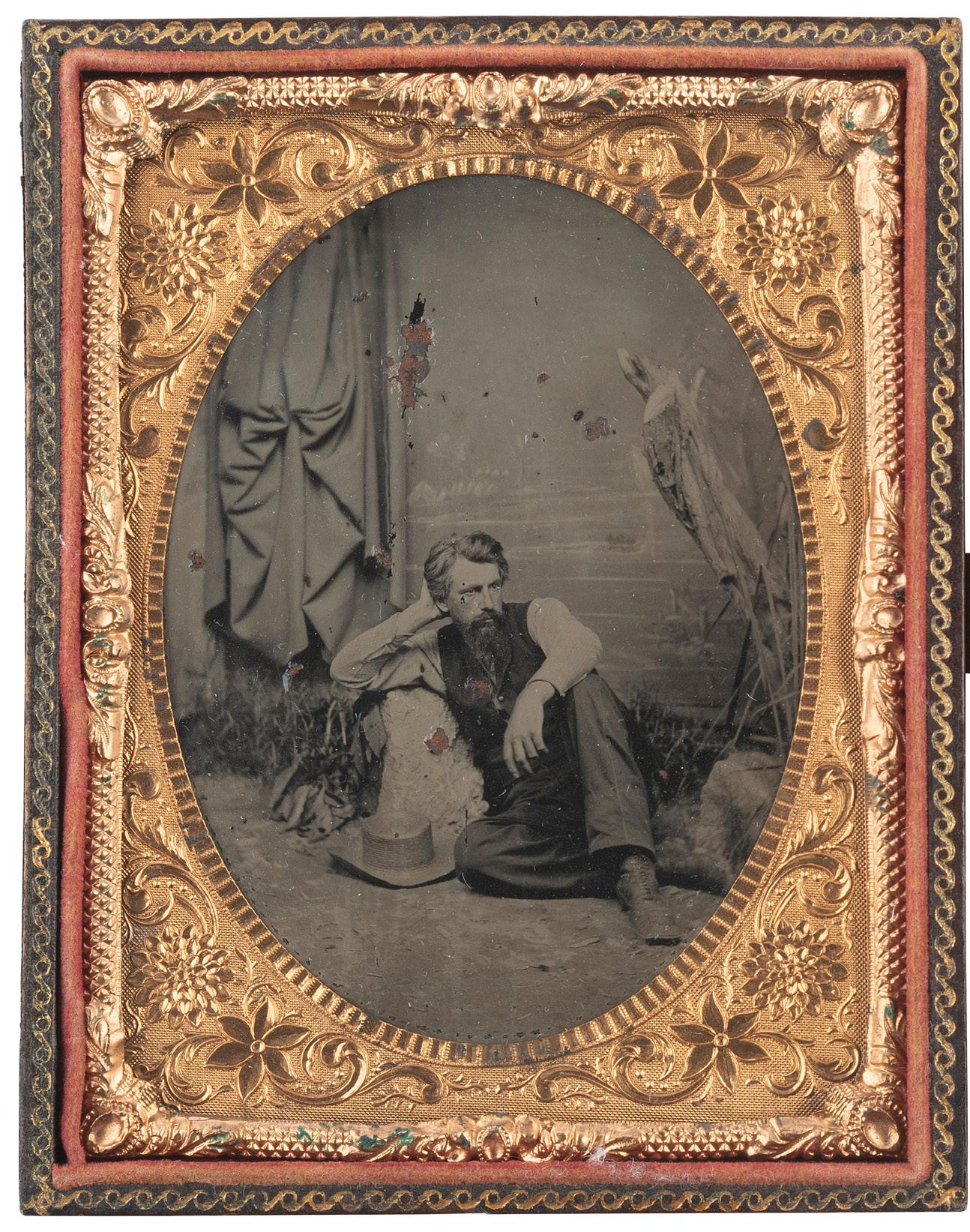
Quarter plate tintype. Housed in pressed leather case. An extremely rare portrait of Russell casually posed in an unknown studio setting.
Born in Nunda, New York, Russell began his career as a painter, executing portraits and landscapes. At the outbreak of the Civil War he mustered into the 141st New York Infantry as a captain. In 1863 he became interested in photography, and learned the craft from E.G. Fowx, a Brady and War Department operator. His images soon came to the attention of Herman Haupt, Director of the US Military Railroad who arranged for Russell to be transferred to that department and later, the Quartermaster Corps. He would remain in this position until war’s end, mustering out in September 1865.
Russell’s evocative images of the vast military transport and logistics system of the Union Army contrasted with the battlefield views of Brady, O’Sullivan, and Gardner. They provide an unparalleled record of the Union War effort. His rare, battlefield scenes, including “Confederate Dead Behind the Stone Wall” at Chancellorsville show him equal to any of the Brady field operators in capturing the horrors of war.
After the War, Russell took a position as Official Photographer of the Union Pacific Railroad (UPRR) and spent much of 1868 photographing construction scenes in Wyoming and Utah. Employing multiple cameras, he produced 200 large while plate (10 x 13 in.) and 500 stereo negatives. His work culminated in a landmark album illustrated with 50 whole plate images titled “Photographic Views Across the Continent.” In 1869, he returned to Utah and photographed the completion of the first transcontinental railroad joining the UPRR with the Central Pacific Railroad (CPRR) at the “last spike” ceremony on 10 May at Promontory.
After his work in the West, Russell established a design studio in New York and worked as a photojournalist for Frank Leslie’s Illustrated Newspaper in the early 1890s.
Though married, Russell was apparently estranged from his wife and two daughters, who lived in Minnesota and Illinois. He died in Brooklyn, New York in 1902.
This image, along with other Russell photographs in this auction, were recently discovered in Illinois, and purportedly descended in Russell’s family.
$2,500 - 3,500
84 [CIVIL WAR]. [RUSSELL, Andrew J. (1830-1902), photographer.] [Union soldiers entrenched along the west bank of the Rappahannock River at Fredericksburg, VA.] Ca 1862-63.

Recently discovered in Illinois, and purportedly descended in Andrew J. Russell’s family.
$500 - 700
85 [CIVIL WAR]. [RUSSELL, Andrew J. (1830-1902), photographer.] [Camp of Construction Corps, U. S. M. R. Rds., City Point, July, 1864.]
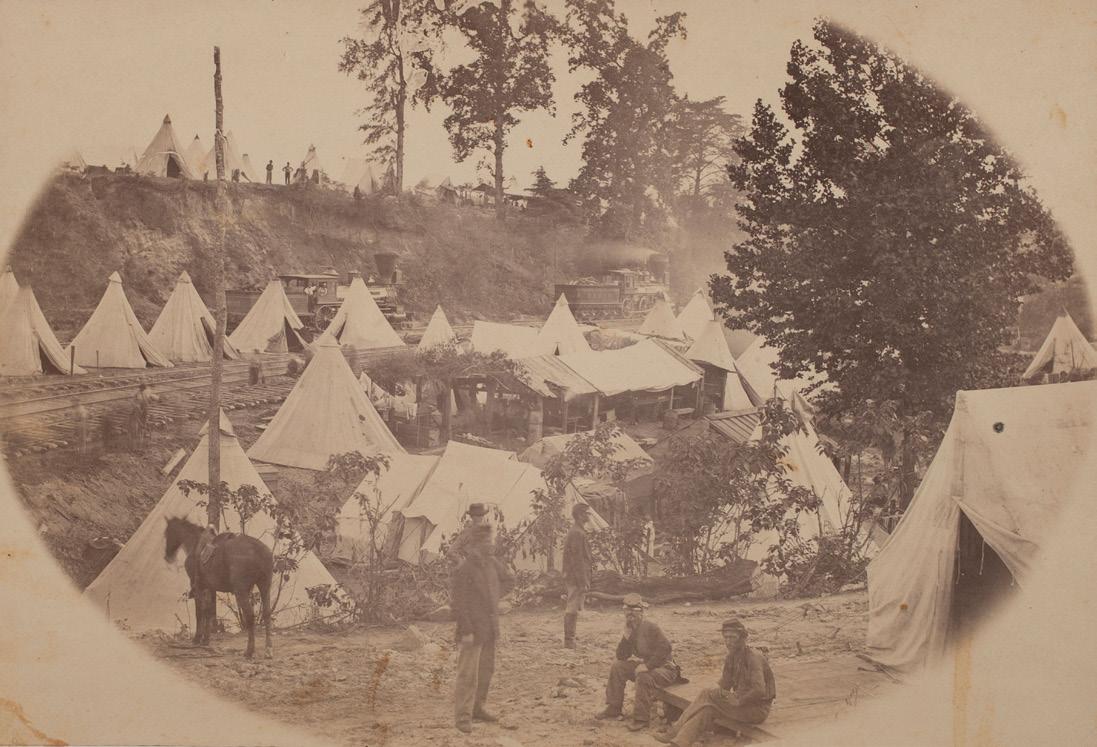
Recently discovered in Illinois, and purportedly descended in Andrew J. Russell’s family.
$400 - 600
86 [CIVIL WAR]. [BRADY, Mathew (1822-1896), photographer]. Large format photograph of 1st Connecticut Artillery at Fort Richardson, Arlington, VA. Ca 1861.
Provenance: Andrew Burgess Collection (consignor notes).
$700 - 1,000
87 [CIVIL WAR]. [BRADY, Mathew (1822-1896), photographer, attrib.]. Large format photograph of Fort Stevens overlooking the Potomac River, including Union gunners in action. Ca 1864.

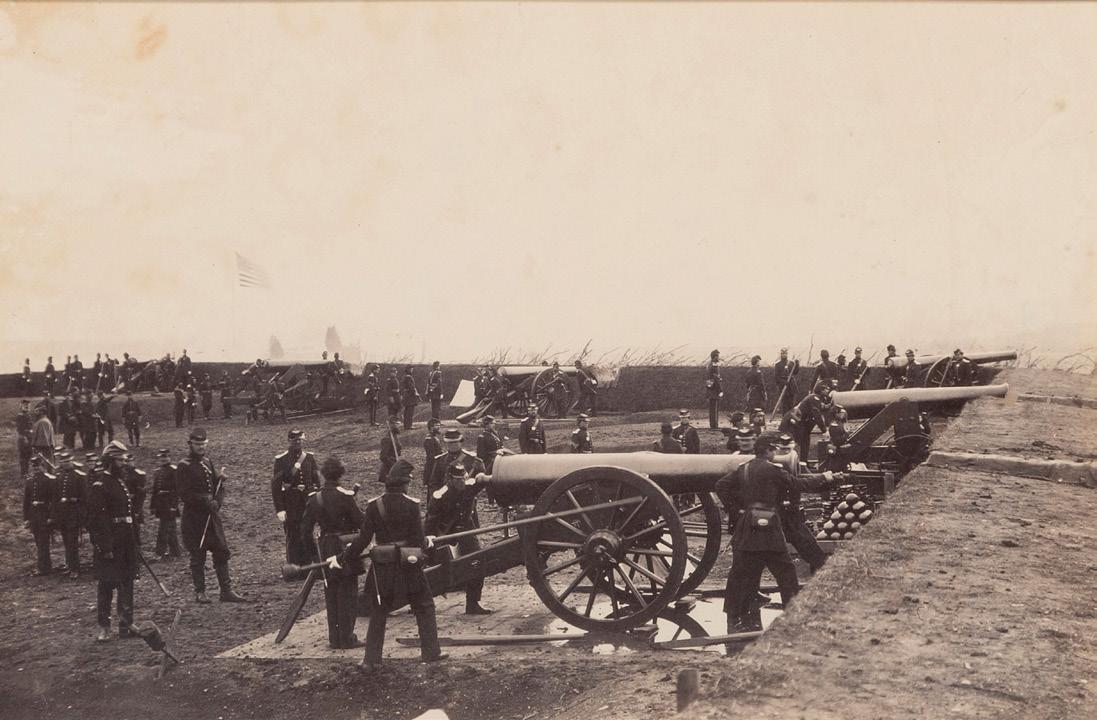
Provenance: Andrew Burgess Collection (consignor notes).
$700 - 1,000
$400 - 600

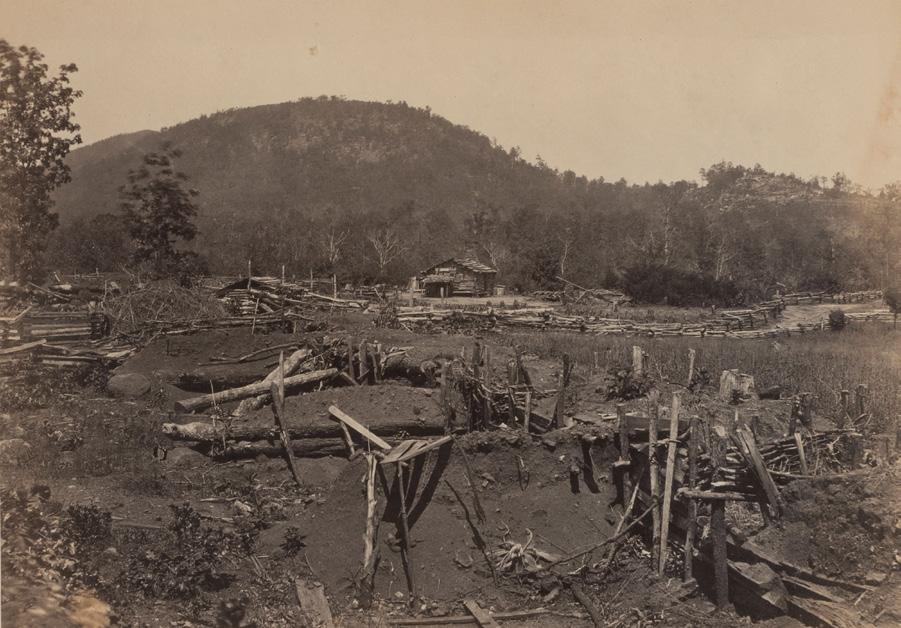
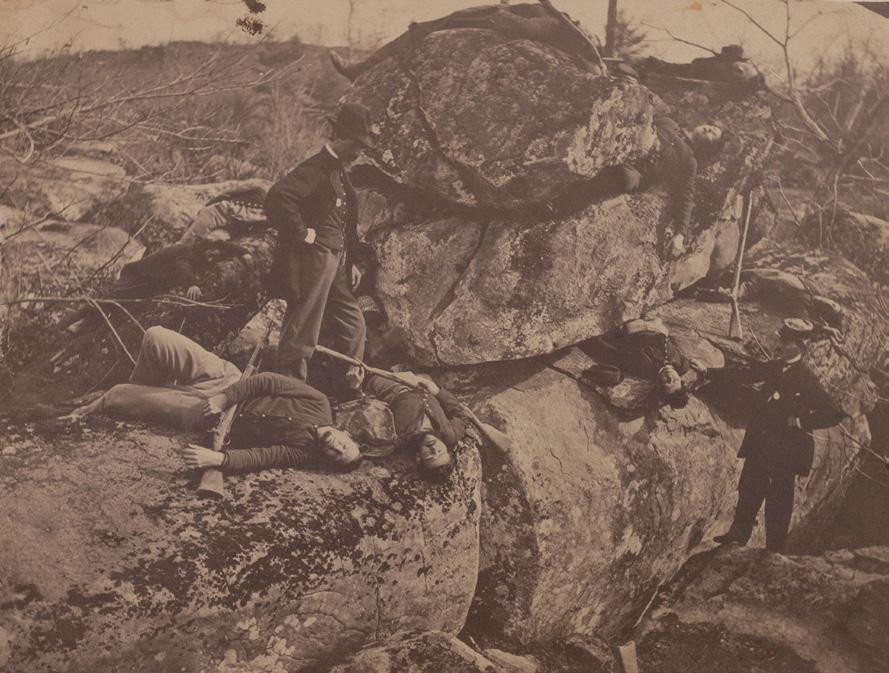
$1,500 - 2,500
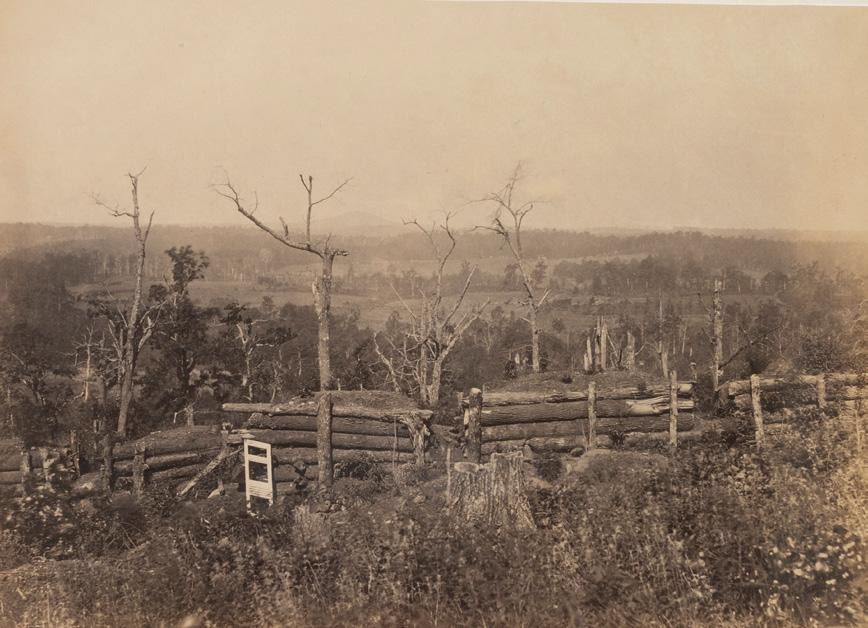
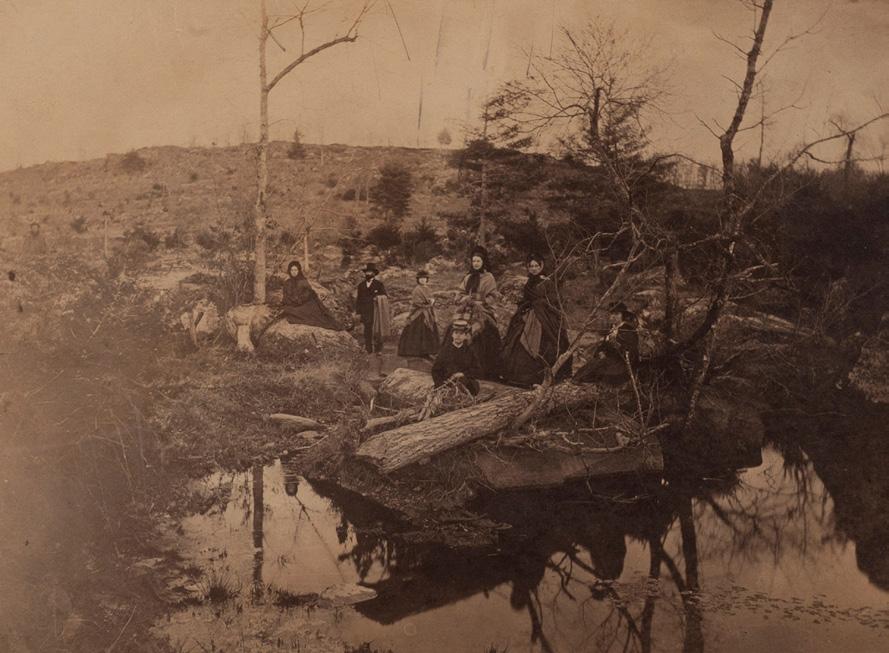
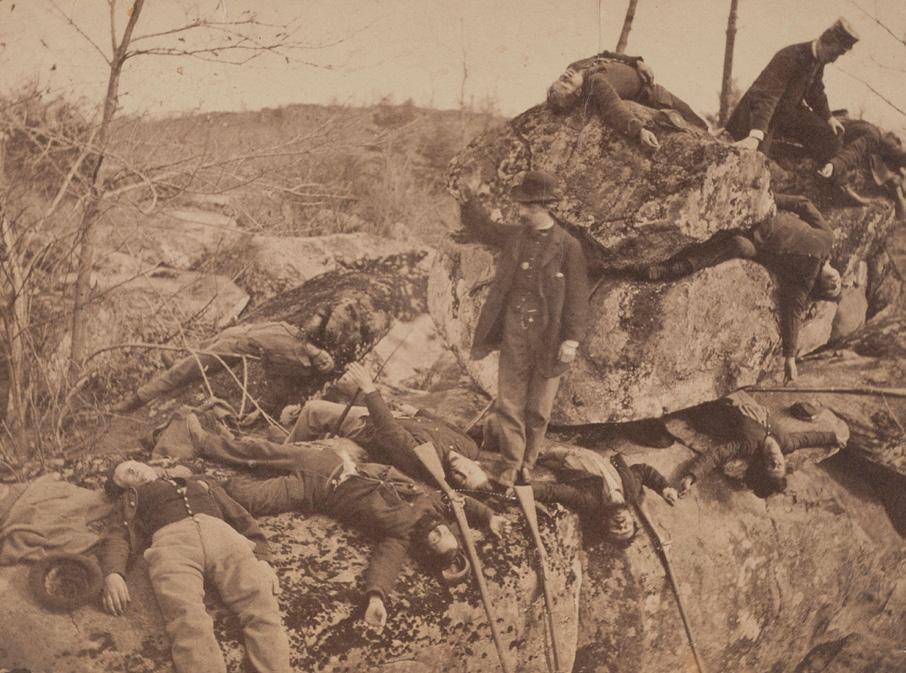
$300
$800
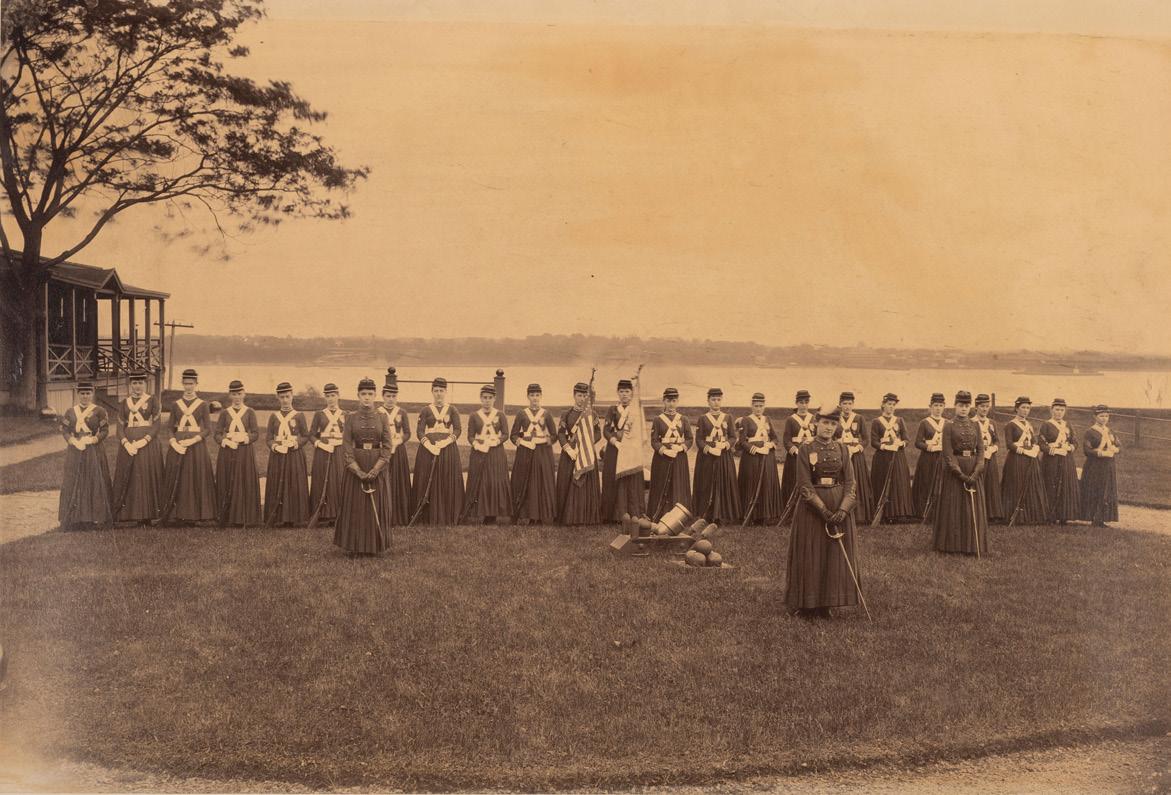


$2,000 - 3,000
Provenance: Sixth plate Herb Peck Collection (consignor provided bill of sale). The young enlistee holds his bayonetted musket to one side and wears what could either be a blue flannel full shirt worn by the 1st Regiment, Rhode Island detached militia, or a variant of the six-button modified fold-over collar jacket, with possible wooden buttons, worn by North Carolina enlistees.
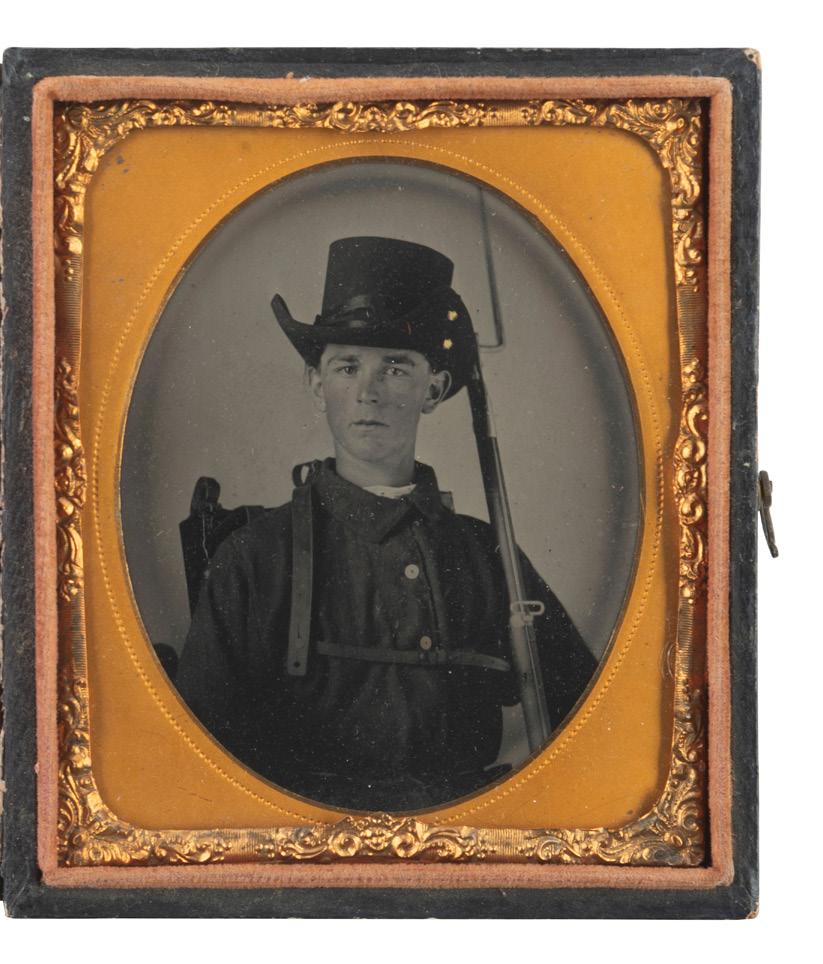
$1,000 - 2,000
95 [CIVIL WAR]. Full plate tintype of a possible Confederate officer tentatively identified as Lieut. Albert Wymer Henley, 13th and 36th Mississippi Infantry.
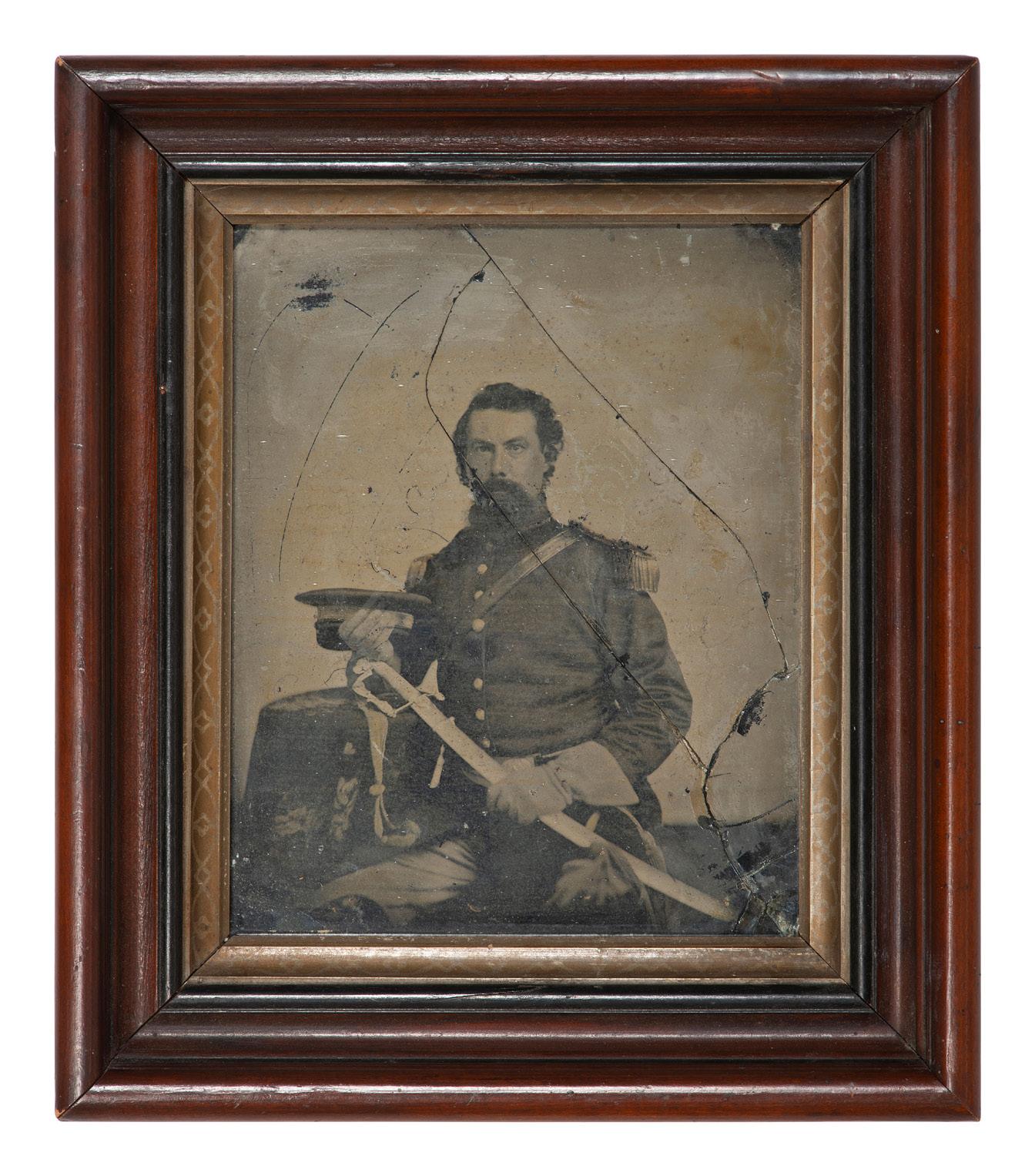
$1,000 - 1,500
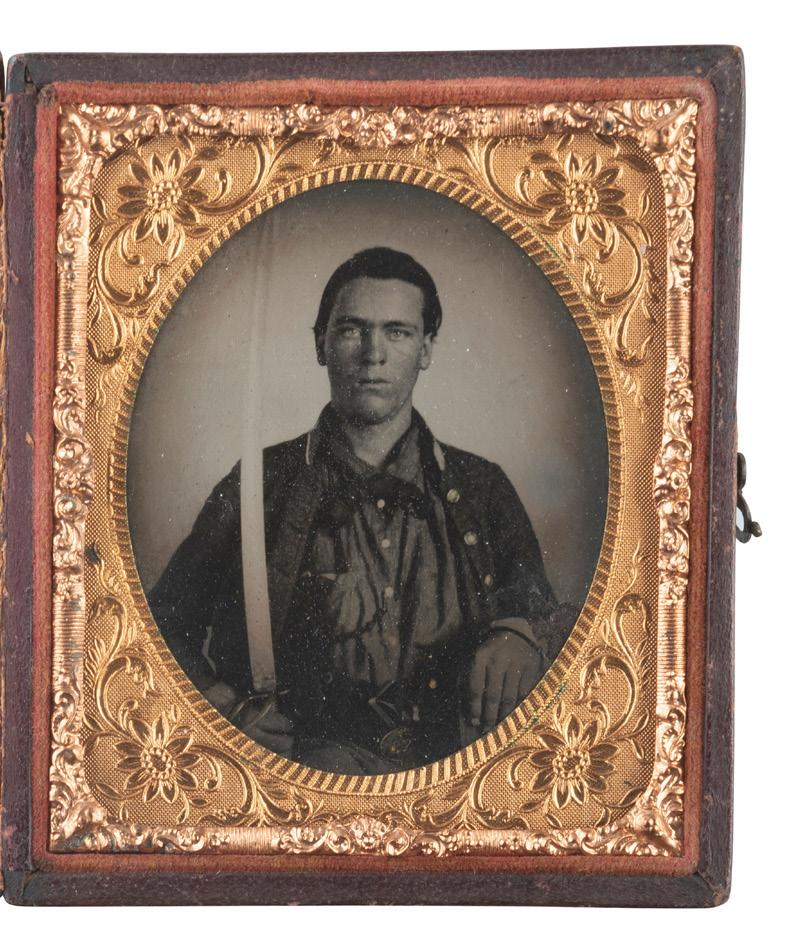
96 [CIVIL WAR]. Full plate tintype copy portrait of an unidentified soldier, likely Confederate.
$1,000 - 1,500
98
[CIVIL WAR]. Whole plate hand-painted tintype of a Confederate soldier. Property from the Civil War and Militaria Collection of George Sanders of Albuquerque, New Mexico

$400 - 600
97 [CIVIL WAR]. Whole plate hand-tinted tintype of a possible Confederate soldier with musket.
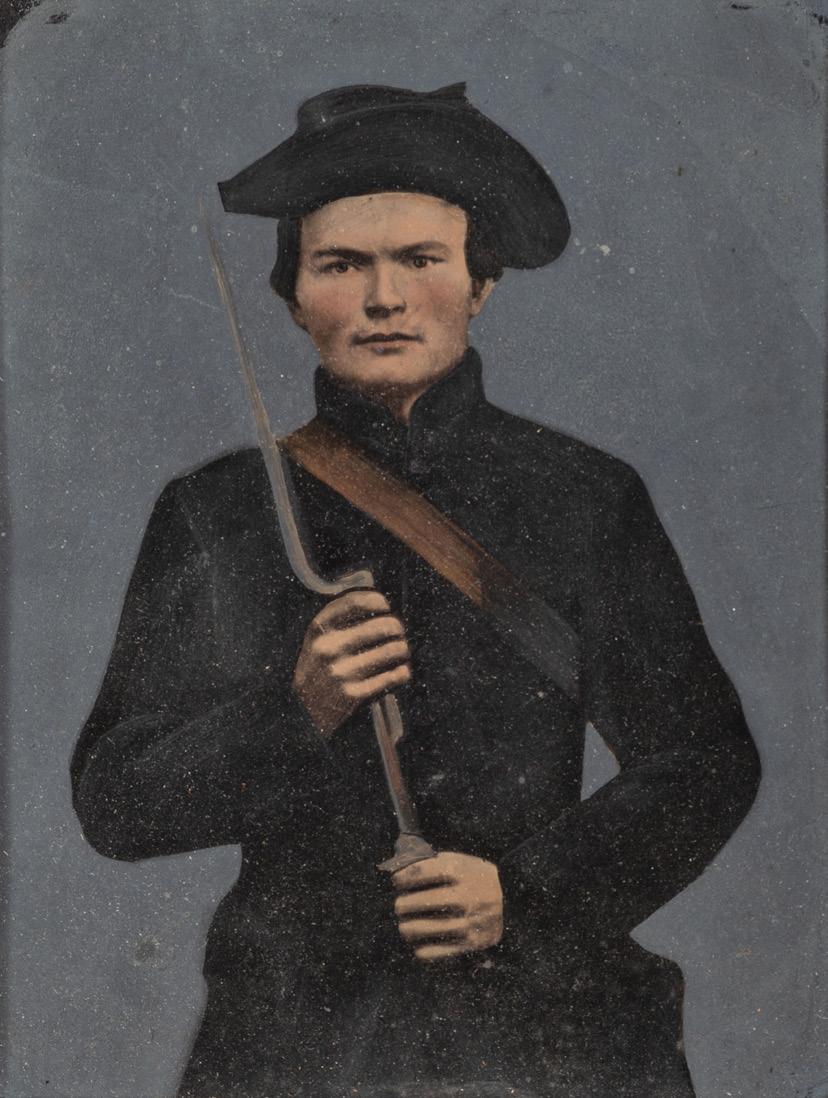
Property from the Civil War and Militaria Collection of George Sanders of Albuquerque, New Mexico
$400 - 600
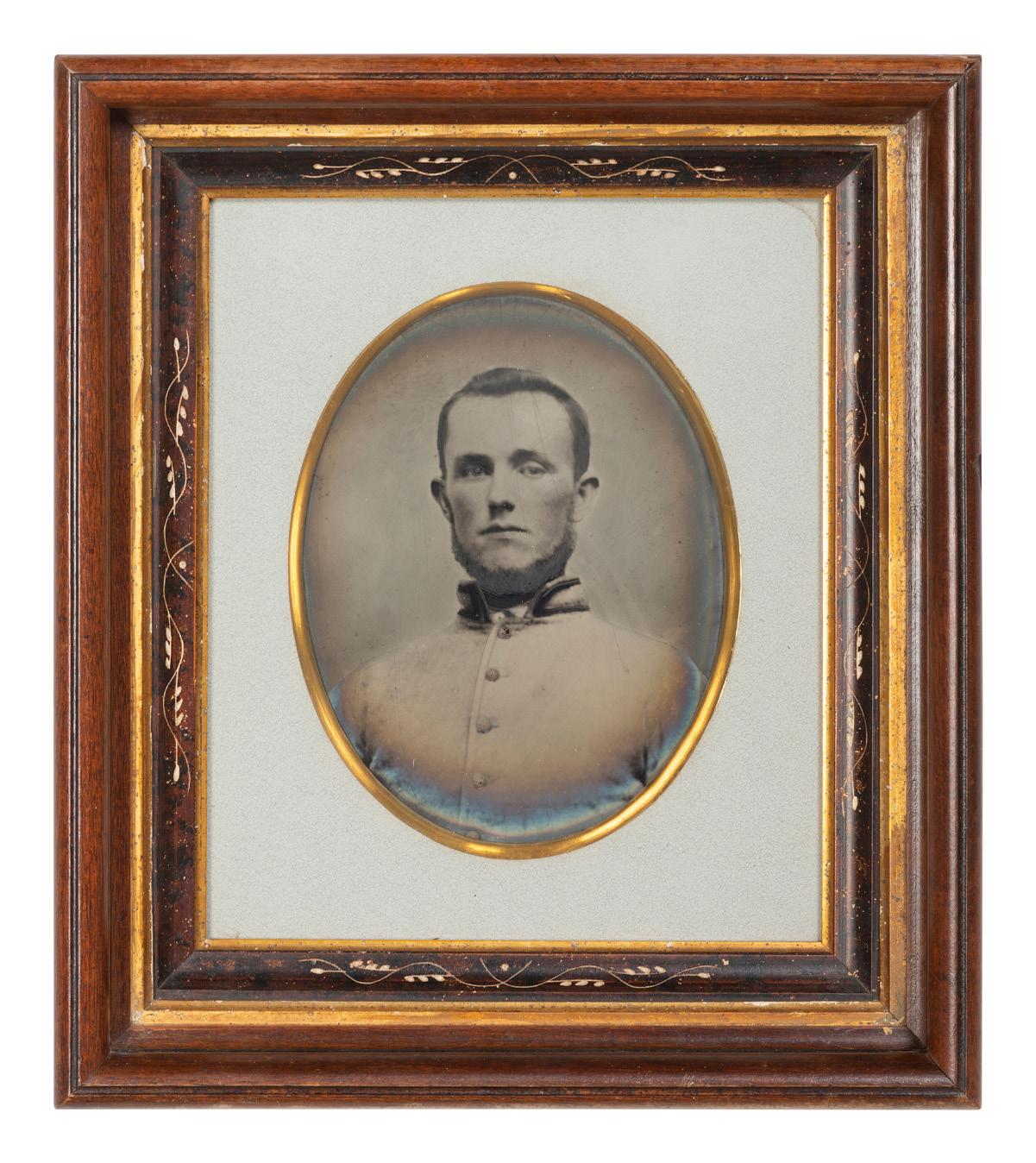
$2,000 - 4,000

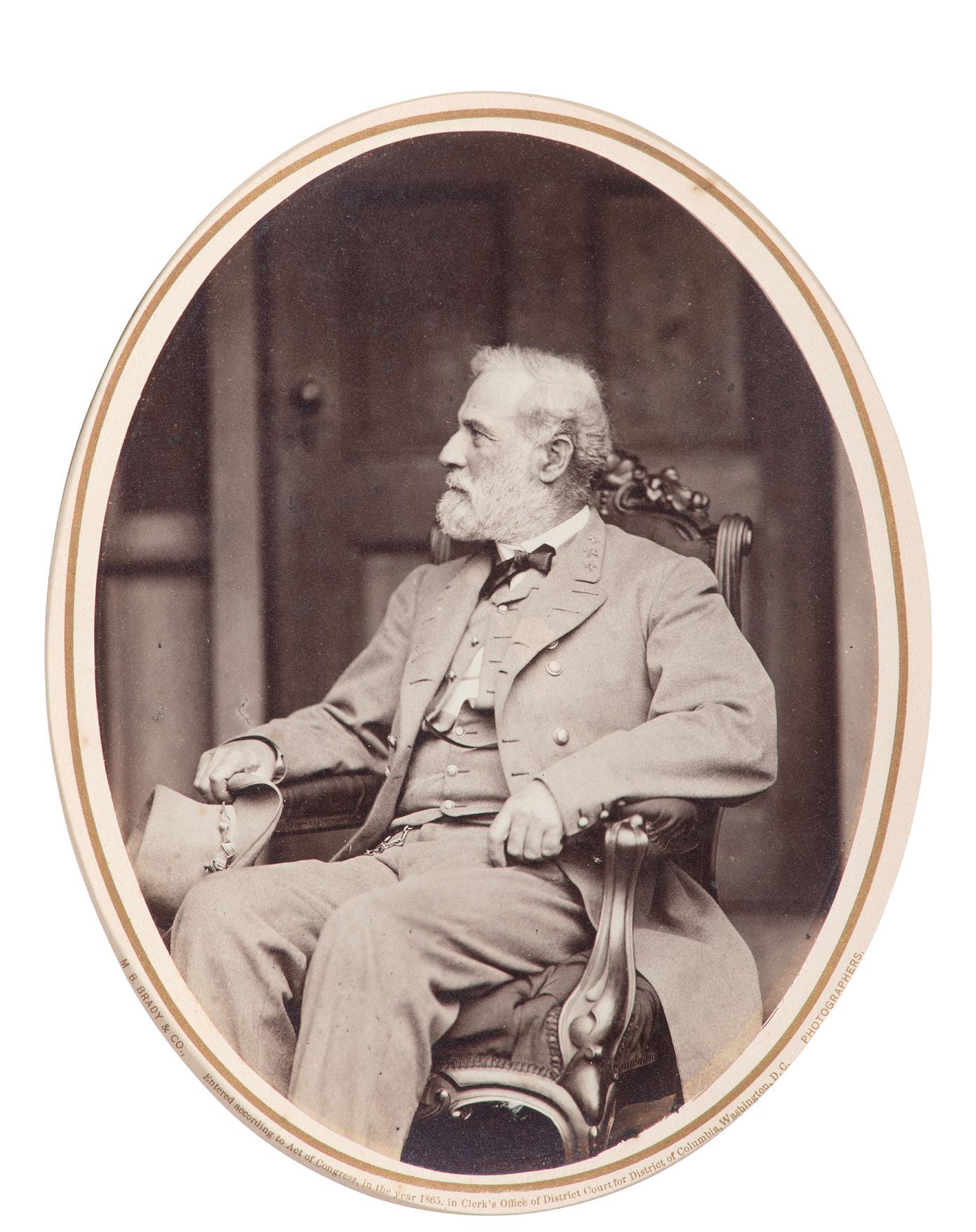
101
$5,000 - 7,000
102

$1,500 - 2,500
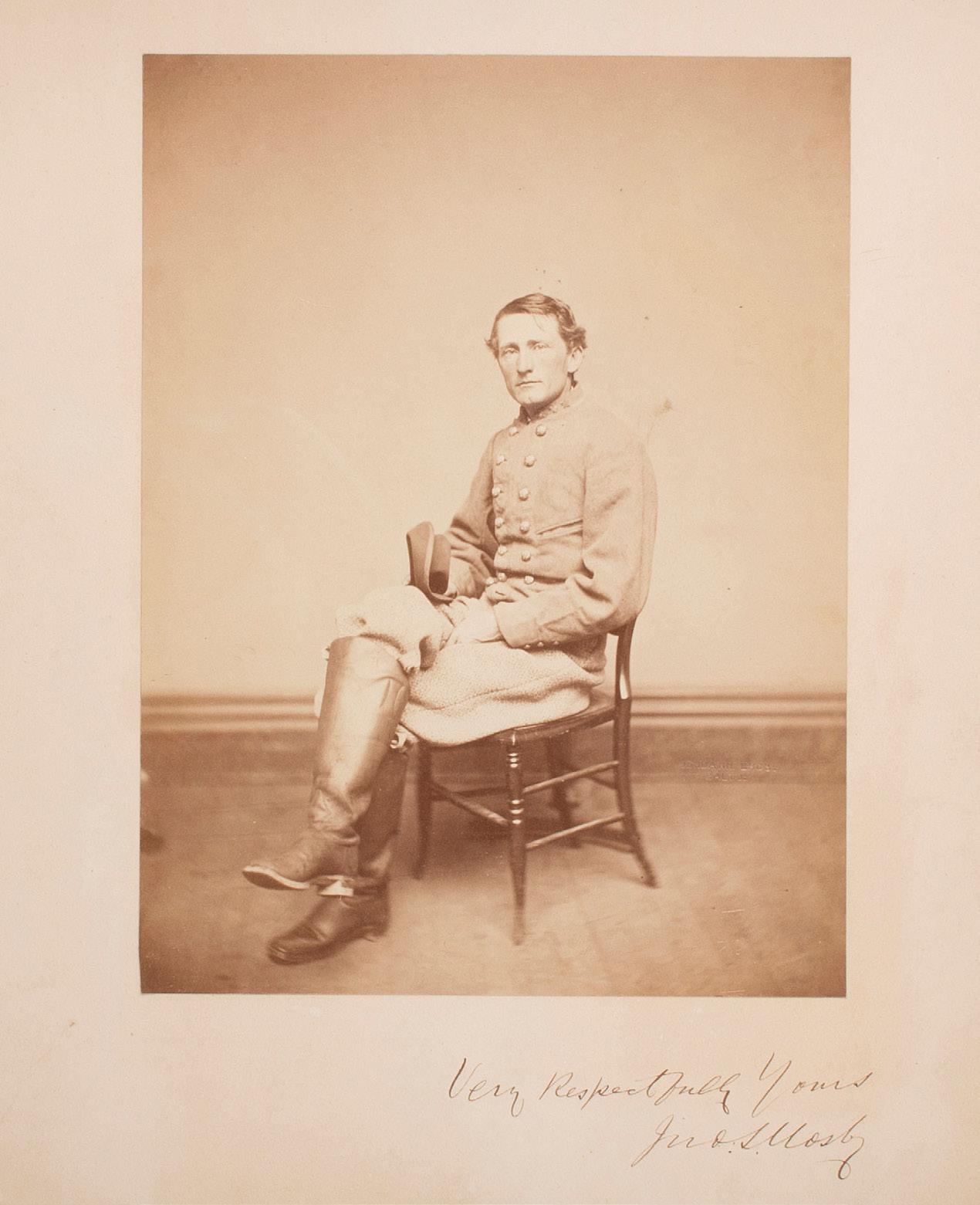
103 [CIVIL WAR]. [HOOD, John Bell (1831-1879)]. ANDERSON, Samuel, photographer. CDV of John Bell Hood. New Orleans, LA, ca 1860s. $400 - 600

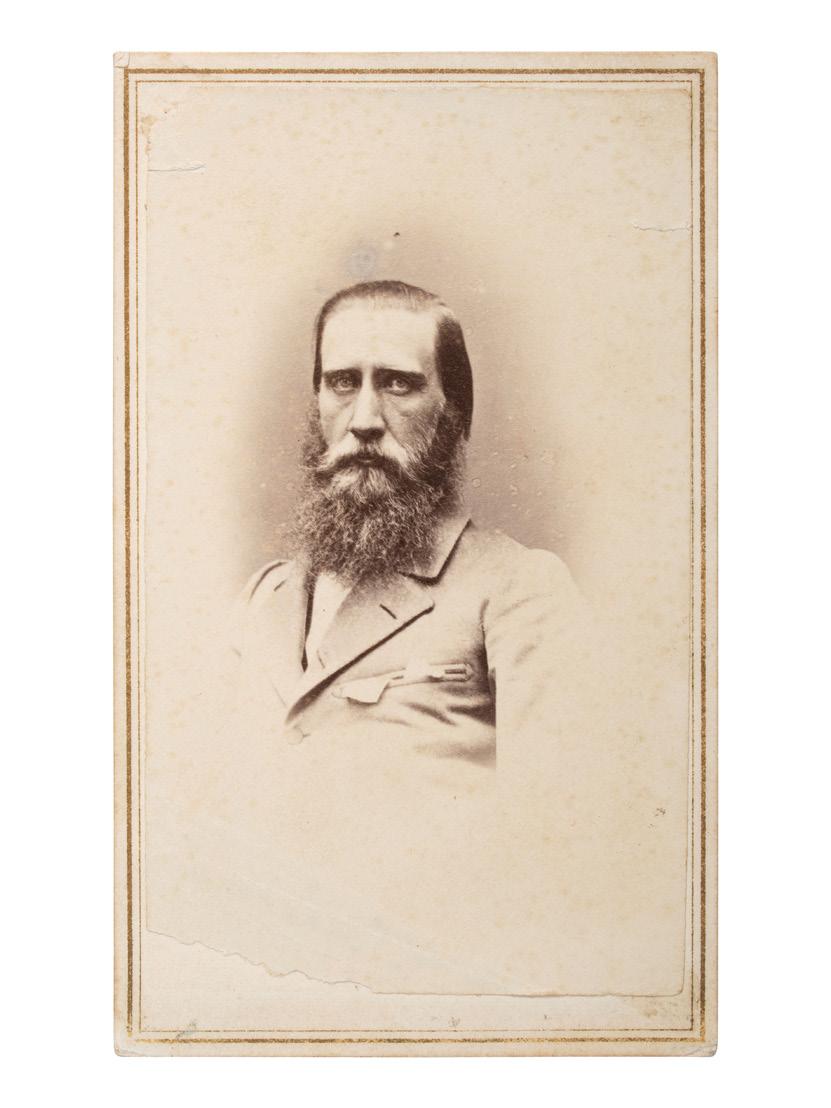
104 [LEE, Fitzhugh (1835-1905)]. Glass plate negative of General Fitzhugh Lee with period ink identification tag. $500 - 700

105 [CIVIL WAR]. CDV of Captain Thomas Howle, 8th South Carolina Infantry, KIA Antietam. Charleston, SC: Mundy, n.d.
$650 - 850
106 [CIVIL WAR]. DAVIS, Jefferson (1808-1889). Signed CDV of the aged former CSA President. New Orleans, LA: W.W. Washburn, ca 1880s.
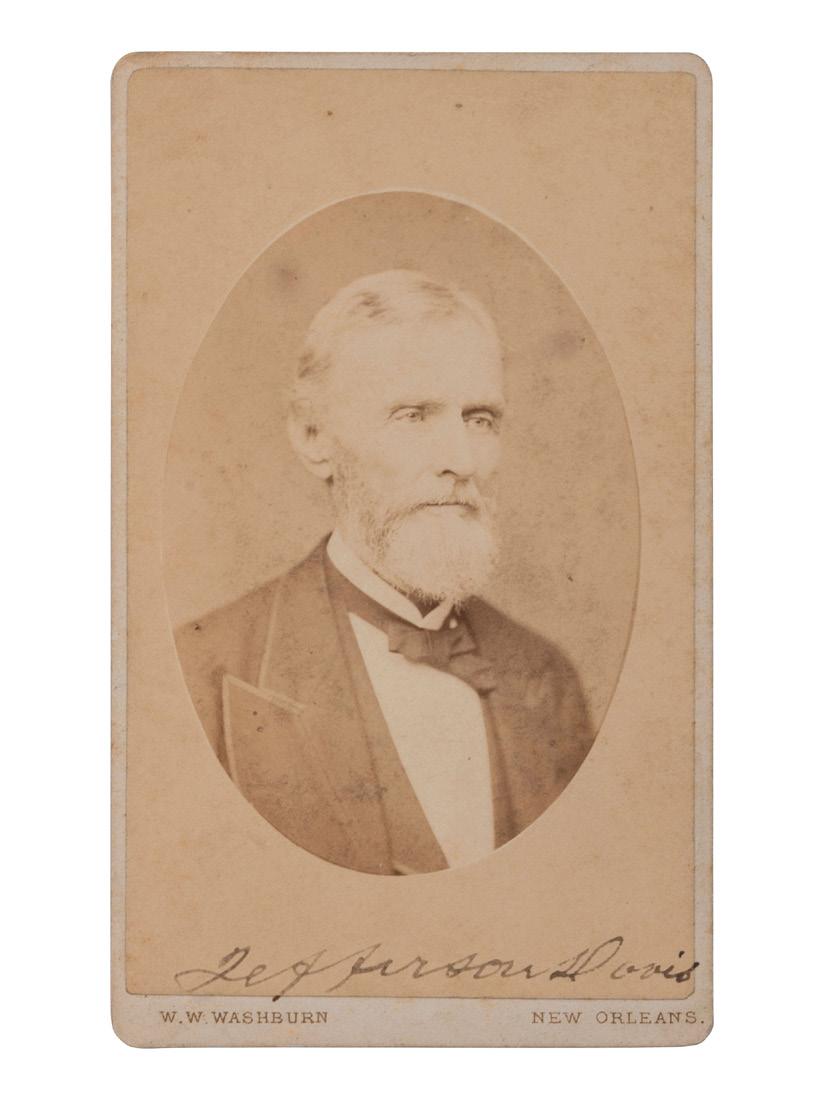
Property from the James Milgram, M.D., Collection of Broadsides, Ephemeral Americana, and Historical Documents
This photograph was originally enclosed with the letter written by former Confederate officer Stephen Dill Lee, dated 10 May 1884, offered as Lot 106A.
$1,000 - 2,000
106A [CIVIL WAR]. LEE, Stephen D. (1833-1908). Autograph letter signed (“S. D. Lee”). Mississippi, 10 May 1884.
One page, 8 1/8 x 10 5/8 in. On Agricultural and Mechanical College of Mississippi letterhead. With original envelope addressed to Bishop Green of Sewanee, TN.
In full: “My Dear Bishop, Please accept the enclosed as a slight token of my like and esteem for you. God grant that your life may yet be prolonged many year, to cheer and strengthen your friends, and admirers. Yours affect’ly, S.D. Lee.”
The “enclosed” item referenced is a signed CDV of Jefferson Davis, offered as Lot 106 in this sale.
[With:] Printed envelope for “Pioneer Express Company. (Express Forwarders.)” addressed to “Miss Lilly Green, Present.”
Stephen Dill Lee (1833-1908) graduated from the United States Military Academy in 1854, briefly serving with the Army during the Seminole Wars and in the west before the Civil War broke out. He decided to join the CSA as an aide-de-camp and captain to General P.G.T. Beauregard, and was promoted through the ranks, ultimately to lieutenant general in June of 1764, becoming the youngest person to hold that rank in the Confederate Army. His commands included a battery of guns under General Joseph E. Johnston, chief of artillery for Generals Lafayette McLaws and John Magruder, and a battalion of artillery under General James Longstreet. He was in charge of the artillery at the Battle of Vicksburg under General John C. Pemberton, where he was captured. After achieving his final promotion, he was placed in charge of General John B. Hood’s former corps within the Army of Tennessee, commanding that corps through the Atlanta Campaign of late 1864 and finally joining General Joseph E. Johnston for the Carolina Campaign in early 1865 before surrendering in April.
After the war, Lee became the first president of Mississippi State College, in which capacity he wrote the letter featured here.
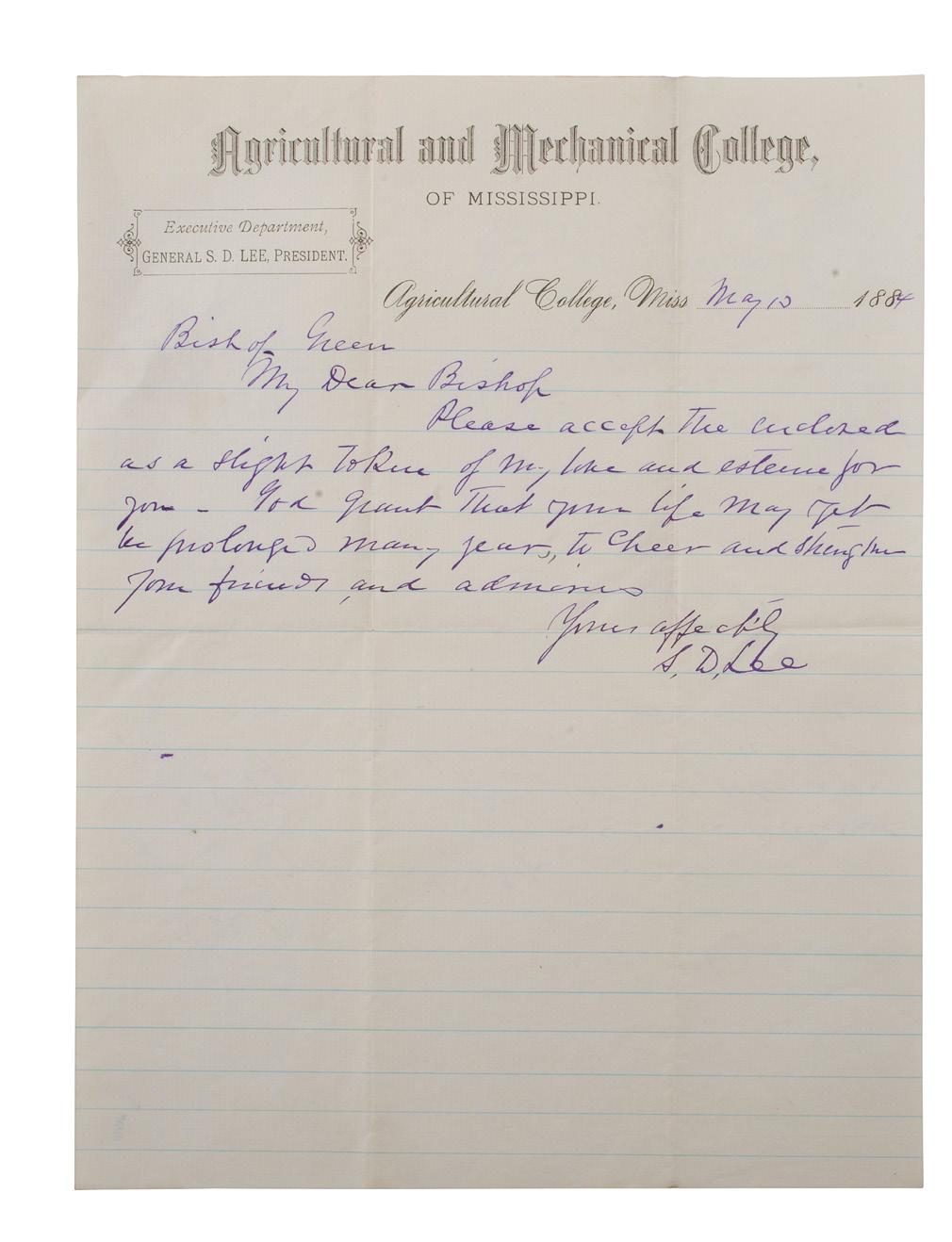
Reverend William Mercer Green (1798-1887) was the first Episcopal bishop of Mississippi, helping to organize the Protestant Episcopal Church in the Confederate States of America upon the secession of Mississippi from the Union.
Property from the James Milgram, M.D., Collection of Broadsides, Ephemeral Americana, and Historical Documents
$300 - 500
107
DAVIS, JEFFERSON (1808-1889). Autograph letter signed (“J.F. Davis”) to General Winfield Scott. “Lexington,” [Kentucky], 26 August 1828.
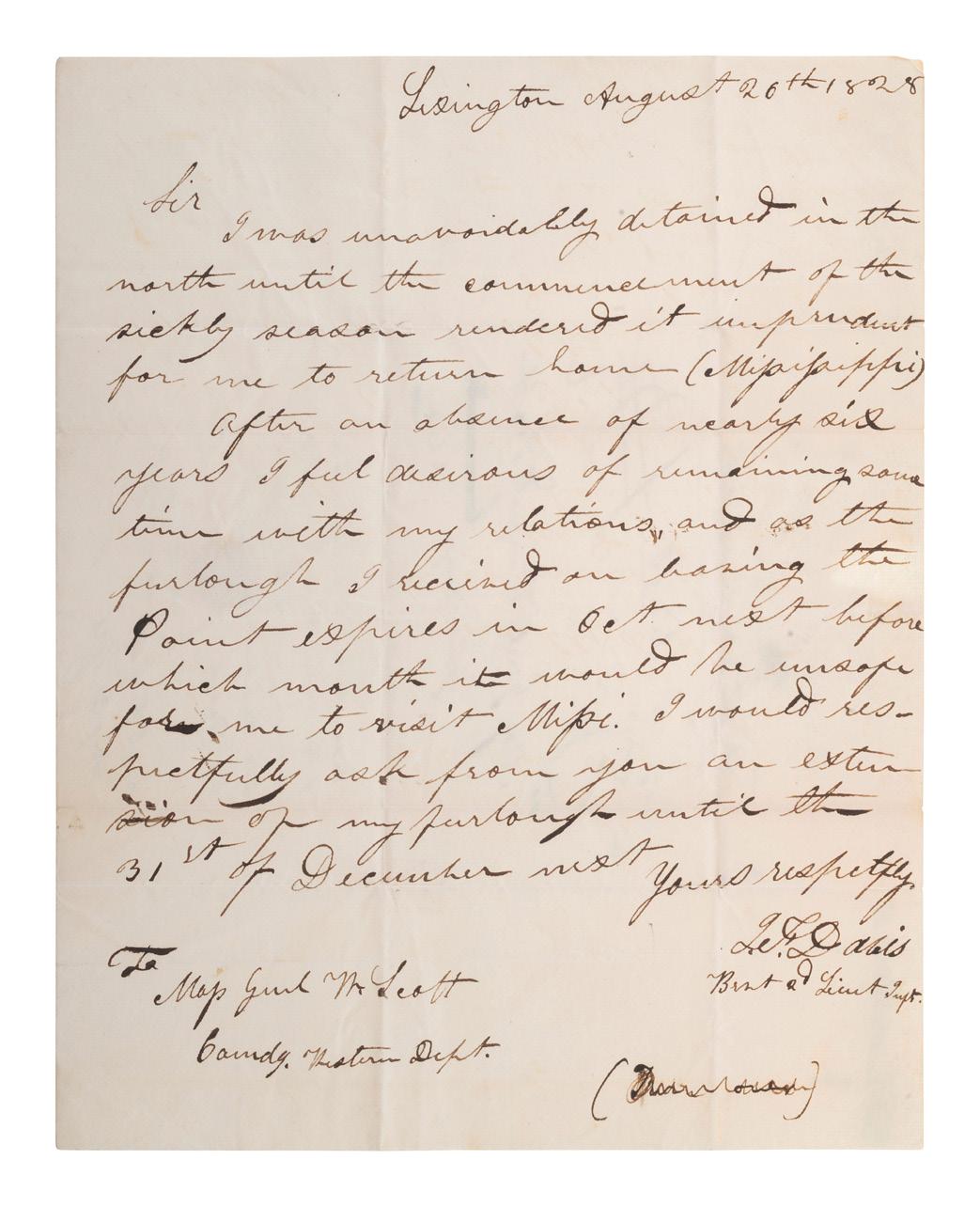
One page, on bifolium, 7 3/4 x 9 13/16 in. Addressed on integral leaf, thoroughly docketed.
In full: “I was unavoidable detained in the north until the commencement of the sickly season rendered it imprudent for me to return home (Mississippi). After an absence of nearly six years I feel desirous of remaining some time with my relations, and as the furlough I received on leaving the Point expires in Oct next before which month it would be unsafe for me to visit Misi. I would respectfully ask from you an extension of my furlous until the 31st of December inst.”
Docketing on integral leaf reads, in part, “Under the peculiar circumstances of this case, known to Maj-genl Scott, he recommends to the Dpt of War that the indulgence asked be given to Mr. Davis.”
Property from the James Milgram, M.D., Collection of Broadsides, Ephemeral Americana, and Historical Documents
$800 - 1,200
108 DAVIS, Jefferson (1808-1889). Partly printed document accomplished in manuscript signed (“Jeffer Davis”), as US Secretary of War. Washington, DC, 9 August 1853.

1 page, 4to, printed on blue War Department stationery, bifolium, docketed verso.
SECRETARY OF WAR JEFFERSON DAVIS PROMOTES ULYSSES S. GRANT TO RANK OF CAPTAIN
Four years after the end of the U.S.-Mexican War, Ulysses S. Grant found himself on the West Coast at the Columbia Barracks in the Oregon Territory, renamed Fort Vancouver in 1853 after the territory was split to create the Washington Territory. Grant, aged 30, and in a remote military post thousands of miles from his family, kept in good spirits maintaining supplies at the fort. He frequently interacted with the local Chinook and Klickitats people, witnessing their mistreatment first-hand.
On his promotion to Captain, Grant was ordered to the even more remote Fort Humboldt. The order, signed by Davis, appearing as a post-script on this appointment: “You will proceed without delay to join your company (F) at Fort Humboldt, Cal.” Desperate to see his family, newly-appointed Captain Grant made his way to Fort Humboldt in Northern California. The barracks were under the command of strict disciplinarian Lieutenant Colonel Robert C. Buchanan, who Grant had crossed paths with at Jefferson Barracks. Lonely and bored, and separated from his wife and family, Grant began to drink. Following a drunken episode, Colonel Buchanan instructed Grant to “resign or reform,” but Grant continued to drink, and resigned effective 31 July 1854. Grant did not face courtmartial, and the War Department determined: “Nothing stands against his good name.”
Grant would later request to be recommissioned after the outset of the Civil War, and after his reinstatement, would ultimately be promoted to Lieutenant General responsible for the command of all Union Armies.
Jefferson Davis, the Secretary of War who would accept Grant’s resignation from the United States Army in 1854 would, of course, become the president of the Confederate States of America. Grant’s campaigns at Petersburg and Appomattox would lead to the surrender of the Confederate Army and the end of the American Civil War.
A SUPERB ASSOCIATION.
109 [CIVIL WAR]. DAVIS, Jefferson (1808-1889). Autographed card (“Jefferson Davis”). [With:] Silk ribbon created for the Re-Interment of the remains of Jefferson Davis.

$800 - 1,200
111 [CIVIL WAR]. BENJAMIN, Judah Philip (1811-1884). Autograph note signed (“J. P. Benjamin”), as Acting Confederate States Secretary of War, to Hon. J. L. M. CURRY. Richmond, 21 November 1861.
1/2 page, 4to, on a bifolium (see below).
Secretary of War Judah P. Benjamin writes to J. L. M. Curry, then Deputy from Alabama to the Provisional Congress of the Confederate States: “The above Circular will furnish to Cap. Forney and the other gentlemen names in your letter all needed information in regard to the organization and acceptance of troops. you will oblige by communicating the same below.” Accomplished on an integral blank leaf of a circular printed by the Confederate States of America War Department, issued November 21, 1861.
[With:] CURRY, Jabez Lamar Monroe (1825-1903). Autograph letter signed (“J. L. M. Curry”), to William Henry FORNEY (1823-1894), n.p., n.d. Accomplished beneath Benjamin’s note to Curry. In part: “The foregoing circular and letter are the result of my written and oral application in your behalf. I have no doubt but that you could raise a Regiment in Alabama and if you will undertake it and succeed, the [?] of Colonel will be fixed to you.” Forney would ultimately rise to the rank of Brigadier General in the 10th Regiment Alabama Infantry of the Confederate States Army. After the war, he was appointed by President Grover Cleveland to be a member of the Gettsyburg Battlefield Commission and served until his death.
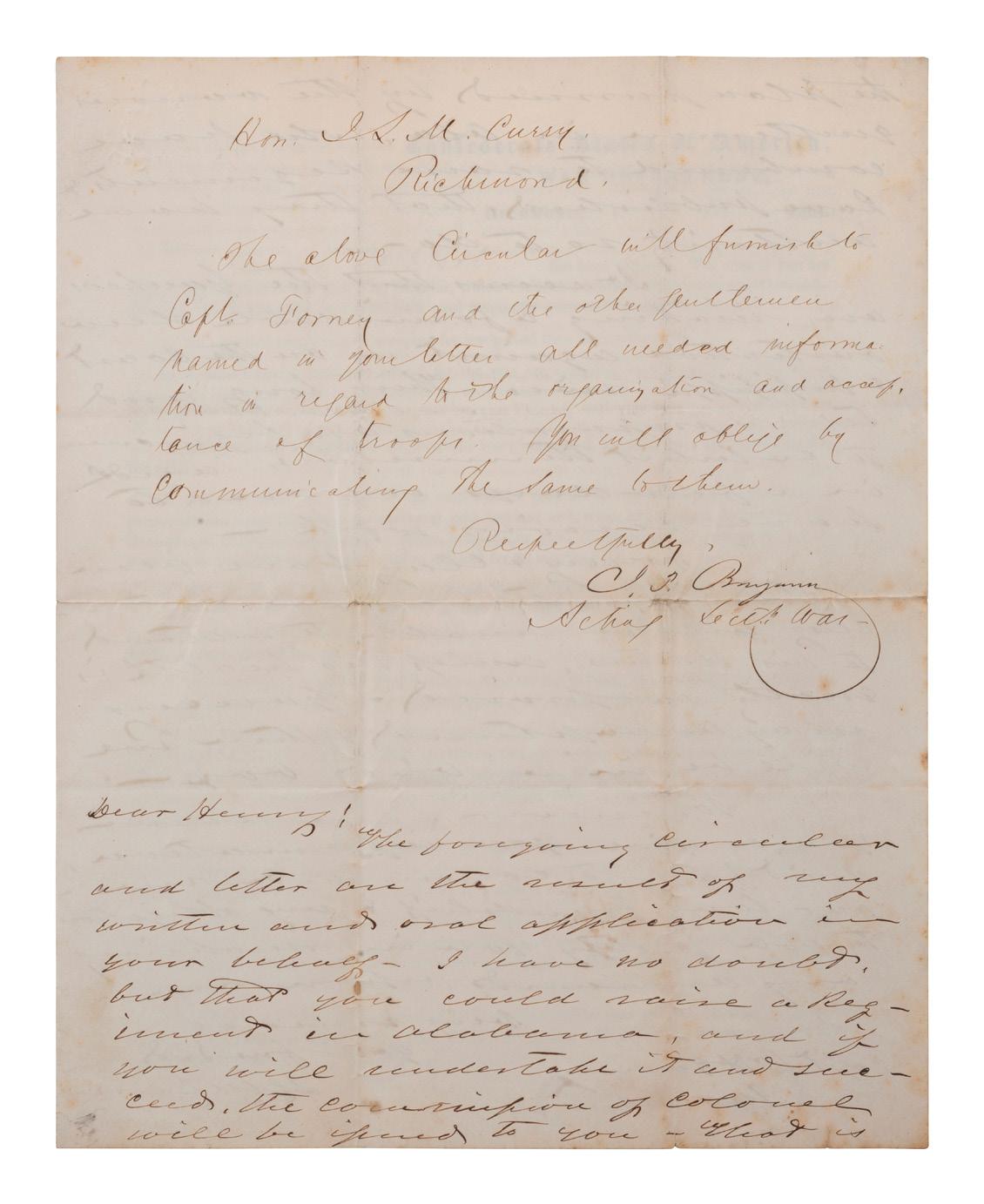

Property from the James Milgram, M.D., Collection of Broadsides, Ephemeral Americana, and Historical Documents
$1,000 - 2,000
110
DAVIS, Varina Howell (1826-1906). Autograph letter signed (“Varina Howell Davis”). “Beauvoir House,” 18 April 1888.
$400 - 600
113
[CIVIL WAR]. A group of approx. 11 signatures of Confederate cabinet members, incl. Jefferson Davis, Judah P. Benjamin, J.C. Breckinridge, and others.

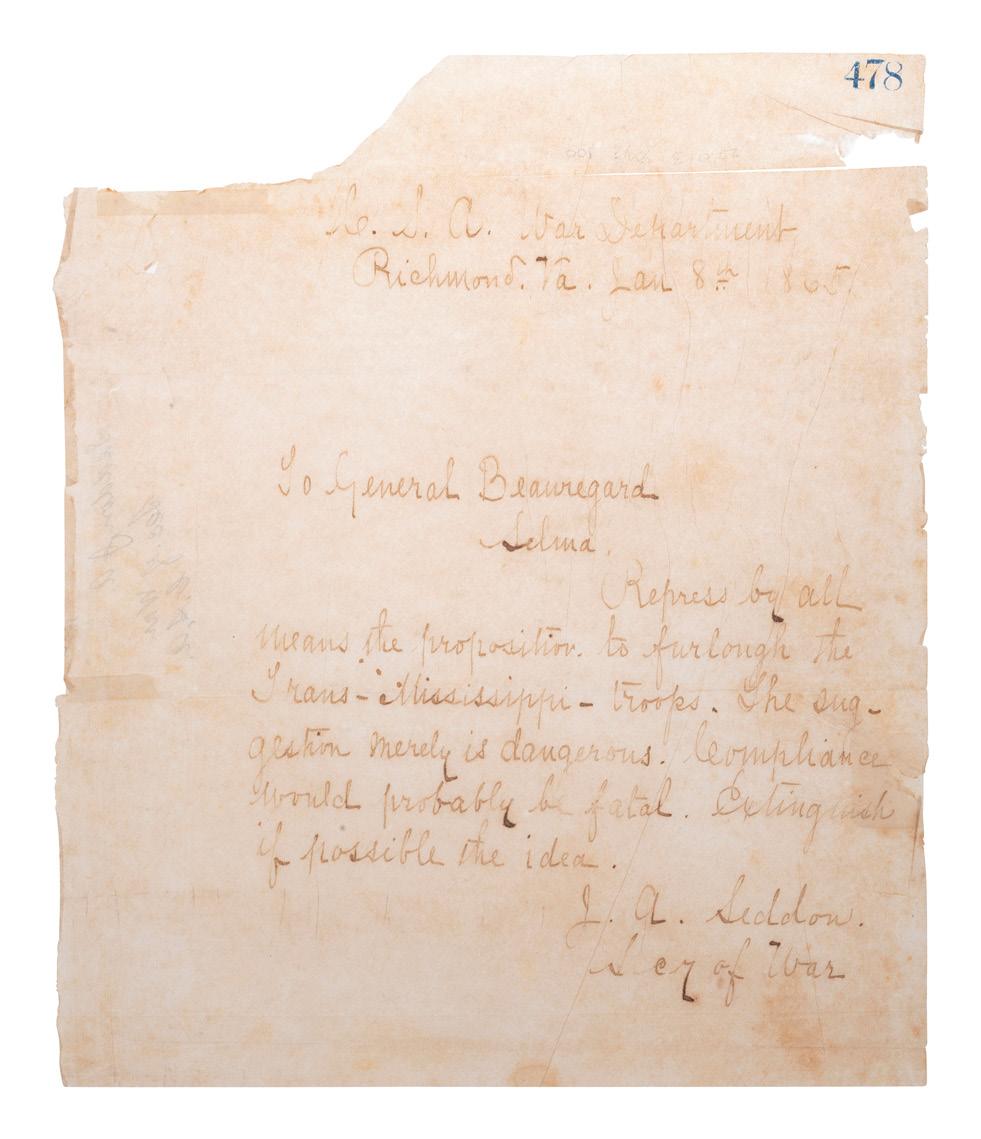
Property from the James Milgram, M.D., Collection of Broadsides, Ephemeral Americana, and Historical Documents
$500 - 1,000
112
[CIVIL WAR]. SEDDON, James Alexander (1815-1880). Autograph letter signed (“J. A. Seddon”), as Confederate States Secretary of War, to P. G. T. BEAUREGARD. Richmond, VA, 8 January 1865.
1 page, 4to, on an onionskin sheet.
THE CONFEDERATE SECRETARY OF WAR URGES BEAUREGARD NOT TO FURLOUGH TROOPS
In full: “Repress by all means the proposition to furlough the Trans-Mississippi troops. The suggestion merely is dangerous. Compliance would probably be fatal. Extinguish if possible the idea.”
Less than a month before he resigned his post as Secretary of War and with the Confederate military situation rapidly deteriorating, Seddon orders Beauregard, then at Selma, Alabama not to allow any troops to be furloughed. Having recently been given command of the West, Beauregard was en-route to meet the remnants of Hood’s army after its retreat from Tennessee. He reached Tupelo where the army had assembled and viewed what was left of Hood’s command on 15 January 1865. The once proud Army of Tennessee was reduced to one corps fit for action. He did not have to ask for Hood’s command; Hood asked to be relieved, and Beauregard replaced him with Taylor. Less than a month following this communication, Seddon would resign his post as well. John C. Breckinridge replaced Seddon and held the post through the end of the war.
Property from the James Milgram, M.D., Collection of Broadsides, Ephemeral Americana, and Historical Documents
$400 - 600
114
LEE, Robert E. (1807-1870). Autograph letter signed (“R. E. Lee”) as commandant at West Point, to George Washington Custis Lee (1832-1913). Sollers Point, 19 June 1851.
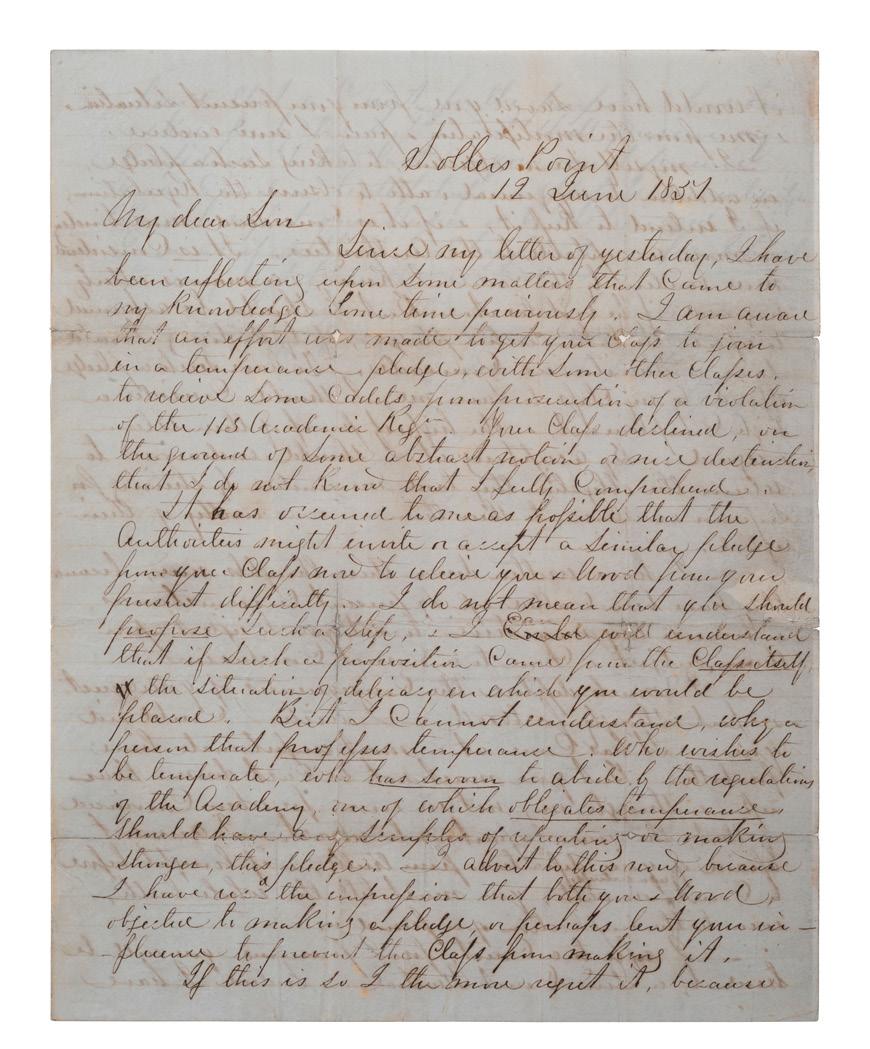
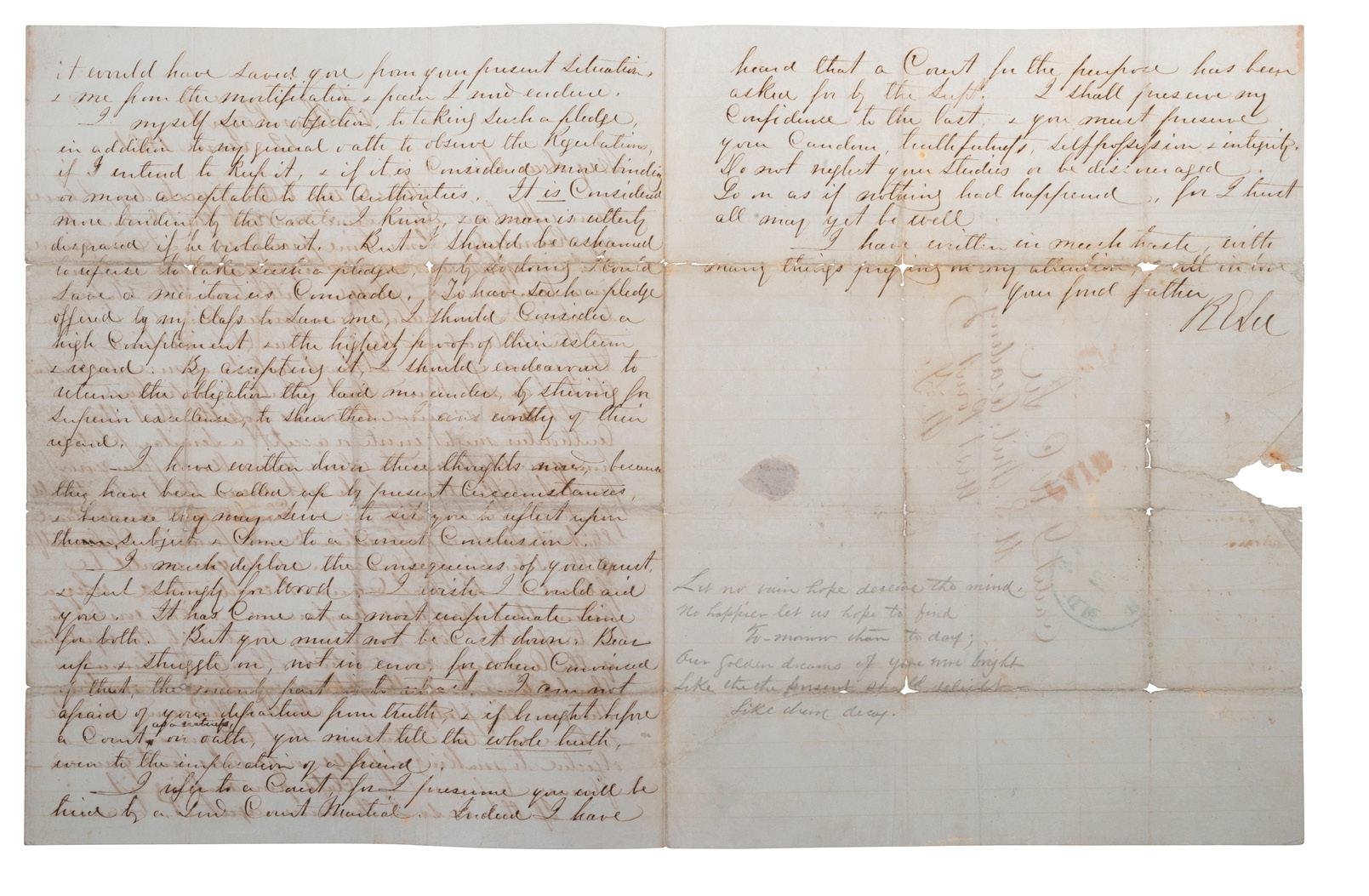
2 1/2 pages, 4to, on a bifolium, addressed on an integral leaf.
During his first year at West Point, George Washington Custis Lee was almost expelled when alcohol was found in his room. Robert E. Lee writes his son: “I am aware that an effort was made to get your class to join in a temperance pledge with some other classes, to relieve some cadets from prosecution of a violation of the 113 Academic Regm. Your class declined, on the ground of some abstract notion or nice distinction, that I do not know that I fully comprehend. It has occurred to me as possible that the authorities might invite or accept a similar pledge from your class now to relieve you and Wood from your present difficulty. ...I advert to this now, because I have received the impression that both you and Wood objected to making a pledge, or perhaps lent your influence to prevent the class from making it. If this is so I the more regret it, because it would have saved you from your present situation, and me from the mortification and pain I now endure.”
Lee continues: “I much deplore the consequences of your arrest, and feel strongly for Wood. I wish I could aid you...I presume you will be tried by a general court martial. Indeed, I have heard that a court for the purpose has been asked for by the Supt.”
After alcohol was found in his room, Lee claimed he did not put it there, and received only minor punishments. He would go on to graduate first in his class, and was commissioned in the Corps of Engineers.
Property from the James Milgram, M.D., Collection of Broadsides, Ephemeral Americana, and Historical Documents
$3,000 - 4,000
115
4 pages, 4to, on a bifolium.
“YOU MUST NOT THINK I DEEM YOU GUILTY OF INTENTIONAL CRIMINALITY”
Robert E. Lee writes his son George after alcohol was found in his room at West Point (see previous lot). His son facing possible expulsion from the military academy, Lee tries to assure him: “What is done is done. It is useless to lament the past. But strive for the future; that is within your reach. I trust all may yet turn out for good...I hope you can bring evidence to your innocence sufficient to mollify the sentence if not to exonerate you. You may also prove that you had not drunk a drop, but it will be difficult to prove that you did not intend to do it. And though the testimony, that you had it in possession is perfect, still you may be able to prove it did not belong to you, that you neither introduced it or cause it to be introduced into your room, and therefore strictly speaking you did not possess it, or have it in your possession. Can you prove so much? Converse with me freely. Tell me all for and against you. It will satisfy me even if I cannot help you.”

Lee implores his son: “You tell me not to distress myself on your account. If you can tell me how to arrest the flowing of the Hudson and to still the winds of its mountains, it will not be difficult to accomplish as what you exhort me to do in reference to yourself.” Ultimately, George Lee was not expelled and received only minor punishments for his infraction of West Point’s temperance rules.
Property from the James Milgram, M.D., Collection of Broadsides, Ephemeral Americana, and Historical Documents $3,000 - 4,000
POLK, Sara Childress (1803-18910. Autograph letter signed (“Mrs. James K. Polk”), to General Robert E. LEE (1807-1870). “Polk Place,” Nashville, TN, 12 October 1863.
1 page, 8vo, with envelope and calling card
SARA CHILDRESS POLK WRITES ROBERT E. LEE REGARDING THE TRANSMITTAL OF GEORGE WASHINGTON’S WATCH
“I take pleasure in transmitting to Genl. Lee the watch said to have been owned by Genl. Washington, and which fell into my possession on the death of Maj. W. H. Polk. Through Genl. Bushrod Johnson’s kind attention to its transmission I can but feel it will reach you safely.” Robert E. Lee’s wife, Mary Anna Custis Lee, was the great grand-daughter of Martha Dandridge Custis Washington, wife of George Washington.
Accompanying envelope addressed in Mrs. Polk’s handwriting: “Genl. R.E. Lee, Lexington, Va.” Envelope also inscribed in Robert E. Lee’s handwriting: “Miss Luisa Washington written to make inquiries &c 4 Nov ‘67.” Also in Lee’s handwriting in pencil across the envelope: “Mrs. Polk sends watch.” Mrs. Polk’s calling card is pencil inscribed in her handwriting, “Genl. Lee.”
[With:] JOHNSON, Bushrod Rust (1817-1880). Autograph letter signed (“Bushrod R. Johnson”), to Robert E. LEE. Nashville, 12 October 1867 1 1/2 pages, with original envelope. Regarding the transmittal of the watch, in part: “By request of Mrs. James K. Polk I have packed in a small box the watch said to have belonged to General George Washington.”-- POLK, Mrs. William Hawkins. Autograph note signed. Columbia, TN, n.d. In full: “This package contains the watch of Genl. Geo. Washington President of the United States, captured & given to Maj. William H. Polk & by his request to be returned to the Washington family whenever a safe opportunity is offered. I have left it in the care of Mrs. James K. Polk of Nashville Tennessee.” A fine archive of correspondence recording the transmittal of George Washington’s pocket watch to Robert E. Lee, accompanied by 5 silver gelatin photographs of the pocket watch. (Please note the watch is not included in the lot.)
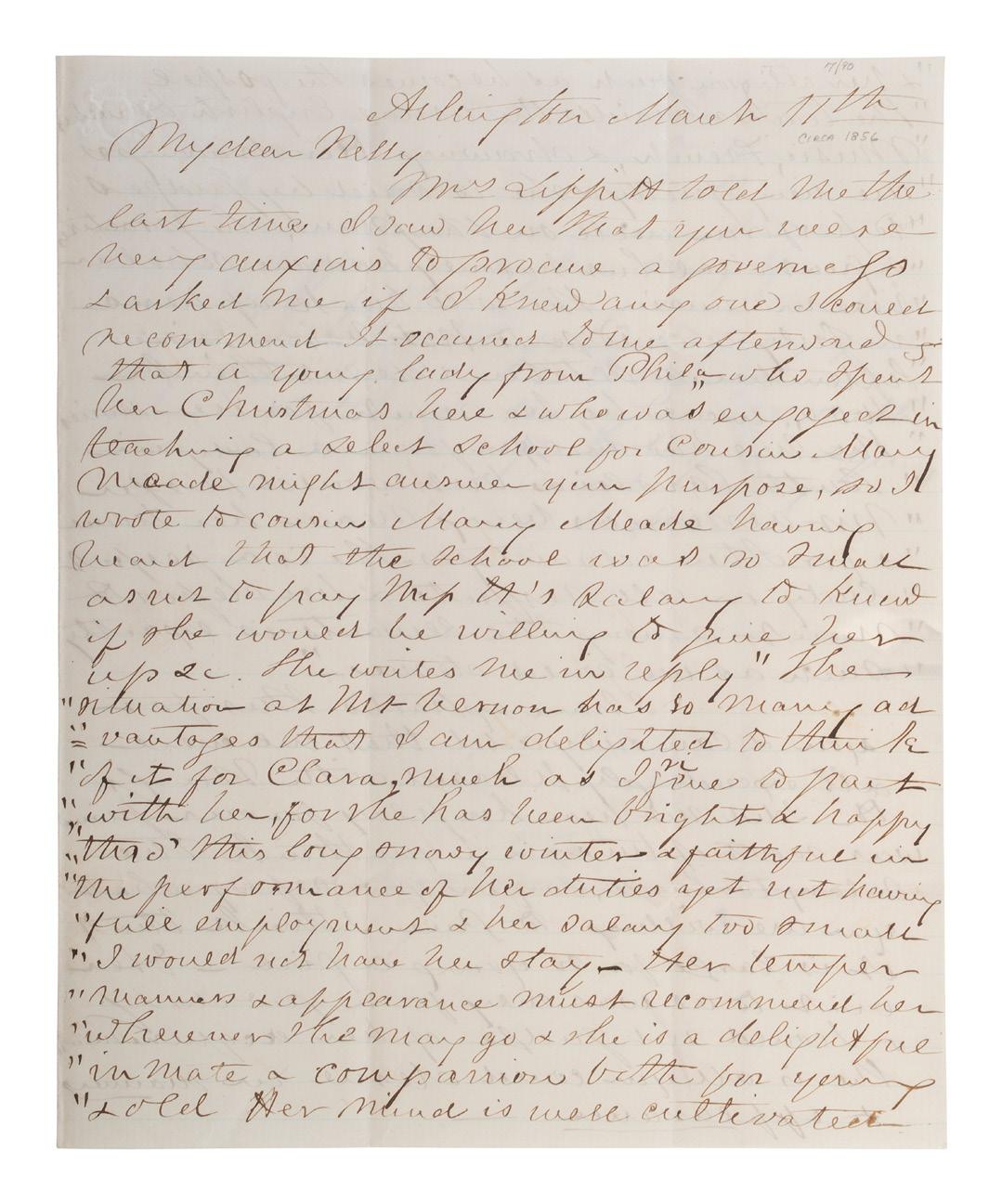
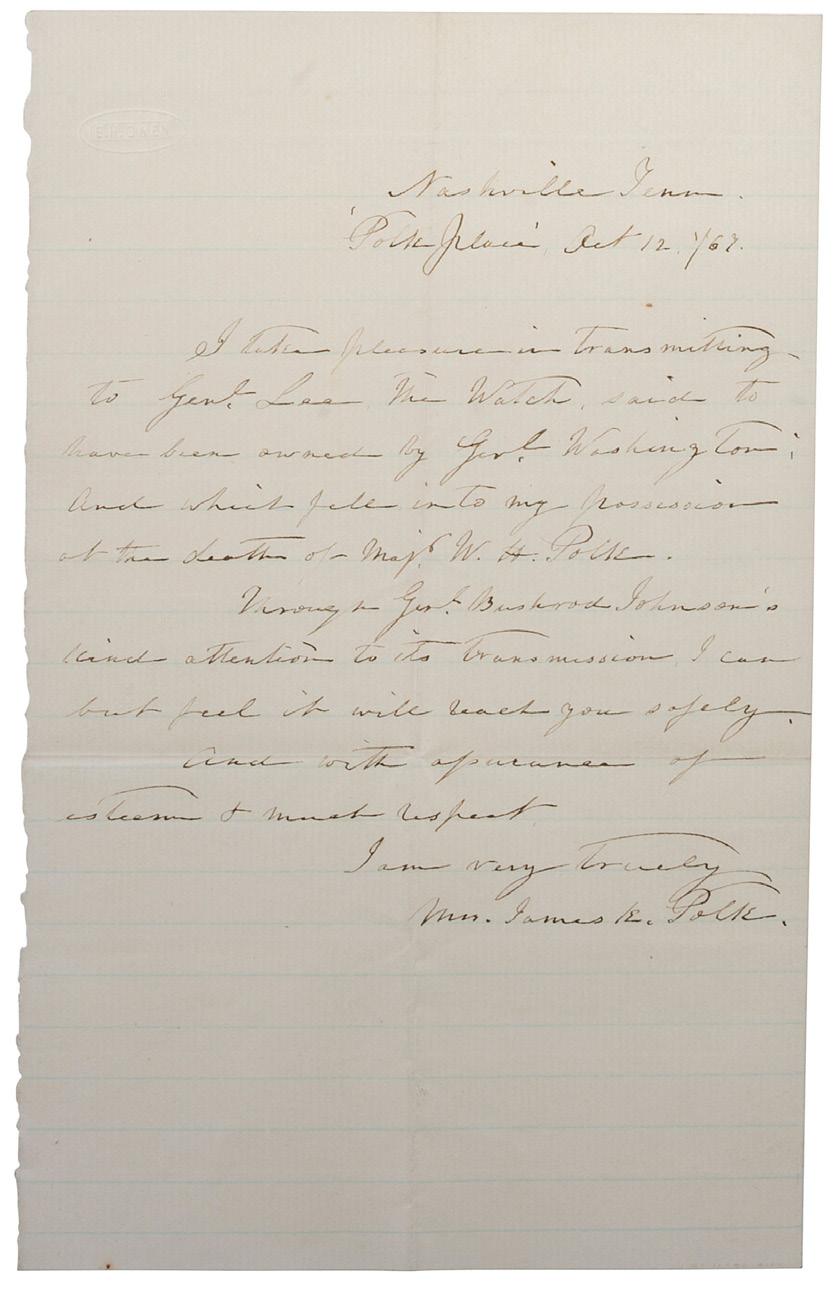
Property from the James Milgram, M.D., Collection of Broadsides, Ephemeral Americana, and Historical Documents
$500 - 700
117
LEE, Mary Custis (1807-1873). Autograph letter signed (“M C Lee”) to Eleanor Washington (1824-1860). Arlington, [VA], ca 1855-56.
$300 - 500
118
[SECOND SEMINOLE WAR]. JOHNSTON, Joseph E. (1807-1891). Autograph letter signed (“J.E. Johnston”). “Gary’s Ferry” [Florida], 17 November 1836.
1 1/4 pages, 7 7/8 x 9 3/4 in.
In this letter to a General Jones, likely General Roger Jones (1789-1852), Johnston writes: “Pursuant to the orders of the Secretary of War, I have the honor to report my arrival at this post. I shall proceed to Volusia as soon as possible, to Meet Gov. Call. When last heard from, he was marching to that place. Nothing is known here of Genl Jessup’s position - it is supposed, however, that he has joined Gov. Call.”

In a lengthy post script, Johnston reports futher detailed information discovered about the position and movements of Governor Call and the enemy. In part, “A negro prisoner reported that the Indians abandoned the cove a few days after the last skirmish, & retired, in the direction of Volusia, to the Wahoo swamp...After searching that swamp & receiving the necessary supplies at Volusia, Gov. Call intended to move into Philip’s country - a little south of Lake Monroe. It was my first plan to go on to Fort Drane, & endeavor to over take the army. I find however, tha tit would be impossible to do so before it reaching Volusia...”
Governor Richard Keith Call (1792-1862) served as territorial Governor of Florida from 1836-1839 and again from 1841-1844. During his first term he also acted as brigadier general of the territorial militia, leading troops to victory at the Battle of Wahoo Swamp. That battle began on 21 November of 1836, less than a week after the date on the letter featured here.
Property from the James Milgram, M.D., Collection of Broadsides, Ephemeral Americana, and Historical Documents
$500 - 1,000
PENDLETON, Alexander Swift “Sandie” (1840-1864). Autograph letter signed (“A.S. Pendleton”). Winchester, [VA], 10 July 1861.
6 1/4 pages, 5 x 8 in., creased at folds, with some staining throughout. In this letter to his sister, Rose Pendleton (ca 1847-1910), Sandie covers a number of subjects, the first being new uniform pieces he would like to have made for himself, including “a cap like Pa’s & the College boy’s’” and an overcoat with a long skirt for riding. He notes that it should be made to fit a “good size man” as he has “filled up wonderfully” since joining the campaign.
Pendleton then expresses some disappointment that his sister expressed no fears regarding his safety “in the skirmish,” which likely refers to the Battle of Falling Waters (Hoke’s Run), on 2 July. He writes: “But I will have the credit any how, and tell you just for spite, that I was in it, & in as much danger as any body else, and as long as I am on the Staff acting aide for the General I hope & expect to have a hand in any fighting that goes on. I was that day carrying messages right in the thick of the fight, & with bullets falling all around. Two bombs burst within 10 feet of me. What do you think of that now?”

The general Pendleton refers to is legendary General Thomas “Stonewall” Jackson, who asked Pendleton to join his staff as a second lieutenant and brigade ordnance officer in June, shortly before this letter was written. Pendleton would ultimately become Jackson’s assistant adjutant general, serving with him from First Manassas through Chancellorsville.
Pendleton goes on to explain his new location: “I suppose you wonder why I write from Winchester. Our brigade moved up today from our previous camp 4 miles below. There is constant expectation of a fight here. They are throwing up redoubts here &c....The enemy it is reported will advance from Martinsburg. We hope so...We are quartered on the right of the R.R. having as usual the post of honour & danger. If there is any fighting done our brigade will have its due show, for the men are activated by the double principle of revenge & patriotism. Gen. Jackson says they are first rate soldiers, & they will prove it true.”
Pendleton’s pride in his brigade and readiness to take on the enemy is paramount in this letter, and it is perhaps this spirit, in part, which made him a standout for leadership positions, even after the death of General Jackson under Generals Ewell and Early.
Unfortunately, Sandie Pendleton, the only son (with five sisters) of General William Pendleton (1809-1883), did not survive the war. He was promoted through the ranks to lieutenant colonel, and was wounded at Fisher’s Hill on 22 September 1864 while trying to rally the troops. He died the following day, just five days short of his 24th birthday.
$2,000 - 3,000
122
[CIVIL WAR]. TACITUS, Publius Cornelius (ca 56-ca 120). Opera. Leipzig: Karl Tauchnitz, 1846. Copy owned by 3 VMI Cadets who served in Virginia regiments, SIGNED by Col. PRESTON and Dr. MADISON.
Provenance: Matthew White Williamson, to John Warren Rice Moore, to John Edwin Roller, to Peter Samuel Roller, Jr., to R.R. Richardson. (Extensive ownership inscriptions).

A remarkable relic from three Virginia Military Institute cadets, all of whom served during the Civil War in Virginia regiments.
$700 - 900
HEARTSILL, William W. (1839-1916). Fourteen Hundred and 91 Days in the Confederate Army: A Journal Kept by W. W. Heartsill. For Four Years, One Month, and One Day, or Camp Life; Day-by-Day, of the W. P. Lane Rangers. From April 19th, 1861, to May 20th, 1865. [Marshall, Texas: Printed by the author, 1876]. 8vo. 61 albumen-print photographs of Confederate officers and soldiers, cut round or octagonally and mounted to sheets with printed captions for 60 of the 61 portraits. (Three leaves provided in printed facsimile, several leaves repaired or remargined, tears occasionally crossing letters, some spotting.) Original black cloth (lacking spine panel, soiled, worn); half morocco folding case). Provenance: Early (contemporary?) manuscript note on the photo of S. J. Burton indicating he “died a natural death”; Lamon Jefferson Keener (signature, Kilgone Texas, Gregg County).
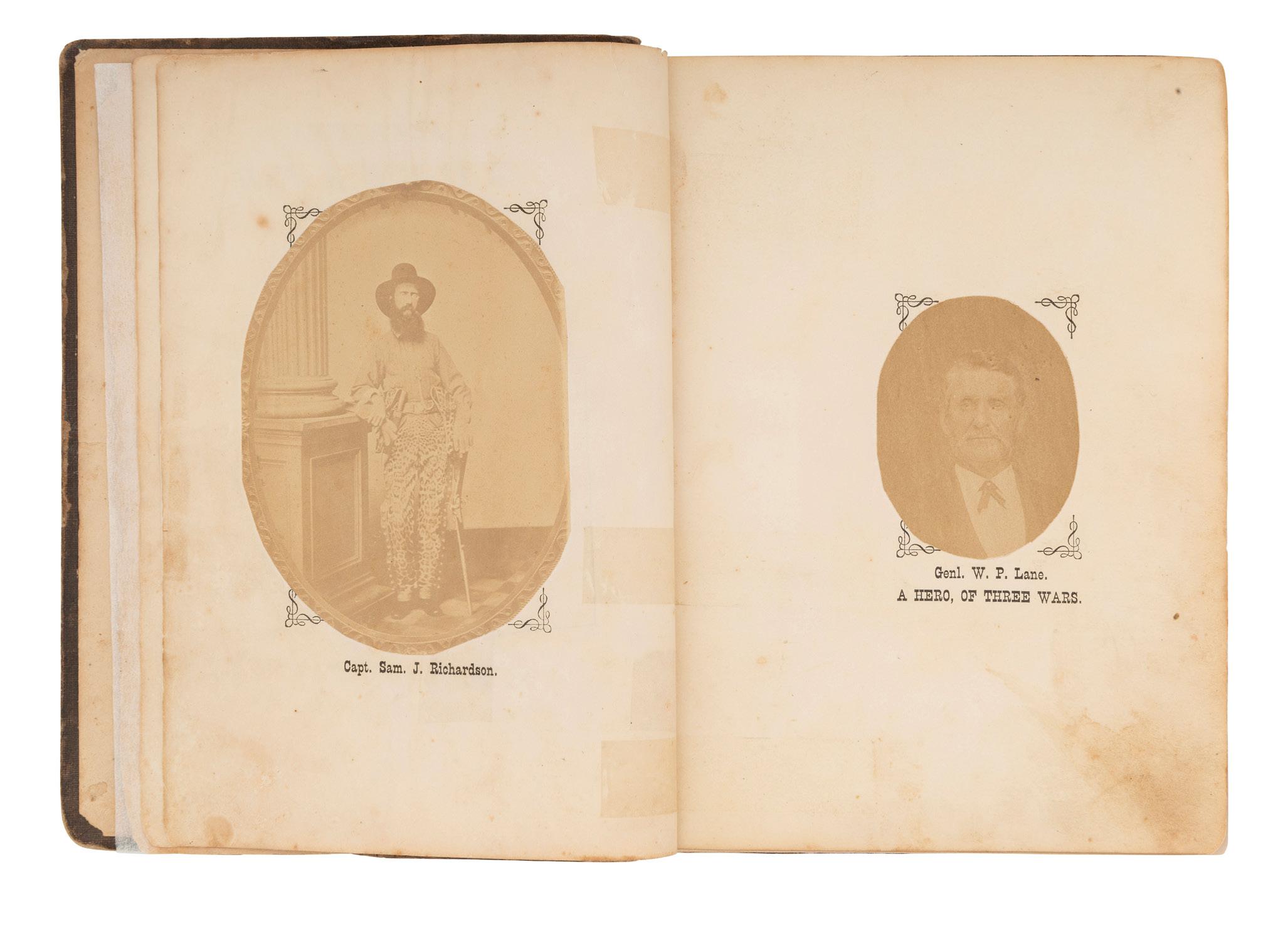
FIRST EDITION, “ONE OF THE RAREST JOURNALS BY A CONFEDERATE COMBATANT” (Howes)
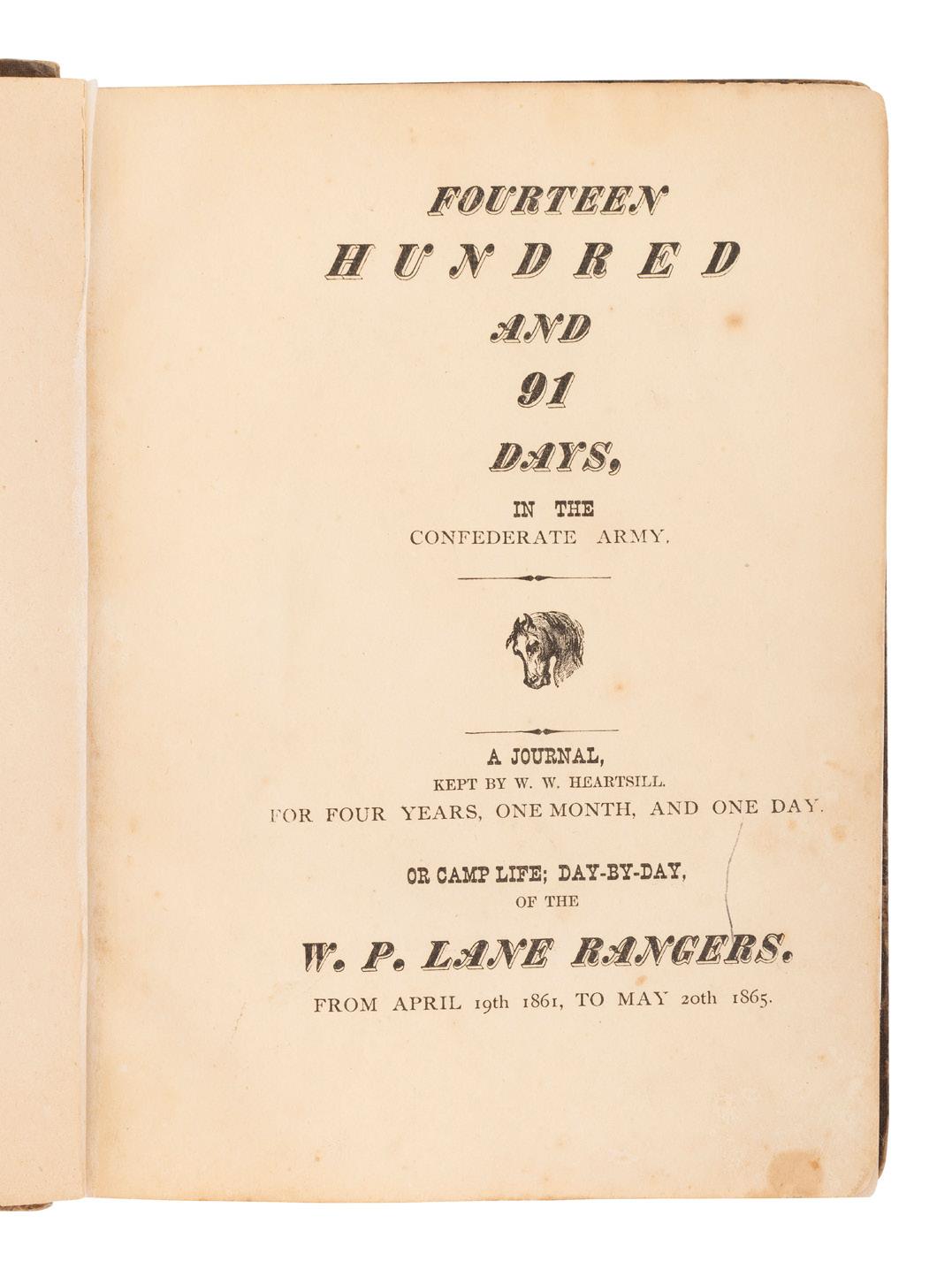
Heartsill printed his exceedingly rare work page-by-page on a hand press in an edition of only 100 copies, of which “merely a handful have survived.... The journal itself is historically important.... This four-year record is one of the most vivid and intimate accounts of Civil War battle-life that has survived” (Basic Texas Books 89). “This book would be of considerable interest because of the homespun way in which it was produced, even if it were devoid of any other virtues. It is, however, a good narrative in its own right-of the early days of the war in Texas, of operations in Arkansas and Louisiana, of Heartsill’s capture and imprisonment in the North, of his travels through the north to City Point, Virginia, for exchange. After some time in Richmond he was attached to Bragg’s army in time to participate in the Battle of Chickamauga. Then slowly back to Texas through Alabama, Mississippi, and Louisiana. For a while he guarded Federal prisoners in Camp Ford at Tyler, Texas. He and his comrades in the W. P. Lane Rangers were finally disbanded near Navasota May 10, 1865” (Harwell, In Tall Cotton, 86). Howes H-380.
$15,000 - 20,000

125
[CIVIL WAR]. Confederate ordnance document ordering “fluid grenades.” New Orleans, LA, 2 April 1862.

$400 - 600
126
[MILITARIA]. MAHAN, Dennis H. (1802-1871). Summary of the Course of Permanent Fortification. Identified to CSA Colonel Robert Johnston. [With:] Photograph of Dennis H. Mahan.
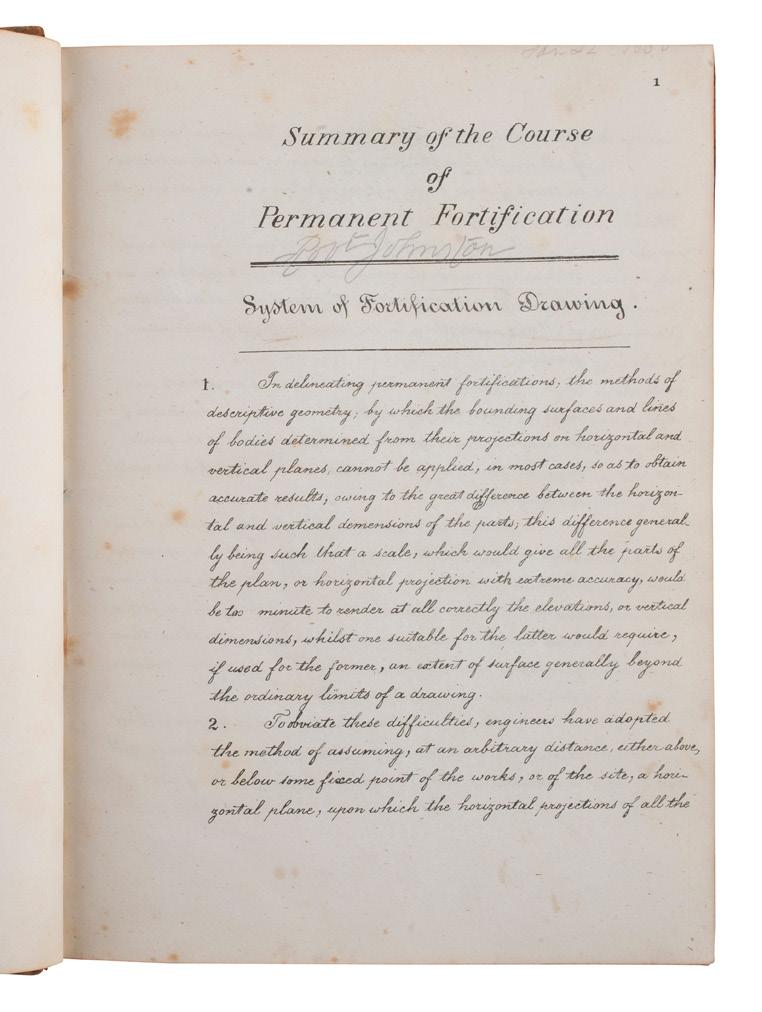
$300 - 400
127 CUMMING, Kate. A Journal of Hospital Life in the Confederate Army of Tennessee from the Battle of Shiloh to the End of the War. Louisville, KY: John P. Morton & Co., 1866.
Provenance: Putnam & Malone (booksellers’ stamp, Mobile, AL, 29 May 1866). FIRST EDITION of Cumming’s work, “by far the fullest and most informative of narratives of the Confederate women who served as nurses” (In Tall Cotton 31). Howes C-949.
$500 - 700

128
[CIVIL WAR] -- [QUANTRILL’S RAIDERS]. Diary of H.M. McCarty, editor of the Border Star at Westport, Missouri, with entries referencing 1863 clashes between Union soldiers and southern sympathizers, guerilla activity, and Quantrill’s Raiders.

$2,000 - 3,000
129
[CIVIL WAR] -- [RECONSTRUCTION] -- JOHNSON, Andrew (1808-1875). A group of three pardons stamp-signed by President Andrew Johnson, two granting amnesty to men associated with Confederate guerillas from Clay County, Missouri.

$400 - 600

130
[WESTERN AMERICANA -- CIVIL WAR -- LINCOLN]. Papers of Captain Joseph Claypoole Clark, 4th US Light Artillery, Battery E, WIA Antietam, including frontier and Civil War correspondence, photography, and appointment signed by Lincoln as President.
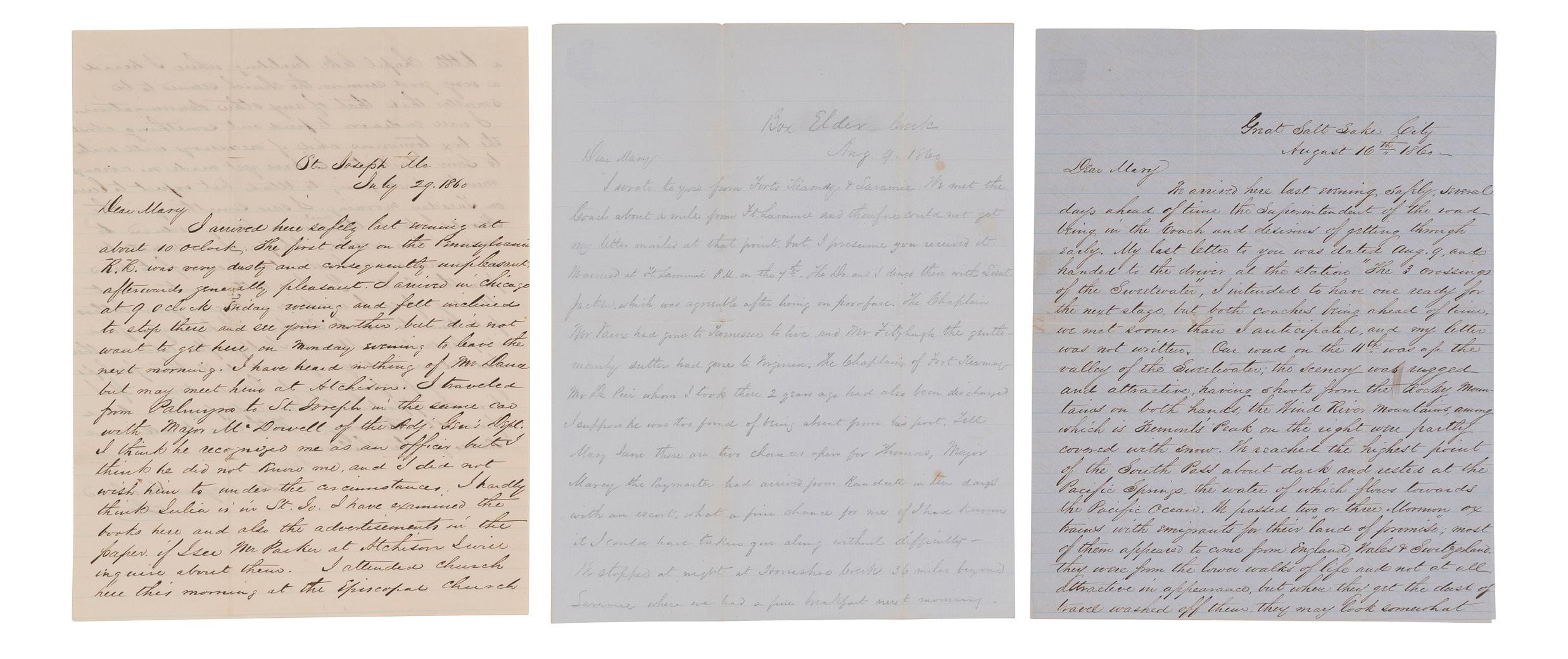
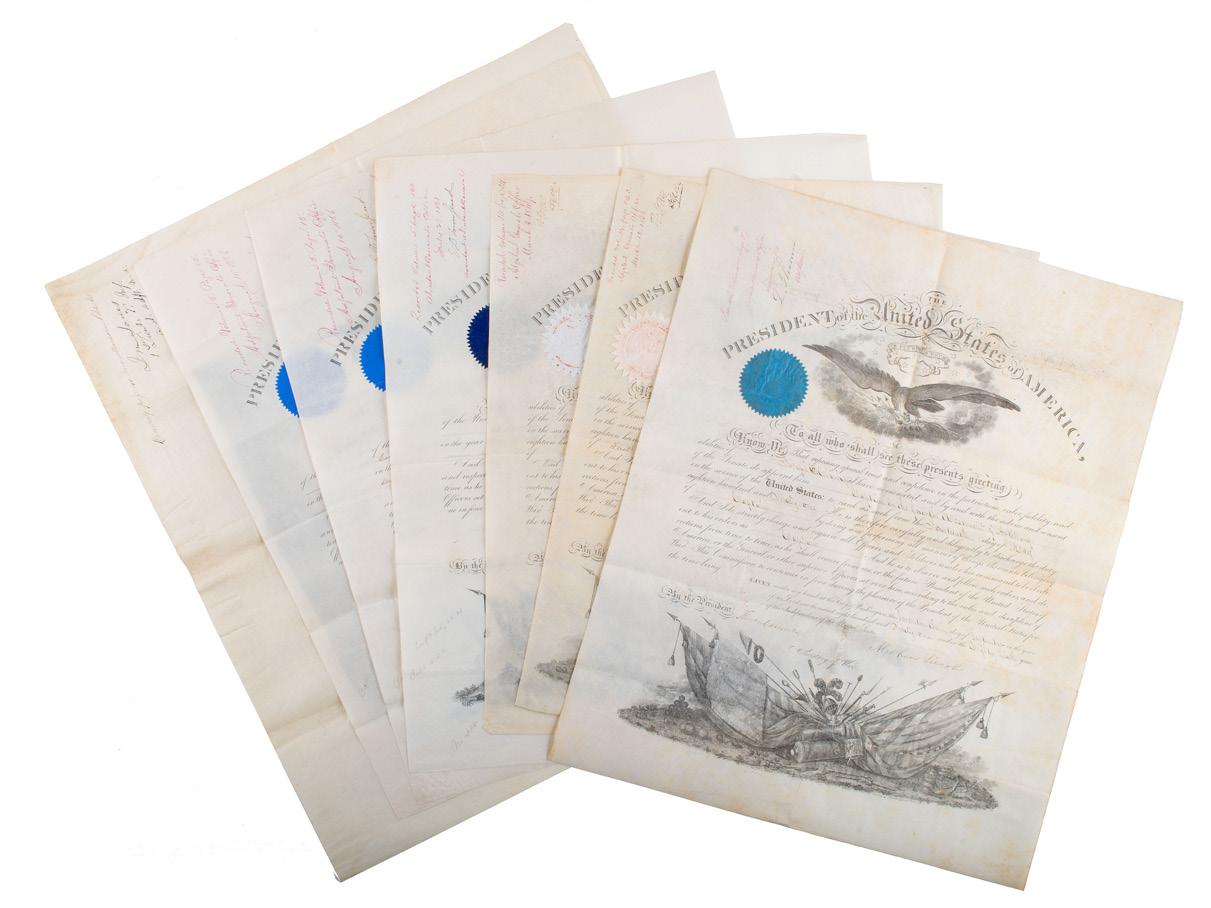
Archive of approximately 200 items items spanning ca 1815-1940s (bulk 1840s - 1890s). Collection highlighted by 87 letters written by Joseph Claypoole Clark, Jr. (1825-1906) between 1860-1862 while serving in US Army frontier garrisons and with the 4th United States Light Artillery in the Eastern Theater, and by Clark’s military commissions signed by Presidents Lincoln, Johnson, Polk, and Fillmore. Accompanying the letters and documents is a large group of historic photography, comprising: 8 cased images, 8 CDVs, 2 cabinet cards, and 2 CDV albums containing an additional 63 images, many of which are identified members of the Clark family and descendants. Among the images are a sixth plate daguerreotype portrait featuring Clark in uniform, two Civil War-era CDVs of Clark in uniform, and a CDV of Clark’s wife, Mary Eliza Goodell Clark (1832-1890), the recipient of the majority of Clark’s letters. Clark’s correspondence initially housed in a japanned box, 14 1/4 x 10 1/4 x 6 1/4 in., which also contained additional letters and documents related to the Claypoole and Clark families and later descendants. Provenance: Archive appears to have descended from Clark to his daughter Josephine Kille (Clark) Kingston.
A UNIQUELY SUBSTANTIVE ARCHIVE WITH SCARCE WESTERN CONTENT. Having previously served garrison duty in locations across the country, 1st Lieut. Joseph Claypoole Clark, Jr. found himself in St. Joseph, Missouri, on 29 July 1860 headed westward once again. St. Joseph was a launching point for the journey west for hundreds of thousands of settlers in the mid-19th century, and Clark was preparing to embark upon the main Oregon/California/ Mormon Trail through Wyoming and then on to his final destination, Camp Floyd (later renamed Fort Crittenden), Utah Territory. Clark’s first three letters in the archive discuss in detail his journey along the trail, painting a vivid picture of the experience.
Writing to his wife from “Box Elder Creek” on August 9 and 10, 1860, Clark describes the stop at Fort Laramie and several subsequent locations with iconic trail landmarks: “We left Box Elder Creek yesterday, crossed Deer Creek where there were about 100 lodges of Oglala Sioux Indians assembled to receive their annuities. We stopped at Platte Bridge. The trader there had torn down all the principal buildings to get material to rebuild his establishment and for fuel. The post presented a rather desolate appearance, nothing standing but a few out buildings and chimneys. Proceeding on we crossed the North Platte, passed the ‘Red Buttes’ a red rocky formation, and stopped at the Sweet Water Bridge after day light making 95 miles. I regretted riding after dark as I wished to see the scenery. We left this morning after partaking of a poor breakfast ascended the valley of the Sweet Water, passed ‘Independence Rock’ a huge oblong bubble of rock where many fools have inscribed their names. Devil’s Gate a deep cut of perhaps 125 feet in the solid rock, through which flows the Sweetwater. It looks unnatural as the water could not have worn it away, but would have turned aside to seek a channel around the base of the rock.” As is typical of Clark’s style, he continues with news of those he encountered along the way: “We met the mail stage at noon and brought
it back to our resting place for the night as the agent had some business to transact. Lieut. Hill of the Infantry was on his way to Laramie from Camp Floyd. Col. Cooke’s command was at Bridger, with him was Capt. Clarke, Capt. Gibbon & family, Lieut. Morgan & family, and Lieut. Beach. The battery company had not returned to Camp Floyd, but was at Ruby Valley 160 miles west, would not probably be in much before Oct. 1. I will probably be in Camp Floyd before Col. Cook’s command.” His next letter written 16 August 1860 from “Great Salt Lake City” describes the rest of his journey and arrival in the Mormon city: “Our road on the 11th was up the valley of the Sweetwater; the scenery was rugged and attractive.... We passed two or three Mormon ox trains with immigrants for their land of promise’; most of them appeared to come from England, Wales & Switzerland. They were from the lower walks of life and not at all attractive in appearance, but when they get the dust of travel washed off them, they may look somewhat better. We left Pacific Springs on the 12th and went to the crossing of Green River about 65 miles. We passed a Mormon hand cart train of about 40 carts, pulled and pushed by the emigrants; there were generally 4 or 5 to each cart and they appeared to get along smoothly though the road was good where we met them. A few mothers on foot were carrying babies in their arms; one woman was barefoot, and others had rags wrapped around their feet; most of them appeared cheerful, but a few seemed discouraged. It seems strange to see women well in the decline of life on such a pilgrimage. We passed the spot where the Mormons burned one of the supply trains of the Army; the marks of the fire are plainly visible and portions of the iron work of the wagons lying around.... We saw signs of suffering of the Army of 1857 & 8. In one place lay the bones of 1200 cattle that died of cold and starvation, and many thousands more lay along the road.” He then continues
describing entering Echo Cañon, and notes for the first time an encounter with a rider from the soon-to-be legendary Pony Express: “The Pony express rider passed us to-day and stated that the troops west of here (probably the battery company) had had a skirmish with the Indians and killed 18 of them, having 3 soldiers wounded.” From there Clark describes the entry to East Cañon, passing through Emigration Cañon, and the view of the Great Salt Lake and city, indicating that the city was not “attractive in appearance.”
By August 20, 1860, Clark has reached Camp Floyd describing it as “a rather dull looking place as far as the country is concerned in the immediate vicinity, there being but little vegetation; the houses are numerous but being built of adobes have a dull appearance, and are not so comfortable as those at Fort Randall.” Constructed in 1858 in response to escalating troubles during the “Mormon Rebellion” or “Utah War,” Camp Floyd housed the largest concentration of US troops to that time, and became immediately the third largest city in Utah. Over the course of his remaining frontier letters, Clark writes from Camp Floyd, Fort Crittenden, and later Fort Bridger, discussing his work and leisure activities, troop movements, promotions, military courts, sutlers, and fellow officers, with occasional references to Mormons and Native Americans. Additionally, Clark makes 17 references to the Pony Express whose operation from April 1860 through October 1861, coincides with Clark’s letters. At its height, the Pony Express operated an estimated 190 stations, including at Camp Floyd/Fort Crittenden and Fort Bridger where Clark was stationed.
Clark writes to Mary of the receipt of “a Pony despatch,” “Pony news,” and “word by Pony.”
Clark’s frontier letters span July - October 1860 (8 letters), then April 1861 - Dec 1861 (28 letters). A notable change in tone and content comes in the letters following this gap, as sectional tensions in the East have mounted and soldiers in the West learn of the outbreak of the Civil War. Clark discusses the war and his fellow officers, noting one by one as men declare their allegiances to the Union, or resign and return to fight for the emerging Confederacy. Writing on 19 May 1861 from Fort Crittenden: “We have Pony news to May 13th, it is hardly worth while to comment on it, as you have heard so much later news. By the last mail we received reports of the resignations of Capts. Magruder, Elzey & Anderson of the Artillery. I presume Capt. Brown will follow, and perhaps Capt. McCown & Getty. Should these take place I would be promoted to one of those companies. Capt. Gibbon seems to stand firm and appears in better spirits than he did and says that he will renew the oath of allegiance if required. Capt. Robertson stated that he would await the result of the vote of the state of Virginia and act according to that vote. He is in an unpleasant position, being a Unionist but unwilling to fight against his state.” As the conflict in the East begins to escalate, Clark is ordered in the summer of 1861 to Fort Bridger to take charge of army stores. He applies to Washington in September 1861 to be ordered to his company fearing “that it might be thought [he] voluntarily remained away from actual service.” Finally, on 30 November 1861, Clark writes from Fort Bridger that he has received his commission as captain. By mid-December he is making preparations to depart the fort, and his last letter to Mary from the West is written on 22 December 1861.
Clark’s letters from the Eastern Theater span January 1862 -August 1863 (51 letters). A letter to Mary of 19 January 1862 (incorrectly dated 1861) indicates Clark is on his way to the front. The following day he writes from Wheeling, Virginia, noting in his letter that he dined with General Rosecrans with whom he had been stationed at Fort Adams, Rhode Island earlier in their careers. By 23 January 1862, Clark has joined the 4th United States Artillery, Battery E, at Camp Kelley, Patterson’s Creek, VA. As part of Shields’ 2nd Division, Banks’ 5th Army Corps, Clark and Battery E would participate in their first major engagement at the Battle of Winchester (March 23, 1862), a battle described by Clark in two letters of March 25th and March 27th. On the 25th Clark writes, in part: “We left camp on Sunday not expecting a serious conflict, but it soon became evident that the enemy were in force. We had four batteries and the rebels about the same number, my battery had the most advanced position and evidently annoyed the enemy exceedingly as he fired probably more shots at us than at all the other batteries....I lost but one man killed 3 horses disabled, and one gun carriage injured. The infantry suffered severely in the charge on one of the enemies battery’s, where they captured two guns....” Then on the 27th, he writes from “Camp near Strasburg, Va” with more discussion of the battle, also indicating that though his company “is said to be favorably mentioned in the report of the Chief of Artillery,” Col. Daum has however “endeavored to give greater credit to the four others [guns] which belonged to his battery before he was promoted.”
On June 12 he writes describing the Battle of Port Republic (June 9, 1862), at which he led his battery in combat for the first time. In a detailed 4pp letter Clark argues first that the “defeat may be said to have commenced about a month ago when we left New Market for Fredericksburg for we were kept at forced marching wearing down men and horses, despiriting everyone, and accomplishing nothing....” He then continues at length describing his movements during the battle, and indicating, “The wing where my portions of the battery was placed was badly managed by Gen. Tyler in command.... The
rebels were allowed to approach in great force to within a few yards of our guns through the woods unseen by us. The Infantry which he should have had there to guard and protect us had either been withdrawn or retreated without giving any intimation of the approach of the rebels....”
Regular correspondence to Mary references ongoing engagements as his artillery participates in Pope’s Campaign in Northern Virginia, including writing on 26 August 1862 of his part at Kelley’s Ford on the Rappahannock and on 3 September of his battery’s part in the 2nd Battle of Bull Run. (Aug 30, 1862), a battle he believes was horribly mismanaged and which seems to have painfully impressed upon Clark the enormity of loss and struggle ahead. He writes on 4 September, “The cause of the Union appears now darker than at any previous time.... How many men, many of them useful citizens, have suffered during the last week is painful to contemplate....” September 10, 1862, marks the end of Clark’s war-date field correspondence. On September 17, 1862, Captain Clark commanded a battery of 59 men at the Battle of Antietam until he was severely wounded three times in the leg and once in the hand from shrapnel from exploding artillery shell. In the Brigade commander’s after-action report, he noted: “...I cannot refrain, however, from speaking of Captain Clark, of Battery E, Fourth Artillery, who did excellent service, and received four wounds during the day....” After eight months of recovery from the wounds he received at Antietam, Clark was found medically unfit for field service. He was then detailed as an assistant professor of Natural and Experimental Philosophy at West Point in August 1863. The archive contains a letter to Mary, dated 12 August 1863, written from West Point, the final letter of Clark’s war-date correspondence.
[With:] A group of 6 presidentially signed appointments associated with the military service of Joseph Claypoole Clark, Jr., comprising: POLK, James (17951849), partly-printed document signed (“James K. Polk”) as President, 3 March 1849; FILLMORE, Millard (1800-1874), partly-printed document signed (“Millard Fillmore”) as President, 12 March 1851; LINCOLN, Abraham (18091865), partly-printed document signed (“Abraham Lincoln”) as President, 17 September 1861; and three partly-printed commissions all stamp-signed by JOHNSON, Andrew (1808-1875) as President, with two dated 10 August 1866 and one dated 27 July 1868. Clark was honored by brevets to Major, Lieutenant Colonel, and Colonel, for his actions in the Shenandoah Valley and at Antietam.
[With:] Sixth plate daguerreotype likely showing 1st Lieutenant Joseph Claypoole Clark seated next to his wife, Mary Goodell Clark, and wearing the shoulder straps of a first lieutenant on regulation (1851) single-breasted nine button frock coat suitable for a junior or company grade officer, c.1852-54. This date is predicated upon the higher uniform collar perceived in the photograph and corroborating the earlier style of brass daguerreian hardware. The shoulder straps coincide with the date of Clark’s appointment to First Lieutenant, 4th Artillery, on 11 December 1850, a rank which he retained until promotion in 1861. Clark married Mary Eliza Goodell in Oswego, New York, 8 November 1852, suggesting this portrait may have been made on the occasion of their wedding. -- An additional 6 cased images of unidentified individuals, consisting of 1 quarter plate, 4 sixth plates, and 1 ninth plate. -- A group of 8 CDVs, comprising: a CDV of Clark in uniform ca 1850s, 2 CDVs of Clark in uniform, ca 1861-1862; a post-war CDV of Clark; 2 CDVs of Clark’s son, William Goodell Clark (1853-1936); a CDV of Mary Goodell Clark; and a portrait CDV of two individuals, likely extended Clark family members. -- Tintype of an unidentified soldier in Union uniform with blue chevrons of an infantry sergeant. -- A group of 2 cabinet cards, one showing Joseph Claypoole Clark, Jr., and another
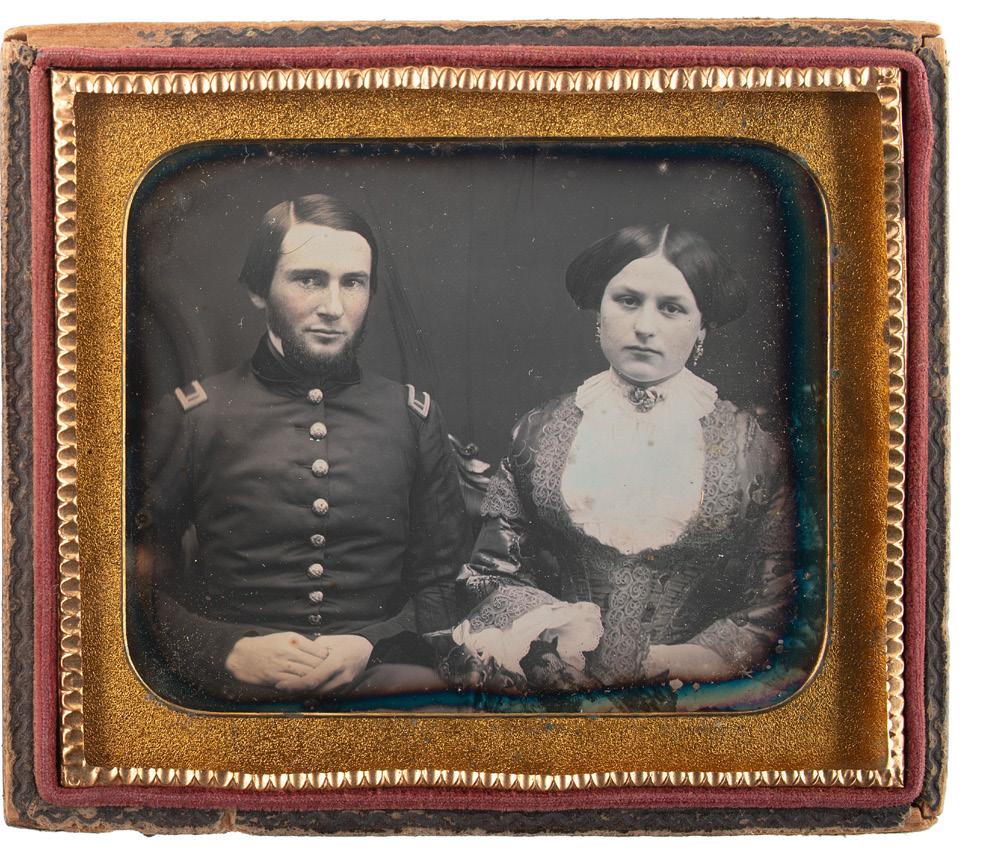
showing his father, Joseph Claypoole Clark, Sr. (1796-1881). - A group of 2 CDV albums featuring mostly CDV portraits, many identified.
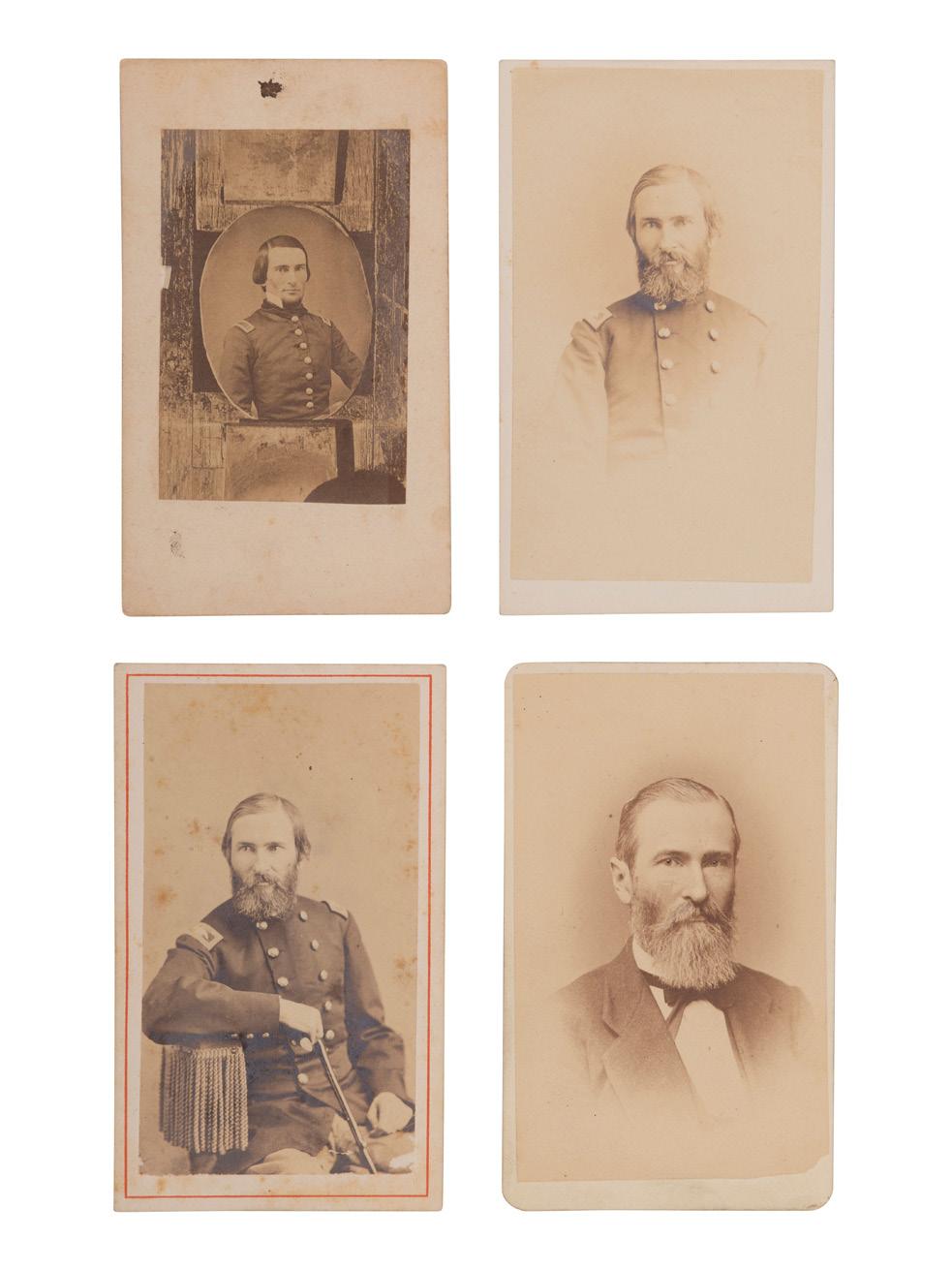
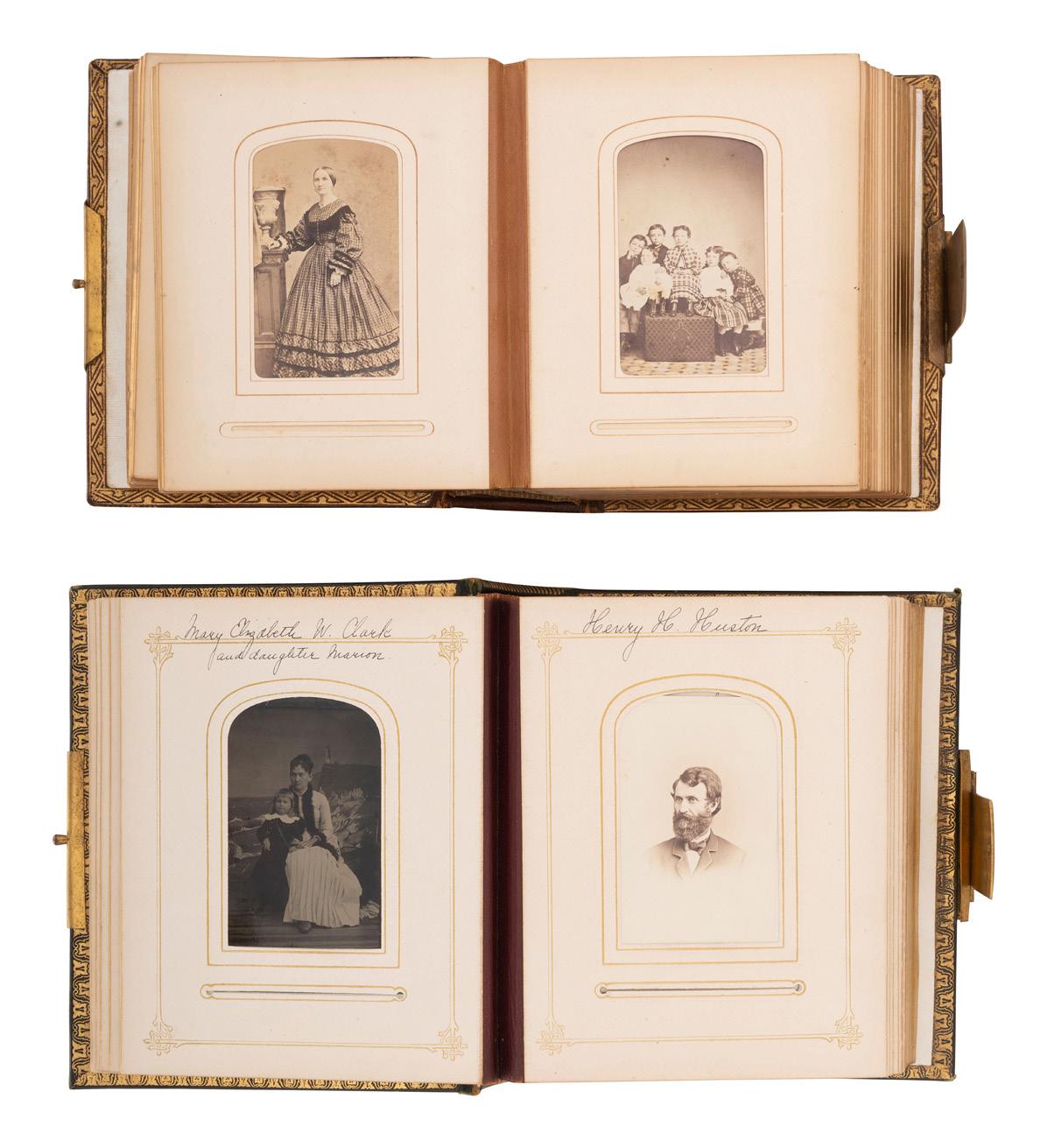
[With:] Documents associated with Clark’s appointment to West Point, comprising: an ALS by New Jersey Congressman George SYKES (1802-1880), Washington, 13 March 1844; a DS by Secretary of War William Wilkins notifying Clark of his conditional appointment as a cadet and instructing him to repair to West Point between the 1st and 20th of June 1844; a DS by Secretary of War William Wilkins officially acknowledging the President’s appointment of Joseph C. Clark as a cadet in the service of the United States, 30 June 1844; a letter written from Clark to his father on 21 June 1844 shortly after his arrival at West Point; a manuscript entitled “Benny Haven’s O / A souvenir for graduates of the Military Academy,” ca 1848; the “Official Register of the Officers and cadets of the U.S. Military Academy, West Point New-York” for the years 18441848; and Clark’s West Point diploma, 24 June 1848. -- A small group of post-war documents associated with Clark and his military service, including the order relieving Clark of his professorship at West Point, 21 February 1870; a copy of the order recommending Clark for a position at the Soldier’s Home, 31 July 1875; a notice of the resignation of Clark as Deputy Governor of the Soldier’s Home, 16 April 1877; a document notifying Clark to his election as a Companion of the First Class of the Military order of the Loyal Legion of the United States, 5 October 1893; and Clark’s “In Memoriam” program, MOLLUS, ca 1907.
[Also with:] Genealogical research and documentation associated with both the Claypoole, Clark, and Goodell families, and 2 family Bibles. -- A small amount (approx. 75 pieces) of personal correspondence and other documents, some dating as early as ca 1815 and other pieces 20th-century in origin, associated with members of the Claypoole, Clark, Kingston, and Edgell families. -A coin silver soup ladle with the hallmark of Philadelphia silversmith “Brasier,” 190.5g, engraved “E.C.” (likely for Elizabeth Clark) and “1890.” -- A group of 26 ca 19th-century dominos and a japanned storage box.

Joseph Claypoole Clark, Jr. was born in Mount Holly, New Jersey. He was a descendant through his paternal grandmother (Ann Claypoole, 1764-1832) of the prominent Claypoole family of Philadelphia. In 1848, he graduated from West Point ranking 9th out of 43 cadets, and embarked upon a career in the military. During the late 1840s and 1850s, Clark was stationed throughout the country, serving on garrison duty and with the United States Coastal Survey. In 1858 Clark embarked upon frontier duty, first at Platte Bridge, then Fort Laramie, Fort Randall, and finally at Forts Crittenden and Bridger. He was promoted to captain in May 1861 and recalled to the East later that year. Following his Civil War service with Battery E, 4th US Artillery and his subsequent injury on 17 September 1862 at Antietam, he retired from active service on 11 May 1864 with rank of Major for “Disability for Wounds Received in Battle.” Clark, who had previously taught mathematics at the United States
Military Academy, was assigned to West Point in 1863 as Principal Assistant Professor of Natural and Experimental Philosophy. He remained there until 1870. He later served as Professor of Military Science at the University of Pennsylvania and Deputy Governor of the Soldiers’ Home, near Washington, D. C. Throughout his later years, his wounds from the Battle of Antietam continued to prove debilitating. He died in Philadelphia in 1906. This lot is located in Cincinnati.
$20,000 - 25,000
[CIVIL WAR]. DIX, John A. (1798-1879). Autograph letter signed (“John A. Dix”), to Major General Halleck. Fort Monroe, 2 August 1862.
2 pages, 7 5/8 x 9 5/8 in. In this letter marked “unofficial” to General Henry Halleck, Dix writes, in full:

“We have not received the advice expected from you assuming the command of the Army. I nevertheless take the liberty of writing to you in regard to this post. I have only 500 men in the Fort, half of them armed only with swords. This should be a Regiment of Artillery. I have asked for Col. Gibson (Capt. in the regular army) and his Regiment near Washington. He is just the man for this post. Everything about it is dirty in the extreme. Maj. Roberts, the commanding officer has an excuse in the small number of men, which is not sufficient for guard & police duty.
I trust the importance of this command (though I could have no personal objection) may not be increased by the withdrawal of the Army of the Potomac, a measure, as I learn[?] still under consideration. I cannot err, I am sure, when I say it would be nearly fatal. It would break the spirit of the country, now exceedingly depressed in some quarters, and go very far to ensure intervention from abroad. If we can ever reach Richmond, it seems to me the object can be best effected from the position we now occupy, at all costs, I feel a painful conviction that we cannot bear a retrograde movement at this moment.
I have conversed freely with Genl. Burnside on this subject before you were here and since his return, and he concurs with me entirely. Excuse these suggestions and believe me respectfully & truly yours, John A. Dix, Maj. Genl.” Henry Halleck (1815-1872) served as General-in-Chief of the Armies of the United States from 1862 until 1864 when General US Grant was appointed.
Property from the James Milgram, M.D., Collection of Broadsides, Ephemeral Americana, and Historical Documents
$700 - 1,000
132
MCCLELLAN, George B. (1826-1885). Autograph letter signed (“Geo McClellan”) to Colonel H.L. Abbott, regarding the taking of Fort Wagner. Orange, New Jersey, 5 September 1863.

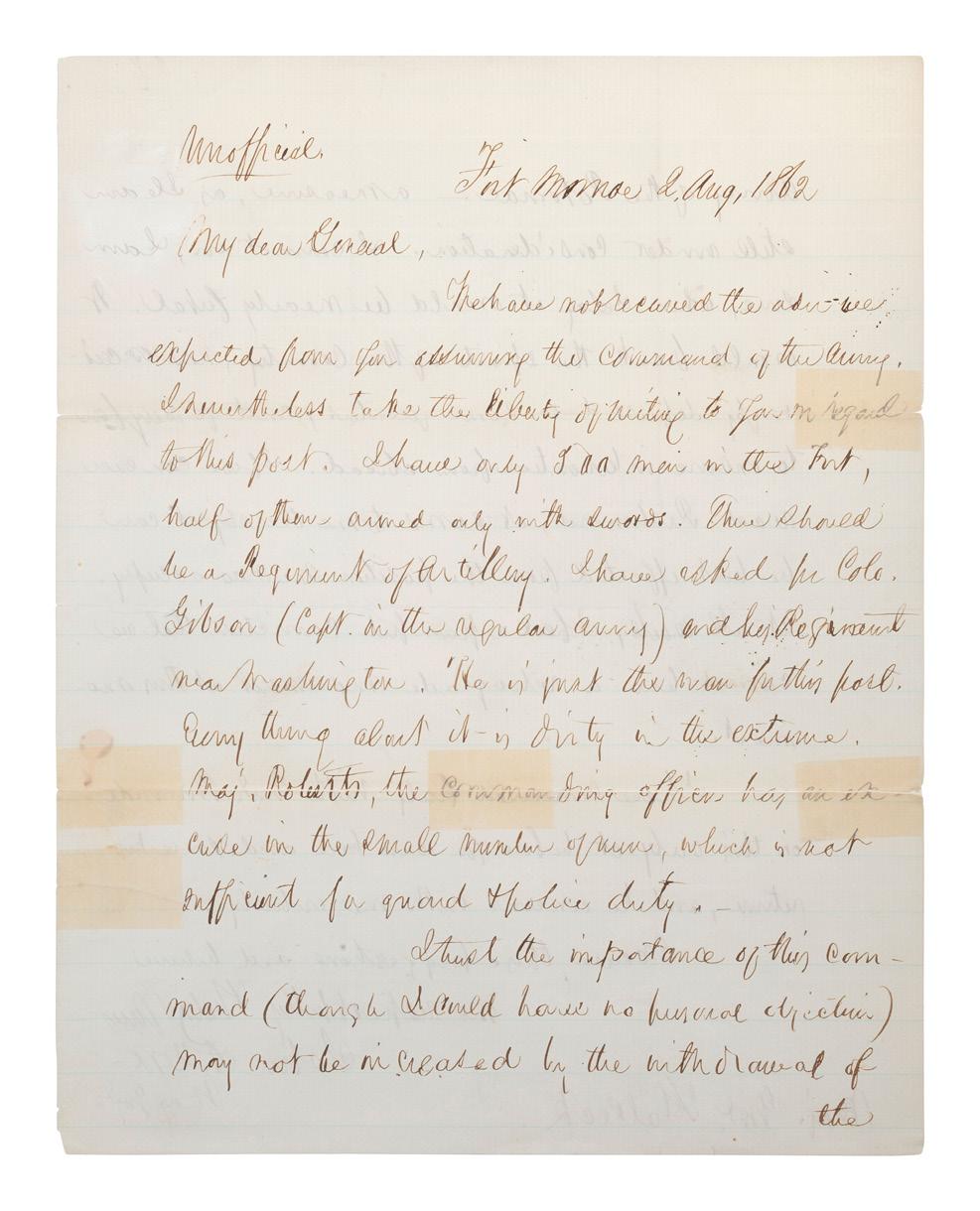
1 1/2 pages, 7 7/8 x 9 3/4 in.
McClellan writes in response to Colonel Henry Larcom Abbot’s letter of 21 August, which included the results of Abbot’s artillery experiments, giving advice on the storming of Fort Wagner and similar forts. In part: “I am inclined to think that an elaborate system of experiments upon the breaching of thick parapets of sand & earth would be of interest just now - altho’ I expect Wagner and its companions will have to be taken in some such way as the [?] was, viz: drive the garrison into their bombproofs by mortar firing, & then march into the work before they can get out of their shelters. Gilmore [sic] will have to use more mortars before he gets through.”
President Lincoln had relieved McClellan of command the previous November owing to his reticence to take an aggressive approach, culminating in the lost opportunity at Antietam. Colonel Abbot, considered a brilliant engineer, had been put in charge of a brigade in the defense of Washington in May of 1863, and apparently took advantage of the lack of action to conduct artillery experiments. The taking of Fort Wagner in Charleston Harbor surely would have been at the top of the list of subjects requiring further analysis. Union forces had already stormed the fort twice in 1863, losing 339 men to the Confederates’ 12 on July 11 and 1,515 to 174 a week later (the latter battle being best remembered for the valiant charge of the African American 54th Massachusetts). McClellan’s letter probably did not make it to Abbot and on to Major General Quincy Gillmore in time to be of any use, but the successful attack was similar to what McClellan suggested. Generals Alfred Terry and Thomas Stevenson had led assaults that captured the fort’s rifle pits by August 25, but were unable to progress further. On the date of McClellan’s letter, General Gillmore shifted his attention from Fort Sumter to Fort Wagner, commencing a 36-hour shelling of the fort with the assistance of Admiral Dahlgren’s forces, after which the Confederate garrison found itself unequipped to fend off the siege forces dug into the pits. They quickly evacuated, and Union forces walked into Fort Wagner on 7 September.
$1,000 - 2,000
133
SHERIDAN, Philip H. (1831-1888). ALS and ANS on Headquarters Fifth Military District letterhead. [With:] Engraving of Philip H. Sheridan. Autograph letter signed (“Phil. H. Sheridan, Maj. Genl.”), to L.J. Cist. New Orleans, LA, 29 June 1867. 3 pages, 7 7/8 x 10 in., folds, light edge wear. On Headquarters Fifth Military District letterhead. Sheridan writes to Lewis Jacob Cist, noted collector of autographs, providing a list of his various military appointments from 1853-1864, specifying his rank, regiment, and date of appointment. The final appointment listed is “Major General Regular Army Nov. 8th 1864.”
[With:] Autograph note signed on third page of same letter (“P.H. Sheridan, Lieut. General”), to L.J. Cist. Cincinnati, OH, 7 April 1887. Sheridan provides details about his appointment as “Lieut. Genl. Regular Army March 4th 1869.”

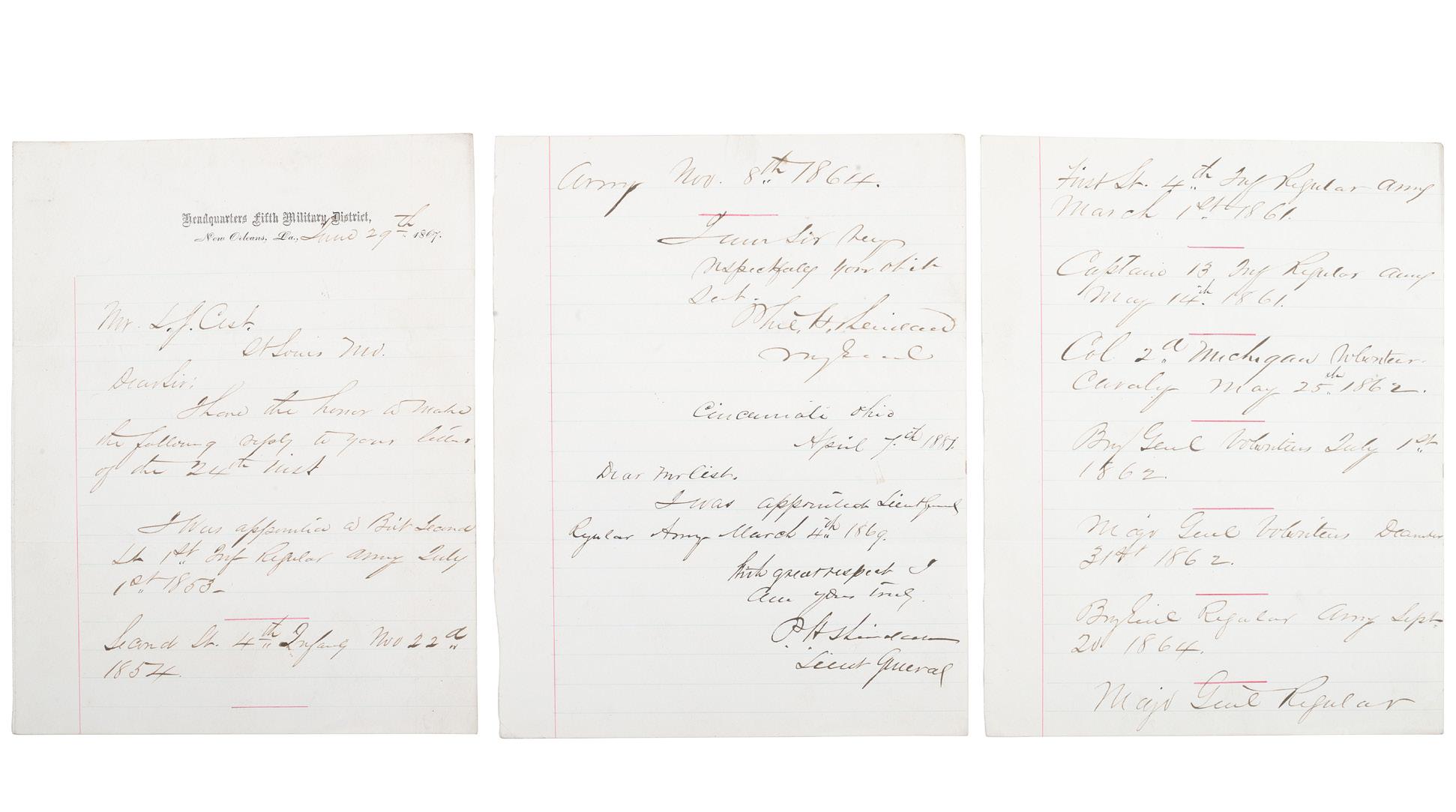
Property from the James Milgram, M.D., Collection of Broadsides, Ephemeral Americana, and Historical Documents
$500 - 700
134
GILMORE, Charles D. (1816-1884). Autograph letter signed (“C. D. Gilmore”), containing hand-drawn map showing rebel positions and 2 Confederate envelopes. “Near Chancellorsville Va,” 5 May 1863.

$800 - 1,200
135
GILMORE, Charles D. (1816-1884). Autograph letter signed (“Chas. D. Gilmore”). “Near Cedar Mountain Va,” 17 September 1863.
$400 - 600


[CIVIL WAR]. Archive of correspondence from Private Hial Heath, Co. H, 143rd Pennsylvania Volunteers, DOW Wilderness, and his brother-in-law, Sergeant Newell W. Barnum, Co. G, 5th New York Cavalry, POW Culpeper.
Archive of approximately 84 letters spanning September 1862 through July 1864, most approx. 4pp+, pen and ink, all but 7 written by Private Hial Heath (1825-1864), Co. H, 143rd Pennsylvania regiment. Remaining letters written by his brother-in-law Sergeant Newell W. Barnum (1837-1915), Co. G, 5th New York Cavalry, brother--in-law Henry Clay Barnum (1843-1863), Co. H, 143rd Pennsylvania, and civilians and clergy attending to Heath following his wounding at the Battle of Wilderness. Majority of correspondence addressed to Heath’s wife, Melissa Barnum Heath (1835-1922).
The 143rd Pennsylvania was organized in late summer 1862 at Wilkes-Barre, Pennsylvania, under Colonel Edmund L. Dana. Heath, who is incorrectly identified in some Civil War records as “Hill Heath,” enlisted on 9/17/1862 as a private and mustered into Co. H, a regiment from Susquehanna County. His earliest letters in the archive are written from Camp Curtin in Harrisburg, PA, and then from Washington, D.C. while the regiment was on duty Defenses of Washington North of the Potomac. Throughout these early letters, and throughout the term of his enlistment, Hial is unwavering in his commitment to fight for his country and in the rightness of preserving the Union. On 23 February 1862, he writes from picket duty near Fredericksburg, “I am willing to endure hardships to save our country; we do not have any harder times than our forefathers did in time of the Revolution, and in the war of 1812.” Multiple members of Heath’s family are enlisted with his company, including not only his young brother-in-law Henry Barnum, but also Private Lewis Beebe (discharged for disability 8/11/1863). Heath’s letters are generally well-written and descriptive of camp life, regimental activity, and of the people with whom he interacts. One interesting meeting is recorded by Heath while at Camp Slocum 10 January 1863. He writes, “Uncle Lewis [Beebe] and Theron have got back from Washington. Today was reception day at the White House, and they shook hands with the President and his Wife. They say Old Abe is a coarse looking man, and [she] is a very handsome woman.”
As Heath moves into Virginia in February 1863, he describes the changing landscape to Melissa, from the initial barrenness where the army has cut down the woods, to the land cultivated in rows of tobacco, to the houses which are almost all deserted except for “where the negroes live.” He describes too, the military build-up which has encompassed the region as on 23 February 1863: “I can stand on any of the high hills about here, and look on any hill around here, and see soldiers, camps, baggage waggons, mules and horses, cavelery, and everything on the move, drawing rations for men and horses.” While his descriptions of soldiering include the standard descriptions of picket duty, one anecdote stands out. On 15 March 1863 he writes from King George County of being “detailed for Safeguard” which lands him “on an old plantation, to protect 3 old maids, the youngest of them, I should say, was sixty years old...” His duties, which are comparably light, include preventing anything from being stolen from the plantation by Union soldiers. He continues in this letter and the following, describing how the sisters have survived on the plantation and their relationship with the few remaining enslaved individuals who still reside there. Heath’s brother-in-law Sergeant Newell Barnum is often referenced in the letters. He enlisted as a 24-year old private on 9/9/1861 at Owego, NY. On 10/9/1861 he mustered into Co. G, New York 5th Cavalry and he re-enlisted on 1/1/1864.
Newell and Heath would cross paths multiple times in Virginia, and Newell also wrote to his sister Melissa Barnum Heath. Writing on 16 February 1863 from “Camp near Germantown,” Newell Barnum demonstrates a bravado which seems fitting for a young cavalryman: “We had two scermishes with the reb’s pickets, and we made them git, every time that we found [them], and all we have to do is to draw our saber and give one yell, and they are geting out of our way about that time, for the rebs say that they had rather fight the Devil than the old 5th. Old Ashby used to tell his men to look out for for the Horney’s nest before he was killed.” Writing to his sister from “camp, 5th N.Y. Cav.” on 10 May, 1863, Barnum writes that he is in the hospital taking care of Captain Abram Krom, who was wounded at Warrenton Junction: “we had 5 officers and fourteen men wounded, and one man killed. We killed 20 rebs, and wounded 30, and got six more that was not wounded. There was one of them shot the capt in the leg after he had surrendered to the Capt., and after that, we did not ask them to surrender.”
Fighting is likewise intensifying for Heath with the beginning of the Chancellorsville Campaign. Writing on 30 April 1863 from “On the banks of the Rappahanock,” Heath describes Operations at Pollock’s Mill Creek, writing in part: “Wednesday morning, our artillery opend fire on the rebs, and our men comenced to lay the Pontoon bridge. At about 10 o’clock they got the bridge over the river. 4 men got drowned in making the bridge. Two Sharpshooters of the 56th Pa. Regt. got shot. Our men took 100 Prisnors as soon as they crossed the river....” Then on May 4, Heath writes from Chancellorsville, on the third day of the battle: “We got to Gen. Hooker’s head quarters about midnight, and then our Brigade was sent on to the right, on the road from Fredericksburgh towards Culpeper...last night was drawn up in battel array twice...The battel commenced yesterday morning at about half past 8 o’clock, and from then till past 12, there was a continual roar of musketry and canon. Our men gave them fits, captured 6 canon that was lost the day before saturday. We had them in a good fix, but the 11th core broke and run, but another core come up and held the ground.”
Though Heath’s correspondence generally is written in regular intervals as his soldiering allowed, there is a gap between June 21 and July 28, during the Gettysburg Campaign. Heath’s letters do not contain details related to the engagement, except on July 28th to relay the death of his wife’s brother, Henry Clay Barnum. Henry fought in the 143rd alongside Heath at the Battle of Gettysburg: “You know Henry was wounded at the Battle of Gettysburg. Today I hear that he is dead.... I mourn his death, he was a good, faithful soldier. On the first of July, he loaded and fired very fast, and called to his fellow soldiers to rally around their country’s flag. He stood by my side and fought like a tiger. There is no one in our company but what called him a brave boy.” The 143rd arrived on the field at Gettysburg on the morning of 1 July and was heavily engaged, sustaining most of its losses at this time.
Following the Gettysburg Campaign, the 143rd participated in the Bristoe Campaign in Virginia. On 9 November 1863 Heath writes describing a skirmish at Warrenton, as well as an incident where one “reb guerilla” managed to capture 7 men from Co. K, 143rd PA. The “whole regt. feel disgraced” by the matter. “Col. Dana was awful mad about it,” Heath continued, “he tore his stripes from the corporal himself.” After eight months of near constant campaigning, the regiment went into winter quarters at Culpeper on 27 December 1863.
In May 1864, the 143rd, which had already suffered significant losses at Gettysburg, prepared to embark on the Overland Campaign. In its opening engagement, the regiment would once again suffer severely, as would Hial Heath. In a letter dated May 5th (perhaps incorrectly dated based on the content of the letter), a reverend writes to Melissa on behalf of her husband: “On last Wednesday week, early on the day (the second day of the fight), I was hit in the left leg with a ball - it was only a flesh wound, somewhat severe, but is doing well....” Heath’s brother-in-law Newell Barnum writes to Melissa on 5 June 1864 from his camp with the 5th NY, and relays that Heath was “wounded in the Second Day’s fight in the Wilderness” and that his “Captain saw him at Wilderness Tavern in an ambulance....” Heath’s letter of June 6 indicates that he lay “on the battlefield about an hour, between two fires, and Henry Estus helpt me off the field” (likely William Henry Estus, also of Co. H, 143rd PA, who died of disease in August 1864 at City Point.) Though Heath maintains that he is gaining strength, the final letter in the archive, written 8 July 1864 “with haste” by friend William Harney, informs Melissa that “a sudden change has taken place” and “Hial requests that you should come immediately....” Heath died the following day.
Newell Barnum had previously been taken prisoner by the Confederates at Culpeper, VA, and had survived a stay in Libby Prison and a neck wound at Hanover that required three months recuperation. According to the Commemorative Biographical Record of Northeastern Pennsylvania (1900), in 1864 Barnum became General Sheridan’s color-bearer, continuing in that capacity until the close of the war. He was mustered out on 7/19/1865 at Winchester, VA.
An interesting firsthand account of the loss and hardships endured by a Civil War family.
$5,000 - 7,000
139
[FLAGS] -- [CIVIL WAR]. Group featuring a 35-star flag and the 1864 pocket diary of Captain Joseph McKnight, Co. E, 110th Ohio Volunteer Infantry, DOW following the Battle of the Wilderness.
3 1/4 x 6 in. leather bound pocket diary inscribed four times with the name Lieut. Joseph McKnight, 110th OVI. 45pp feature writing in McKnight’s hand, with entries spanning 1 January 1864 - 11 May 1865, and 6 pages of notes in the “Memoranda” section of the diary including lists detailing ordnance stores. McKnight’s journal entries cover, among other events, recruiting duty at home in central Ohio in early 1864 and the Battle of Wilderness in which he sustained a severe wound. McKnight’s entries while home recruiting shed light on duty that often receives less attention, but was crucial to the Union’s ongoing war effort. On January 8, he writes: “Enlisted Thomas J. Weatherhead [DOD 3/27/1864 at Brandy Station]...made out Weekly Reports to Pro. Marshal... administered the oath to 3 Negroes and turned them over to S.B. Garvey [likely S.B. Garvey, Justice of the Peace and Notary Public, Piqua, OH]....” McKnight continues to indicate when he has recruits often listing them by name, and likewise indicating when he has failed at getting recruits. Other entries of interest include the presentation to McKnight of a sword by the citizens of Piqua (Feb 19), “an order to investigate the character of John Mathers” (Feb 20), and events surrounding the death of Capt. William R. Moore, including informing Mrs. Moore of her husband’s death and attending the captain’s funeral (Feb 27, 29, Mar 1 and 6).
On March 16 McKnight departed home to return to his regiment. Five days later he records a meeting in “Alexandria, DC,” with fellow 110th soldiers George Pottorf, Otho Gale, and Elmer Thomas, a meeting of interest because Pottorf’s name is also inscribed on the cover of the journal “Geo Pottorf Hd Qr / Gen Hosp Alex VA” suggesting that perhaps Pottorf may have had a hand in transferring McKnight’s diary to his famly after McKnight’s death. On April 6, McKnight notes the receipt of a “new stand of colors,” which two days later were presented to Col. J. Warren Keifer with the old flag as well. Other entries in April and May discuss regimental activities including ordnance returns, drill, picket duty, marching orders, etc.

On May 4 the regiment departs at 4:30AM for march of 18 miles which takes them to “some formidable Breast works....” The following day McKnight’s entry records an overview of events occurring on the first day of the Battle fo Wilderness, writing in part: “Called up at 4 o’clock A.M. fine morning 2P.M., still remain near Germania [sic] Ford hear heavy musketry towards Mine Run...at neary sundowne we went into the fight and I was wounded in the left Shoulder about 8 oclock P.M., arrived at Hospital about 11 o’clock.” The remaining diary entries describe McKnight’s journey from the field hospital to Fredericksburg, noting on May 9 that “our wounded have suffered dreadfully having to ride in the Ambulances 3 days & nights we were as well cared for as could be under the circumstances.” McKnight’s final entry comes on May 11, “did not rest very well last night wound still dischargeing very freely....” He died at Fredericksburg on the 25th of May.
[With:] 81 x 49 1/2 in. hand-sewn wool flag with cotton hoist and 35 handsewn double-appliquéd cotton stars organized in rows (toning, scattered spotting, light soil, occasional holes). Hoist inked “Whitmer” near center.
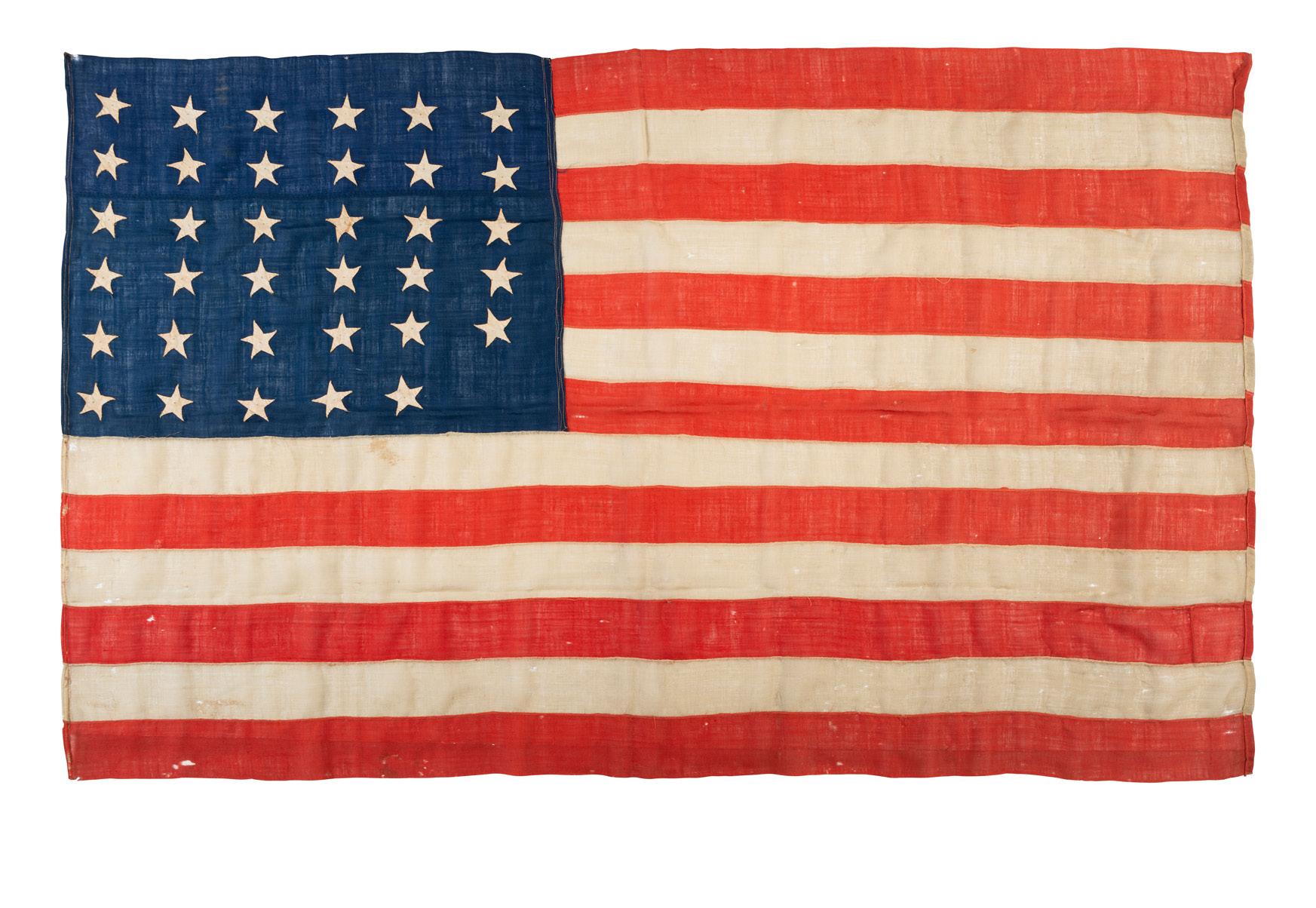
The 35-star flag represents the inclusion of West Virginia to the Union. It was in use 4 July 1863 through 3 July 1865, thereby coinciding with McKnight’s enlistment. “Whitmer” may reference McKnight’s fellow soldier, George W. Whitmer. Like McKnight, Whitmer was an Ohioan who served in the 110th OVI, and was wounded at the Battle of the Wilderness. Whitmer’s injury prevented him from active field duty service. He was mustered out in June 1865, and returned home to central Ohio where he became a prominent businessman and served as mayor.
[Also with:] “The Soldier’s Text-Book: Or, Confidence in Time of War. By the Rev. J.R. Macduff, D.D.” New York: American Tract Society, n.d. [ca 1860s]. 2 7/8 x 4 1/2 in., 64pp (toning, scattered spotting and pencil marks, wear).
Provenance: The flag and diary were acquired together at an estate sale in central Ohio.
HDS indicates that Lieutenant Joseph McKnight (1823-1864) enlisted on 8/8/1862 as a 39-year old 2nd lieutenant, and was commissioned into Co. E, Ohio 110th Infantry which was organized at Camp Piqua, Ohio. He was promoted to captain 11/25/1863, before ultimately dying of wounds received at Wilderness, Virginia. The 110th OVI was extensively engaged during its service, including at the Second Battle of Winchester, the New York Draft Riots, the Bristoe Campaign, Mine Run Campaign, the Overland Campaign, the Shenandoah Campaign and the Siege of Petersburg.
$2,000 - 4,000
138

$500 - 700
141
$500 - 700

142
$300

143 [CIVIL WAR]. Soldier’s letter describing shooting a Confederate soldier by William Henry Mix, Company K, 2nd New Hampshire Infantry, WIA at Gettysburg. “Near Harrison’s Landing, Va,” 11 July 1862.


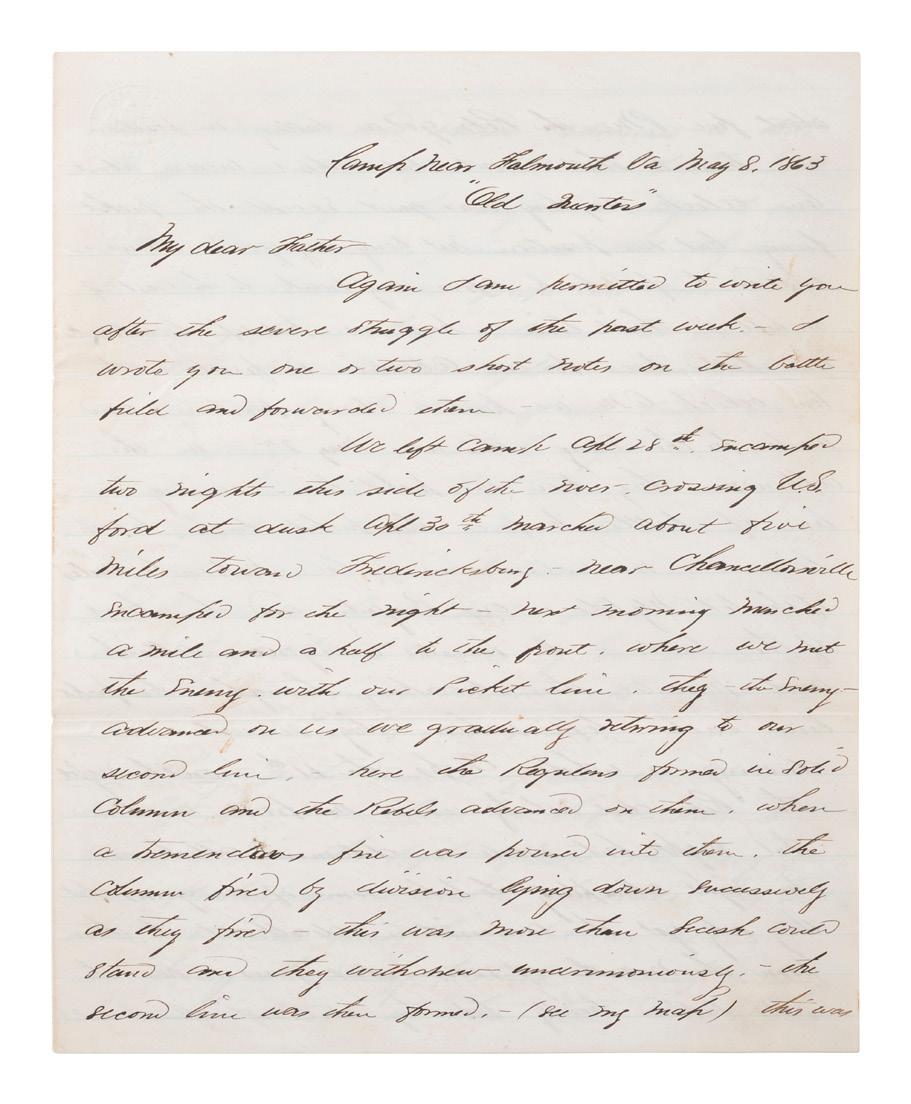

$300 - 500
144 [CIVIL WAR]. Battle of Chancellorsville letter with hand-drawn map of the battlefield, written 5 days after the battle by First Lieutenant Daniel K. Cross, 5th New Hampshire Infantry. “Camp near Falmouth Va,” 8 May 1863.
$1,500 - 2,500
145 [CIVIL WAR]. Letter postmarked from Gettysburg describing the conditions of the battlefield four months post engagement. “Gettysburg,” 30 October 1863.
$300 - 500
146 [CIVIL WAR]. A merchant’s letter providing a detailed description of the bombing of Charleston, SC. Summerville, 17 January 1864.
$300 - 500
147 [CIVIL WAR]. Letter written by Major William F. Smith, 1st Delaware Infantry, describing Hancock’s assault at the Mule Shoe during the Battle of Spotsylvania Court House, Spotsylvania County, Virginia, “Battle Field May 13th 1864.”
$300 - 500
148
[CIVIL WAR]. Letter written by Private Thomas H. Capern, Co. E, 4th New Jersey Infantry, regarding the Battles of Wilderness and Spotsylvania. “Camp upon the Field May 15th 1864.”
$300 - 500
149
[CIVIL WAR]. Letter from the battlefield of Cold Harbor written by Albert N. Husted, Company I, 44th New York Infantry. “Near Old Church Va,” 4 June 1864.

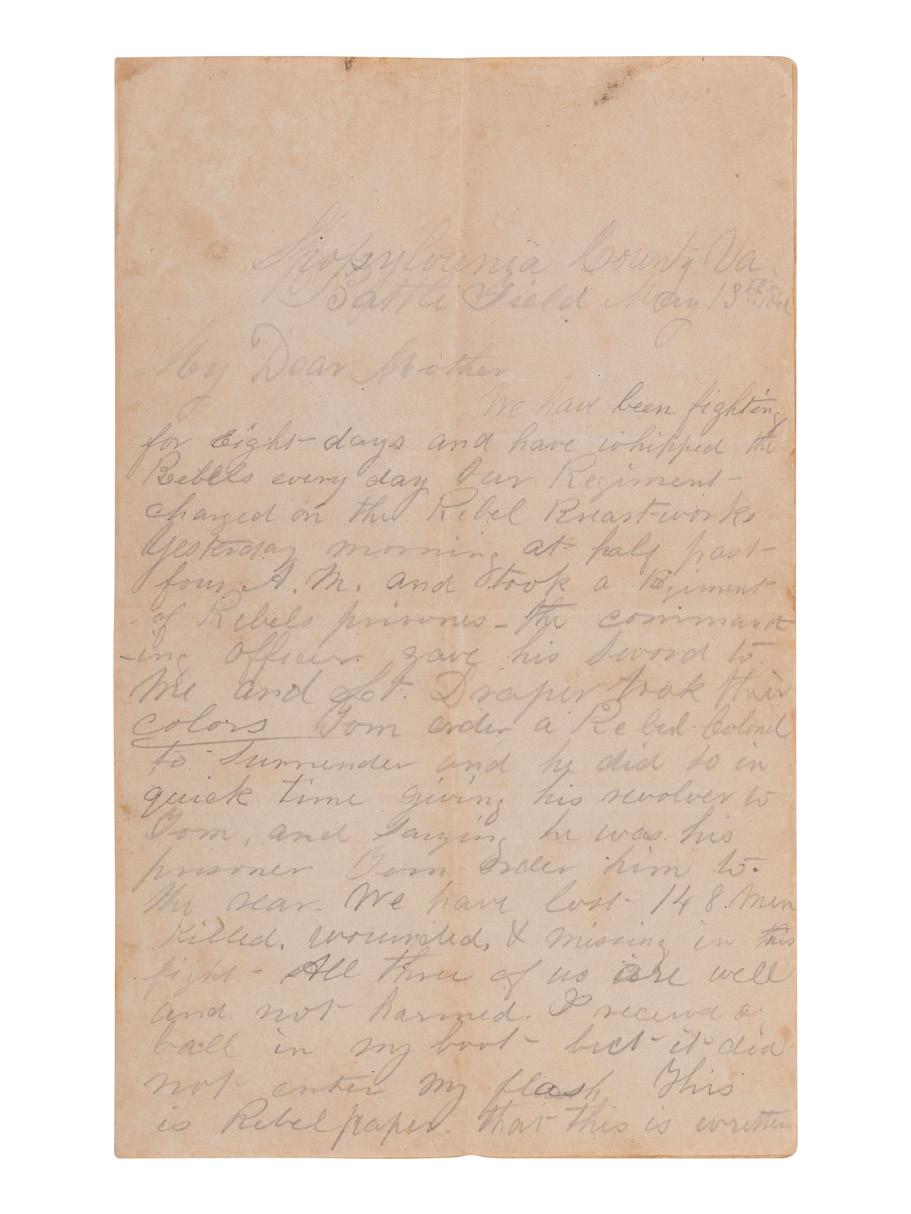
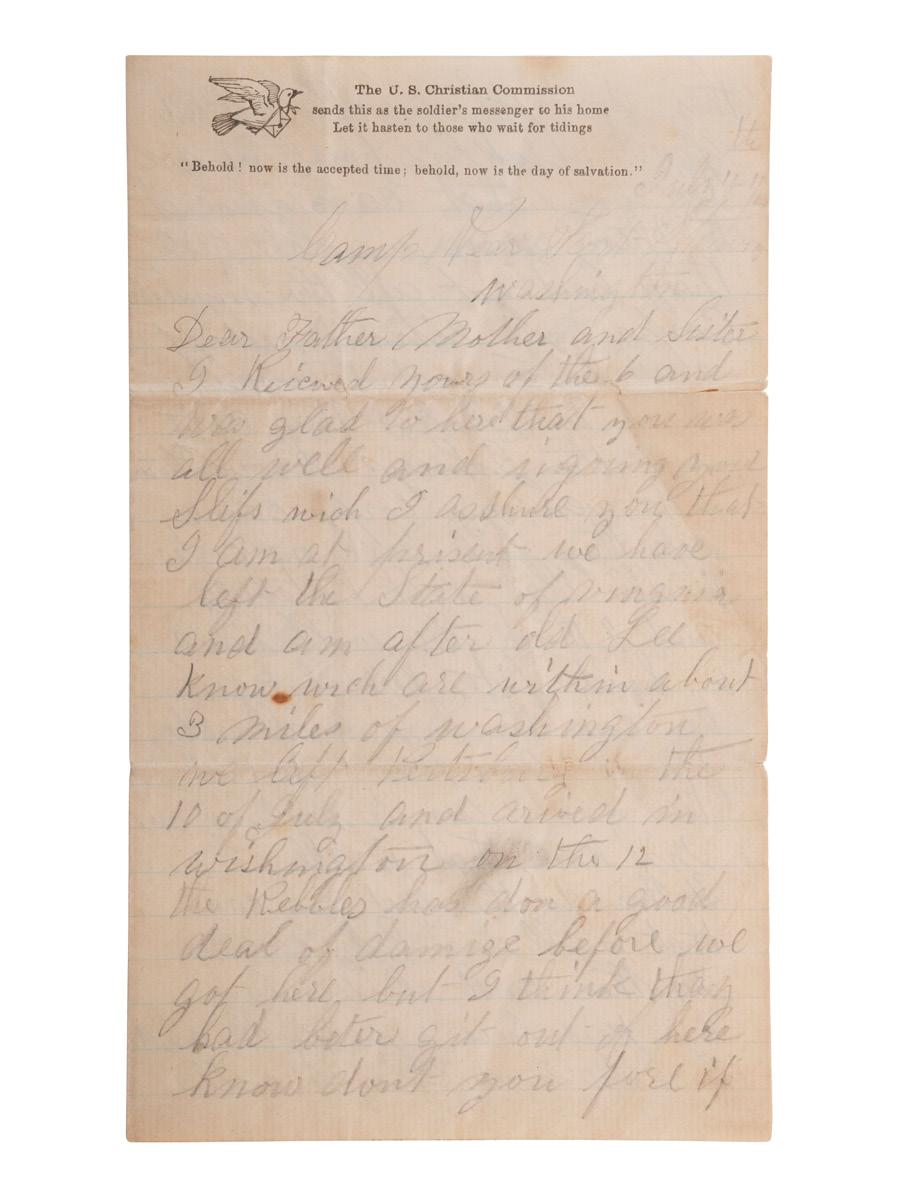
$300 - 500
150
[CIVIL WAR]. Letter written by Sergeant Richard Castle, Company G, 43rd New York Volunteer Infantry, on the day he was KIA at Fort Stevens. “Camp Near Fort Stevens, Washington,” 12 July 1864.
$300 - 500

151 [CIVIL WAR]. Letter from Private Benjamin F. Hulbard, Co. H, Vermont 2nd Infantry, describing the Third Battle of Winchester, “Near Strasburgh Sept 21st [1864].”
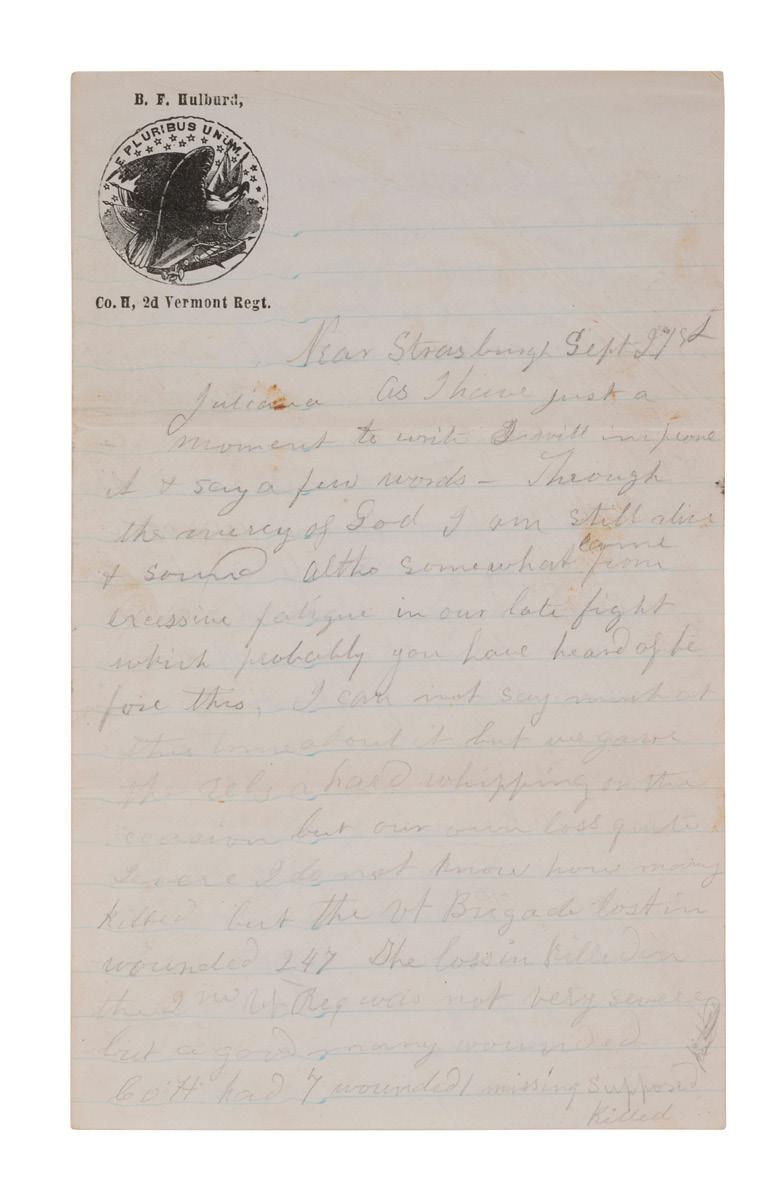
$300 - 500
152 [CIVIL WAR]. Union soldier’s letter on captured Confederate stationery, written by Frederick C. Hale, Company F, 118th New York Infantry, with Confederate bonds. Richmond, 16 April 1865.
$300 - 500
154 FARRAGUT, D.G. General Order No. 19. signed by Farragut (“D.G. Farragut”), as Admiral in command of the European Squadron. Off Lisbon, 11 May 1868. Property from the James Milgram, M.D., Collection of Broadsides, Ephemeral Americana, and Historical Documents
$400 - 600
155 [CIVIL WAR]. FARRAGUT, David G. A. (1801-1870). A group of 3 signed items, including letters.

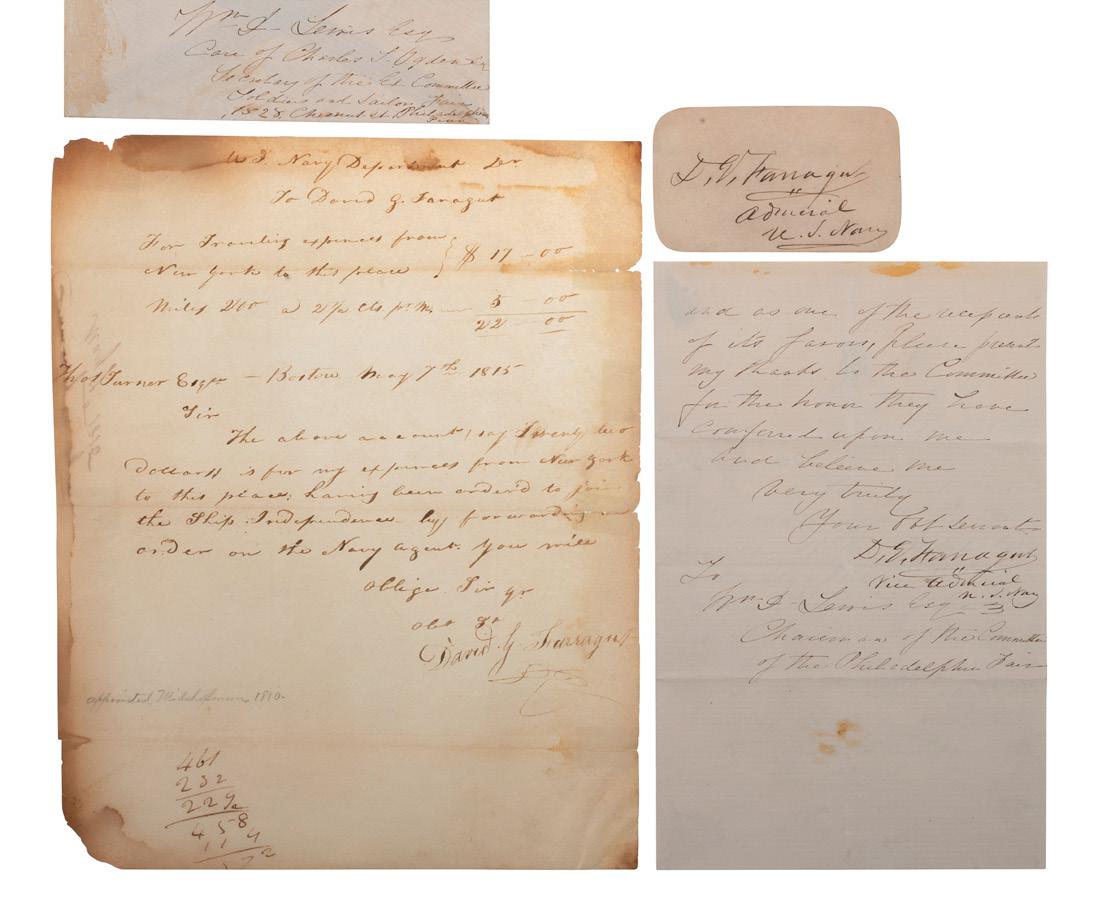
Letter signed. New York. 2 pages, on bifolium, 5 1/8 x 8 1/8 in. With original postally used cover. On unidentified nautical letterhead. In this letter to William D. Lewis, Farragut acknowledges receipt of the Tribute book presented to him by the Committee of the Soldiers and Sailors Fair at Philadelphia. -- Letter signed. Boston, 7 May 1815. One page, 7 3/4 x 9 3/4 in. Docketed verso. In this letter to Thomas Turner, Esq., Farragut outlines his expenses for his travel from New York to Boston. -- 3 ¼ x 1 7/8 in. clipped signature. “D.G. Farragut, Admiral, U.S. Navy.”
[With:] 4 pages, 4 ¾ x 7 ½ in. printed proclamation. Headquarters, Department of the Gulf, New Orleans, 1 May 1862. Undersigned in print by Major General Butler. Proclamation announces that the city of New Orleans has been surrendered to the “naval and land forces of the United States who have come to restore order, maintain public tranquility, enforce peace and quiet under the Laws and Constitution of the United States...”
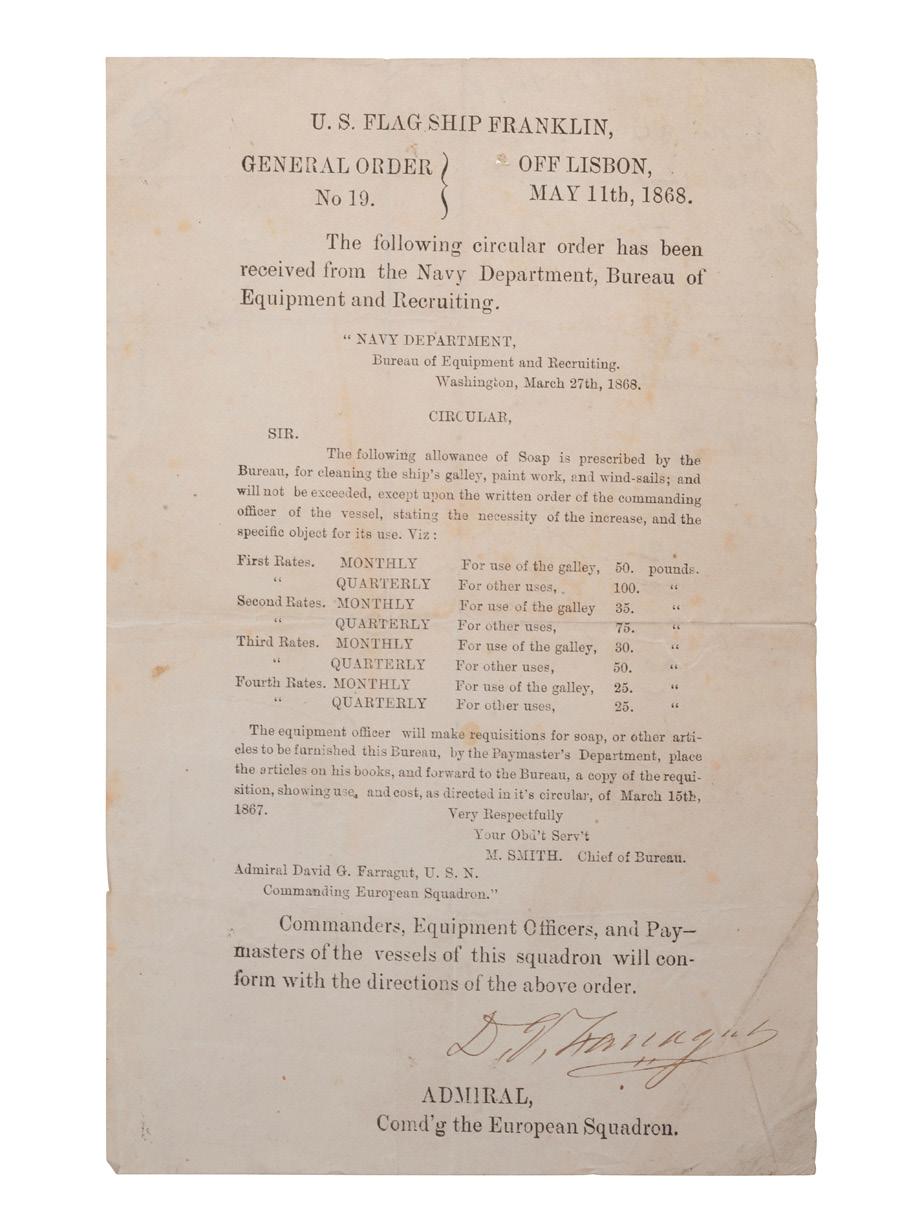
Property from the James Milgram, M.D., Collection of Broadsides, Ephemeral Americana, and Historical Documents
$400 - 800
156 [CIVIL WAR]. FOOTE, Andrew H. (1906-1863). Autograph letter signed (“A.H. Foote”). Washington, [DC], 21 May 1863. [With:] 3 engravings of Andrew H. Foote.
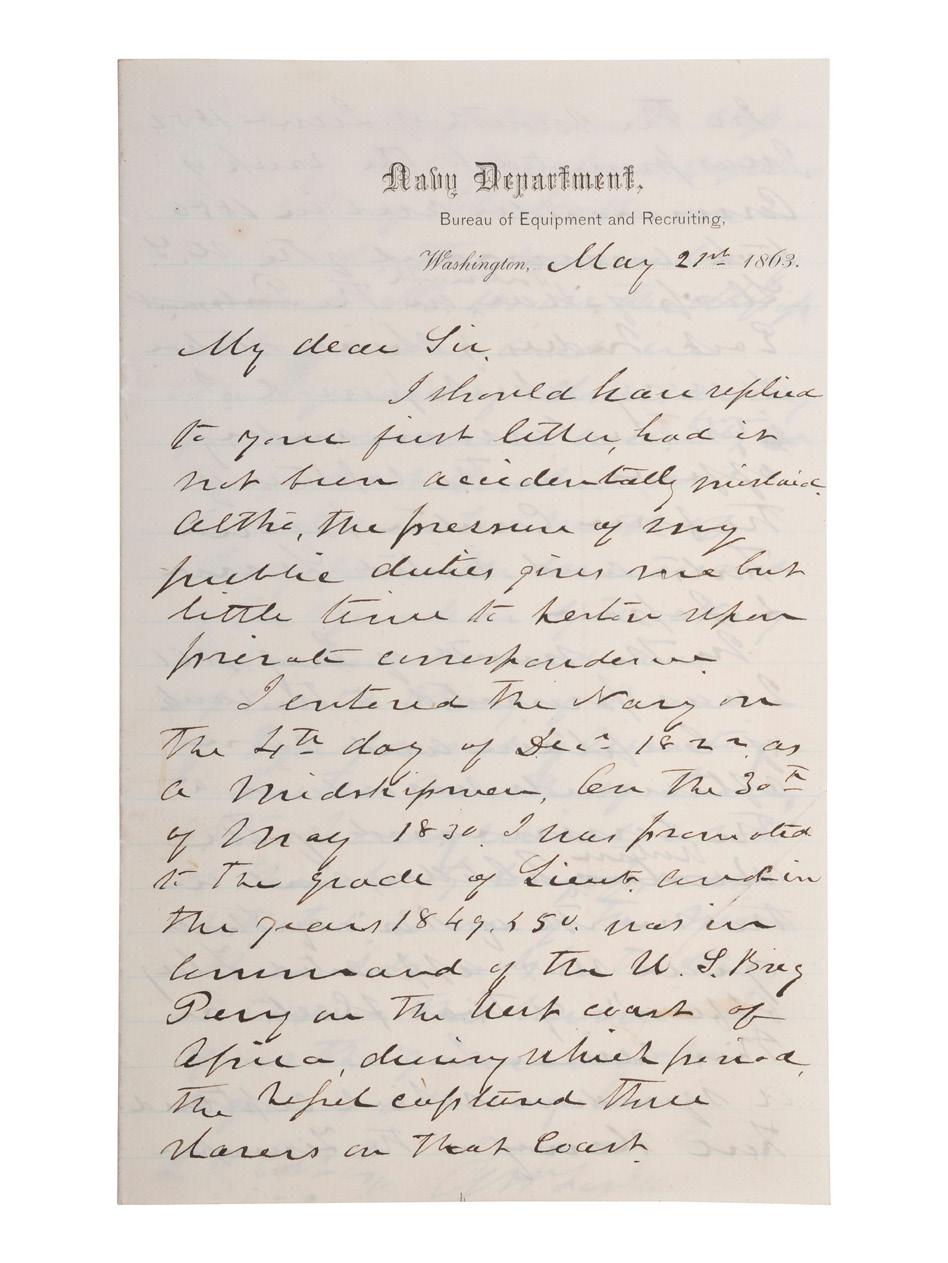
3 pages, 5 1/8 x 8 3/8 in. On “Navy Department, Bureau of Equipment and Recruiting” letterhead.
In this letter to an indecipherable recipient, Foote first apologizes for his delay, explaining that he has many public duties and little time for private correspondence. He then outlines his entire military career, with dates of promotions and posts throughout. In part: “In the month of Aug 1861 I was promoted to the rank of Captain and soon afterwards was ordered at the command of The western flotilla, and in the month of Nov. of that year was appointed “Flag Officer” of that fleet. In this service I [commanded] a squadron which captured Fort Henry on the Tennessee river, participated in the capture of Fort Donelson, captured the city of Clarksville, and received the surrender of Island No. 10. on the Mississippi river...”
Explaining how he ended up in his current role, he writes, in part: “...was detached in the month of May from the command of the squadron by the Navy Department, and was appointed Chief of Bureau of Equipment & recruiting. In the month of June, after having received a note of thanks by Congress, was selected as one of the nine[?] Rear Admirals in the Navy.”
Foote was preparing to take command of the South Atlantic Blockading Squadron when he suddenly died from a kidney disease, a little over a month after writing this letter.
Property from the James Milgram, M.D., Collection of Broadsides, Ephemeral Americana, and Historical Documents
$300 - 400
157 [MARITIME]. Slate deck log associated with Captain James K. Pritchard (1835-1864) of Newburyport, Massachusetts, and the East India Trade ship the Elcano

$800 - 1,200
158
[CIVIL WAR]. Manuscript commonplace book identified to Cadet Herbert Clarence Stinson, US Naval Academy, 1864-1868.
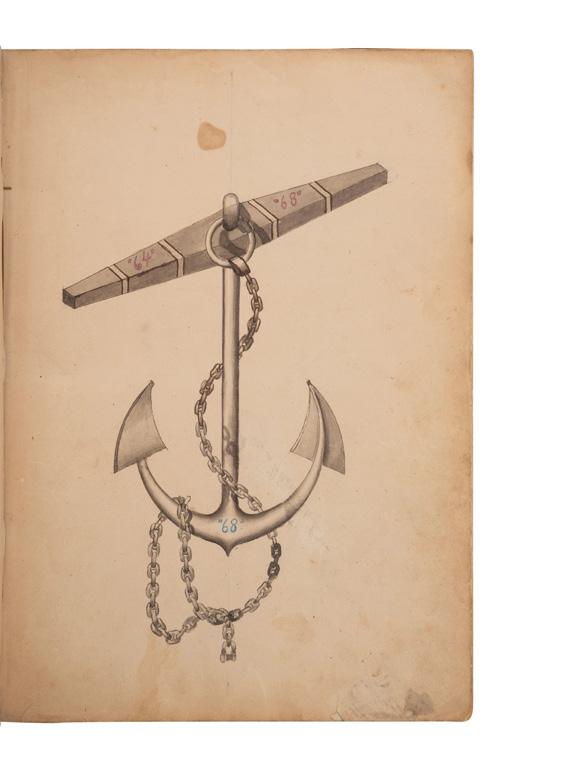
$300 - 500
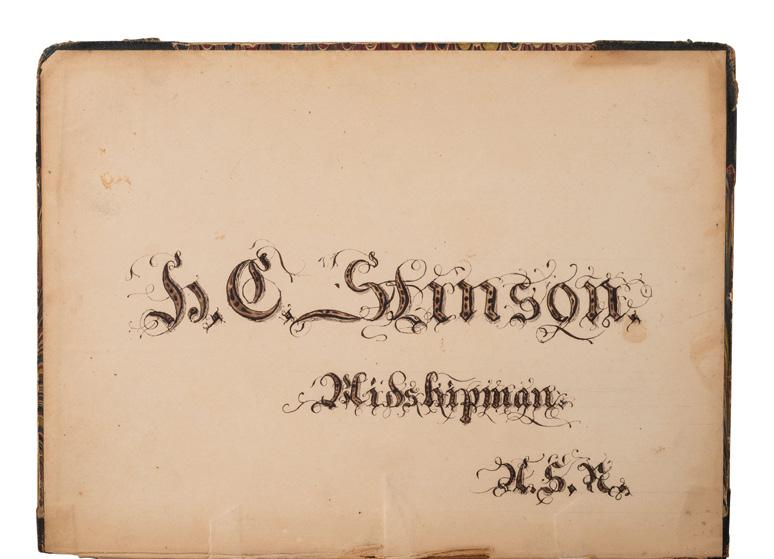
[CIVIL WAR]. BLATCHFORD, Caroline A. (1817-1901). A group of 4 Civil Warera diaries written by Caroline Appleton Blatchford, including discussion of prominent New York families, the ongoing war, and work with the Women’s Central Relief Association.
4 diaries, each approx. 5 x 7 1/2 in. with leather bound paper boards, comprising: December 1861 - September 1862, 226pp, entries in pencil and ink; July 1863 - June 1864, 194pp, entries in ink; March 1865 - July 1866, 240pp, entries in pencil and ink; and July 1866 - September 1871, approx. 34pp of manuscript entries followed by approx. 38 pages of newspaper clippings dating up to ca 1896, some with manuscript annotations, entries in pencil and ink. Provenance: By descent through the Blatchford family to current owner.
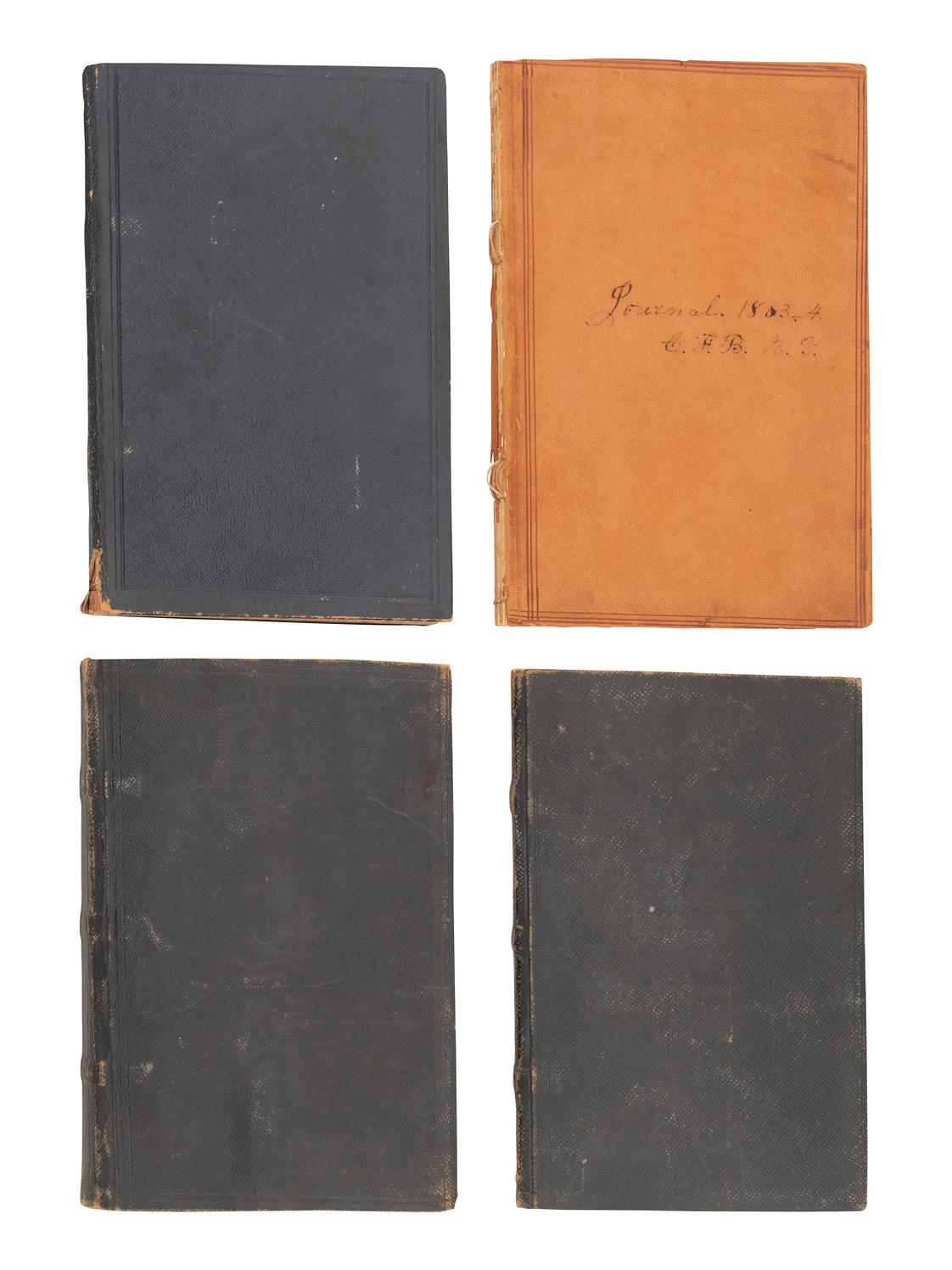
The first diary, inscribed on the first page “Mrs. S. Blatchford’s / Journal for / 1862. Vol. 1st / New York / 12. W. 22d Street,” commences on Christmas Day 1861: “A bright pleasant day; but very unlike former Christmases to me, we had no merry-making at home, no Christmas tree, a shadow sat among us, and would not depart, the memories of those who since last Christmas have passed from among us forever dimmed all our Merry greetings, and the heavy trial through which our dear Country is passing saddened all hearts.”
So Caroline Blatchford begins her journal, coalescing personal events with the violent political turmoil gripping the nation in a fashion that would remain consistent throughout each of her diaries. The following day Caroline records her first mention of a visit to the “Central Relief,” an organization officially known as the Women’s Central Association of Relief which was based at No. 10 Cooper Union, New York City. Caroline alternately identifies the organization in her diary as “the Central Relief,” “Woman’s Central Relief,” “No. 10 Cooper Union,” “No.10” or “Cooper Union,” and refers to it roughly 45 times throughout the course of her diary. This relief agency, the roots of which were established at a meeting of women in New York City in April 1861, was at the forefront of Union relief efforts and was a precursor to the United States Sanitary Commission. Caroline regularly visits the organization’s office in New York City, and at times describes her work there.
Social and personal engagements such as relief work at Cooper Union, trips to the dressmaker or the opera, attending church, house calls, dinners, and family visits are all mainstays of Caroline’s diaries. The Blatchfords are connected via marriage not only to the Appletons of Boston, but also to Massachusetts politician Daniel Webster and the Hamilton and Schulyers of New York. The William H. Seward family is closely associated with the Blatchfords, both professionally and personally. Other families mentioned in the diaries include, in part, the Fletchers, Wards, Edgars, Potters, Morgans, Bensons, Hopkins, and Griswolds. Yet in addition to recording visits and visitors, Caroline’s regular diary entries contain a steady stream of commentary on the latest developments in the war, often describing in detail the latest news of engagements. Multiple diary entries record trips made by her husband, father-in-law, and Governor Seward to and from Washington, D.C., placing her family on the pulse of wartime activity, in the Sewards inner circle, and wellpositioned to receive news of Union fortunes. Caroline writes on 1 April 1862, “We hear through private sources that McClellan has commenced his march to Richmond, marching from Fortress Monroe, upwards.” Like many Americans, Caroline is not just anxious on behalf of her country, but on behalf of her loved ones who served. Though her own son did not serve, her nephew Sam Appleton was an officer in the Massachusetts 12th Infantry, and is regularly mentioned in her diary. While he survived the war, Colonel Fletcher Webster, also of the 12th MA and Caroline’s relative by marriage, was killed at the Second Battle of Bull Run on Aug 30, 1862, a fact which she records in her diary on 1 September.
Caroline’s 2nd diary bears a handwritten inscription on leather cover: “Journal 1863-4 . C.A.B. N.Y.” Perhaps one of the most compelling entries in the diaries is entered on 13 July 1863 in the aftermath of the New York Draft Riots: “A day of shame and disgrace for New York City! How little we know what a day may bring forth- a day rising calm and peaceful ending in riot and bloodshed, flames and terror! Private dwellings pillaged and fired. Our armory and hotel destroyed. The colored Orphan Asylum burned, the Tribune Office attacked, The Mayor’s residence in 5th Av. Attacked, but not burned. Postmaster Wakeman’s house was also visited by the mob, and totally destroyed by fire. The poor negroes were terrible sufferers by the outbreak- many beaten and some killed; the police are terribly injured. Superintendent Kennedy seriously wounded and beaten. The Authorities not being prepared for such an attack at this time, the mob had it pretty much their own way all day, but were pretty well got under by midnight. Nothing much occurred during the night. But it was a fearfully anxious night for all. The Conscription Officers were sacked and burned first - the horrid mob, consisting principally of boys and ruffians went down 5th Av at the head of our street, armed with all sorts of weapons, stones, bed posts, cart-rung, sticks, railroad iron, etc... But the most fiendish thing this lawlessness did to my mind was the burning of the ‘Coloured Home.’ Nothing could excuse an attack upon such an unoffending institution. Truly our brothers’ blood must rise up with a mighty cry to him, in whose sight, black & white are equal and
at whose tribunal we have got to answer for our sins in this quarter!” The following day, she writes, “Oh! The wicked followers of Jefferson Davis who have set this wheel in motion, what punishment is bad enough for them! And the poor, innocent, unoffending negroes, who have been so maltreated and murdered shall not requisition be made for their blood? I believe it will.” Though Caroline does not call herself such, it seems she is an abolitionist. She writes on July 20, “Quite interested in Fanny Kemble’s new book, she and I agree most entirely on this subject. How I abhor slavery.”
Caroline’s continued work for the Women’s Central Association of Relief is the subject of several interesting entries in 1864. April finds Caroline preparing for the Metropolitan Fair, a public event organized in NYC by the United States Sanitary Commission to raise funds and supplies for the Union Army. On April 4, the opening day of the event, she writes: “The public military display for the opening of the Great Metropolitan Fair and the Great opening of the building on 14th St both taking place today. We had a grand view of the Procession... I do not think I ever saw a larger military show in New York. Over 8,000 troops were said to be in the ranks. We had an early dinner, and then hurried off to be present at the opening ceremonies of the Fair. We had a delightful time, the crowd not unpleasant. The place looked beautifully; the tables all full, except the Roman table, everybody in fine spirits. The opening a great success.” On 14 May Caroline discusses ongoing political discussions being held by the women at Cooper Union: “There is to be a meeting of women on Monday next at the Cooper Union, to sign a paper, to the effect that during the continuance of the war, the ladies whose names shall be enrolled will not encourage any foreign goods, will be economical in every possible way, will buy nothing from abroad thatcan as well be made in America, cut themselves off from every luxury, and by their example if possible to stop the fearful extravagance that is hurrying us on, perhaps to future ruin. I shall attend the meeting, hear what is said, and then put my name down, or not, as I shall see fit. I most certainly approve of the movement, and am willing to economize in every possible way.”
Diary three inscribed is inscribed at the start: “C.F. Blatchford’s Journal. 186566. N.Y.” This diary is particularly notable for Caroline’s accounts of the end of the war including Lincoln’s assassination and the attacks upon the Sewards, and for her wonderfully detailed description of New York as a city rejoicing and later, in mourning. On the fall of Richmond she exclaims, “At last! At last! Oh! Thank God! Gen’l Witzel occupies the city, and Grant is thundering on to cut off Lee’s retreat! We can hardly realize, hardly take in this glorious good news!! We occupied the city at 8 ¼ a.m. this morning. No particulars as yet. Flags are flying, news boys racing about like mad, hearts beating high with excitement
and joy!” Then following Lee’s surrender: “April 9th Palm Sunday ... At midnight, through the cities ring the bells! Cheers upon cheers make dark night reveal!” On April 11, Caroline describes a “Thanksgiving Service” at Old Trinity: “It was a service never to be forgottenthe old Church crammed to its utmost capacity, with devout and thankful creatures, who found this the best and truest expression of their hearts’ fullness of joy. The music was glorious. The very roof rang with the organ and voices.... The services ended by the chimes ringing out their music on the air, and the organ giving forth its most majestic sounds in the ‘Hallelujah Chorus,’ and several national airs. We can hardly realize this stupendous end....I often mourned that I had not been living in the glorious days of the Revolution, but now I can only thank God that I have been permitted to live in & through this great war and wonderful deliverance! The skies are not very bright overhead these days, but nobody seems to mind the rain. Flags fly, people meet, every face wears a smile, and every heart ought to sing a Psalm. Where is Jeff?!”
Jubilation turns to devastation quickly for Caroline following the assassination of Lincoln, and the simultaneous attacks on family friends William Seward and his sons. She writes on Saturday 15 April 1865: “Horrible! Appalling, crushing day! ...Abraham Lincoln was assassinated at ½ past 9 o’clock last night in Ford’s theatre, Washington, and about the same time, Secretary Seward was attacked in his sick room, throat attempted to be cut, his son Frederick dangerously wounded attempting to save his Father, also Major Augustus Seward wounded, but not dangerously. Several other persons also wounded in the room! ... Such a scene as the streets of New York have presented today, I hope never to live to see again! All business suspended, people’s faces white with horror and indignation, or red with weeping. Trembling lips repeating to stunned ears the story of the assassination. J. Wilkes Booth supposed to be the murderer (the brother of Edwin Booth.)” Caroline’s husband attends Lincoln’s funeral in Washington, D.C. Meanwhile, Caroline describes the city of New York as “most beautifully and miserably draped in mourning” with later entries describing memorial services for the President, her husband’s impression of Andrew Johnson, updates on the health of the Sewards, and Lincoln’s April 25th funeral procession through New York: “...nearly one hundred thousand people in line, all nationalities, all religions, all trades, all classes, all politics, all colors represented. And such a crowd of lookers-on, from street, from window, from housetop… Truly, all New York seems to have been in the streets today! And such a solemn, silent crowd. No jests, no laughter, no rough behavior. All waited patiently through the weary hours, for one look at the hearse that contained all that was left of our martyred President.”
Entries in June 1865 record a personal meeting with General William T. Sherman and on 9 June 1865 a event featuring General Grant at Cooper Union: “There was never anything like the uproar and cheering when our great General appeared. The reception must have pleased him even if he does dislike fuss and making a spectacle of himself. He was only in town one day, at the Astor House, and he was besieged indoors and out!” In February 1866, Caroline states that Secretary Seward called to see her, “It is the first time I have seen him since his disfigurement,” she wrote. “It alters him very much, but he speaks as clearly as ever.”

As wartime fades, the diaries elaborate moreso on family and leisure, with Caroline providing interesting description of the family’s summer excursions to Newport, Rhode Island, for the “season” including stays at the “Ocean House” hotel and the later purchase of a family there home known as “Cottage by the Sea.” Entries become significantly less frequent after July 1866 and are sporadic in nature. On 4 May 1867, she notes the appointment of husband by the President to Judge of the U.S. District Court, “a most honorable position, and one that my husband has been very desirous of occupying. I am a proud and happy woman this day!” The remainder of the fourth diary consists of newspaper clippings, most related to births, deaths, and marriages of their close family and friends, and the career of her husband.
[With:] JEWETT, Isaac Appleton (1808-1853). Memorial of Samuel Appleton, of Ipswich, Massachusetts; with Genealogical Notices of Some of His Descendants. Boston: Privately printed, 1850. Inscribed “Caroline F.A. Blatchford / N.Y.” -BOWDITCH, Nathaniel Ingersoll (1806-1861). The Will of Samuel Appleton; with Remarks By One of the Executors. Boston: John Wilson & Son, 1853. Inscribed
“Mrs. Caroline F. Blatchford / wife of Samuel Blatchford Eq / of Auburn, N.Y. / with the respects of / N.I. Bowditch.” Nathaniel I. Bowditch served as an executor to the will of Samuel Appleton, Caroline Frances Appleton Blatchford’s father.
Caroline Frances Appleton Blatchford was born in London, England, the daughter of Eben Appleton, a prosperous Massachusetts merchant. In 1844 she married Samuel M. Blatchford (1820-1893), an attorney who would eventually ascend to the role of Associate Justice of the United States Supreme Court. As the wife of a prominent New York City lawyer, Caroline Blatchford circulated within elite social and political circles. Her primary place of worship, Calvary Church in Manhattan, included amongst its parishioners future President Chester A. Arthur, as well as members of the Astor, Vanderbilt, and Roosevelt families. Her father-in-law Richard M. Blatchford was a cofounder of the law firm, Blatchford, Seward & Griswold, and a close friend of New York Governor and later Secretary of State William H. Seward. The Blatchfords would retain close relations with the Seward family over succeeding generations, as well as with other prominent lawyers and politicians. Caroline was likely well-prepared for the role of hostess and socialite given her own upbringing in a wealthy and well-connected family. However, the diaries offered here demonstrate that while Caroline was socially engaged, she was also equally politically and intellectually engaged with the tumultuous issues of Civil War-era America. An ardent Union sympathizer and supporter of abolition, Caroline Blatchford was a woman fully immersed in the politics of her age.
$5,000 - 7,000
160
[CIVIL WAR] M.J. Maher. Is in Town Again with a New Stock Fancy Goods. Washington, IN, 1862.
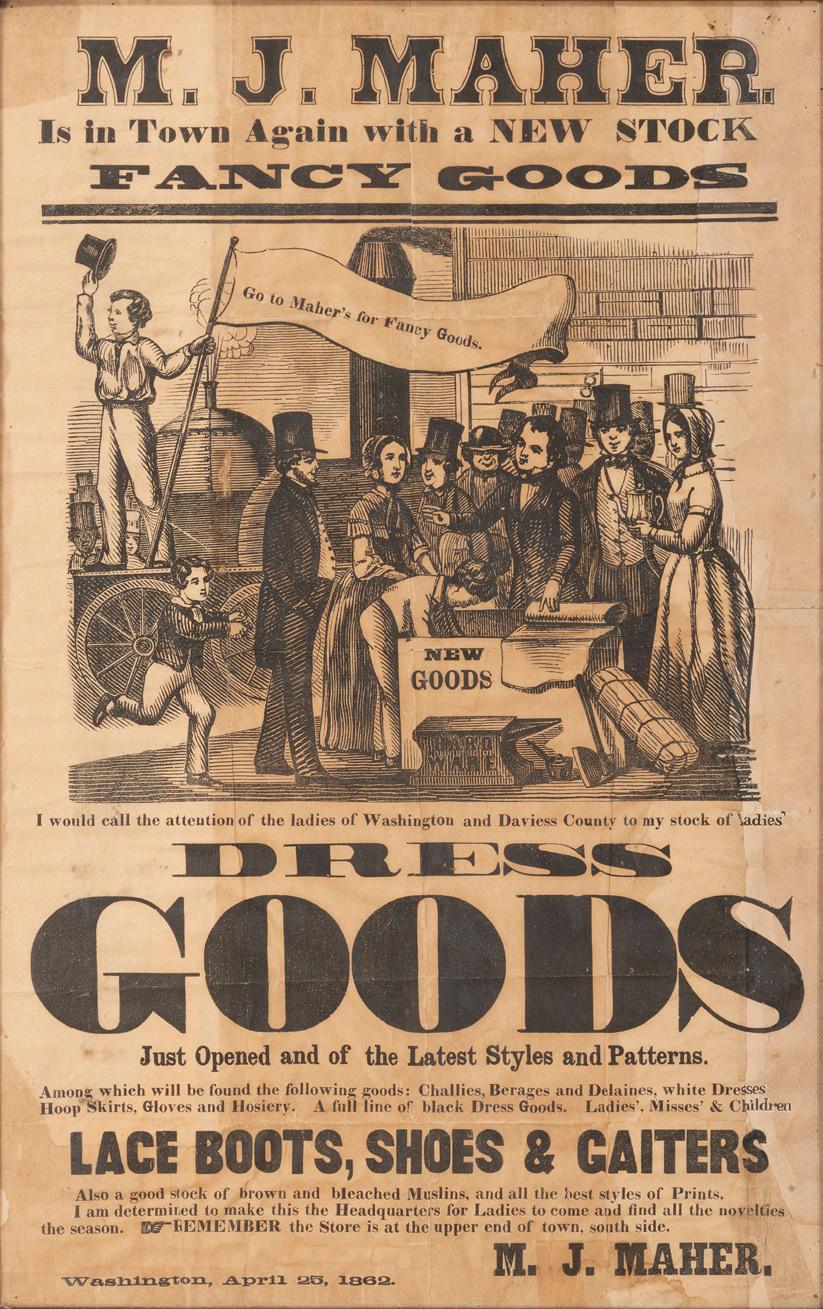
$300 - 500
161
[CIVIL WAR]. Horsemen, Ho! Men Wanted To Join Captain Lord’s Company of Light Cavalry $100 Bounty. Chicago, IL: Np., n.d.

Property from the Civil War and Militaria Collection of George Sanders of Albuquerque, New Mexico
$1,200 - 1,600
162
[CIVIL WAR]. Patriots, Come Forward! [New York], ca 1862. Recruitment broadside for the 127th New York Regiment, organized at Staten Island. $600 - 800
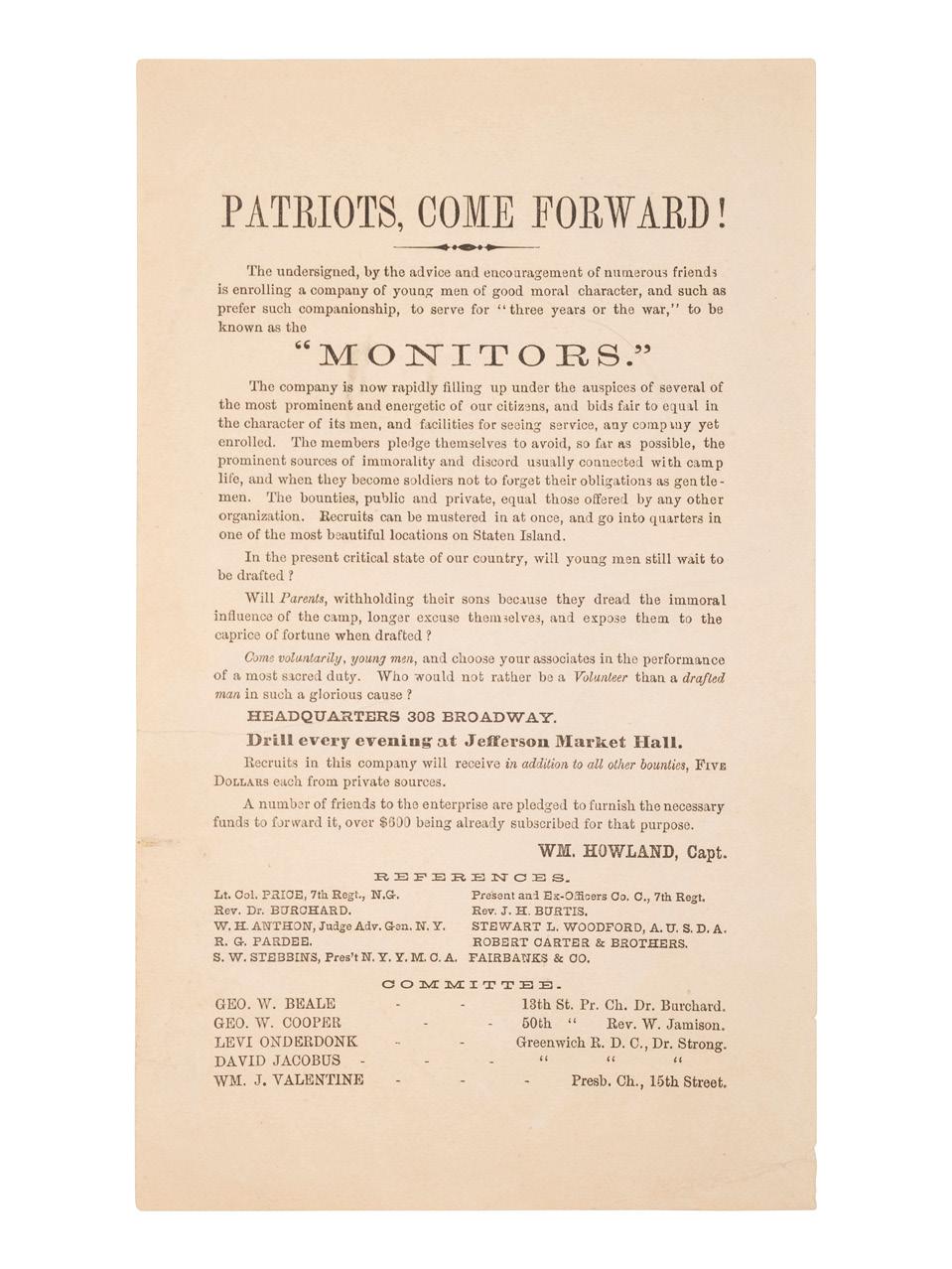
163 [CIVIL WAR]. In Right Is Might. Certificate for contributing to the Brooklyn, Long Island Fair in aid of the US Sanitary Commission. New York: E.S. Mills, Endicott & Co. lithographers, 1864.
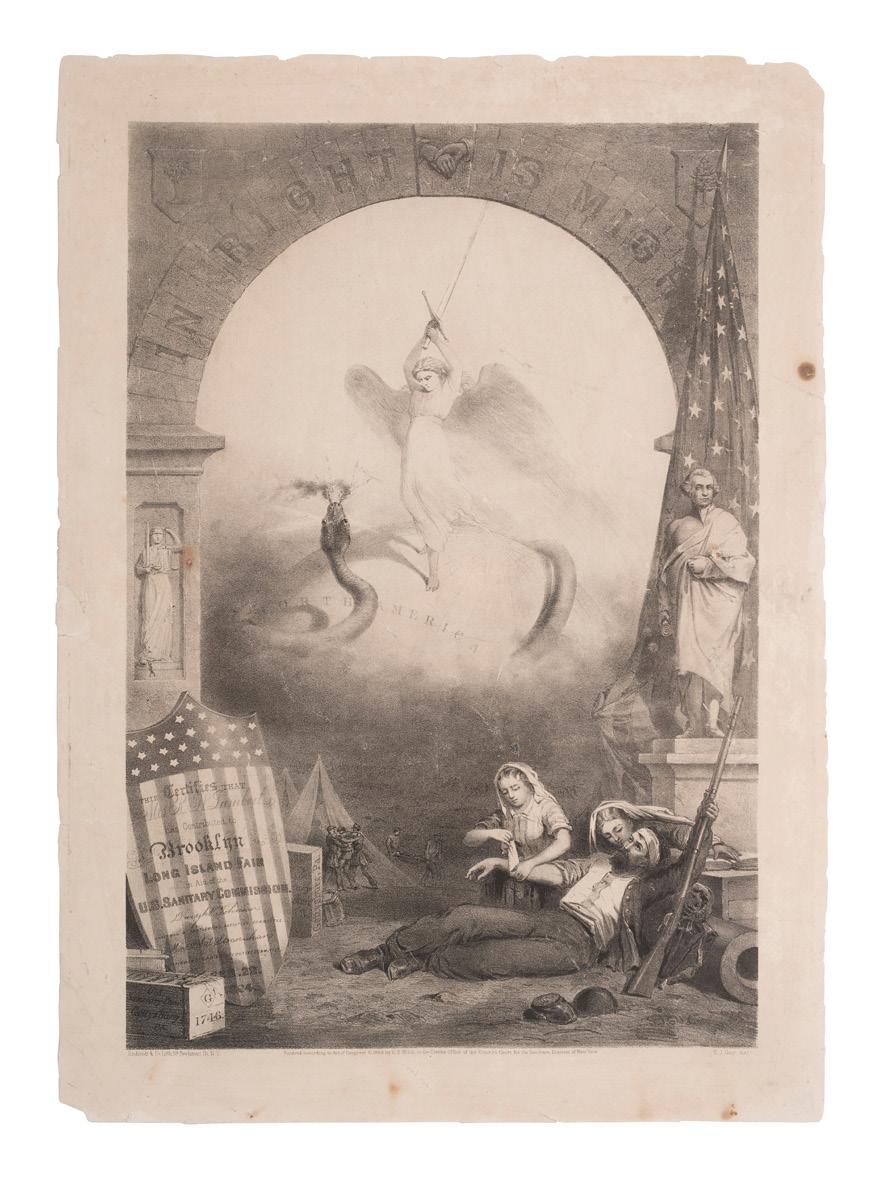
$500 - 700
164
[CIVIL WAR] -- [CURRENCY]. A group of 21 Confederate notes.
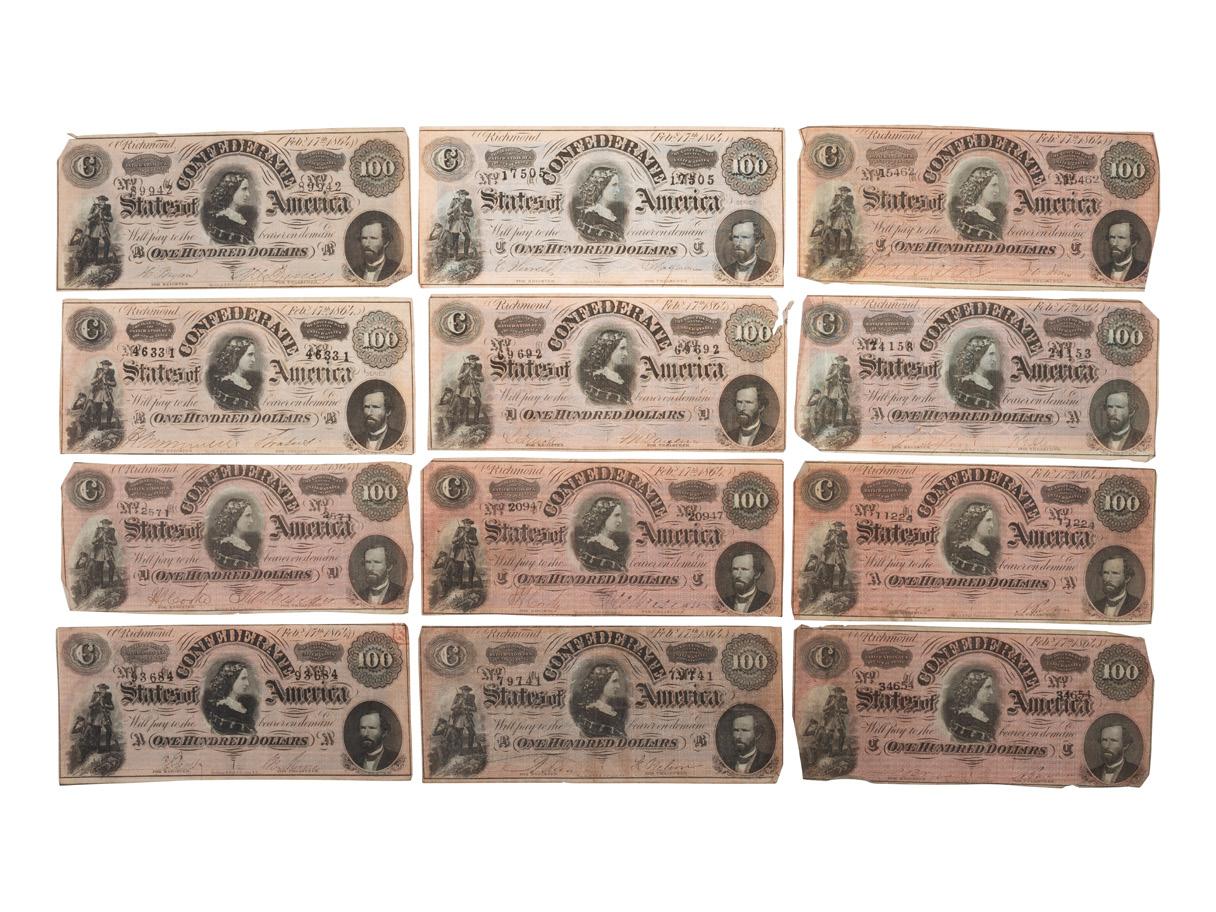
$500 - 700
165
[CIVIL WAR - FORT SUMTER]. Monangahela Republican. Vol. X, No. 11. Monangahela City, PA: 18 April 1861. Featuring detailed report on the bombardment of Fort Sumter.


$700 - 900
166 [CIVIL WAR - GETTYSBURG]. The Daily Age. Vol. 1, No. 91. Philadelphia, PA: A.J. Glossbrenner & Co., 10 July 1863. Featuring full account of the Battle of Gettysburg.
$500 - 700
167
[CIVIL WAR - CAPTURE OF RICHMOND]. New York Semi-Weekly Tribune. Vol. XX, No. 2,072. New York: 4 April 1865.

$600 - 800
168
[CIVIL WAR]. Harper’s Weekly. A group of 3 bound volumes for 1862, 1863, and 1864. New York: Harper & Brothers.
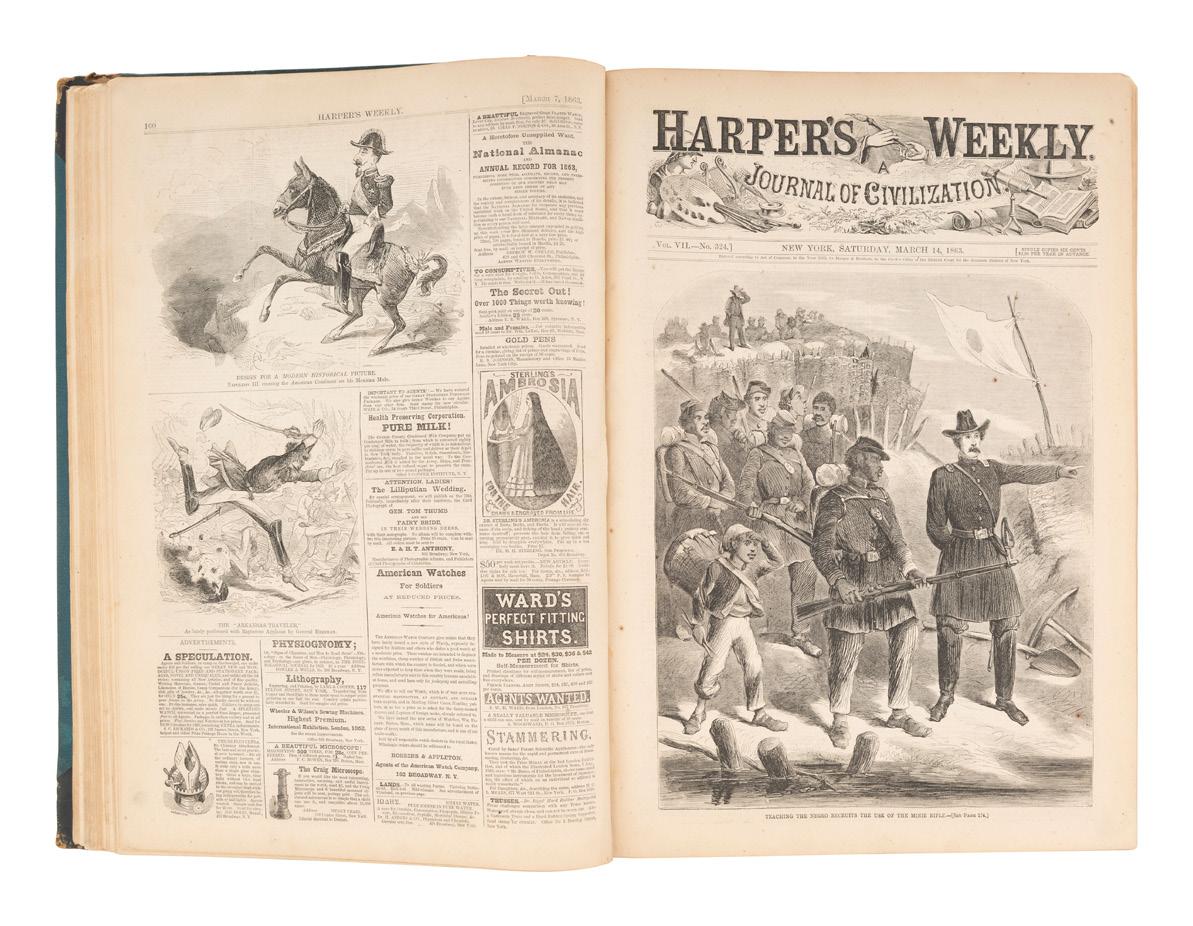
Estate of Carroll J. Delery III, Formerly the “Historical Shop”
$600 - 800
169
[CIVIL WAR]. EHRGOTT, FORBRIGER & CO., lithographers. Group of 37 lithographs of Civil War politicians, generals, and admirals. Ca 1862. $800 - 1,200
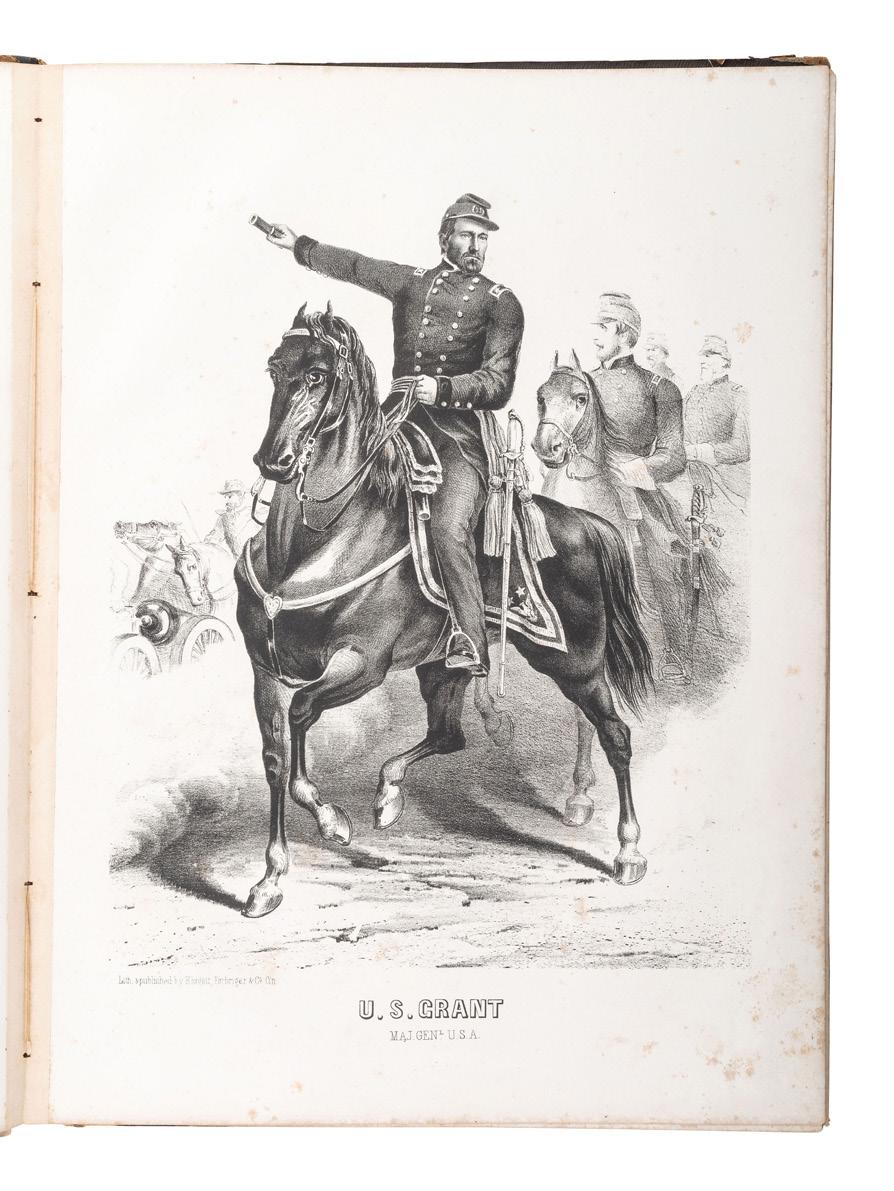
170 [CIVIL WAR]. A group of 7 items associated with James M. Barnard, 24th and 44th Massachusetts Infantry, highlighted by war-date sketches by Barnard, an autographed CDV, and a regimental history of the 24th Massachusetts Infantry.
$1,200 - 1,600
171 [CIVIL WAR]. Archive of material related to artist and Civil War soldier Conrad Freitag, highlighted by original sketch of Winfield Scott Hancock, correspondence, and cabinet card of the artist.
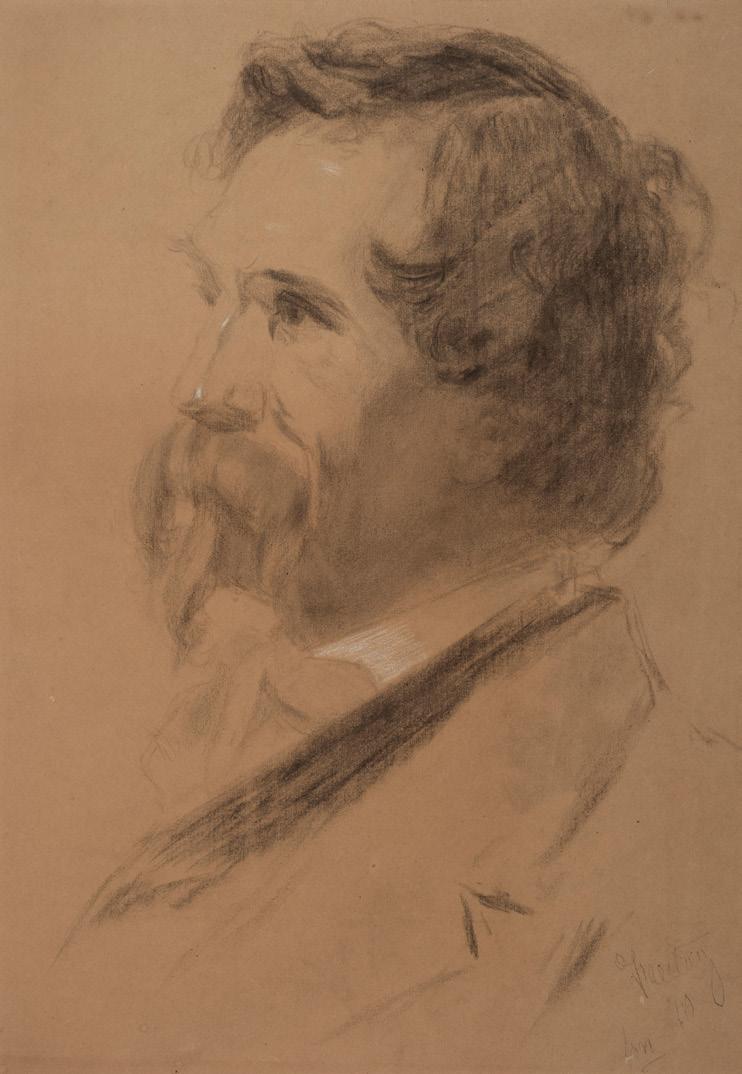
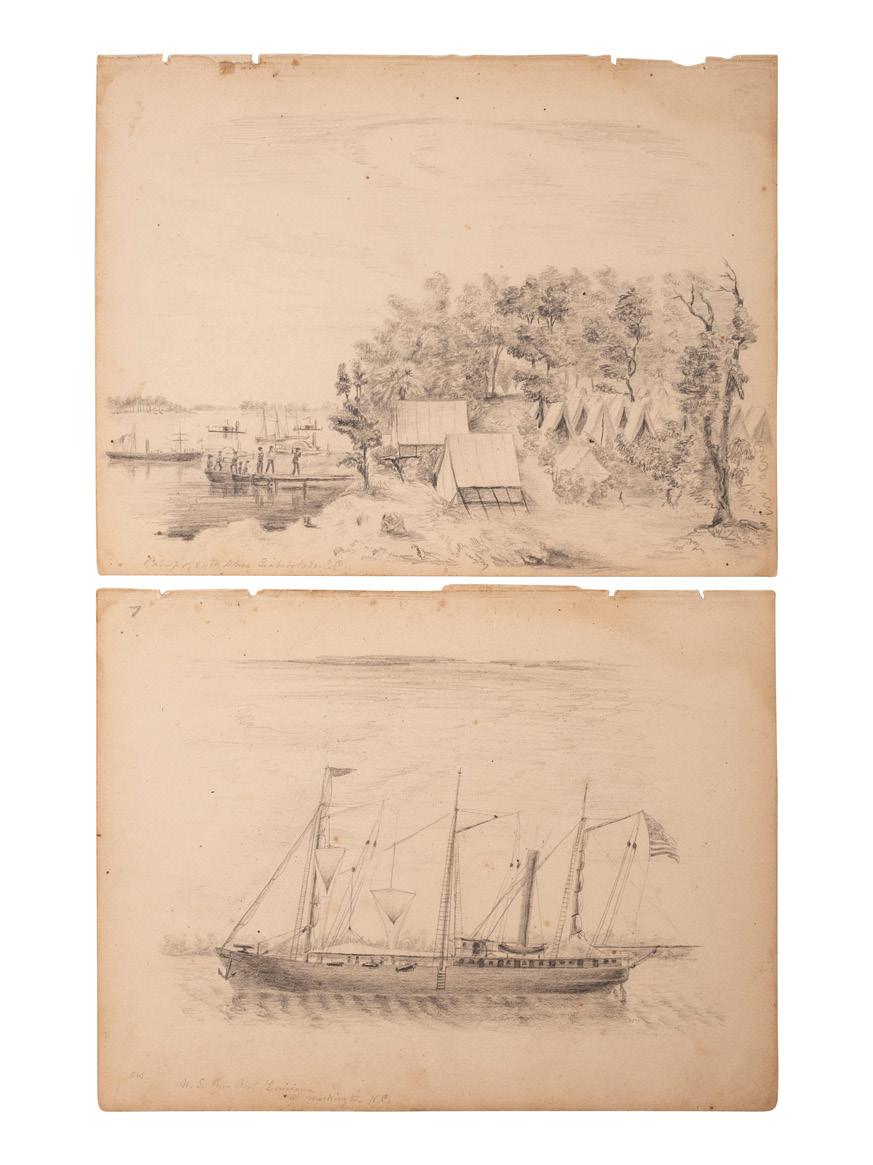
$400 - 600
172 [CIVIL WAR]. Group of artifacts related to Alexander White, 82nd Pennsylvania Volunteer Infantry, including escutcheon, CDV portrait, and flag remnants.
$1,500 - 2,500
173
[CIVIL WAR]. A group of ribbons and medals identified to Captain William Taylor, Co. E, 1st Maryland Infantry, WIA Front Royal, POW Weldon Railroad, and Medal of Honor recipient.
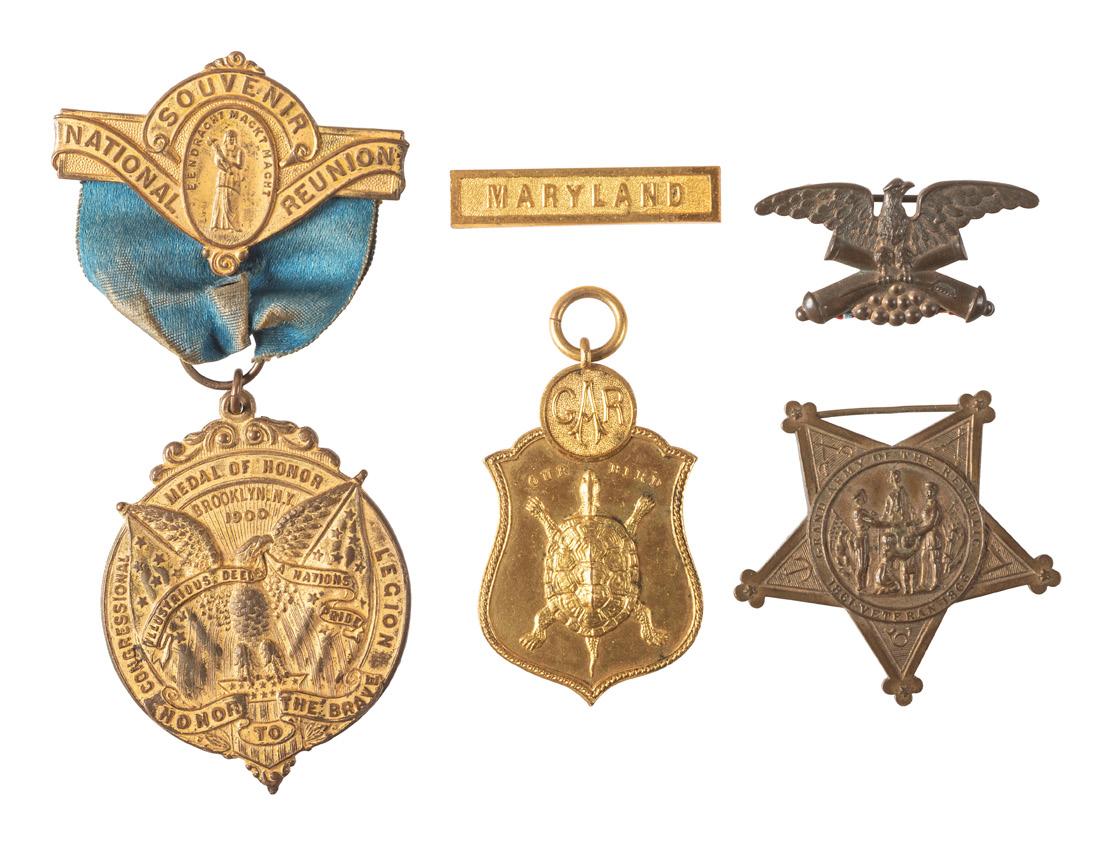
$600 - 800
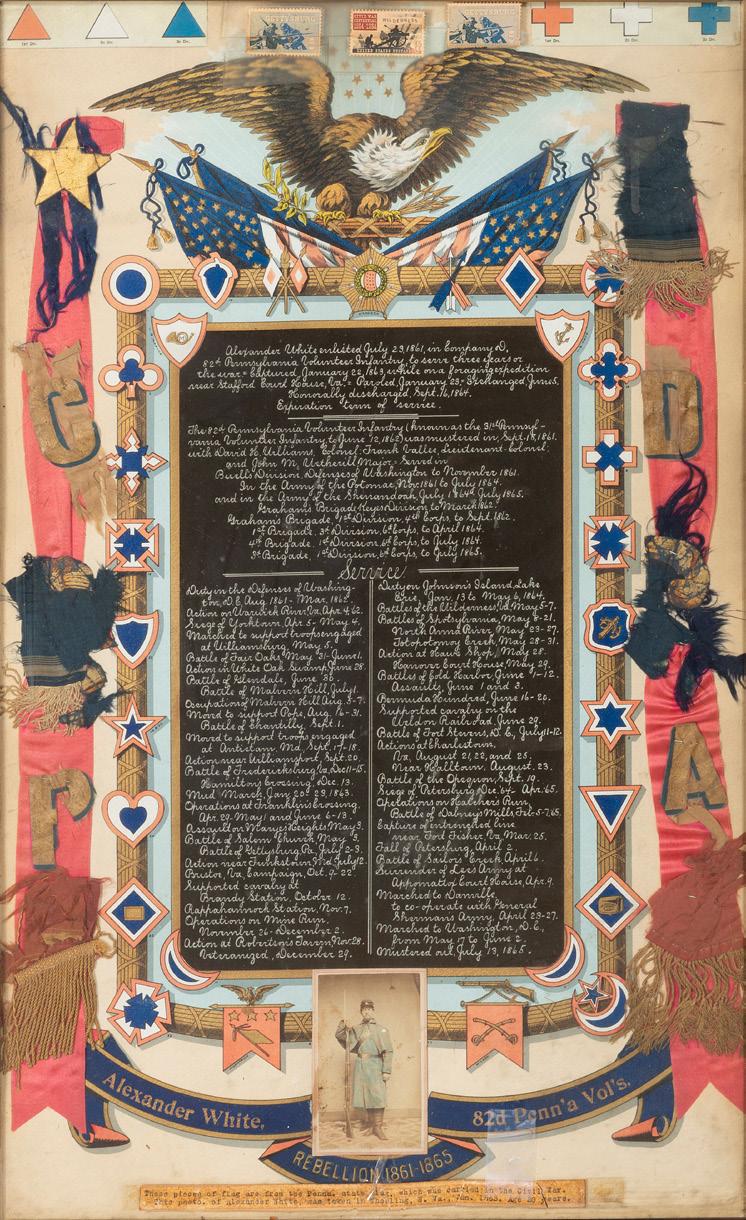
174
[CIVIL WAR]. ID disc of Alexander Campbell, Company B, 154th Pennsylvania Volunteer Infantry Regiment.
Provenance: Julian Converse (manuscript ledger sheet listing the item and its original purchase date).
Property from the Inventory of James C. Frasca
$800 - 1,200
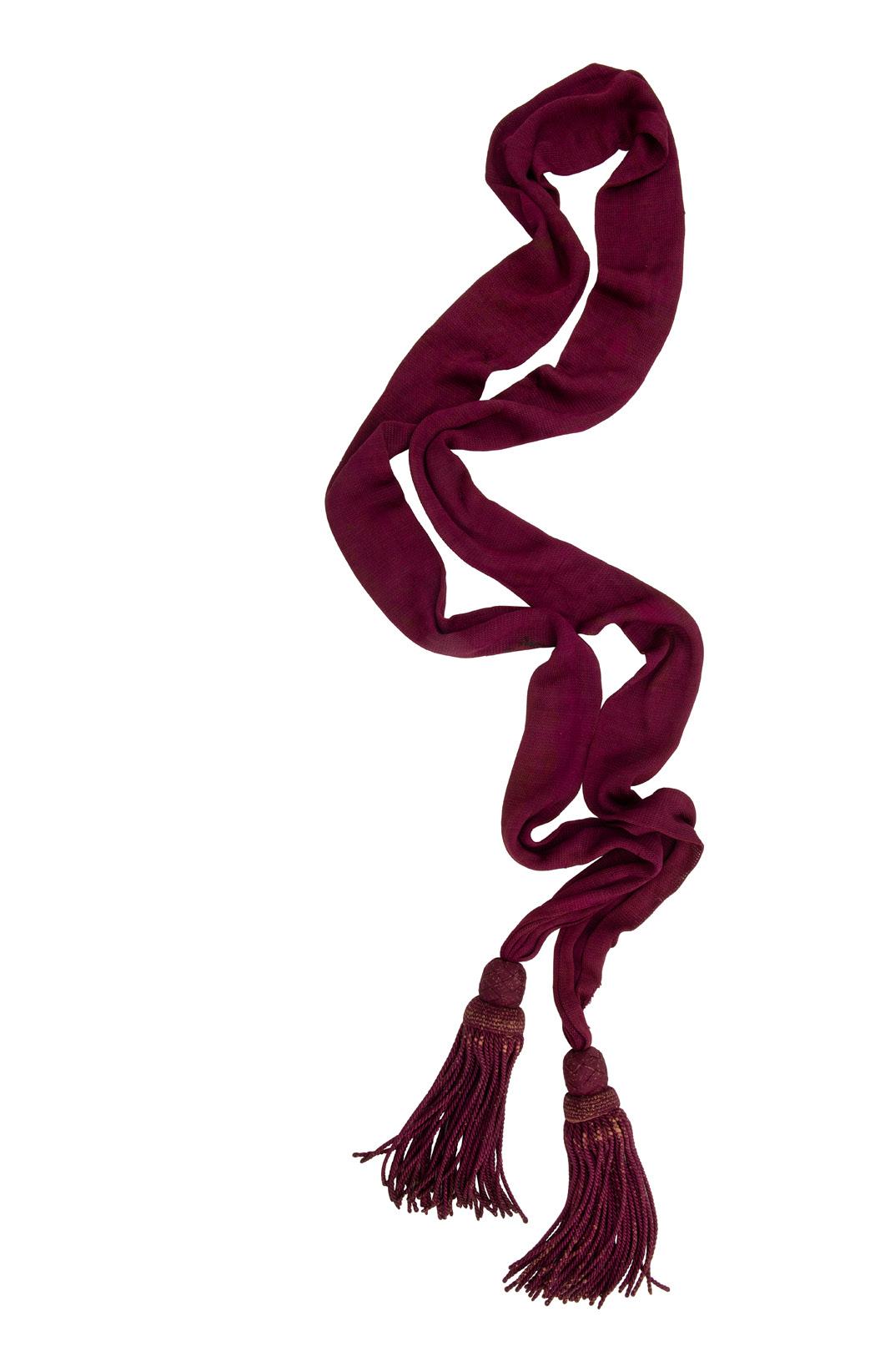
176 [CIVIL WAR]. 50 Union playing cards housed in Civil War soldier’s folk art carved case.
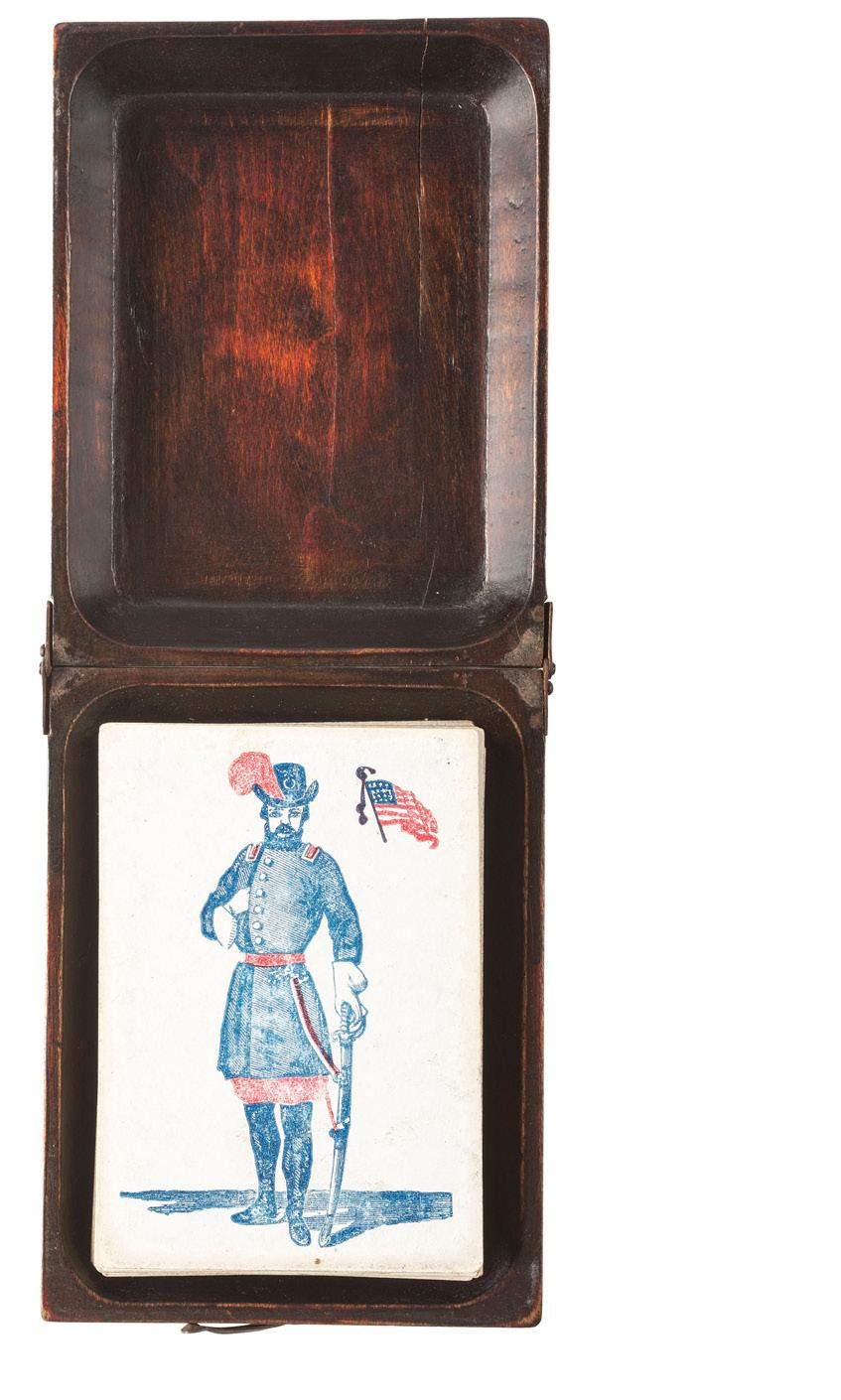
$600 - 800
175
[CIVIL WAR]. Prisoner of war carved cross out of mussel with fragment.
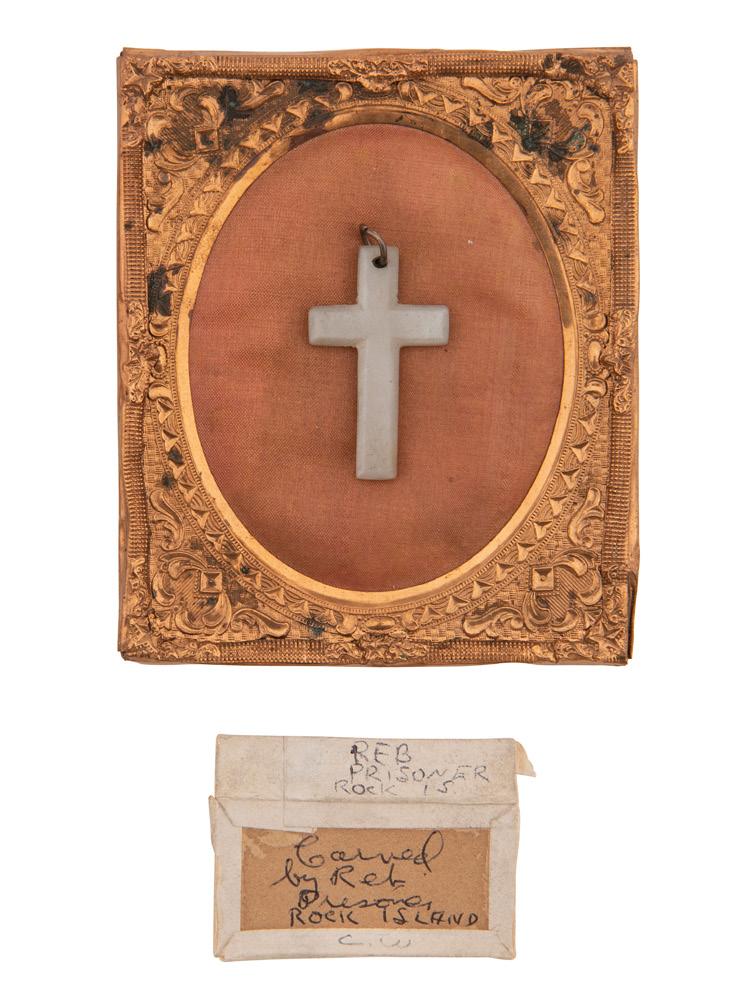
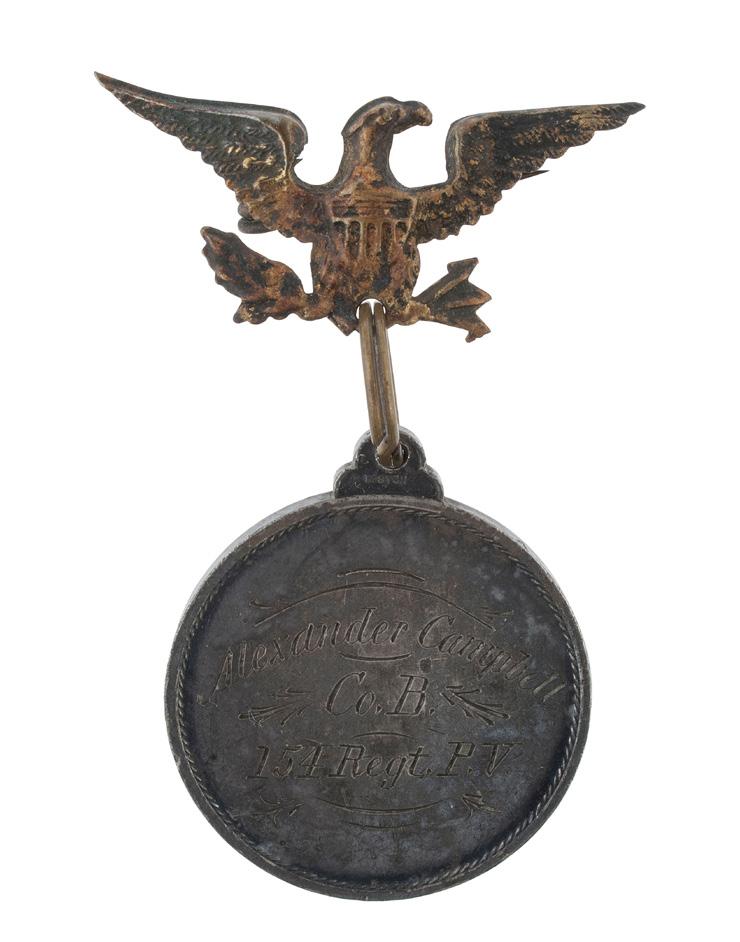
Provenance: Julian Converse (manuscript ledger sheet listing the item and its original purchase date).
Property from the Inventory of James C. Frasca
$400 - 600
177
[CIVIL WAR]. Officer’s sash worn by Lieutenant John Moore, 83rd New York Volunteer Infantry Regiment, WIA at Fredericksburg.
Provenance: Julian Converse (ledger sheet and original letter of purchase dated November 1959).
Property from the Inventory of James C. Frasca
$600 - 800

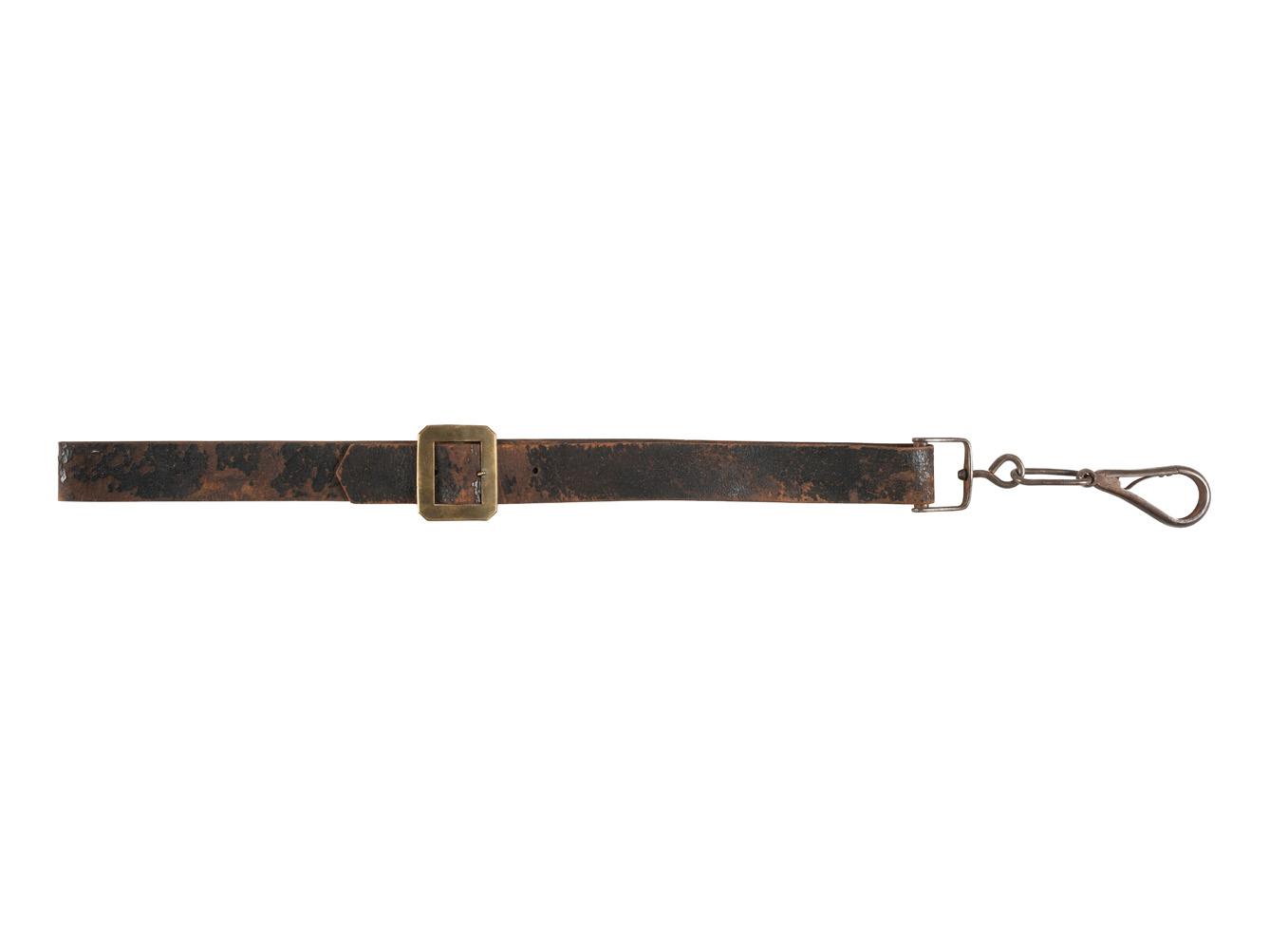

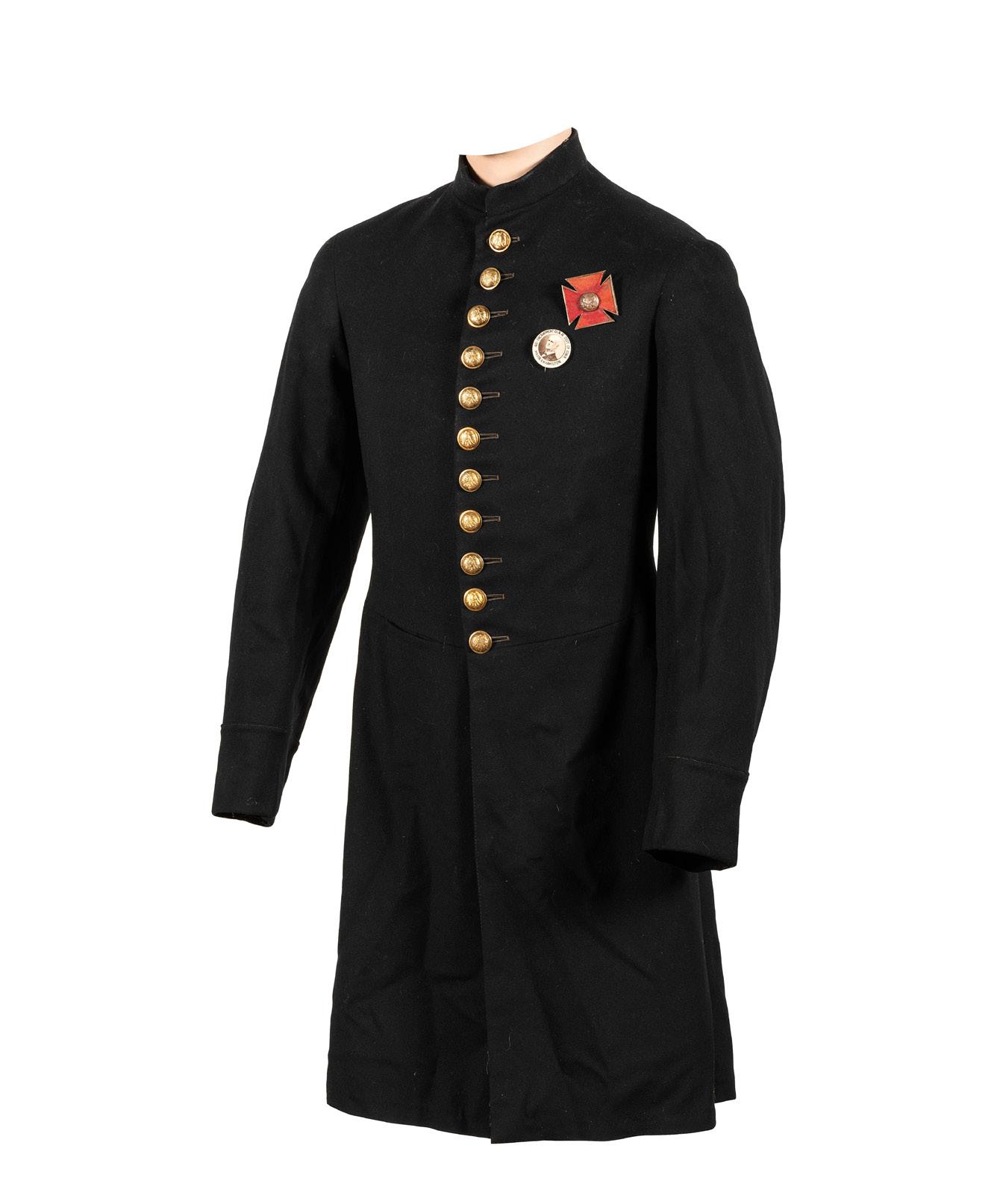

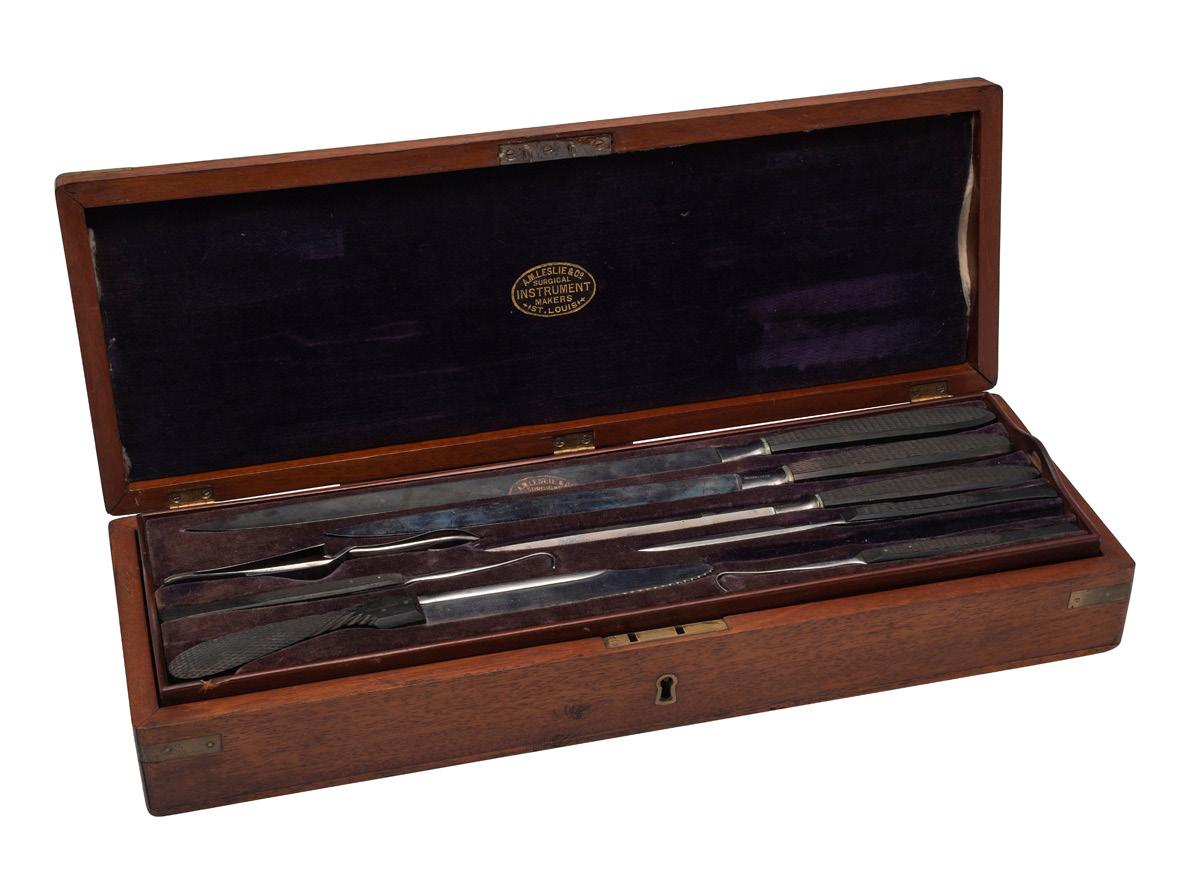
185 [FLAGS - CIVIL WAR]. 34-star “Great Star” pattern American flag. Ca 1861-1863.
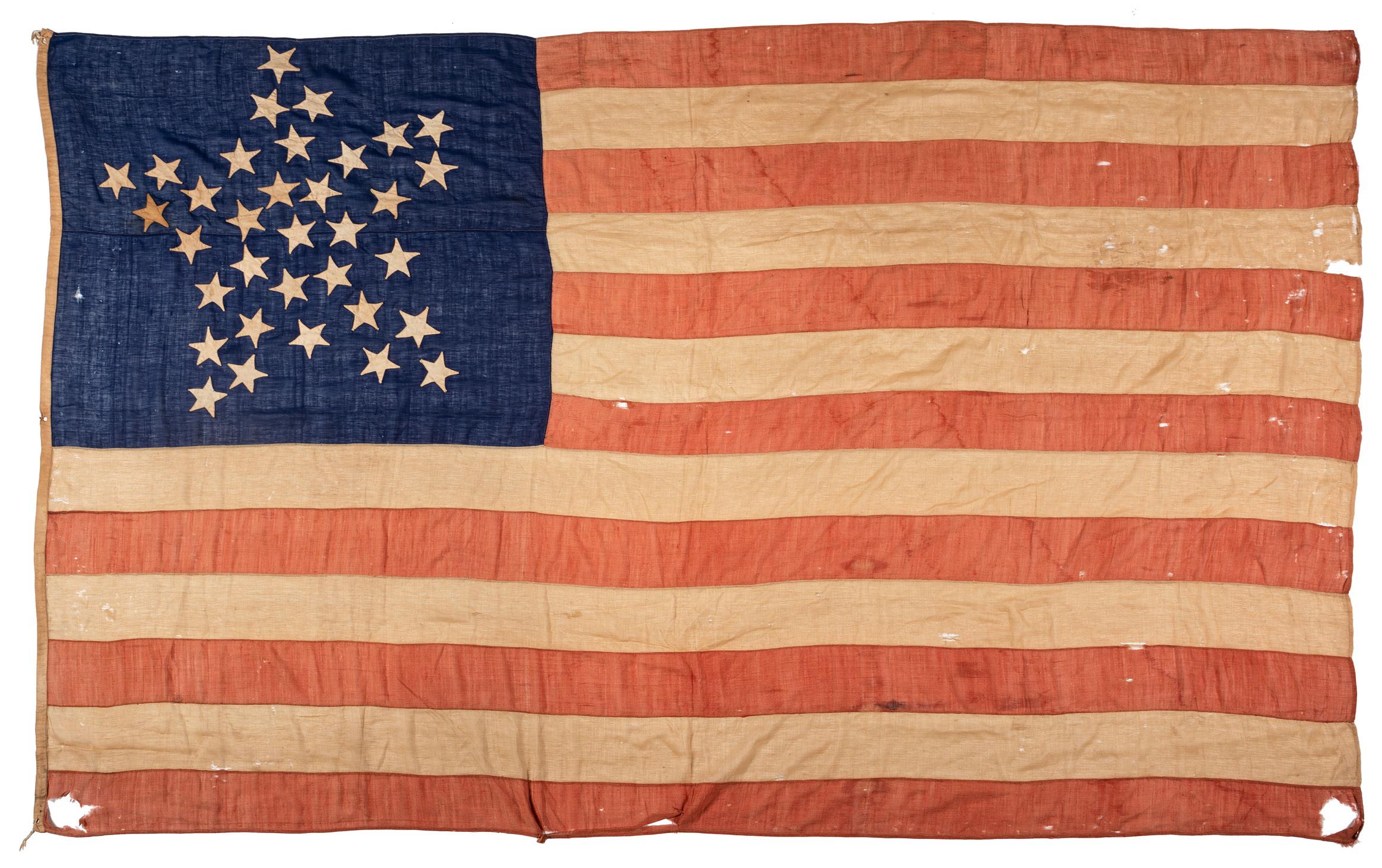
84 x 138 in. hand-sewn wool flag with 34 machine-sewn, double-appliquéd cotton stars organized in the “Great Star” pattern. Hoist is cotton, with 3 whip-stitched grommets.
$8,000 - 10,000
187 [AMERICANA]. Double-sided painting on canvas depicting the seal of the State of Massachusetts. Ca last quarter 19th century.
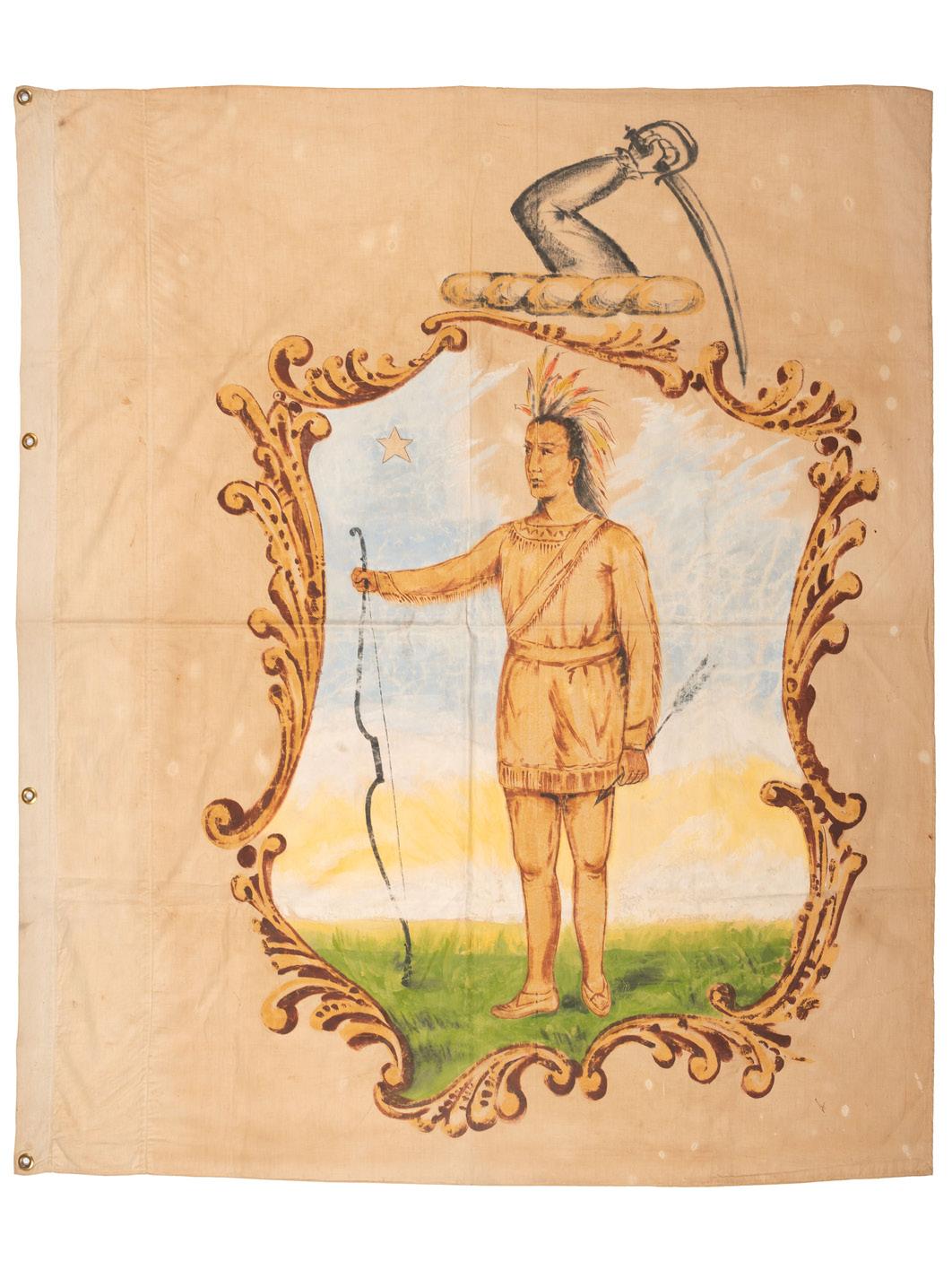
56 x 66 in. cotton canvas banner with the seal of the State of Massachusetts painted on each side. The banner includes a cotton hoist with 4 metal grommets, indicating that it was likely made to be flown on a pole for a political rally or celebration.
Property from the Collection of Jonathan Holstein, San Francisco, California
$700 - 1,000
186 [FLAGS - CIVIL WAR]. 34-star American flag. Ca 1861-1863.
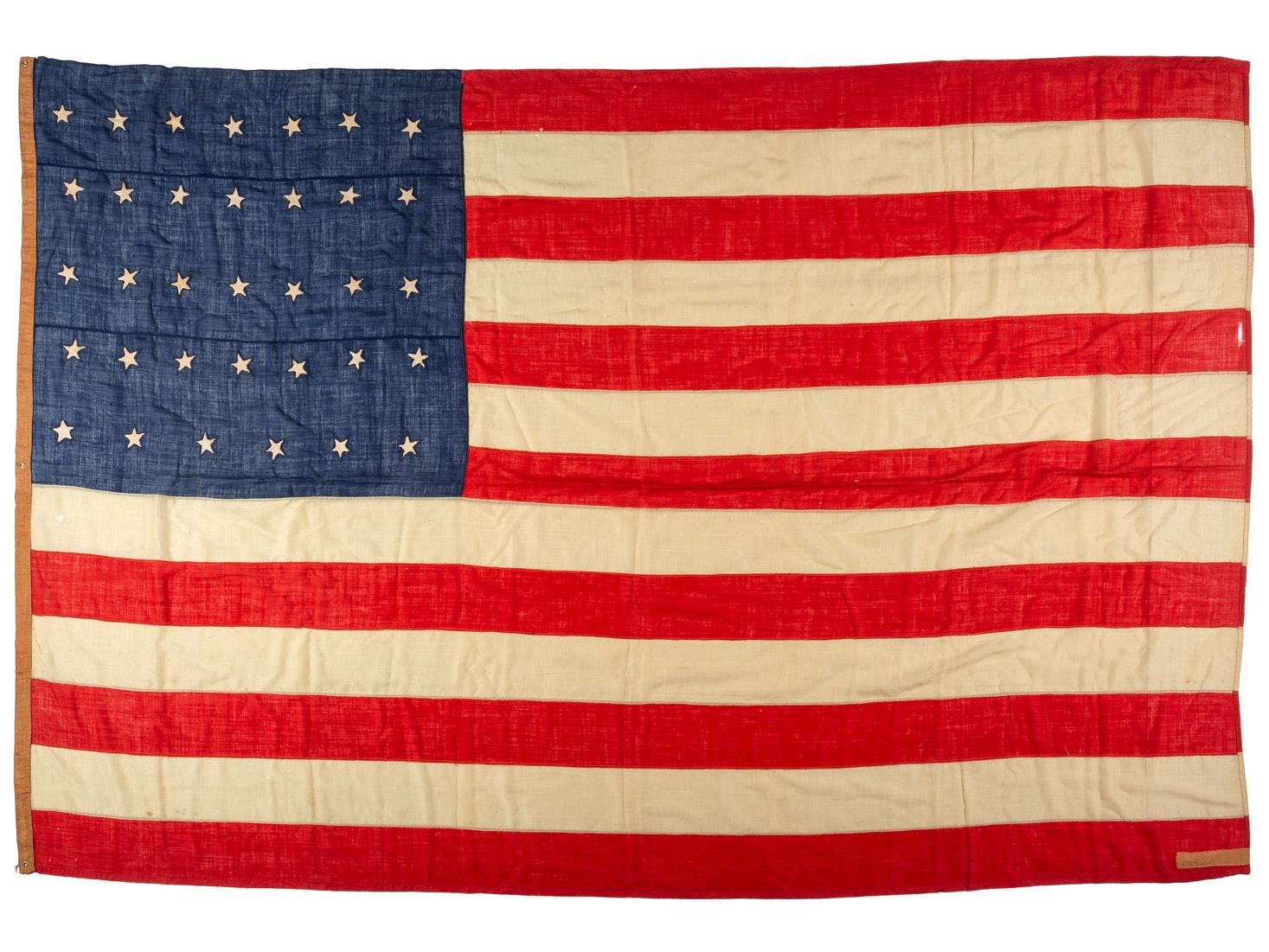
94 x 150 in. machine-sewn wool flag with 34 handsewn, single-appliquéd cotton stars configured in 7/7/7/7/6 horizontal rows. Hoist is canvas, with 3 metal grommets. The initials “TBS” are embroidered on the hoist.
$1,500 - 2,500
188

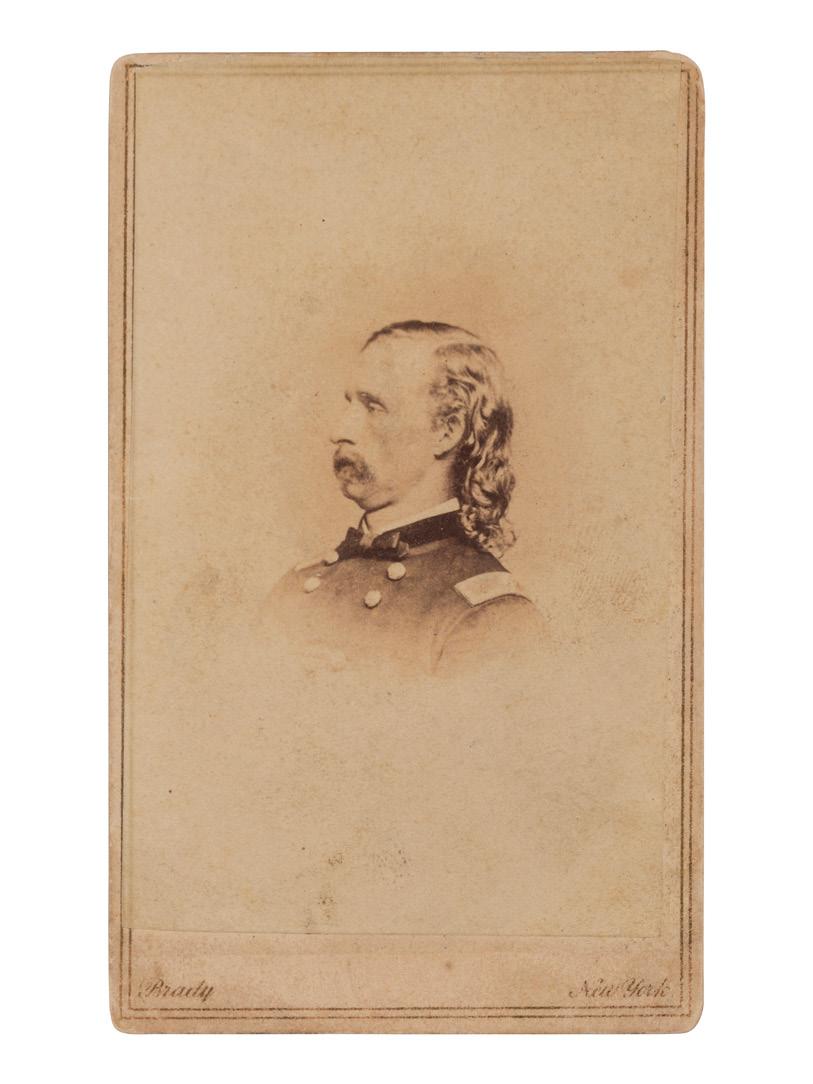
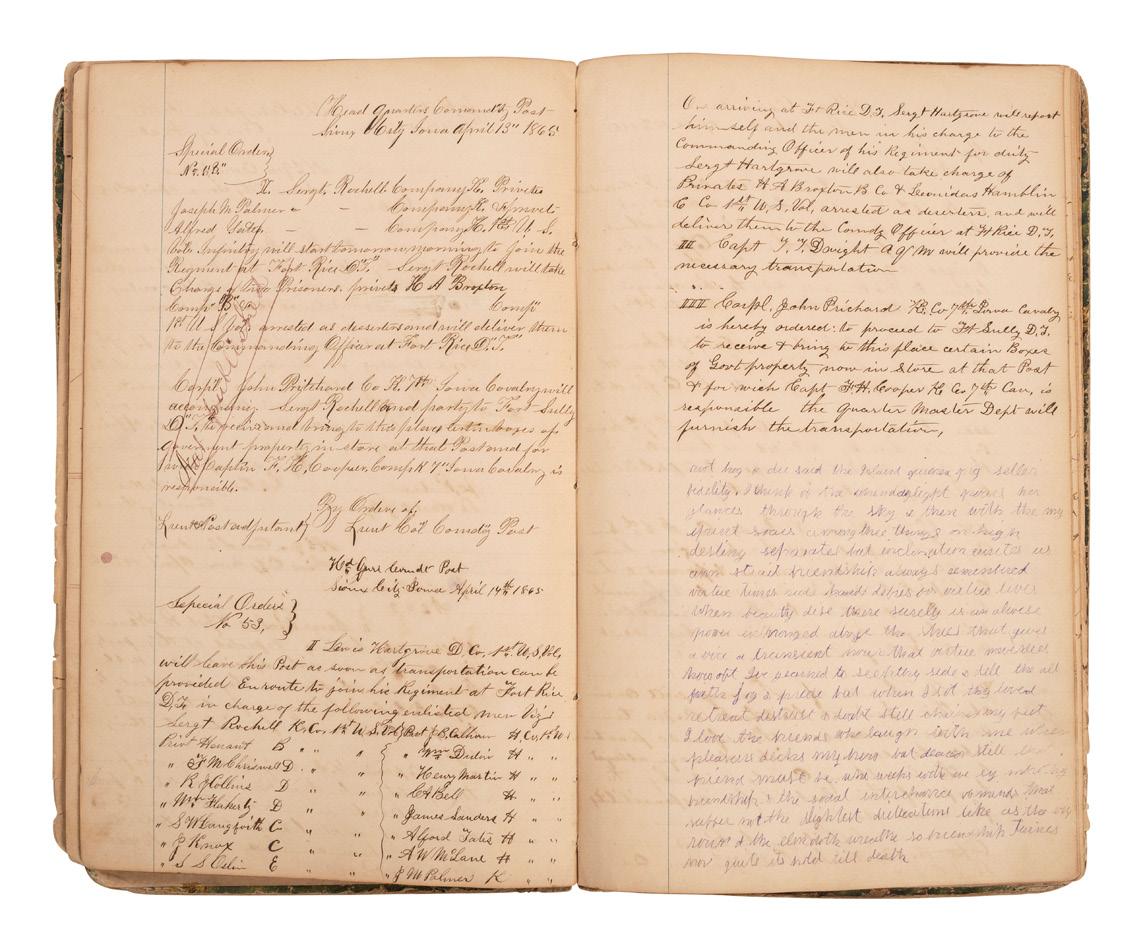
$400
$600 - 800
189
$800
$500 - 700
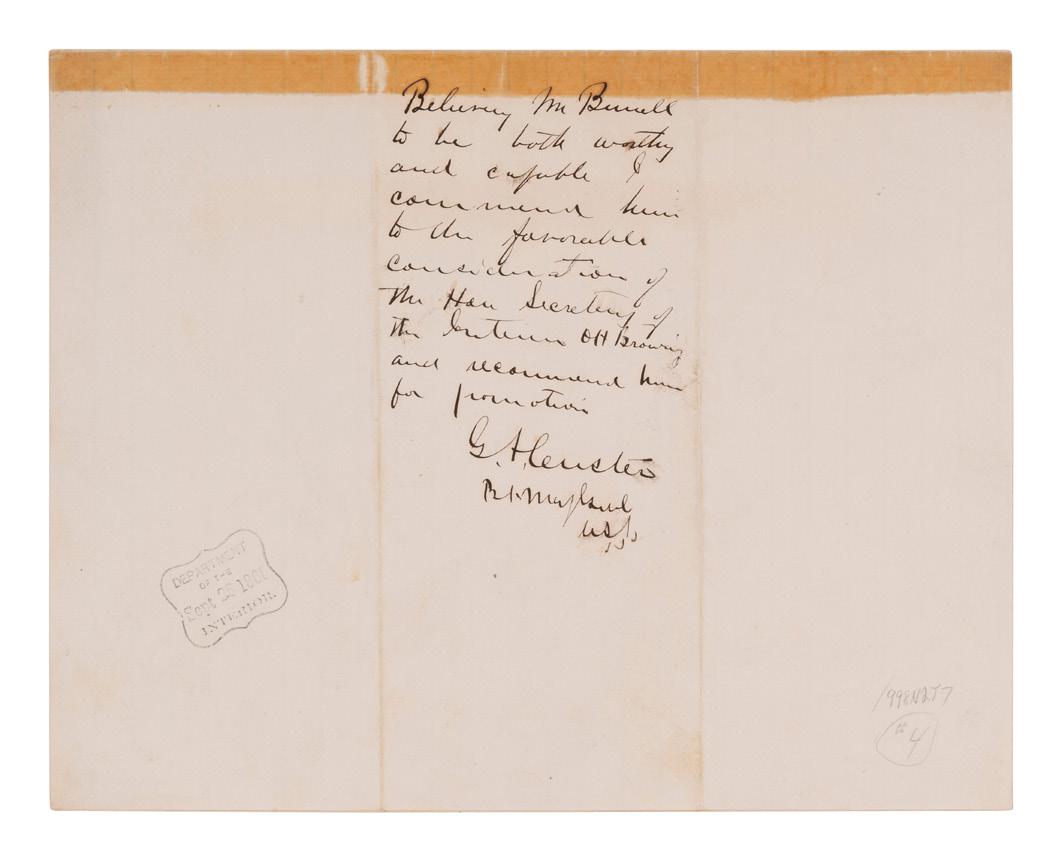
$3,000 - 5,000
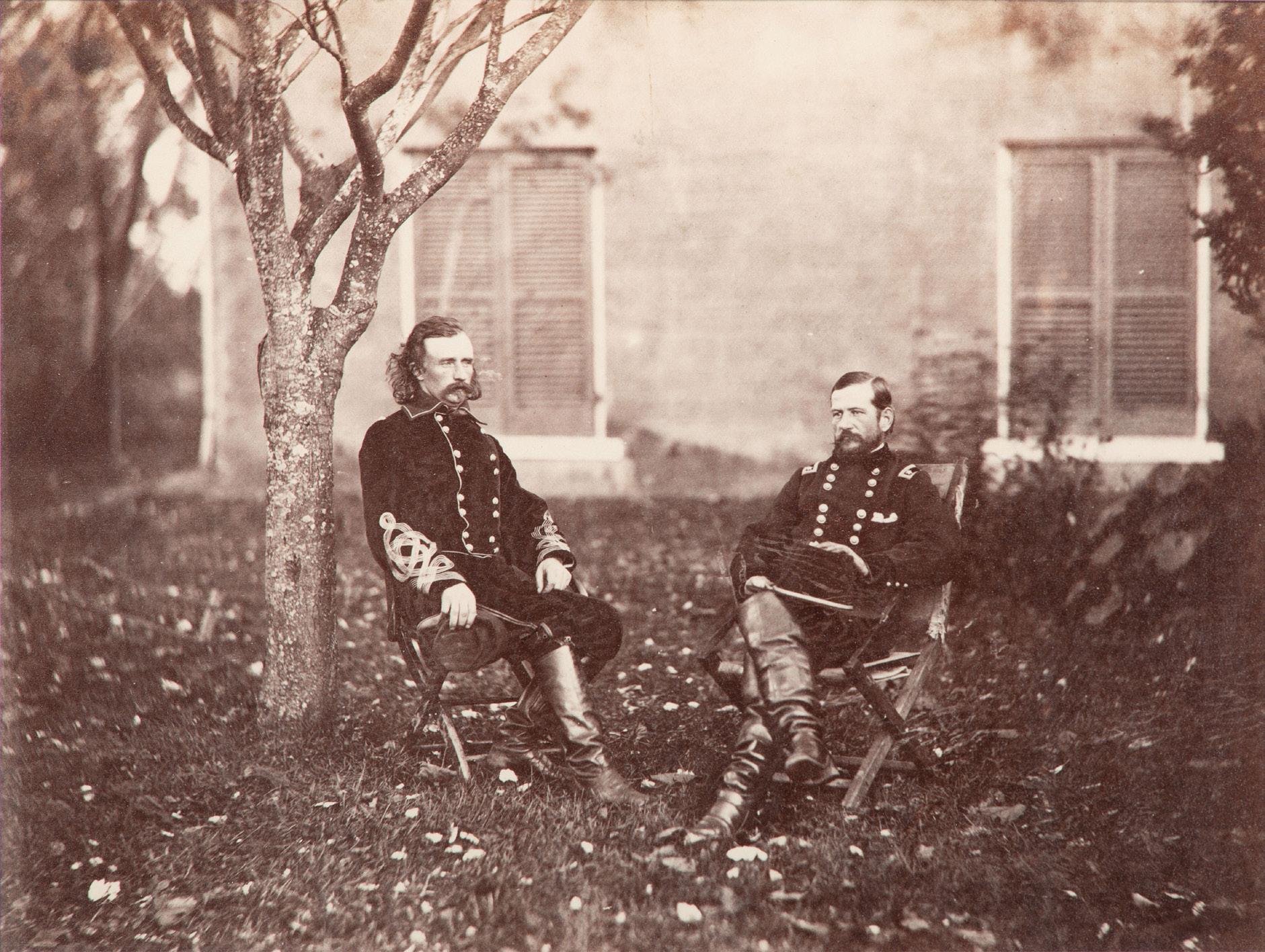
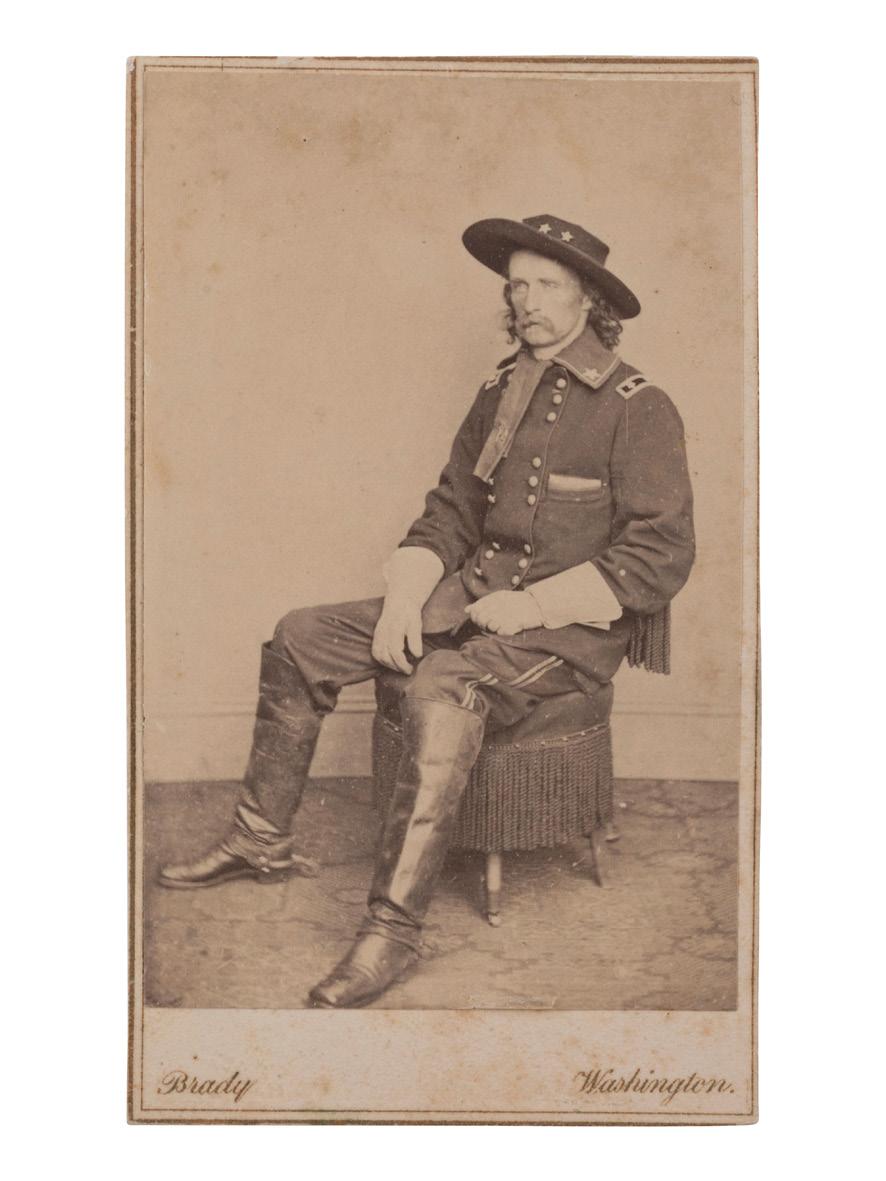
$1,000 - 1,500

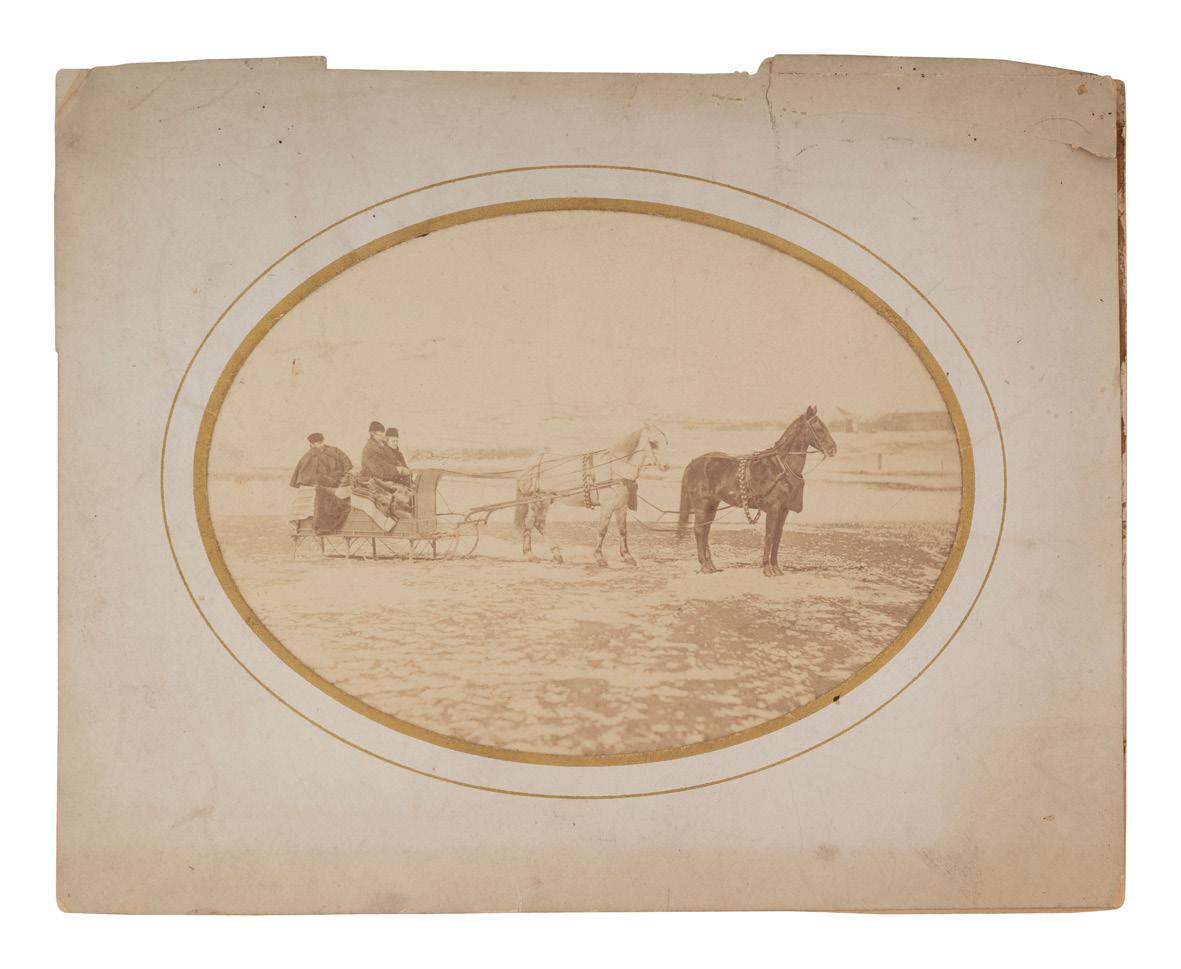
Property
$300
Provenance: Descended directly
$1,000 - 2,000

$500 - 700
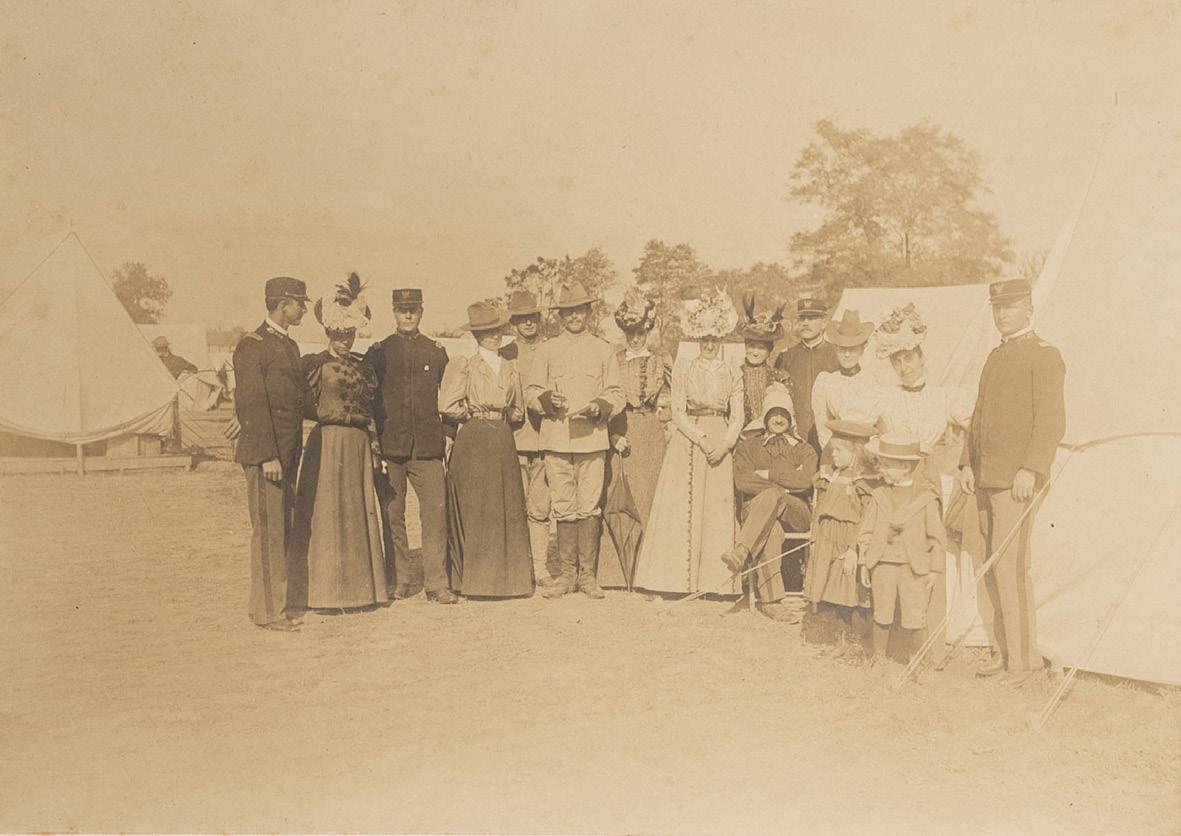
$300

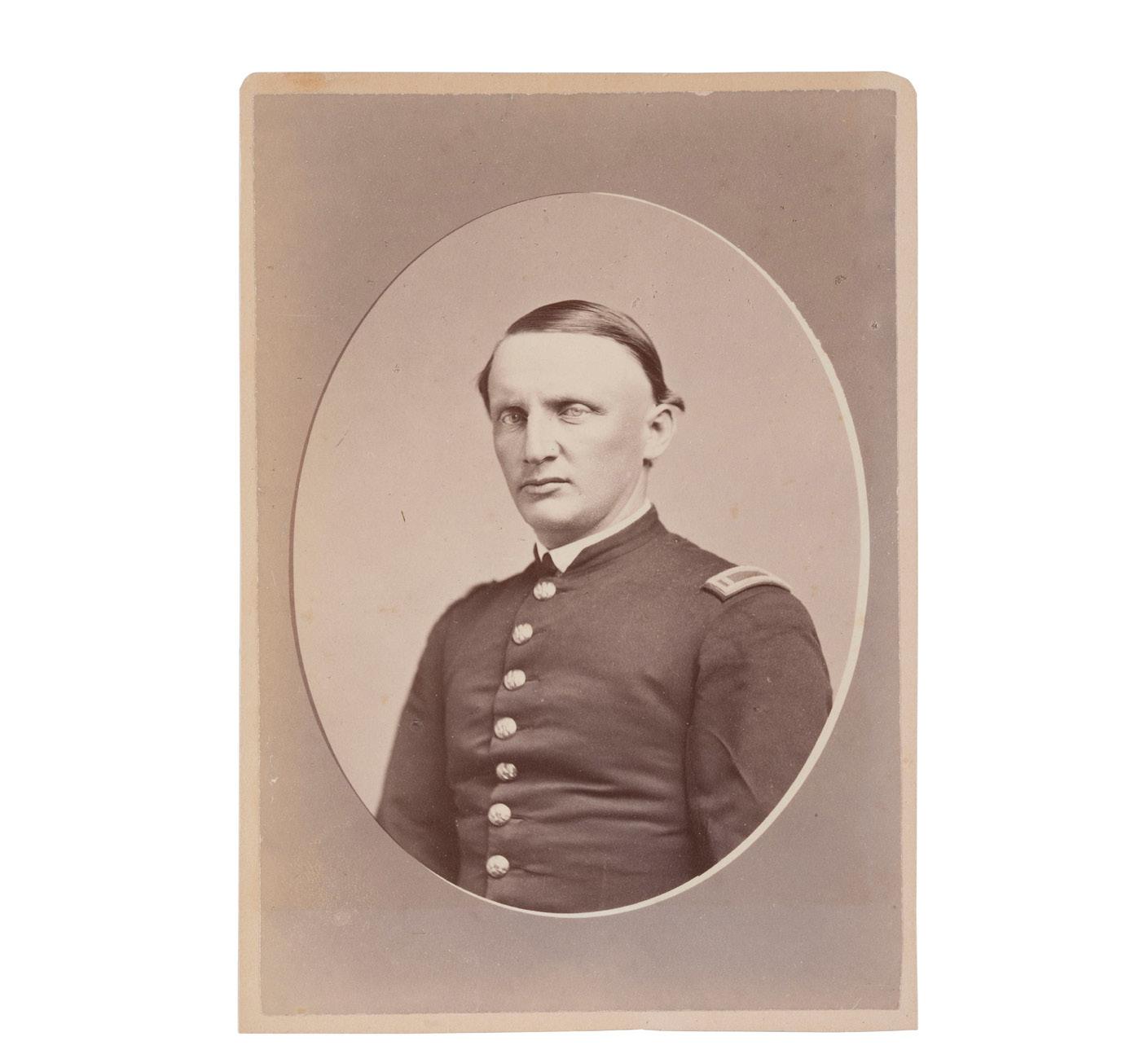
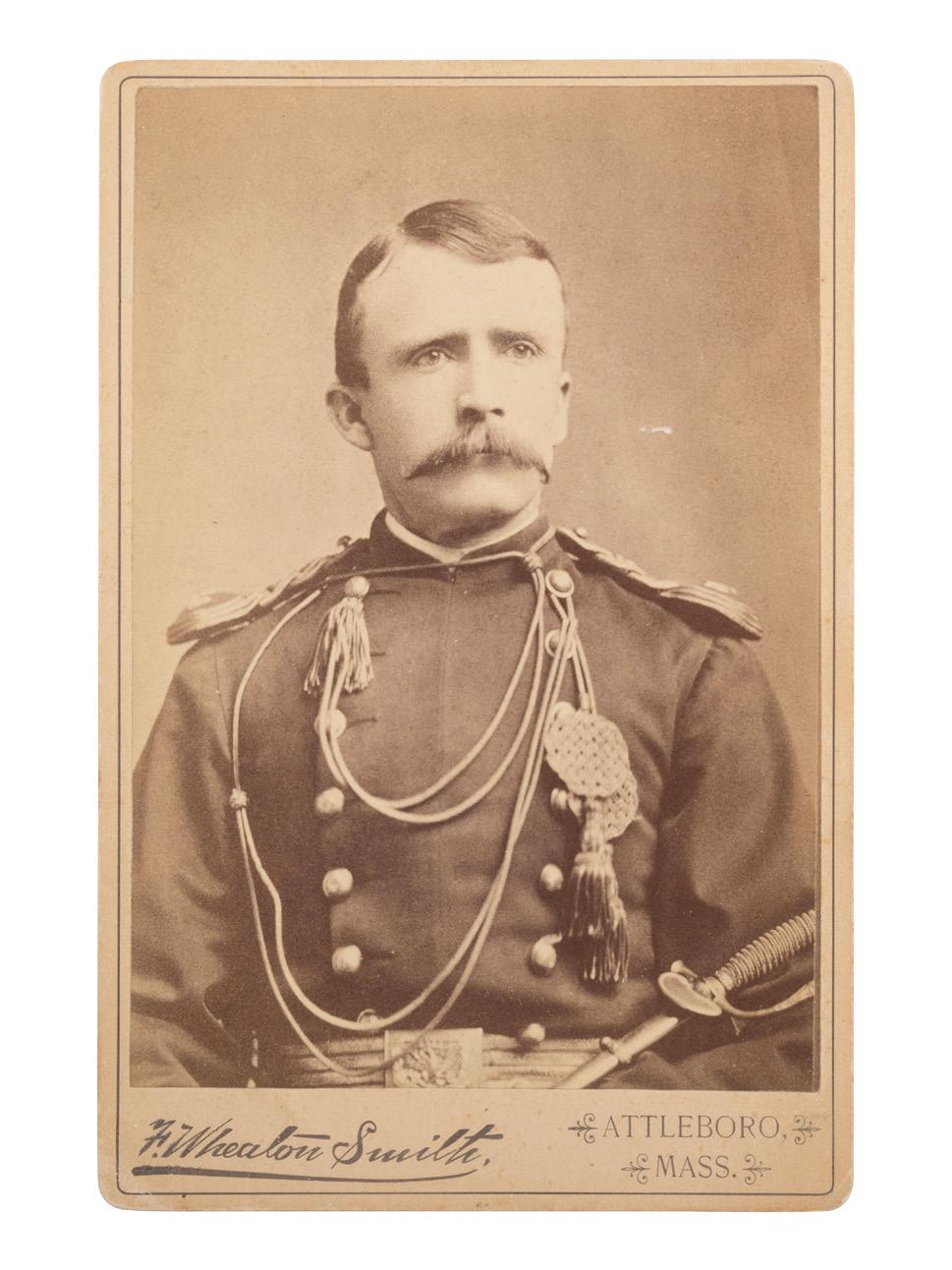
200
[LATE INDIAN WARS]. GRABILL, John C.H. (1849-1903), photographer. “In Camp.” The 7th US Cavalry in camp at Fort Meade, Dak., under marching orders to Ft. Riley. Deadwood & Sturgis, Dakota Territory, 1888.

Property from the James Milgram, M.D., Collection of Broadsides, Ephemeral Americana, and Historical Documents
$500 - 700
201
[LATE INDIAN WARS]. GRABILL, John C.H. (1849-1903), photographer. Fort Meade, Dak. Bear Butte, 6 miles distant. Located in “Black Hills.” [South Dakota],1888.

Property from the James Milgram, M.D., Collection of Broadsides, Ephemeral Americana, and Historical Documents
$300 - 500
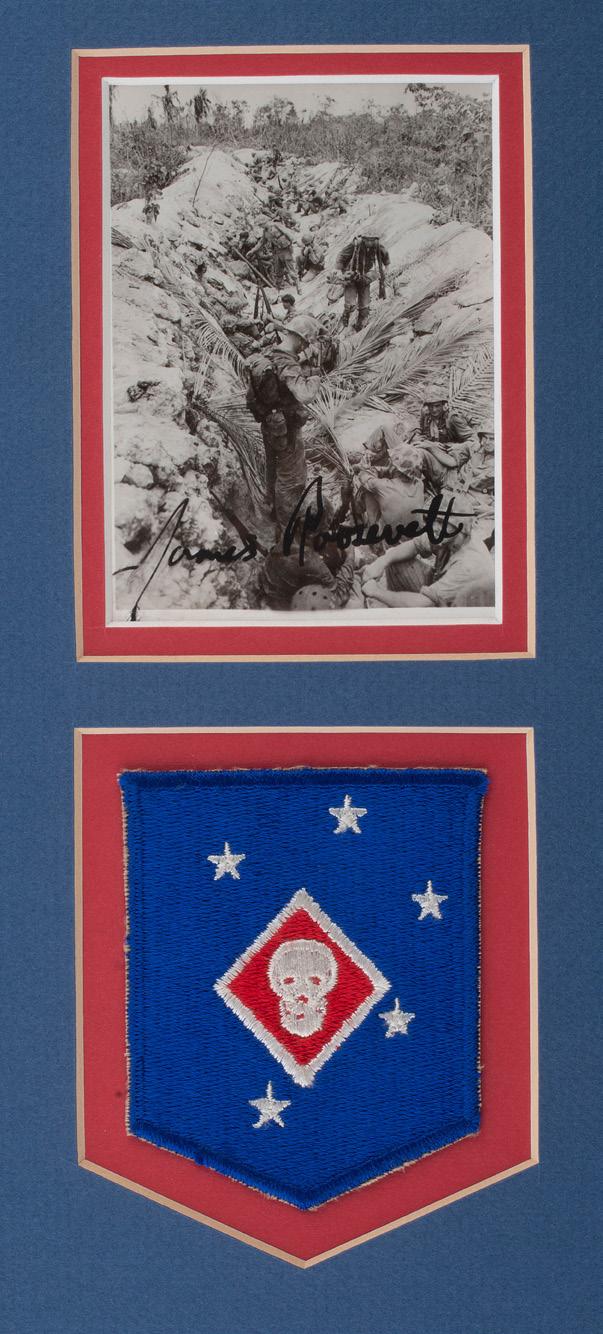
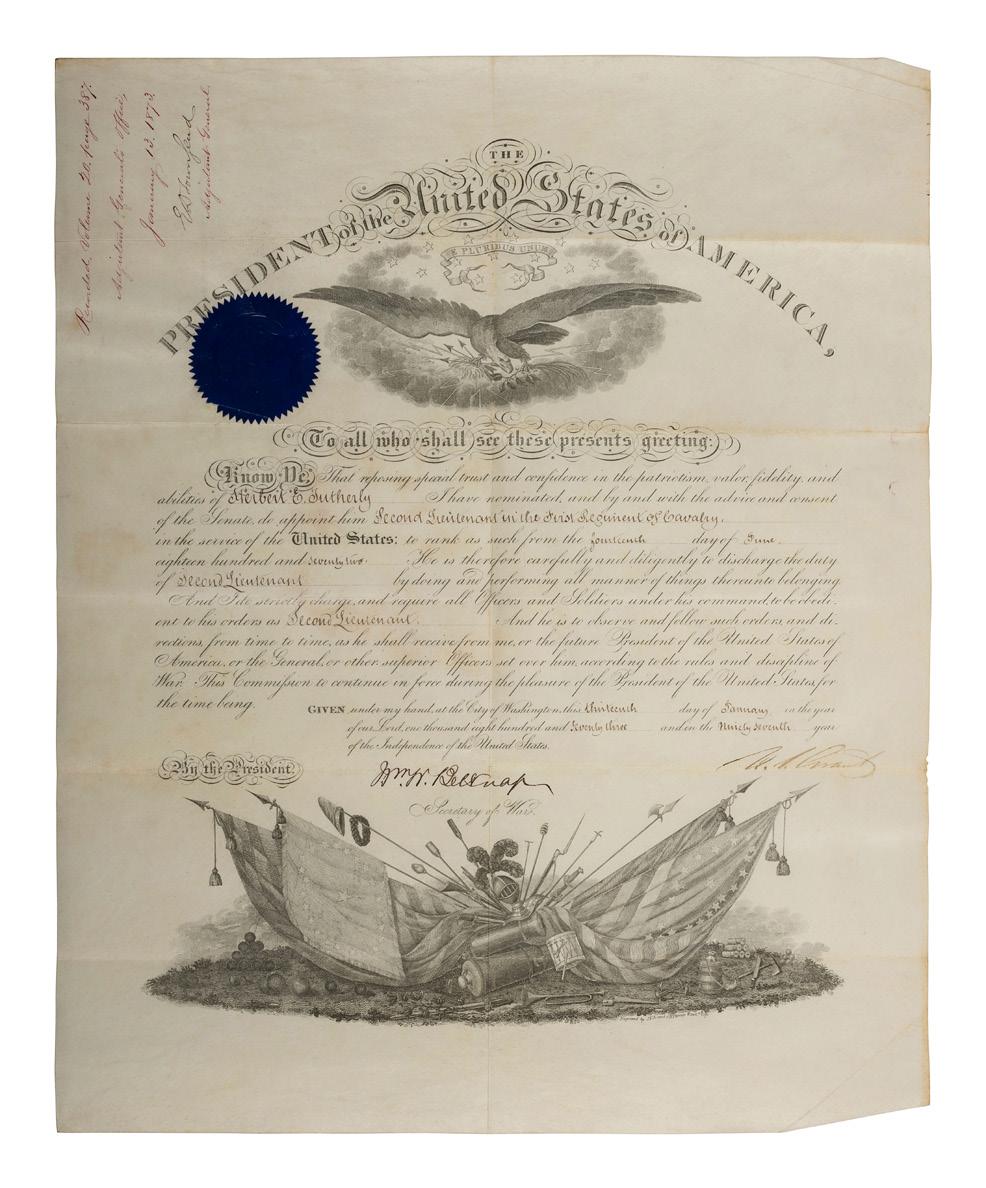

206
[WORLD WAR II]. Extensive US Navy album identified to James Sumner Douglass, Yeoman First Class, USS Lavaca, featuring pre-war and war-date photographs of Tinian Island, aerial reconnaissance, atomic bomb carriers, and more.


$400 - 600
207
[WORLD WAR II]. Original cable from Reims announcing the German military’s unconditional surrender. 7 May 1945.
Provenance: Acquired by the consignor directly from Tech Sergeant Porter E. Whitney, who was supervising General Eisenhower’s QED top secret red line net at the Supreme Allied Command headquarters in Versailles. Whitney was working at his terminal when he received the teletype transmission offered here from Eisenhower’s SHAEF forward office at Reims, the site where the historic agreement was signed.
$800 - 1,200
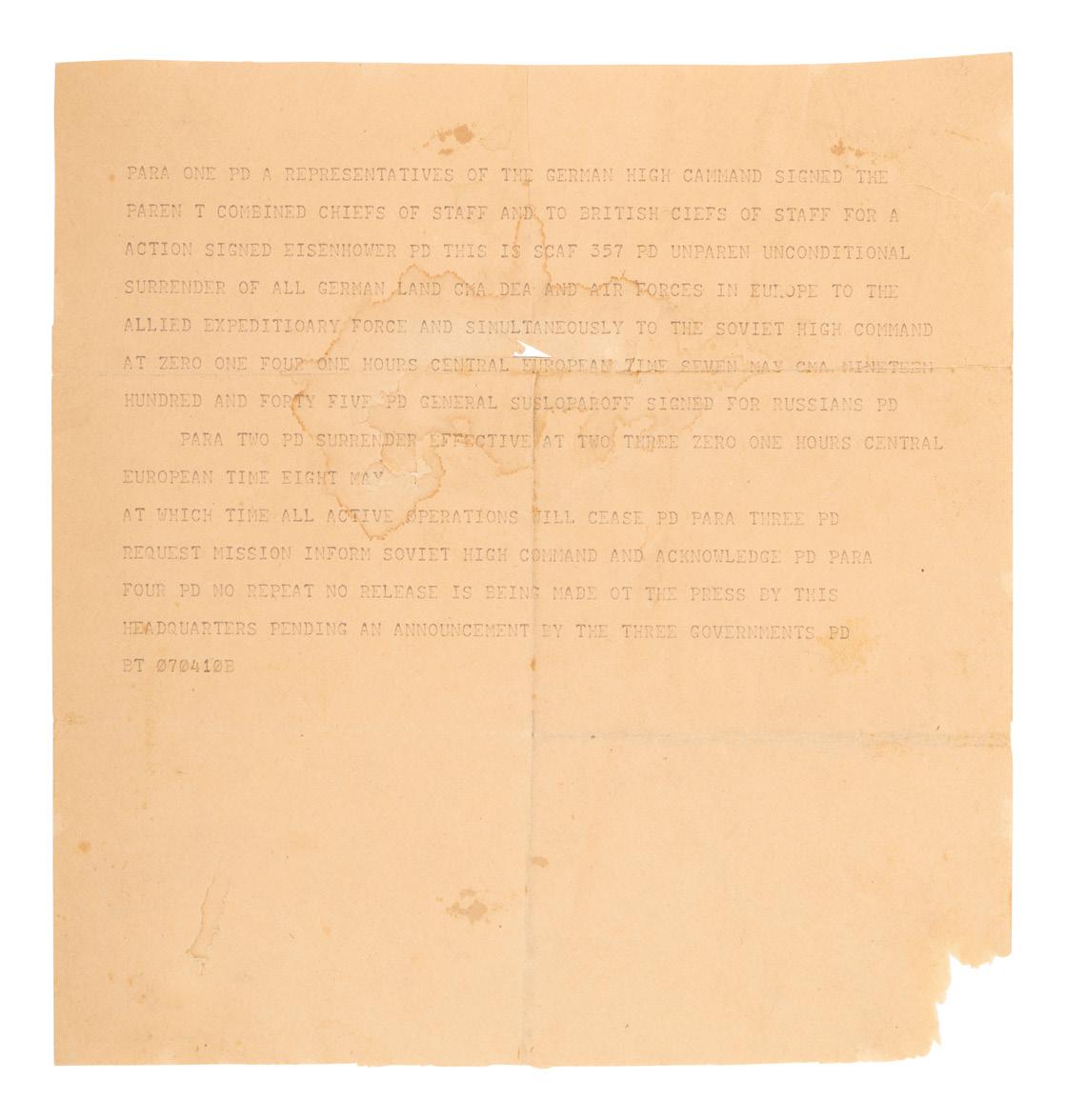
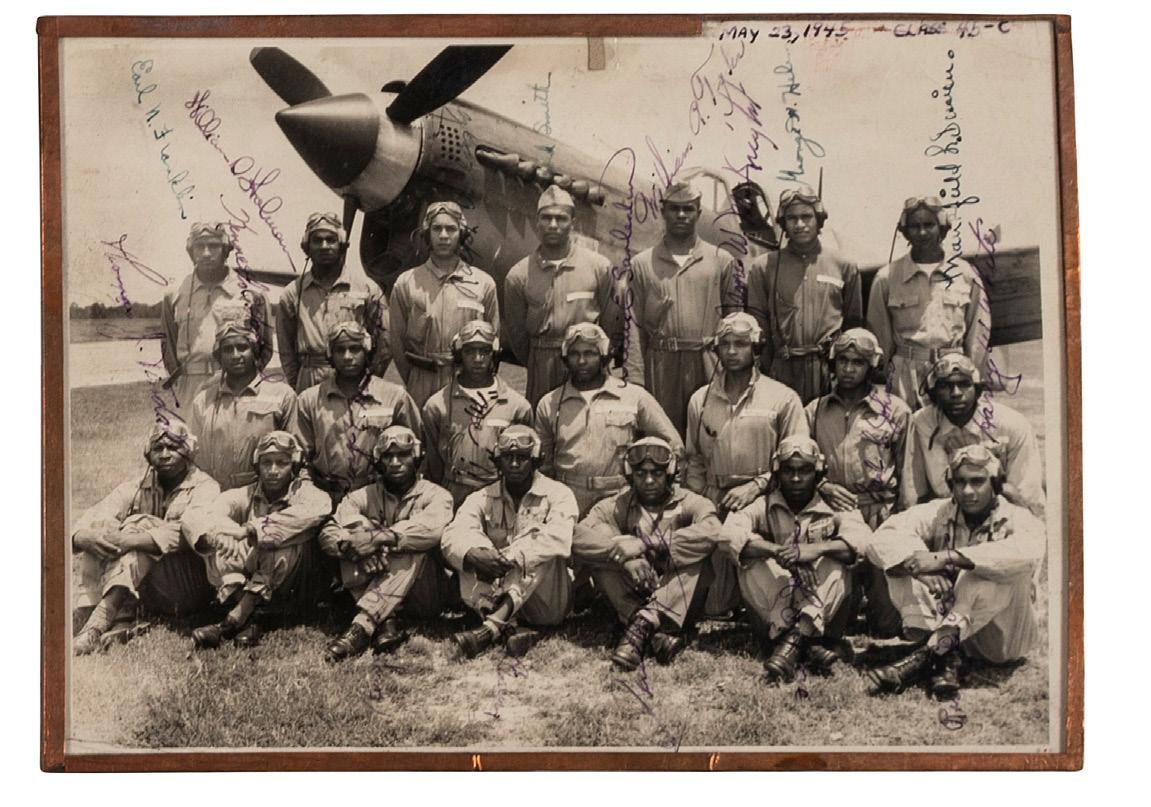
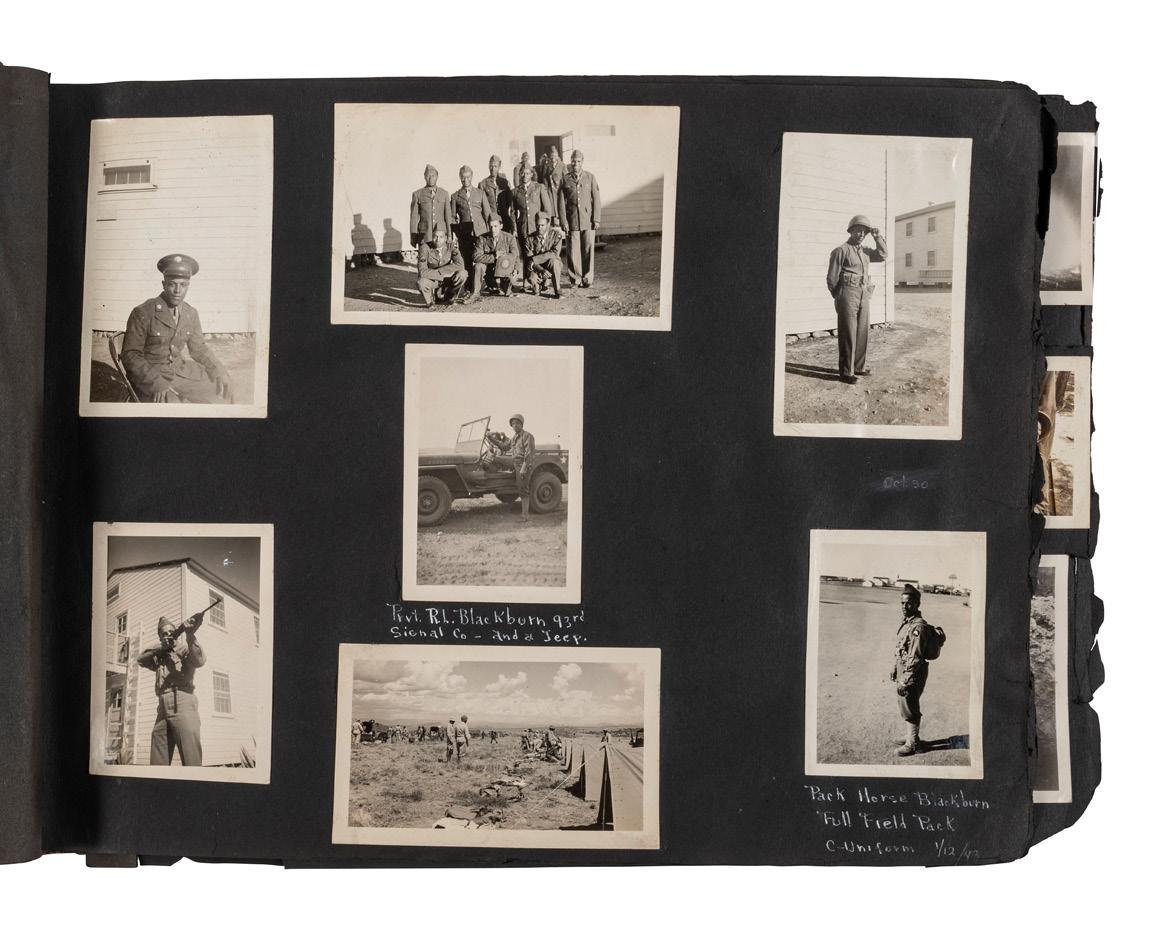
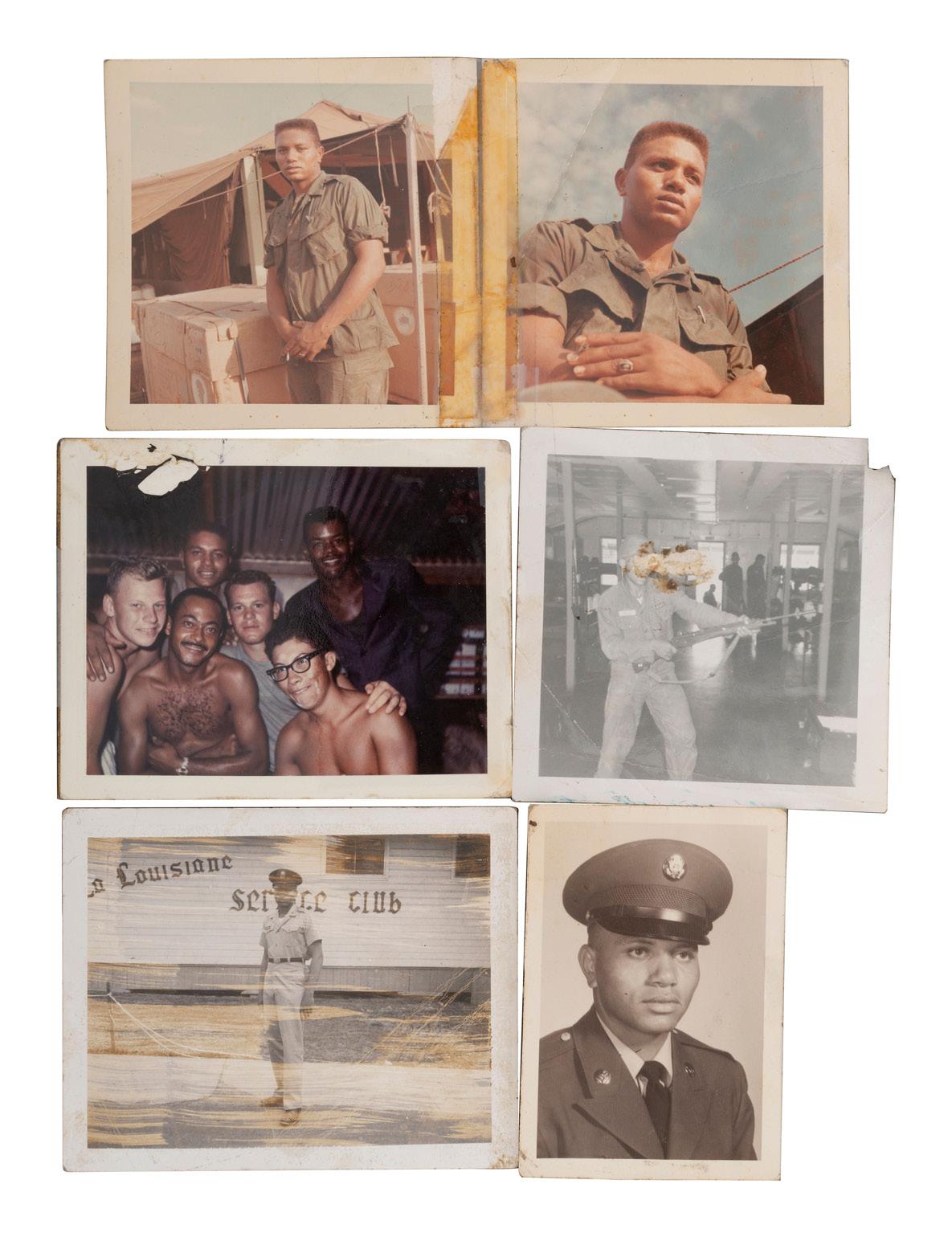

210
[UPRISING OF ENSLAVED AFRICANS]. American Eagle. No. 1. Salem, MA: Thomas C. Cushing, 5 January 1790.Containing report of an uprising in Demerara, a colony of the Dutch West Indian Company.

$400 - 600
211
[SLAVERY & ABOLITION]. Manuscript bill of sale for two enslaved individuals, Dine and Cato. New Jersey, 12 April 1802.
$500 - 700
212
[SLAVERY & ABOLITION]. Manuscript bill of sale for an enslaved man named Cuff. New Jersey, 3 April 1821.
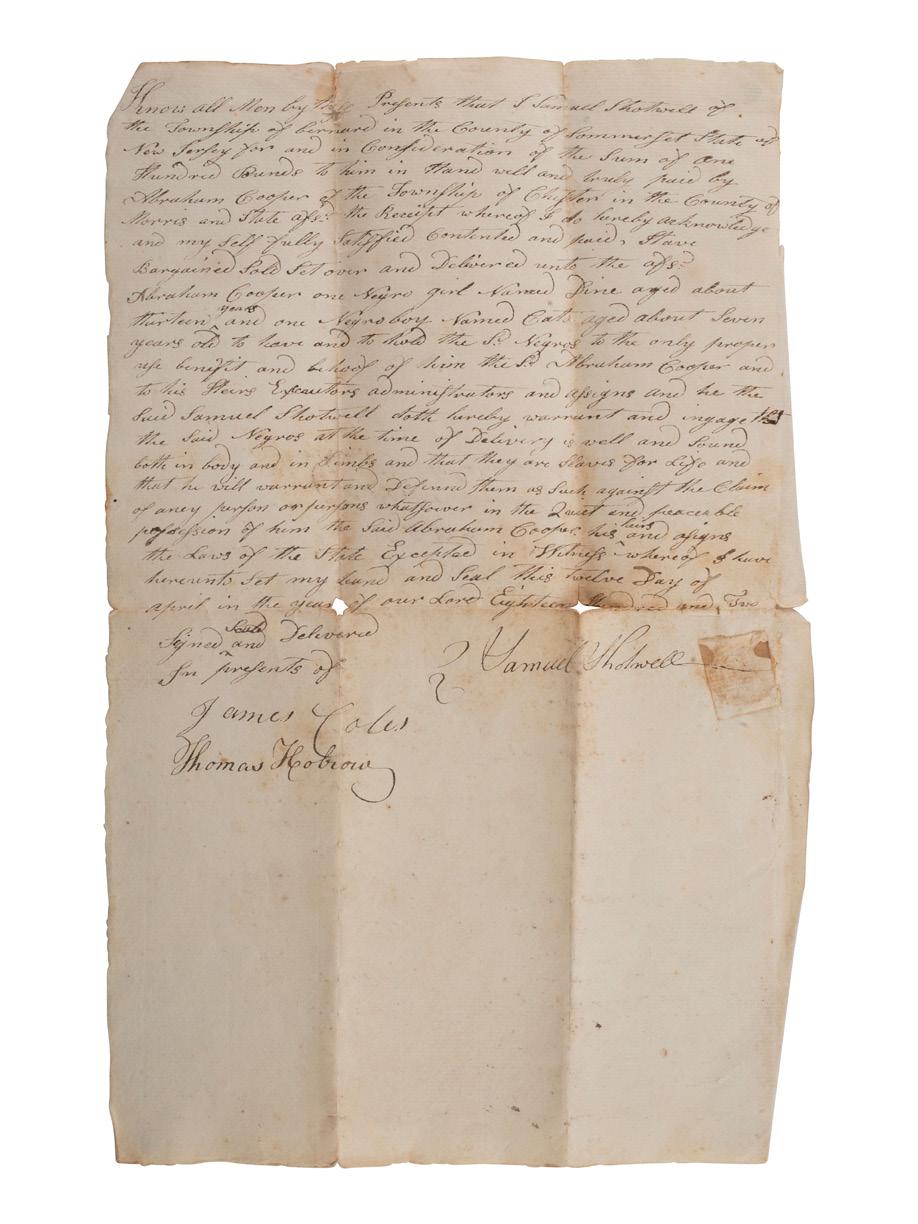
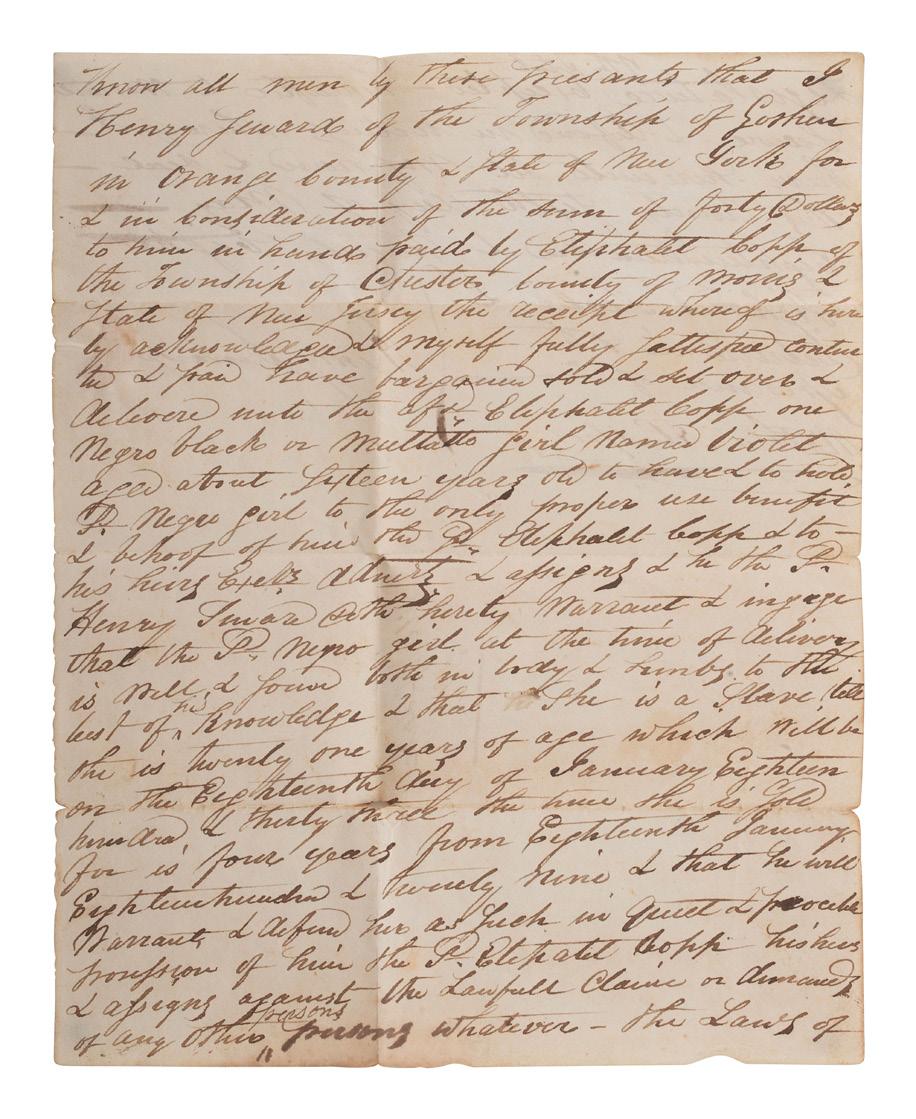

$500 - 700
213
[SLAVERY & ABOLITION]. Manuscript bill of sale for an enslaved girl named Violet. [New York or New Jersey?], 6 May 1828.
$500 - 700
$800 - 1,000

$300 - 500
Property
$400 - 600
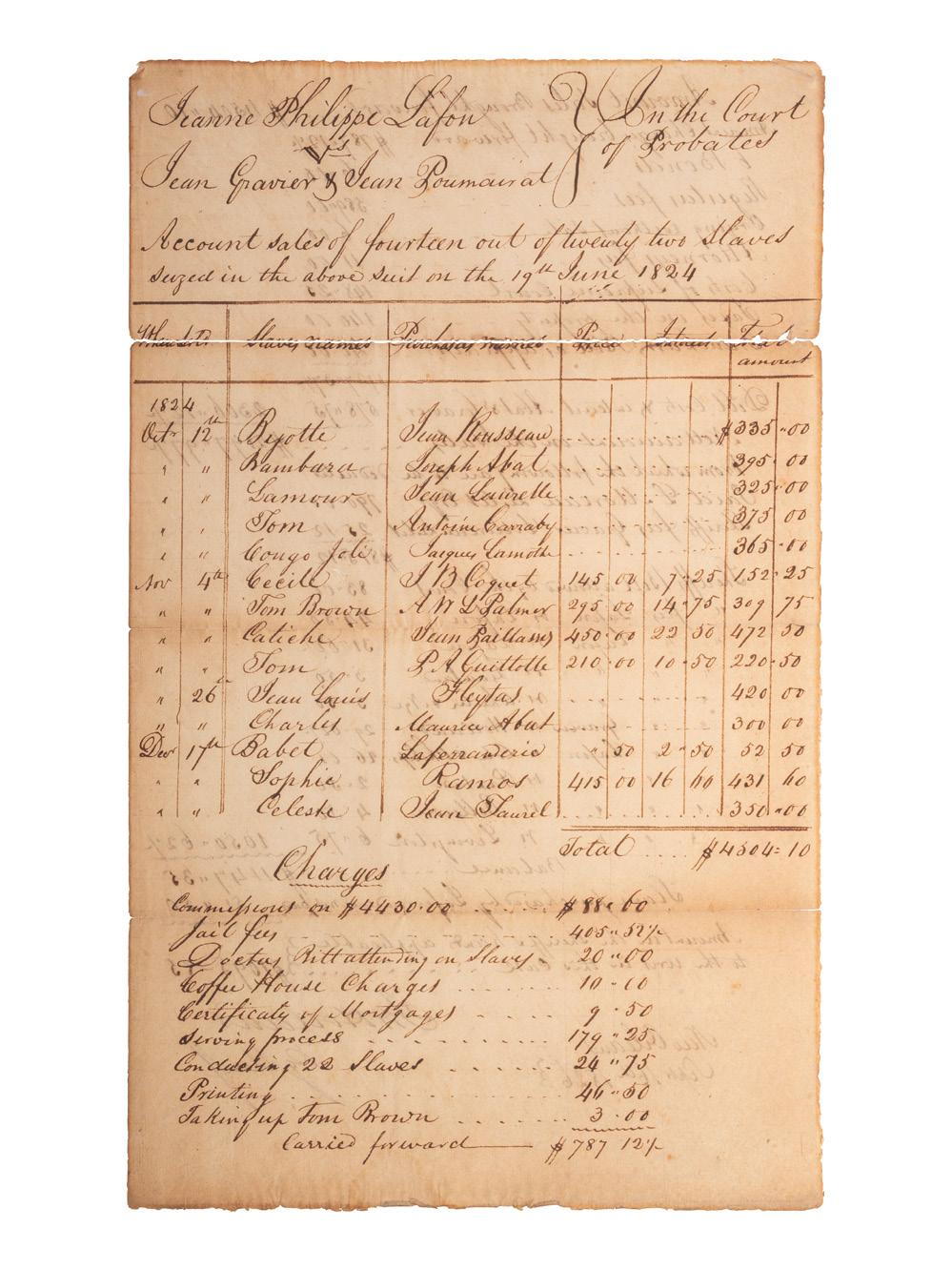

217
[SLAVERY & ABOLITION]. 2 manuscript documents: Auction record and inventory from the estate of Owen Fillyaw, with over 8 named enslaved individuals. [North Carolina?], 1830s.

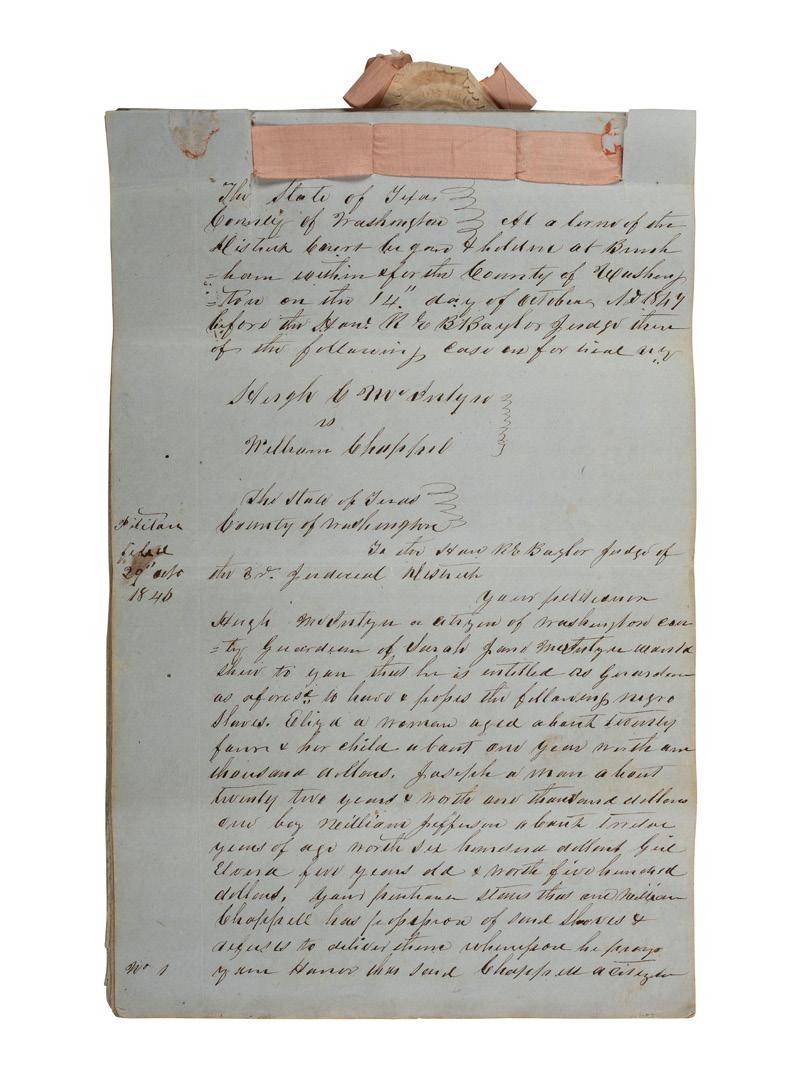
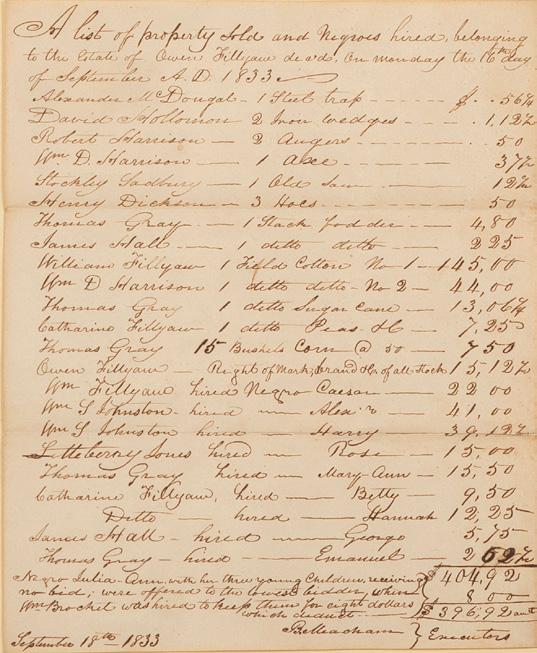
$500 - 700
218
[AFRICAN AMERICANA - TEXAS]. 46-page legal document regarding enslaved individuals. Washington County, TX, 1846-1848.
Property from the Collection of Dr. Brant Mittler
$500 - 700
219
[SLAVERY & ABOLITION]. DAVIS, Hector. Autograph letter signed outlining the market for enslaved persons. Richmond, VA, 24 May 1858.
$2,000 - 4,000
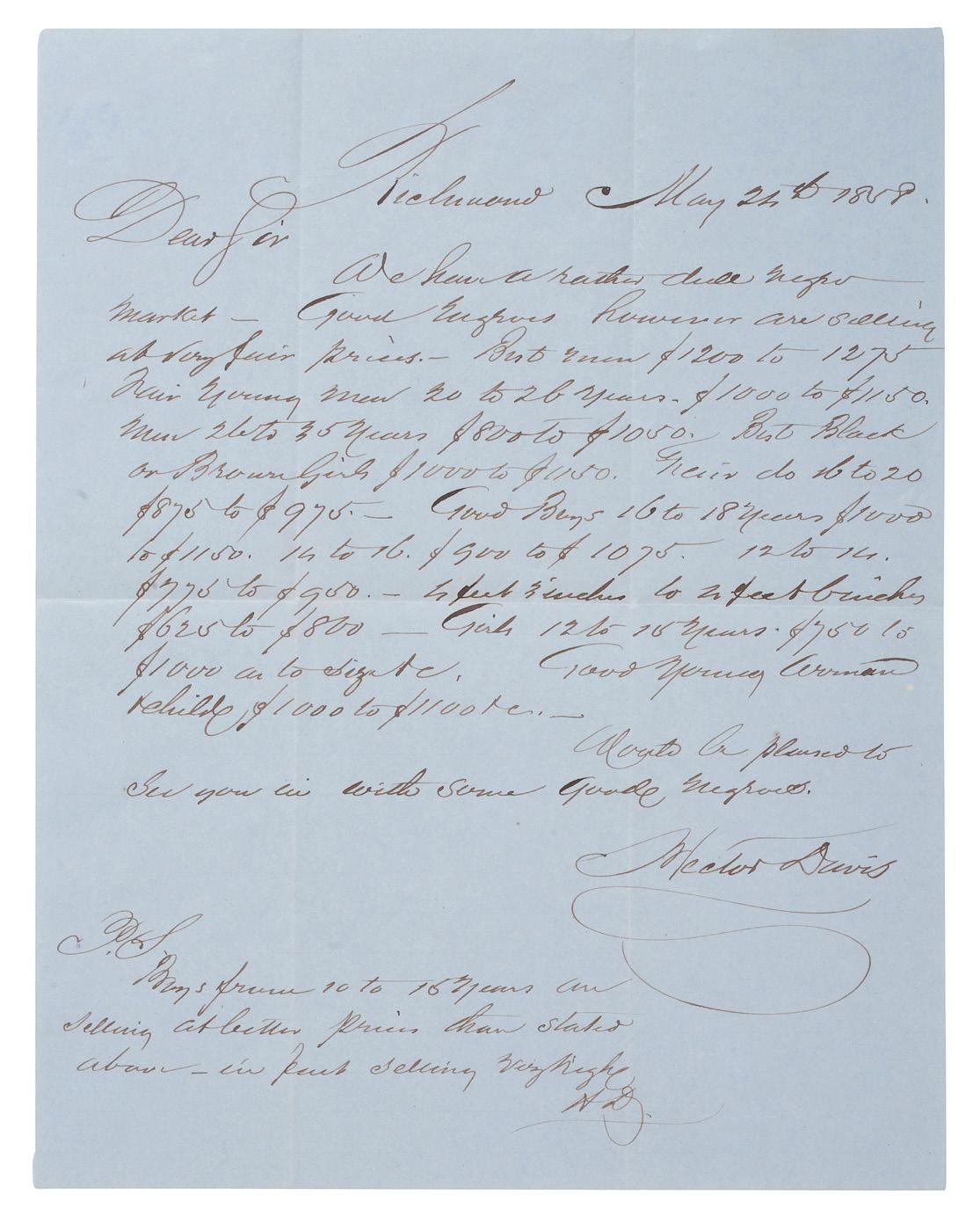
220 [SLAVERY & ABOLITION]. Manuscript inventory of 11 enslaved individuals. [Sumter, SC?], 7 May 1853.
$400 - 600
221
[SLAVERY & ABOLITION]. Manuscript bill of sale for an elderly enslaved man named Plenty, sold for 10 dollars. Charleston, [SC], 23 November 1855.
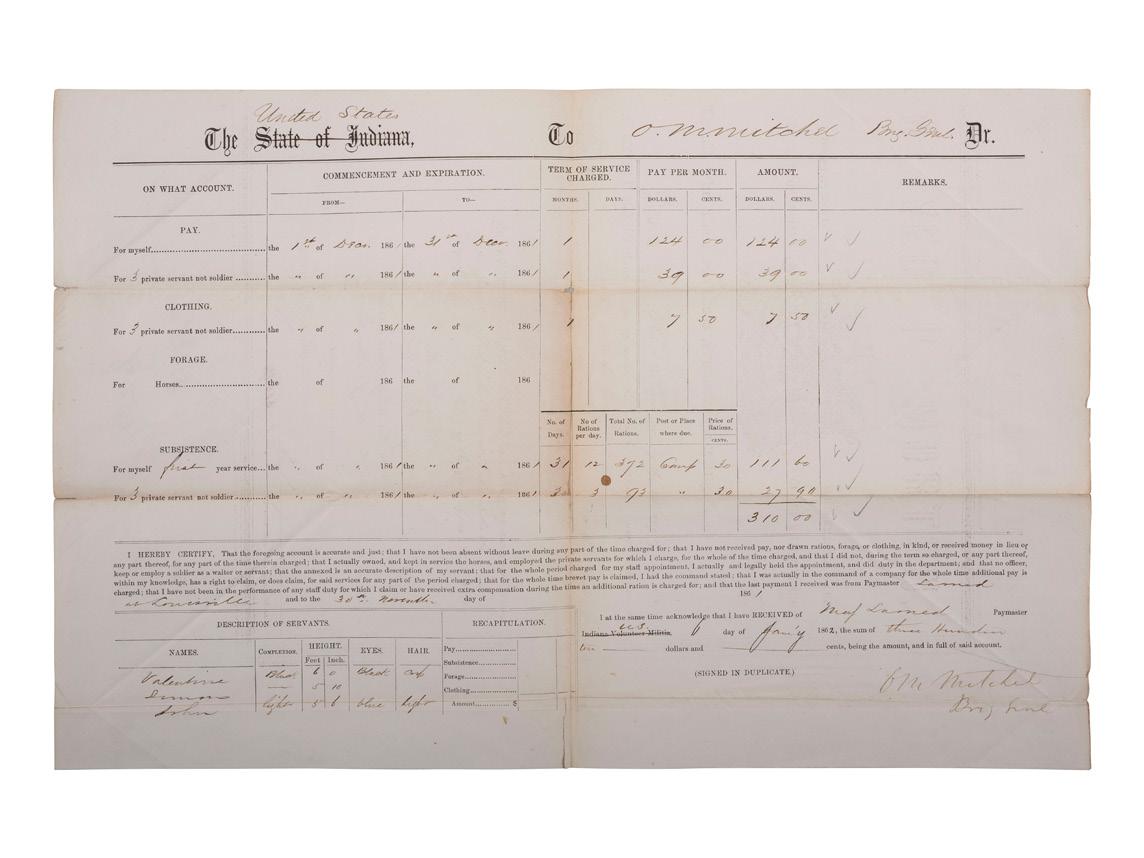

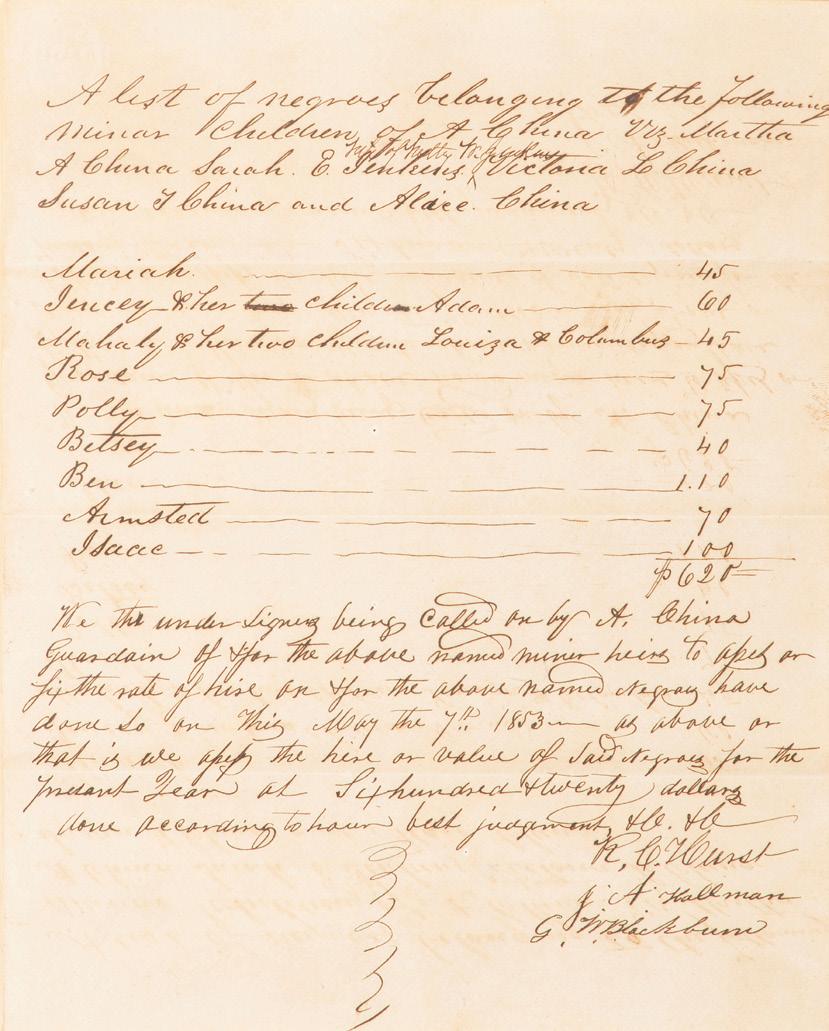
$400 - 600
222
[SLAVERY & ABOLITION -- CIVIL WAR]. Partly printed bond regarding the estate of Slaveholder Herman Shipman. Charleston, SC, 17 August 1861. EARLY CONFEDERATE DOCUMENT AMENDING US PRINTED FORM. Estate of Carroll J. Delery III, Formerly the “Historical Shop”
$300 - 500
223
[AFRICAN AMERICANA - CIVIL WAR]. A Union pay voucher signed by General O.M. Mitchel, with a listing of African American servants “Valentine” and “Simon.” 6 January 1862.
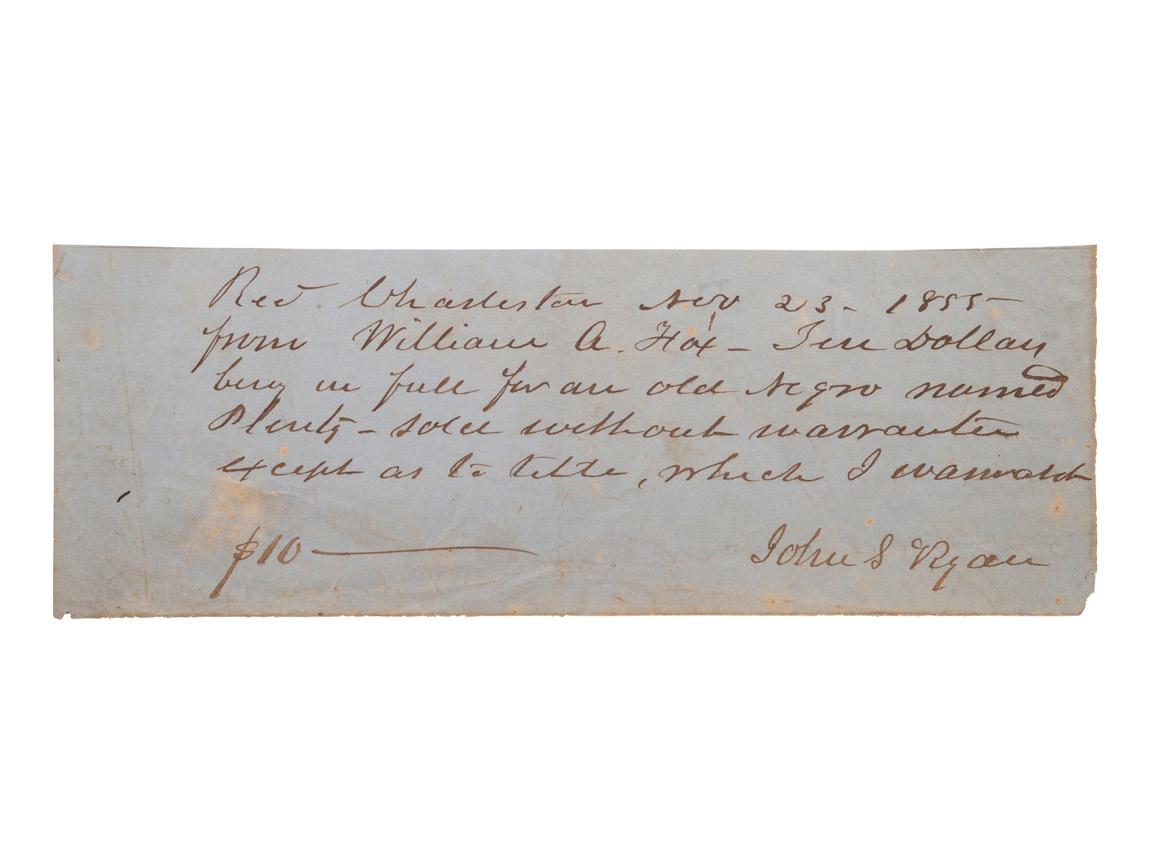
Estate of Carroll J. Delery III, Formerly the “Historical Shop”
$300 - 500
224
[AFRICAN AMERICANA - CIVIL WAR]. Confederate States Mail Line waybill detailing a coach and its passengers, including enslaved persons “Glenn,” “Griffin,” and “Boutcher.” 29 December 1864.
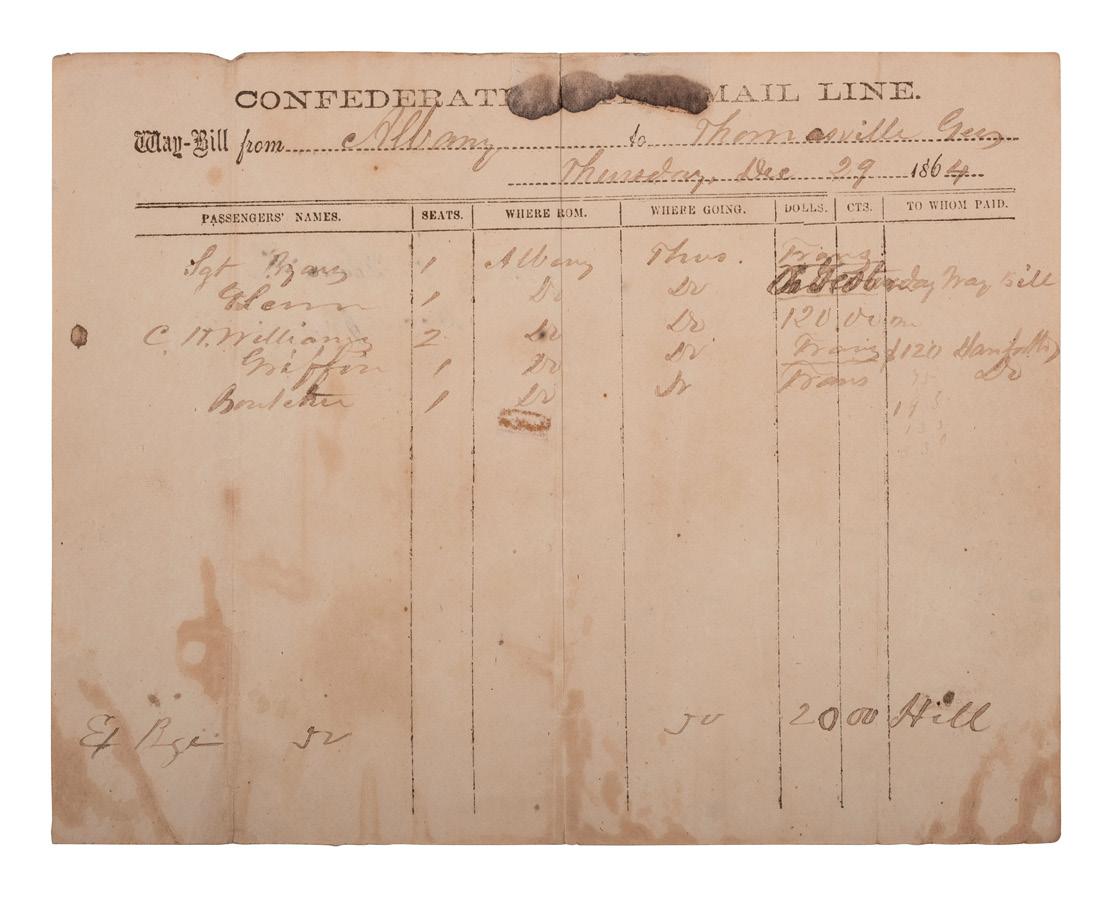
Estate of Carroll J. Delery III, Formerly the “Historical Shop”
$300 - 500
225
[AFRICAN AMERICANA - CIVIL WAR]. FRANK, Robert. Partly printed volunteer enlistment document, 26th New York Colored Volunteers, or 26th USCT. Lee, New York, 4 January 1864.

$300 - 500
226
[BROWN, John (800-1859)]. CDV portrait of John Brown. Philadelphia, PA: Philadelphia Photographic Co.
$300 - 400
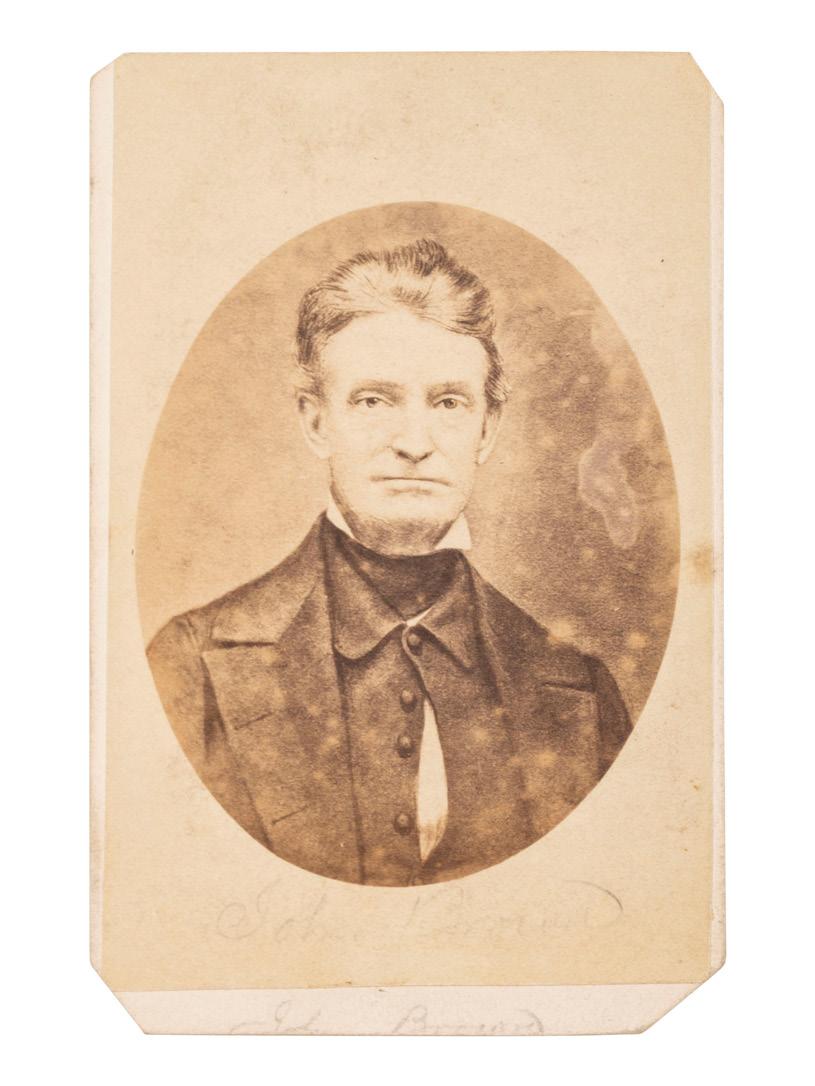
228 [SLAVERY & ABOLITION]. A group of 2 titles regarding enslavement, incl. Phelps’ Lectures on Slavery and its Remedy. Boston, MA: New England AntiSlavery Society, 1834.
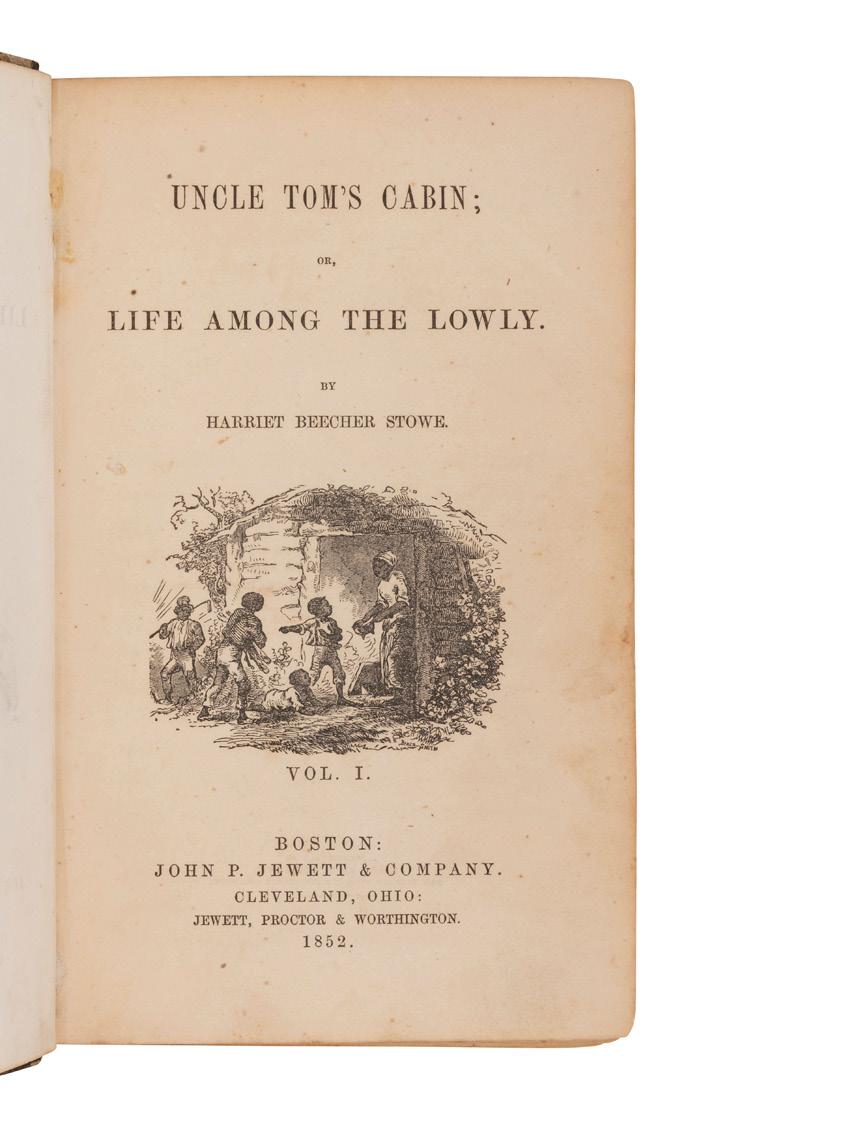
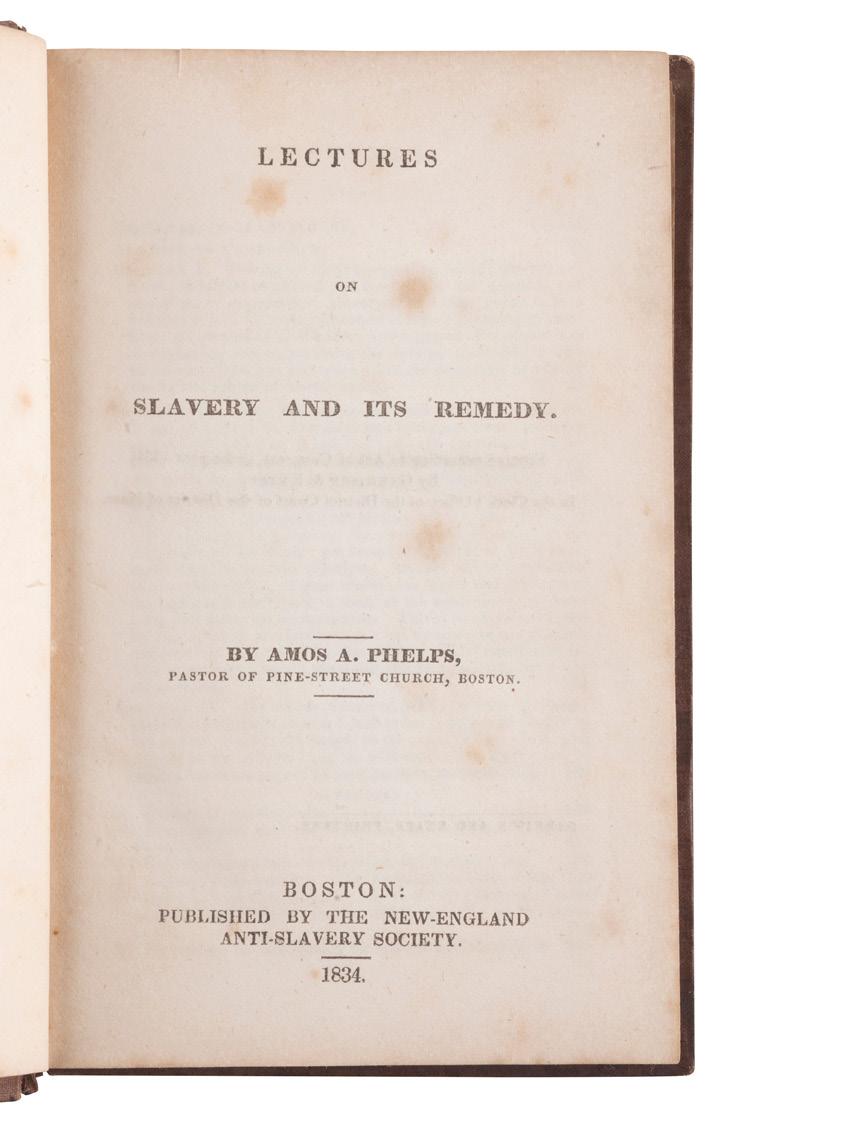
$300 - 400
227 [AFRICAN AMERICANA]. PERRY, F.E., photographer. Cabinet card featuring Diana Corbin, Sojourner Truth’s daughter. Battle Creek, MI, ca 1880.
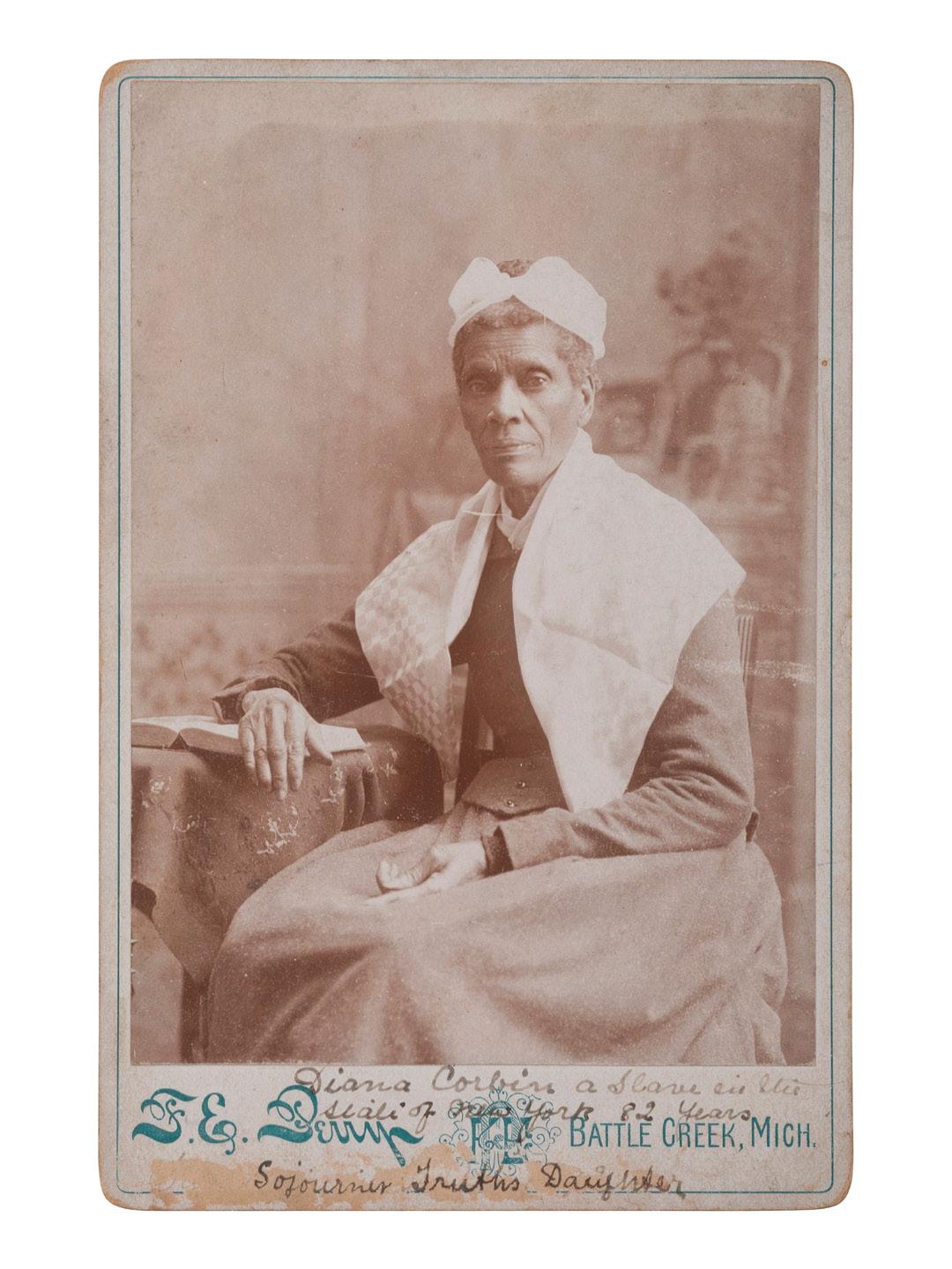
Diana Corbin (ca 1816-1904) was the oldest living child of Sojourner Truth when she died of chronic illness on 25 October 1904. She is buried in Oak Hill Cemetery next to her mother in Battle Creek, Michigan.
$700 - 1,000
229 STOWE, Harriet Beecher (1811-1896). Uncle Tom’s Cabin. Boston and Cleveland: John P. Jewett & Company, Jewett Proctor & Worthington, 1852.
$1,000 - 1,500
230
[SLAVERY & ABOLITION]. The Liberator. Vol. VII, No. 18. Boston, MA: 28 April 1837. AN IMPORTANT ASSOCIATION COPY ATTRIBUTED TO THE GIBBONS FAMILY, PROMINENT QUAKERS ACTIVE IN THE UNDERGROUND RAILROAD.

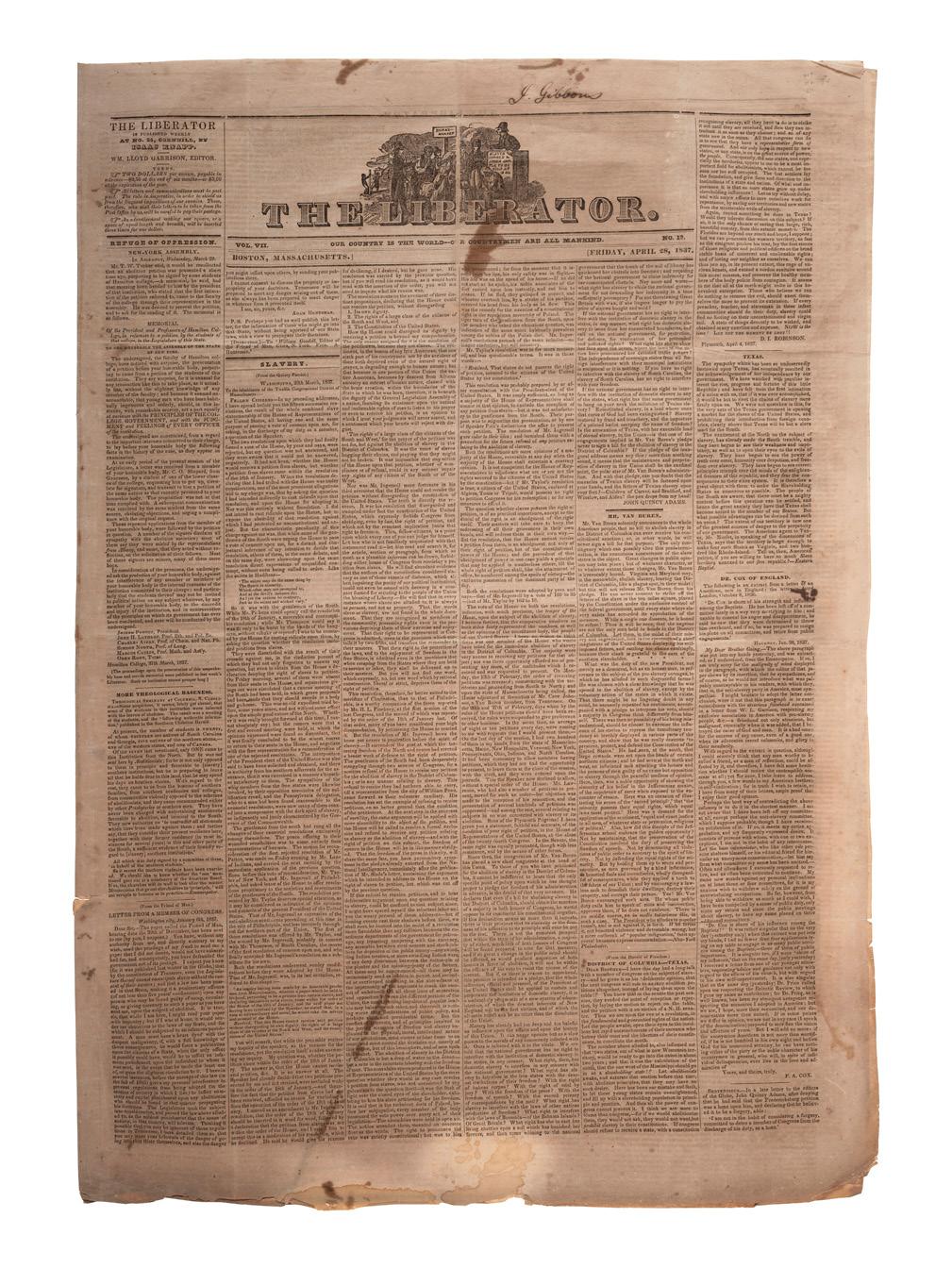
$700 - 1,000
231
[AFRICAN AMERICANA - EMANCIPATION PROCLAMATION]. Church Advocate. Vol. XXVII, No. 21. Lancaster, PA: E.H. Thomas, J.S. Gable, and George Ross, 25 September 1862.

$800 - 1,000
232
[SLAVERY & ABOLITION]. FISH, George Gardner, artist. Emancipation. Allegorical carte-de-visite. Boston, MA: John Soule, 1863.
$300 - 400
233
[AFRICAN AMERICANA]. The Radical Convention in Philadelphia, September 3d, 1866. [Philadelphia], [1866].

RARE: OCLC locates only one other copy, held at the Library of Congress.
$6,000 - 8,000
234
[RECONSTRUCTION]. A group of 2 items, highlighted by Salt River Telegraph Extra [Philadelphia]: N.p., [1867].
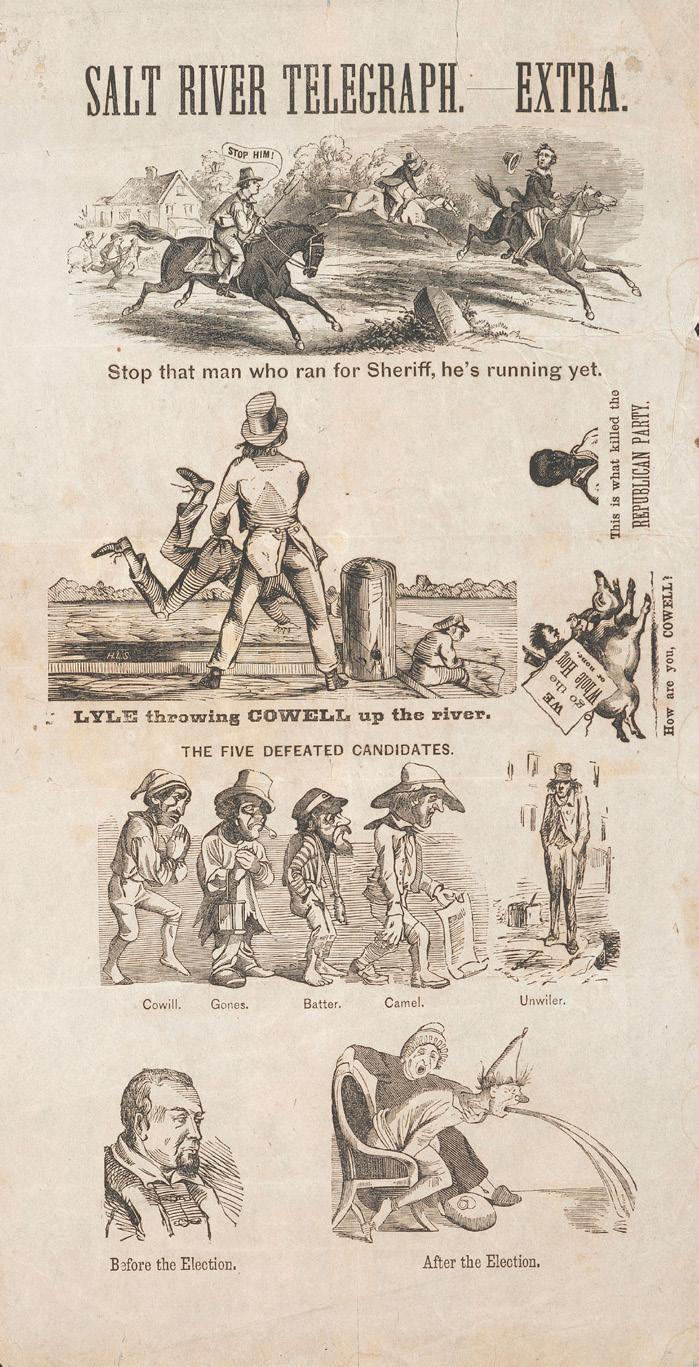
Property from the James Milgram, M.D., Collection of Broadsides, Ephemeral Americana, and Historical Documents
$300 - 400
235
[RECONSTRUCTION]. BEARD, James C., artist. The Fifteenth Amendment. Celebrated May 19th, 1870. New York: Thomas Kelly, 1870.
$2,000 - 3,000
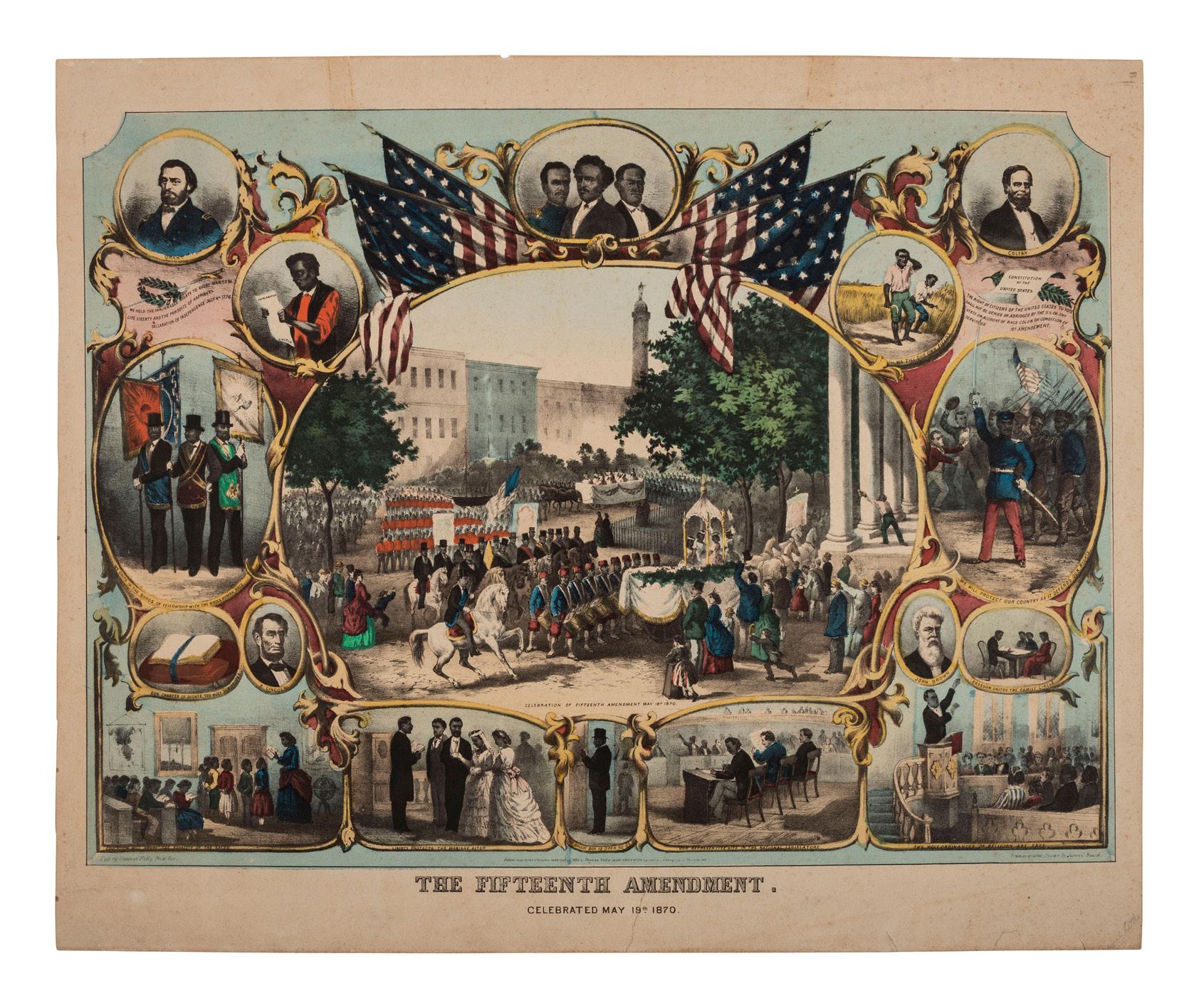
$2,500
$5,000
238
DOUGLASS,
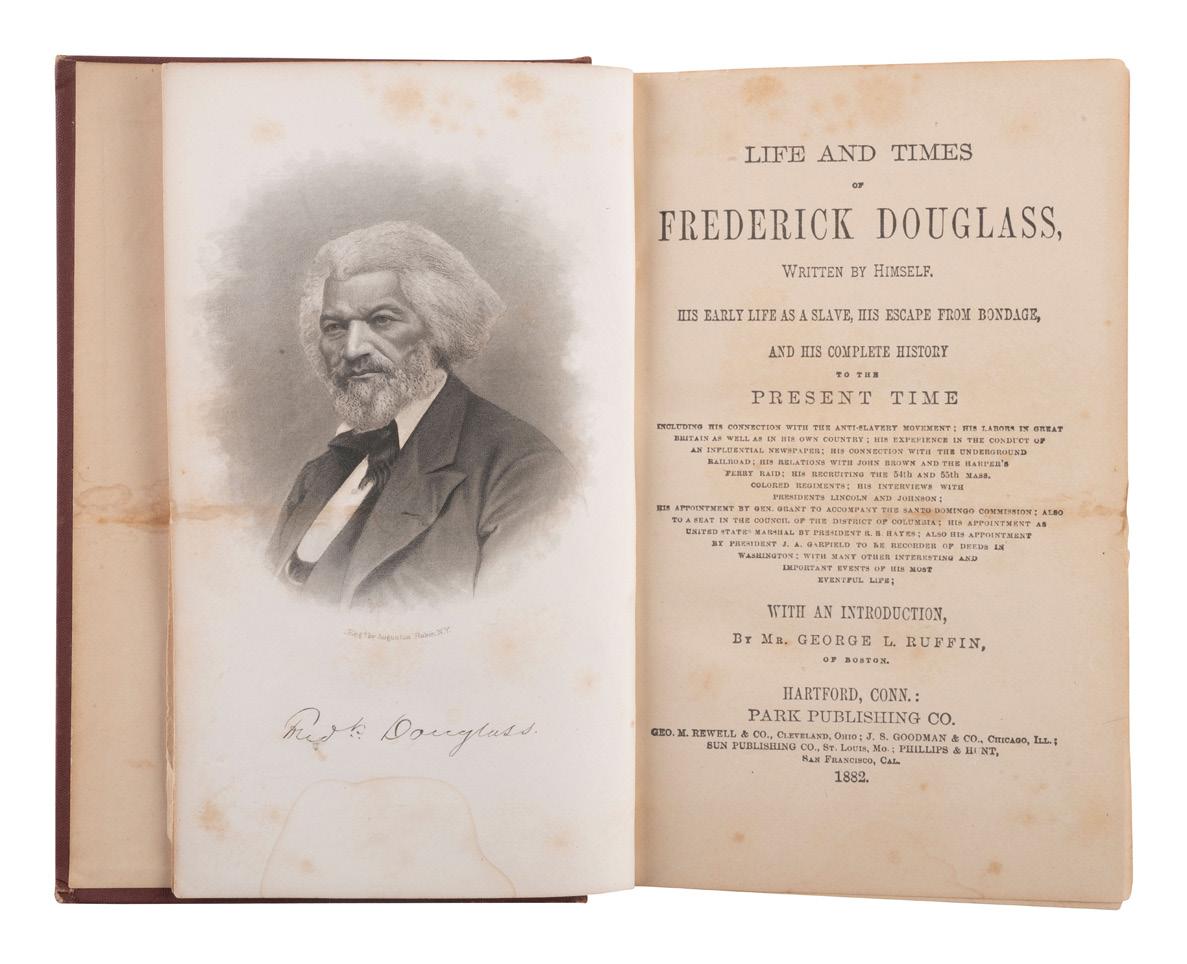
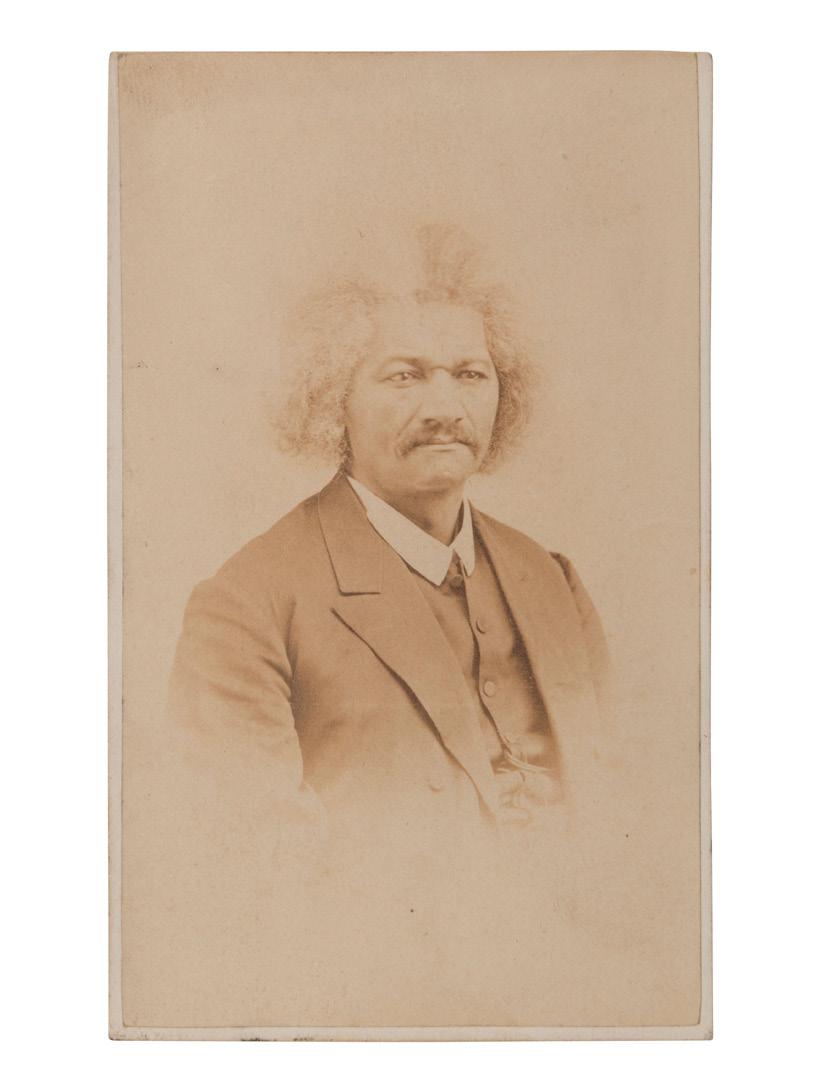
$300 - 400
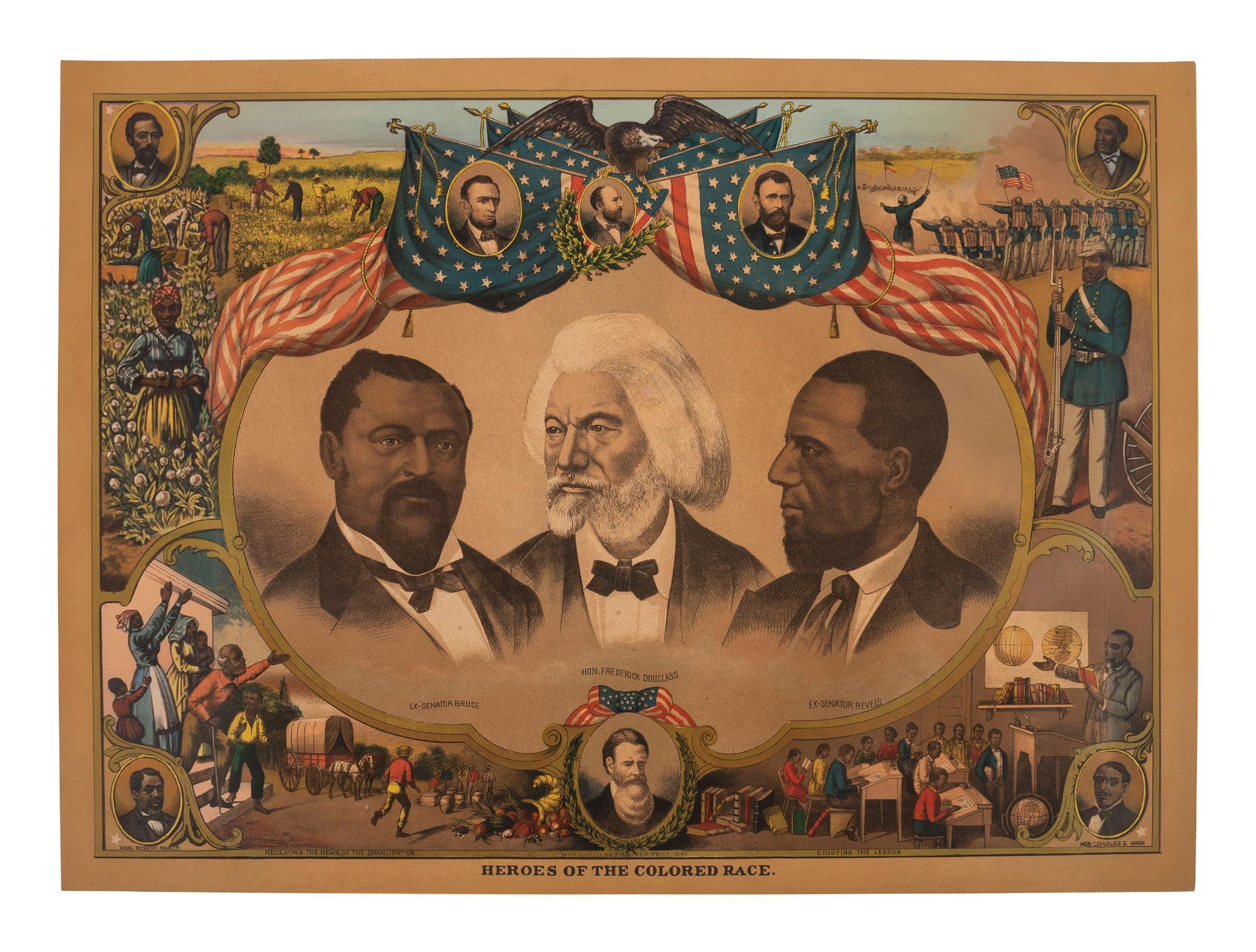
239 [AFRICAN AMERICANA - EDUCATION]. Printed cabinet card portrait of African American educator, scholar, and author Daniel Barclay Williams (1861-1895). Chicago, IL: A Leese & Co., ca 1890s.
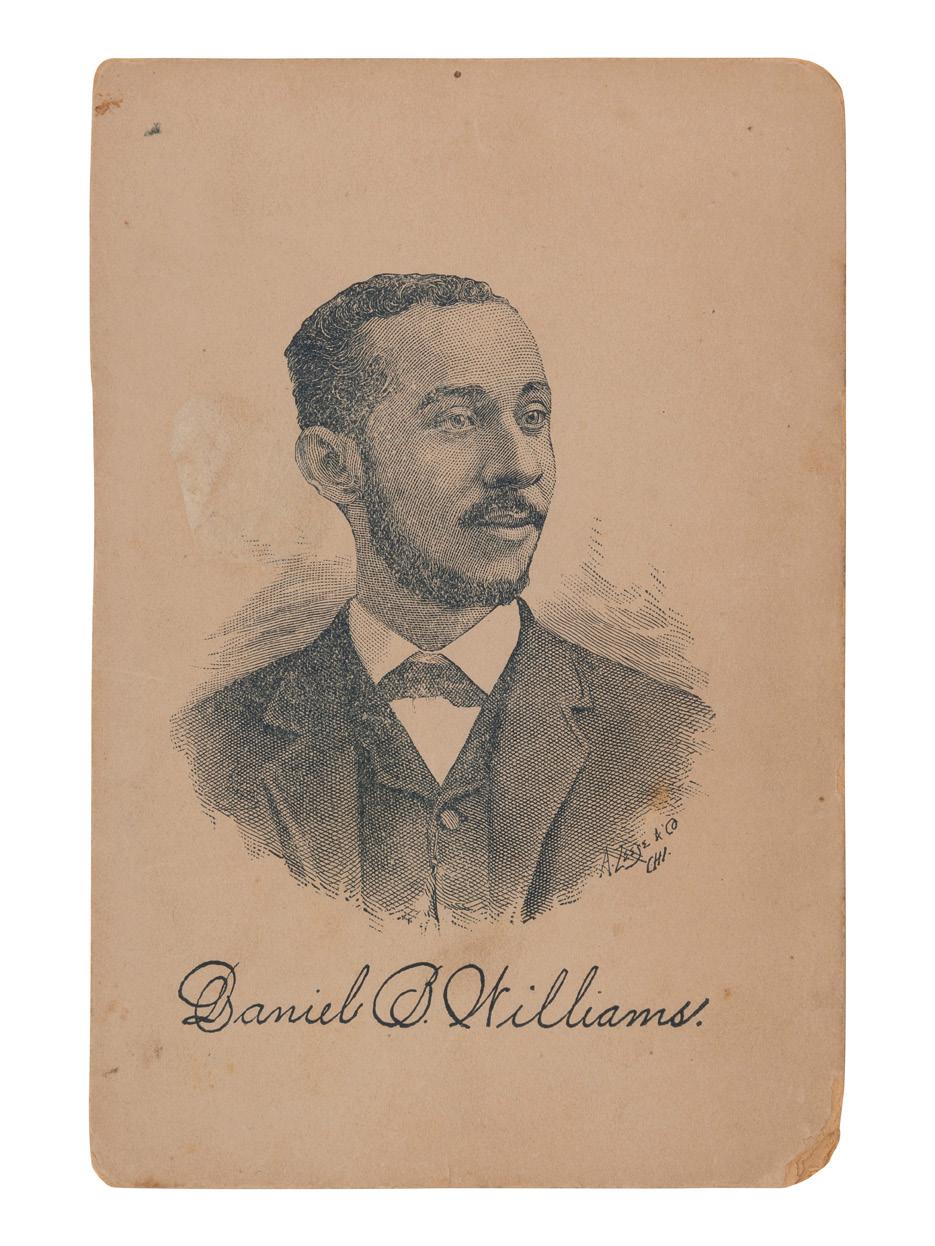
$300 -400
240 [AFRICAN AMERICANA - EDUCATION]. HOWE, C.L., photographer. CDV of African American educator Winfield Scott Montgomery as a teenager. Brattleboro, VT, ca 1873.
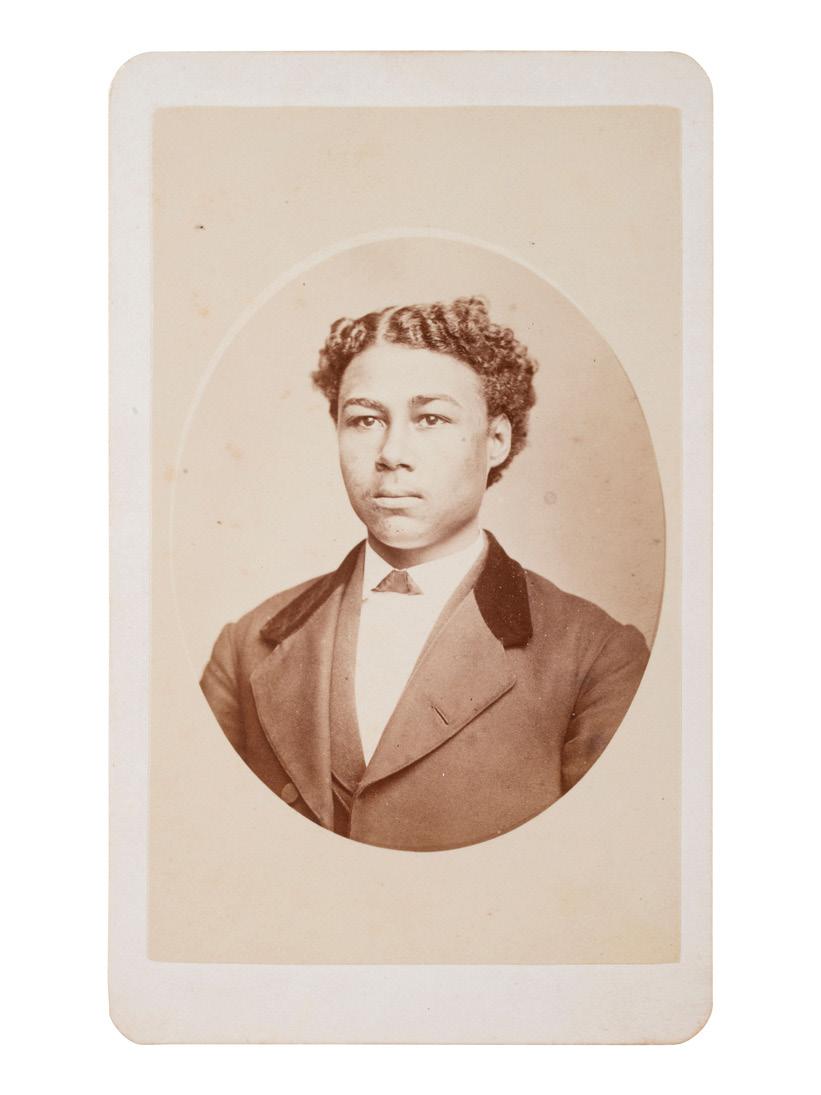
$400 - 600
241
WASHINGTON, Booker T. (1856-1915). Typed letter signed (“Booker T. Washington”), to Dr. Camp. Tuskegee, Alabama, 26 March 1912.

1 page, 8vo, bifolium, on Tuskegee Institute stationery.
In full: “The matter referred to in the enclosed statement [not present], signed by Hon. Seth Low and other members of our Board of Trustees, and endorsed by President Taft, is of such importance to the welfare of our country that I have taken the liberty of calling it to your personal attention in the belief that it will enlist your interest and help.”
Property from the James Milgram, M.D., Collection of Broadsides, Ephemeral Americana, and Historical Documents
$300 - 400
242 [CIVIL RIGHTS]. Resolutions of the National Negro Congress Held in Chicago, Ill. February 14, 15, 16, 1936. [Washington, DC]: February 1936.
$300 - 400
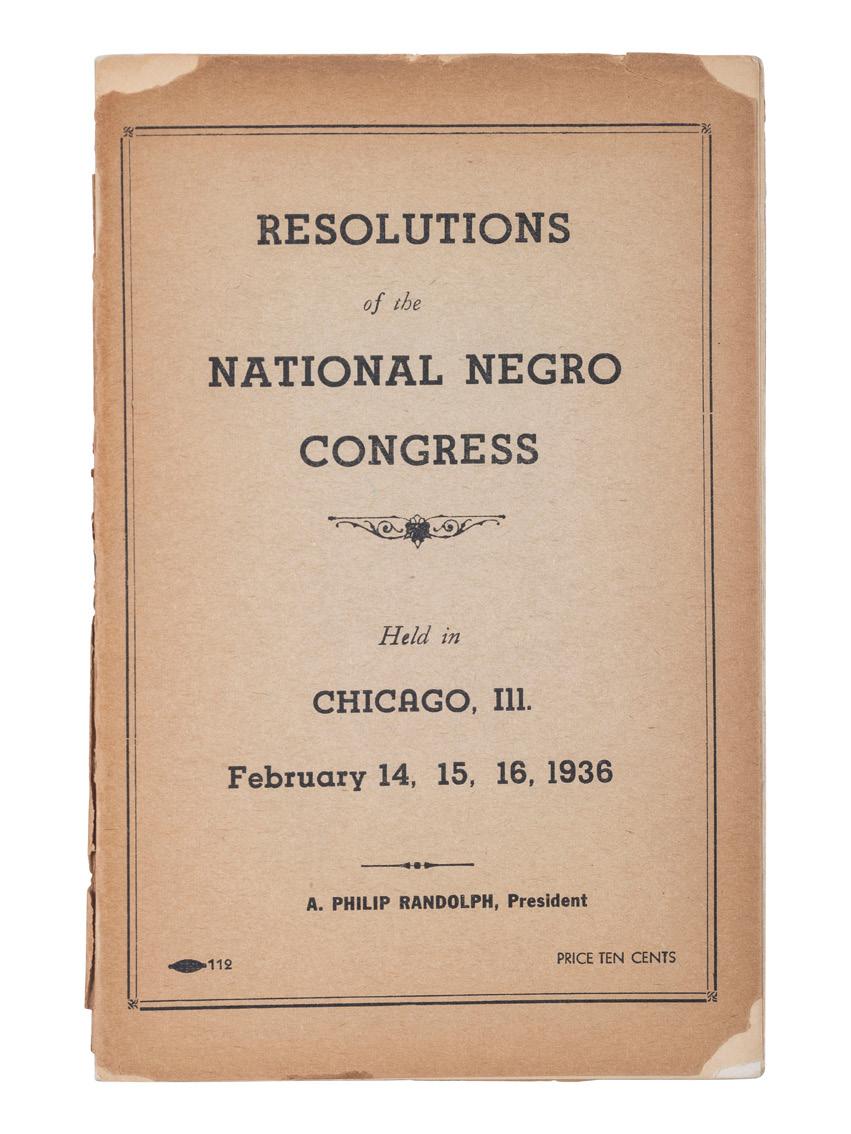
243 [CIVIL RIGHTS]. March for Freedom Now...Assemble Opposite the White House. [Washington, DC], 14 June 1963. Handbill for march scheduled three days after John F. Kennedy’s televised civil rights address.
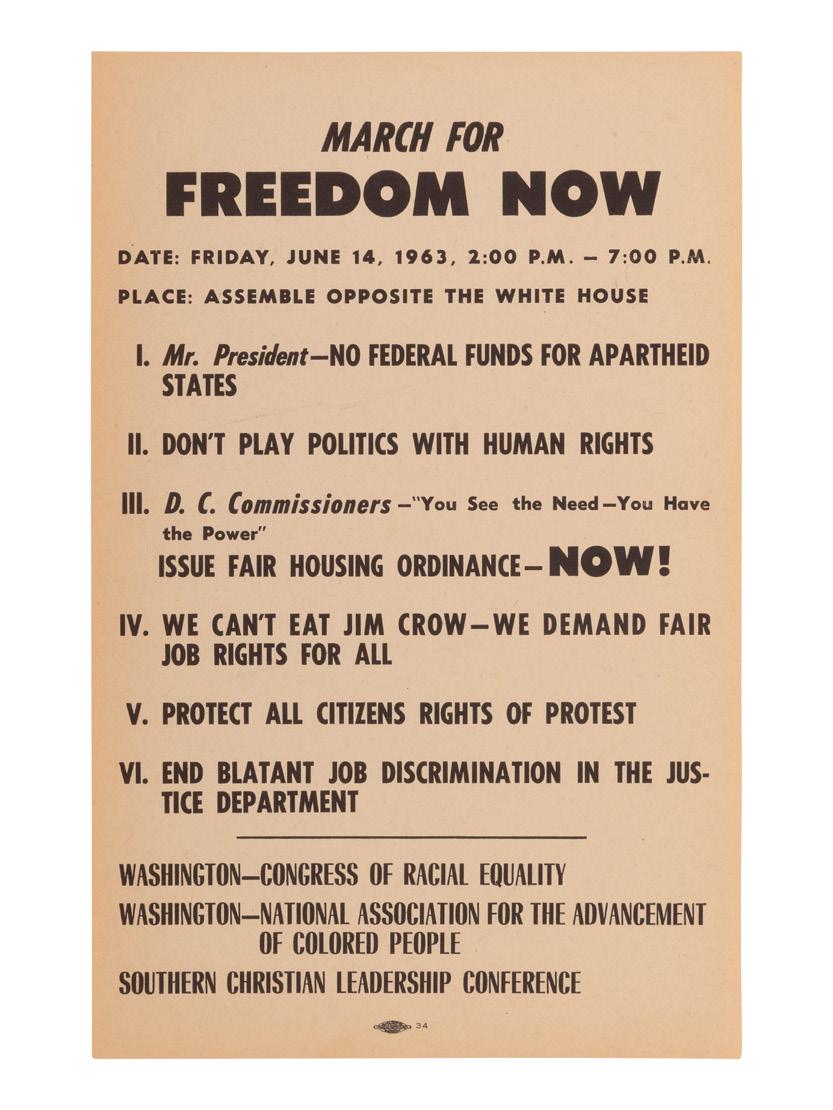
RARE: OCLC locates one copy.
$600 - 800
244 [KING, Martin Luther, Jr. (1929-1968)]. Martin Luther King...at Communist Training School. Promotional flyer issued by the Alert Americans Association, ca 1963-1964.
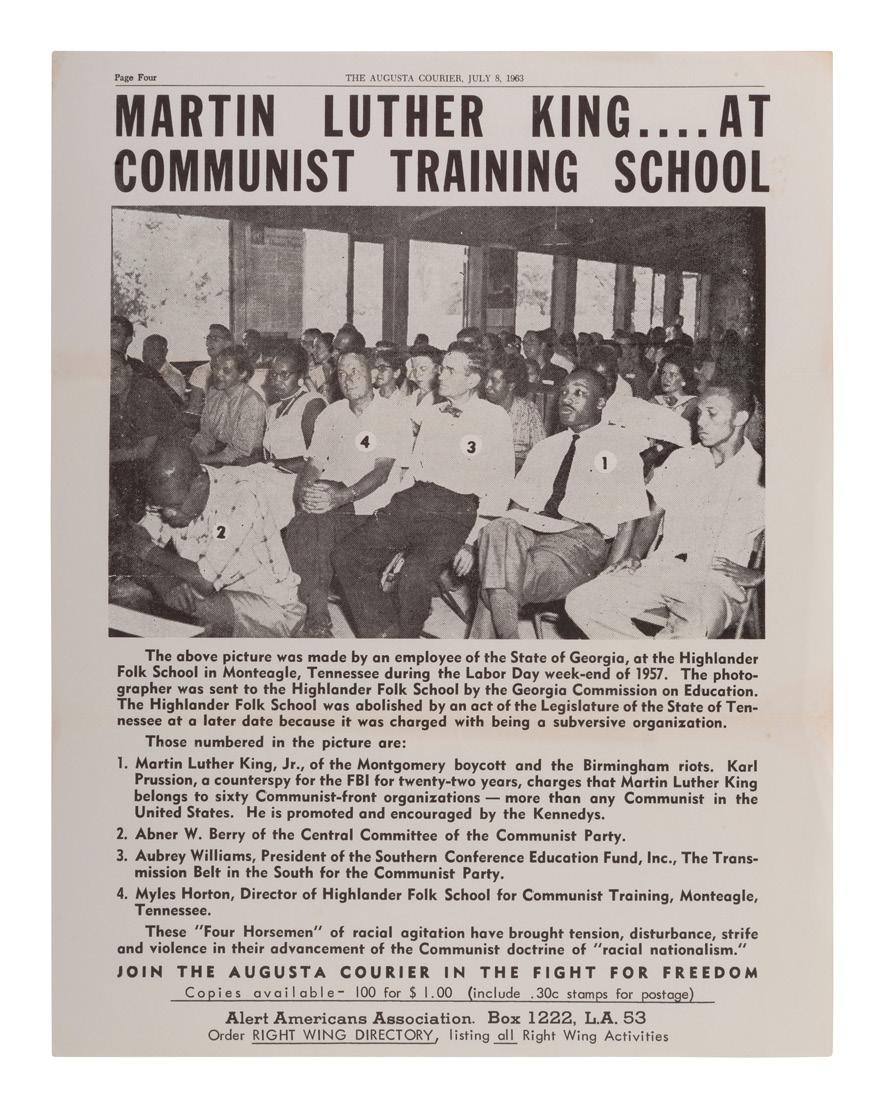
$300 - 400
245 [KING, Martin Luther, Jr. (1929-1968)]. Zap, artist. I am on the Mountain Top Albuquerque, NM: Artko Studios, 1971.

$300 -400
246 [MALCOLM X (1925-1965)]. SCHATT, Roy (1919-2002). Silver gelatin photograph of Malcolm X. New York, 1964.
$800 - 1,200
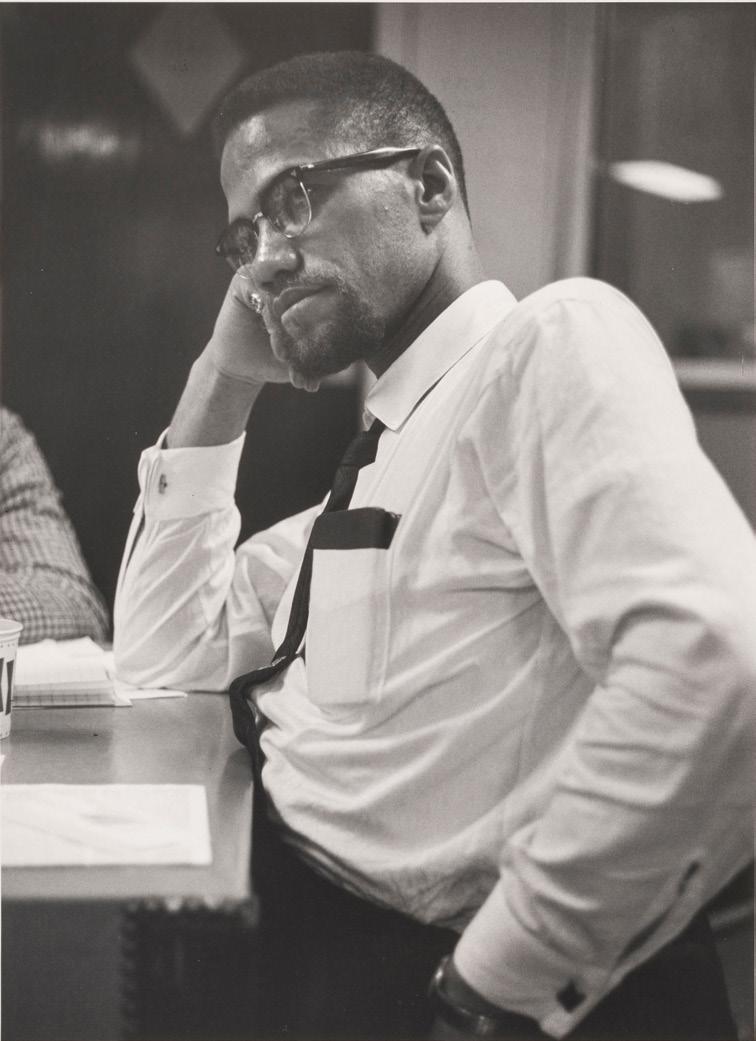
247 [BLACK PANTHER PARTY]. BARUCH, Ruth Marion (1922-1997), photographer. Portrait of African American activist George Jackson, taken at San Quentin Prison. 5 November 1970.
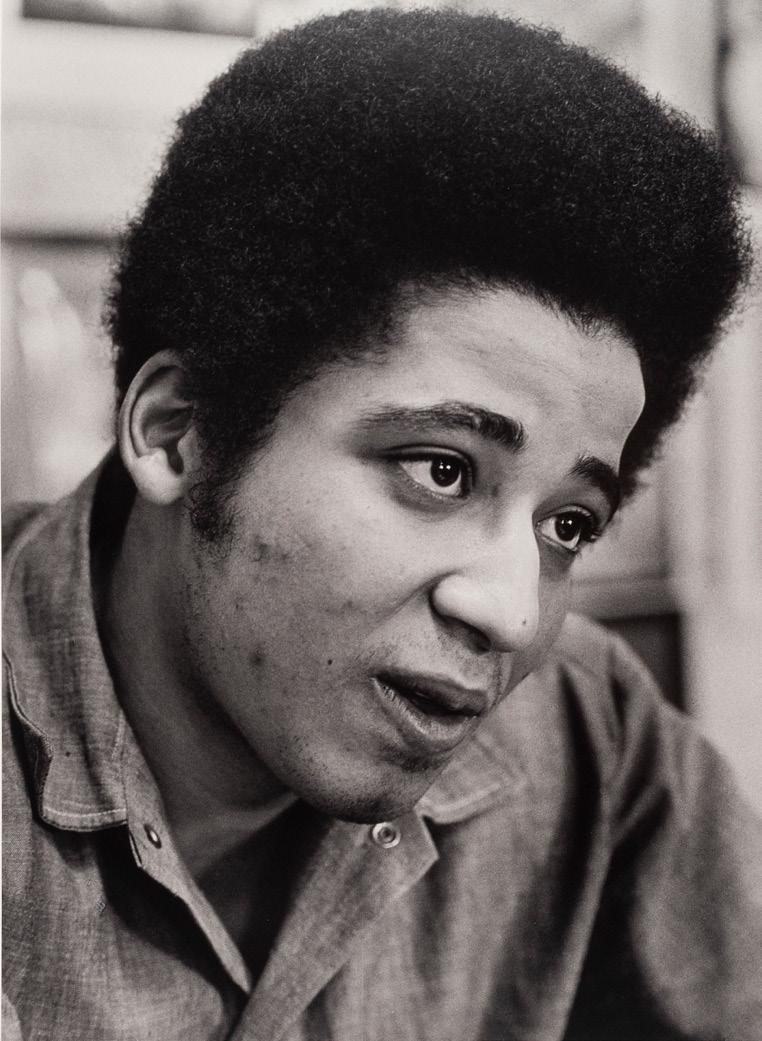
$500 - 700
248 [SOUTH AFRICA]. A group of 3 Anti-Apartheid posters.
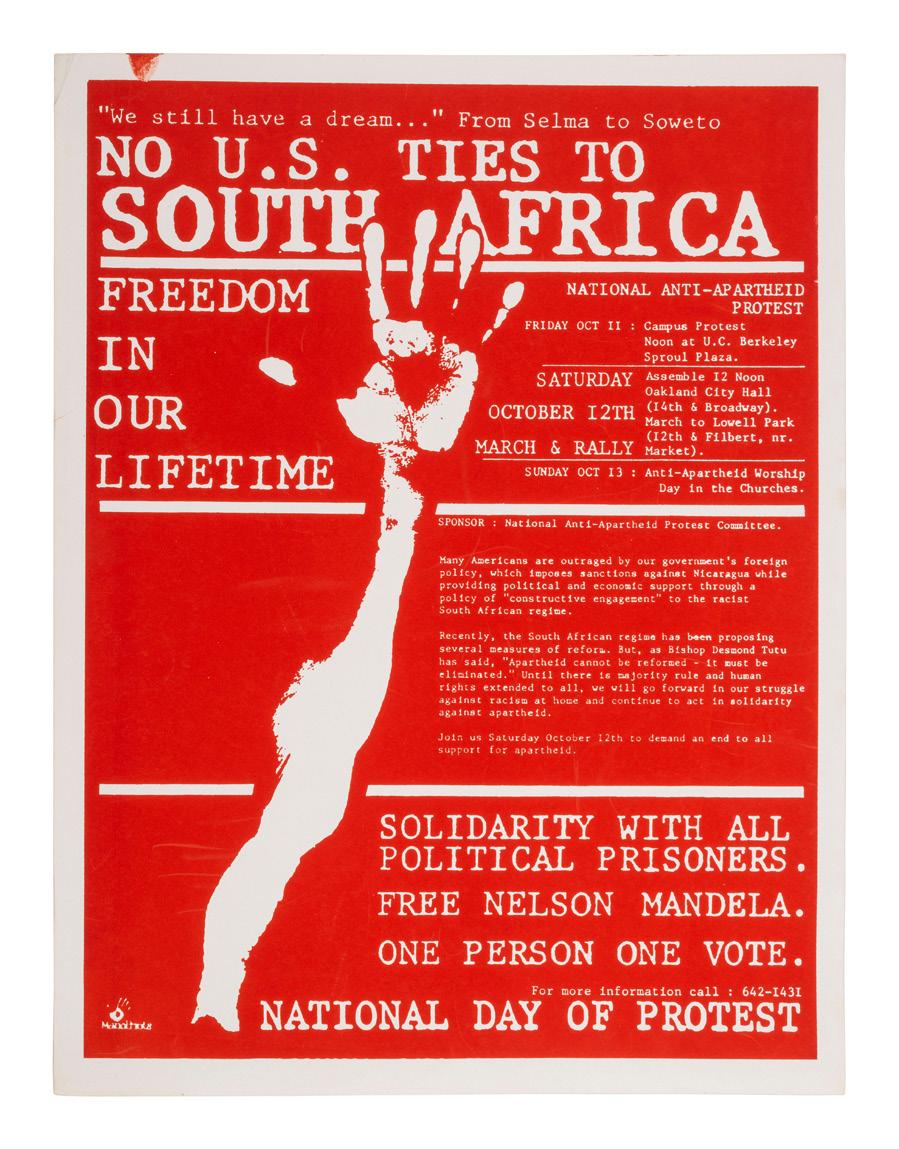
249 [BLACK PANTHER PARTY]. DOUGLAS, Emory (b. 1943), artist. “Wherever death may surprise us, it will be welcome. . . Che Guevara.” [San Francisco, CA: Black Panther Party, ca 1968].

$500 - 700
250 [BLACK PANTHER PARTY]. DOUGLAS, Emory (b. 1943), artist. One of Our Main Purposes is to Unify Our Brothers and Sisters in the North with Our Brothers and Sisters in the South. San Francisco, CA: [Black Panther Party], ca 1969.
$800 - 1,200

251 [BLACK PANTHER PARTY]. DOUGLAS, Emory (b. 1943), artist. We Are Advocates of the Abolition of War. San Francisco, CA: Black Panther Party, n.d.
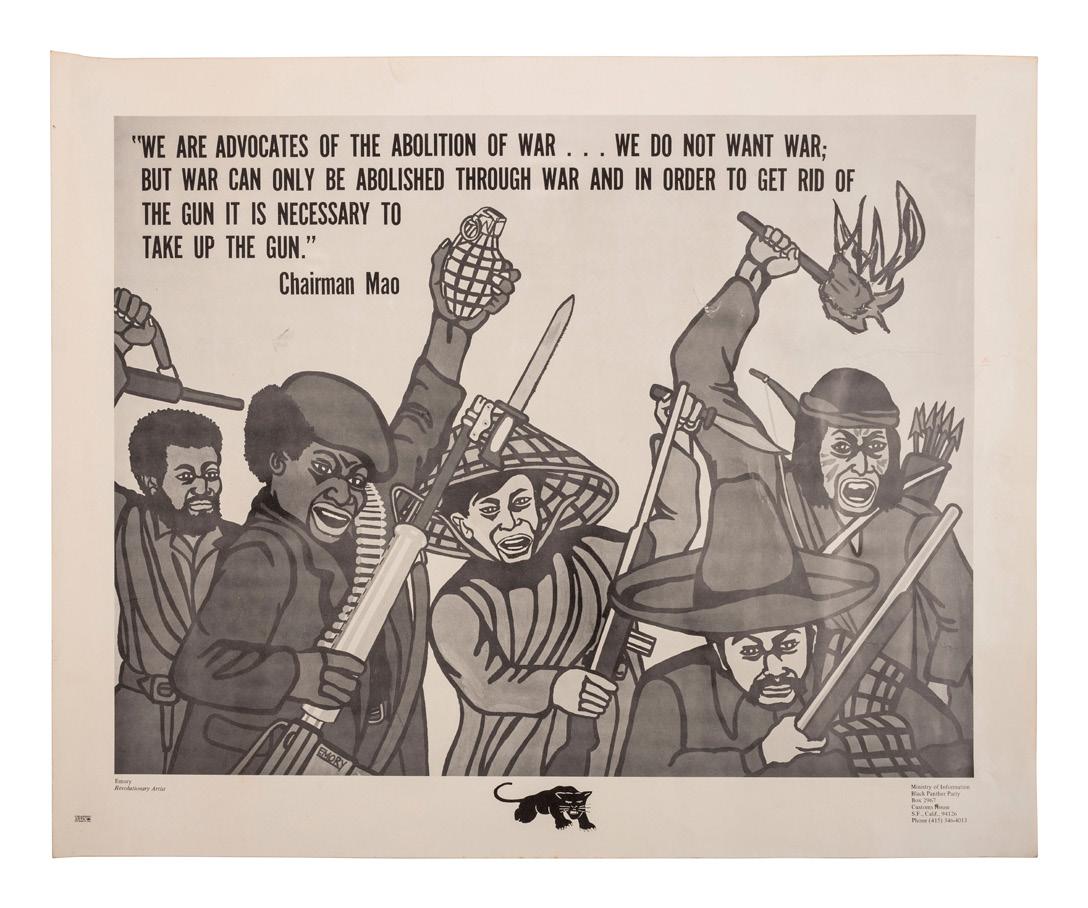

RARE: OCLC locates no copies.
$700 - 1,000
$300 - 400
[BLACK PANTHER PARTY]. Free Huey Day / May Day. May 1, 1969. Mass Rally Federal Building, 450 Golden Gate, San Francisco, Calif. [Oakland, CA]: 1969.
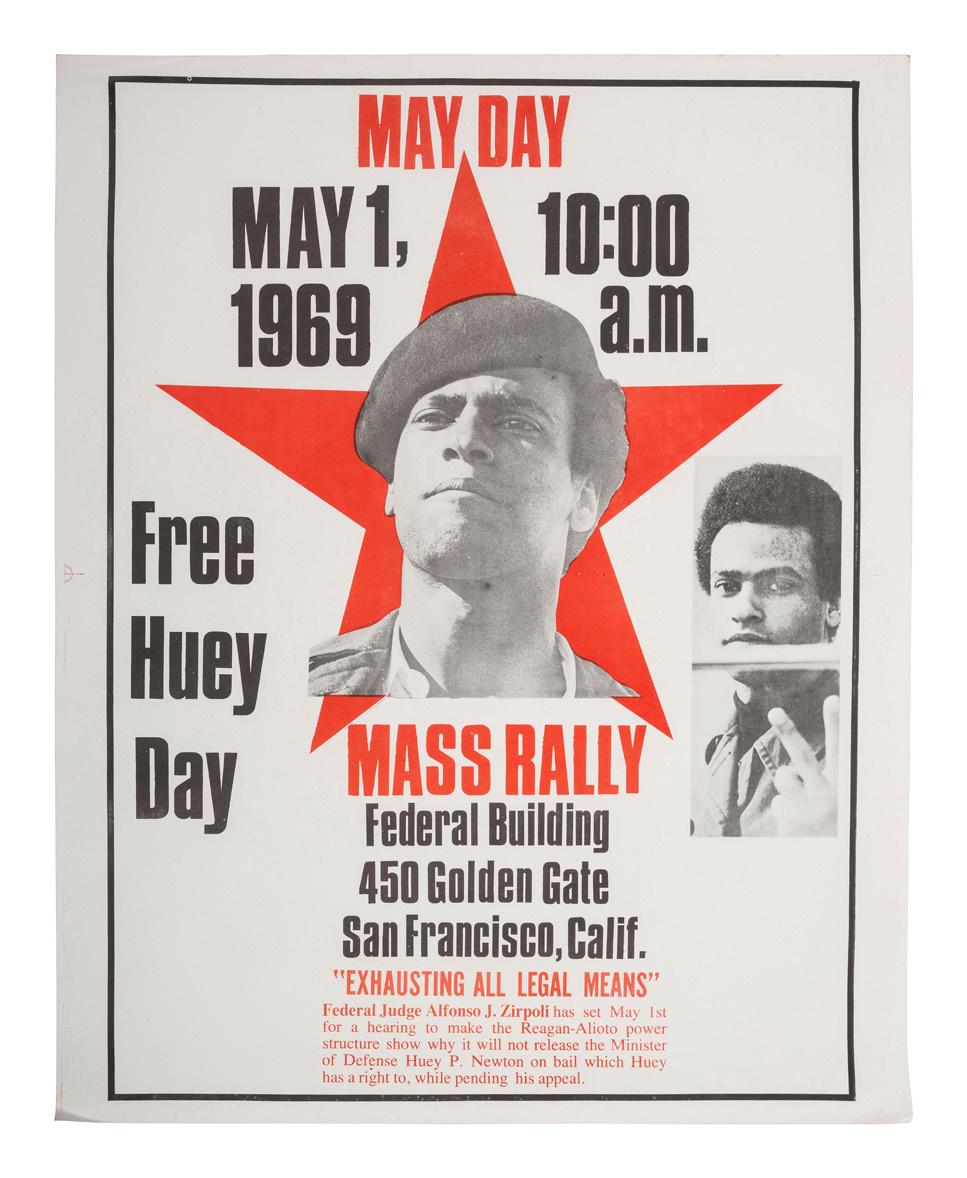
$800 - 1,200

254
[BLACK PANTHER PARTY]. Evidence of Intimidation and Fascist Crimes by USA. The War on the Black Panther Party 1968-1969. [San Francisco?]: Black Panther Community News Service, 21 February 1970.
$300 - 400
$300
$500 - 700


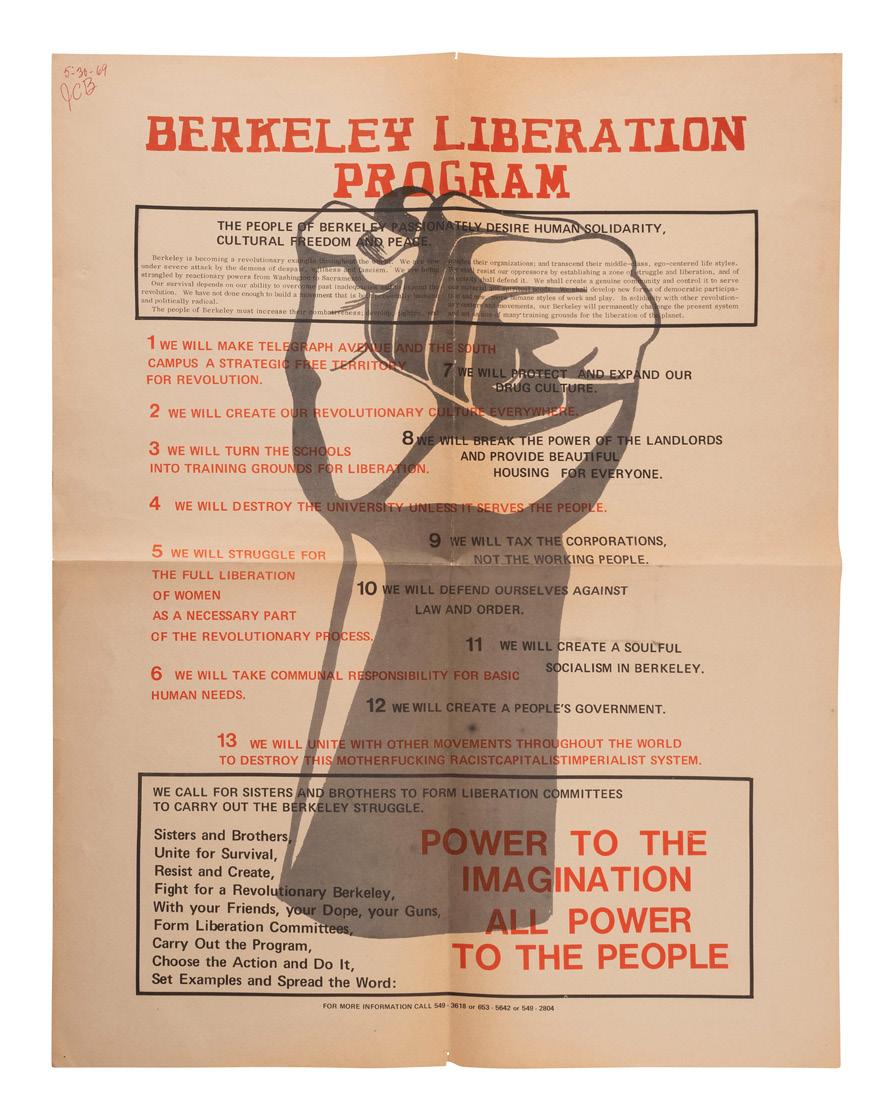
$300
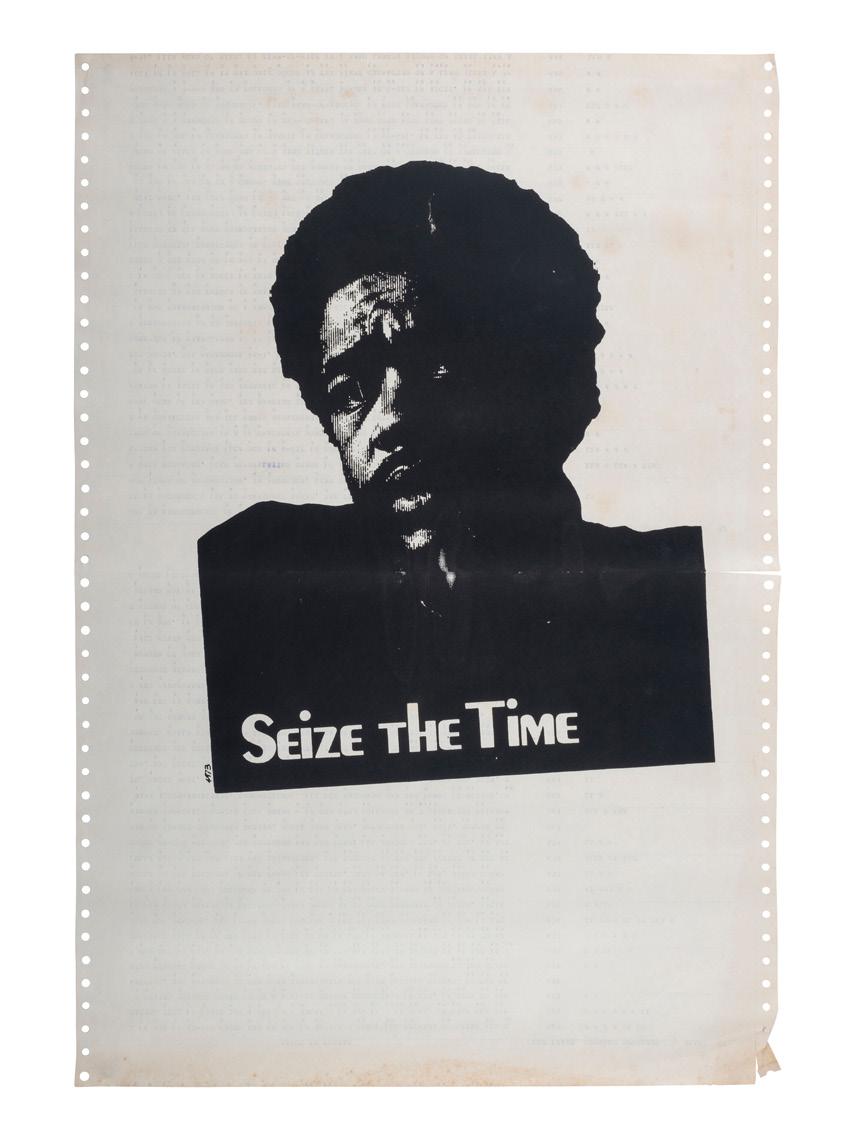
$300
$300
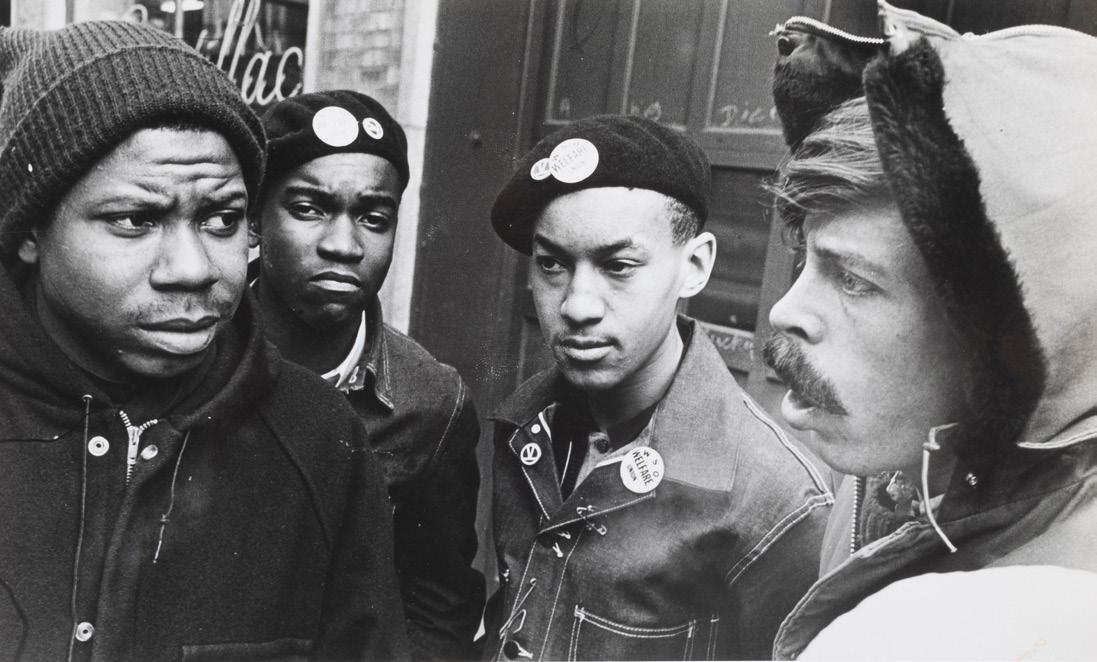
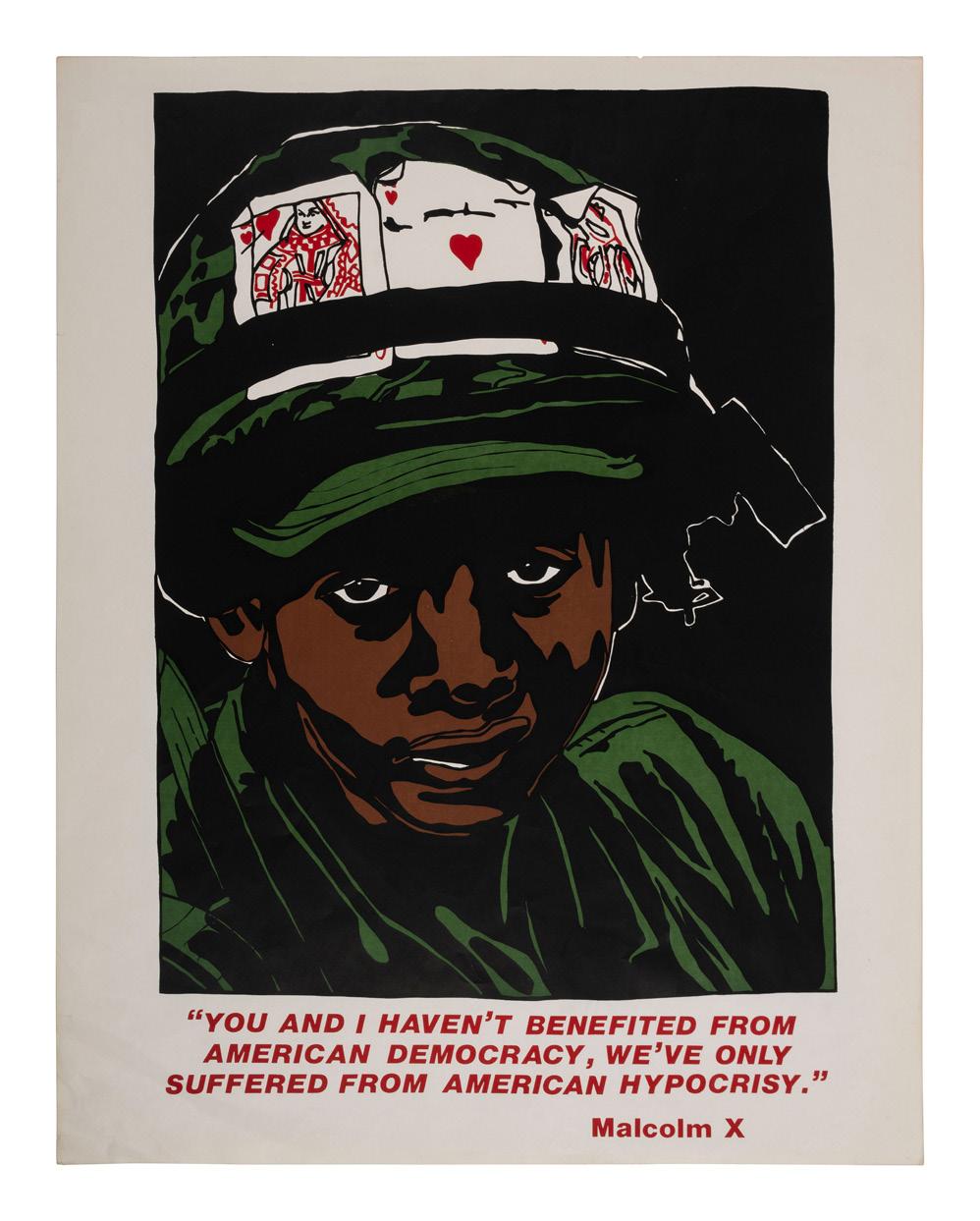
$500
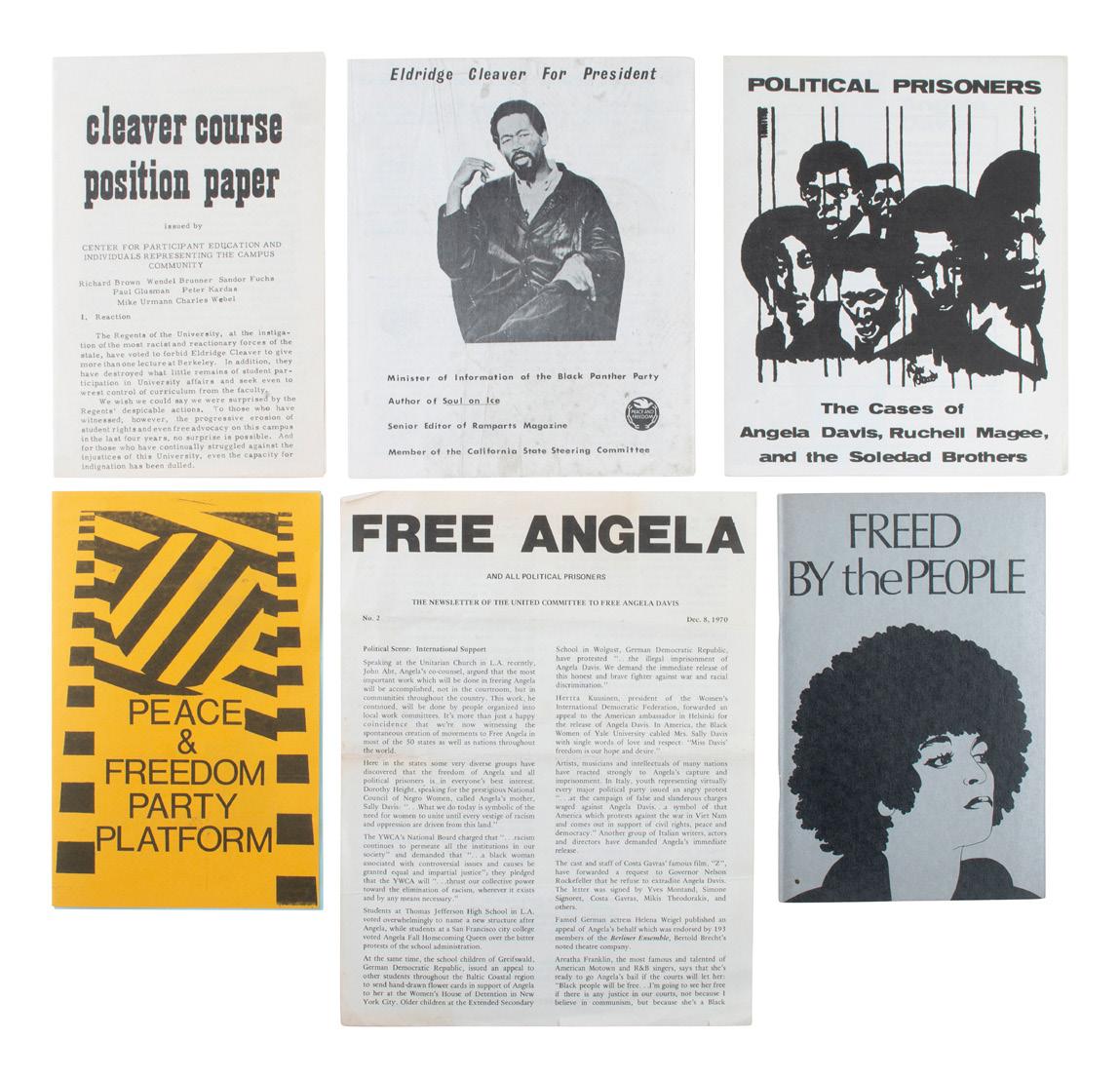
$300 - 400
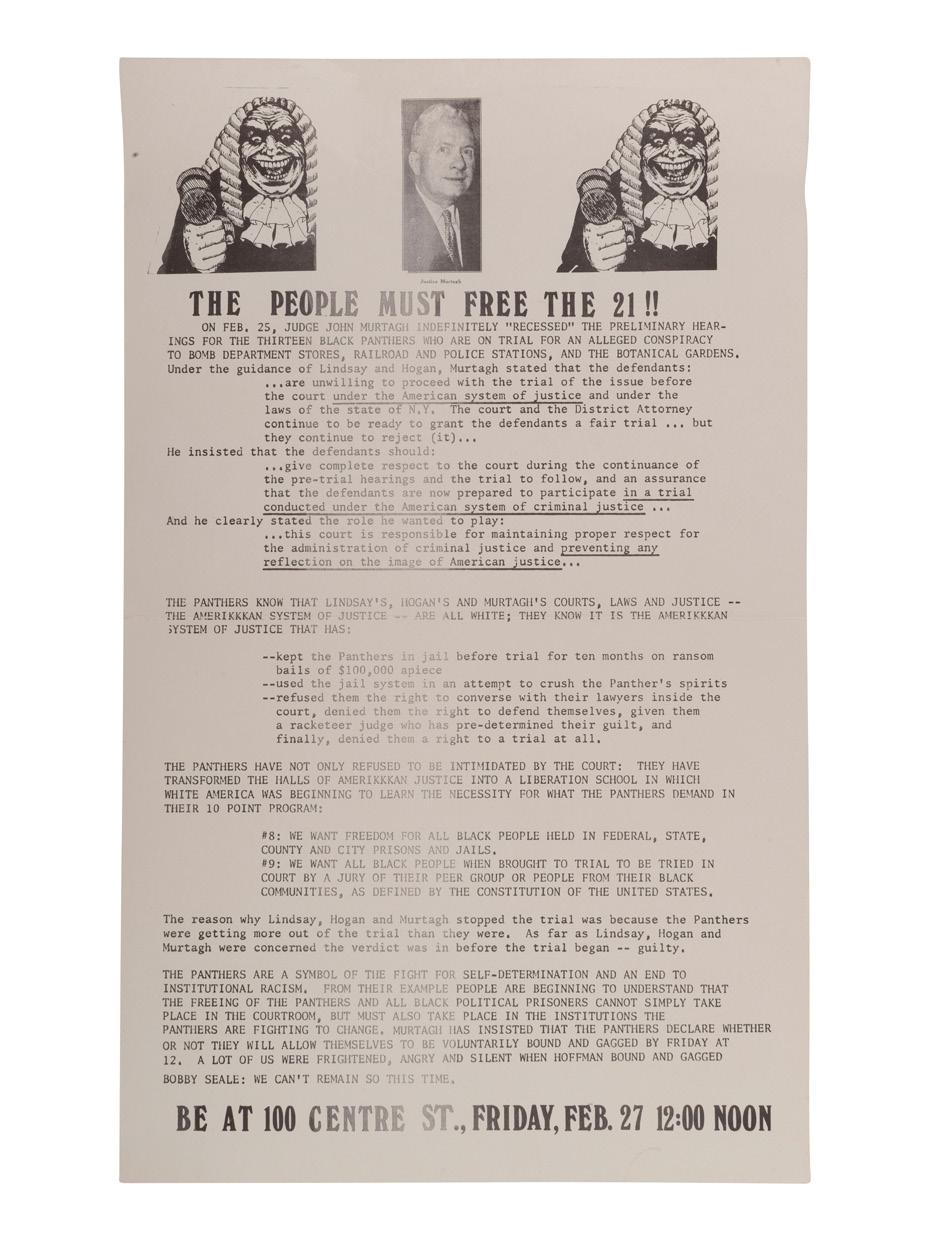
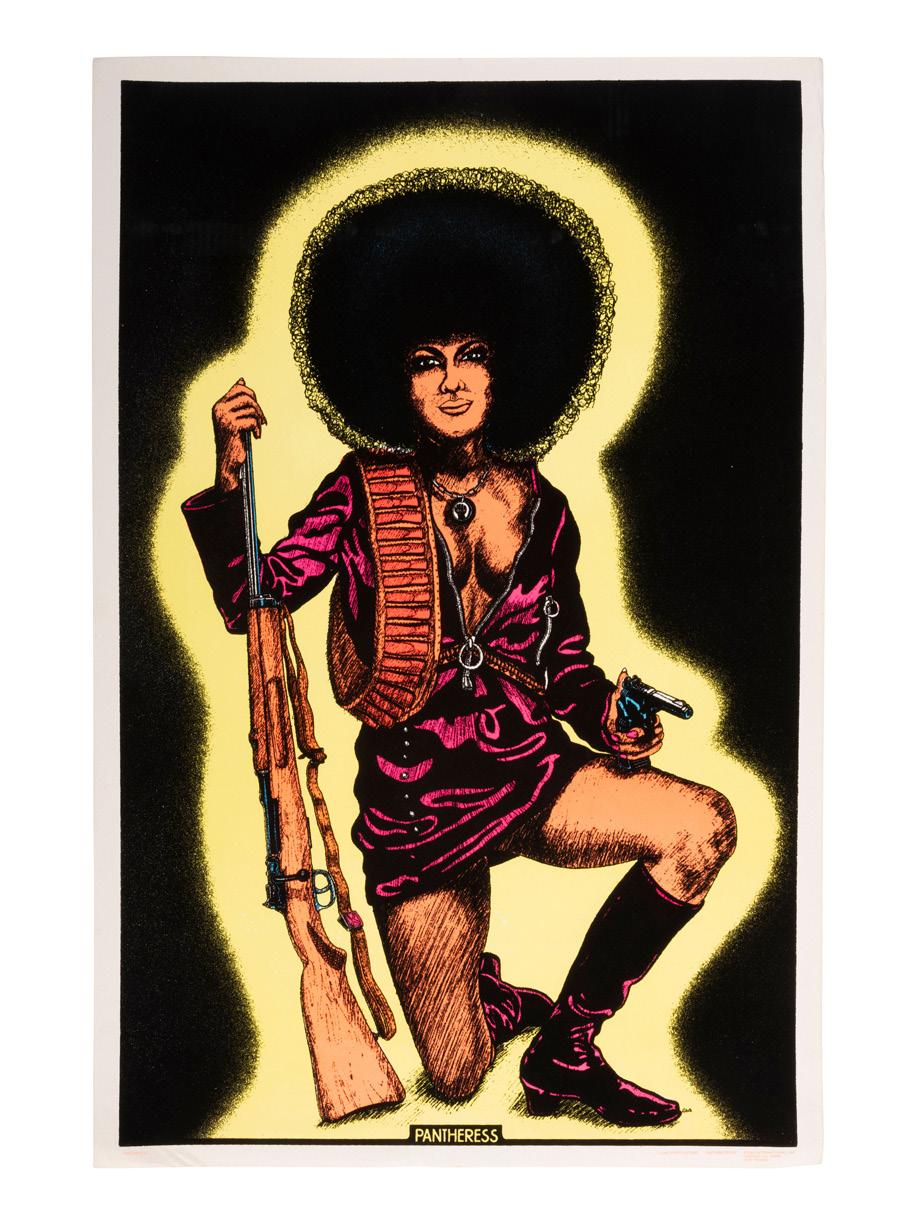
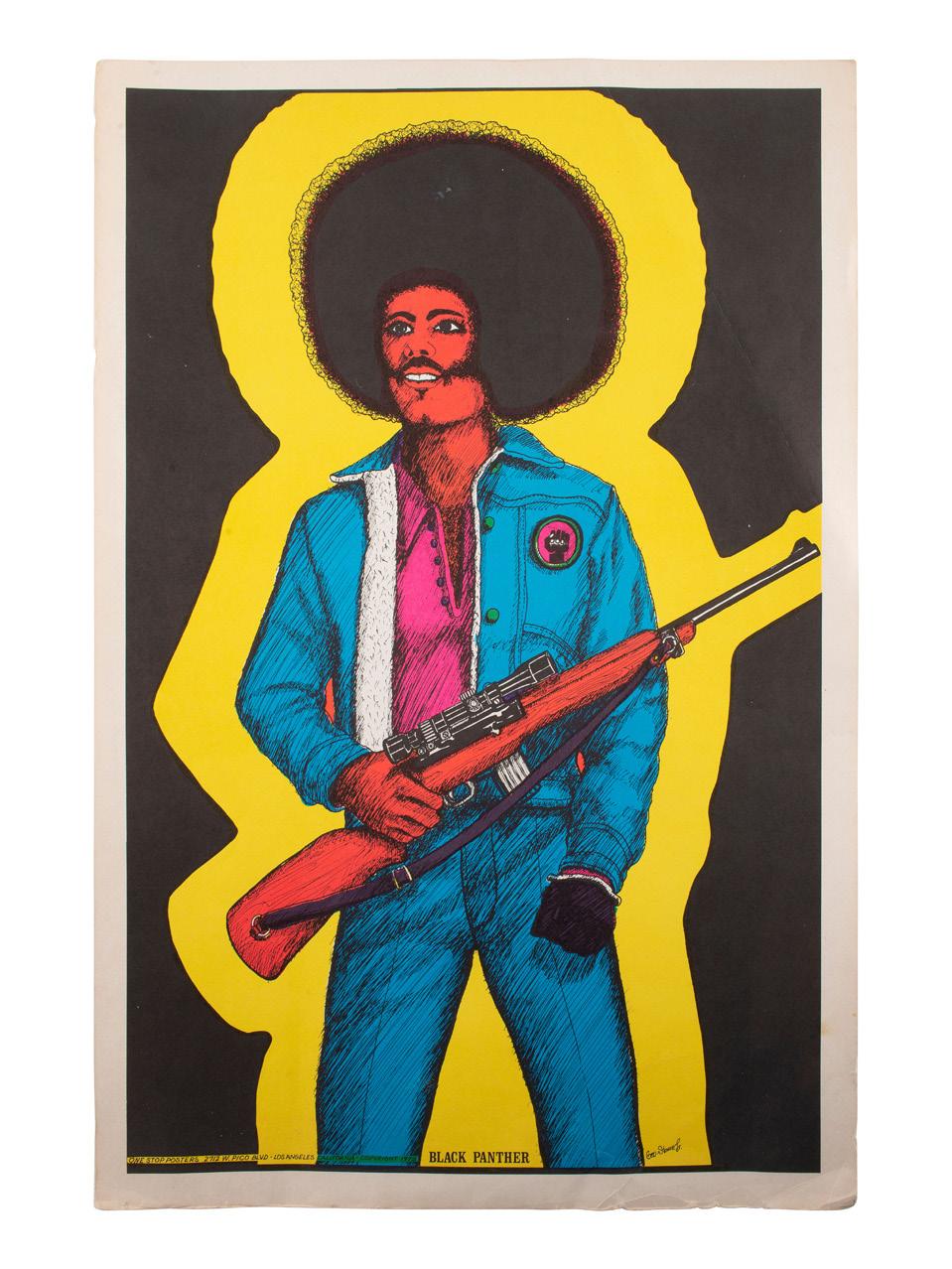
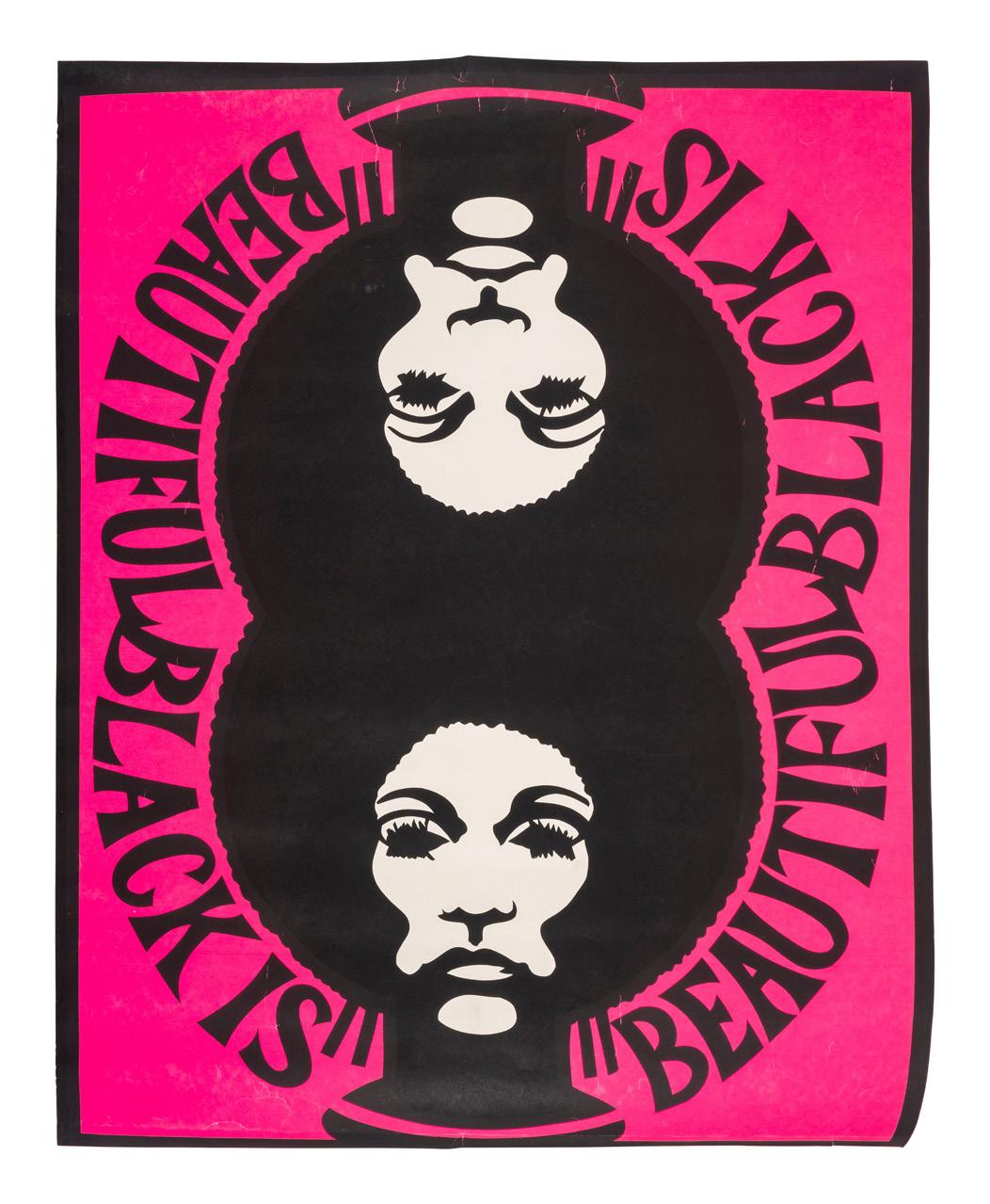
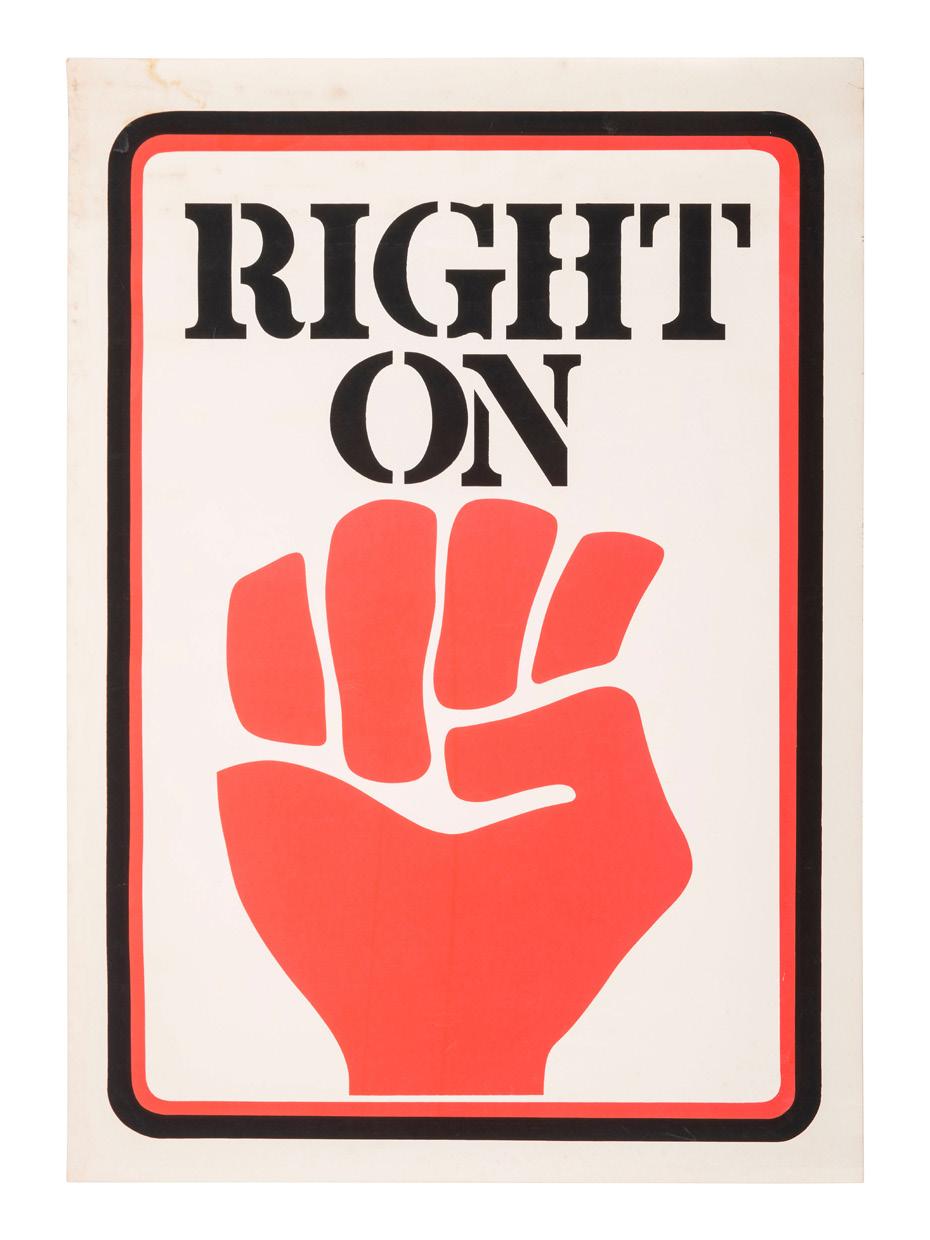
$300


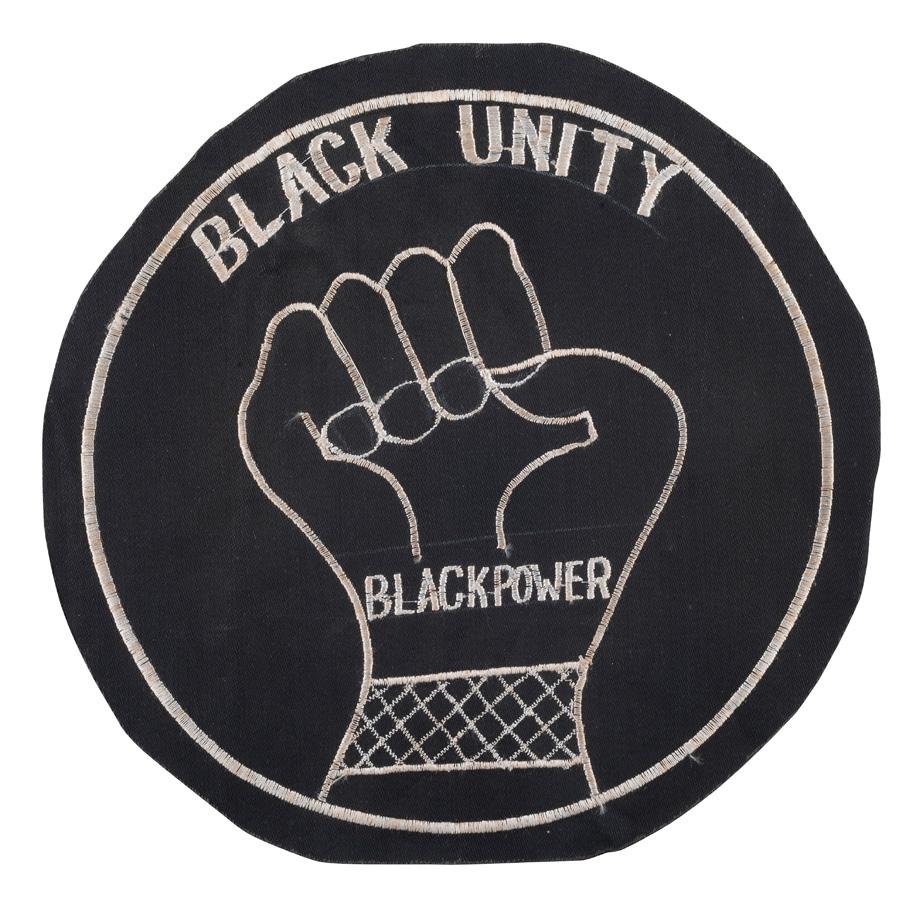
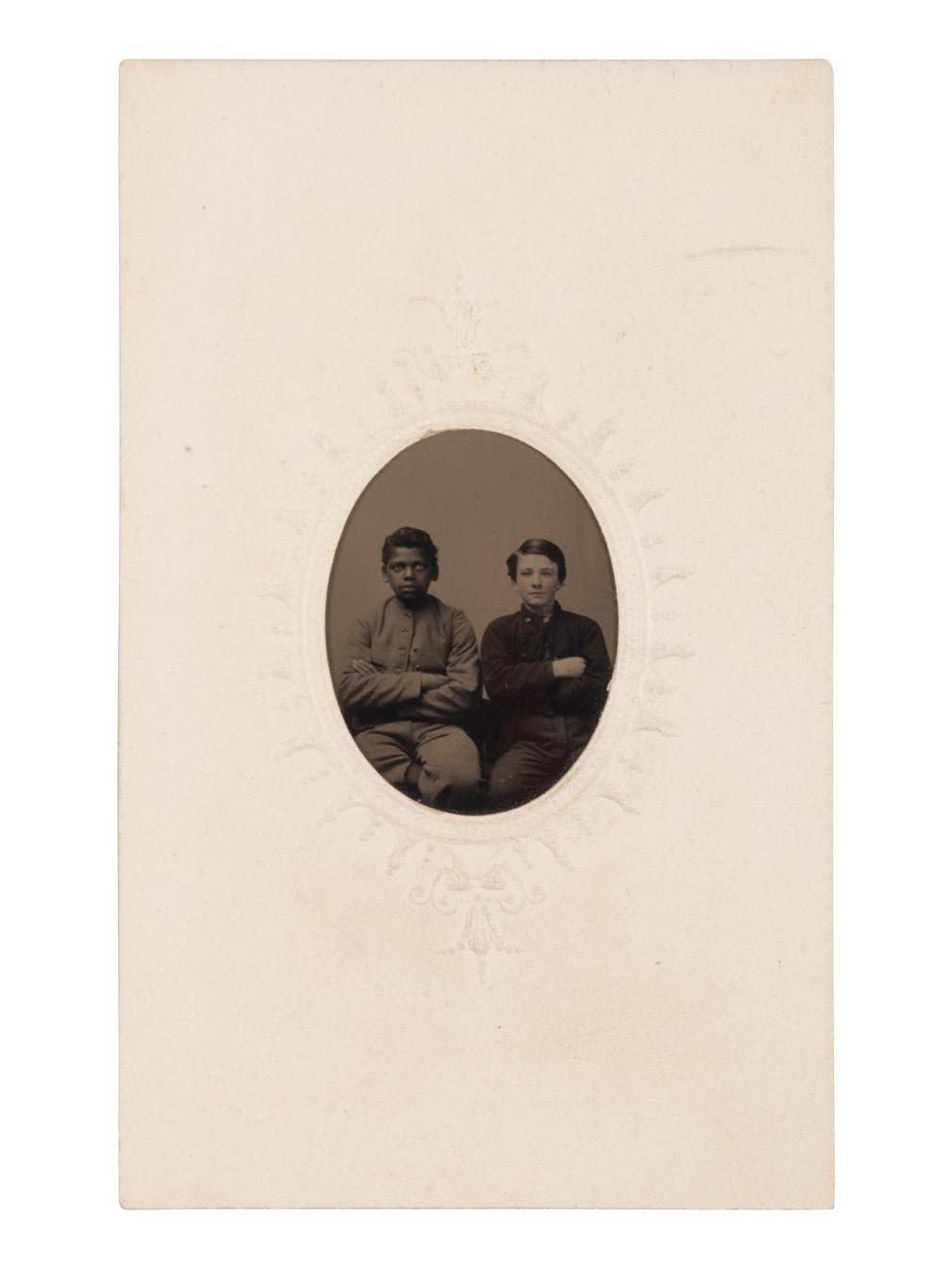
$300
$400
$500
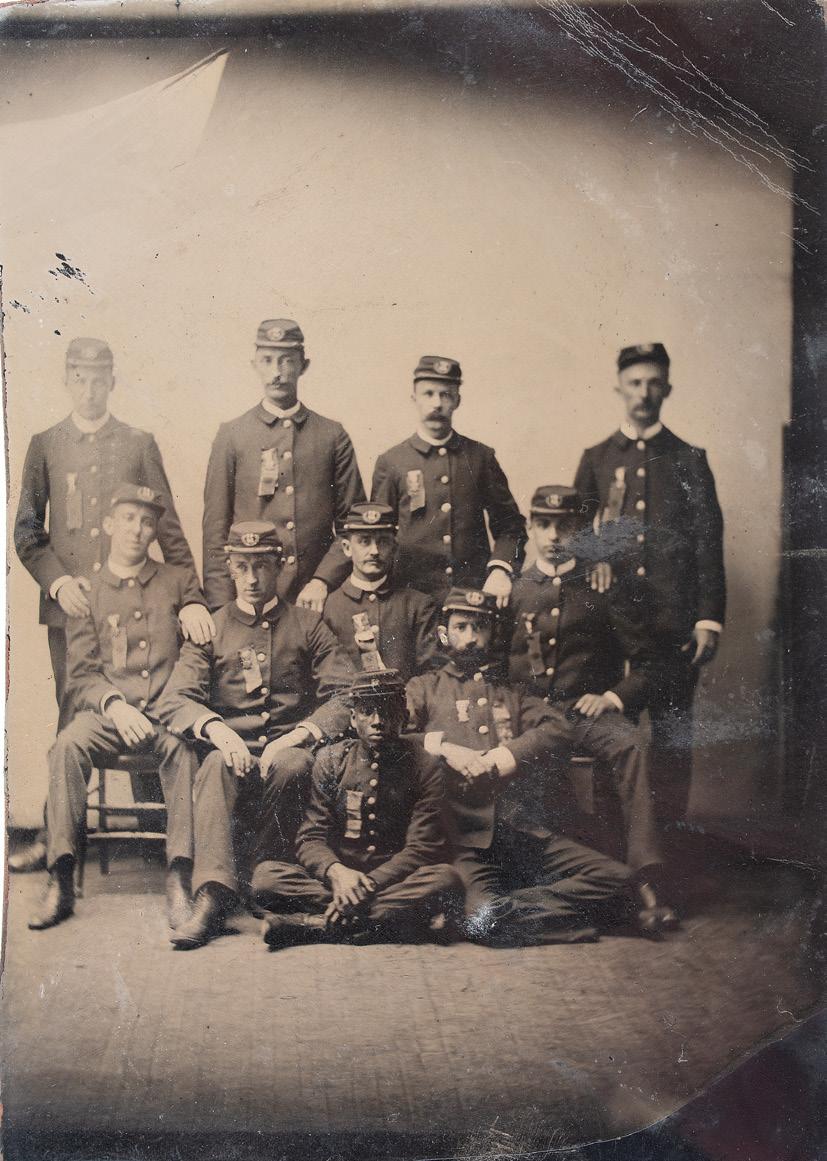


$600
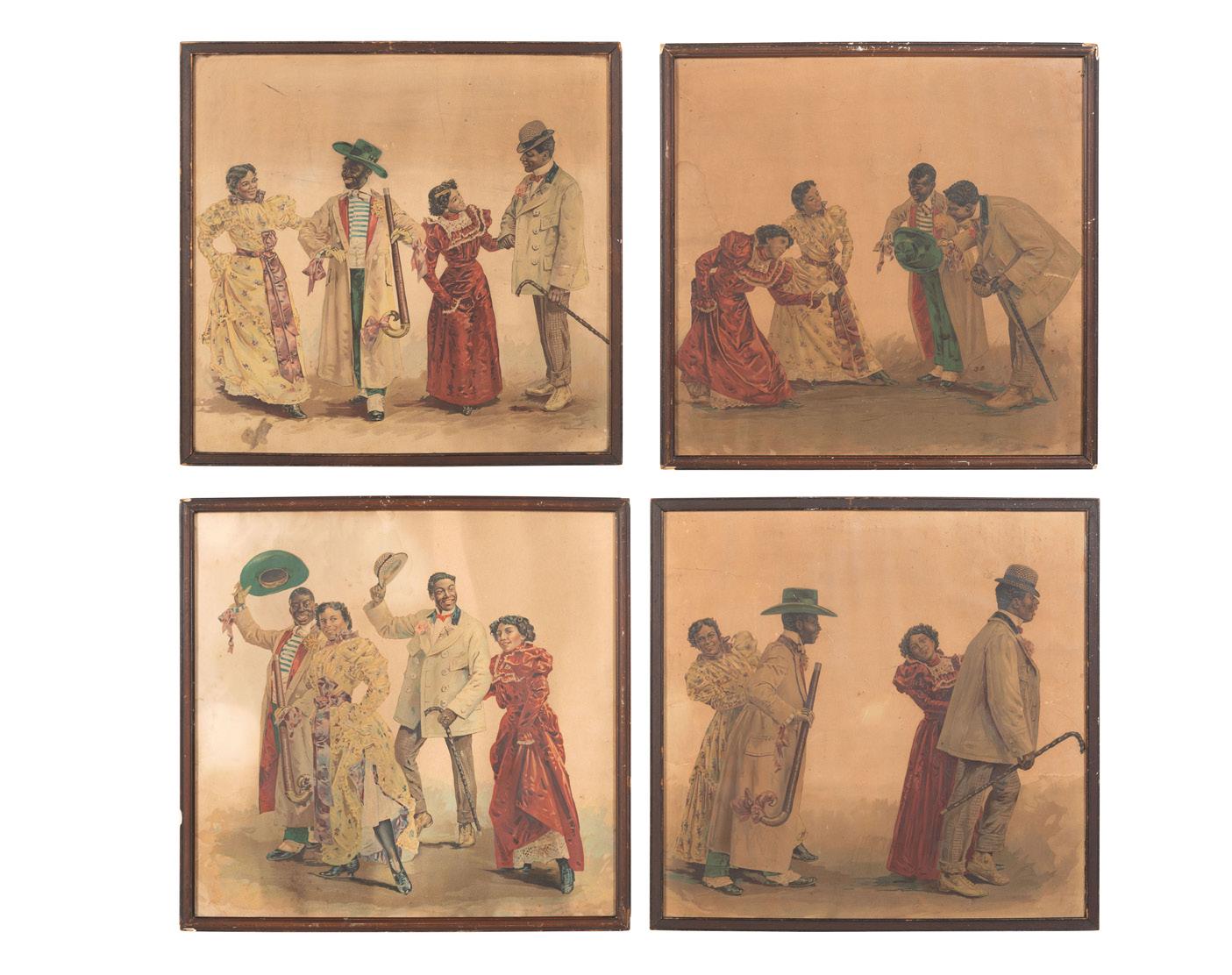
275
[AFRICAN AMERICANA]. Smythe, Augustine T., Herbert Ravenel Sass, Alfred Huger, Beatrice Ravenel, Thomas R. Waring, Archibald Rutledge, Josephine Pinckney, Carolina Pinckney Rutledge, DuBose Heyward, Katherine C. Hutson, and Robert W. Gordon. The Carolina Low-Country. New York: The MacMillan Co., 1931.

$400 - 600
276
[AFRICAN AMERICANA - COOKBOOKS]. PREVOST, Ruth (1917-1954). Mandy Lee’s Recipes for Good New Orleans Dishes. [Louisiana]: N.p., ca 1950-1954. RARE: OCLC locates only 3 copies.

$300 - 500
277
[AFRICAN AMERICANA - FINE ART]. WEEMS, Carrie Mae (b. 1953). Then What? Photographs and Folklore. [New York: CEPA Gallery, 1990].
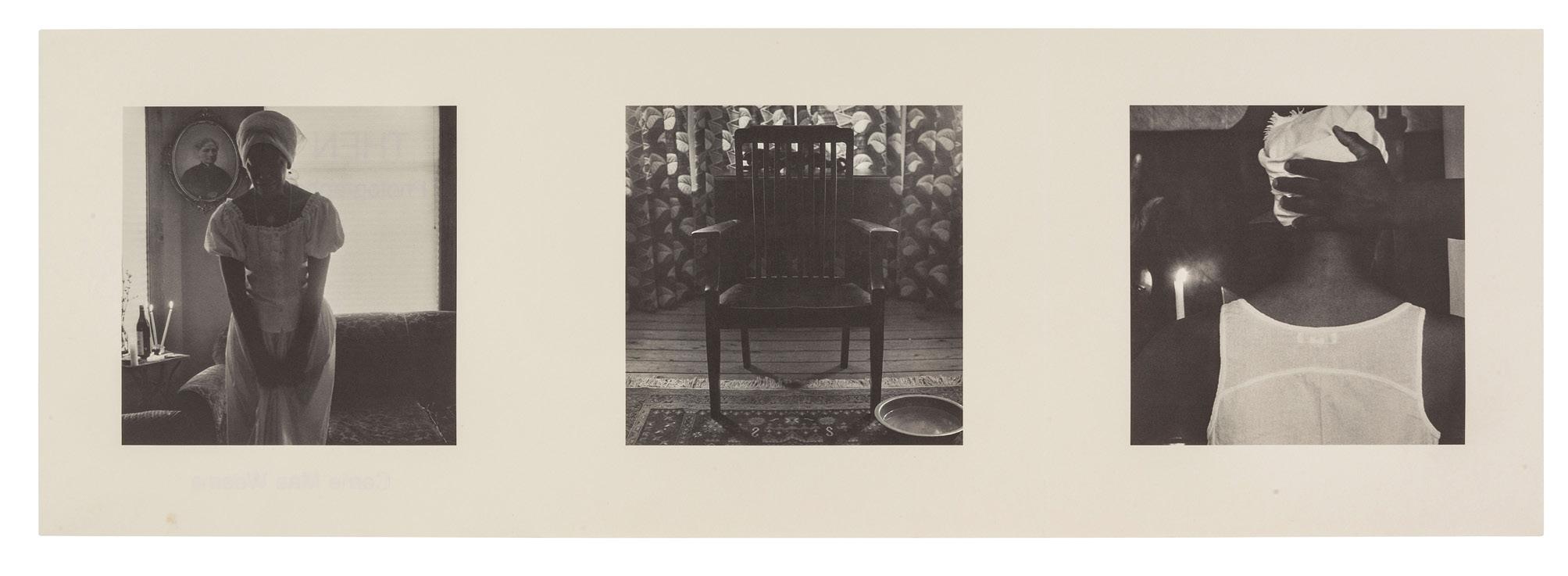
FIRST EDITION, published to accompany her exhibition which ran from 17 February to 23 March 1990 at CEPA gallery. Weems photographs explore race, class, family, and gender identity.
$2,000 - 3,000
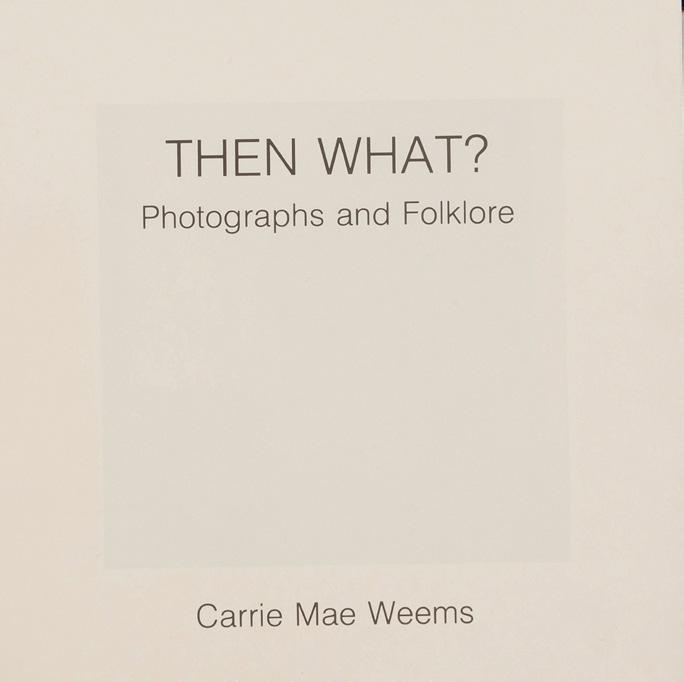
278
[AFRICAN AMERICANA - MUSIC]. M. Morton Hall presents Nina Simone, Monday, January 15, Martin Luther King Day at Kennedy Center. N.p., [1979].

$600 - 800
279 [AFRICAN AMERICANA - MUSIC]. A group of 2 posters promoting shows headlined by B.B. King and Smokey Robinson. Ca 1980s.

$300 - 400
280
[COUNTRY MUSIC]. Traditional Country Music Hall of Fame scrapbook identified to Harold Sharp, containing rare Hank Williams Memorial Souvenir program.
$800 - 1,000
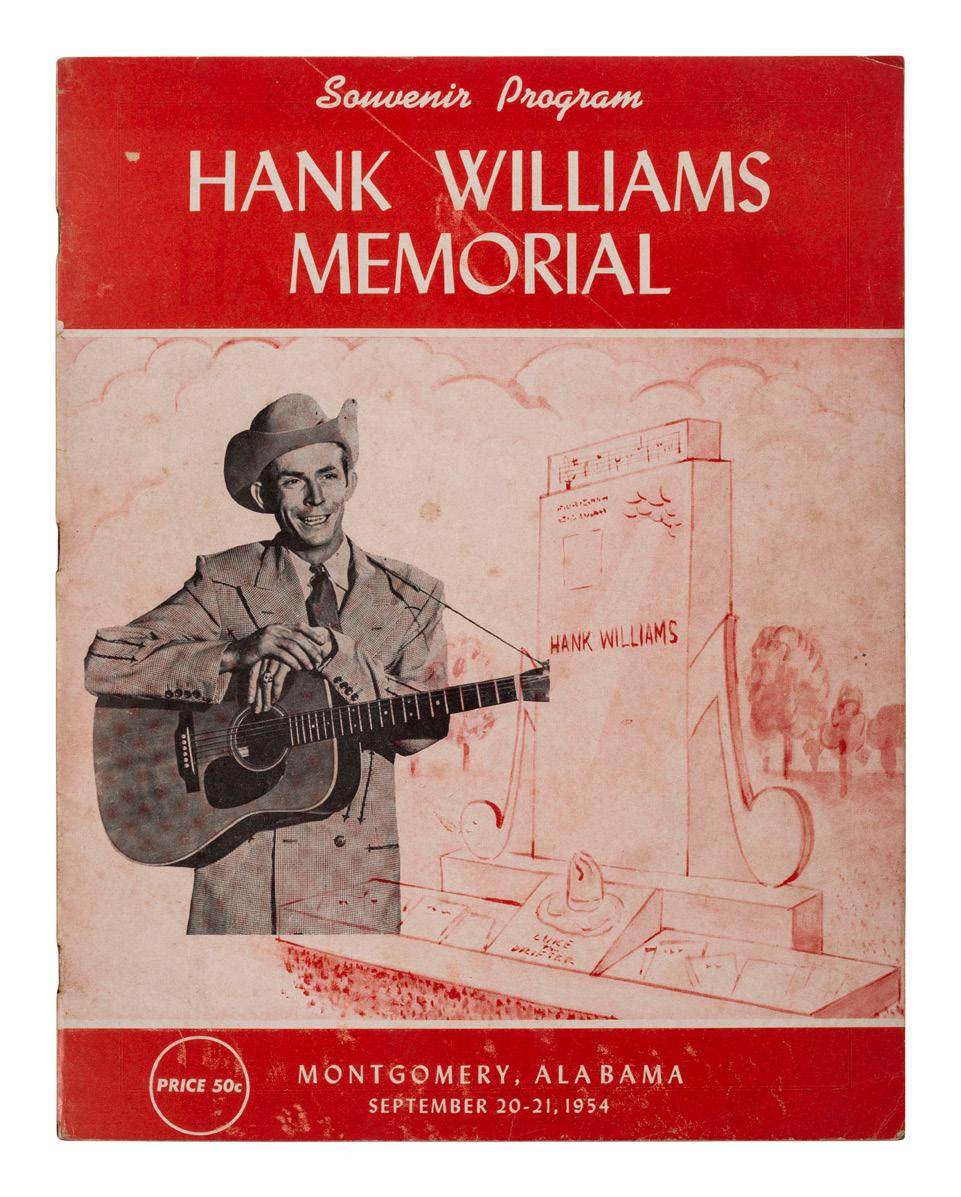
281


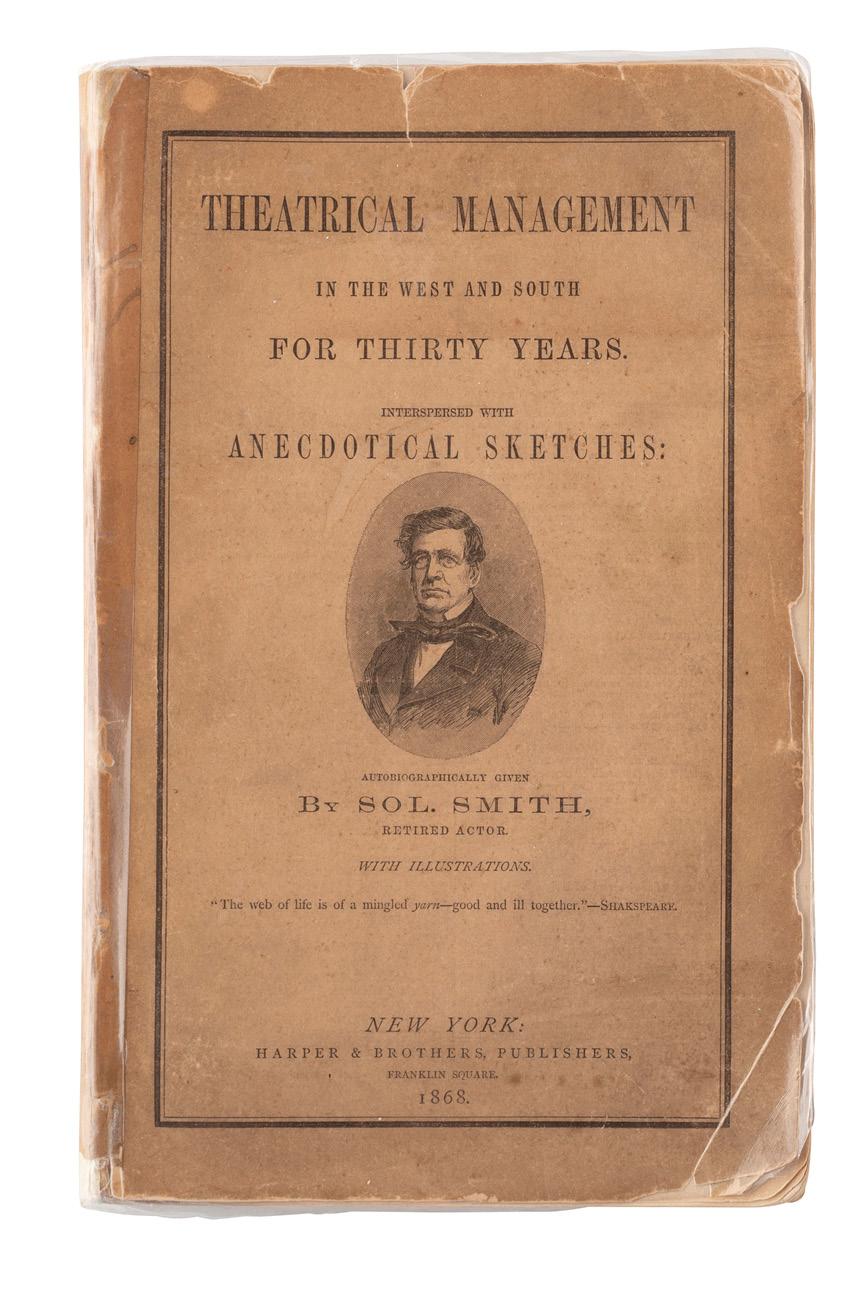
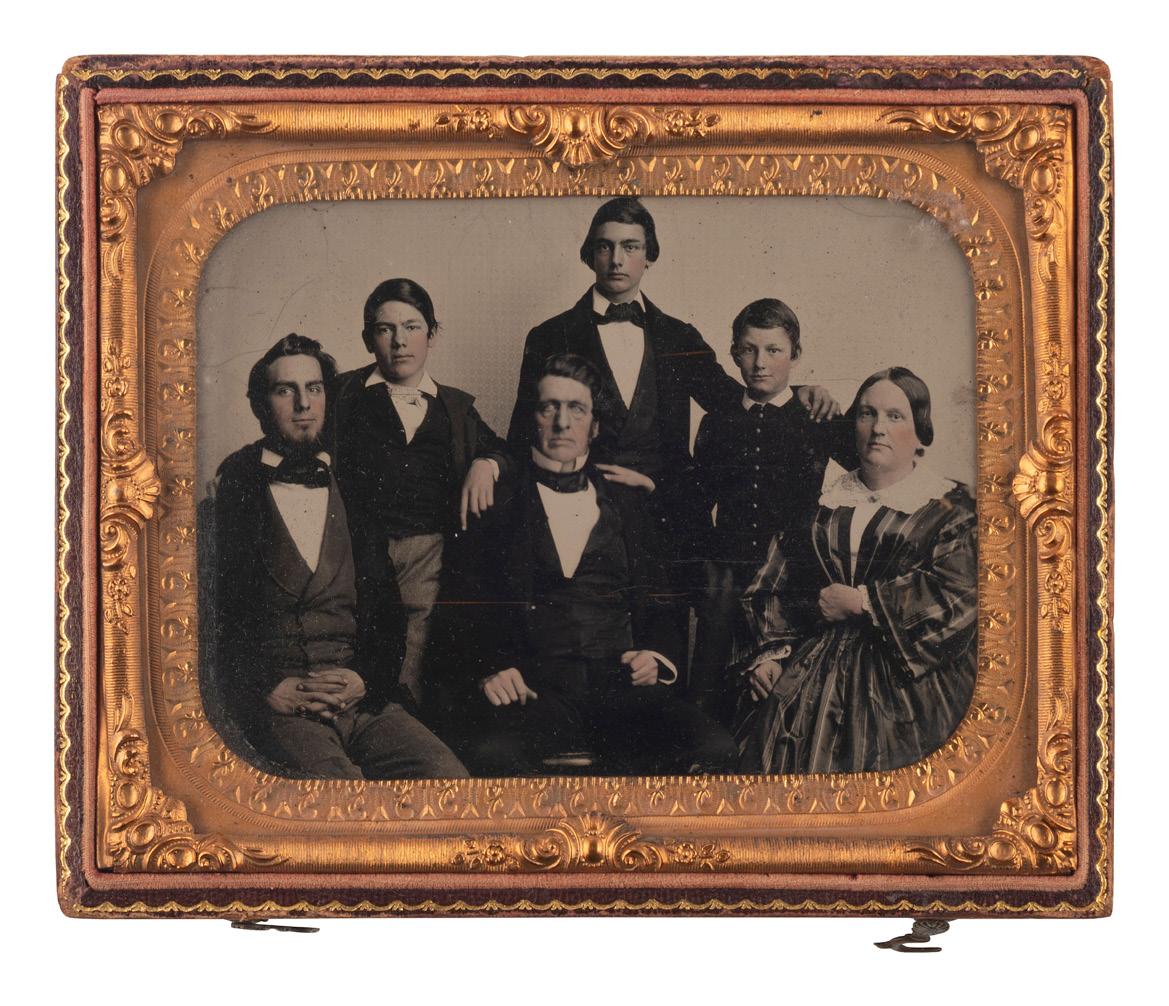
281A
[EARLY PHOTOGRAPHY]. Quarter plate daguerreotype of a clock maker. Quarter plate daguerreotype. (Great clarity and contrast, few scattered spots, light tarnish near lower left corner.) Housed in full leather case (fully separated at spine, surface wear throughout). A fine studio portrait of a young man holding a large, “triple decker” shelf clock, probably made in Forestville, Connecticut.
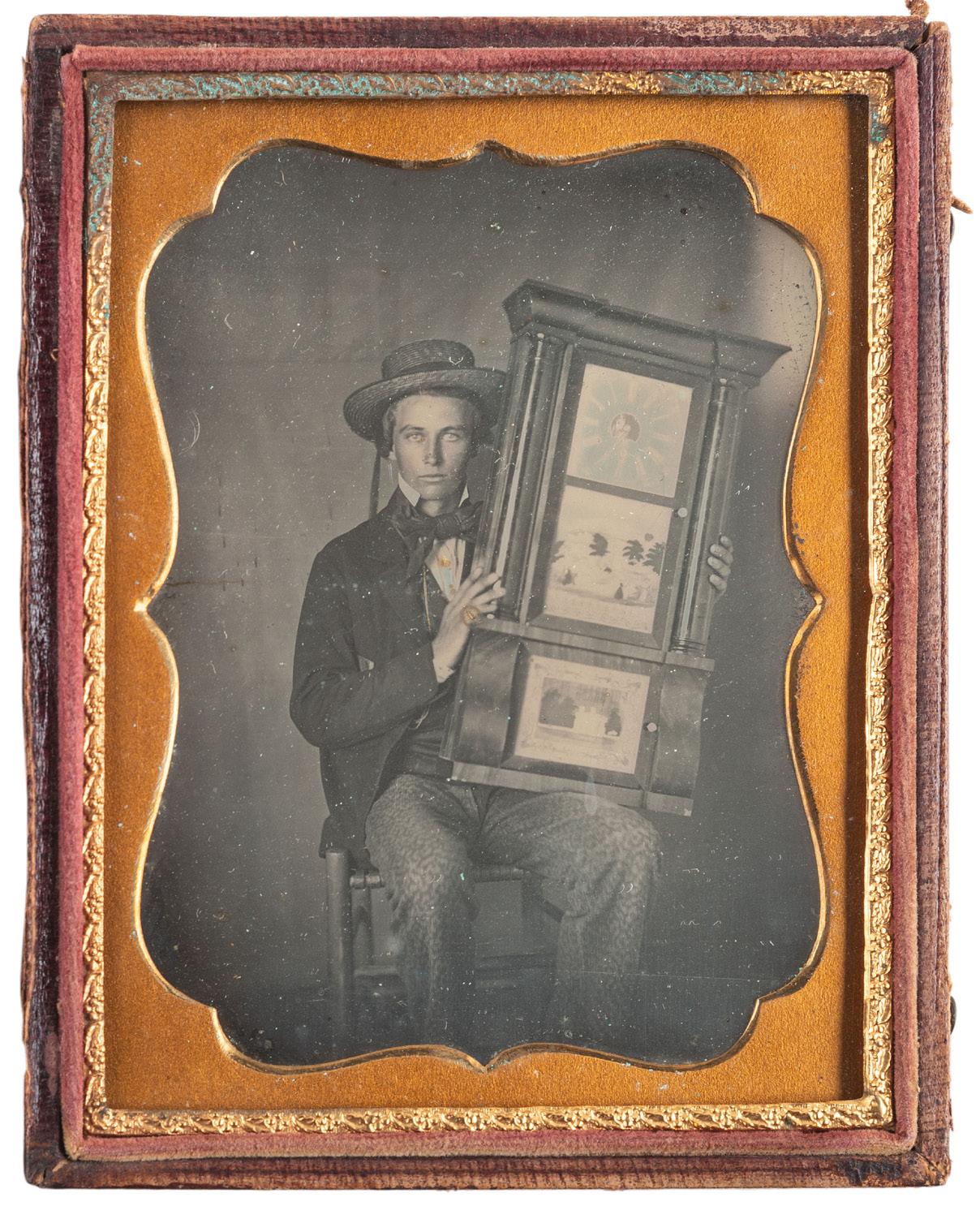
There were many clock makers in Forestville, though the style of this clock – a so-called “Sleigh Front” suggests it might have been made by J.C. Brown at the Forestville Clock Manufactory, circa 1850-1855.
$8,000 - 10,000
282
[EARLY PHOTOGRAPHY]. Quarter plate daguerreotype, possibly the earliest known photograph of Fort Mackinac, Michigan. Ca 1855 or later.
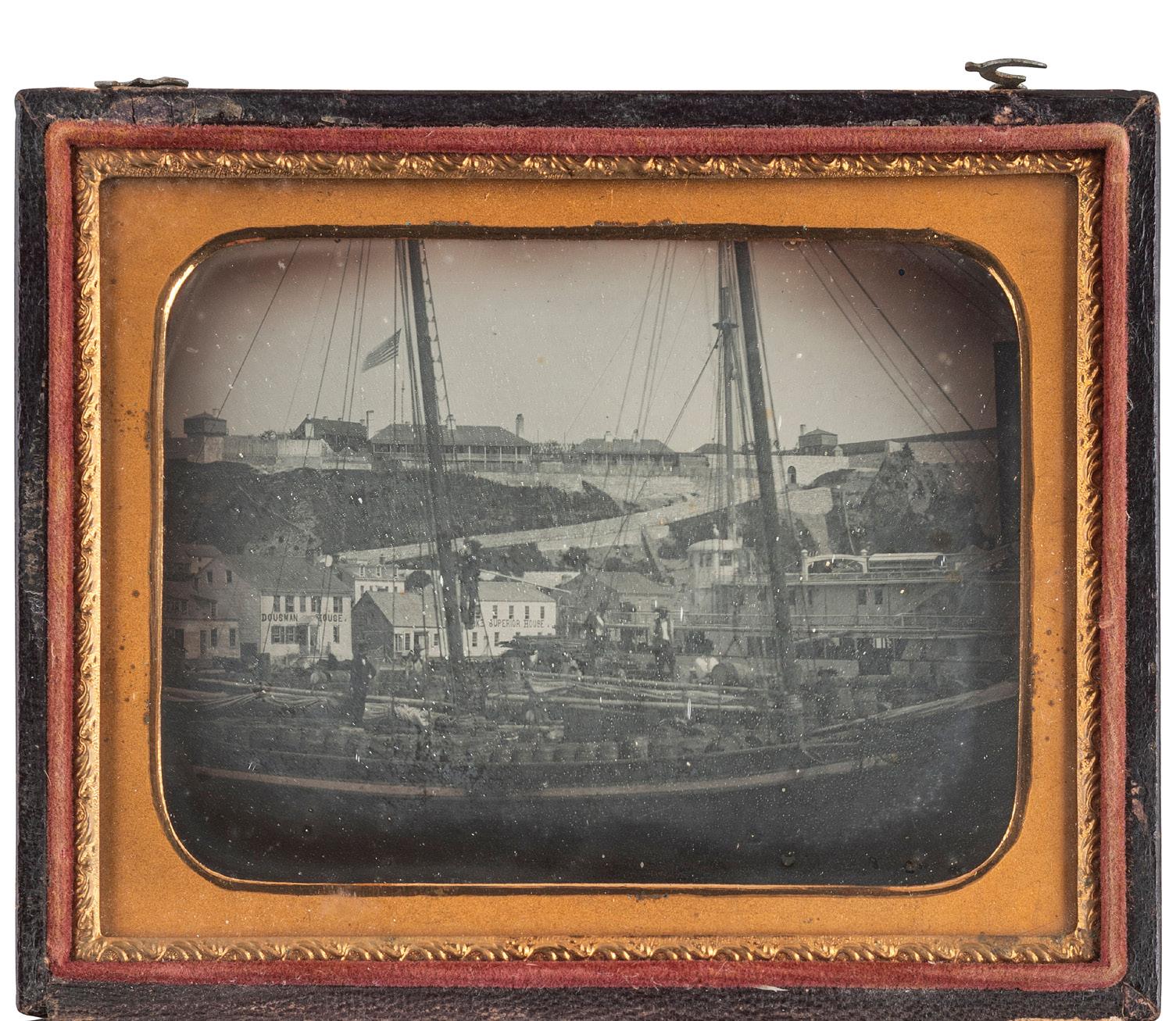
Anonymous, quarter plate daguerreotype. (Good clarity with some clouding, few spots to plate, tarnish to edges.) Housed in a full leather case, original seals intact.
An important image, probably taken from what is today the Arnold Dock on Mackinac Island. In the foreground a two masted schooner, its deck covered with wooden casks, is being unloaded. A side-wheel lake steamer is docked beyond the schooner, it’s paddle box – and name – sadly not in the frame.
The camera also captures Main Street, and Fort Mackinac with its large garrison flag in the distance. Two long-gone hotels –the Dousman House and Lake Superior House are clearly visible. The former was named for Michael Dousman, an early fur trader and prominent citizen who used Mackinac as his base. After surviving through multiple renovations and name changes, the Lake Superior house fell into disrepair and was torn down in 1938.
Mackinac Island occupies a strategic choke point at the straits separating Lakes Michigan and Huron. Successively the French, British and Americans built forts to control access between the lakes. The French were the first, building a log fort on the mainland south and west of Mackinac Island. At the end of the French and Indian War, the British – fearing that the location of the French fort was not defensible -- built a new fort of native limestone atop a 150-foot-tall bluff on Mackinac Island in 1780-81. American troops were garrisoned at the Fort after the Revolutionary War in 1796. During the War of 1812, the British captured the fort, and adding significant additions including the blockhouses visible in this daguerreotype.
In 1814, an American expeditionary force of seven frigates carrying 700 troops attempted to recapture the Fort but were unsuccessful. With the Treaty of Ghent, American troops reoccupied Mackinac in July 1815 and gradually, its importance declined. For much of its 19th century history the Fort served as a fur trading post and jumping off point for Government funded explorations of the upper Great Lakes. From 1875-1895 the fort and island became the second United States National Park. In 1895 the Park was decommissioned, and ownership transferred to the state of Michigan. Today the fort is administered by the Mackinac Island State Park Commission, surviving as the best-preserved Revolutionary War era fort in the United States.
$8,000 - 10,000
$1,000 - 1,500
$1,000 - 1,500
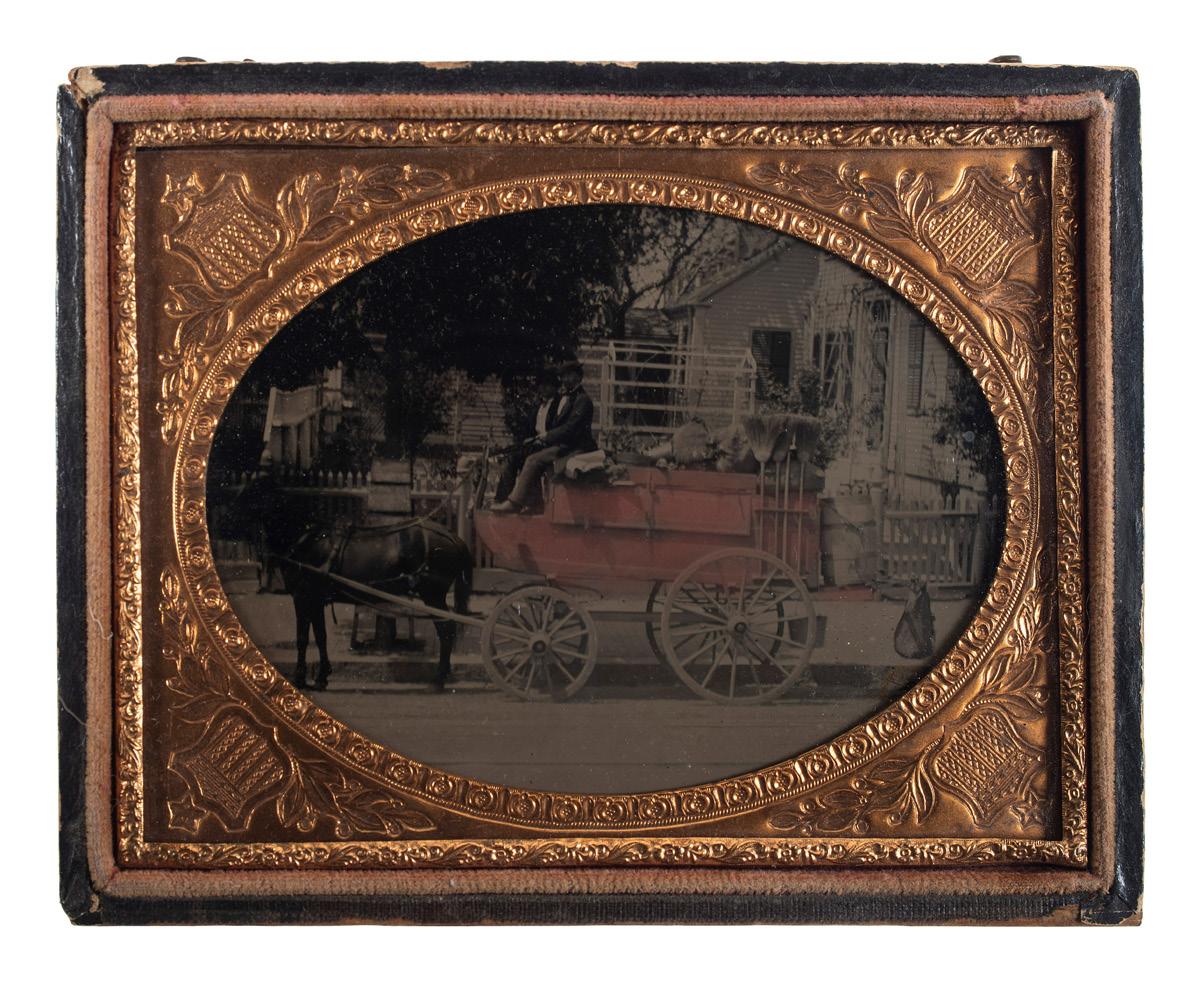
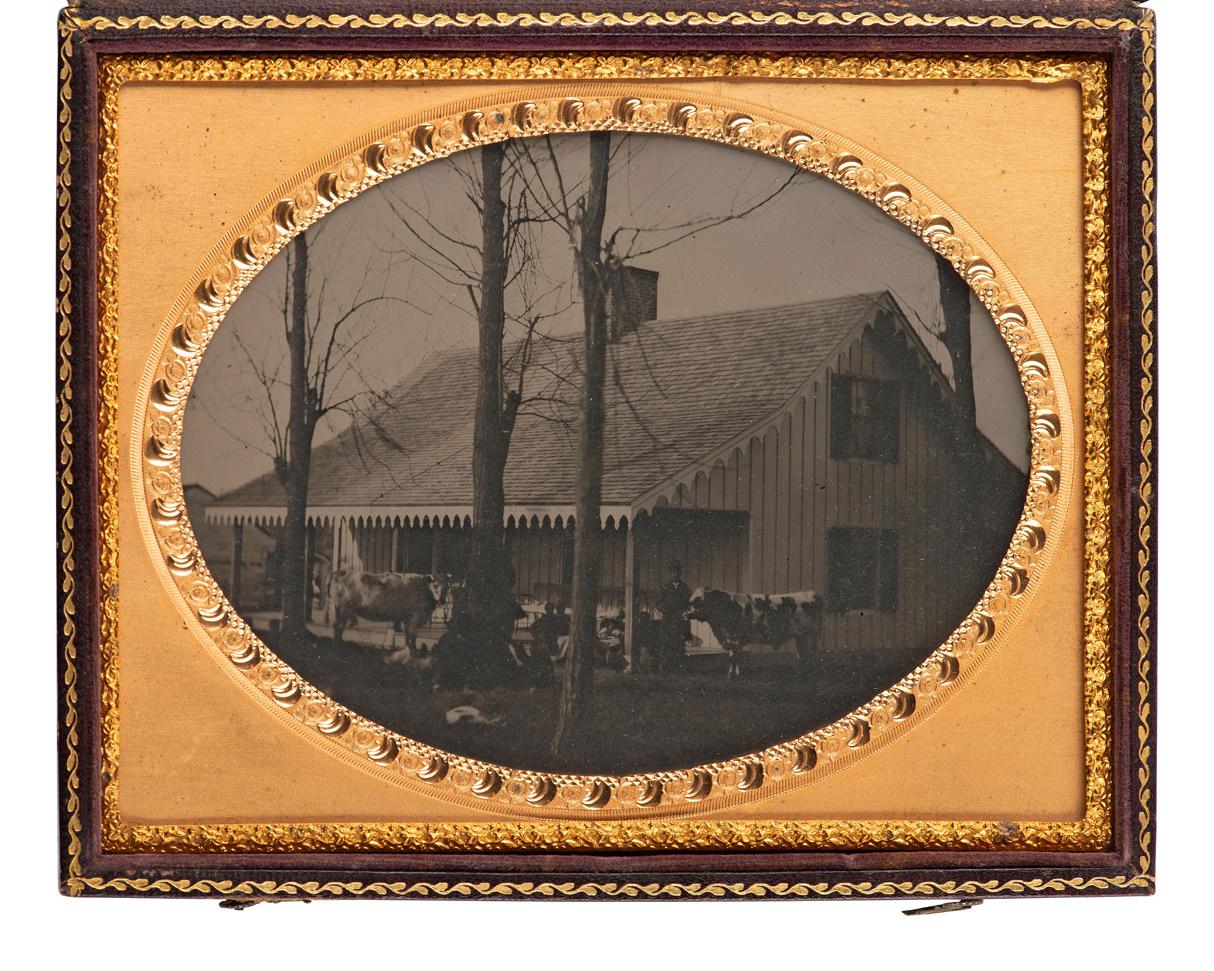

$1,000 - 2,000
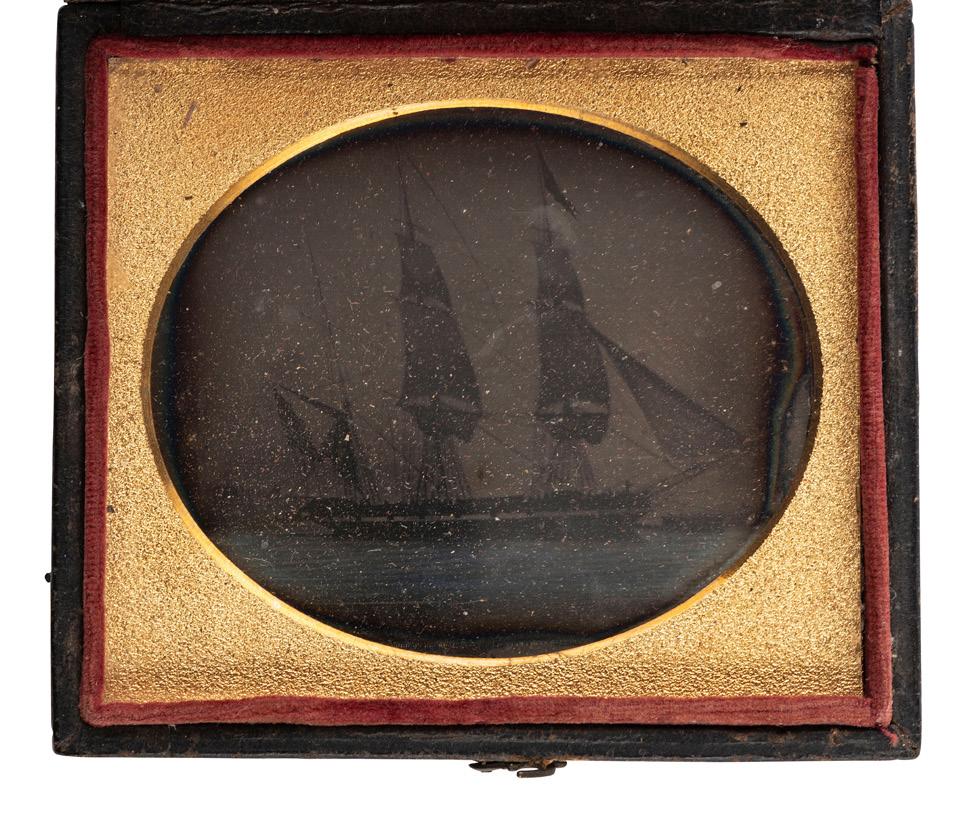

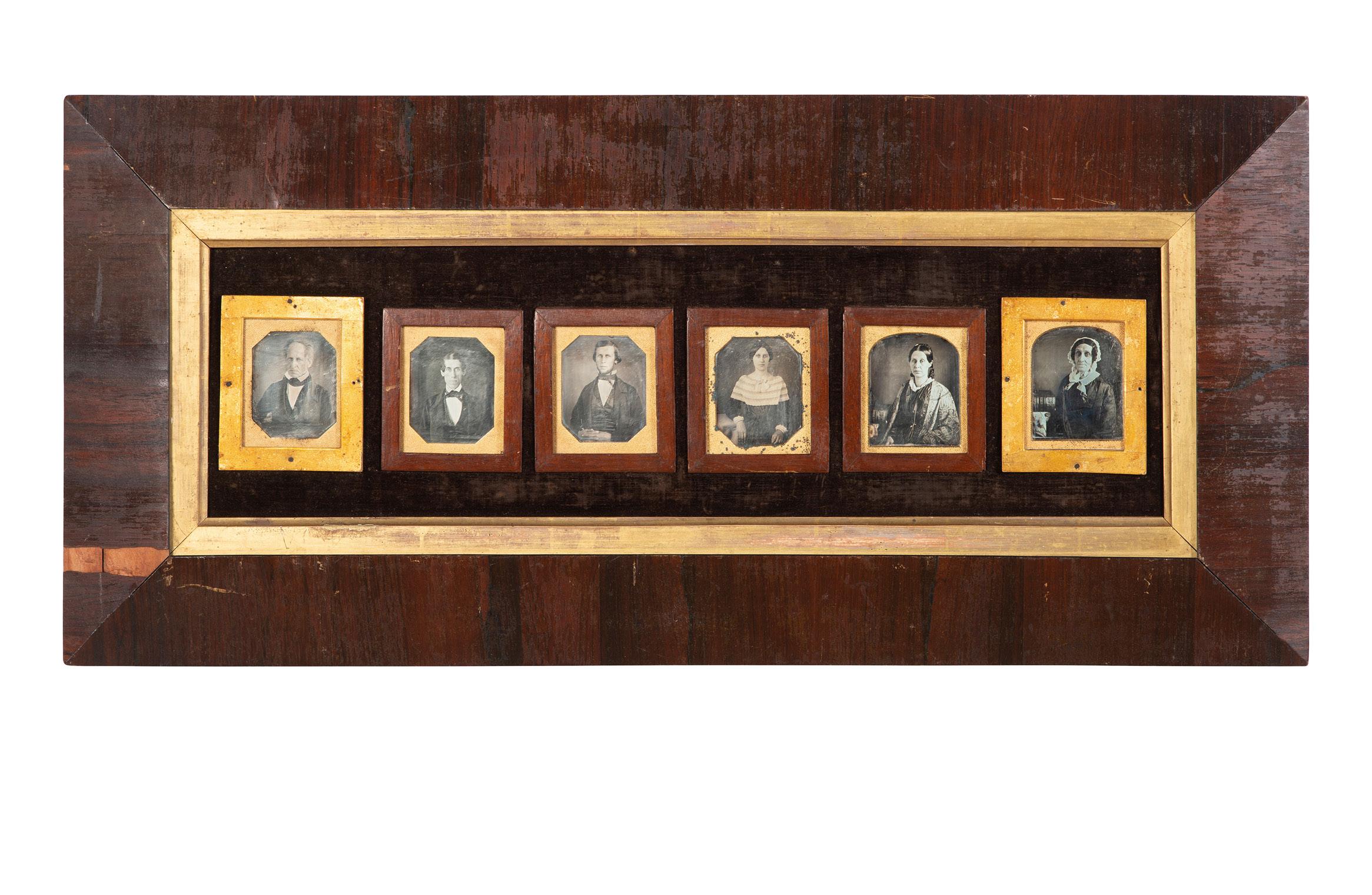
290
[EARLY PHOTOGRAPHY]. MITCHELL, D.S., photographer. CDV of Oliver Wendell Holmes, Jr., James W. Lanergan, and Colonel Charles Paine Horton possibly taken during a fishing trip at Grand Lake Stream, Maine, ca May 1867. St. John, New Brunswick: George J. Bowron.
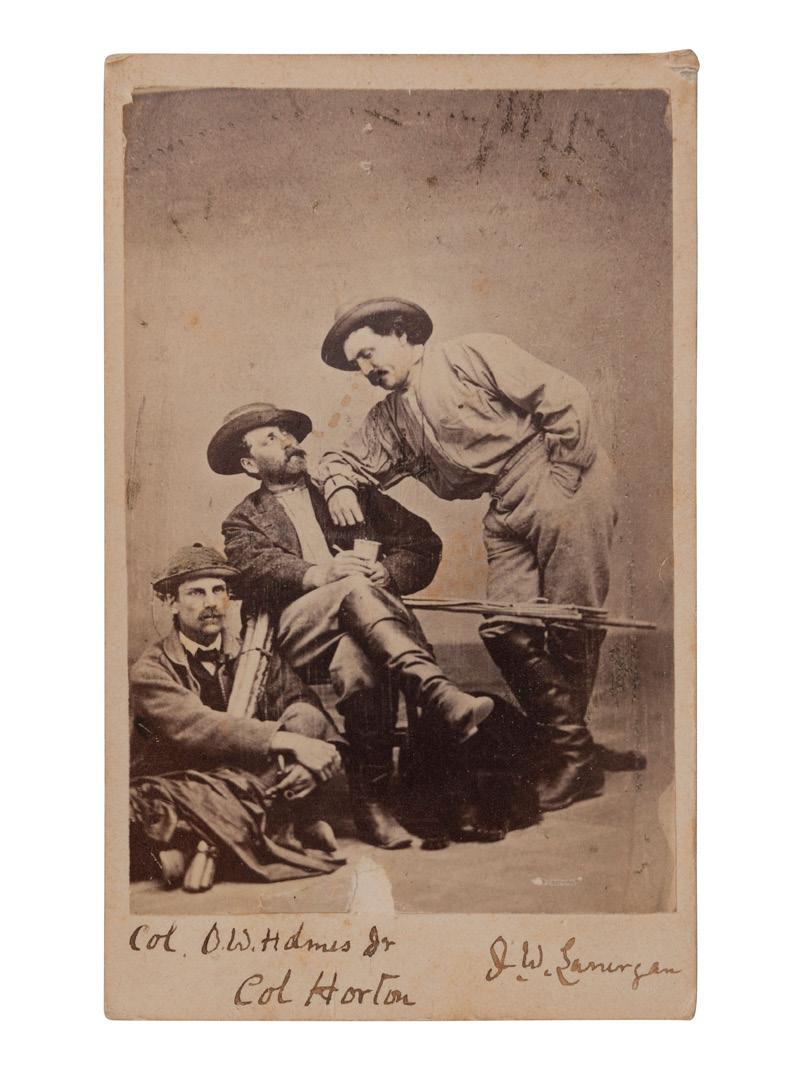
$300 - 600
289
[EARLY PHOTOGRAPHY]. MCCALLISTER & BROTHERS, photographers. Period copy CDV of Paul B. Goddard, M.D., pioneer in photography. Philadelphia, PA. Paul B. Goddard (1811-1866) is credited with being the first to use bromine as an accelerator in the daguerreotype process.
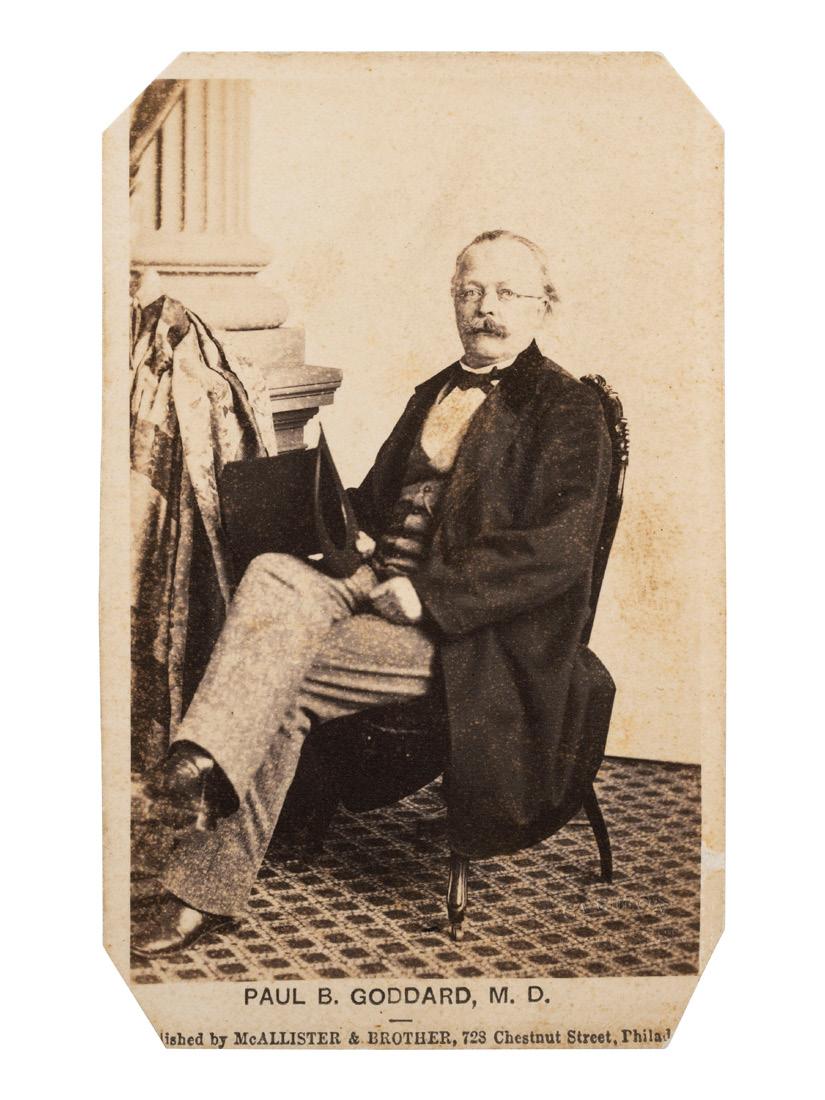
$300 - 500
291
GARIBALDI, Giuseppe (1807-1882). CDV signed by the Italian revolutionary. Genova, Italy: Alessandro Pavia, n.d.
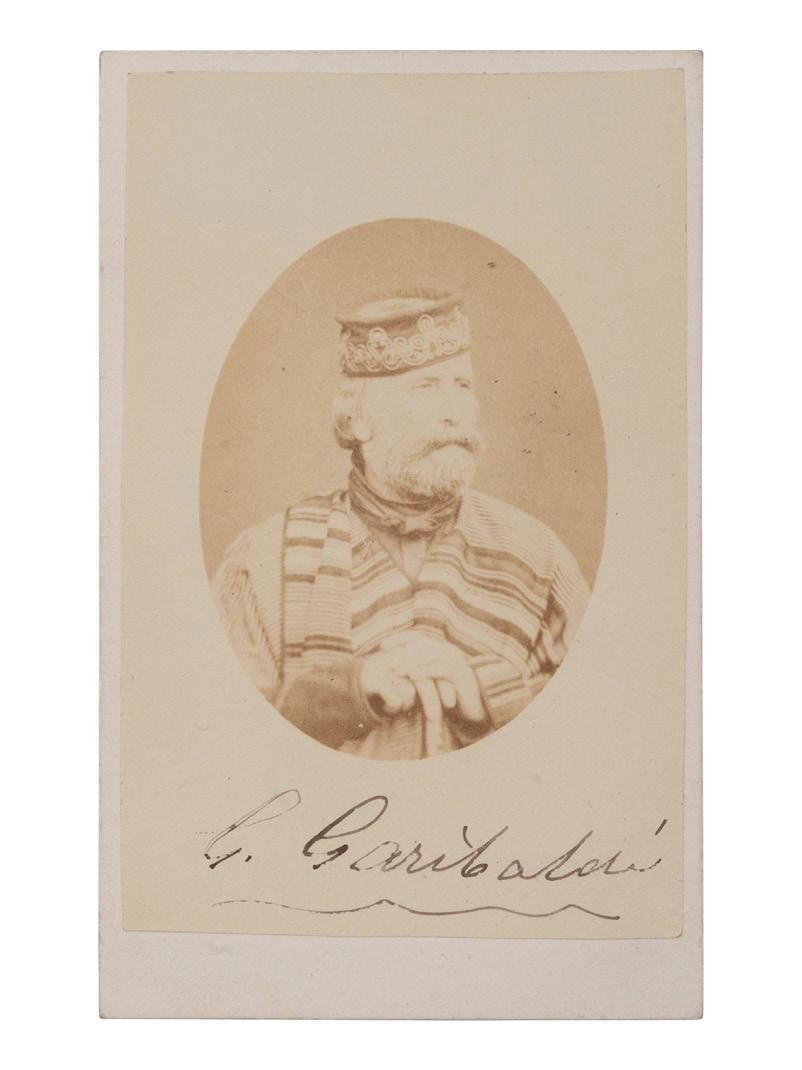
Property from the James Milgram, M.D., Collection of Broadsides, Ephemeral Americana, and Historical Documents
$300 - 500
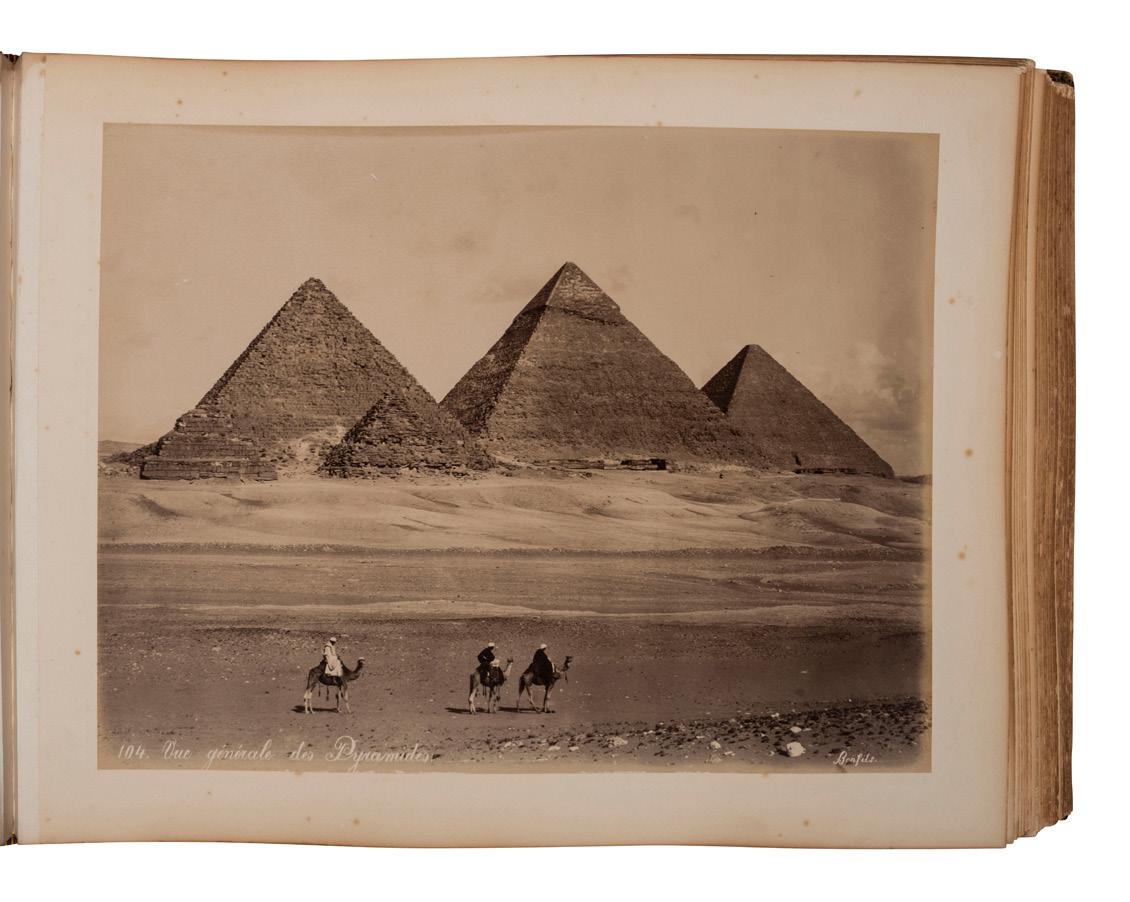
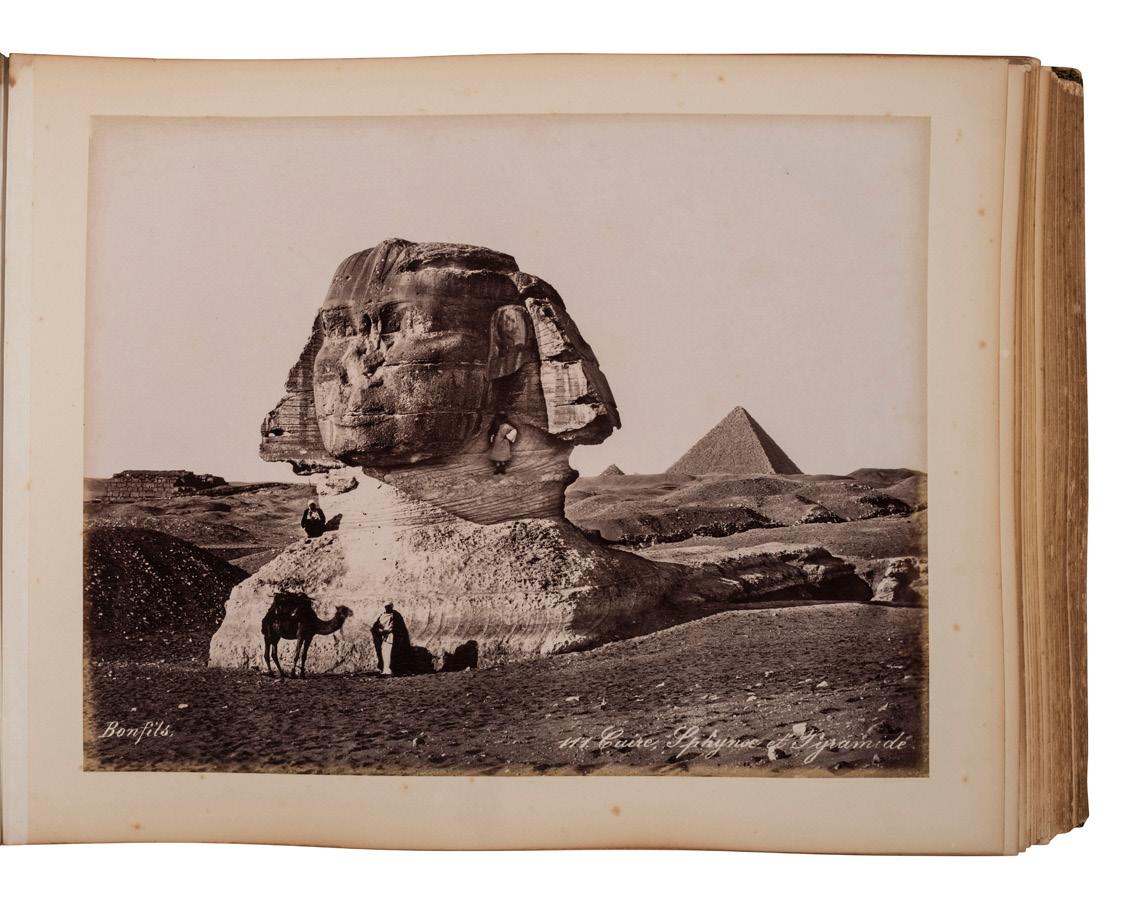
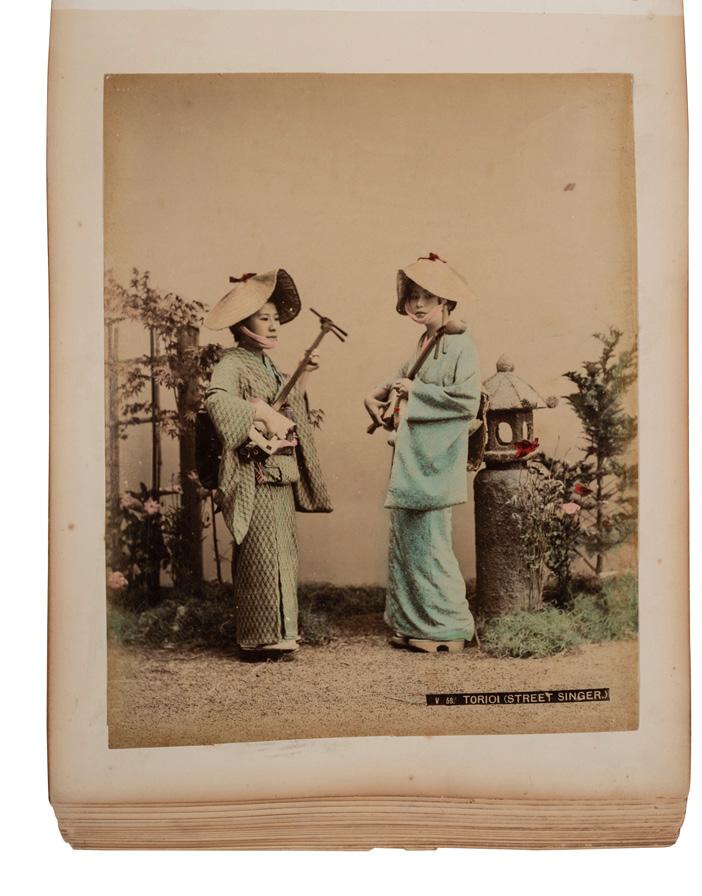



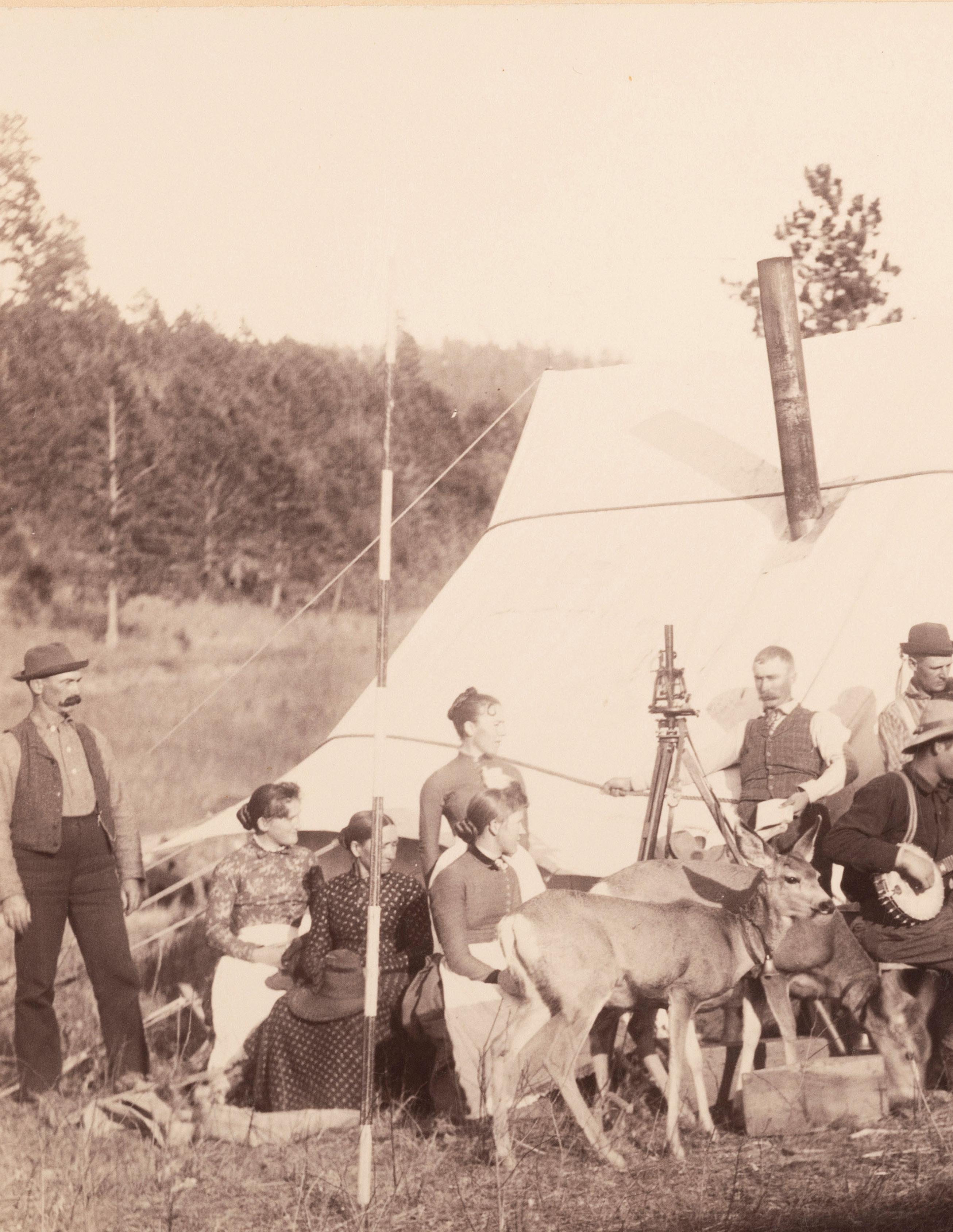

SESSION II
LOTS 295–567
295

FRANKLIN, Benjamin (1706-1790). Document signed (“B. Franklin”), as President of the Supreme Executive Council of Pennsylvania. [Philadelphia, PA], 20 October 1785.
1 page, 13 3/4 x 13 5/8 in, with original star-shaped seal, some losses to star, minor soil, occasional creasing, framed to 21 1/4 x 17 1/4 in., not examined out of frame.
Signed boldly and with a flourish by Franklin in his role as President of the Supreme Executive Council of Pennsylvania, a role that was analogous to Governor of Pennsylvania. The Council was founded by the 1776 Constitution of the Commonwealth of Pennsylvania and began convening in Philadelphia on 15 July 1776, less than 2 weeks after the Federal Declaration of Independence. Franklin was the 6th President, of 7, and it would prove to be one of his last public roles as he would die 2 years after his term of service ended on 5 November 1788.
The document here is a land grant for Joseph Swift for “a certain Tract of Land called ‘Digby No 3” in Westmoreland County, PA.

Property from the James Milgram, M.D., Collection of Broadsides, Ephemeral Americana, and Historical Documents
$8,000 - 12,000
296 [POLITICS]. Gazette of the United States. NO. XXXIII. New York: John Fenno, 5 August 1789. Editorial signed in type by Alexander Hamilton under his pen name.

$1,000 - 1,500
297 [FOUNDING FATHER]. HAMILTON, Alexander (1757-1804). Autograph note in Hamilton’s hand, unsigned. 19 April 1794.
1 page, 5 5/8 x 4 in., affixed to thin paper mount.
Alexander Hamilton was the first Secretary of the Treasury, appointed by George Washington in April 1789, serving until his resignation 31 January 1795. This note, done in the third person, was entirely written by Hamilton, concerning funds due the Government:
“The Secretary of the Treasury presents his Compliments to Mr. Mylan and will thank him for a little note of the sums due to the clerks discharged from his office - He also wishes to know whether the services performed were in 1793 or 1794 and the amount of their claims for each year.”

Mylan was aide-de-camp to President Washington, and in 1794, he was US Commissioner of Loans.
Property from the James Milgram, M.D., Collection of Broadsides, Ephemeral Americana, and Historical Documents
$1,000 - 2,000
298
MORRIS, Robert (1734-1806). Autograph letter signed (“Robt. Morris”) as United States Senator. Philadelphia, 14 August 1794.

2 1/3 pages, on bifolium, 7 1/8 x 9 1/2 in. Addressed on integral leaf, docketed.
In this letter to James Carey of Baltimore, Morris writes of a lawsuit being filed against him, asking Mr. Carey to hire a lawyer and serve as his bail. He writes, “The enclosed extract of a letter [not included here] from Geo Gale Esq to me...conveyed the first intimation I ever received of a suit having been instituted against me...they alledge that I am responsible in consequence of some letter of mine to Tench Tilghman or Tench Tilghman & Co for a claim of £300 to £400 value in public certificates...”


After explaining his perceived innocence in the matter, he asks for Carey’s aid: “I request the favour of you to employ such able counsell as you think most capable of serving me in this business and that you will become Bail for me to this attachment & I hereby promise & bind myself to bear you harmless for so doing. The Lawyer you employ will examine into the case and give me the necessary information so that I may take steps to secure myself from injustice...”
Robert Morris (1734-1806) is considered a Founding Father of the United States, having served as a member of the Second Continental Congress and having signed the Declaration of Independence, Articles of Confederation, and the United States Constitution. During 1781-1784 he served as Superintendent of Finance, giving him the unofficial title of “Financier of the Revolution.” He would help set up the Bank of North America, but refused to take the position of Secretary of the Treasury. Thereafter, he served as a United States Senator from Pennsylvania. During and after his time in Congress, however, he made some poor speculations and went into debt, being confined to debtors’ prison from 1798-1801.
Property from the James Milgram, M.D., Collection of Broadsides, Ephemeral Americana, and Historical Documents
$500 - 700
299 [FOUNDING FATHER]. WOLCOTT, Oliver Jr. (1760-1833). Letter signed (“Oliv. Wolcott Jr.”) as Comptroller. “Treasury Department, Comptroller’s Office,” 20 January 1794. With free franked envelope.
One page, 8 x 9 7/8 in. With free franked cover stamped “Free,” and signed (“Oliv. Wolcott Jr.”), docketed.
Oliver Wolcott Jr. would go on to serve as the second United States Secretary of the Treasury (1795-1800) and as the 24th Governor of Connecticut (18171827).
Property from the James Milgram, M.D., Collection of Broadsides, Ephemeral Americana, and Historical Documents
$400 - 600
300 [POLITICS]. LIVINGSTON, Walter (1740-1797). Autograph letter signed (“Walter Livingston”), with franking signature on address panel of integral leaf (“Walter Livingston”), to an unnamed recipient. Manor Livingston, 30 November 1794.
Property from the James Milgram, M.D., Collection of Broadsides, Ephemeral Americana, and Historical Documents
$300 - 400
301 [WASHINGTON, George (1732-1799)] - - DANDRIDGE, Bartholomew Jr. (ca 17731802). A group of 4 retained copies of letters written by Bartholomew Dandridge, Jr. to George Washington, including two previously unrecorded manuscripts.
$2,000 - 3,000
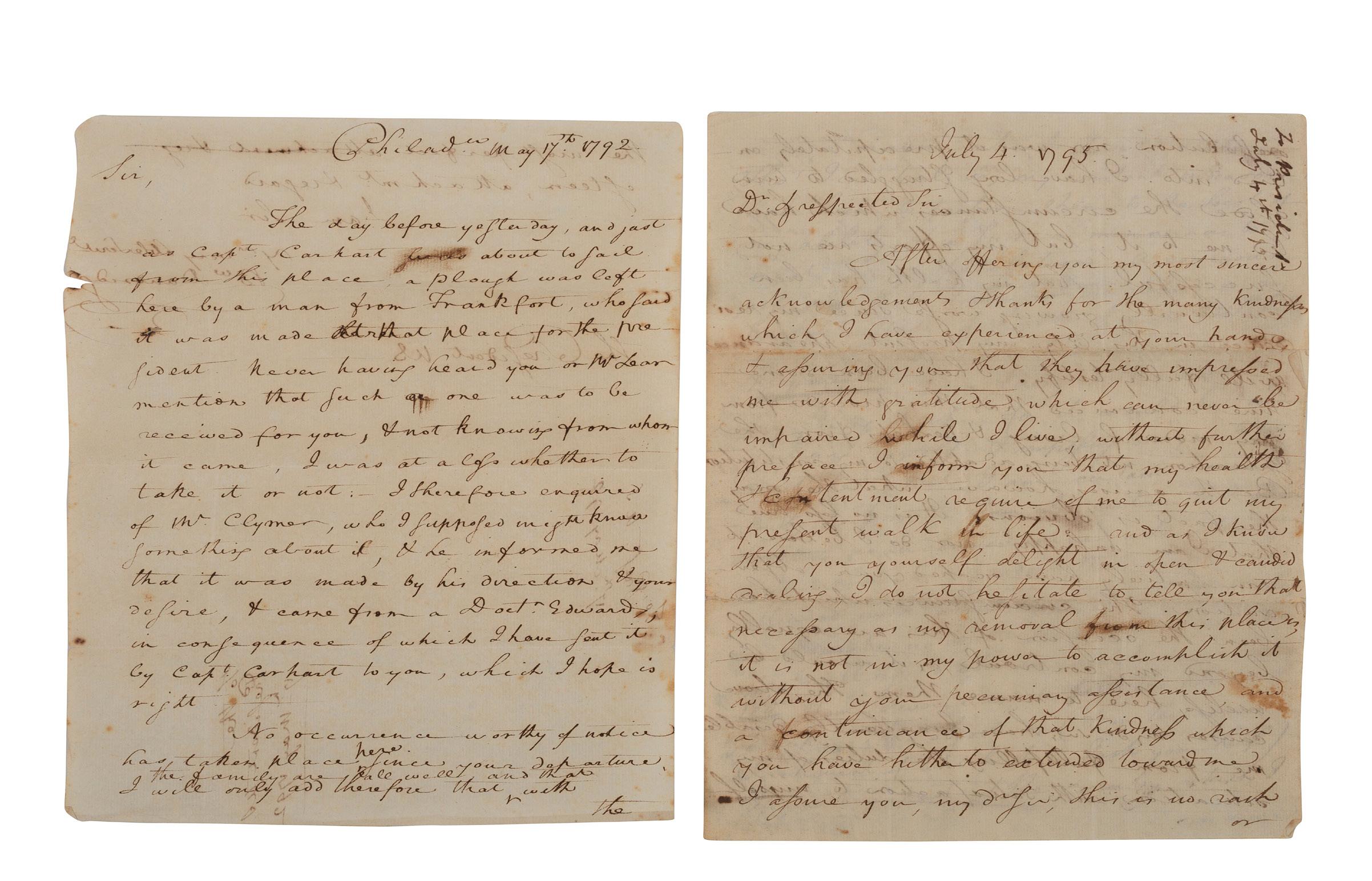
303
JEFFERSON, Thomas (1743-1826). Autograph letter integrally signed (“Th. J.”) to Thomas Mann Randolph. 8 November 1805.
One page, 8 x 10 in., light folds, wear to edges including loss to left edge. Docketed verso, (“Th. Jefferson / Nov. 8. 18.05”), possibly in Jefferson’s hand Jefferson writes, in full: “Will you be so good to send me ‘Prince on annuities’ an 8vo volume which you will find among the Mathematical books on the night stand of the South East door of my cabinet, being immediately wanted will you be so good as to send it by return of post, well wrapped in paper. I enclose for Pator(?) a note just now received from Mrs. Madison on the subject of her articles.”
With autograph note signed by Nicholas P. Trist at bottom, (“N.P. Trist”) describing the letter above as “an autograph letter from Thomas Jefferson to his son in law Thomas Mann Randolph, written, as is shown by the date, (Nov. 8, 1805) during the Presidency of T.J. Given to Miss Sarah Humphreys, with the most respectful and friendly regards.” Philadelphia, PA, 21 December 1858.
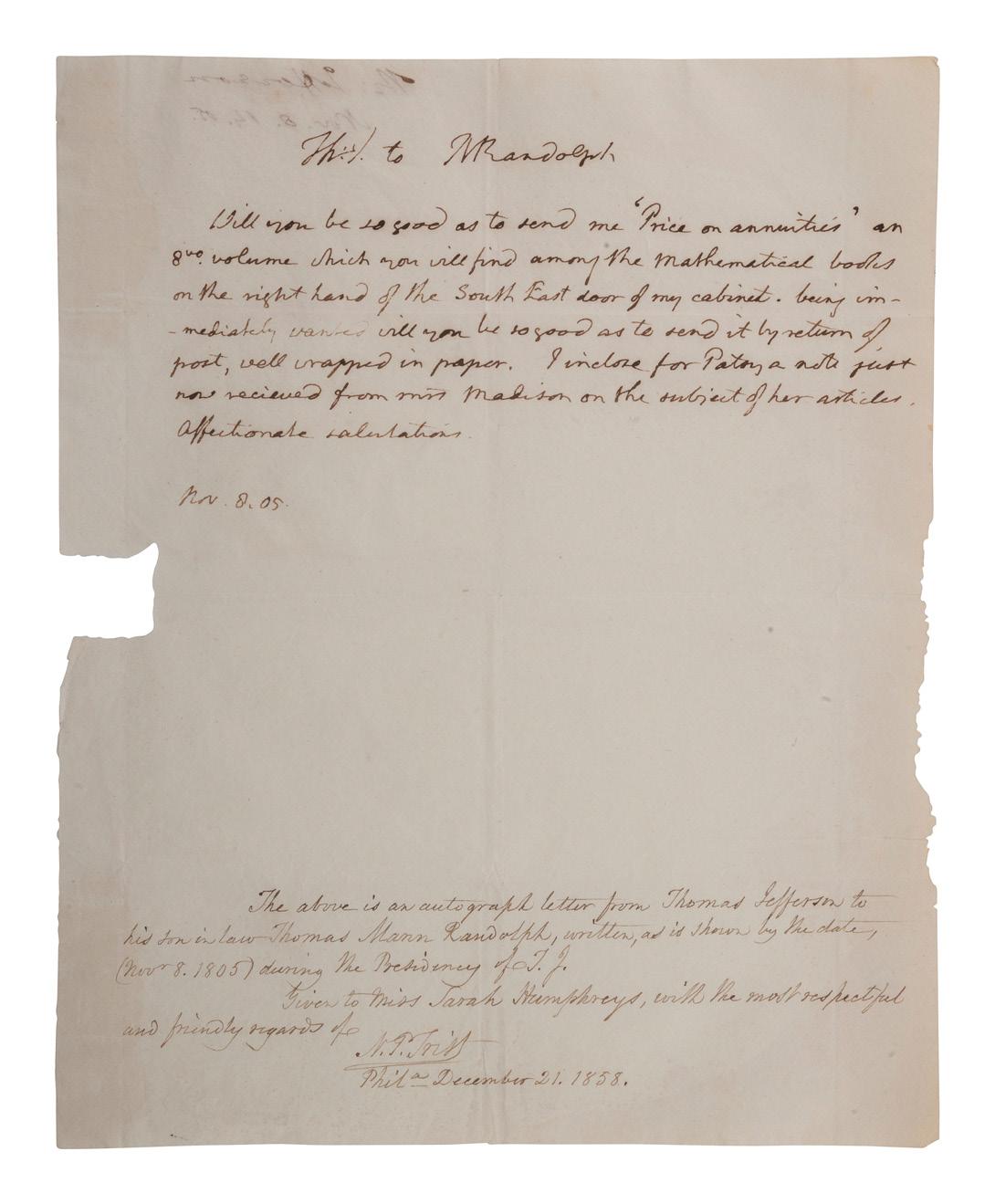
Nicholas P. Trist (1800-1874) studied law under Thomas Jefferson and served as his personal secretary in the 1820s. He was the executor of Jefferson’s estate. He is best known for negotiating the Treaty of Guadalupe Hidalgo in 1848, which ended the Mexican-American War.
Property from the James Milgram, M.D., Collection of Broadsides, Ephemeral Americana, and Historical Documents
$3,500 - 5,500
302
[WASHINGTON, George (1732-1799)]. J. Russell’s Gazette. Vol. VII, Nos. 39-40. Boston, MA: James Cutler, 16 and 20 January 1800. Funeral Oration on the death of George Washington published in 2 consecutive issues.
$3,000 - 4,000
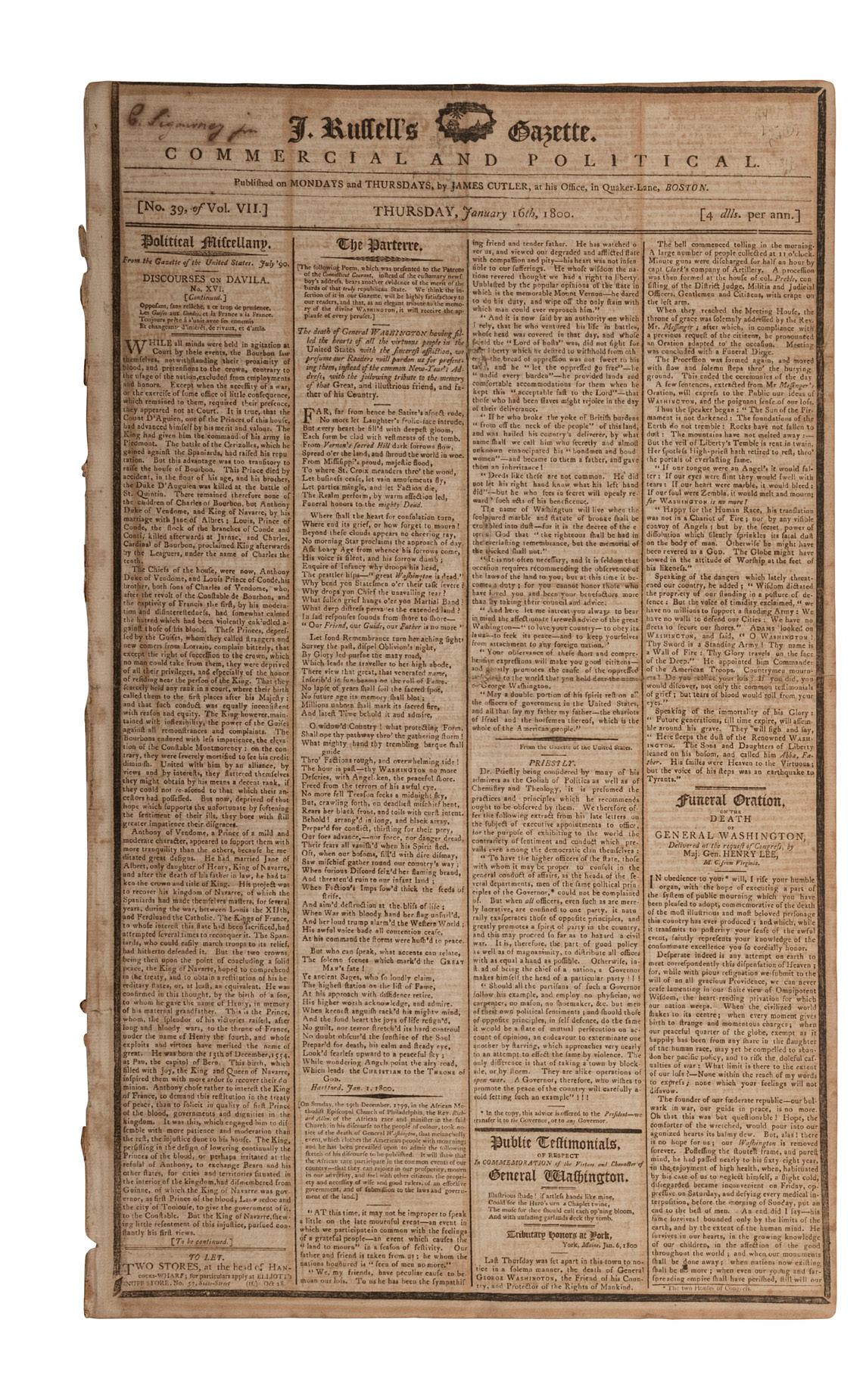
304
JEFFERSON, Thomas (1743-1826). Partly printed land grant signed (“Th. Jefferson”) as President of the United States, countersigned by James Madison as Secretary of State. Washington, DC, 20 January 1809.

$2,000 - 4,000
305 [POLITICS - NEWSPAPERS]. The Federal Gazette & Baltimore Daily Advertiser Bound volume containing 144 newspapers, incl. coverage of Thomas Jefferson’s first term in office.

Estate of Carroll J. Delery III, Formerly the “Historical Shop”
$500 - 700
306
MADISON, James (1751-1836). Partly-printed appointment signed (“James Madison”), as President of the United States. Washington, DC. 1 March 1815.
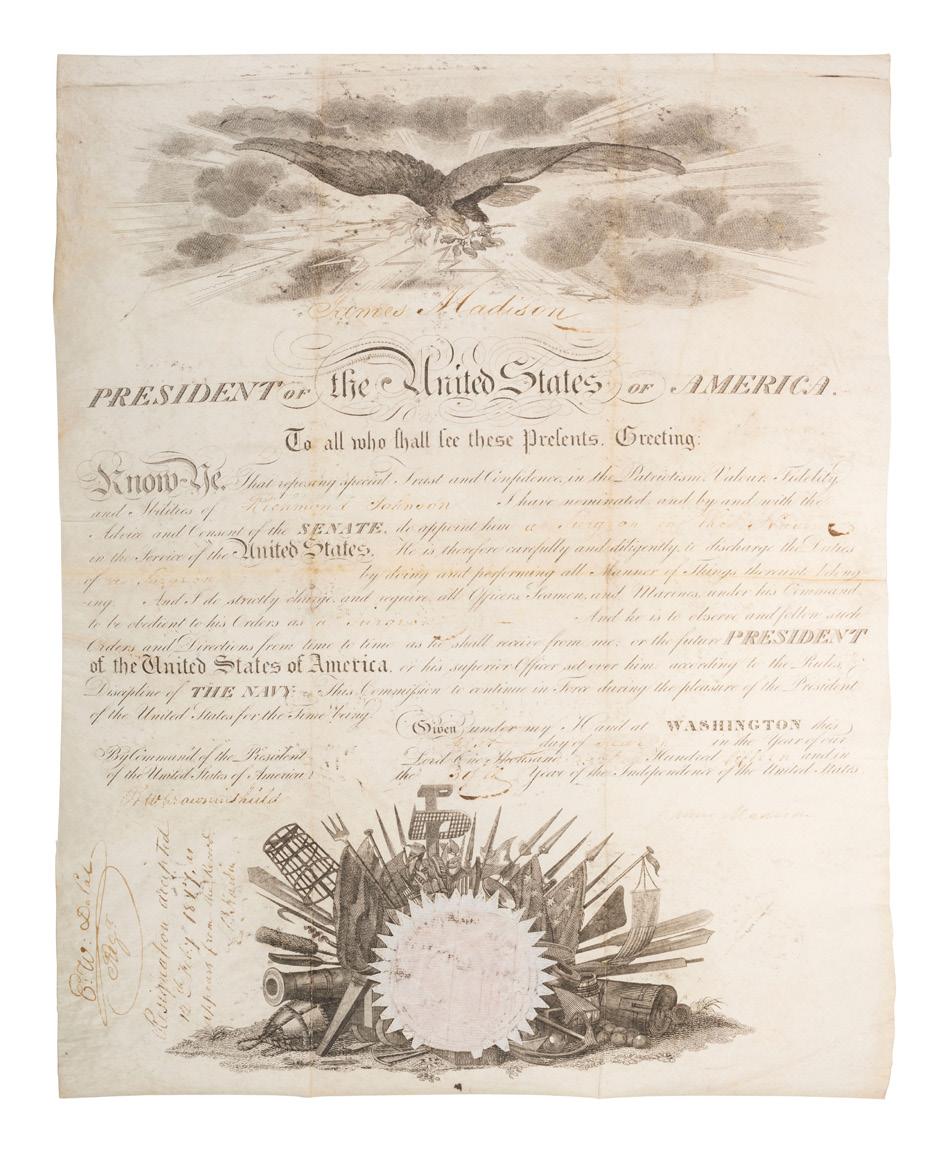
Estate of Carroll J. Delery III, Formerly the “Historical Shop”
$700 - 1,000
$800 - 1,200
One page, 7 x 8 1/2 in.
In this letter written the year before her death, Mrs. Madison writes to Madame de Neuville (the wife of Jean-Guillaume, baron Hyde de Neuville) to introduce Mr. Peter Hagner Jr.

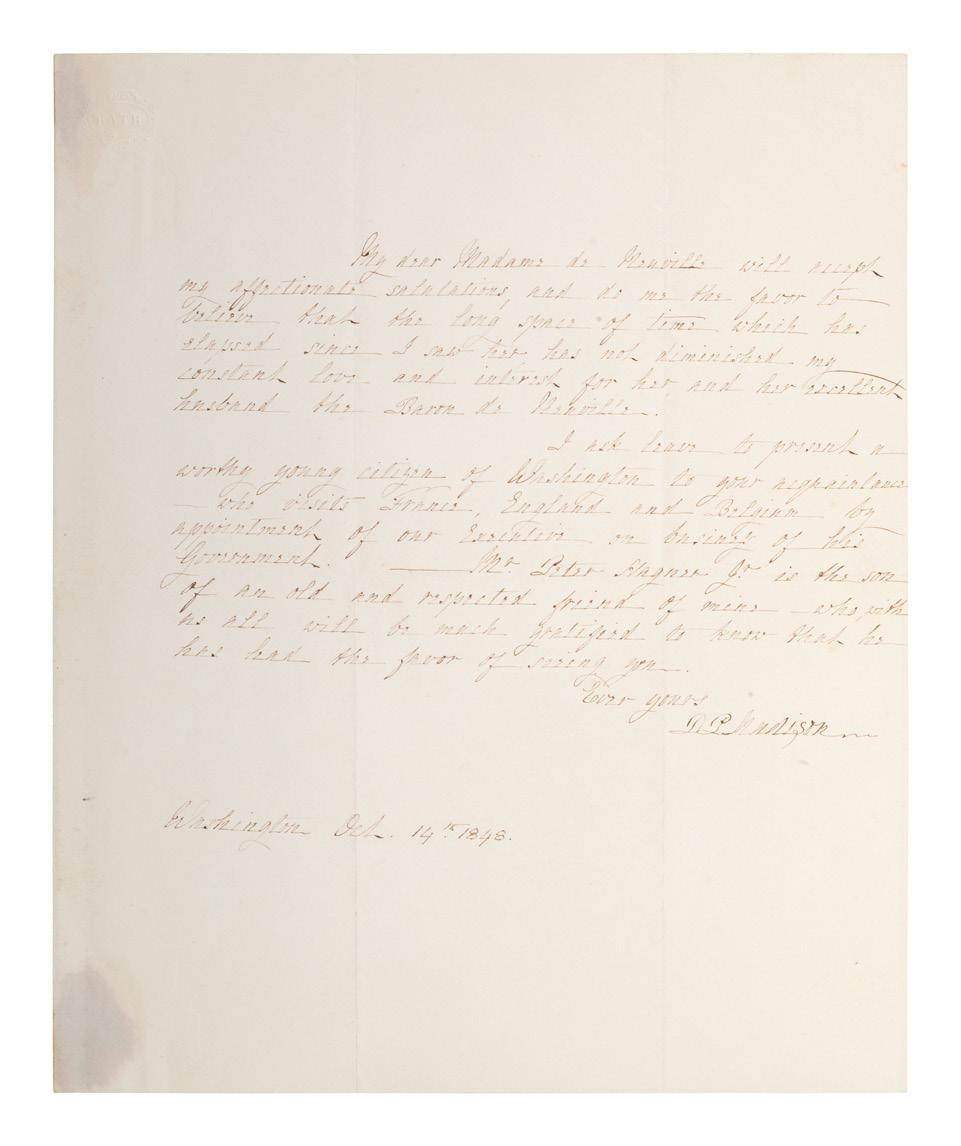

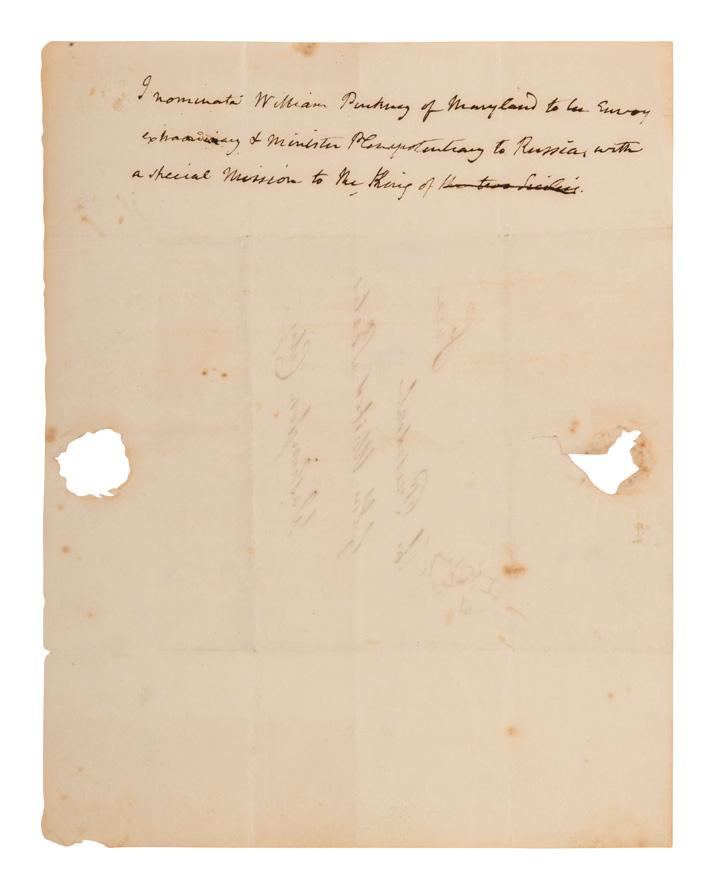
Property from the James Milgram, M.D., Collection of Broadsides, Ephemeral Americana, and Historical Documents
$400 - 600
310 [POLITICS]. St. JOHN, D. B. Autograph letter signed (“D. B. St. John”), to Jonathan W. Hasbrouck. Washington, D.C., 22 February 1848. 2 pages, 4to, with stub of integral leaf present.
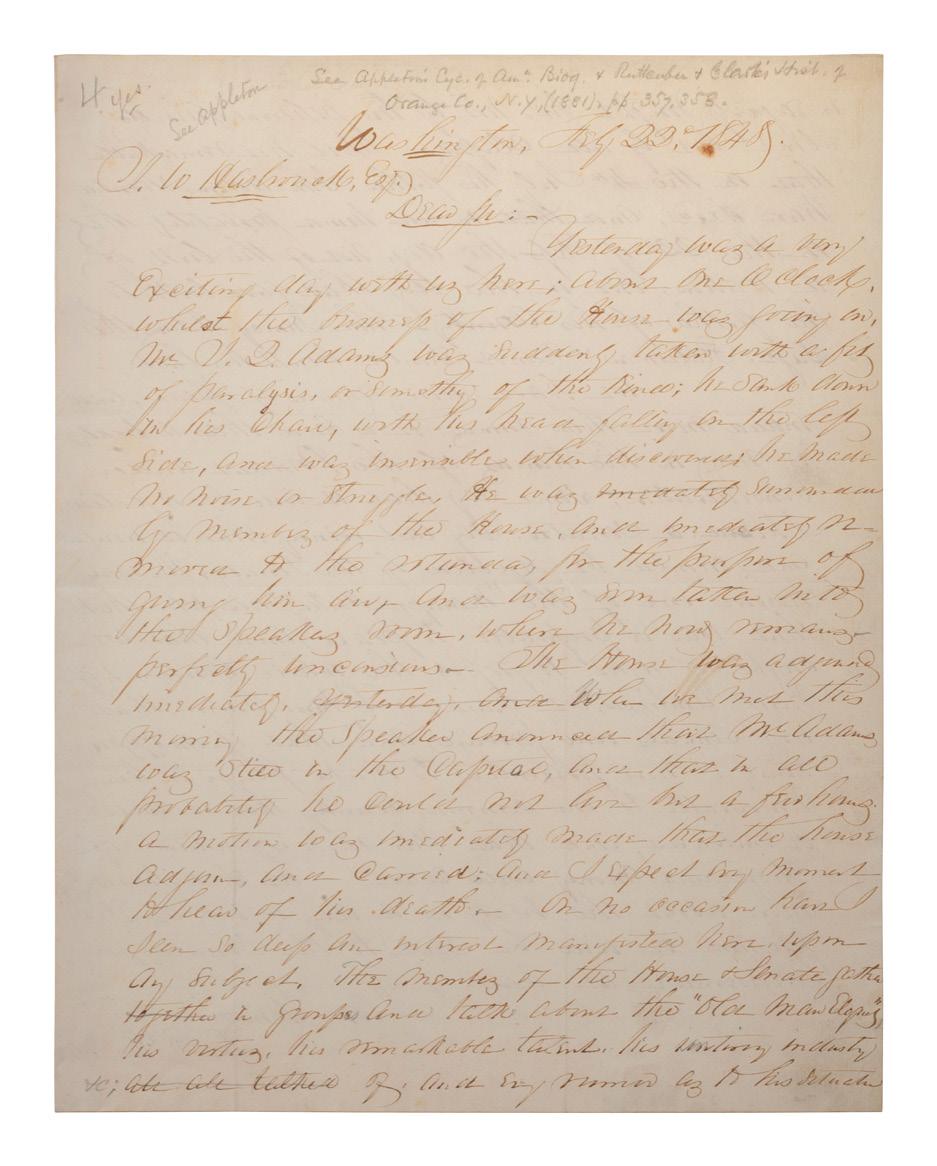
A CONTEMPORARY ACCOUNT OF THE DEATH OF JOHN QUINCY ADAMS
St. John writes to Hasbrouck: “yesterday was a very exciting day with us here; about one o’clock, whilst the business for the House was going on, Mr. J. Q. Adams was suddenly taken with a fit of paralysis, or something of the kind; he sank down in his chair, with his head falling on the left side, and was insensible when discovered; he made no noise or struggle. He was immediately surrounded by the members of the House, and immediately removed to the rotunda.... the sage Statesman & Patriot should breathe his last.” With additional content referring to “manifest destiny,” and the 1848 Treaty of Guadalupe Hidalgo, which ended the Mexican-American War.
Property from the James Milgram, M.D., Collection of Broadsides, Ephemeral Americana, and Historical Documents
$400 - 600
311
GRANT, Ulysses S. (1822-1885). Autograph letter signed (“U.S. Grant”), to James Gopsill (1823-1884). N.p., 24 January 1881.

$500 - 700
312 [PRESIDENTS]. A group of 3 signatures, incl. 2 John Quincy ADAMS clipped signature and John TYLER signed free frank.
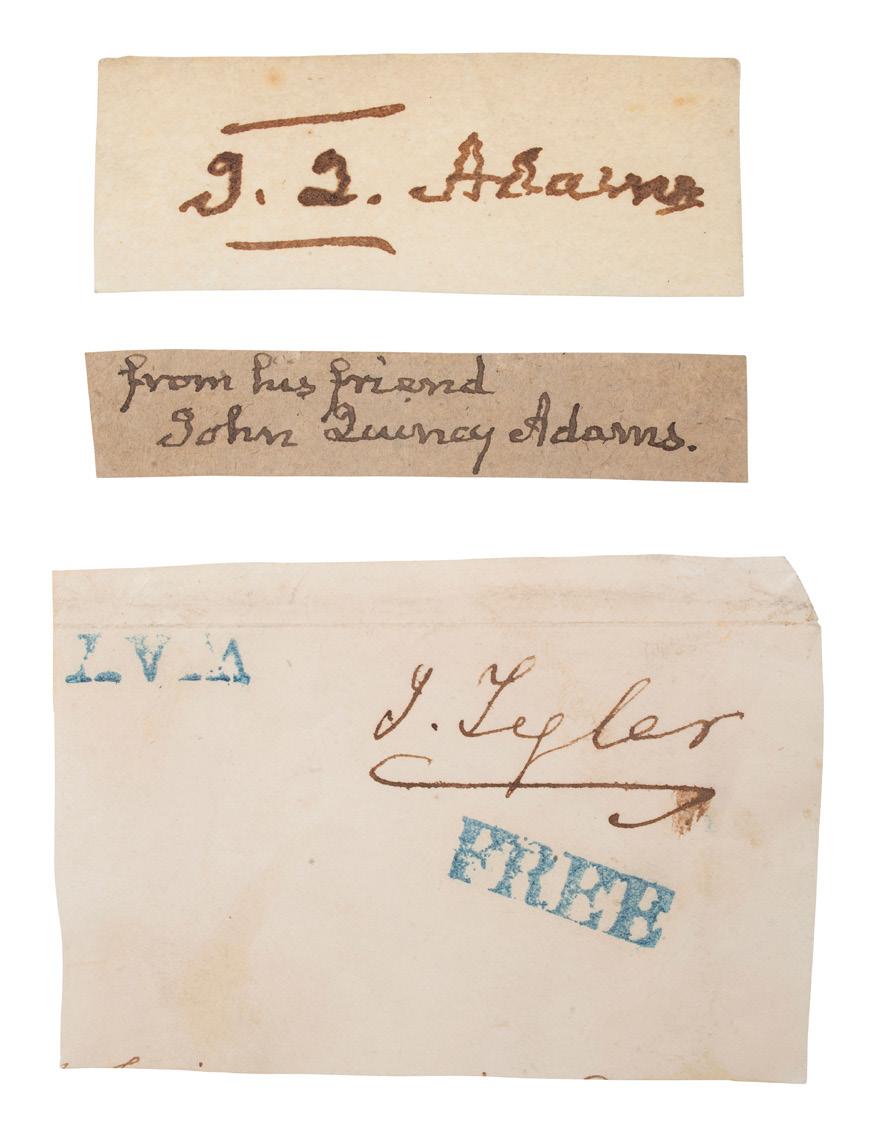
Property from the James Milgram, M.D., Collection of Broadsides, Ephemeral Americana, and Historical Documents
$600 - 800
314 [POLITICS]. CLAY, Henry (1777-1852). Autograph letter signed (“H. Clay”). “Ashland” [Lexington, KY], 1 July 1839. With free franked envelope.
2 pages, on bifolium, 8 x 10 in. With partial free franked envelope signed (“H. Clay”) with heavy loss. In this letter to N. Sargent, Esquire, the editor of a Whig paper in Philadelphia, Clay responds to accounts he has received about the Whig Convention in Chambersburg, which he says “appear to me to have been judicious...” He writes, “...I am persuaded, they will draw to themselves numbers from both the AntiMasonic and Administration parties, and at some future day may make themselves a majority.”
He goes on to comment on his past comments in the US Senate regarding the establishment of a national bank, which he realizes will draw strong criticism from some states like Virginia, and potential support from others like North Carolina and Tennessee. In part, “On that occasion, I stated that I hoped no attempt would be made to effect that object, unless it was called for by a clear majority of the people of the U.S. What more could I say?...If I were to go farther than I have done, I should inflict as much injury as I should achieve good...”
Clay lastly thanks Mr. Sargent for a copy of a letter from a “Mr. Weed,” which was apparently critical of Clay, specifically a speech he gave (likely the one he gave to Congress on 7 February 1839) in which he calls out the dangers of Abolition. He writes, “I can bear to hear unfavorable information, and should always regret its being withheld from me...Mr. Weed’s opinion and information do not accord with the opinions and information of others which have been communicated to me; but he may be right. If the result which he apprehends is to be produced by Abolition, in consequence of my speech, I cannot change it. That speech expresses my true sentiments; and I must abide by whatever consequences they may lead to.”
Property from the James Milgram, M.D., Collection of Broadsides, Ephemeral Americana, and Historical Documents

$400 - 600
$800 - 1,200
313 [POLITICS - INDIAN REMOVAL]. CLAY, Henry (17771852). Autograph letter signed (“H. Clay”) to John Woods of Hamilton, Ohio. Ashland, Kentucky. 4 June 1830.

$500 - 700

316 [POLITICS]. National Intelligencer. Vol. XXXIV, No. 4878. Washington, DC: Gales & Seaton, 5 March 1833. Containing Andrew Jackson’s inaugural address.
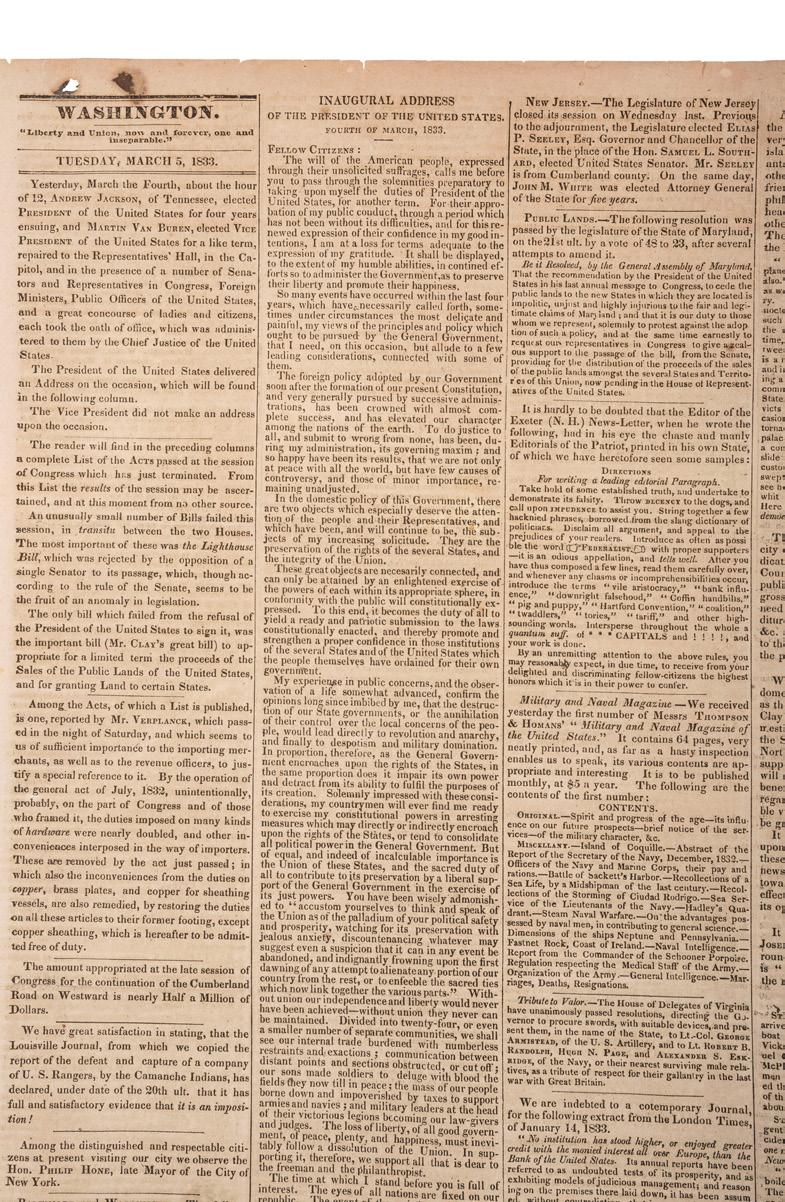
$400 - 600
317
JACKSON, Andrew (1767-1845). Autograph endorsement signed (“A.J.”). Accomplished on an address panel of a larger sheet.
Property from the James Milgram, M.D., Collection of Broadsides, Ephemeral Americana, and Historical Documents
$300 - 500
318
JACKSON, Andrew (1767-1845). Signature (“Andrew Jackson”), on a blank leaf excised from a book. [With:] Broadside regarding the erection of the Jackson Monument, 1845.
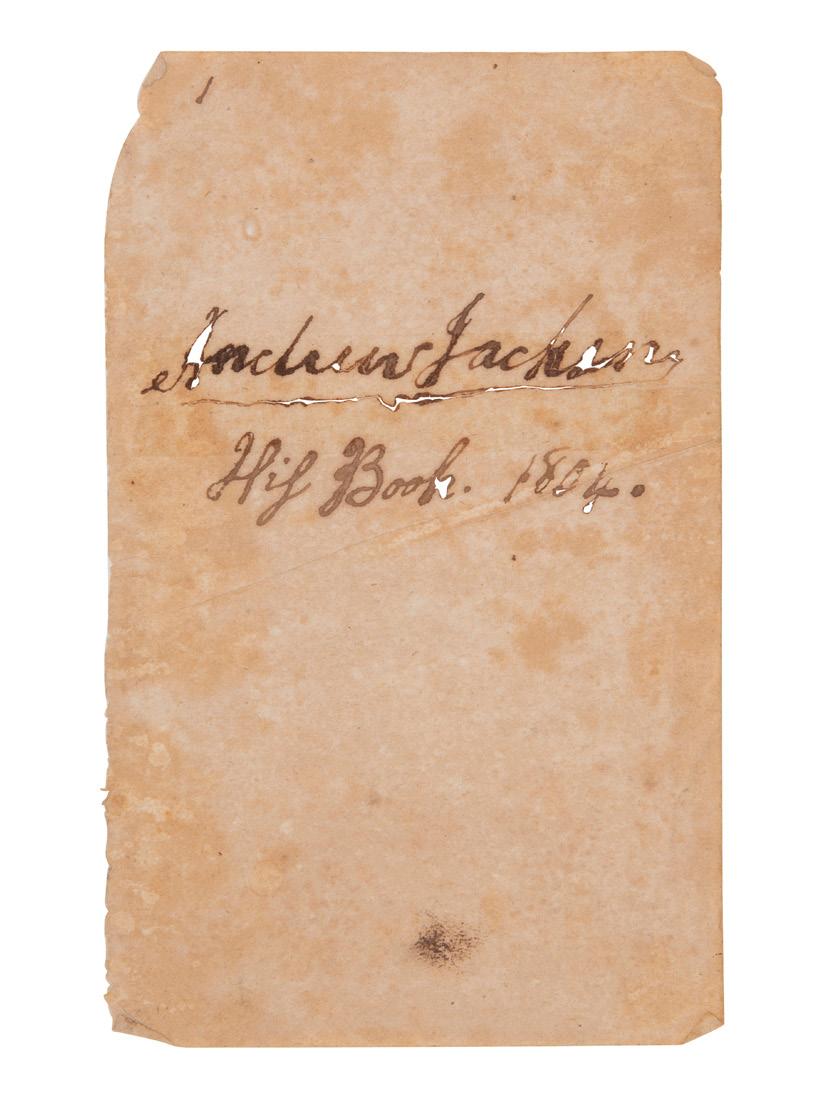
Property from the James Milgram, M.D., Collection of Broadsides, Ephemeral Americana, and Historical Documents

$400 - 600
319
VAN BUREN, Martin (1782-1862). Partly printed document signed (“M. Van Buren”), as President, 20 February 1840.
$400 - 600
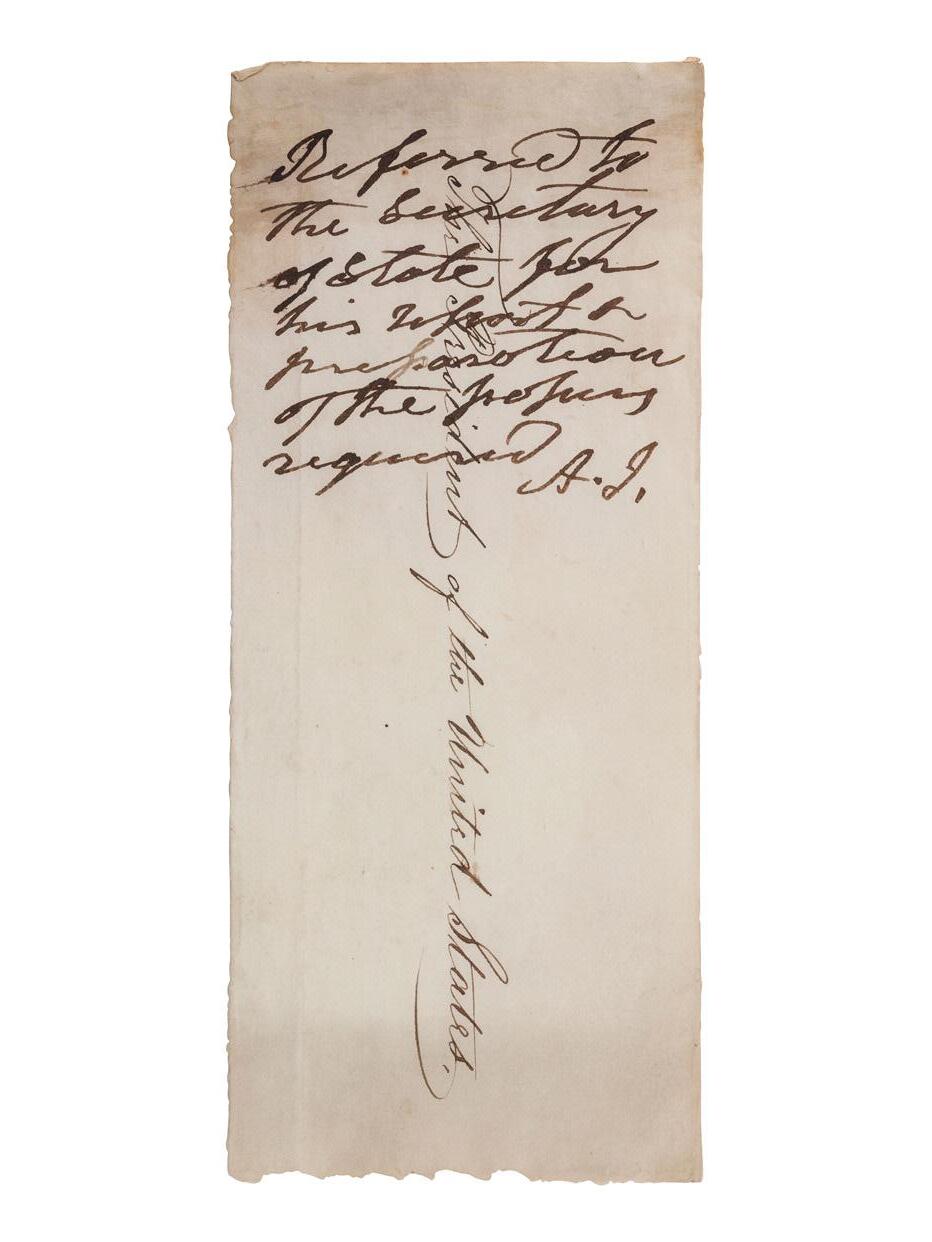
320 VAN BUREN, Martin (1782-1862). Autograph letter signed (“MVB”), to Mr. Dayton. N.p., 9 February 1837.
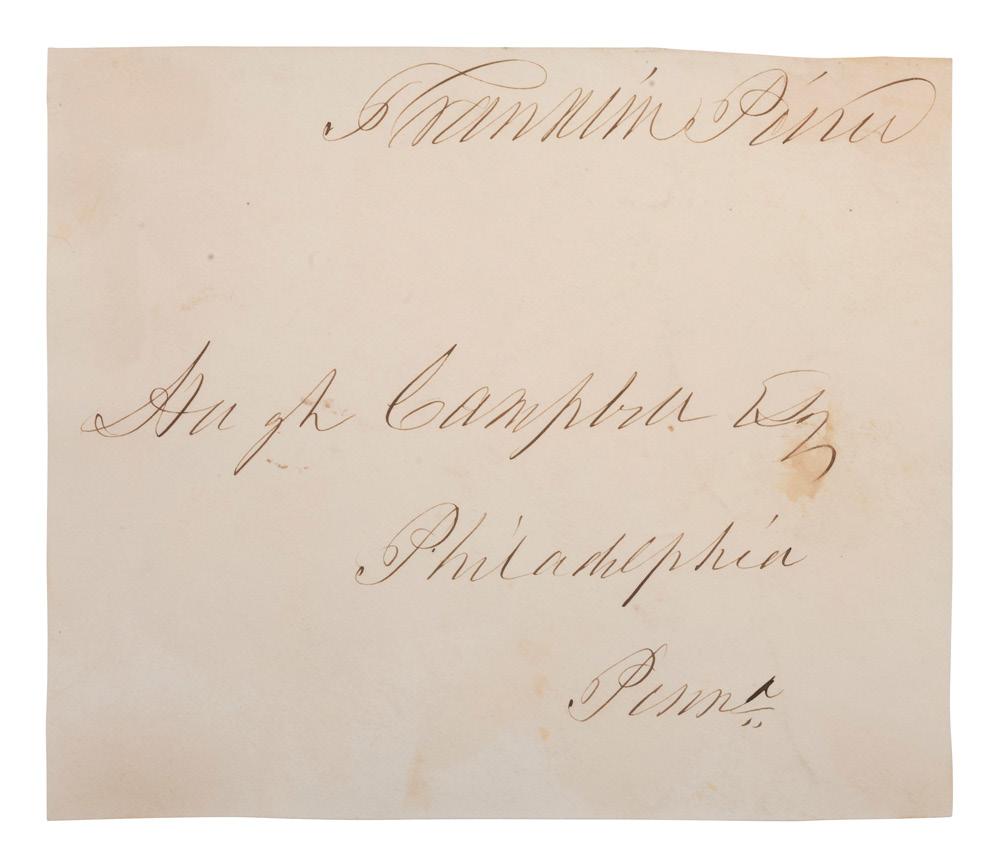
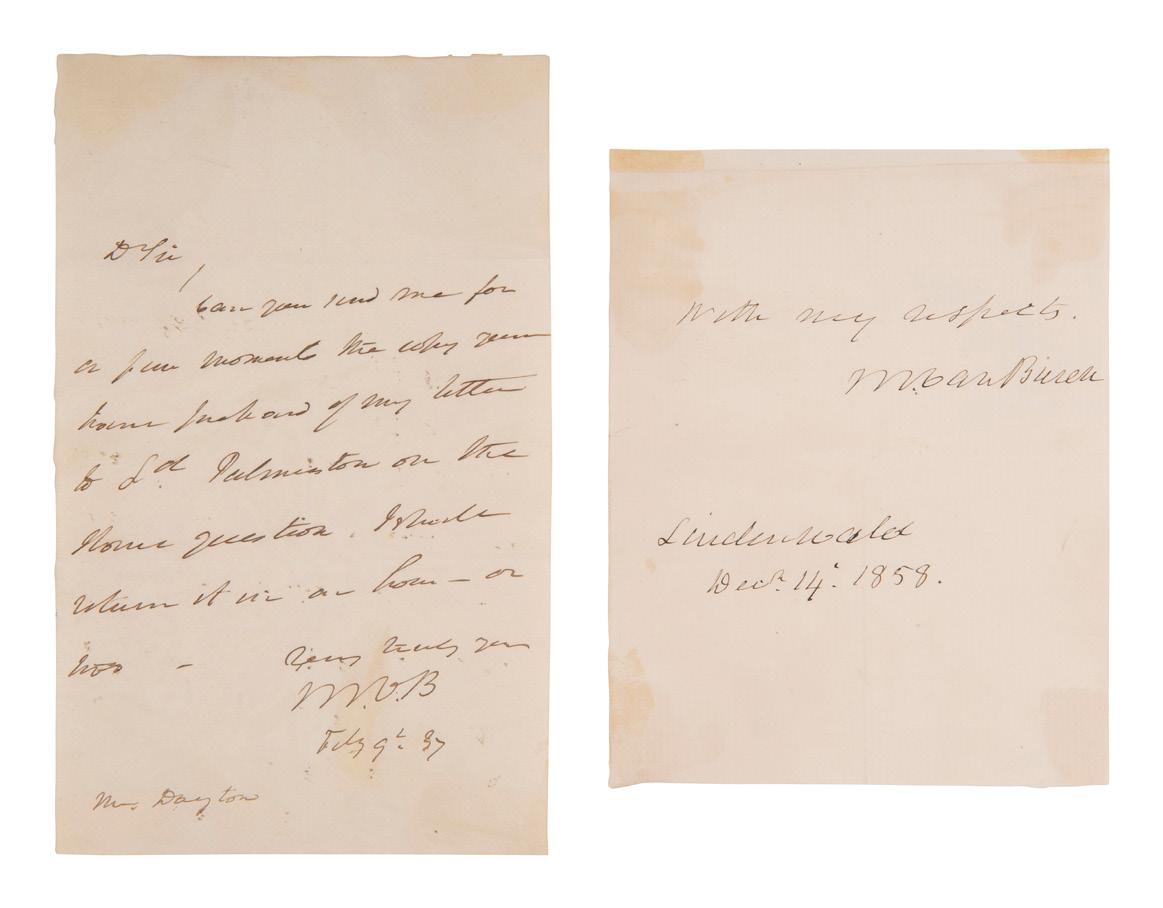
[With:] VAN BUREN. Autograph note signed (“M. Van Buren”). Lindenwald, [Kinderhook, NY], 14 Dec. 1858.
Property from the James Milgram, M.D., Collection of Broadsides, Ephemeral Americana, and Historical Documents
$600 - 800
322
PIERCE, Franklin (1804-1869). Address panel with autograph free frank signed (“Franklin Pierce”). Addressed to Hugh Campbell Esq., Philadelphia, PA.
Property from the James Milgram, M.D., Collection of Broadsides, Ephemeral Americana, and Historical Documents
$300 - 600
321 FILLMORE, Millard (1800-1874). Address panel with autograph free frank signed (“M. Fillmore”). Addressed to St. Nicholas Hotel, New York City, postmarked Morris & Essex Railroad, 22 October.

Property from the James Milgram, M.D., Collection of Broadsides, Ephemeral Americana, and Historical Documents
$300 - 600
323
BUCHANAN, James (1791-1868). Partly printed Bearer of Despatches document signed (“James Buchanan”), as United States Minister to the United Kingdom, London, 14 December 1855.
$400 - 600

324 [LINCOLNIANA]. “Lincoln and Hamlin” parade flag. 1860. 16 x 11 in. polished cotton flag banner in red, white, and blue, with field printed in reverse, canton comprised of 33 stars arranged in 5-pointed star pattern. Legend printed in black: “Lincoln and Hamlin.” Provenance: Cowan’s Auctions, Americana and Decorative Arts, 12-13 November 2003, Lot 92. A parade flag produced for the 1860 election. Threads of History, #296.
$10,000 - 15,000
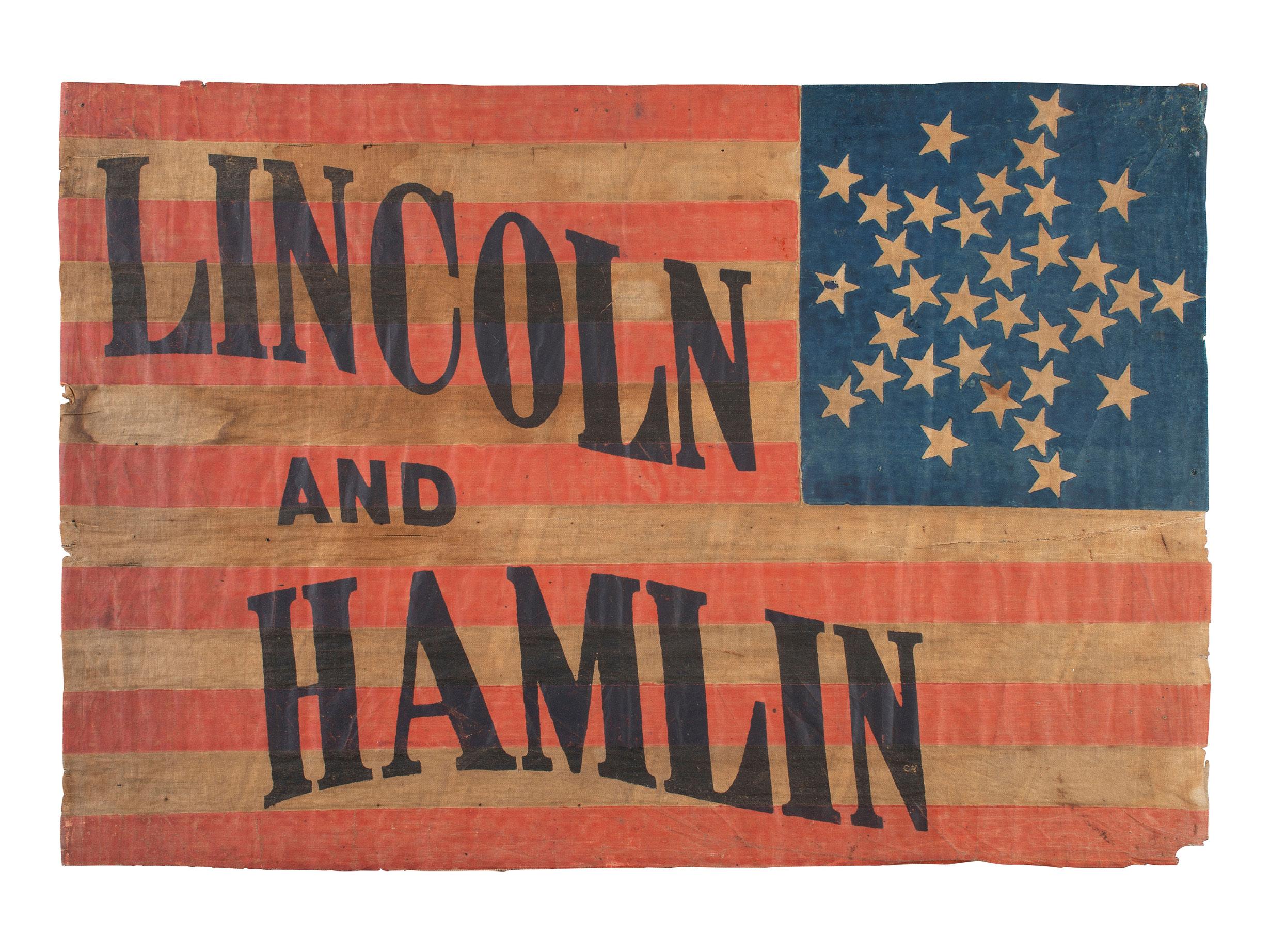
$1,000 -
$600 - 800

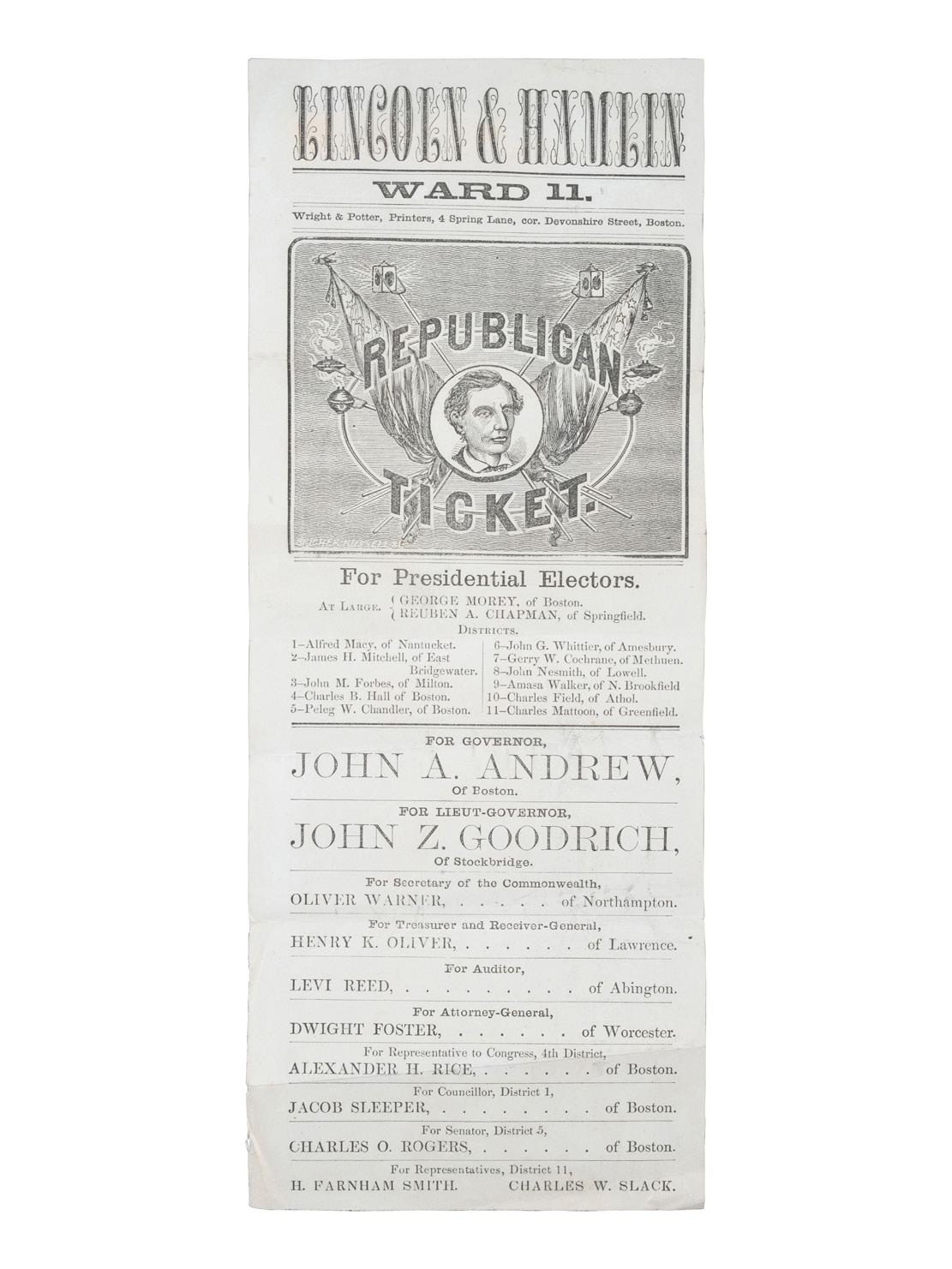
$600



328
[LINCOLN, Abraham (1809-1865)”The Cooper Union Speech”]. The Address of the Hon. Abraham Lincoln, In Vindication of the Policy of the Framers of the Constitution and the Principles of the Republican Party.... New York: George F. Nesbitt & Co., 1860.
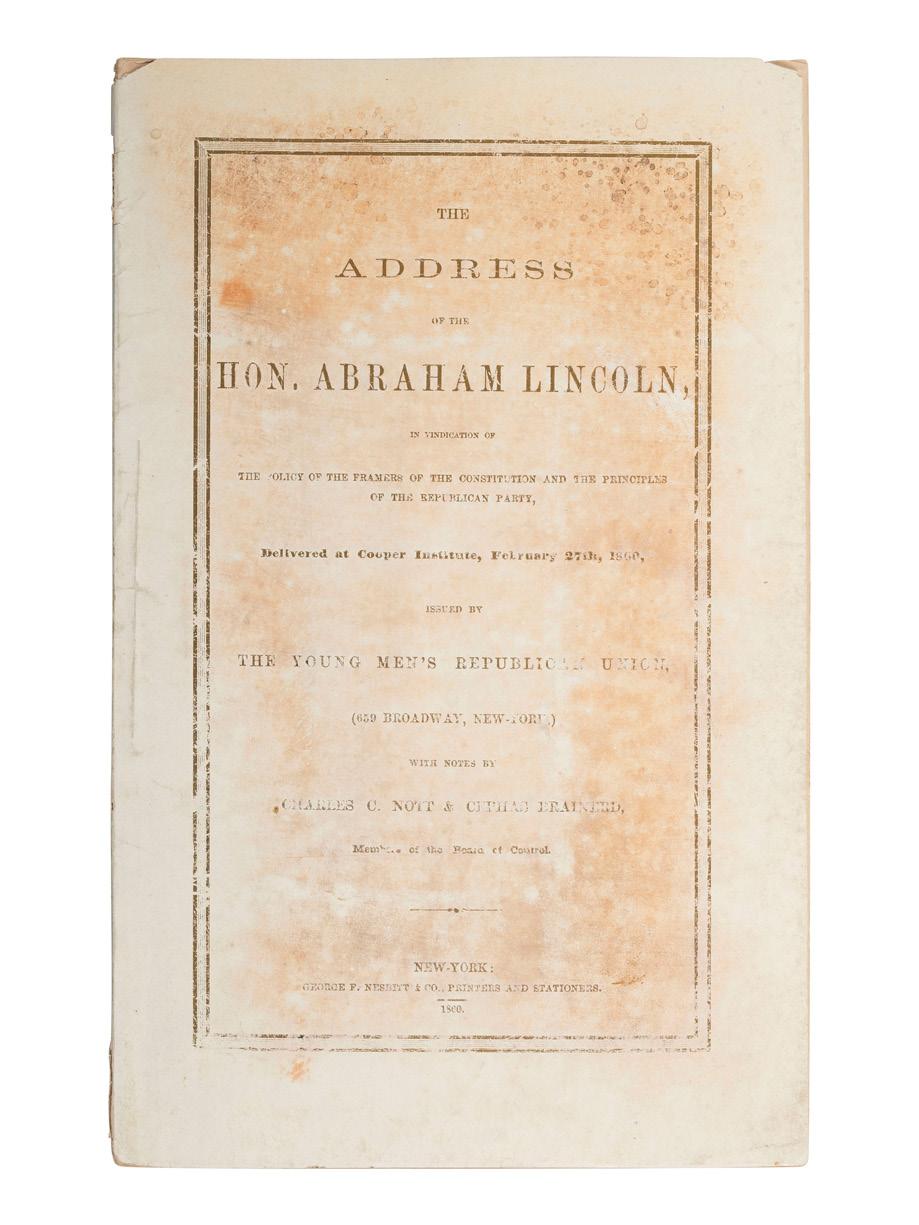
Estate of Carroll J. Delery III, Formerly the “Historical Shop”
$600 - 800
329
[LINCOLNIANA]. The Union “Bell” Polka, Dedicated to the Hon. John Bell. of Tenn Philadelphia: Lee & Walker, 1860.

$400 - 600
330
[LINCOLN, Abraham (1809-1865)]. Daily Illinois State Register. Vol. 14, No. 22. Springfield, IL: Charles H. Lanphier, 26 January 1861. News regarding politics and the abolition of slavery published in President-elect Lincoln’s hometown newspaper.
$800 - 1,000
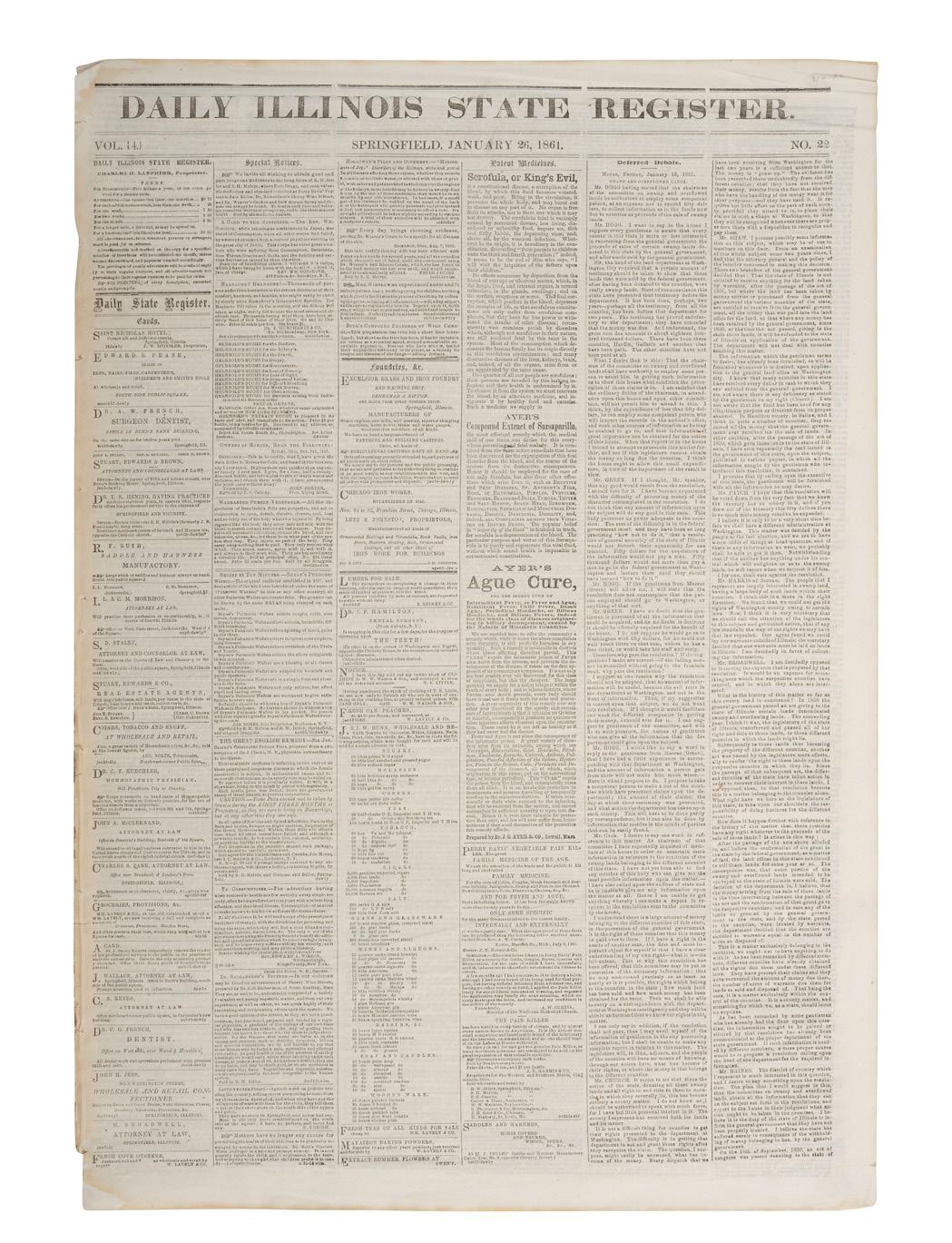
LINCOLN, Abraham (1809-1865) and William H. SEWARD (1801-1872). Document signed (“Abraham Lincoln”; “William H. Seward”), as President and Secretary of State, to the President of the Republic of Chile. Washington, DC, 33 July 1861.

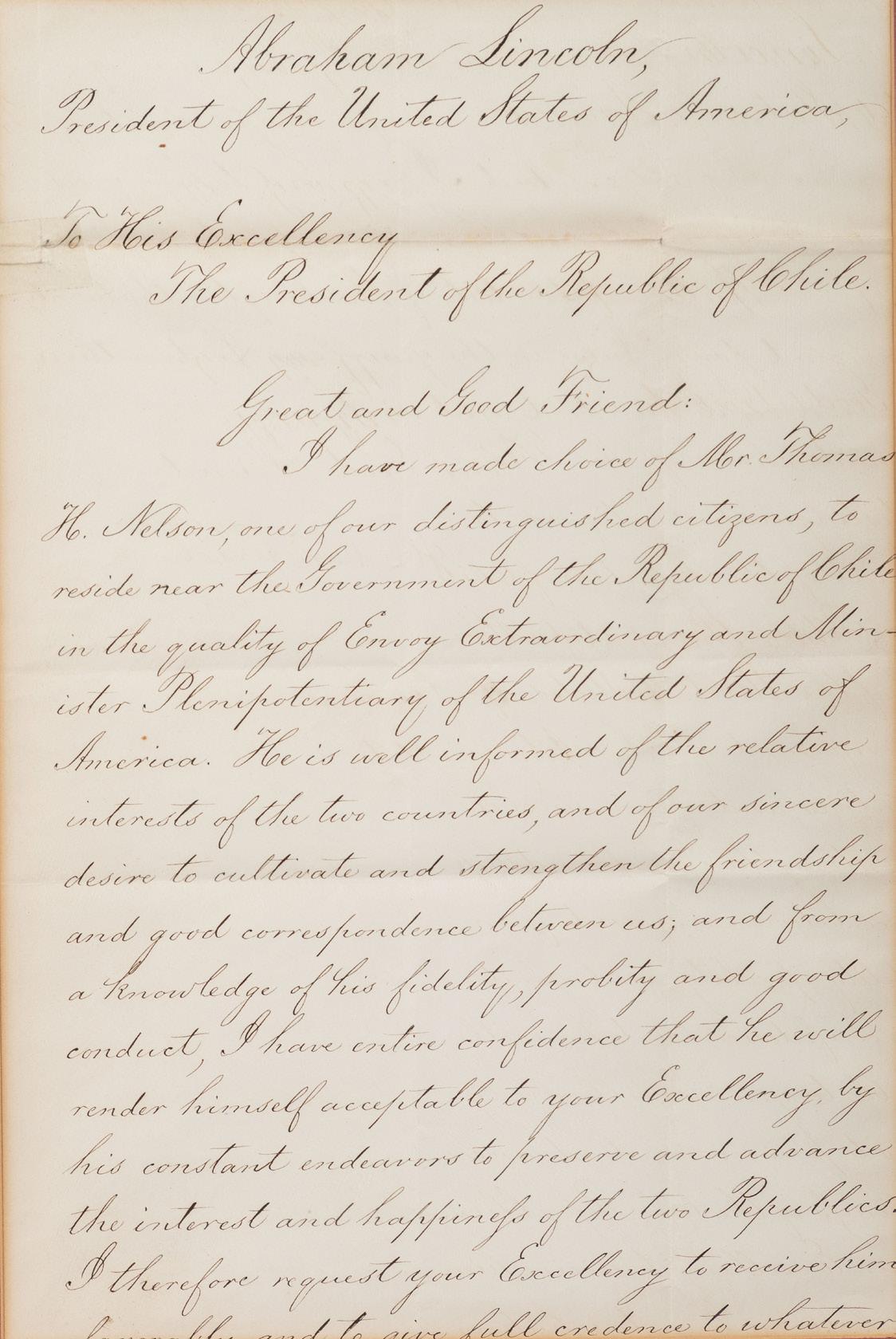
2 pages, visible 9 9/16 x 14 3/8 in., matted and framed to 15 3/4 x 20 3/4 in., framed double-sided so both sides of the document are visible, not examined out of frame.
Written entirely in a secretarial hand, the document announces to the President of Chile, that Mr. Thomas H. Nelson (1824-1896), a Republican organizer from Indiana, has been named the Envoy Extraordinary and Minister Plenipotentiary of the United States of America. It goes on to state that Mr. Nelson is “well informed of the relative interests of the two countries, and of our sincere desire to cultivate and strengthen the friendships and good correspondence between us.”
The president at the time of composition was Manuel Montt (1809-1880) though his term would end on 18 September 1861 when José Joaquín Pérez(1801-1889) took office. During Thomas H. Nelson’s time in Chile, he notably helped to organize rescue operations during the catastrophic Church of the Company Fire in Santiago on 8 December 1863. He would later serve as the U.S. Envoy to Mexico under President Grant.
Property from the James Milgram, M.D., Collection of Broadsides, Ephemeral Americana, and Historical Documents
$6,000 - 8,000
332
LINCOLN, Abraham (1809-1865). Partly printed appointment signed (“Abraham Lincoln”), as President of the United States, countersigned by Secretary of War, Simon Cameron. Washington, DC, 28 December 1861.
Property from the James Milgram, M.D., Collection of Broadsides, Ephemeral Americana, and Historical Documents
$4,000 - 6,000
333 LINCOLN, Abraham (809-1865). Partly printed document signed (“Abraham Lincoln”) as President of the United States, countersigned by Secretary of War, Edwin M. Stanton, 27 March 1862.
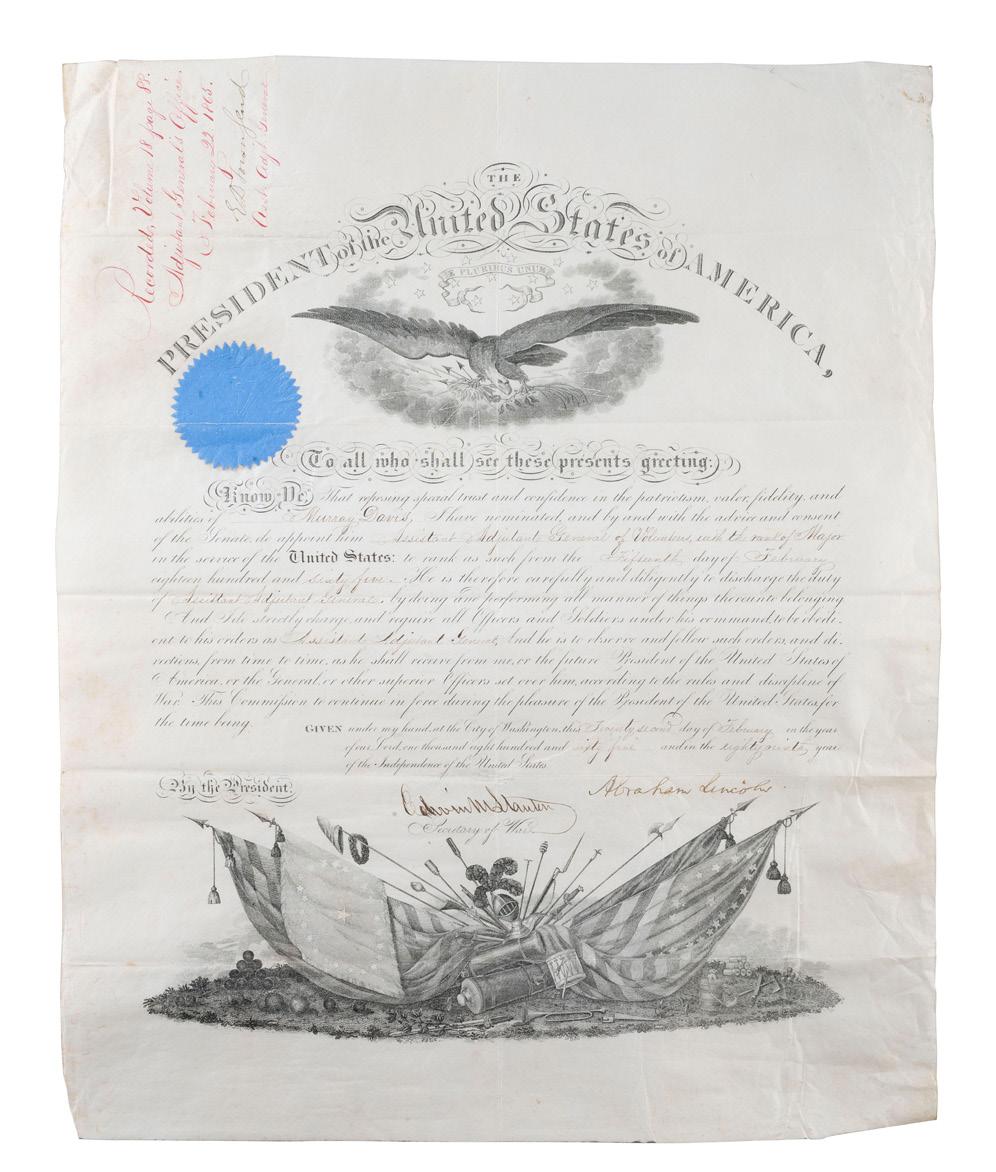


Provenance: The Lloyd Ostendorf Collection of Lincolniana (consignor notes).
$5,000 - 7,000
334 LINCOLN, Abraham (1809-1865). Partly printed document signed (“Abraham Lincoln”) as President, countersigned by Secretary of War Edwin M. Stanton, 22 February 1865.
$4,000 - 6,000
335 [LINCOLN, Abraham (1809-1865)]. GARDNER, Alexander (1821-1882), photographer. President Lincoln on Battle-Field of Antietam, October, 1862. Washington, DC, 1866.
9 x 6 1/2 in. albumen photograph on original mount, with Plate No. 23 and title printed in lower margin, matted and framed, 17 x 15 1/4 in. An iconic view of President Lincoln visiting General McClellan and staff shortly after the bloody battle at Antietam, the second of two famous group shots photographed by Alexander Gardner on 3 October 1862. This view was taken at General Fitz-John Porter’s nearby headquarters following Lincoln’s review of 5th Corps troops and includes (from left): Col. Delos B. Sackett, Capt. Geo. Monteith, Lt. Col. Nelson B. Sweitzer, Gen. Geo. W. Morell, Col. Alexander S. Webb, Gen. McClellan, Scout Adams, Dr. Jonathan Letterman, unidentified officer, President Lincoln, Col. Henry J. Hunt, Gen. Fitz-John Porter, unidentified officer, Col. Frederick T. Locke, Gen. Andrew A. Humphreys, and an unknown Capt. Geo. A. Custer. The photograph was published after the war as Plate No. 23 in Gardner’s large format Photographic Sketch Book of the War.
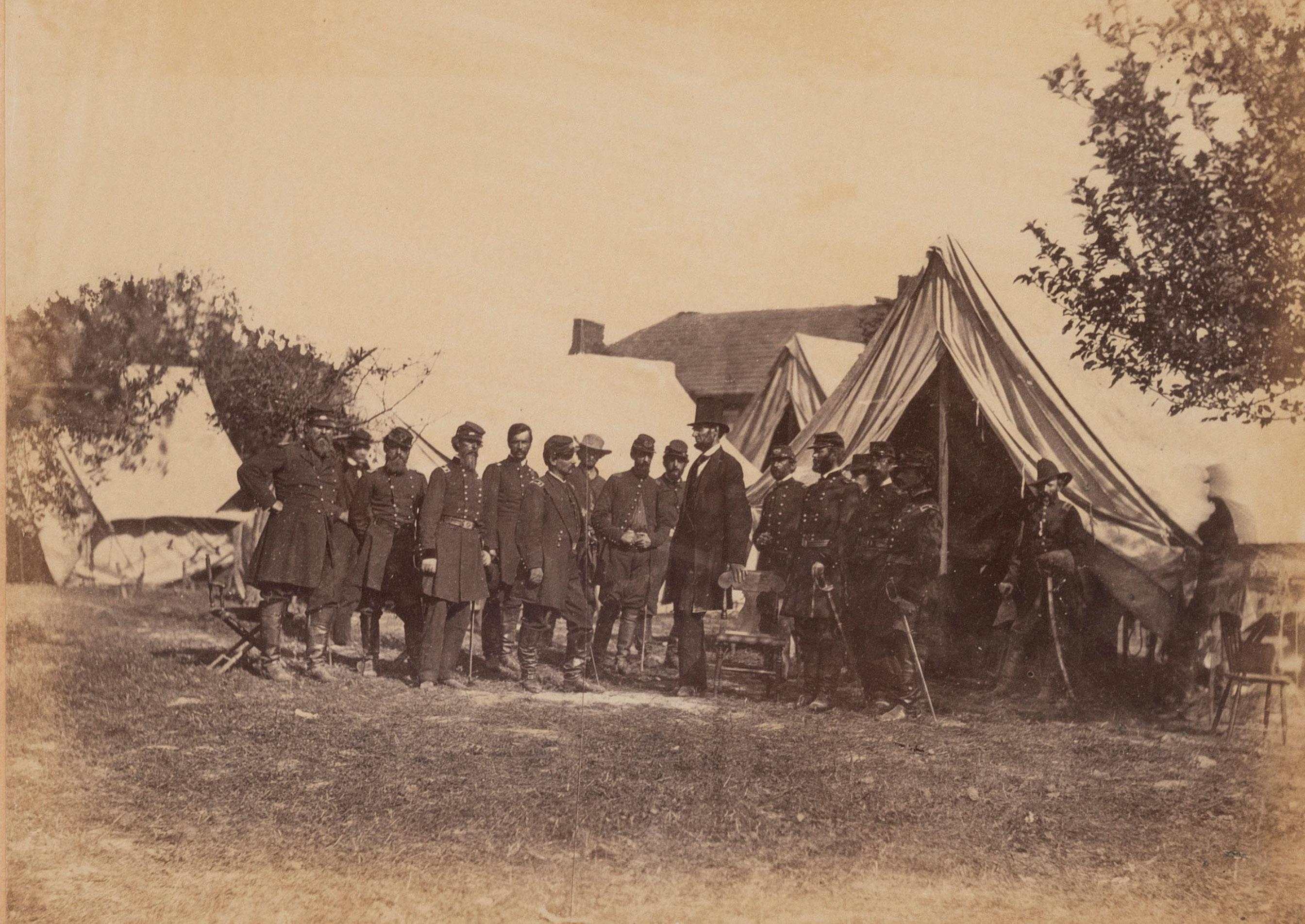
$7,000 - 10,000
336 [THE WHITE HOUSE]. WALKER, Lewis Emery (1820-1880), photographer. Large format photograph of the White House. Washington, DC, 1864.
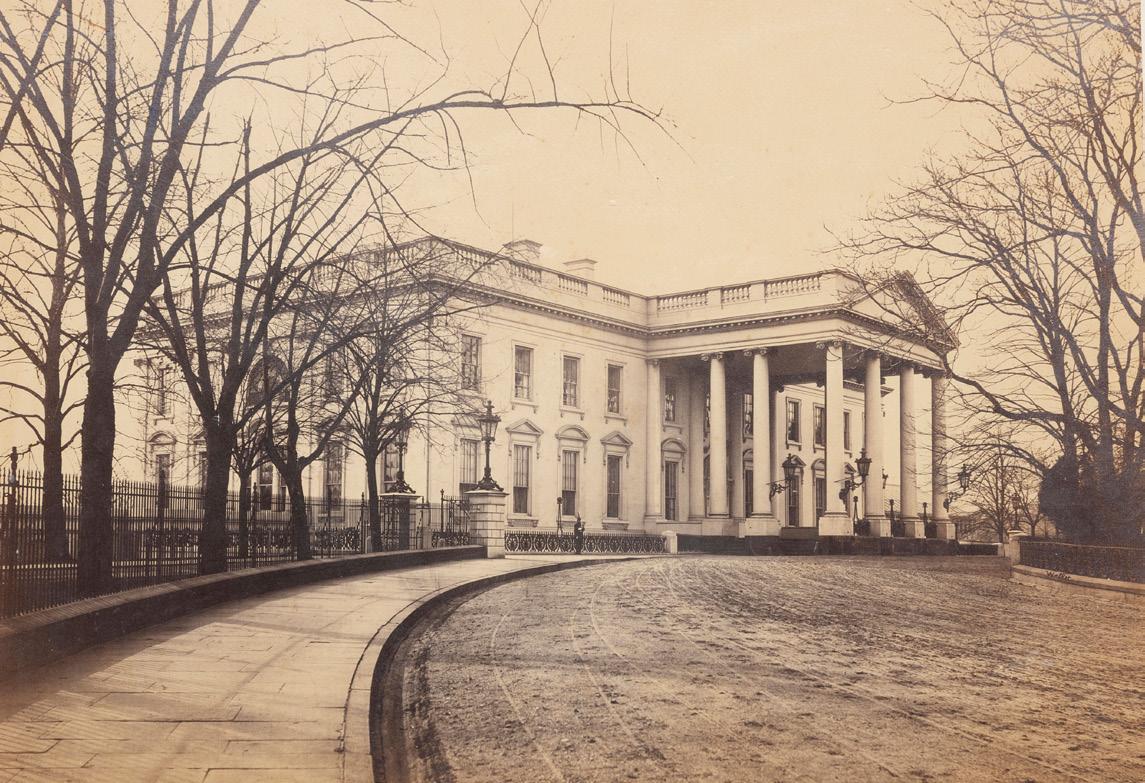
Provenance: The Lloyd Ostendorf Collection of Lincolniana; Bonhams & Butterfields (consignor notes).
$700 - 1,000
337 [LINCOLN, Abraham (1809-1865)]. [GARDNER, Alexander (1821-1882), photographer, attrib.]. Large format photograph of Abraham Lincoln’s second inauguration. Washington, DC, 4 March 1865.
9 1/8 x 7 in. albumen photograph on original 13 3/4 x 10 5/8 in. cardstock mount. Lacking a studio imprint but believed to have been taken by Alexander Gardner, who took several exposures at the second inauguration. Catalogued by Lincoln collector Lloyd Ostendorf as O-108.
Abraham Lincoln is shown standing at the east front of the Capitol Building, delivering his second inaugural address to a massive crowd of people. He is surrounded by a number of dignitaries, including Vice President-elect Andrew Johnson, Vice President Hannibal Hamlin, his cabinet, and members of the Supreme Court. It has been suggested widely that John Wilkes Booth is visible in the crowd of spectators; however, it is impossible to prove that Booth is pictured here.
RARE: Only one example of this photograph has appeared at auction in the last decade. $10,000 - 15,000

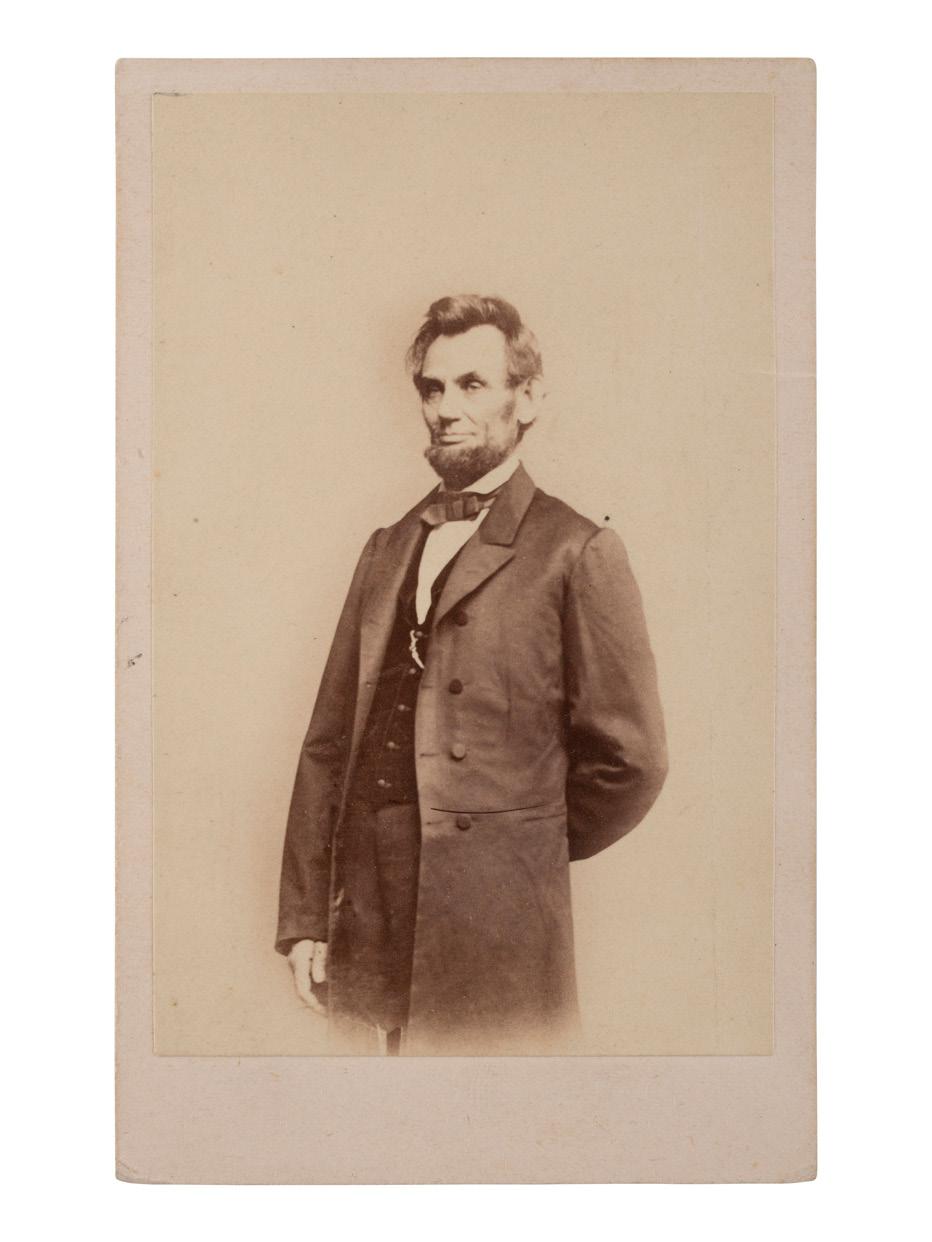
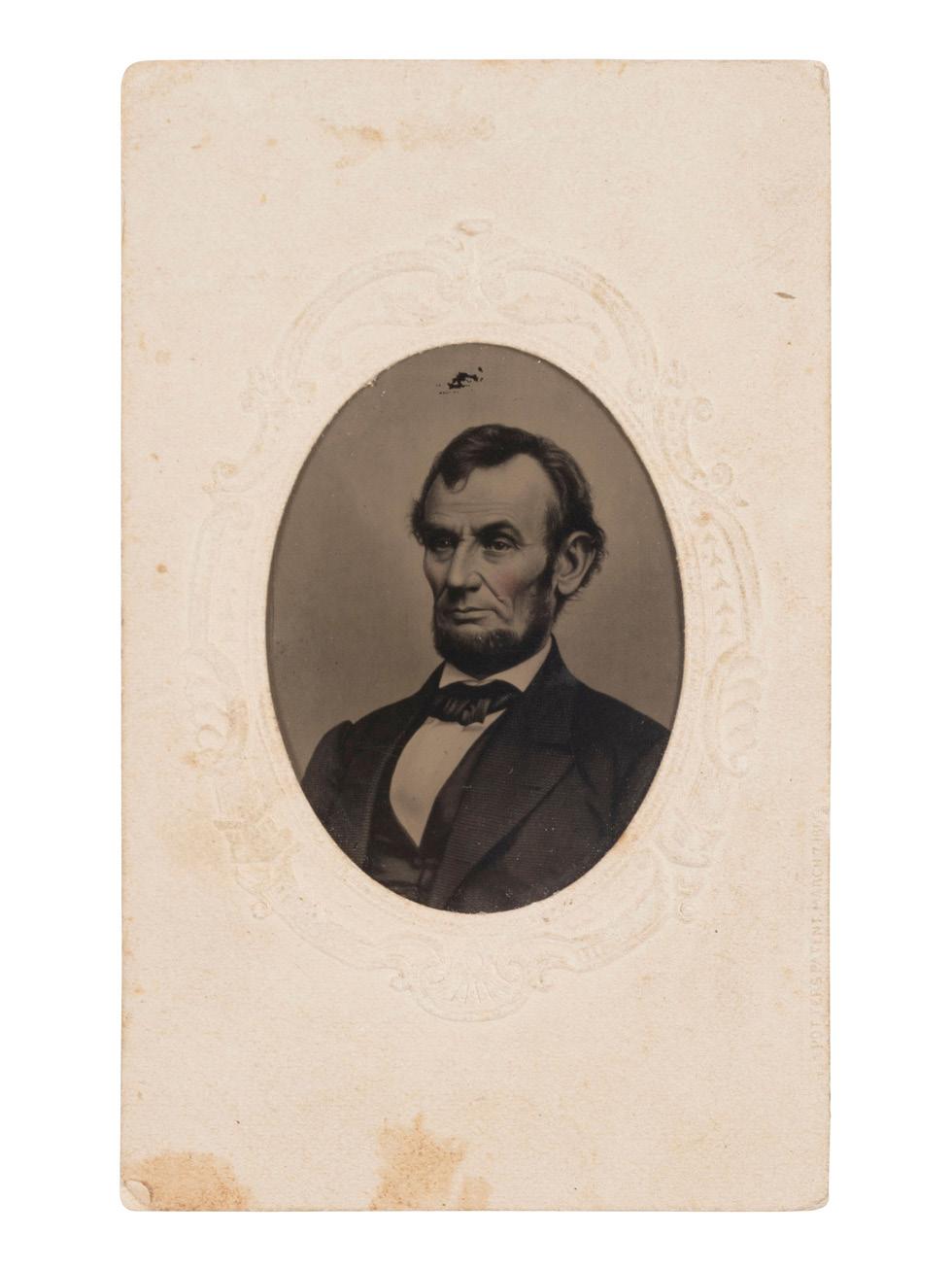
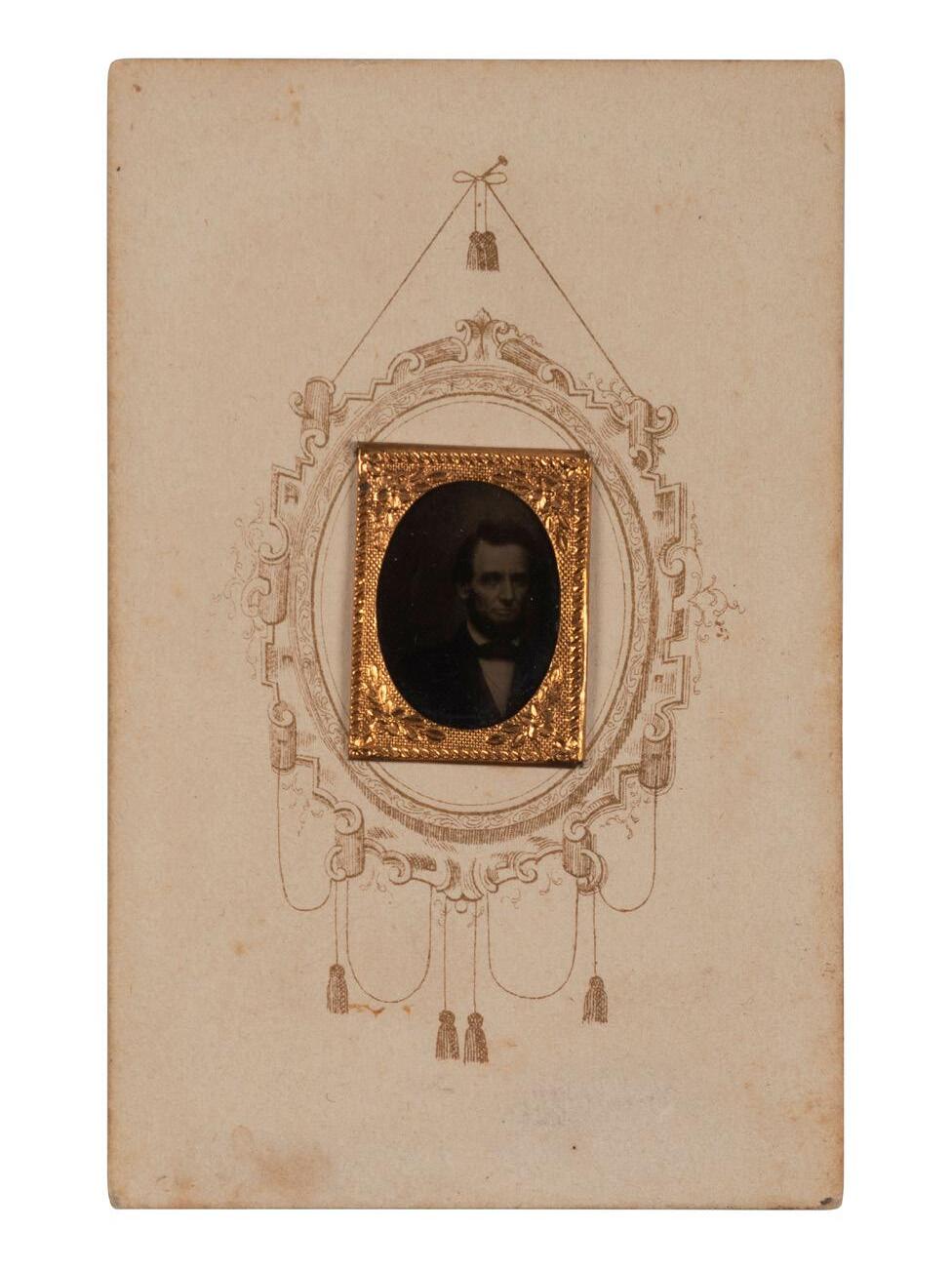
341 [LINCOLNIANA]. Sixth plate ambrotype of subject identified as Lizzie Gilmer, the daughter of attorney Daniel H. Gilmer, who purportedly demanded a toll from Abraham Lincoln during an 1858 visit.
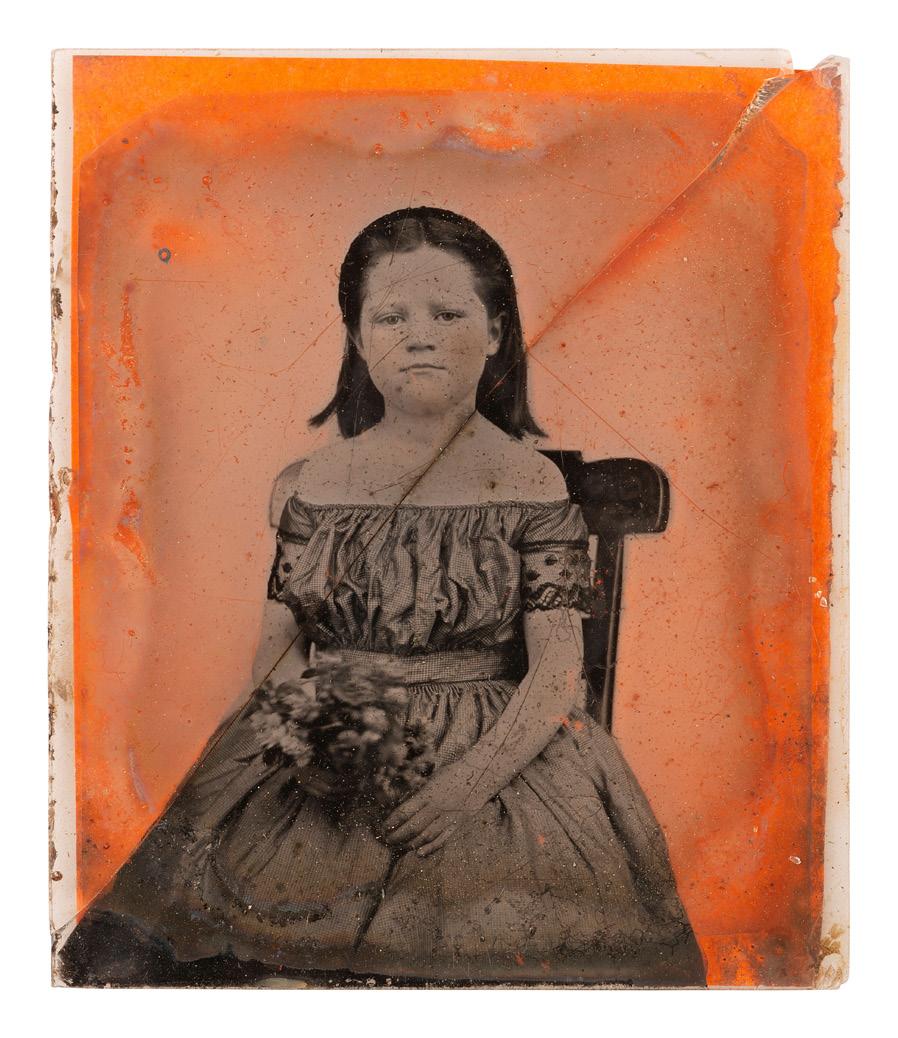
Provenance: Herbert Wells Fay, Lincoln Tomb curator and collector; Norm Boas, Seaport Autographs; Dr. John K. Lattimer, thence by descent; purchased by consignor.
$250 - 350
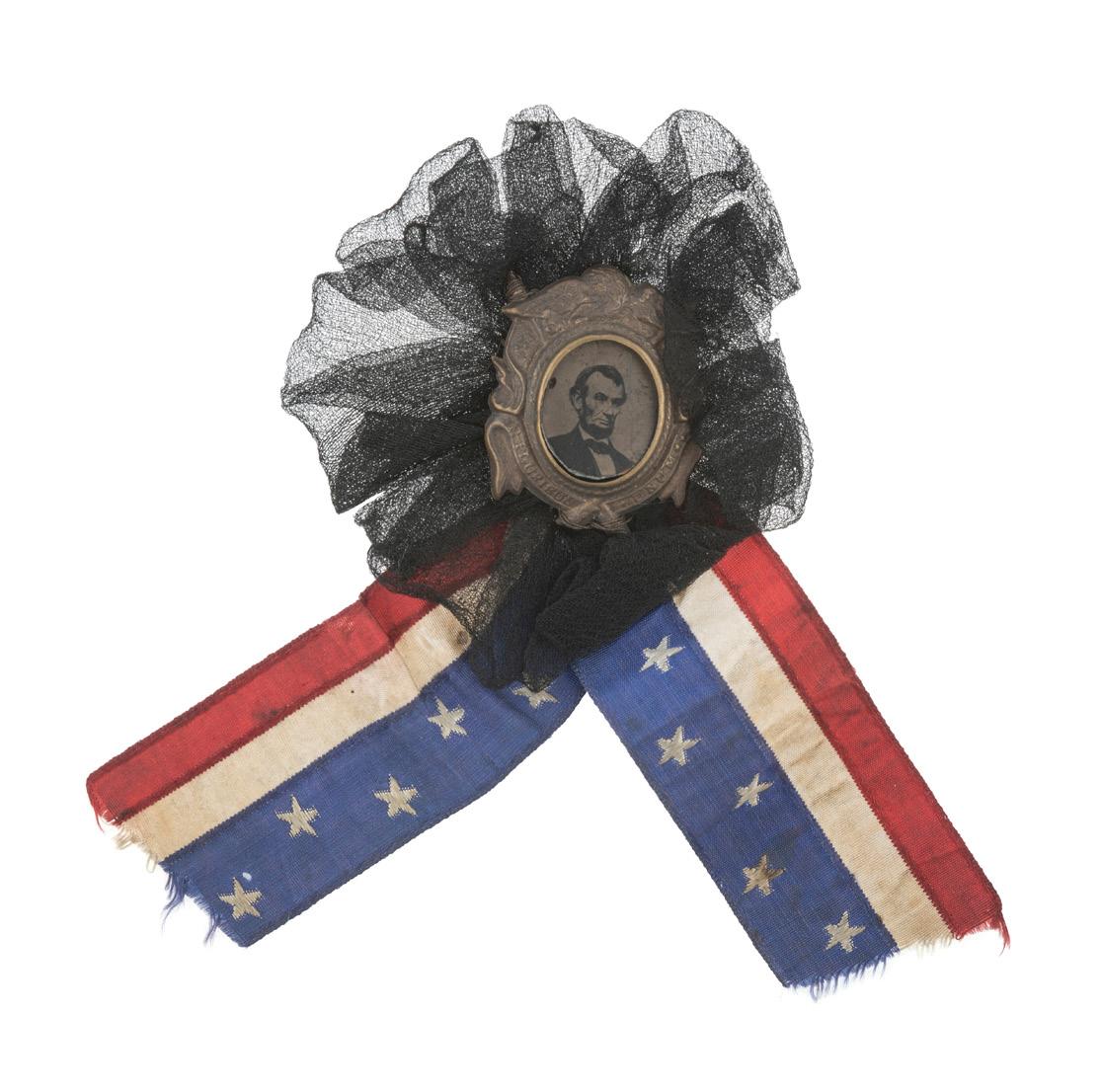
$500 - 700
343 [LINCOLN, Abraham
Cabinet card of Lincoln’s Springfield, IL, home, originally taken on the day of the funeral, 4 May 1865.
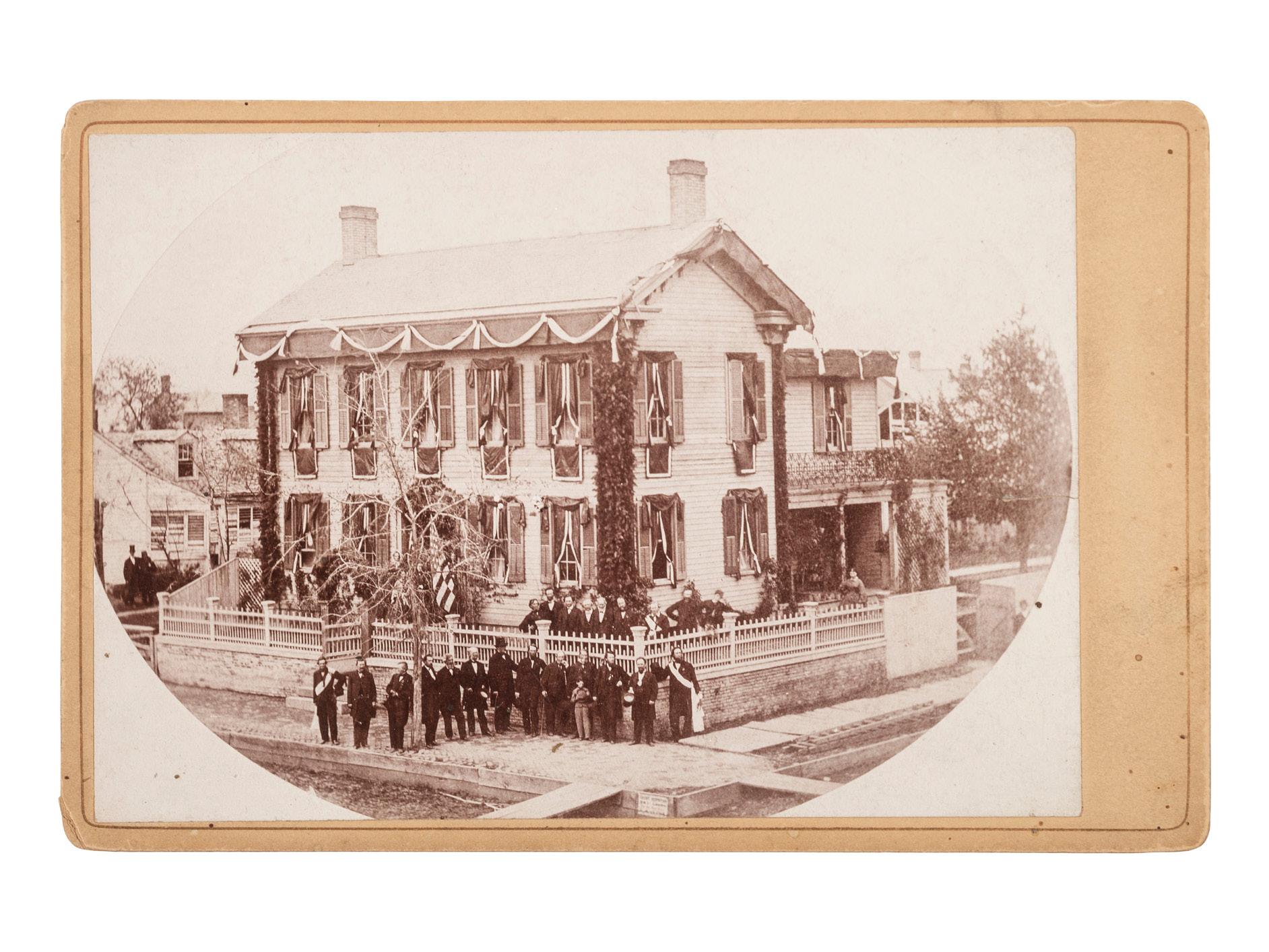
Provenance: Osborn H. Oldroyd (pencil inscription to verso noting the photograph was received from Oldroyd in Washington on 17 January 1911).
$300 - 400
$300 - 400
$2,000

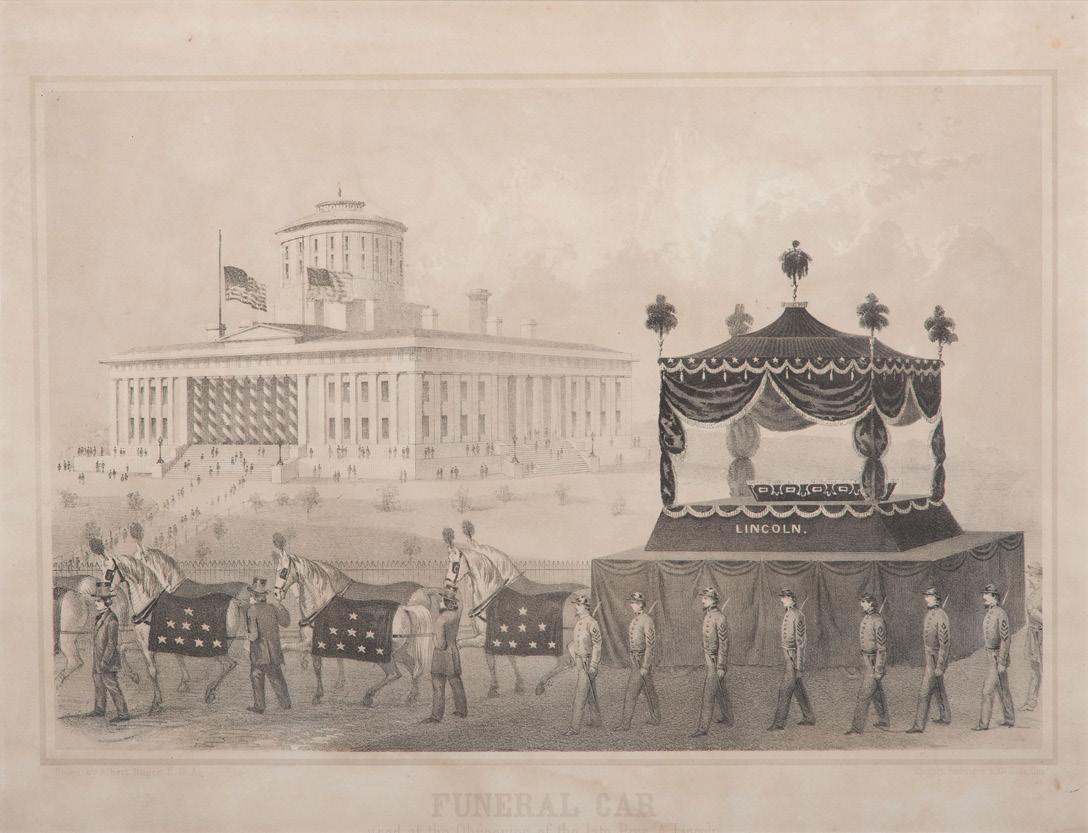
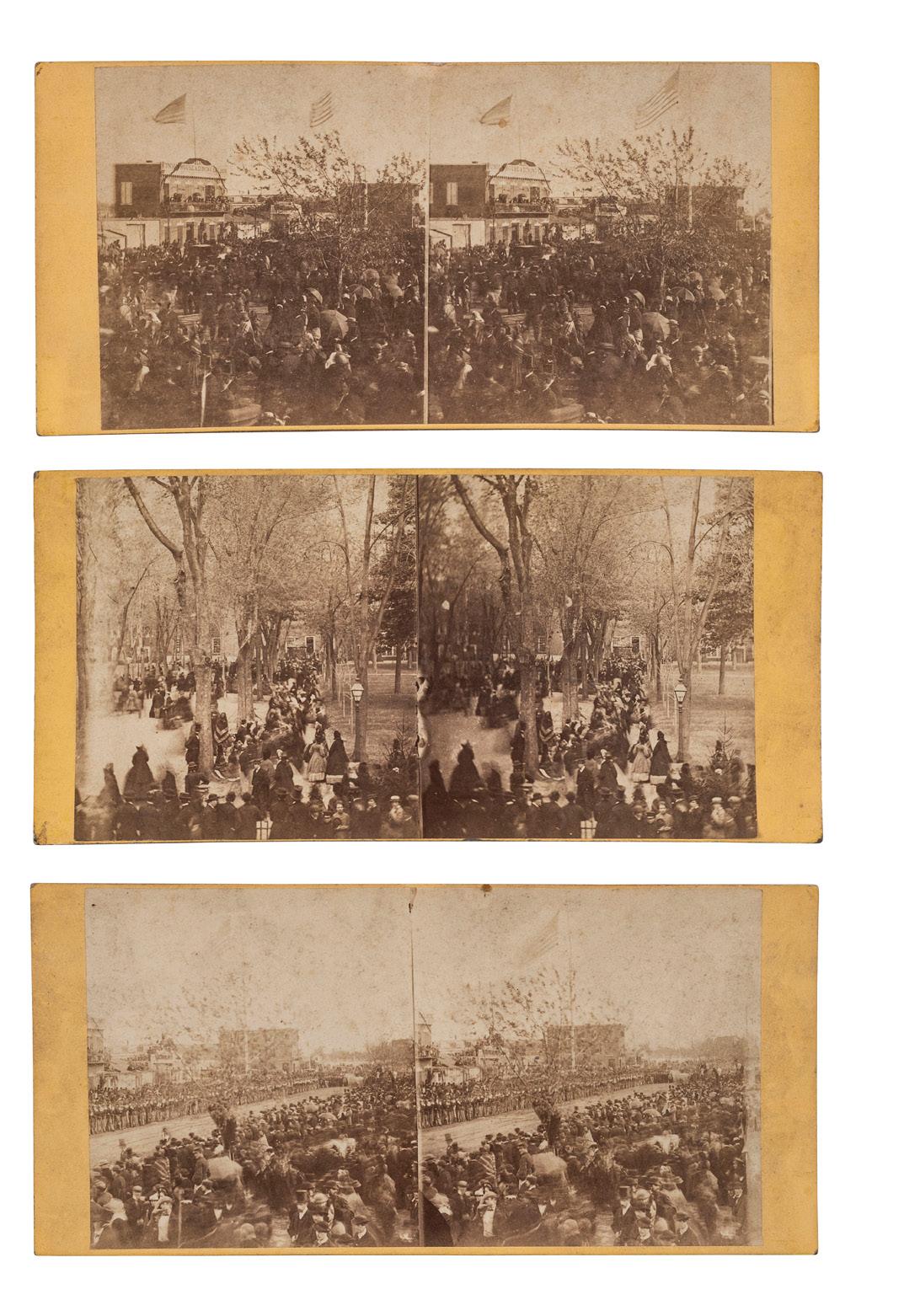
$400

347 [LINCOLN, Abraham (1809-1865)]. [GARDNER, Alexander (1821-1882), photographer]. A group of 2 stereoviews of the execution of Mrs. Surratt and the Lincoln Assassination Conspirators. Hartford, CT: Taylor & Huntington, ca 1890s.
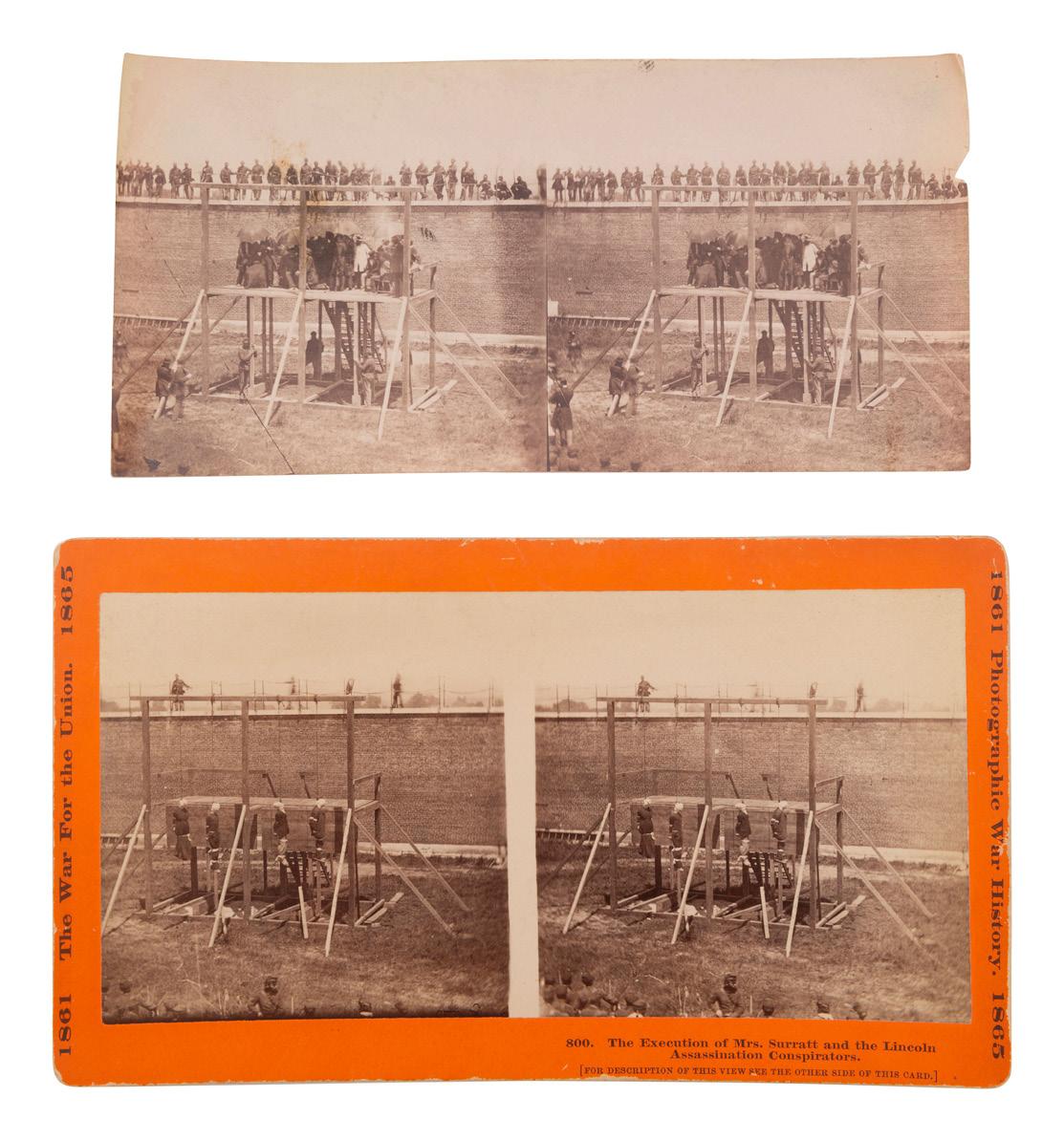
$800 - 1,200
348
[LINCOLN, Abraham (1809-1865)]. Strands of hair attributed to Abraham and Mary Todd Lincoln displayed with wood fragments from the scaffold used in the execution of the Lincoln conspirators and other relics.

Estate of Carroll J. Delery III, Formerly the “Historical Shop”
$500 - 700
349 [LINCOLN, Abraham (1809-1865) - ASSASSINATION]. American and Commercial Advertiser. Vol. CXXX, No. 21,397. Baltimore, MD: 17 April 1865.
$700 - 1,000
350 [LINCOLN, Abraham (1809-1865) - ASSASSINATION]. New York Semi-Weekly Tribune. New York: 28 April 1865. Front page report on the capture and death of John Wilkes Booth.

$600 - 800
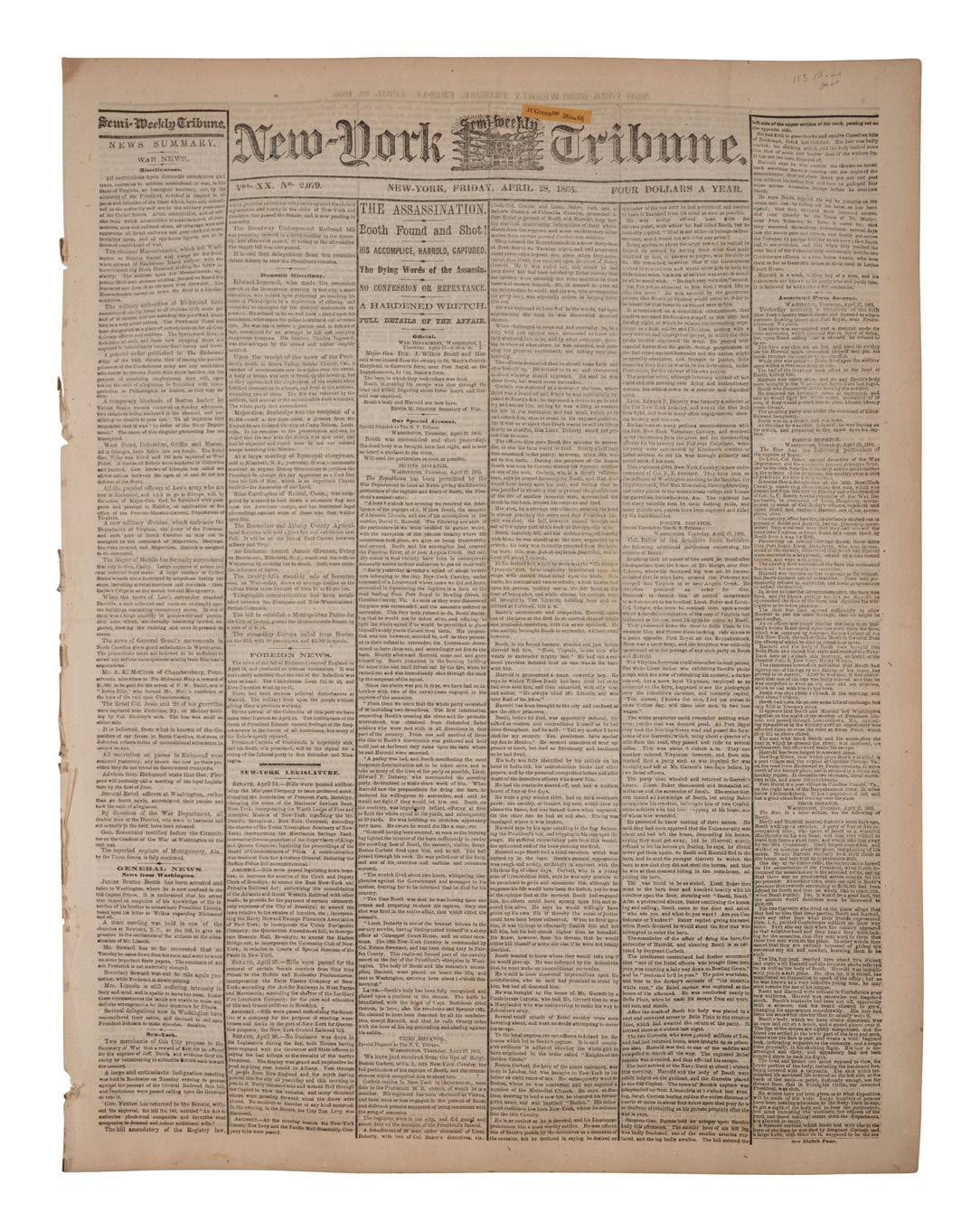
351 [LINCOLN, Abraham (1809-1865)]. TOWNSEND, George Alfred (1841-1914). The Life, Crime, and Capture of John Wilkes Booth. New York: Dick & Fitzgerald, [1865].

Property from the Patrick Atkinson Collection, Minneapolis, Minnesota
$500 - 700
352 GREELEY, Horace (1811-1872). Autograph letter signed (“Horace Greeley”). New York, 8 May 1865.
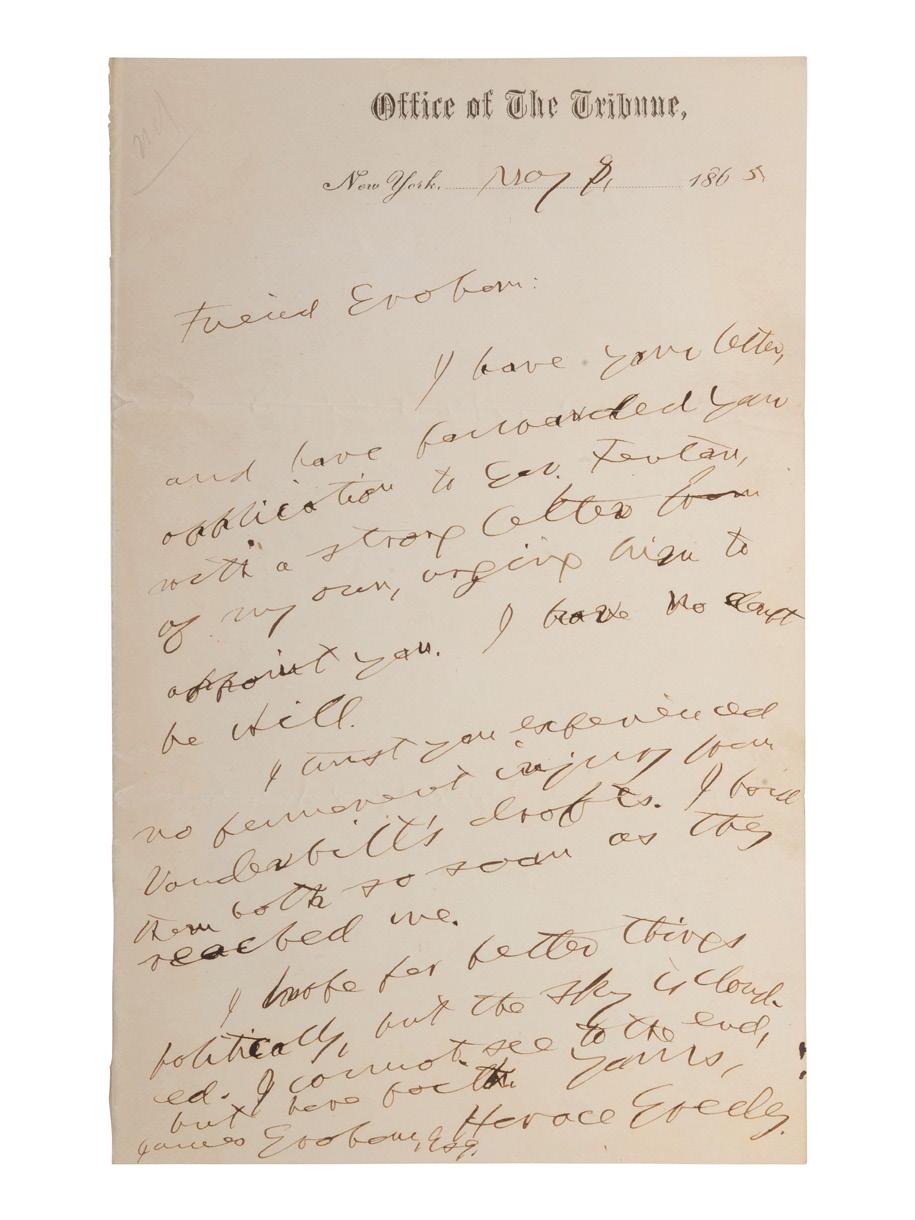
$300 - 500
353 [CIVIL WAR]. JOHNSON, Andrew (1808-1875). Commissions associated with the service of Major Murray Davis, 95th Ohio Infantry, including a document signed by Andrew Johnson as President, 20 April 1866.
$2,000 - 3,000
354 GRANT, Ulysses S (1822-1885). Autograph note of regret. 6 February 1881.

Property from the James Milgram, M.D., Collection of Broadsides, Ephemeral Americana, and Historical Documents
$500 - 700
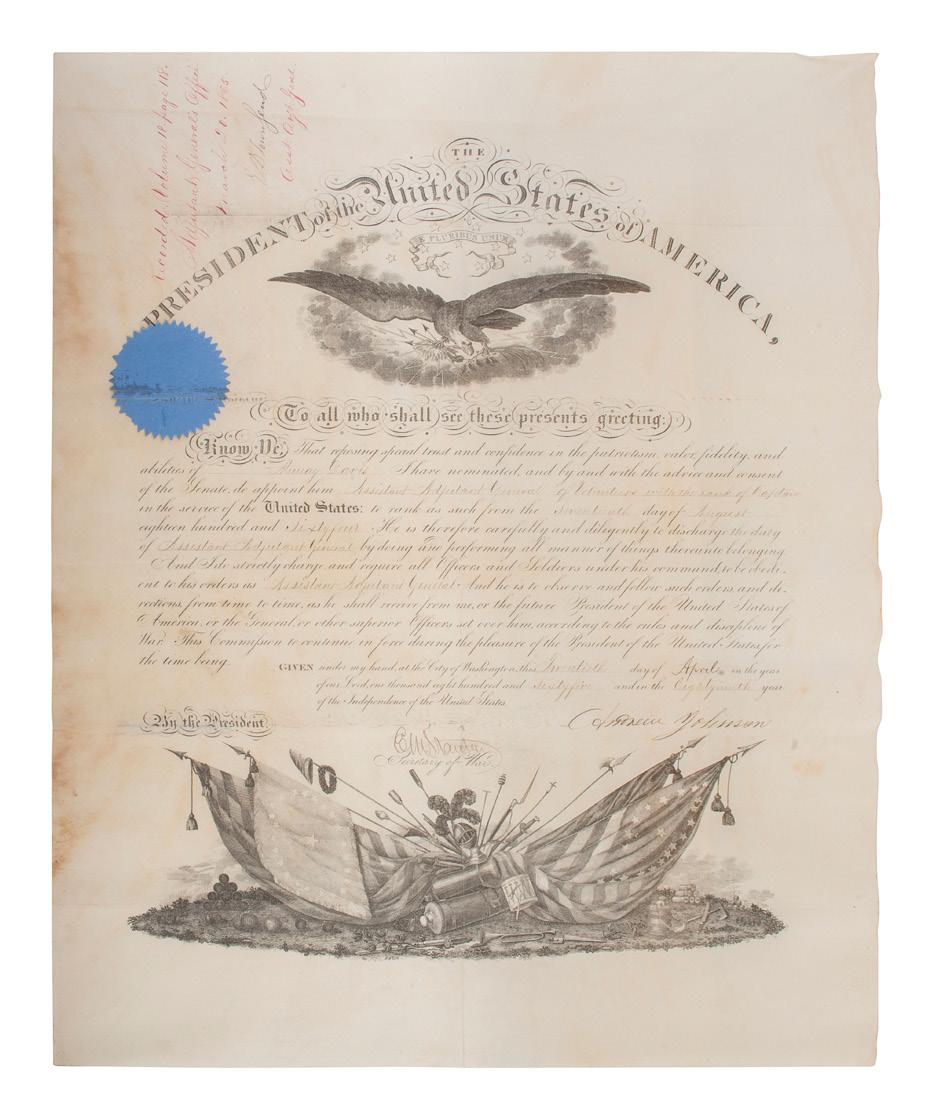
355 [POLITICS]. A group of 4 letters signed by politicians and reformers, incl. Robert Todd LINCOLN, Henry Ward BEECHER, Roscoe CONKLING, and Whitelaw REID.
$300 - 600
356
GARFIELD, James A. (1831-1881). Letter signed (“J.A. Garfield”), to James Gopsill (1823-1884). Mentor, OH, 8 February 1881.
$400 - 600
357 [POLITICS]. ARTHUR Autograph letter signed with clipped signatures of Presidents HAYES, ARTHUR, and CLEVELAND, First Lady Frances Cleveland, Sec. of Treasury SPINNER.
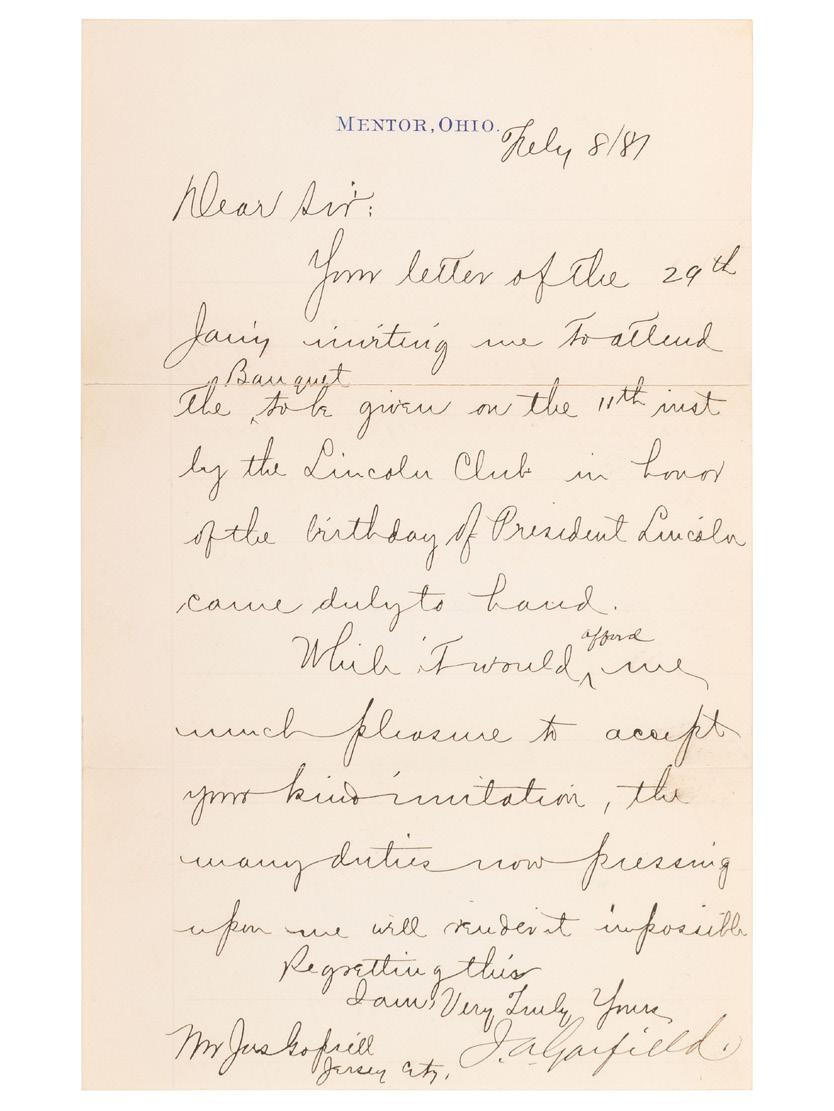

Property from the James Milgram, M.D., Collection of Broadsides, Ephemeral Americana, and Historical Documents
$600 - 800
358
CLEVELAND, Grover (1837-1908). Autograph letter signed (“Grover Cleveland”), as President. Washington, DC, 2 May 1894.
3 pages, on bifolium, 4 3/8 x 6 15/16 in. On Executive Mansion letterhead. With original postally used Executive Mansion envelope.
In this difficult to discern letter to Professor James M. Pierce, President Cleveland writes asking if the recipient’s brother might be interested in the position of Secretary of Legation at St. Petersburg.

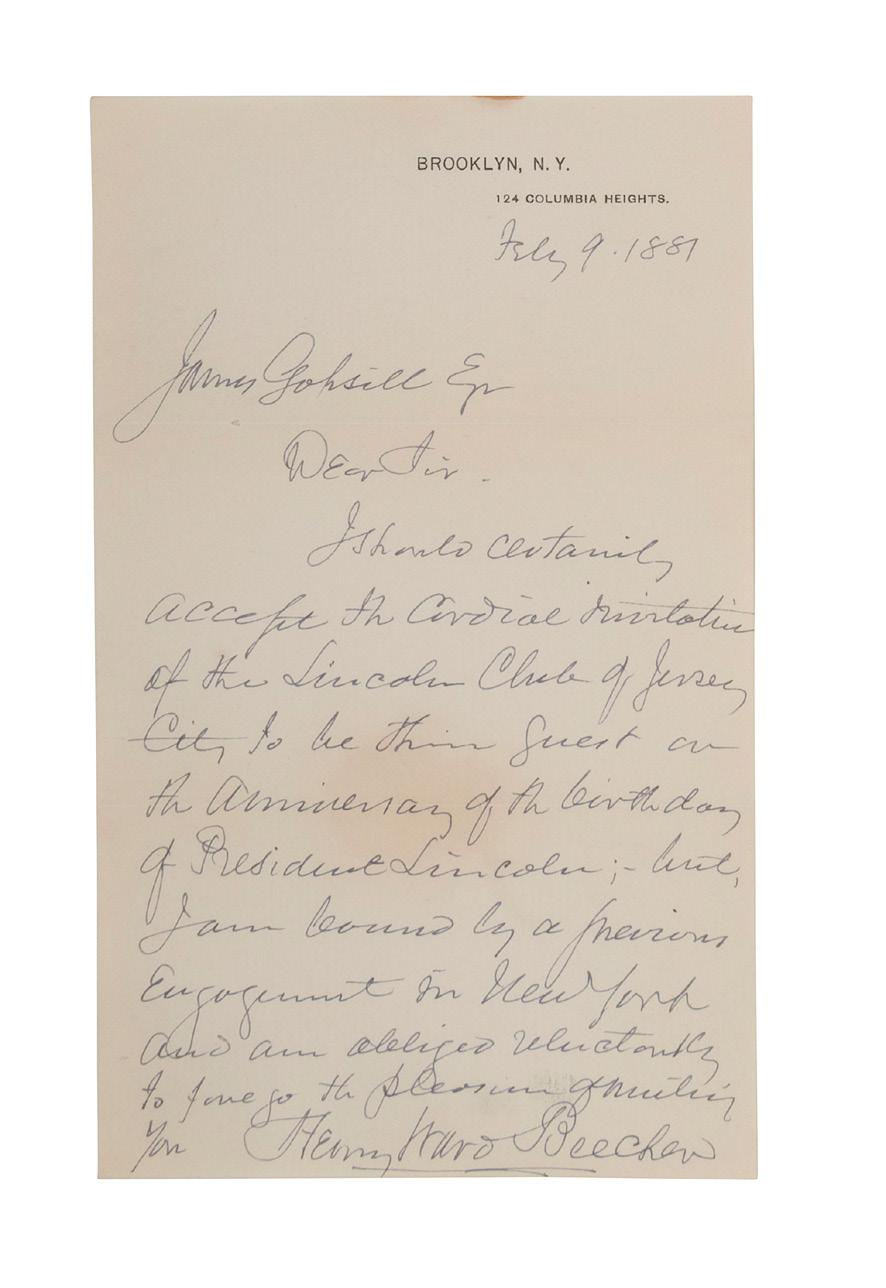
Property from the James Milgram, M.D., Collection of Broadsides, Ephemeral Americana, and Historical Documents
$300 - 600
359
ROOSEVELT, Theodore (1858-1919). Typed letter signed (“Theodore Roosevelt”), as Police Commissioner. New York, 30 September 1896.
2 pages, 7 3/4 x 10 1/2 in. On “Police Department of the City of New York” letterhead.
In this letter to the editor of the Christian Advocate, Roosevelt calls attention to the immediate need for more men to join the police force. In part, “Nearly 800 patrolmen have been appointed within the last year, and 800 more must be appointed within the next four months...Every hardworking, industrious man of good character and good bodily development who can pass our examinations will be appointed wholly without regard to any influence he may or may not have, and without regard to his political or religious affiliations...The mental examination is such that any man who has been to the public schools until fourteen years old can pass it without the slightest difficulty...”
He goes on to discuss the pay of policemen, and to discourage any “man of bad moral character and imperfect physical development” from applying. He underlines the historic nature of the current situation as well, in part, “Never before in the history of the city have so many appointments to the police force been open, and never before have these appointments been open to all citizens strictly on their merits. It is a chance such as does not offer itself once in a generation.
Property from the James Milgram, M.D., Collection of Broadsides, Ephemeral Americana, and Historical Documents
$400 - 600
360
ROOSEVELT, Theodore III (1887-1944). Typed letter signed (“Theodore Roosevelt”). New York, NY, 21 February 1927.
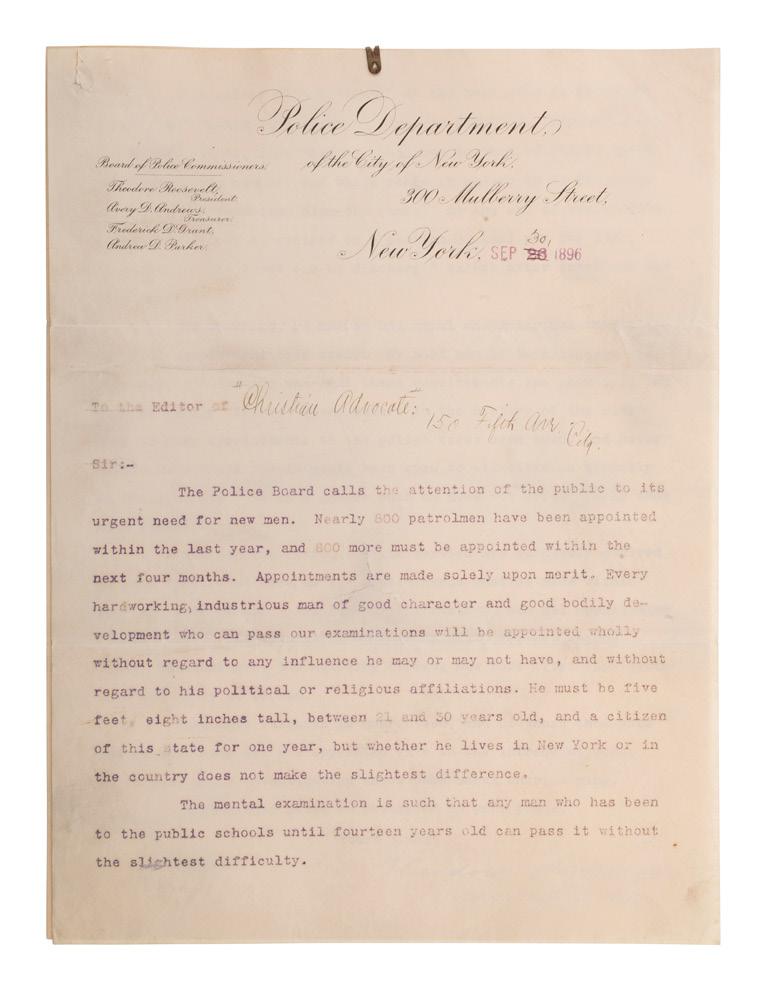
[With:] 2 pages, 4 11/16 x 6 7/16 in., printed partial invitation to the Fourth Annual Meeting and Banquet of what could be the Union College Alumni Association. “Theodore Roosevelt” written in ink on first page. Event is scheduled for 10 December 1891 at the Hotel Brunswick in New York.

Property from the James Milgram, M.D., Collection of Broadsides, Ephemeral Americana, and Historical Documents
$400 - 600
361
ROOSEVELT, Theodore (1858-1919). The Winning of the West. New York and London: G. P. Putnam’s Sons and the Knickerbocker Press, 1900.
$400 - 600
362 [POLITICS]. A group of 5 letters and signatures, including Herbert HOOVER TLS, William Jennings BRYAN TLS, and William TAFT signature.

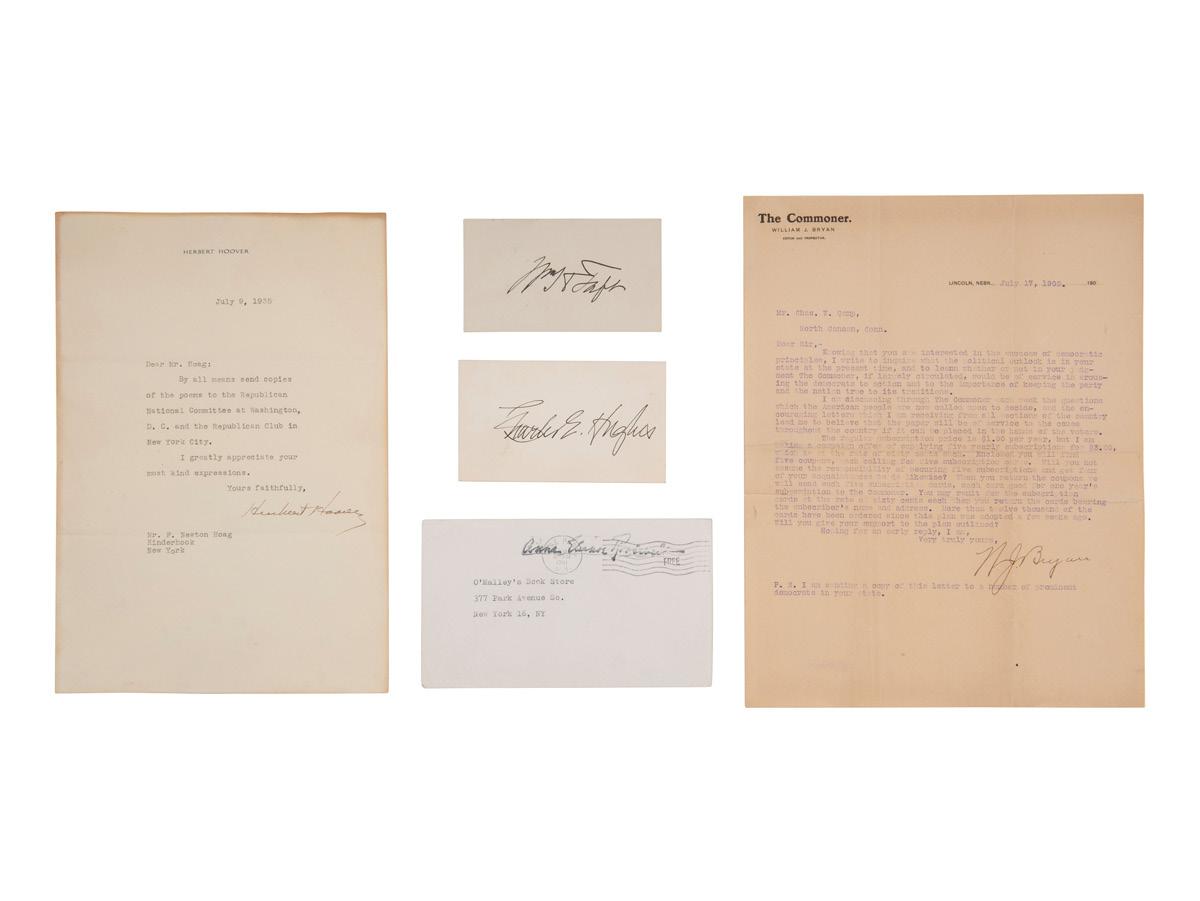
Property from the James Milgram, M.D., Collection of Broadsides, Ephemeral Americana, and Historical Documents
$400 - 600
[HARDING, Warren G. (1865-1923)]. BRITTON, Nan. Typed letter signed (“Nan Britton”). 9 November 1927.
2 pages, 7 1/8 x 10 1/2 in.
In this letter to Mr. Meyer Solmson, managing editor of New York City broadsheet newspaper, The Morning Telegraph, Britton takes aim at a recent editorial, citing “the direct implications therein, which are the mistaken conclusions of those who either have not read my book, THE PRESDIENT’S DAUGHTER, or have read it with eyes closed willingly to actualities and minds prejudiced in an unconscionable degree.”
She points out a number of issues with the editorial, including factual errors and misrepresentations she perceives, writing, “Indeed, if you were to print the truth you would tell through the medium of your column my desire to exploit only the wrong social conditions in these United States which are permitting innocent children to carry a life-long stigma instead of giving them their rightful heritage - - an unblemished name. This and this only am I endeavoring to do, not only for my own dear child and Mr. Harding’s but for every child born in these United States out of so-called legal union...”
Nanna Popham Britton (1896-1991) published what is widely considered the first kiss-and-tell book, The President’s Daughter, in 1927. The revelatory book detailed her sexual affair with President Warren G. Harding and the result of that affair, her daughter Elizabeth Ann Blaesing (1919-2005). Britton’s book was met with criticism and skepticism from many including prominent politicians and journalists.
Without any way to prove the parentage of her daughter after the President’s sudden death in 1923, Britton never secured resources from the Harding family to help take care of her daughter. It was not until 2015, 10 years after the death of Elizabeth Ann, that DNA tests proved that she was, in fact, Warren Harding’s daughter.
Property from the James Milgram, M.D., Collection of Broadsides, Ephemeral Americana, and Historical Documents
$500 - 1,000
364
ROOSEVELT, Franklin D. (1882-1945). Typed letter signed (“Franklin D Roosevelt”), as President. Washington, DC, 21 April 1933.
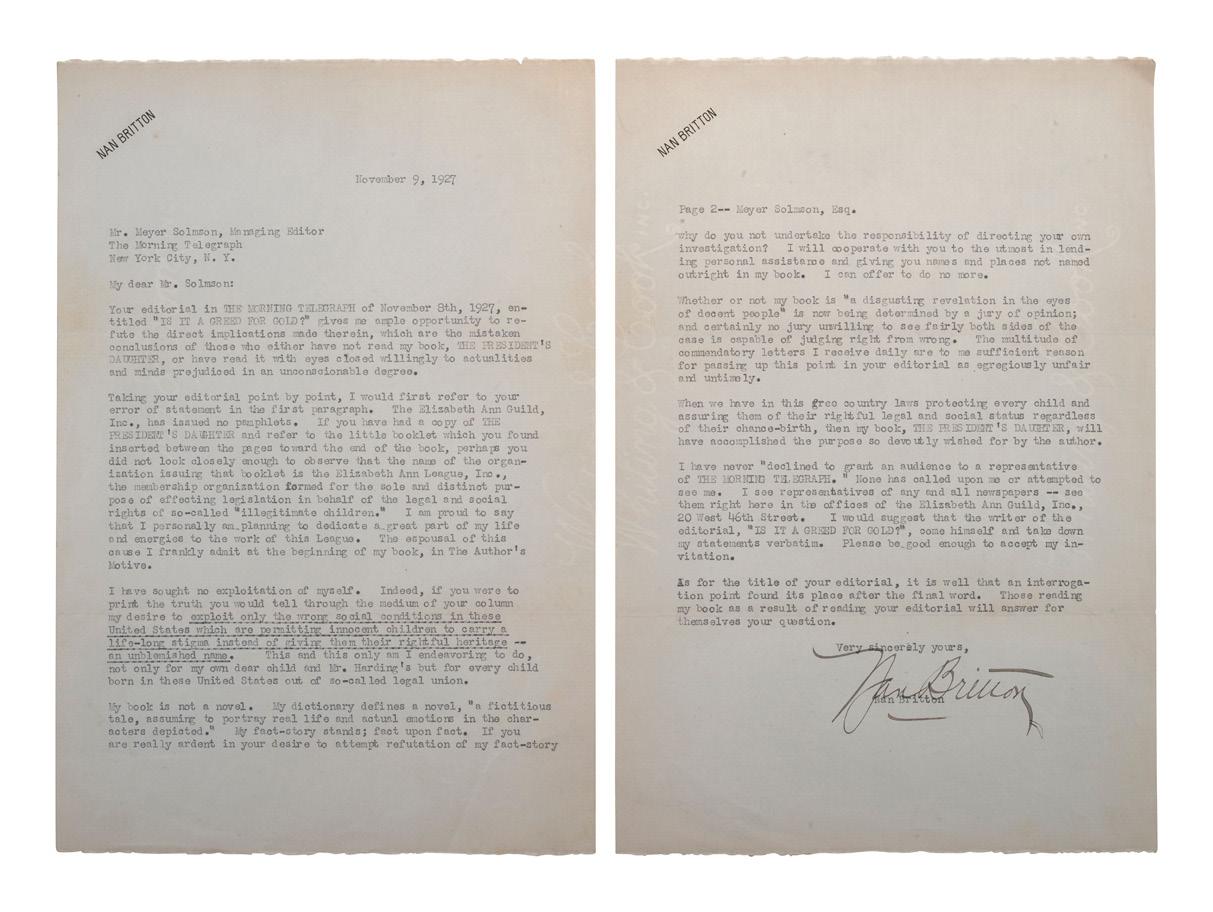
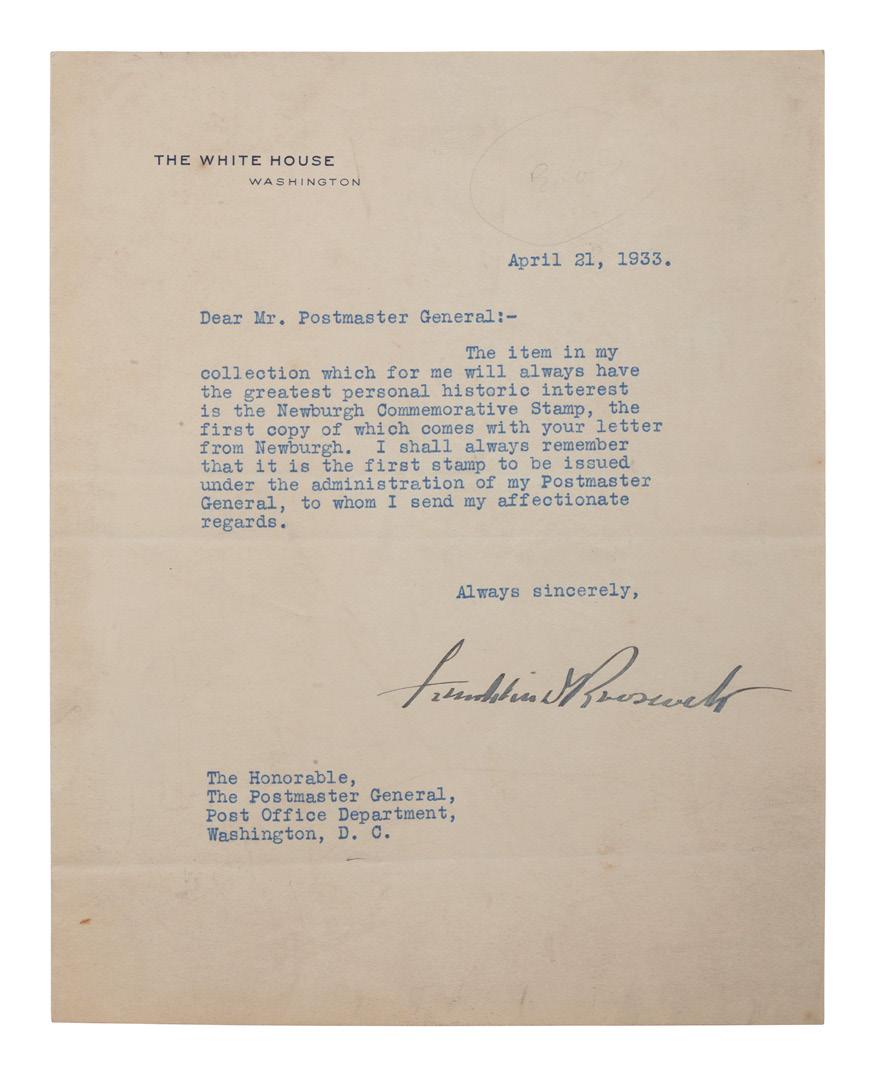
One page, on bifolium, 7 x 8 7/8 in. Addressed to the Postmaster General.
In full: “The item in my collection which for me will always have the greatest personal historic interest is the Newburgh Commemorative Stamp, the first copy of which comes with your letter from Newburgh. I shall always remember that it is the first stamp to be issued under the administration of my Postmaster General, to whom I send my affectionate regards.”
ROOSEVELT appointed James A. Farley to the position of postmaster general in 1933. The president’s fondness for stamp collecting made him particularly interested in the position, and the two men sometimes exchanged ideas for stamp designs.
Property from the James Milgram, M.D., Collection of Broadsides, Ephemeral Americana, and Historical Documents
$300 - 400
365A
EISENHOWER, Dwight D. (1890-1969). Crusade in Europe. Garden City, NY: Doubleday & Company, 1948.
FIRST EDITION, LIMITED EDITION, number 641 of 1426 copies, SIGNED BY EISENHOWER. Accompanying Eisenhower’s account of the D-Day invasion and defeat of the Axis in World War II, this work includes the Facsimile D-Day Order where Eisenhower spurred action in the troops (in part): “The eyes of the world are upon you. The hopes and prayers of liberty-loving people everywhere march with you. In company with our brave Allies and brothers-in-arms on other Fronts, you will bring about the destruction of the German war machine, the elimination of Nazi Tyranny over the oppressed peoples of Europe, and security for ourselves in a free world.”
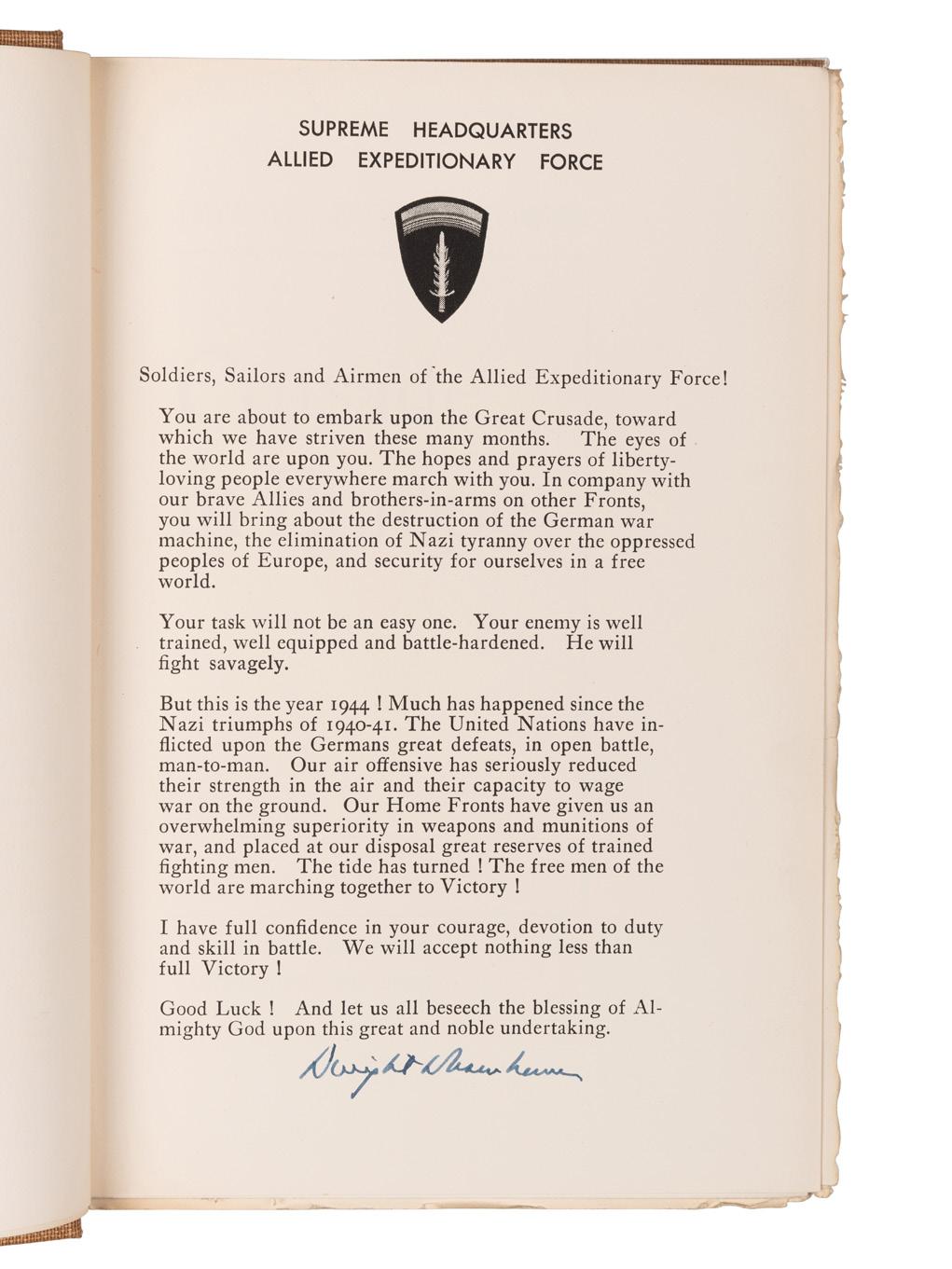
Property from a Private Collection, Chicago, Illinois
$2,500 - 3,500
365
ROOSEVELT, Franklin Delano (1882-1945). Straw bowler hat signed (“Franklin D. Roosevelt”).
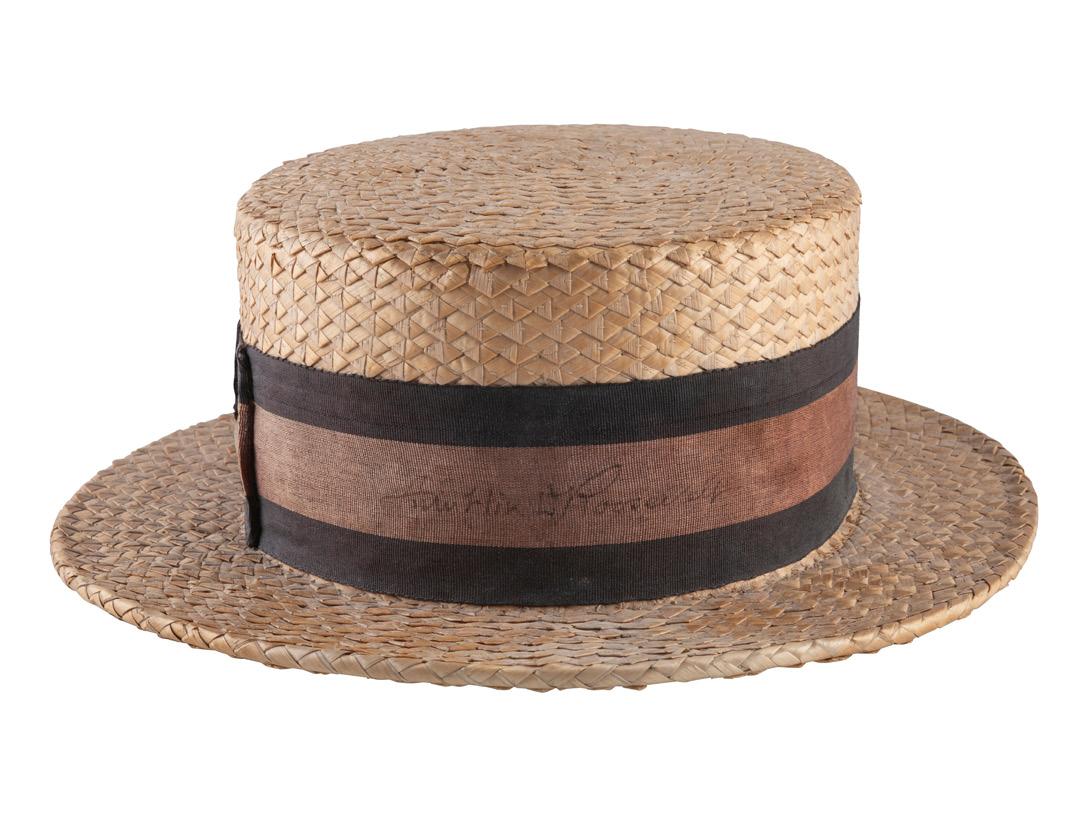
Provenance: Signed in person and obtained by Michigan Senator Arthur Vandenberg (1884-1951) at the Gridiron Dinner at the Willard Hotel, 10 April 1937. Consignor relates that the hat was given to Vandenberg’s son, Arthur, Jr., who gifted it to his attorney when defended for his removal from government service, remaining in that family until the present day.
$500 - 700
366
[TEMPERANCE]. NICHOLS & DAVIDSON, photographers. Halftone image of Carrie Nation with Bible and hatchet. Chicago: W.H. Buchanan[?], ca 1901.

$400 - 600
367
WEBSTER, Noah (1758-1843). Autograph letter signed (“N Webster”). Amherst, 24 October 1814. [With:] Engraving of Webster.
2 pages, 7 3/4 x 9 7/8 in. Docketed verso.
Webster writes to Messrs. Webster & Skinner, in part: “I have just returned from Boston where I was summoned by Gov Strong. The public prints will inform you what we have done. The crisis is important & such is the uneasiness of people that it was necessary to do something, which might show that the federal party have understanding to know & spirit to defend their rights & the rights of the state. We are told that the Genl Govt will not pay our troops unless placed under an officer of the United States, but our militia will not serve under Genl Dearborn nor probably under any other of Madison’s officers. The militia officers would sooner resign their commissions. We are compelled then to raise & pay troops for the defense of a sea coast of at least 500 miles in extent. This subject will occupy the attention of the proposed convention at Hartford, for Connecticut is in the like situation.”
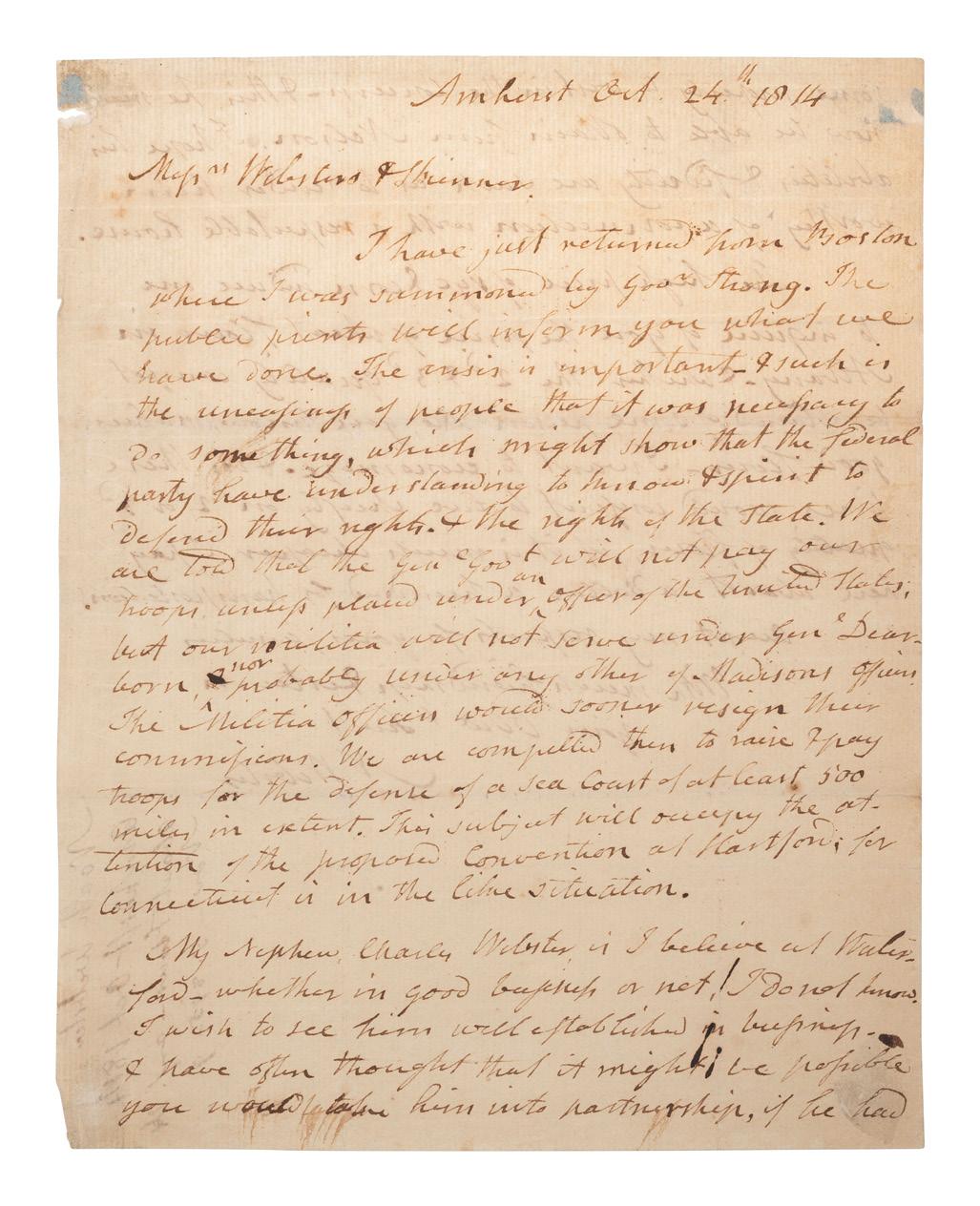
Noah Webster Jr. (1758-1843) moved to Amherst in 1812, where he founded Amherst College. He is best known for the books he produced, including his dictionaries and school textbooks.
Property from the James Milgram, M.D., Collection of Broadsides, Ephemeral Americana, and Historical Documents
$400 - 600
368 RUSKIN, John (1819-1900). A group of 3 autograph letters signed highlighted by a retained copy of an autograph letter signed (“J. Ruskin”), to Charles Herbert MOORE. Geneva, 16 February 1863.
2 pages, 8vo, with envelope. RUSKIN WRITES ABOUT J. M. W TURNER, CLAUDE MONET, AND DANTE GABRIEL ROSSETTI: “It is seldom that falsehoods are so direct, pure, and foundationless, as those which you have given me the opportunity of contradicting. Every year of my life shows me some higher and more secret power in Turner: and deepens my contempt for Claude. I believe at this moment the Pre-Raphaelite school of painting...to be the only vital and true school of painting in Europe, and its English leader, Dante G. Rossetti to be, without any compare, the greatest of English painters now living....If I have not shown that Turner is greater than Claude (quite infinitely greater) my life has been wasted.”
Property from the James Milgram, M.D., Collection of Broadsides, Ephemeral Americana, and Historical Documents
$300 - 400
370
BARNUM, Phineas Taylor (1810-1891). Autograph letter signed (“P.T. Barnum”). Liverpool England, 5 November 1858.
1 page, 5 3/8 x 8 1/8 in. Writing to a “Mr. Eno,” likely Amos Richards Eno (1810-1898), Barnum requests real estate advice, especially regarding his wife’s lease of the American Museum. Barnum asks that, if Mr. Eno is open to providing advice, he meet with Barnum’s son-in-law, Mr. Hurd, and the museum’s manager, Mr. Greenwood, to offer his views on the subject.



An icon in 19th-century American popular culture, Barnum’s American Museum was famously destroyed by fire on 13 July 1865.
Property from the James Milgram, M.D., Collection of Broadsides, Ephemeral Americana, and Historical Documents
$500 - 700
371
BARNUM, Phineas Taylor (1810-1891). Autograph letter signed (“P.T. Barnum”). [Museum?] 11 February 1867.
1 page, 4 5/8 x 7 3/8 in. Barnum offers to lecture for the recipient, “R[?] A Lewis,” for a modest amount, “one third of the guests receipts.”
Property from the James Milgram, M.D., Collection of Broadsides, Ephemeral Americana, and Historical Documents
$500 - 700
372
SHIPPEN, Edward, Jr. (1729-1806). A collection of legal documents. Ca 1758.

Provenance: Parke-Bernet Galleries, New York, 25 November 1952, Lot 322.
$400 - 600
373
[BORDEN, Lizzie (1860-1927)]. Manuscript article, “Rev. Dr. Thomas on the Borden Case,” challenging Lizzie Borden’s defense, for inclusion in the Boston Evening Transcript. Ca 1892.
$500 - 700
374
ROCKEFELLER, John D. (1839-1937). A group of 2 Typed Letters Signed (“John D. Rockefeller”). Pocantico Hills, New York.
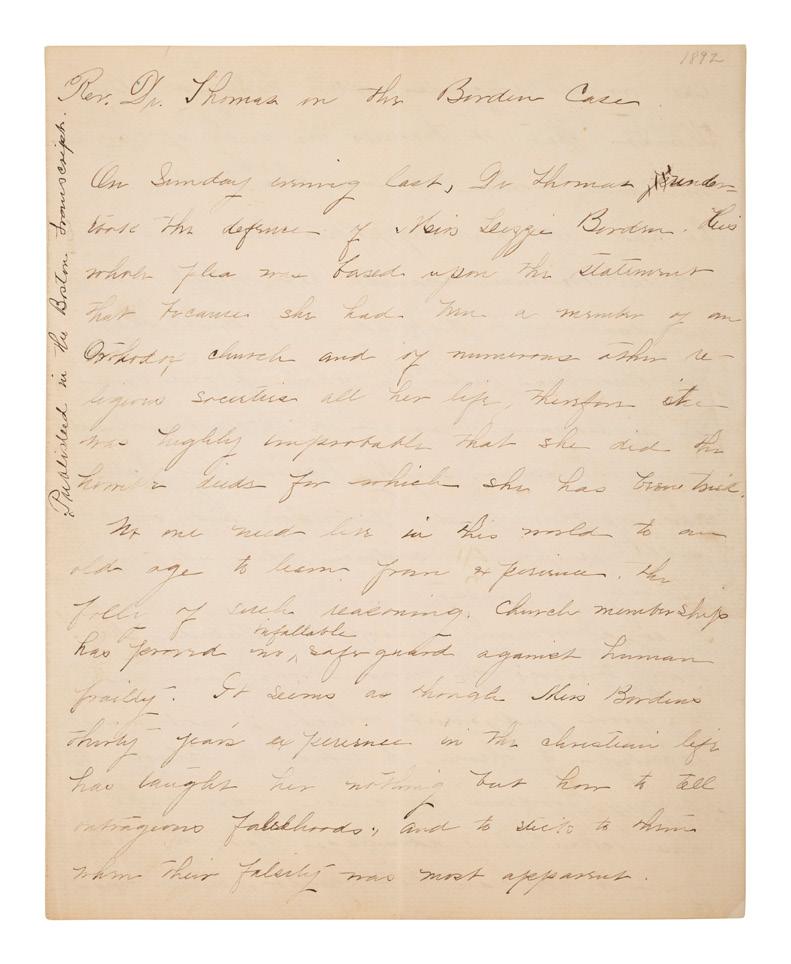
Property from the James Milgram, M.D., Collection of Broadsides, Ephemeral Americana, and Historical Documents
$400 - 600
375
EDISON, Thomas (1847-1931). Typed letter signed (“Thos A Edison”). Orange, NY, 21 June 1921. [With:] Projecting Kinetoscope pamphlet.
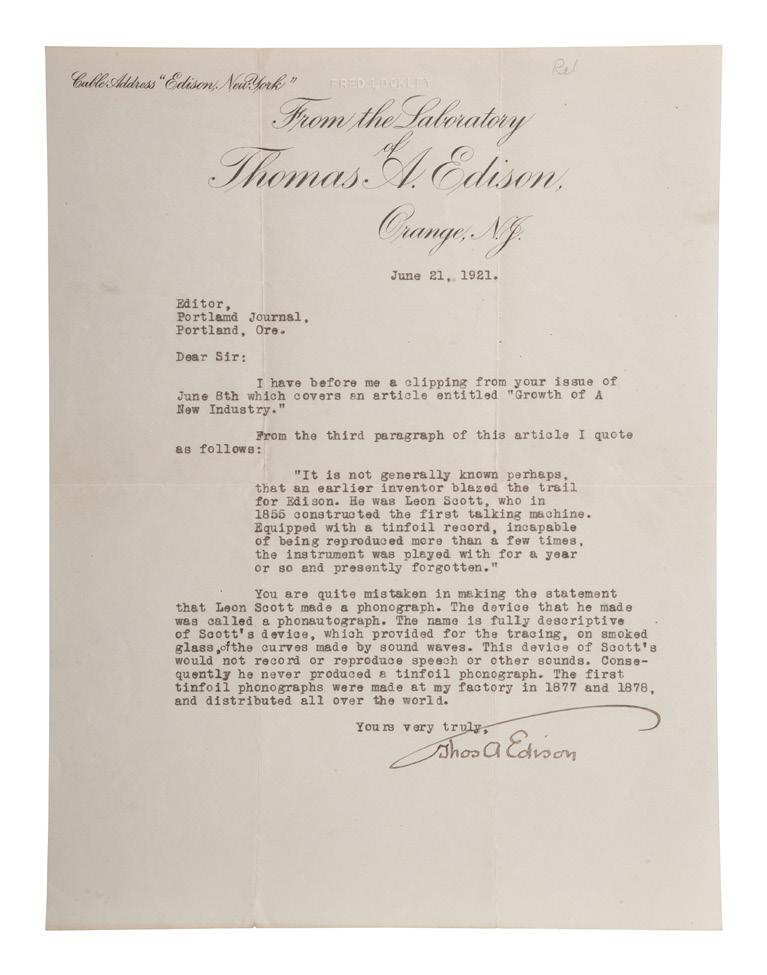

One page, 8 3/8 x 11 in. On “Laboratory of Thomas A. Edison” letterhead. In this letter to the editor of the Portland Journal, Edison seeks to correct what he believes is an incorrect statement made in an article in the 8 June issue of the periodical. He quotes the article: “It is not generally known perhaps, that an earlier inventor blazed the trail for Edison. He was Leon Scott, who in 1855 constructed the first talking machine. Equipped with a tinfoil record, incapable of being reproduced more than a few times, the instrument was played with for a year or so and presently forgotten.”
Edison then asserts: “You are quite mistaken in making the statement that Leon Scott made a phonograph. The device that he made was called a phonautograph. The name is fully descriptive of Scott’s device, which provided for the tracing, on smoked glass, of the curves made by sound waves. This device of Scott’s would not record or reproduce speech or other sounds. Consequently he never produced a tinfoil phonograph. The first tinfoil phonographs were made at my factory in 1877 and 1878, and distributed all over the world.”
Property from the James Milgram, M.D., Collection of Broadsides, Ephemeral Americana, and Historical Documents
$1,000 - 1,500
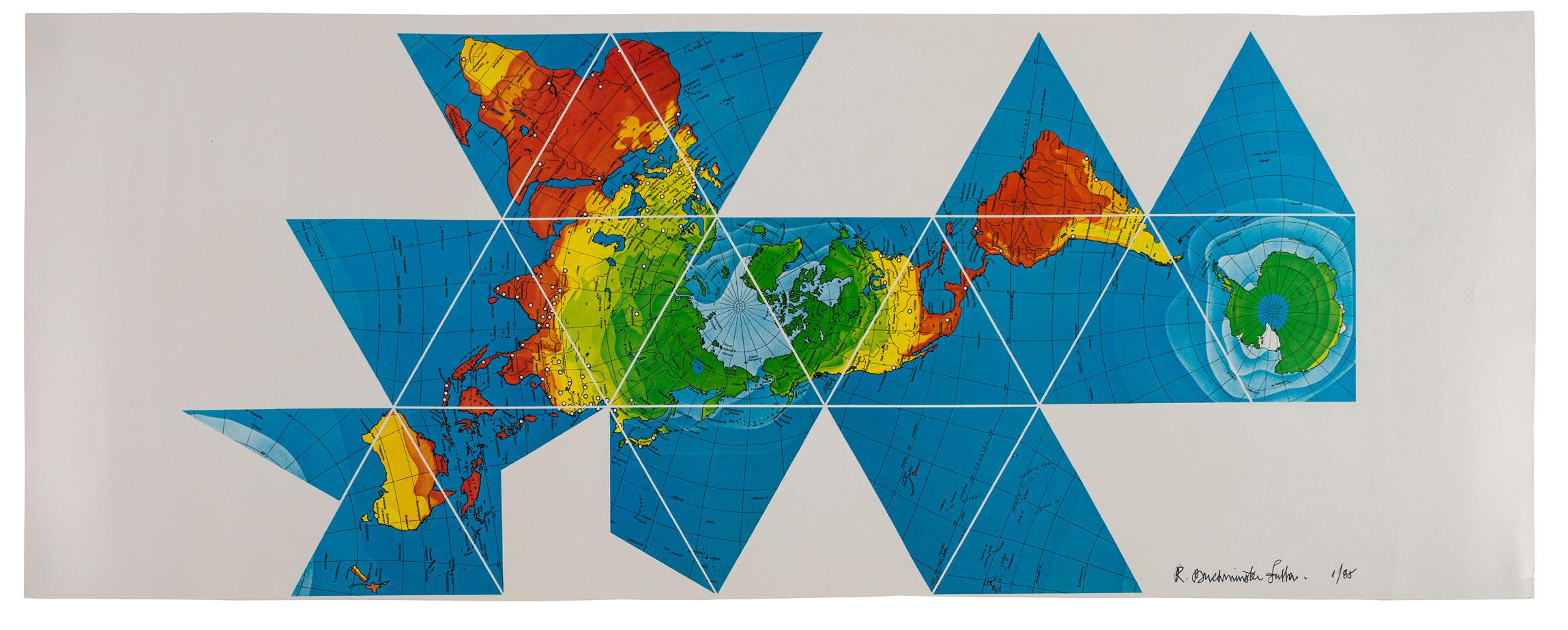

378 [AVIATION - BALLOONS]. Northampton Mercury. Vol. LXIV, No. 41. London, England: Thomas Dicey & Co., 15 December 1783. Containing report on Jacques Charles’ demonstration of the first successful manned hydrogen gas balloon.

$500 - 700
379 [AVIATION]. EARHART, Amelia (1897-1937). 20 hrs. 40 min. Our Flight in the Friendship. The American Girl, First Across the Atlantic by Air, Tells Her Story. New York: G.P. Putnam’s Sons, 1928.
Provenance: Thomas Liggett (signature, 16 November 1928).
FIRST TRADE EDITION, SIGNED BY AMELIA EARHART.

$700 - 900
380 [MARITIME]. Log of the Barques Wavelet, Looling, and J.H. Wills documenting journeys in East Asia, ca 1862-1865. [With:] Notebook containing sea shanties and sketches of ships, ca 1862-63.
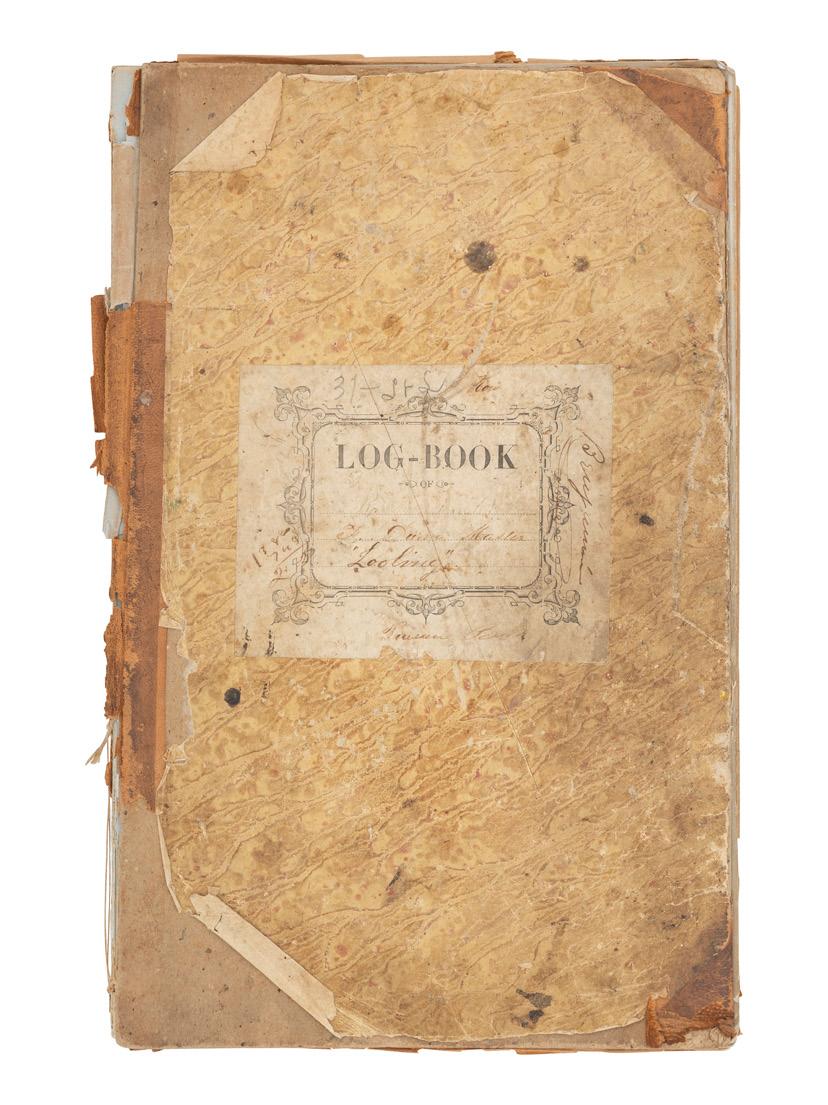
$1,000 - 2,000
381 [TRANSPORTATION]. Albumen photograph of the steamship Beaver after wrecking at Calamity Point in 1888.
$300 - 500
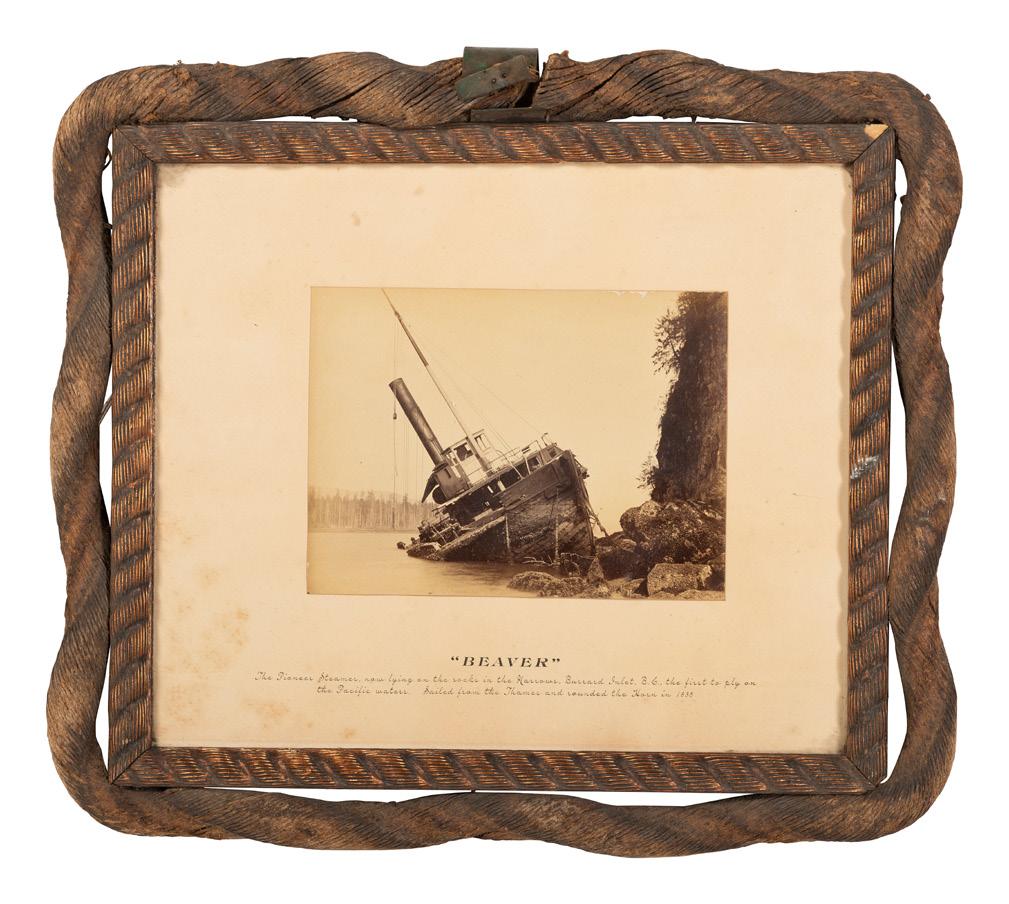
382 [TRANSPORTATION]. A group of 27 photographs of ocean liners including the RMS Titanic and HMHS Britannic. [Cowes, England]: Beken of Cowes, n.d.

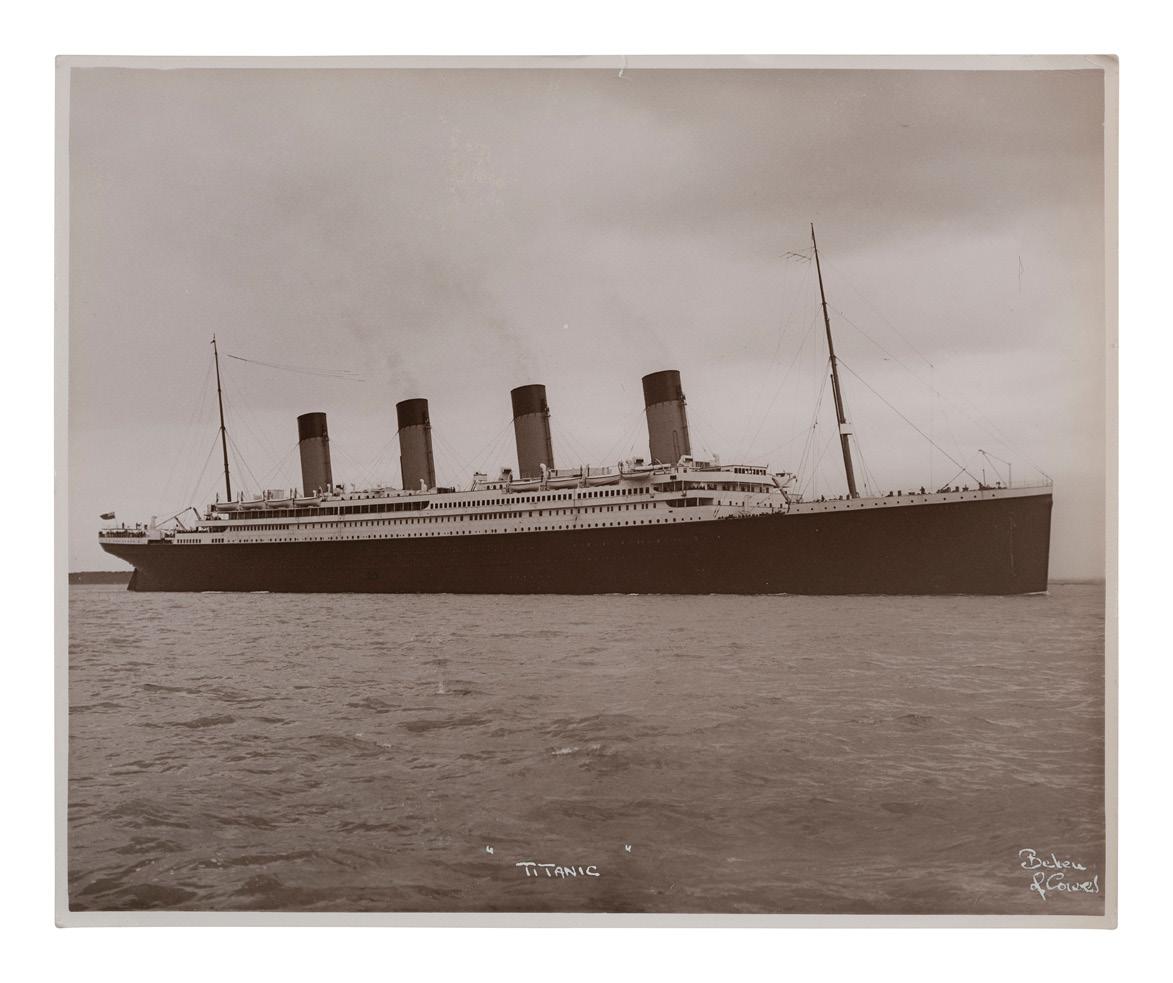
383 [TRANSPORTATION]. Titanic grouping, incl. photograph, advertising card, real photo postcard, and postcard from survivor Oscar Olsson.
$500 - 700
385 [NEW YORK]. Program and formal invitation to the “Opening Ceremonies of the New York and Brooklyn Bridge.” [1883].
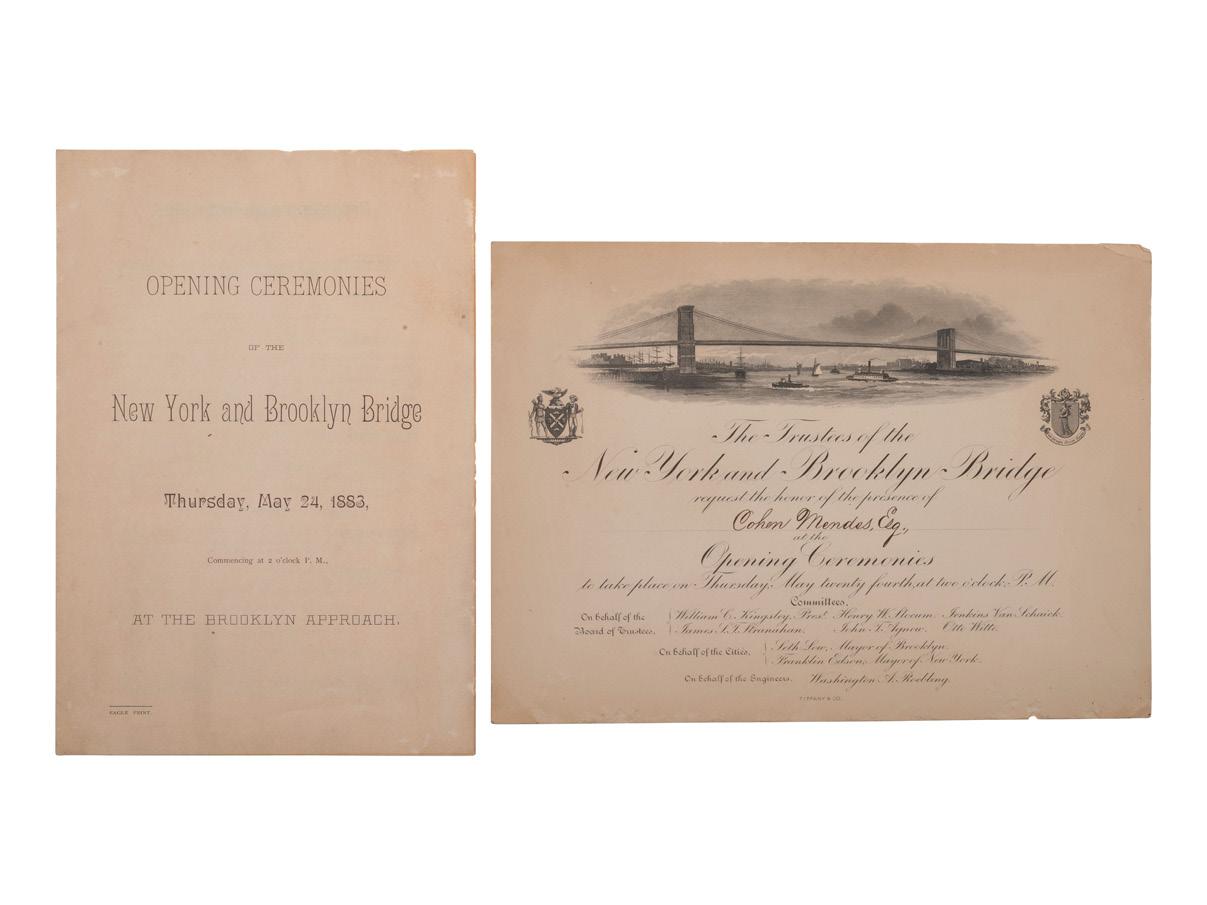
Property from the James Milgram, M.D., Collection of Broadsides, Ephemeral Americana, and Historical Documents
$400 - 600
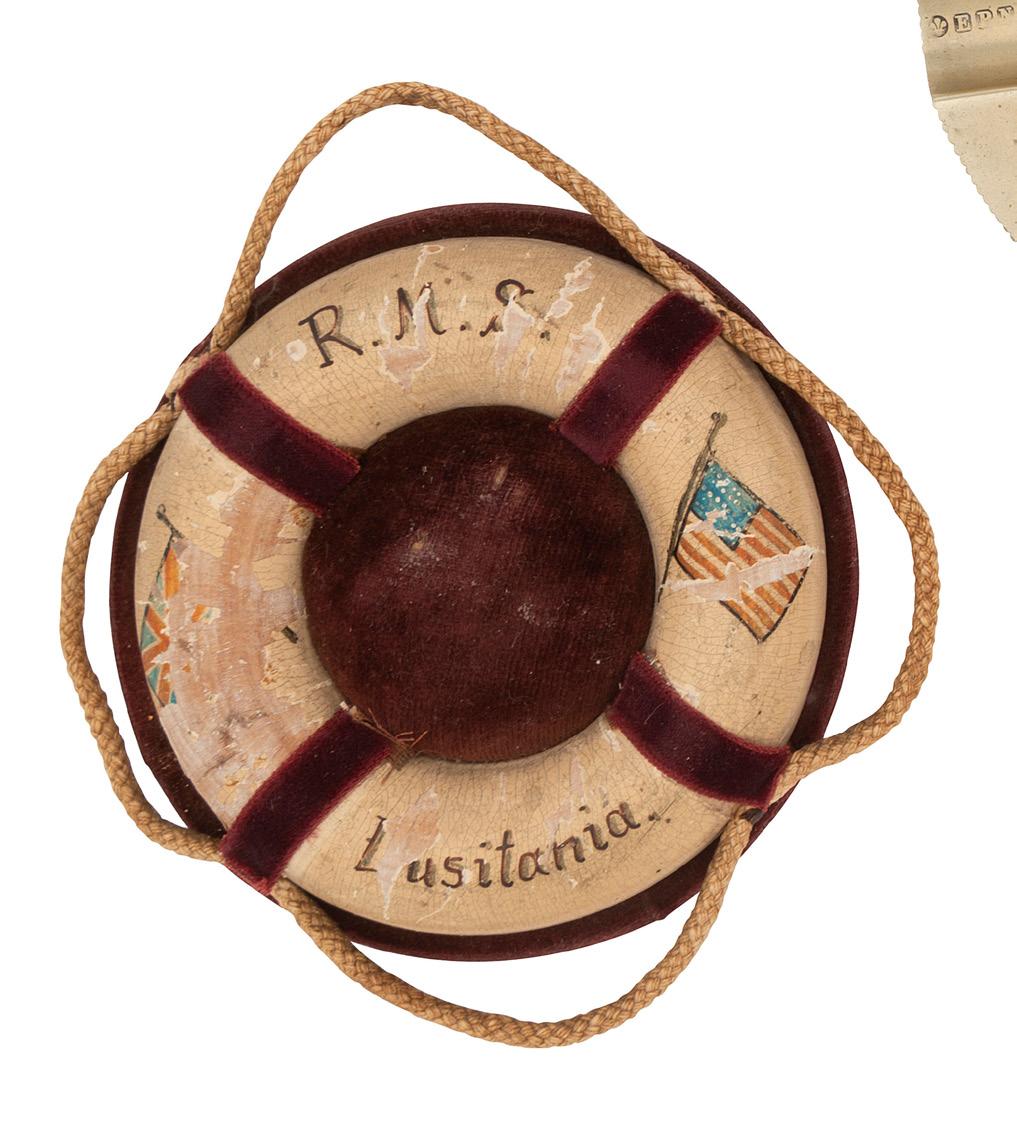
386 [NEW YORK]. A group of 3 items celebrating the unveiling of the Statue of Liberty, incl. original Tiffany invitation, silk souvenir ribbon, and program. 28 October 1886.

$1,000 - 1,500
387 [IMMIGRATION] -- [NEW YORK]. Einwanderers Freund, a register associated with the “Harbor Mission” of the Reformed Church in the United States and its outreach to German immigrants at Ellis Island, ca 1905-1912.
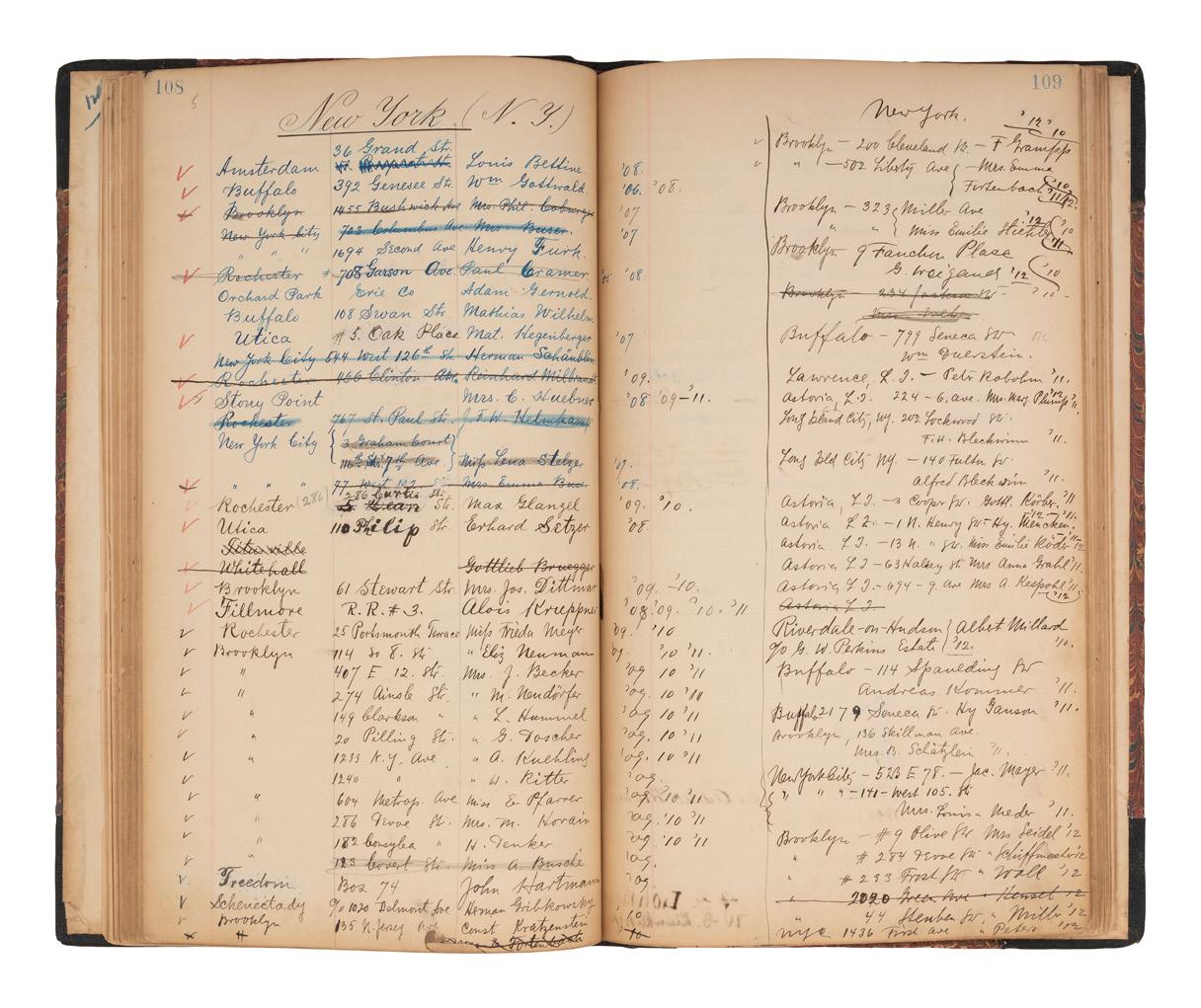
Property from the Patrick Atkinson Collection, Minneapolis, Minnesota
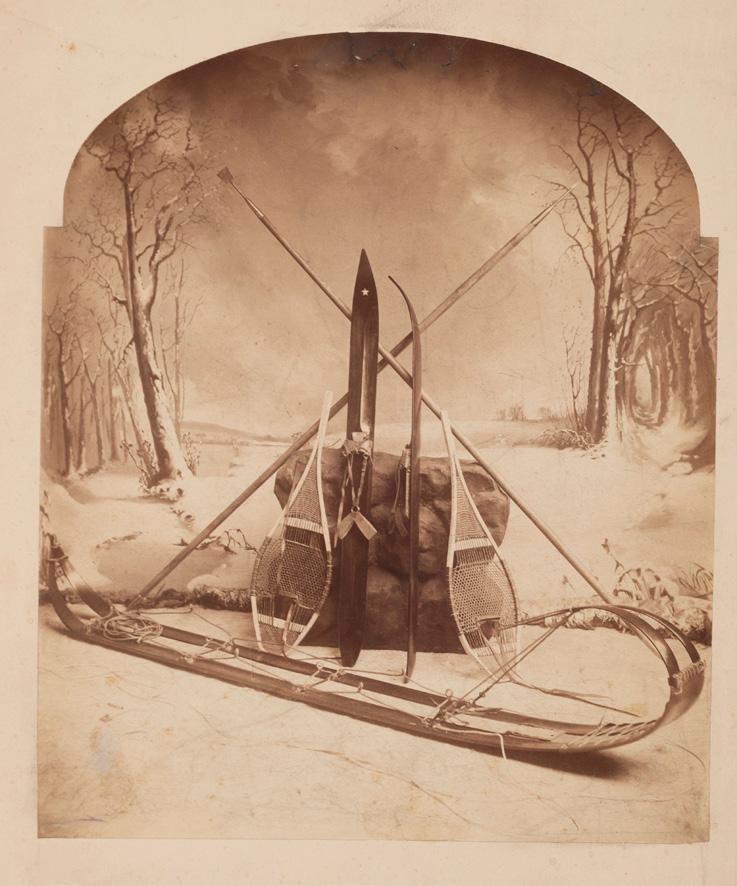

$800 - 1,200
$300

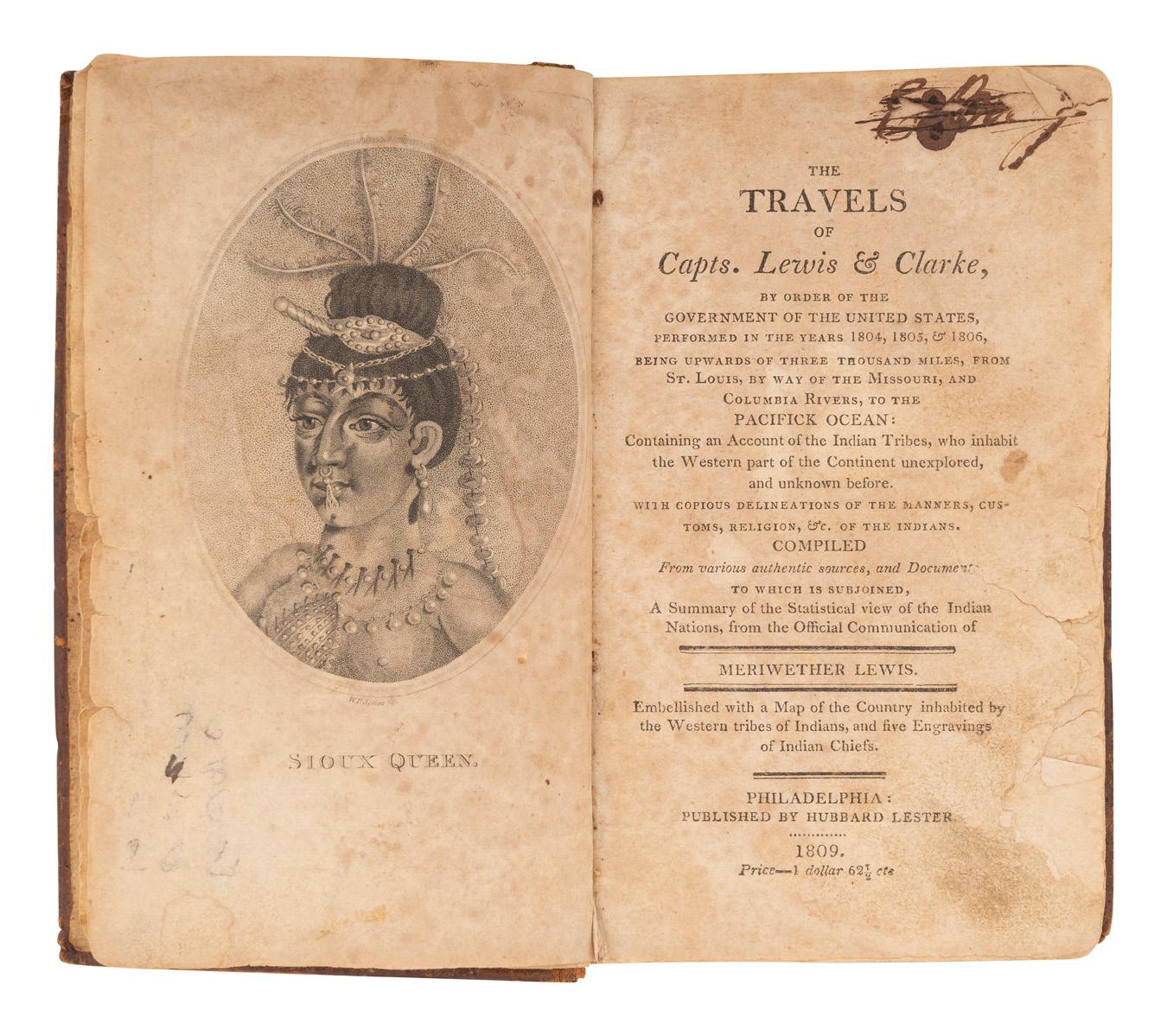
394
LOSKIEL, George Henry (1740-1814). History of the Mission of the United Brethren Among the Indians in North American. John Stockdale, London: for the Brethren’s Society for the Furtherance of the Gospel by John Stockdale, 1797.
$400 - 600
395 HARRIS, Thaddeus Mason (1768-1842). The Journal of a Tour into the Territory Northwest of the Alleghany Mountains; made in the Spring of the year 1803. Boston: Manning & Loring, 1805.
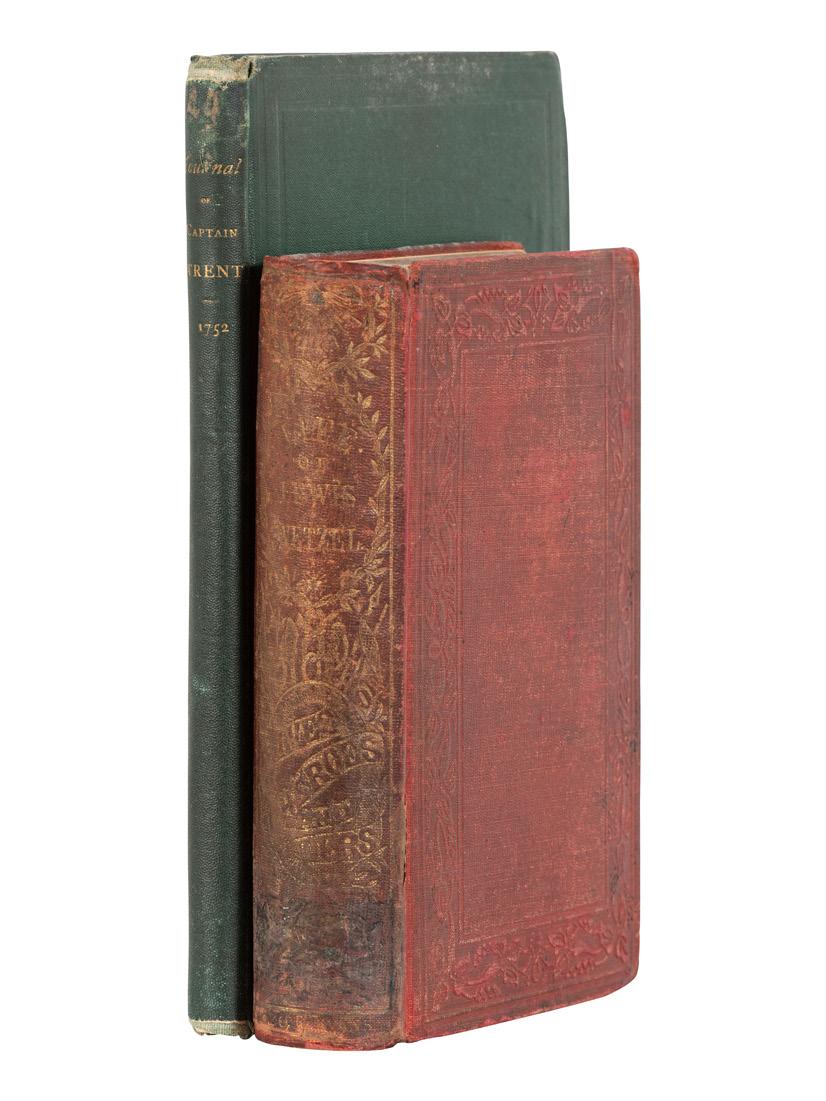


$500 - 700
396 [OHIO VALLEY FRONTIER]. HARTLEY, Cecil B. Life and Adventures of Lewis Wetzel, Virginia Ranger. Philadelphia: G. G. Evans, 1859.
$400 - 600
397
DARLINGTON, Mary Carson, editor. Fort Pitt and Letters from the Frontier Pittsburgh: J. R. Weldin & Co., 1892.
$500 - 700
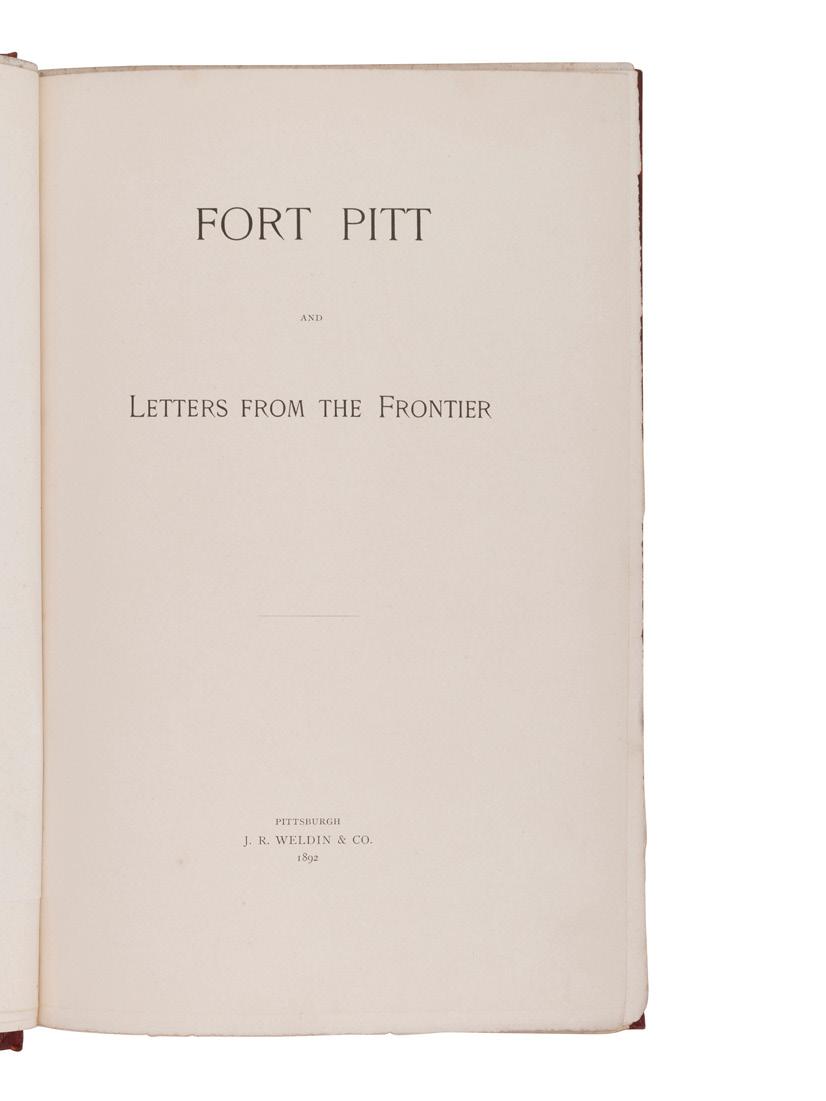
Provenance
$400
Provenance
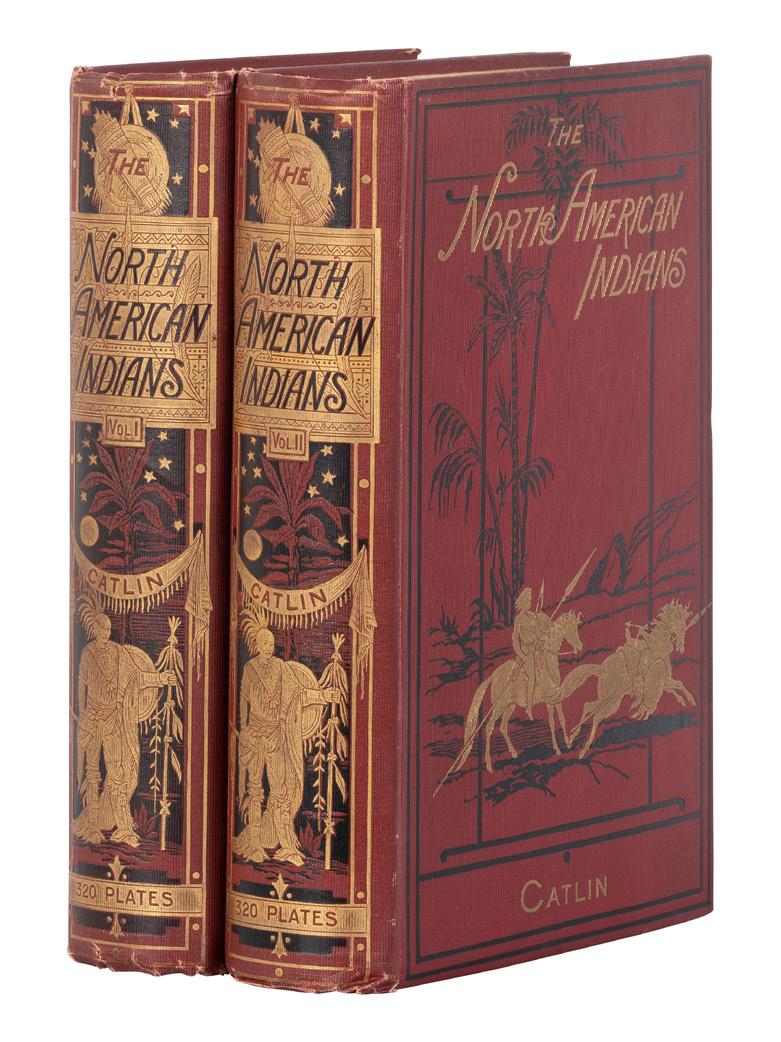


$700
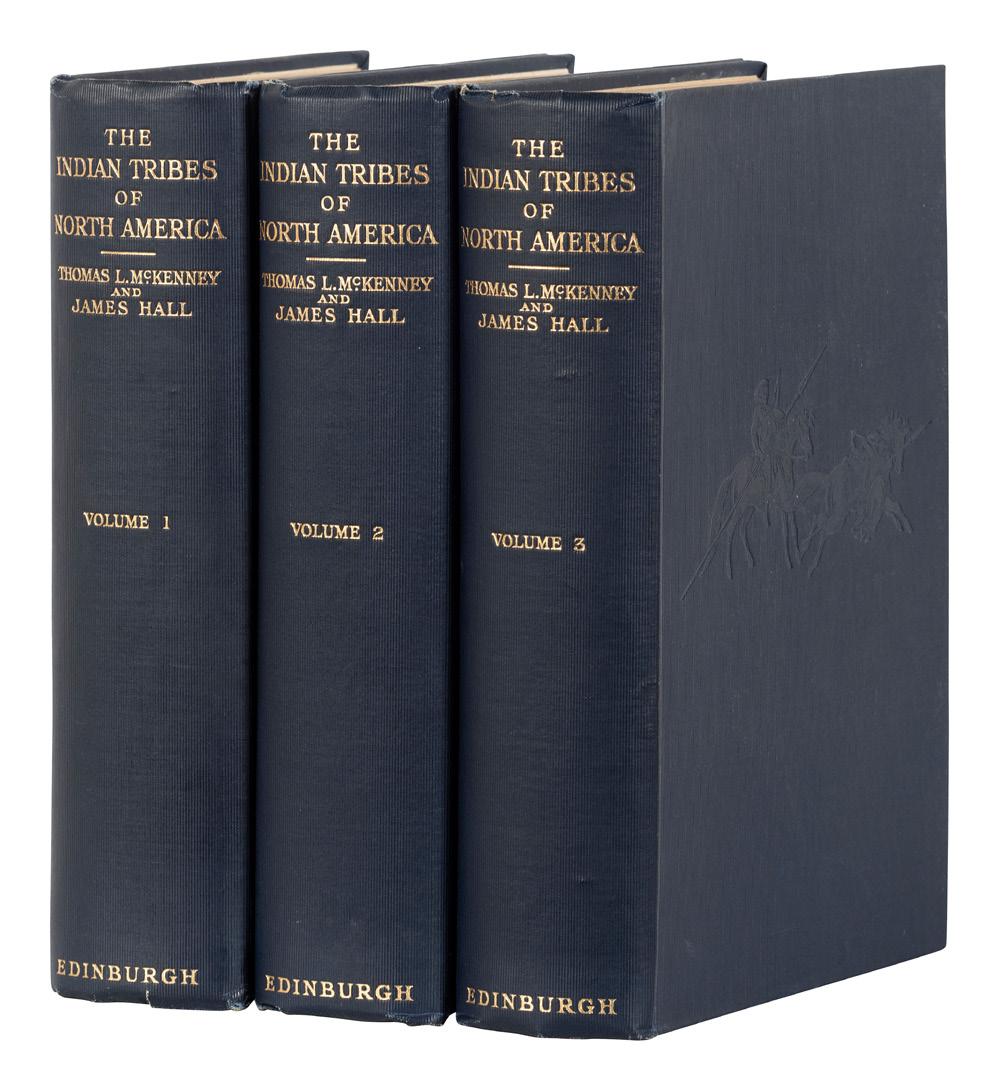

403 [McKENNEY & HALL]. A group of 3 large folio handcolored lithographs of Chocktaw, Uchee, and Seminole. 1833-1838.
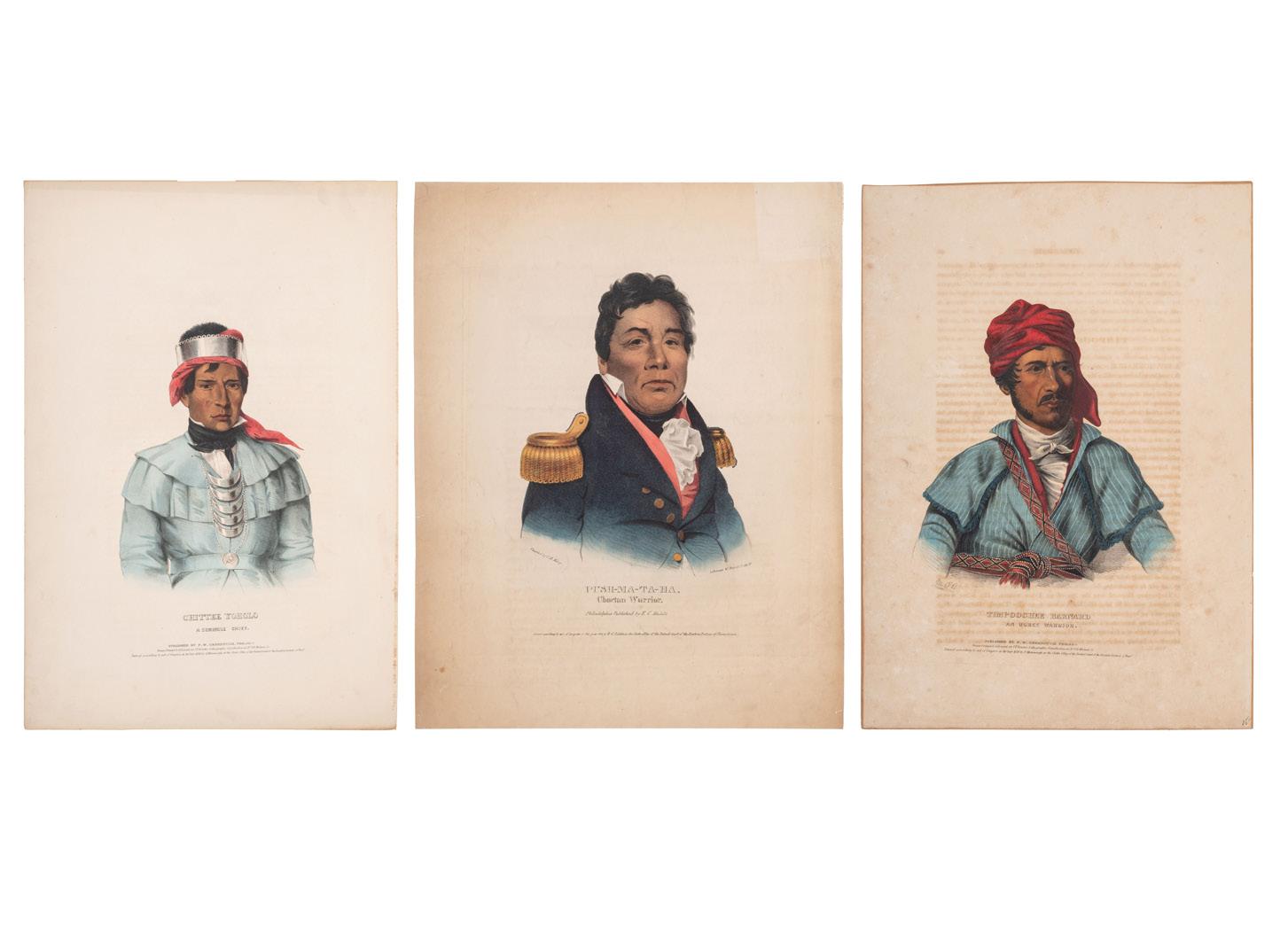

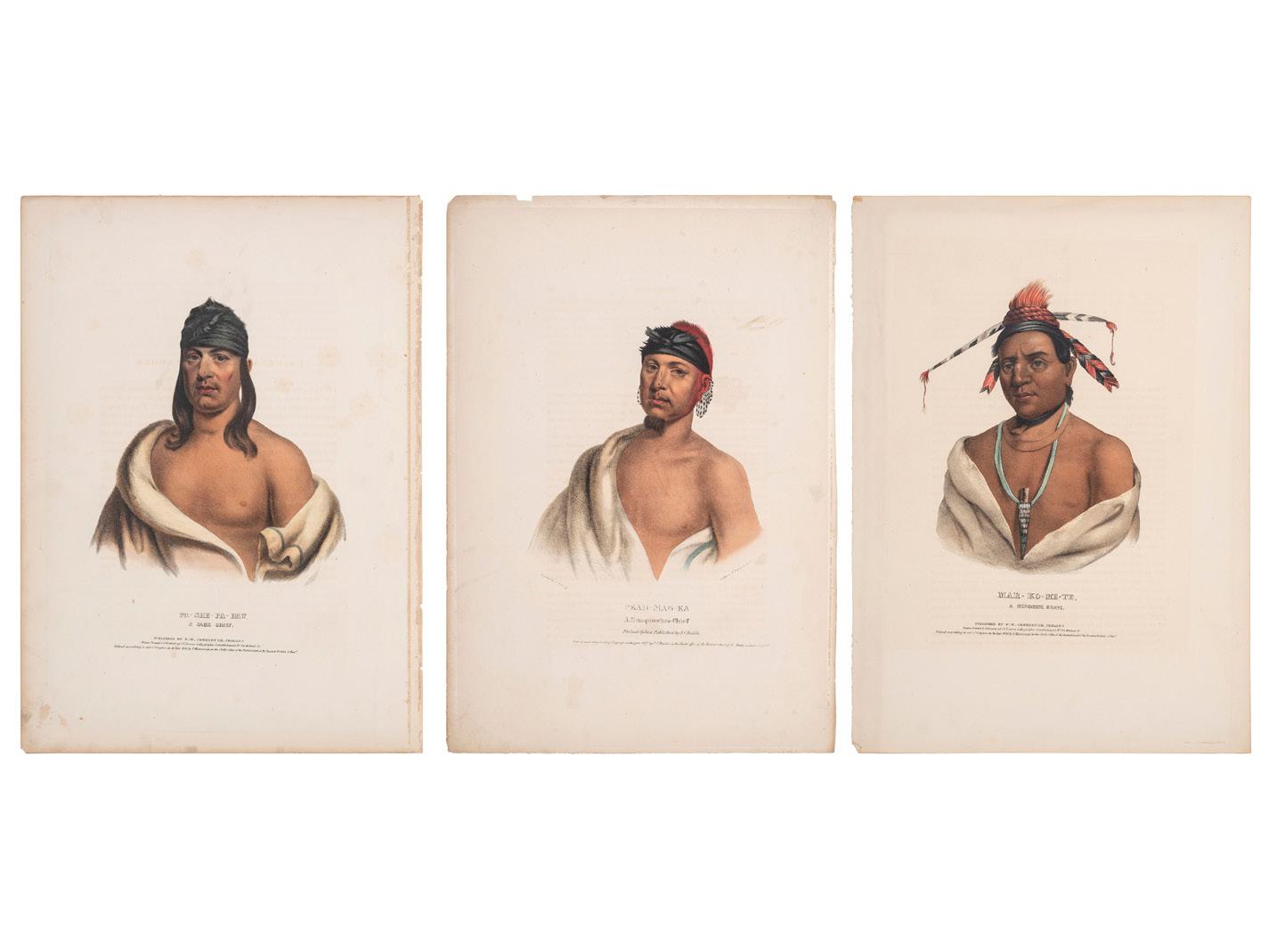
Property from the Collection of Stanley B. Slocum
404 [McKENNEY & HALL]. A group of 3 large folio hand-colored lithographs of Fox & Sac and Menominee. 1836-1838.
Property
$300 - 500
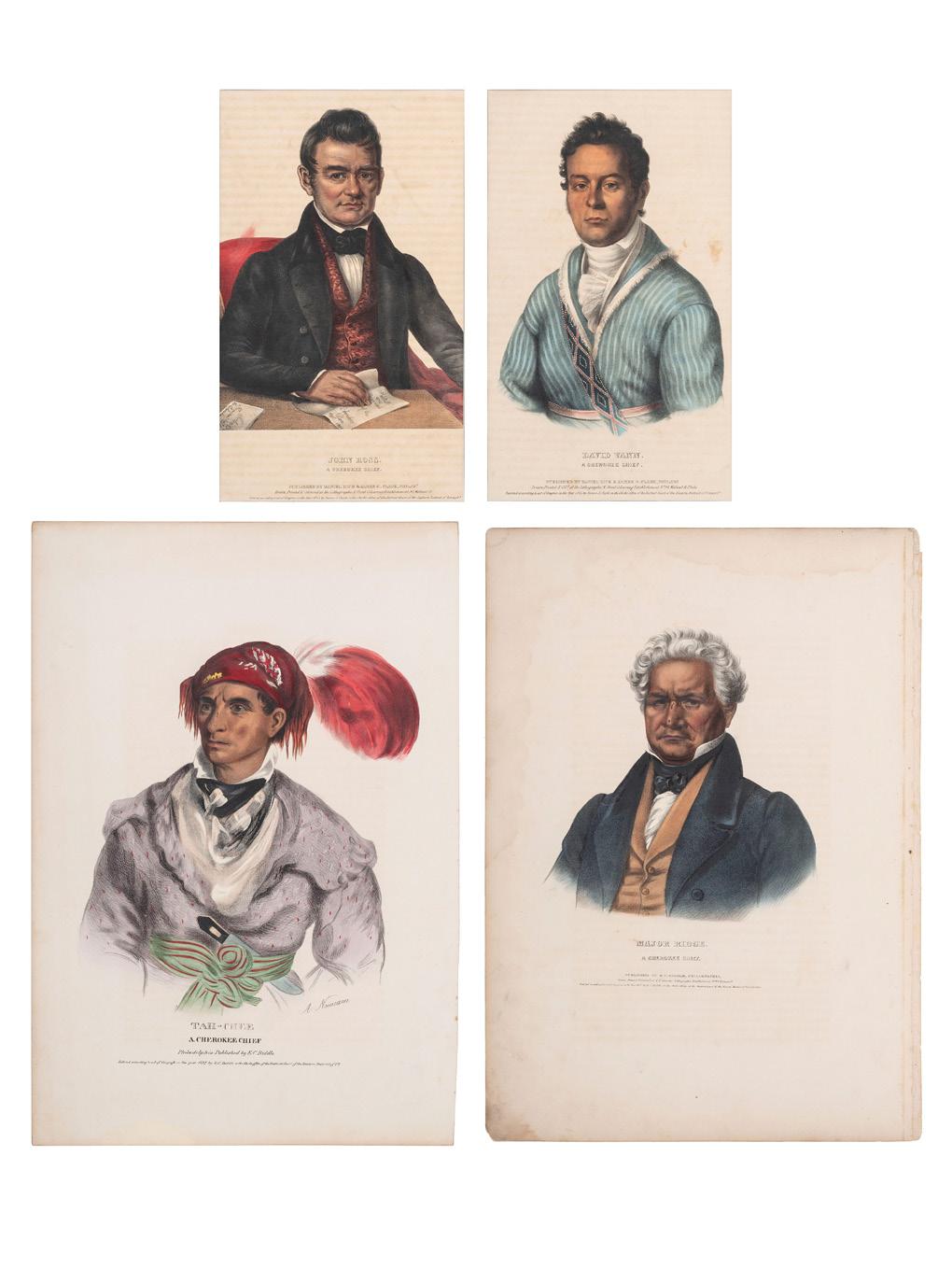
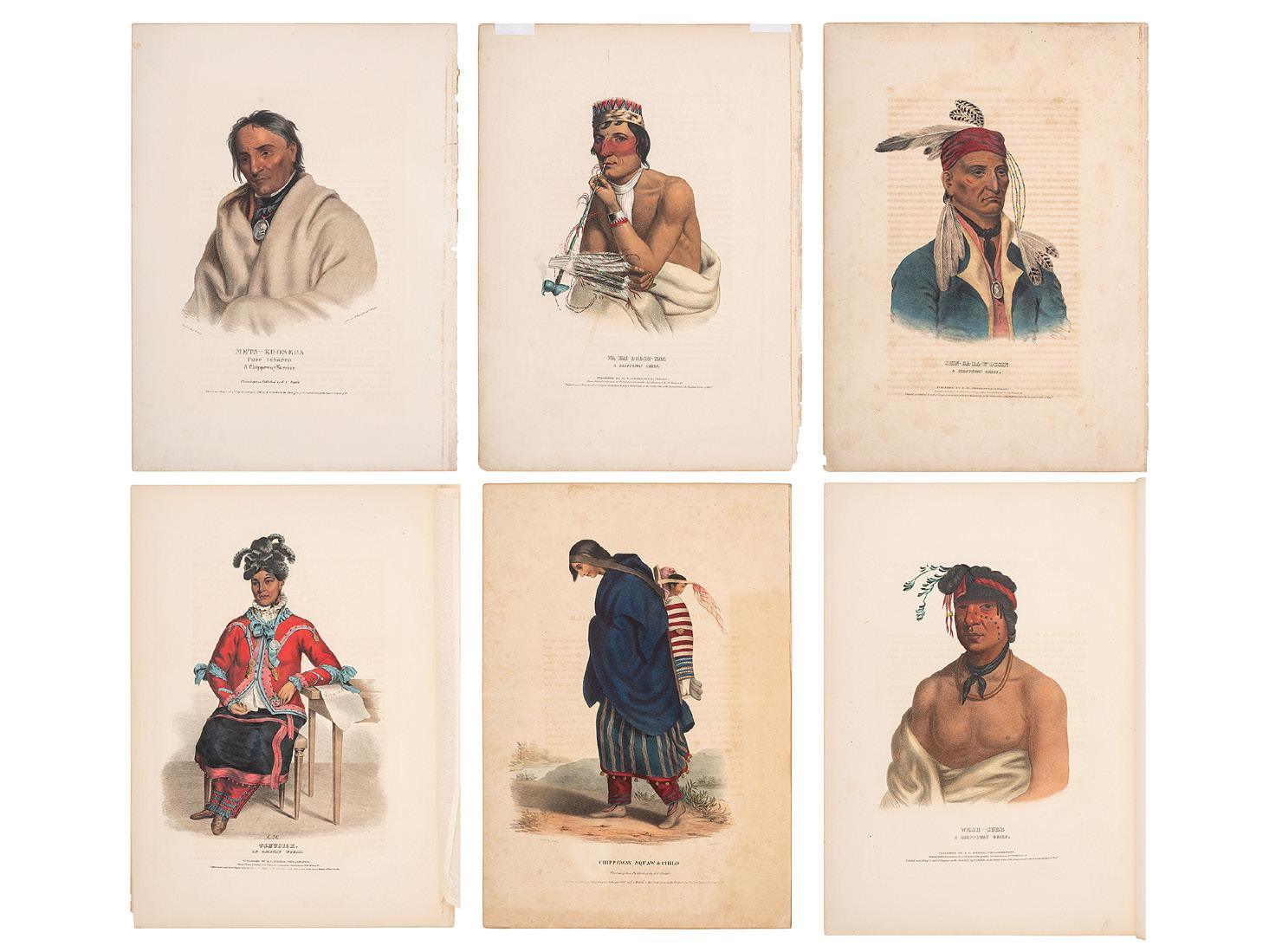

409 [McKENNEY & HALL]. A group of 3 large folio hand-colored lithographs of Sioux and Salish. 1946-1838.
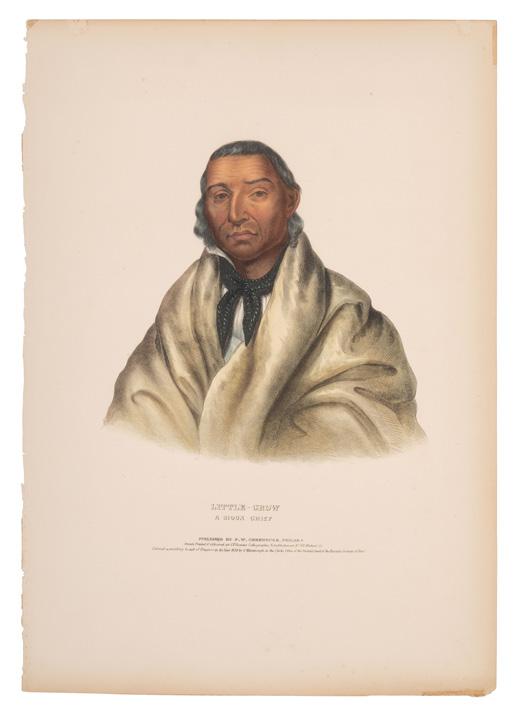

Property from the Collection of Stanley B. Slocum $400 - 600
410 [McKENNEY & HALL]. A group of 5 large folio hand-colored lithographs. 1837-1838.
Property from the Collection of Stanley B. Slocum $500 - 700
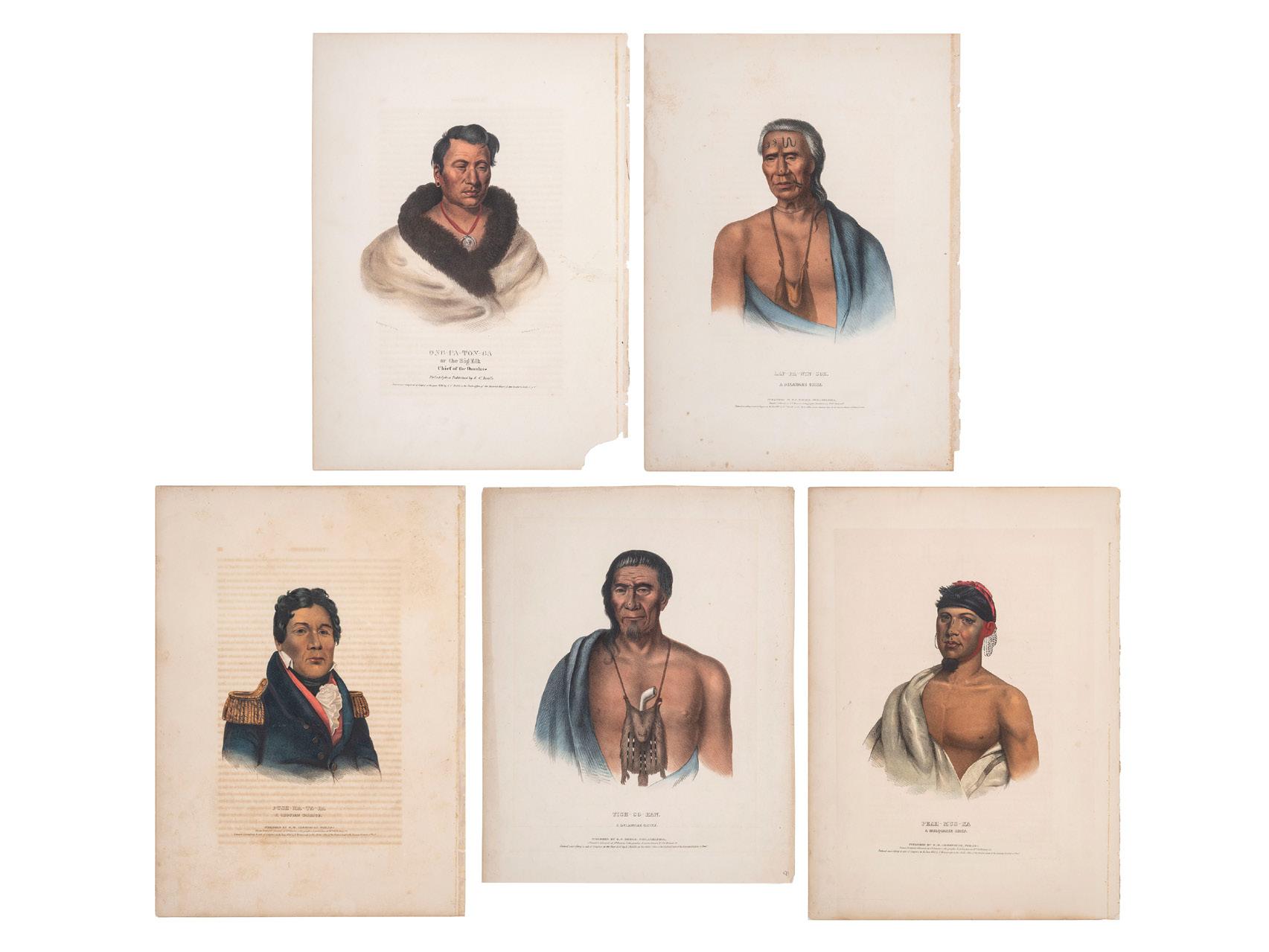


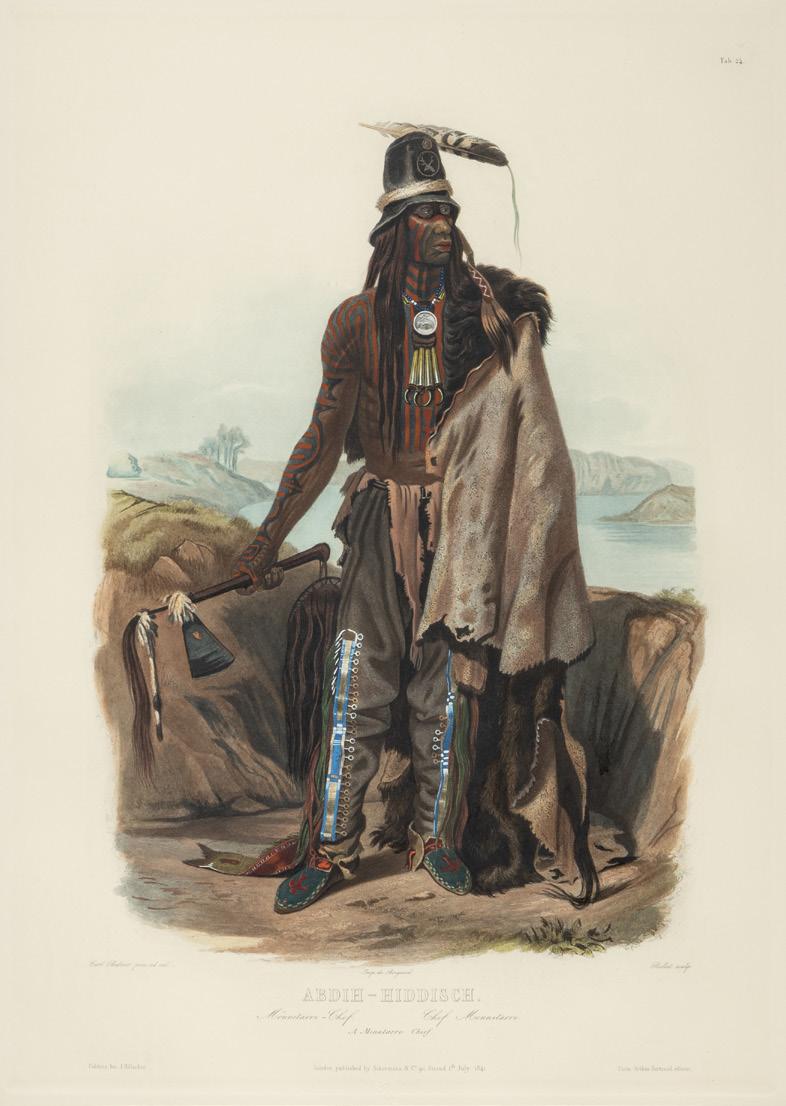

415 [NATIVE AMERICANS]. [BRADY, Mathew (1822-1896), photographer]. Stereoview of the Southern Plains delegation at the White House Conservatory, 27 March 1863. New York: E. & H.T. Anthony.
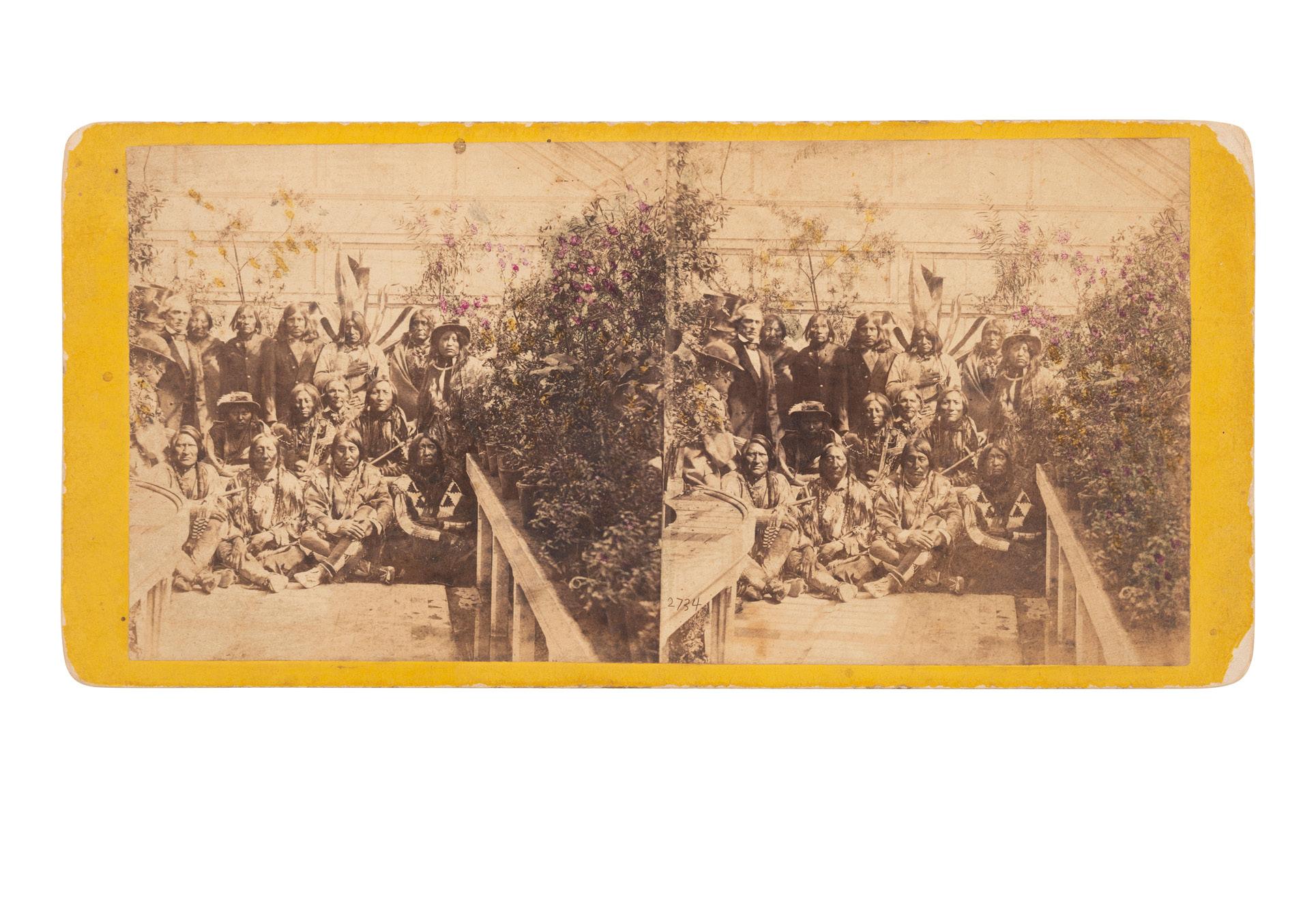
Featured here is a delegation of Southern Plains Native Americans including Standing in Water, War Bonnet, and Lean Bear of the Cheyenne (front row), Yellow Wolf of the Kiowa (front row, far right), and several unidentified Native American male and female subjects, posed with their interpreter John Smith. The summit was set in the midst of the Civil War, and the delegation met with President Lincoln, who hoped to not only secure peaceful relations with his guests, but also to persuade them not to join the Confederate forces.
$2,000 - 3,000
416 [NATIVE AMERICANS]. [SHINDLER, Antonio Zeno (1823-1899), photographer]. Ma-Za-O-Ya-Ti, Iron Nation. [Washington, DC, 1867].
$600 - 800
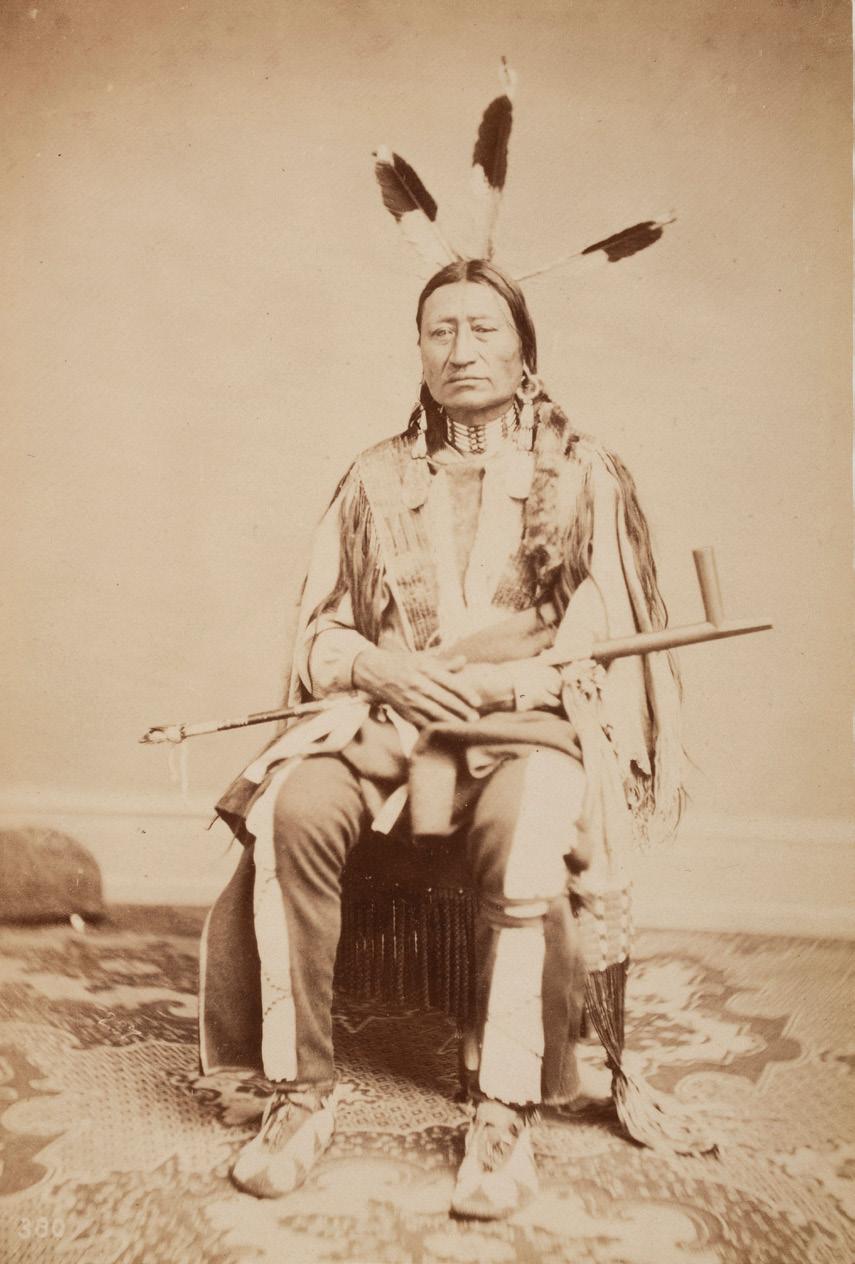
$800 - 1,200
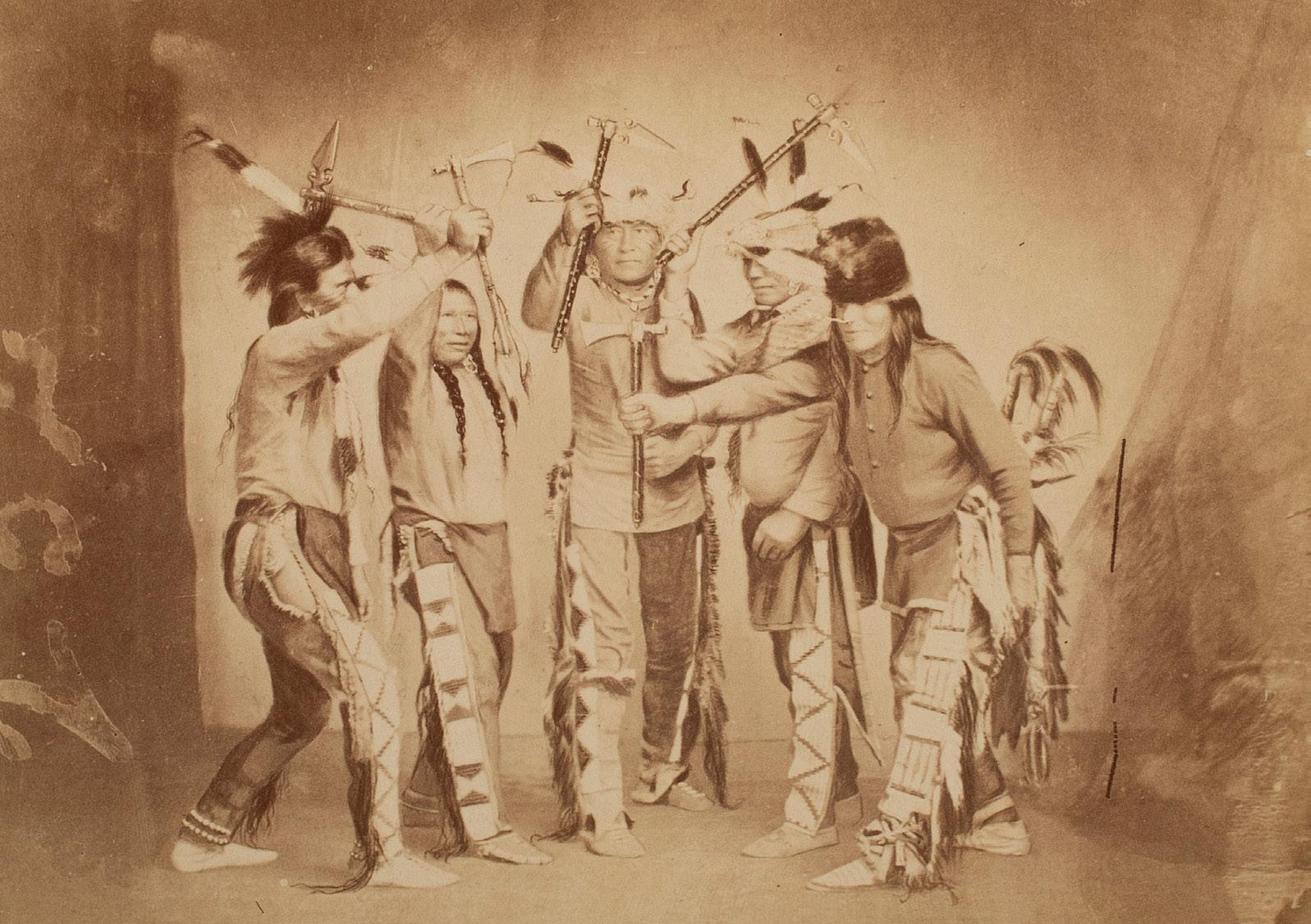
$600 - 800
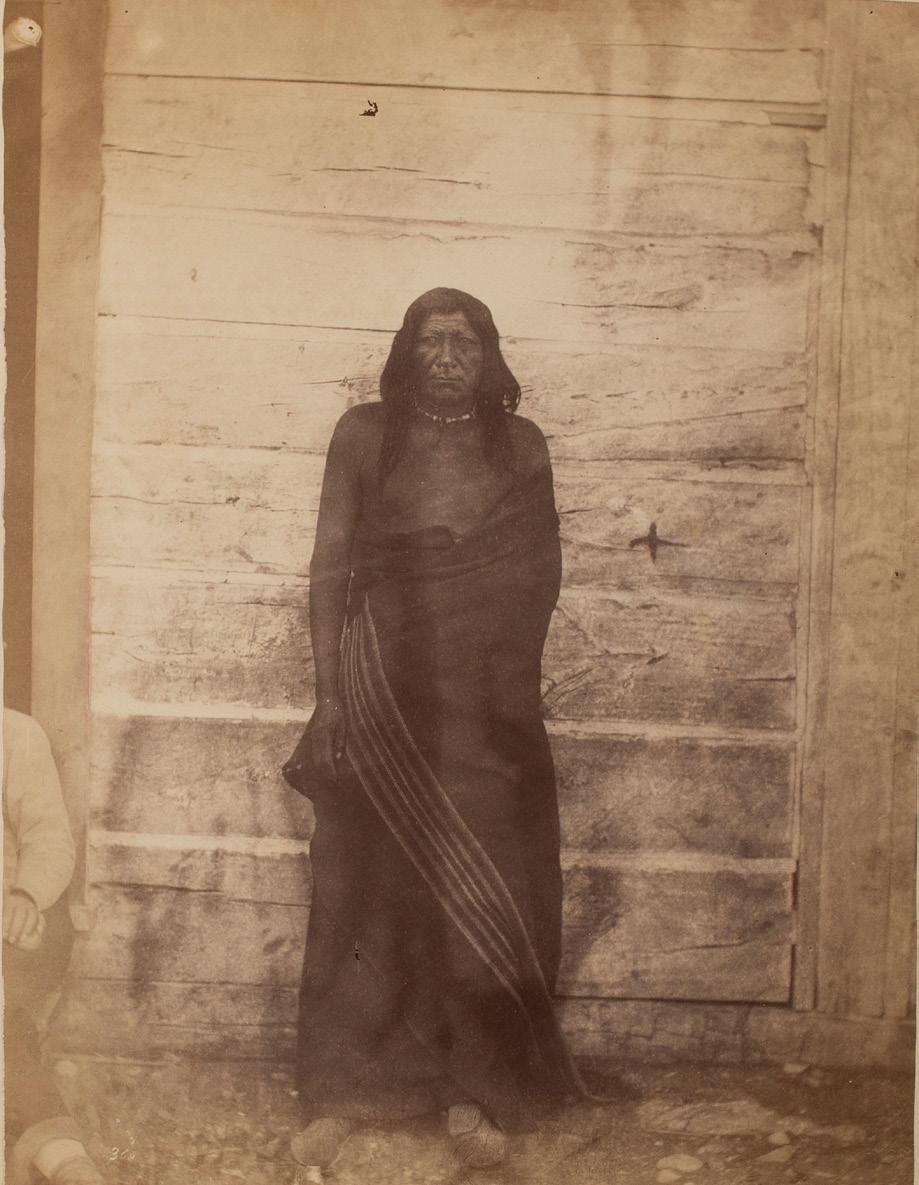
$600
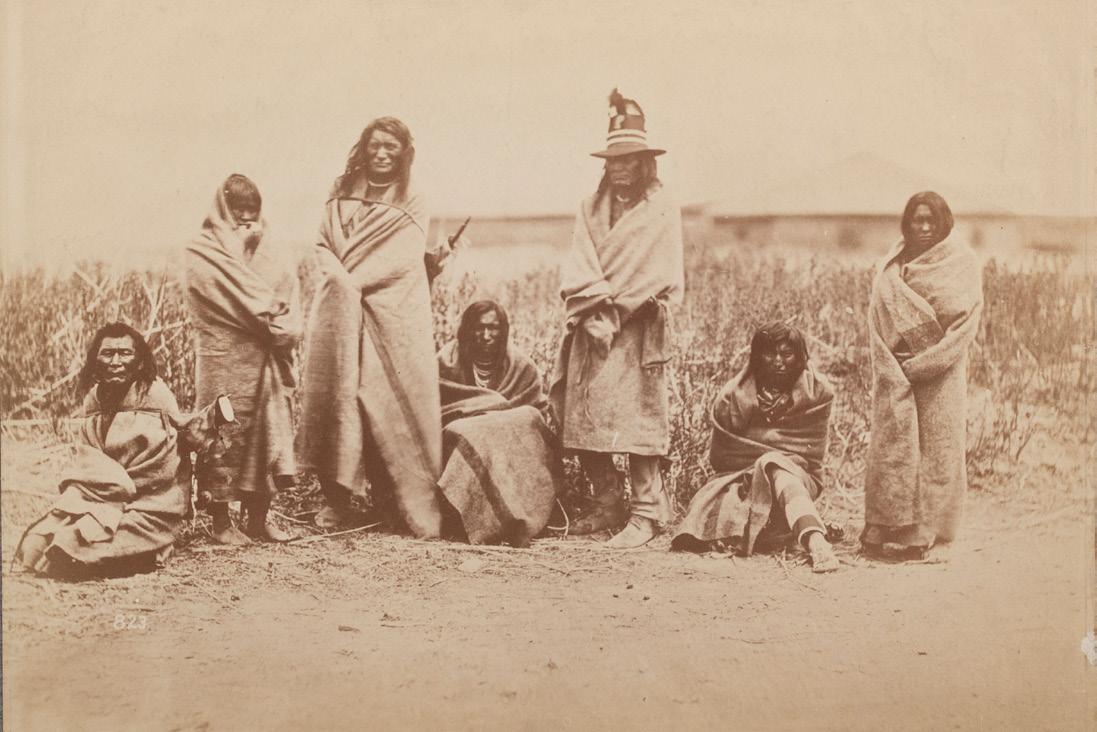
420 [NATIVE
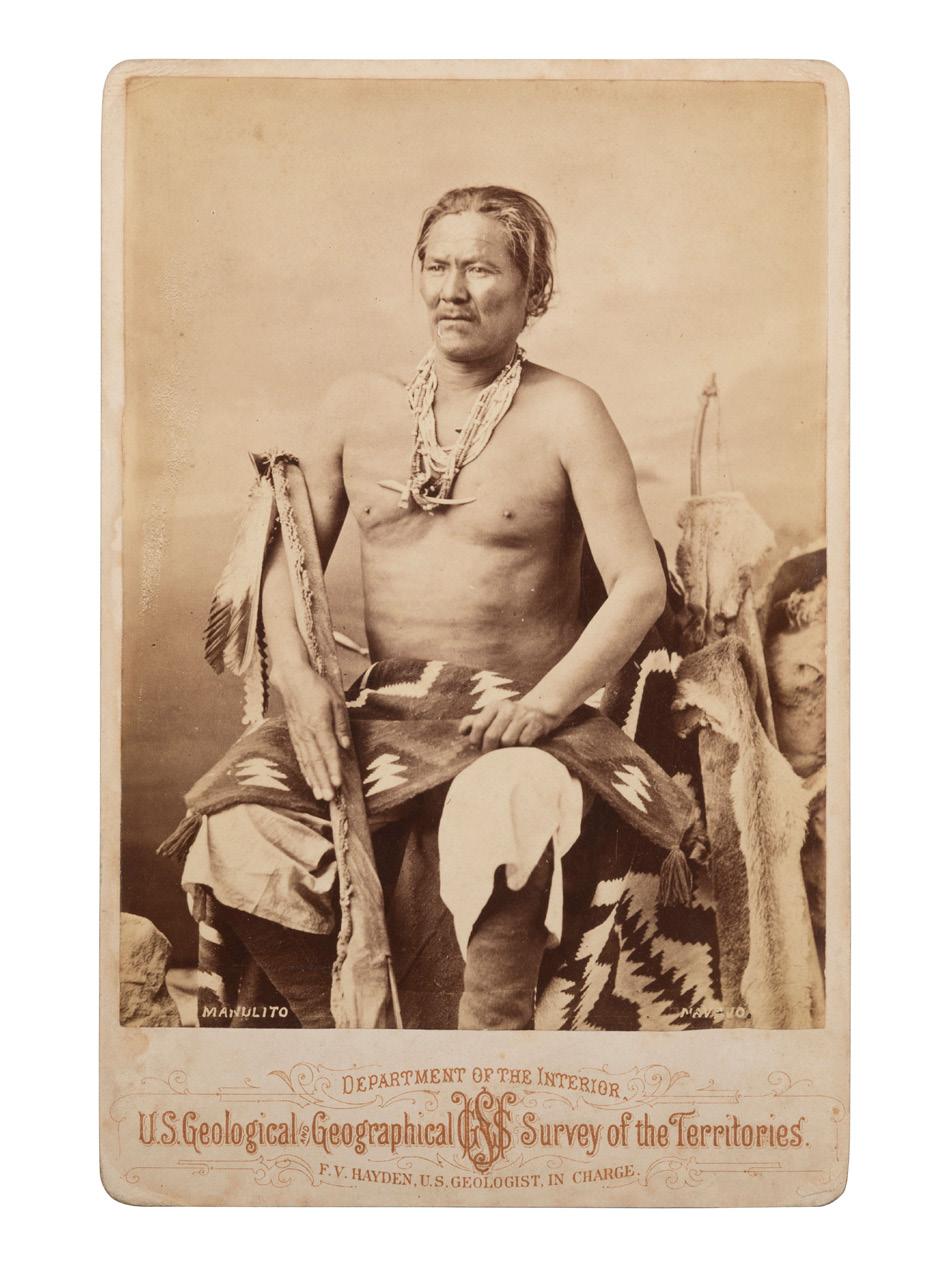
421 [NATIVE
$700
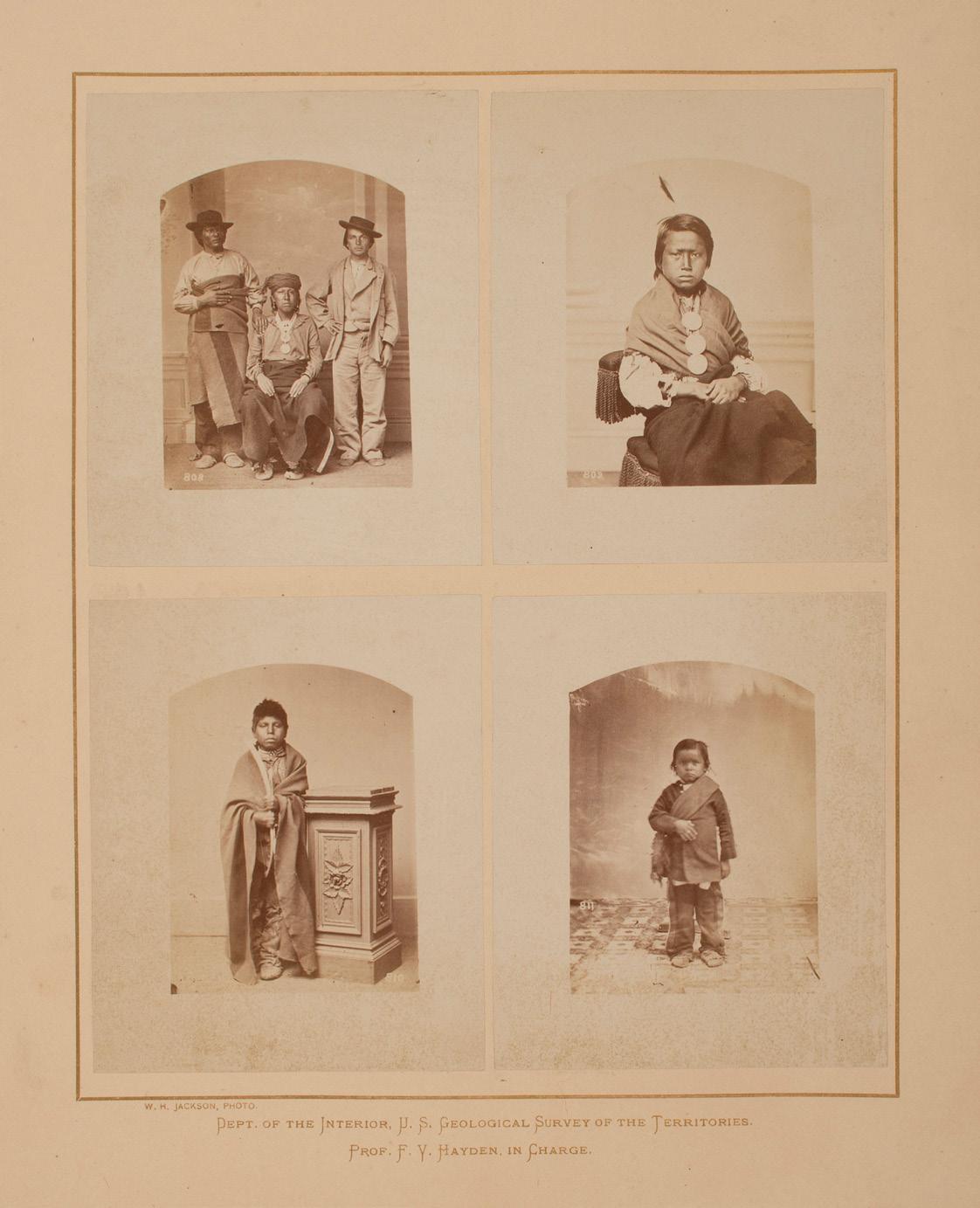
$300 - 400
$3,000 -
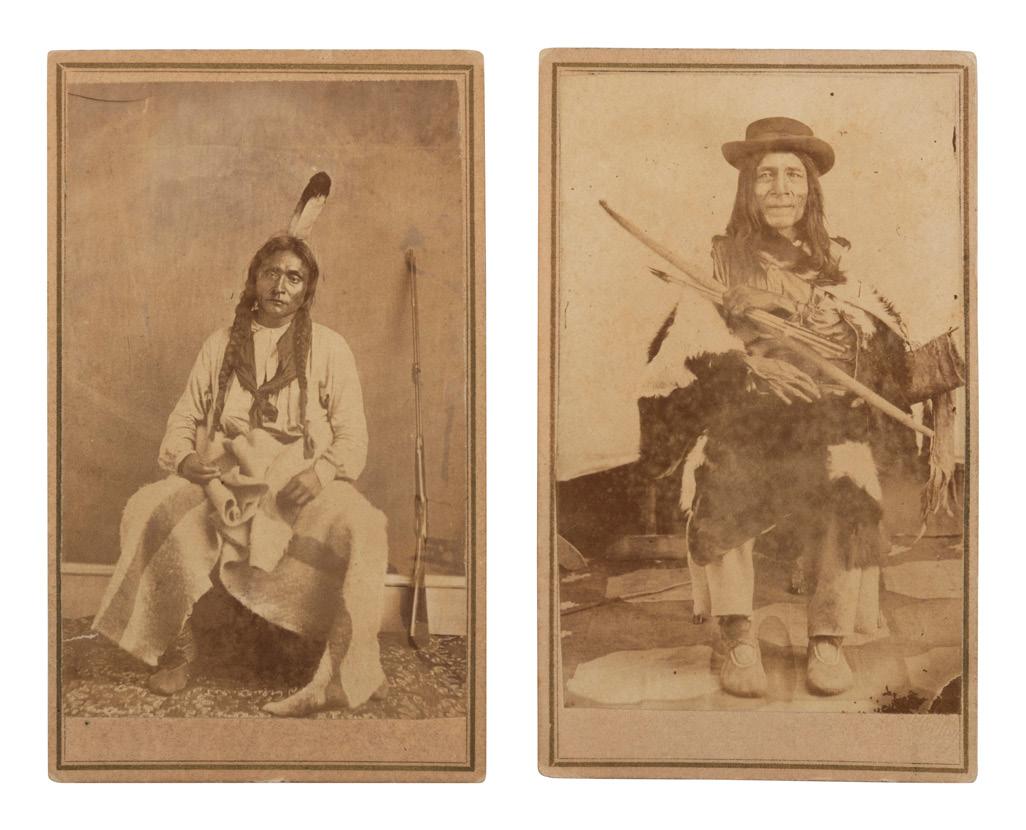
$500

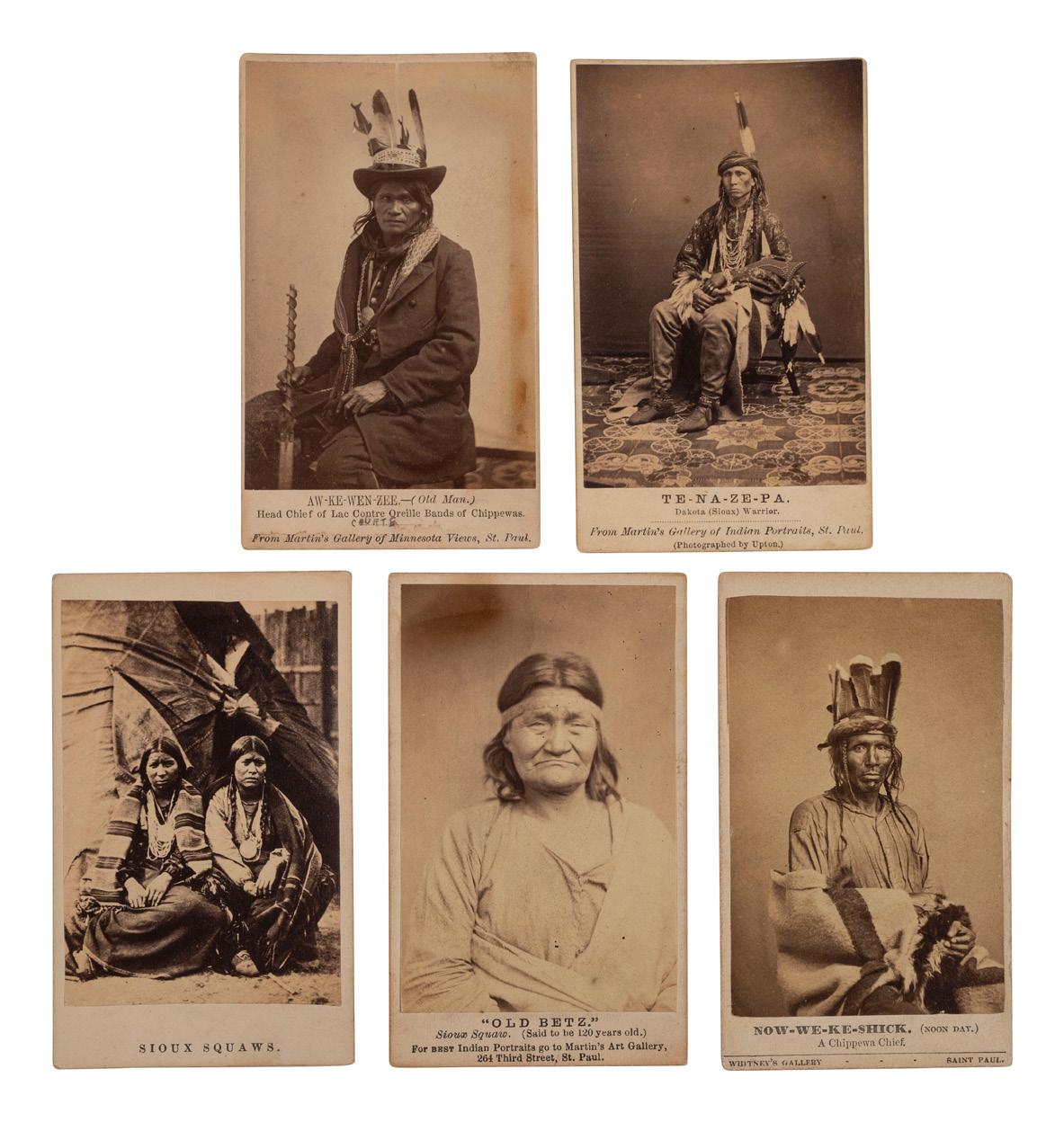
$400
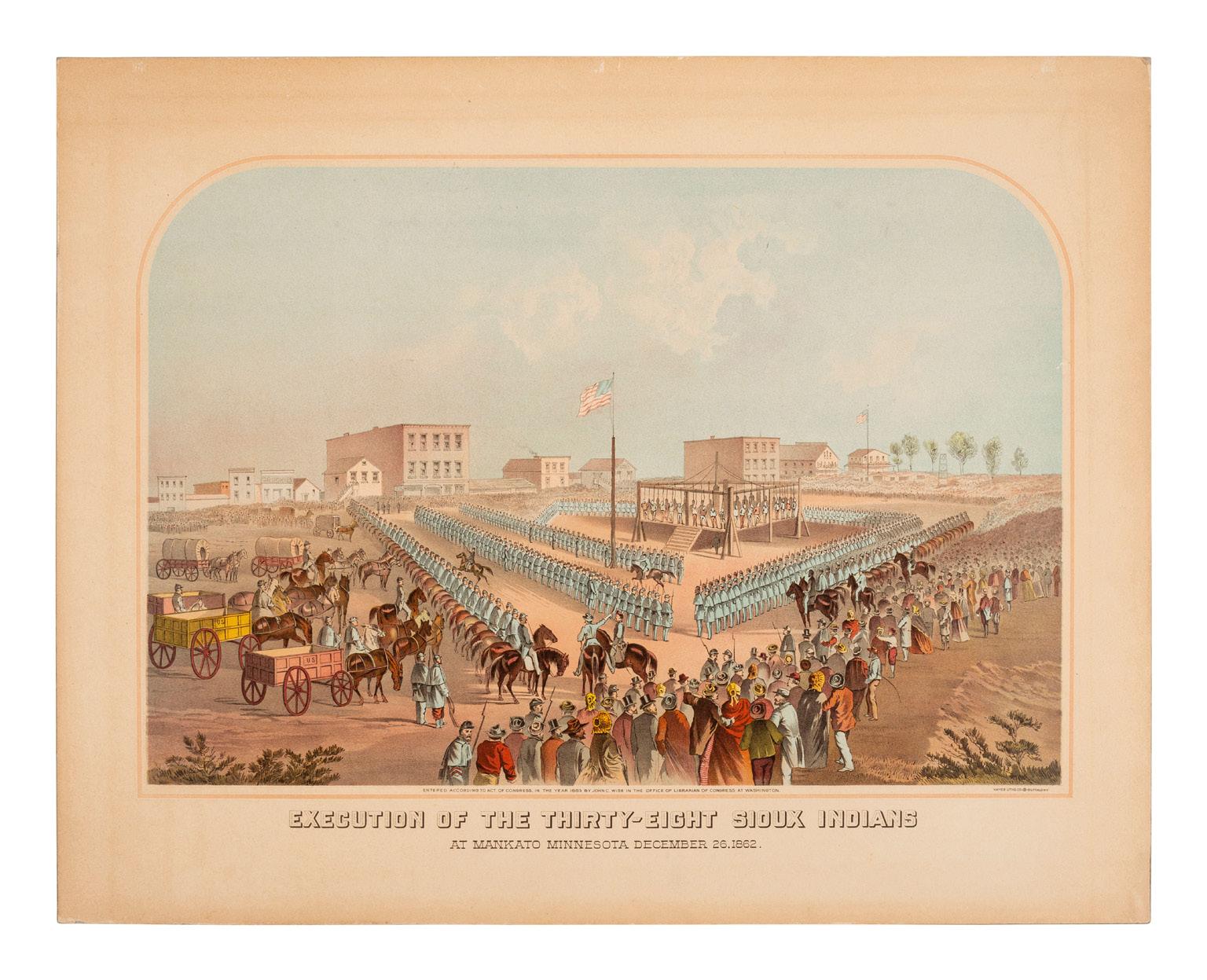
$800 - 1,200

427 [GOFF, Orlando S. (1843-1916)] - - [CIVIL WAR] - - [EARLY PHOTOGRAPHY]. Civil War letters of Orlando S. Goff, Co. K, Connecticut 10th Infantry, accompanied by post-war letters describing his entry into the trade of photography. Archive of approximately 77 letters spanning April 1864 - April 1868, comprising 47 war-date letters (April ‘64-August ‘65) and another 30 post-war letters (October 1865-November 1867, with one letter dated April 1868). Civil War correspondence constitutes in part 35 letters written by Orlando S. Goff while serving in the Connecticut 10th Infantry, 6 letters written by his brother Charles A. Goff while serving with the Connecticut 12th Infantry, another 4 letters written by other Connecticut soldiers. Post-war letters are written by Orlando Goff with the exception of the final 1868 letter which is unsigned. Letters typically 2-4pp, accomplished in legible ink and pencil, most with original covers. All letters are written to one (or more) of the daughters of Silas Buck (1818-1899), a Connecticut carriage maker to whom Orlando Goff was apprenticed before the war. Condition generally good with expected folds and toning, though several letters appear to have missing pages. Provenance: By descent through the family of Alice Buck Penfield (1845-1931) to present owner.
A HISTORICALLY SIGNIFICANT ARCHIVE WHICH INCLUDES PREVIOUSLY UNKNOWN DETAILS OF GOFF’S EARLY PHOTOGRAPHY CAREER.
Though typical of many soldiers’ letters from the field, Goff’s Civil War letters demonstrate a lesser-known facet of this famed Western photographer - that of a dedicated soldier and patriot. Goff’s first letter in the archive, dated 16 April 1864, is addressed to Miss Alice Buck, 148 Main Street Hartford, CT. The second eldest of Silas Buck’s daughters, Alice is the addressee on all but two covers and the primary recipient of Goff’s correspondence. However, many of Goff’s letters include separate sections addressed to two of Alice’s sisters, Darliski “Dollie” Buck (1843-1905) and Katherine “Katie” Buck (1847-1930). This first letter authored on a vibrantly colored “Soldier’s Farewell!” lettersheet is inscribed on the interior, “O.S. Goff’s Compliments / to his freinds [sic] Dollie, Alice & Katie / detachment of 10th Conn Vols / Camp Distribution Va / April 16th 1864.” Orlando Goff served almost the entirety of the Civil
War. HDS indicates that Goff enlisted on 9/19/1861 as an 18-year old sergeant, mustering into Co. K, Connecticut 10th Infantry, and he re-enlisted on 1/1/1864. By the time of this first letter, he was a seasoned soldier, well accustomed to the hardships of a soldier’s life.
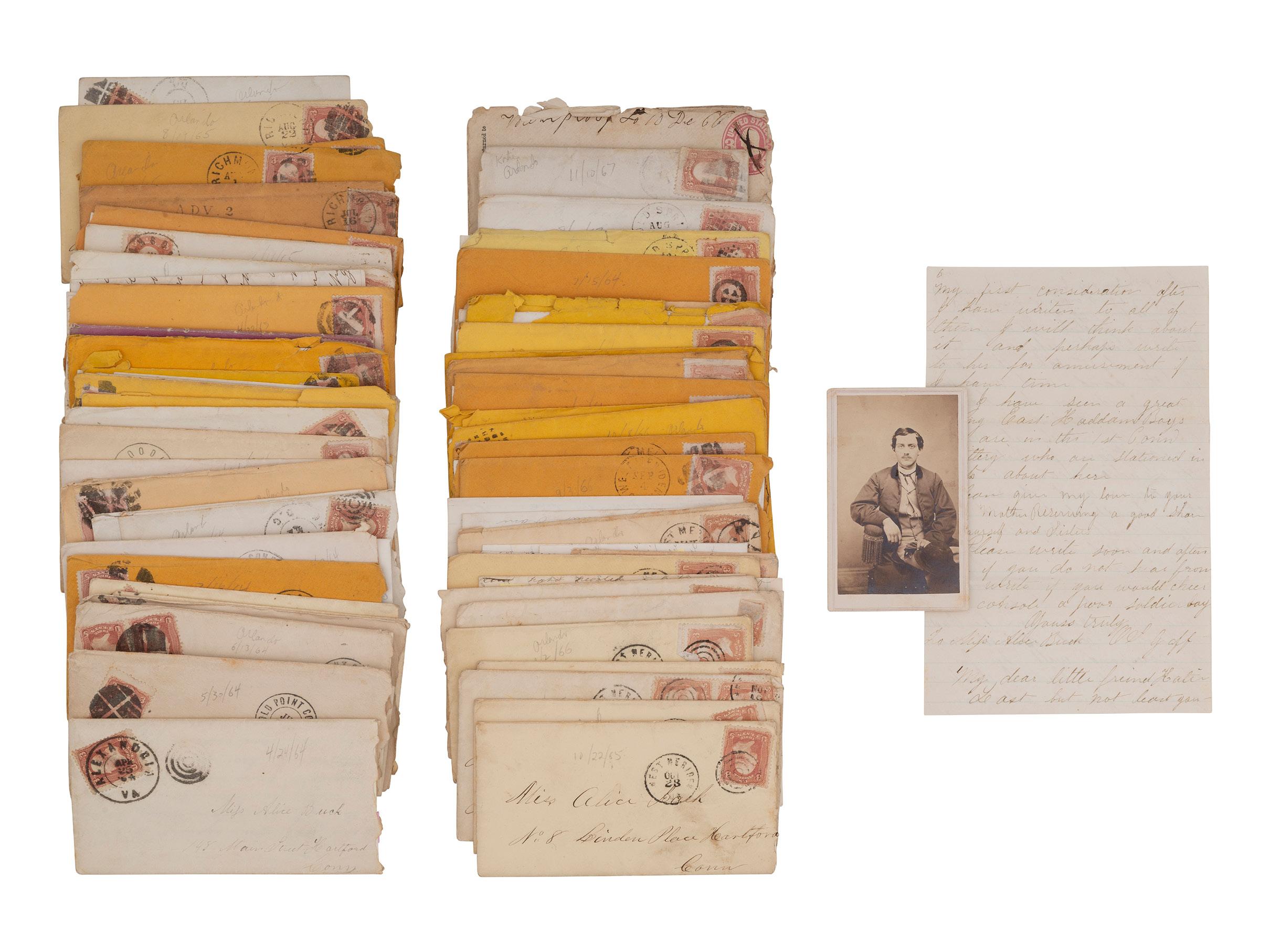
In April 1864 the 10th CT was attached to the 2nd Brigade, 1st Division, 10th Army Corps, Dept. of Virginia and North Carolina, then in May was attached to 3rd Brigade, 1st Division, 10th Army Corps. The regiment soon engaged in operations against Petersburg and Richmond. On 29 June 1864, Goff writes about being encamped on the right bank of the James River and “building fortifications for the protection of Transports and the River Navigation.” Though not directly engaged in combat operations at that time, he is not out of harm’s way. On 3 July 1864 he writes, “I am well as usual and still unhurt by the Rebel bullets that have been flying around so often lately....” Ensuing letters contain typical expressions of a Civil War soldier: missing home, longing for letters, descriptions of camp life, references to deserting Confederates, contraband, skirmishes, and occasional engagements. Writing from “Deep Bottom” on 31 July 1864 Goff characterizes the engagement as “a little brush with the Johnnies” and indicates that his regiment was “a good deal exposed to the enemy’s fire.” “Near Petersburg” on 18 September he states that it is “rather dull work lying in the trenches 3 days in succession with nothing to do....” Occasionally Goff shared his thoughts on the politics of the day, as on 12 September 1864 when he offered these thoughts on the status of African Americans: “...let all parties take hold to restore the Union in earnest and all will yet be well ... But do not build up a Negro God upon the ruins of our loved Country.”
Goff was seriously wounded on 10/13/1864 at the Battle of Darbytown Road. The next letter following his injury is dated 19 October, and was written to Alice Buck on behalf of Goff by “A friend of his.” The unidentified soldier indicates that Goff, who was recuperating at the US General Hospital Hampton Virginia, was “wounded in the Battle upon the 13th the Ball entered his right Breast coming out at the side, and passed through the right arm.” He then continued, “It did not injure the bone, as he has the use of the arm.” A letter written four days later by Orlando’s sister “L. Jane Russell” (Lucia Jane Goff Russell)
to the Buck sisters relays additional information about Orlando’s injury, and demonstrates the strong affection with which she regards her brother. “I do not think the poor boy has an enemy in the world...,” she writes.
After an extended recuperation, Goff receives a furlough and travels to New Haven in January 1865. By 27 January 1865 he is heading back to his regiment. Though his regiment participated in the Appomattox Campaign, it seems Goff’s injuries prevented him from participating. Writing from “Convalesent [sic] Camp Near Richmond” on 22 April 1865, Goff has missed the surrender of Lee’s army at Appomatox Court House where his regiment was present, but writes that soldiers are all beginning to think of going home before long and will not “sigh for more worlds to conquer...we have seen too much bloodshed to enjoy it now and we all hail with rapture the approaching dawn of peace....” Goff writes in the same letter lamenting the loss of Lincoln, of seeing General Lee in Richmond (“[he] is a fine looking man but looking rather old and care worn...”), and of the Confederate soldiers throughout Richmond who “wear their side arms and seem quite at home.” He then continues, “I cannot help feeling rather revengeful towards some of them. But after all I think it better to use them well than fight them any longer.” The final letter in the archive related to his Civil War service is dated 19 August 1865. Goff mustered out on 8/25/1865 as a 2nd lieutenant.
Goff returned to his native Connecticut after mustering out of the army. His first post-war letter in the archive, written to Alice on 22 October 1865 from West Meriden, Connecticut, demonstrates that Goff was still transitioning into civilian life, and provides the first mention of the man who would soon become his employer. Goff states that he is engaged in manual labor, and is exploring his options: “I have been hard at work all last week but don’t like it very much - too much lifting of heavy timbers for me. Don’t think I shall stick to this business long it is too hard. If I don’t make arrangements with Wheeler soon perhaps I will come to Hartford to work.” Two weeks later on 5 November 1865 Goff writes again, seemingly indicating that he has successfully made arrangements with “Wheeler.” “I have commenced to learn my business and find it as most all other mysteries prone to be rather simple after all nearly all depends on good judgement and care. I haven’t made much progress yet except to get my hands stained up with acids but think I shall like it very much.” On 26 November 1865, Goff indicates he is “learning fast as possible and can take a phg[?] that would delight the uninitiated....” Though Goff does not describe it as such, it appears he is learning the process of wet plate photography and has embarked upon an apprenticeship with photographer Frank W. Wheeler (1837-1923) of West Meriden, Connecticut.
Wheeler, the son of a mechanic, was a machinist by trade. According to his obituary, he came to Meriden in the late 1850s to work for the firearms manufacturer Parker, Snow, Brooks & Co., then “becoming interested in the art of portrait photography...became one of the pioneers in that field.” A 1922 history of Meriden indicates that Wheeler worked for Meriden manufacturers “who used to photo-graph their new designs in place of having their salesmen carry samples.” The 1866 Connecticut Business Directory (page 136) identifies Frank Wheeler as a photographer in Meriden, indicating that he was well-established in the field by the time that Goff embarked on his photographic apprenticeship. Newspaper advertisements from the Meriden Daily Republican herald “Mr. Frank Wheeler’s photographic gallery” (27 September 1869), noting that his “long experience in photographing, together with his merit as an artist, has won for him an enviable reputation among photographers...” (28 June 1870). Backmarks attributed to Wheeler include “Frank Wheeler” and “F. Wheeler” of West Meriden, as well as “Wheeler” of Cold Spring, New York, and “F.W. Wheeler” of Richford, Vermont.
On 28 January 1866 Goff describes another new process he is learning: “we have been busy lately on some porcelain pictures and have had very good success. It is quite an improvement as I presume you are aware it is a new thing down here in rustic Meriden....” Then on March 4 he writes, “I have been very busy and like my new business first rate.” Later that month Goff shares that Wheeler has opened a new photography studio: “I feel a little blue sometimes but have too much employment to have it last long. Wheeler has gone now to Cold Spring, NY and has a Photo Room there in operation about the middle of next month I am to change off with him and shall be father away from Home more than ever.” Goff also notes in May 1866 that Wheeler “has been to Deep River and made some large views of the Ships Yard and has gone back to New York again, he has sent for me to come out [to Cold Spring] then friday [sic] night so you see I am off ... I think sometimes that I am doomed to be a wanderer on the face of the earth but for what particular sin I can’t imagine....”
The remaining letters feature in large part discussions of life, family, and to some extent discussion of Wheeler. Both Goff and Wheeler are back and forth to Cold Spring, with Goff operating the photography studio in Meriden when Wheeler is in Cold Spring and vice versa. As 1867 progresses, Goff’s letters are increasingly sent from Cold Spring with Goff describing life there, his bouts of loneliness when work is slow, and his leisure pursuits and activities including being a part of the Sons of Temperance organization. By the summer of 1867 as more people venture “up the River” to Cold Spring Goff finds
himself at last enjoying his time there and feeling at home. The final letter in the archive dated 10 November 1867 includes sections written by both Katie Buck and Goff to the other Buck sisters. Goff is in Hartford visiting and expresses his apologies for not writing more often: “Did you begin to think I had been lost in the wilderness and begin to congratulate yourselves on being rid of an unprofitable investment? I am sorry to disappoint you. I am almost invincible - have more lives than the celebrated cat.”
Goff’s life would indeed seem to encompass multiple iterations, as he soon ventured westward and embarked upon a legendary career. The letters offered here demonstrate Goff’s immediate and unabashed enthusiasm for the art of photography, and paint a fascinating portrait of a young man who continually longed for home yet forged a life on the American frontier. More importantly, the post-war correspondence identifies for the first time the specific timeframe in which Goff began to learn the trade of photography - a date roughly two years earlier than previously assumed based on the limited documentary evidence available - and reveals from whom he learned the art of photography. Given that institutional collections are nearly void of personal papers and business records related to Goff and his work, this archive unquestionably represents a significant historical collection.
[With:] CDV, seated portrait view of Orlando S. Goff, ca 1866-1867. Imprint of “Wheeler / Photographer / Cold Spring, N.Y.” Inscribed “I send you this but do not like it very well myself. O.S. Goff.” Image appears to be previously unrecorded, and may be the earliest known image of Goff. - - Tintype of unidentified soldier, possibly Charles A. Goff, ca 1864.
$5,000 - 7,000
429 [NATIVE AMERICANS]. GOFF, O.S., photographer. A group of 2 cabinet cards of Chief Gall and Low Dog. Bismarck, Dakota Territory.

Property from the Collection of Stanley B. Slocum
$600 - 800
428 [NATIVE AMERICANS]. GOFF, O.S., photographer. A group of 2 cabinet cards of Sitting Bull and his camp. Bismarck, Dakota Territory.
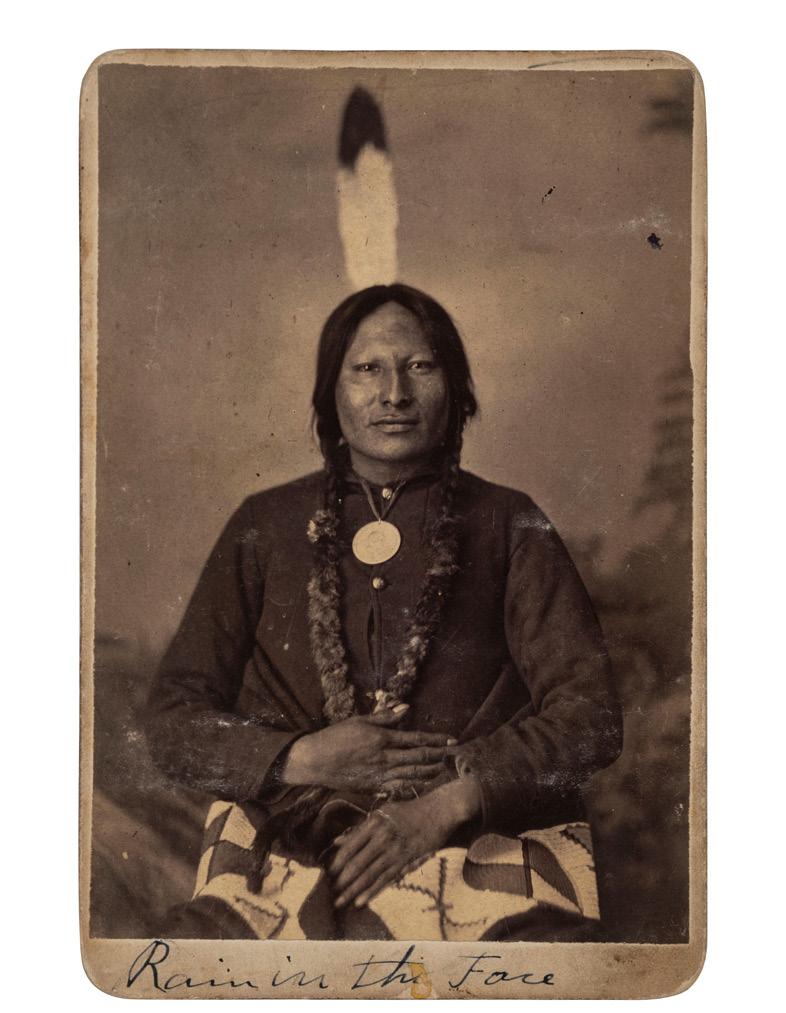


Property from the Collection of Stanley B. Slocum
$600 - 800
430 [NATIVE AMERICANS]. GOFF, O.S. (1843-1916), photographer.
Cabinet card portrait of Rain-in-the-Face. Bismarck, Dakota Territory.
Property from the Collection of Stanley B. Slocum
$400 - 600
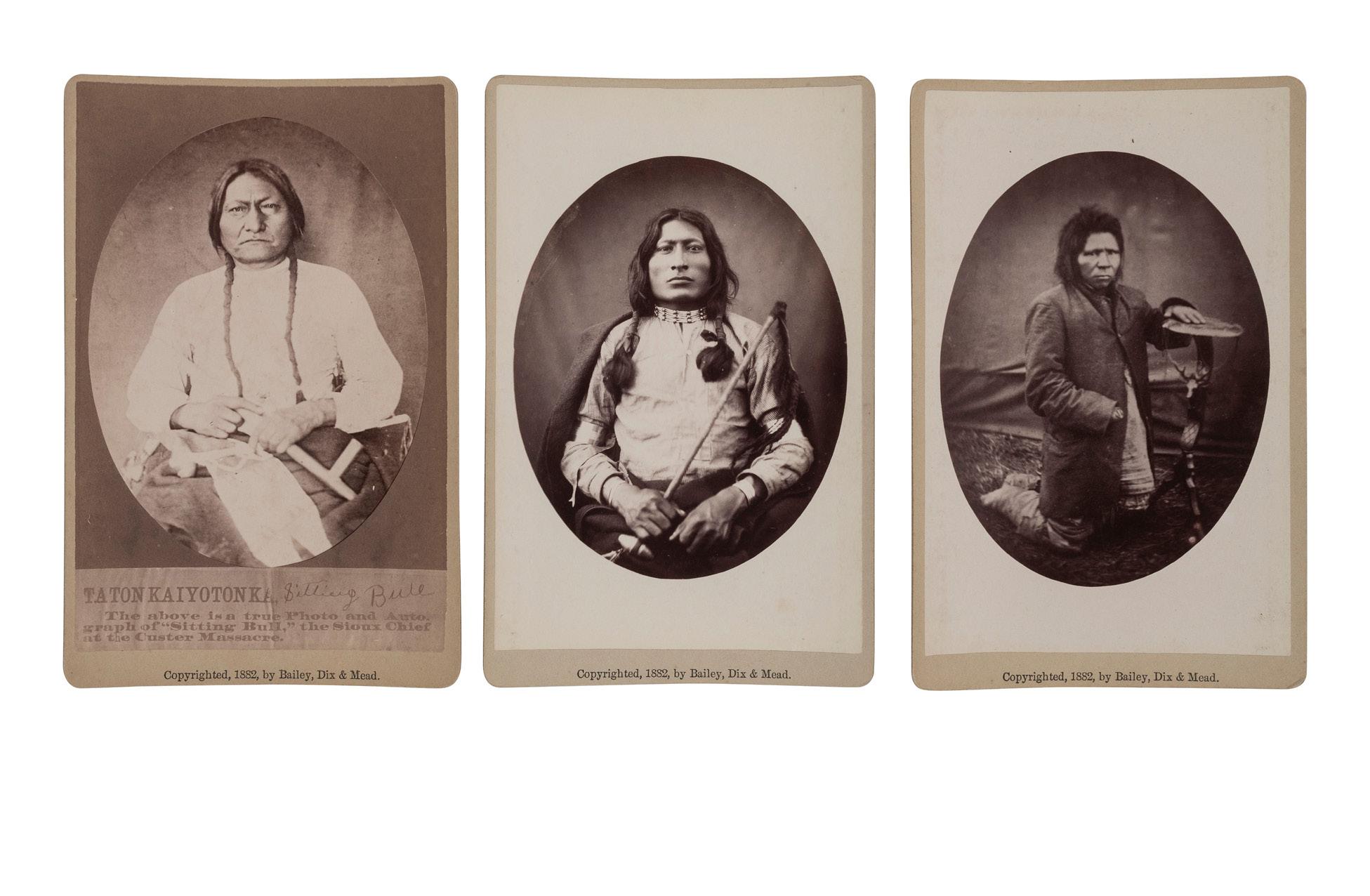
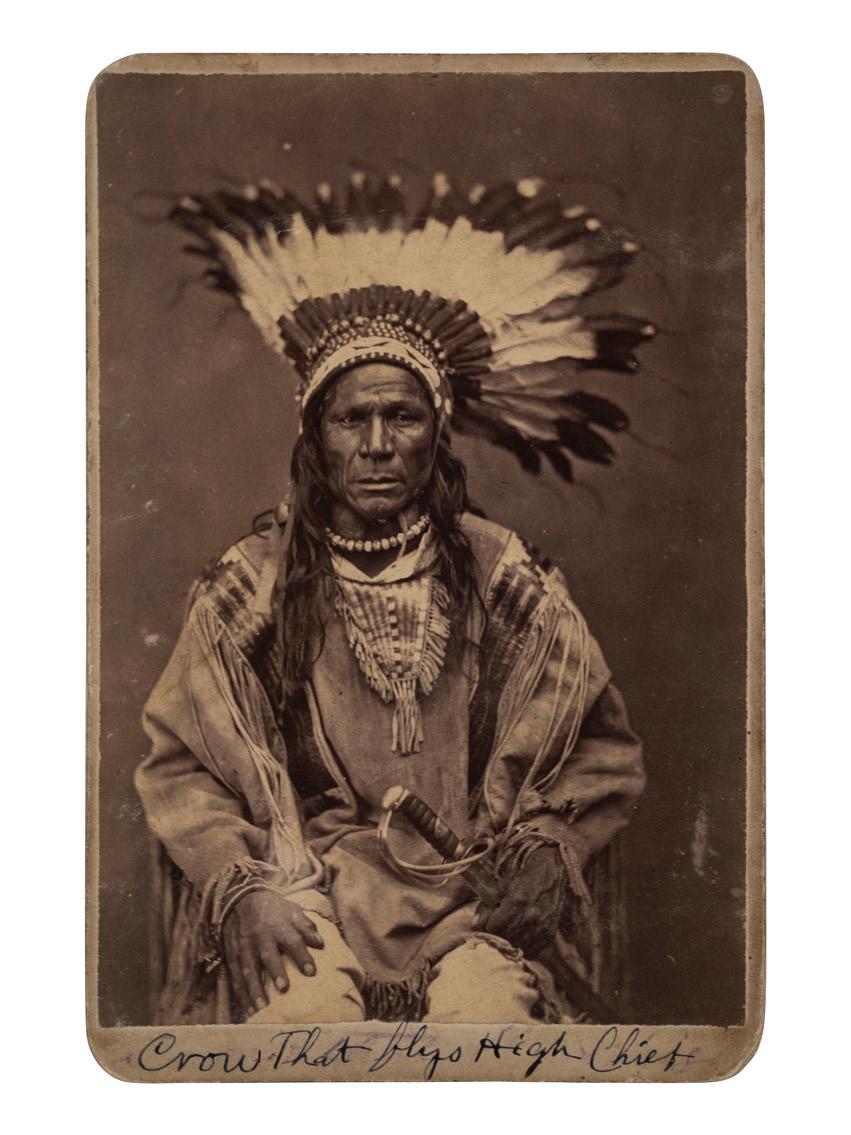
$1,000
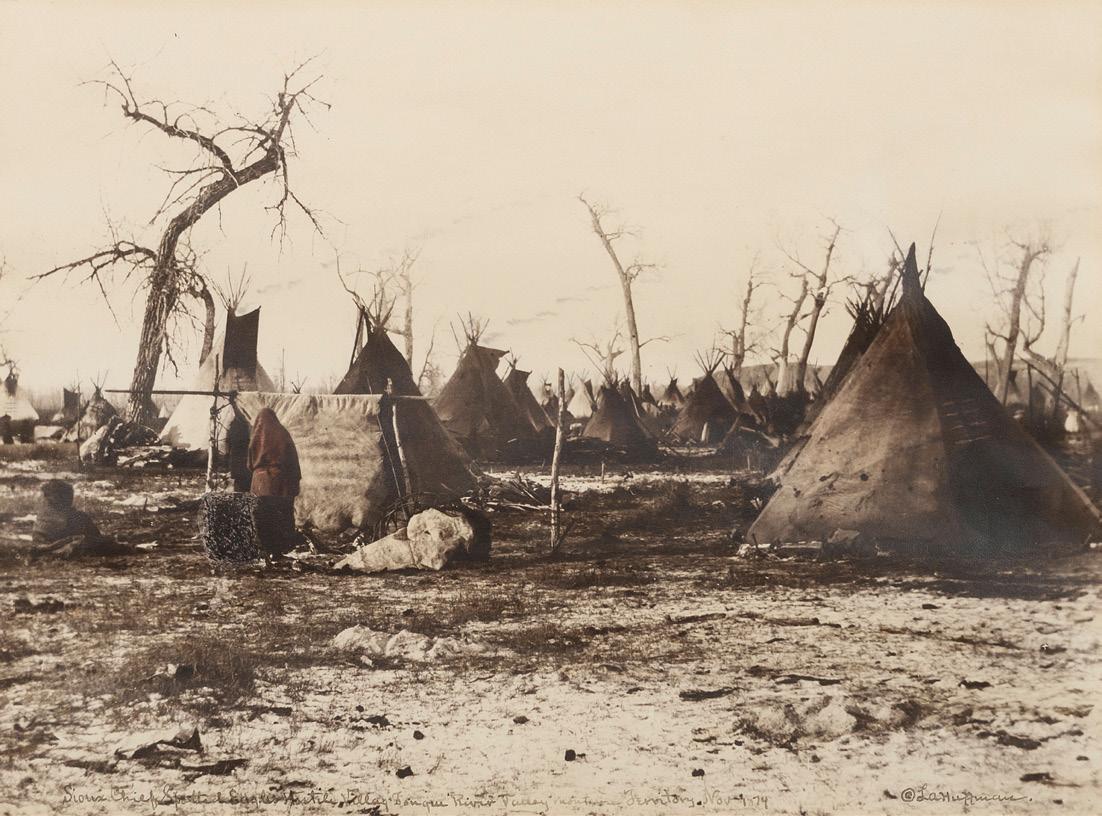
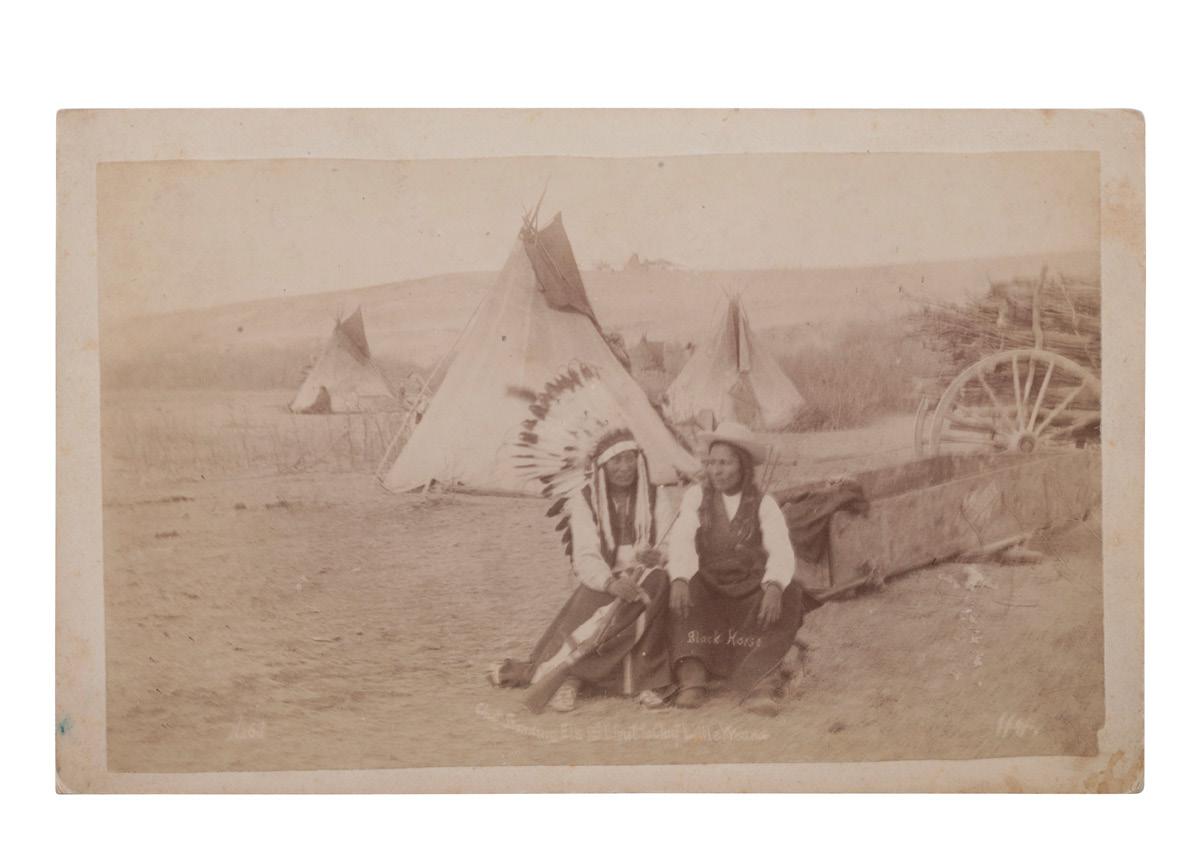
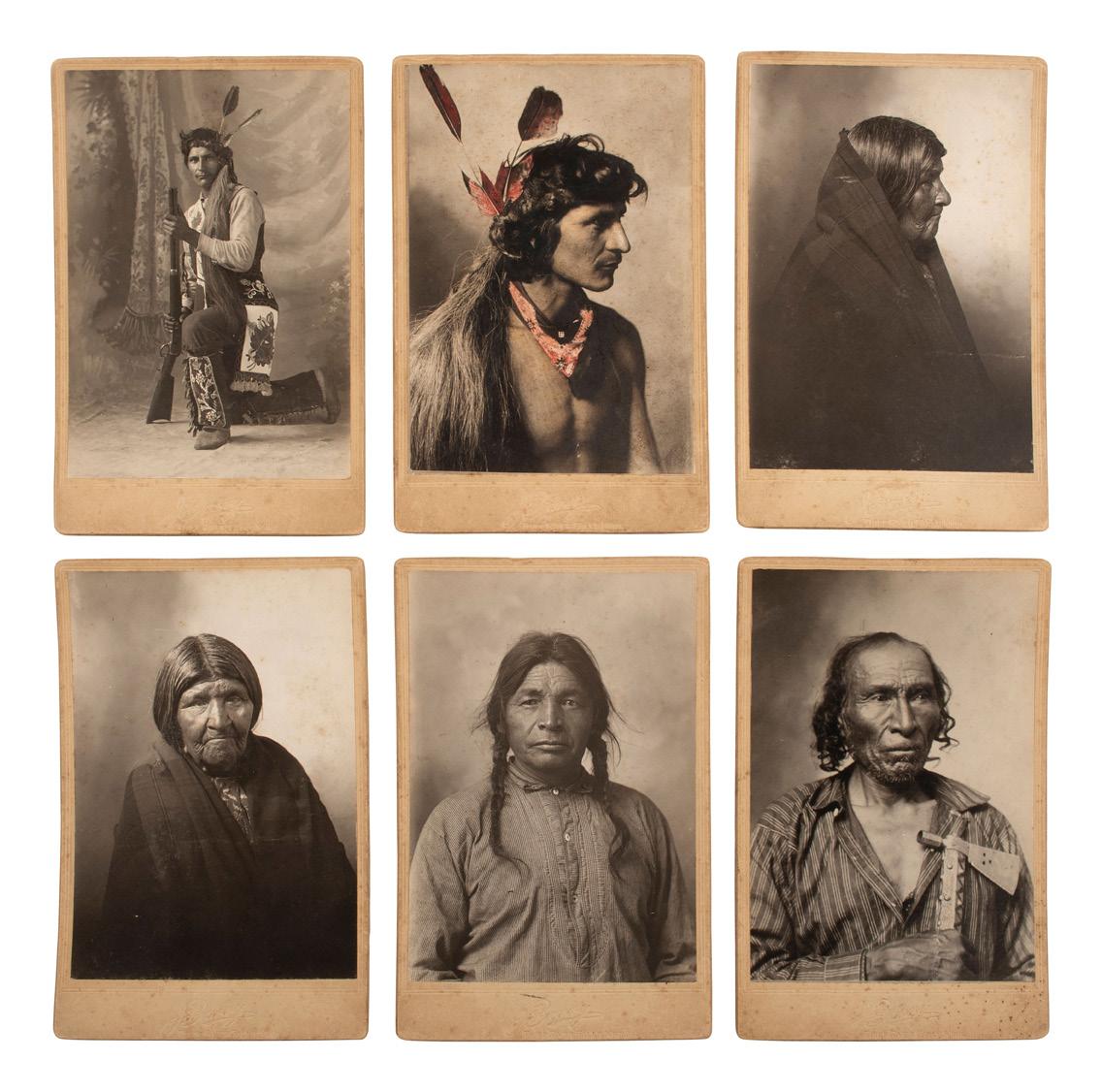
$500

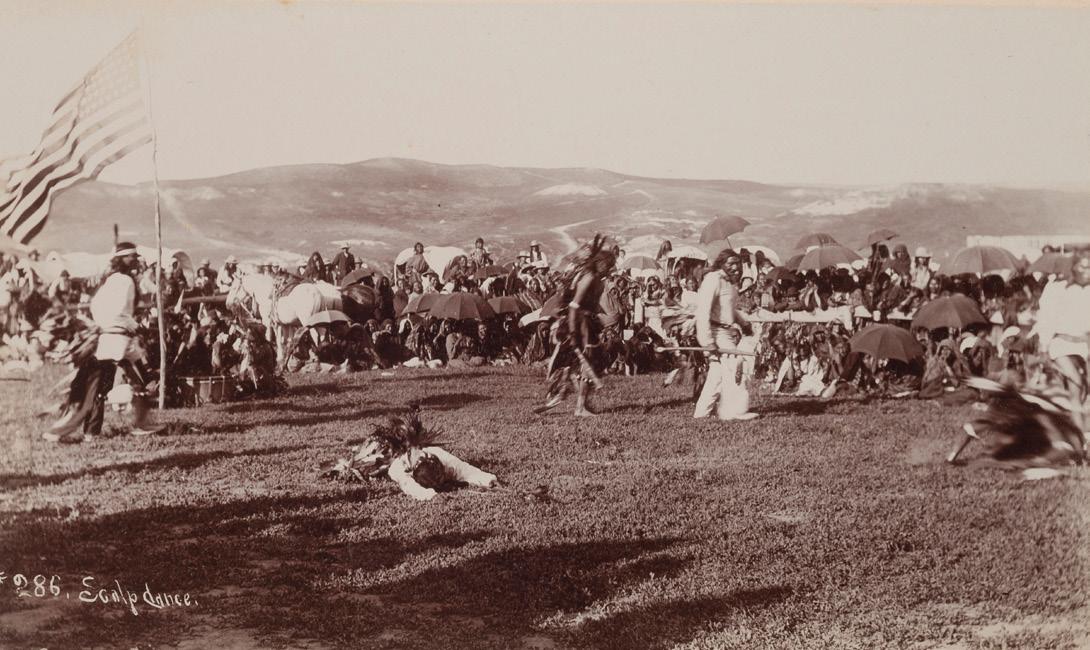
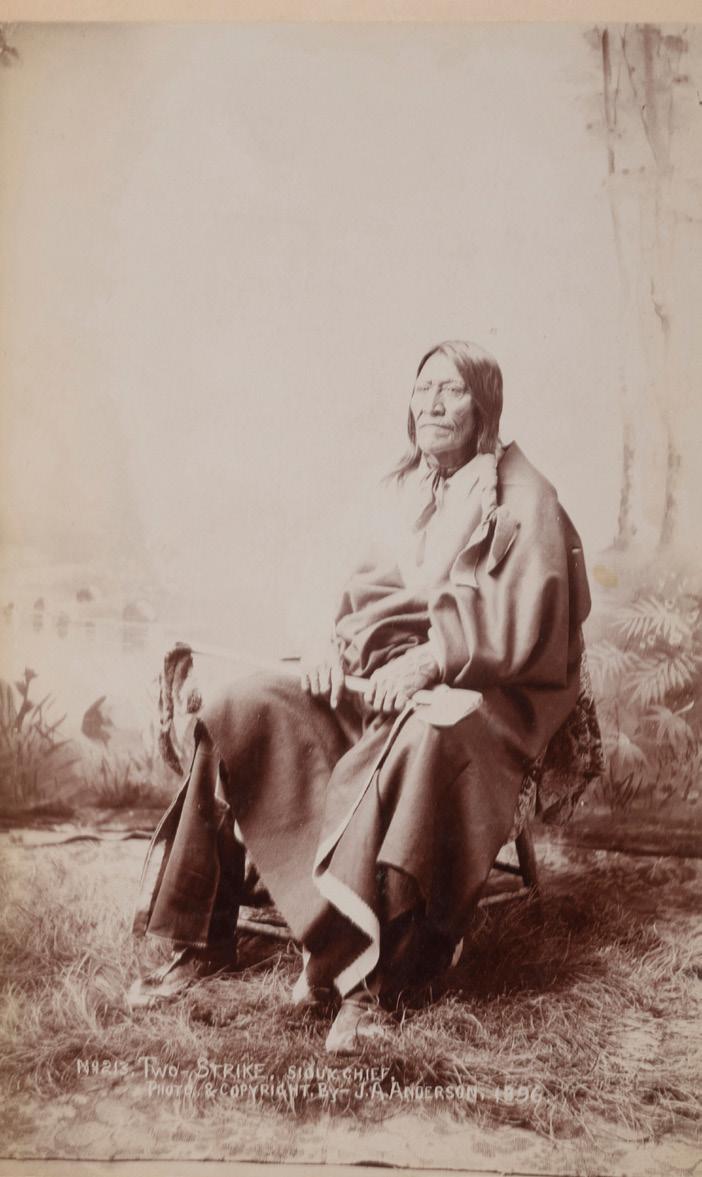
$600 - 800
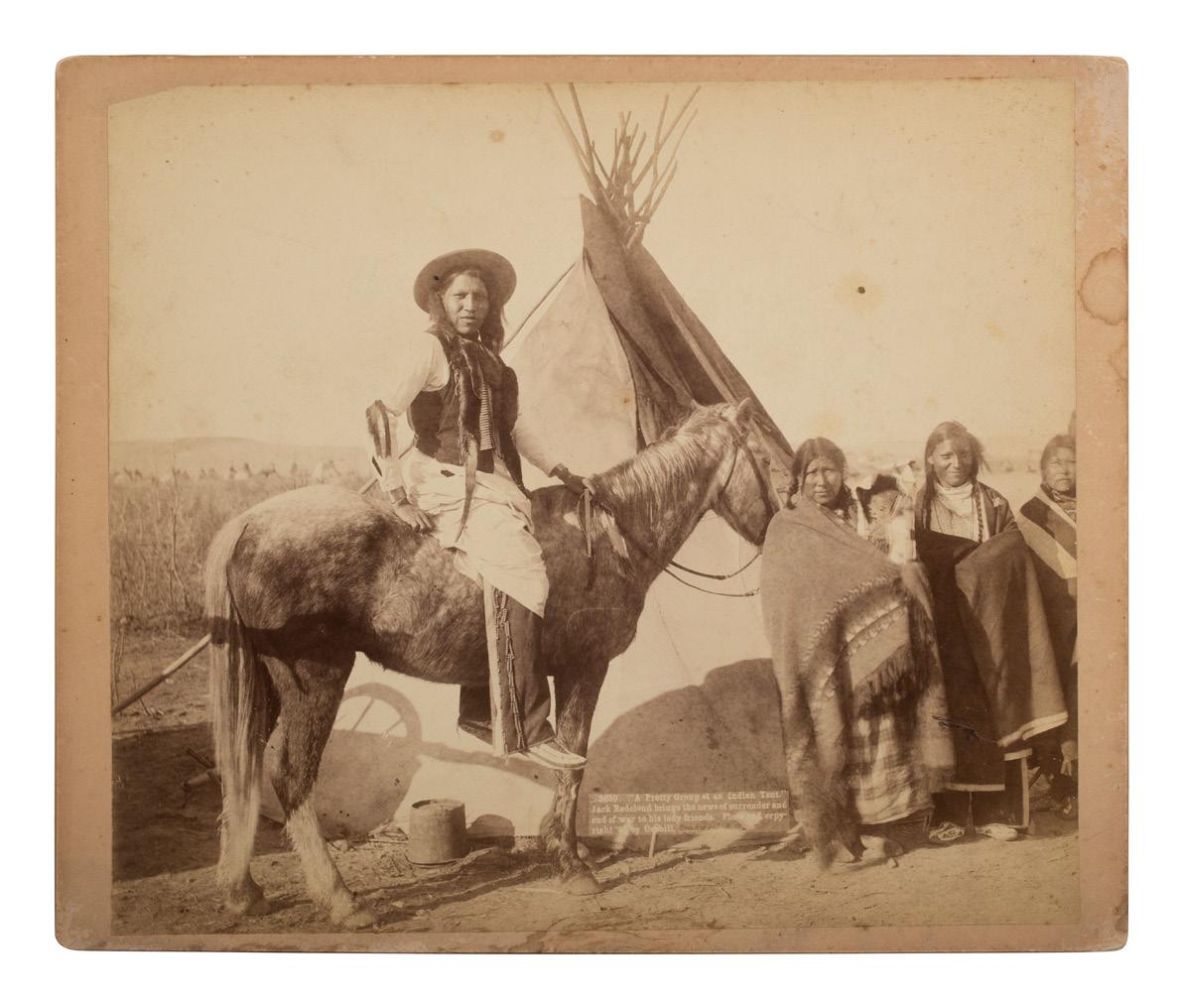
$500 - 700
$500 - 700
440 [NATIVE AMERICANS]. A group of 14 photographs of Native American subjects in South Dakota, incl. Red Cloud, Spotted Elk, Flat Iron, and White Deer. Ca 1900.


$800 - 1,200
441 [NATIVE AMERICANS]. BURDICK, Eugene, photographer, attrib. A group of 11 hand-colored photographs of identified Native American subjects, incl. Red Tomahawk and Medicine Crow.
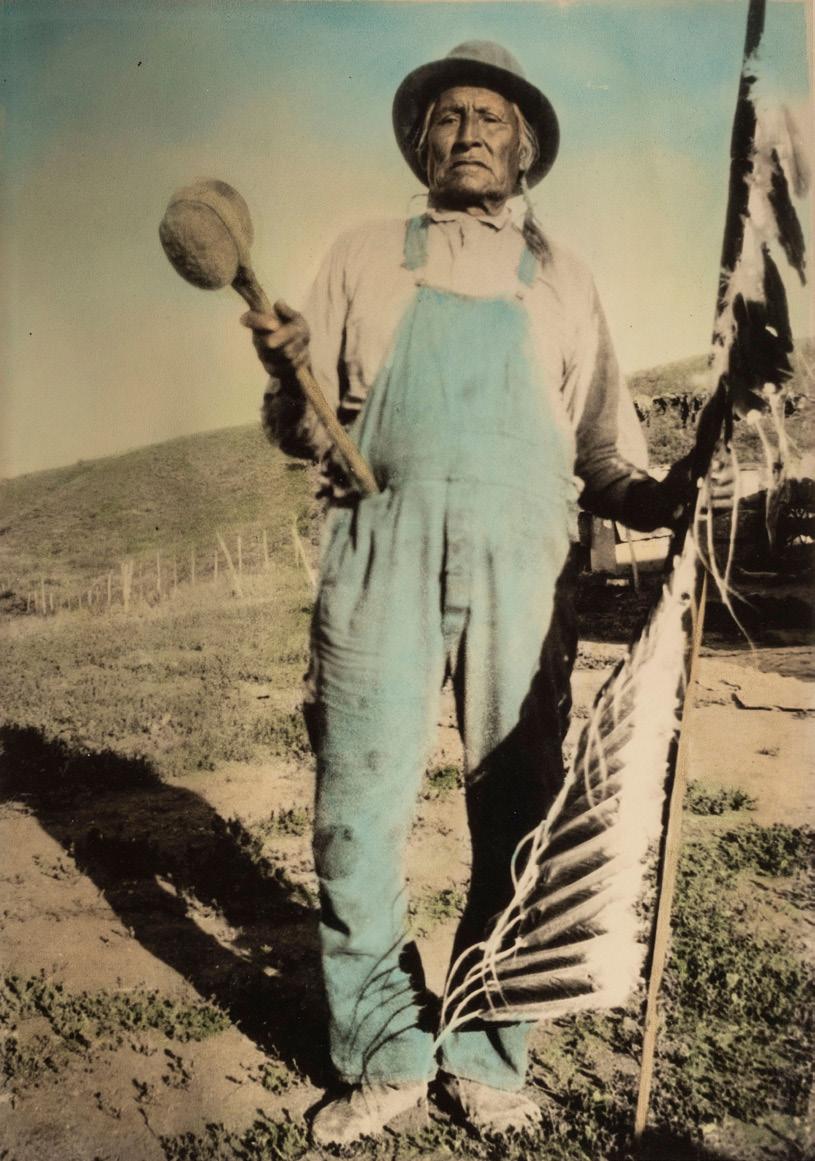
Property from the Collection of Stanley B. Slocum
$600 - 800
442
CHOATE, John N. (1848-1902), photographer. Cabinet card featuring chiefs who visited the Carlisle Indian School, presented to Deputy Commissioner of Indian Affairs Henry W. Andrews by Carlisle School Superintendent Richard H. Pratt. Carlise, PA, ca 1880s.
John N. Choate began a long photographic career at Carlisle, Pennsylvania in 1879 when the famous Carlisle Indian Industrial School was founded. Photographs like this one were produced to gain support for the school, suggesting that the chiefs featured supported the institution and its aims. Superintendent of the school, Richard Henry Pratt, explained his philosophy of assimilation in an 1892 speech to the National Conference of Charities and Correction, in which he uttered the infamous phrase, “Kill the Indian in him, and save the man.”
$1,500 - 2,500
444 CHOATE, John N. (1848-1902), photographer. Boudoir card featuring a group of Piegan Chiefs. Carlisle, PA, 1892.
Another example of this image, held at the Cumberland County Historical Society, identifies the featured subjects as Running Crane, Little Dog, White Grass, White Calf, Little Plume, Four Horns, Brocky, and Bear Chief.

$500 - 700
443
CHOATE, John N. (1848-1902), photographer. Cabinet card featuring Cheyenne Chiefs Man-on-the-Cloud and Mad Wolf. Carlisle, PA, ca 1880.

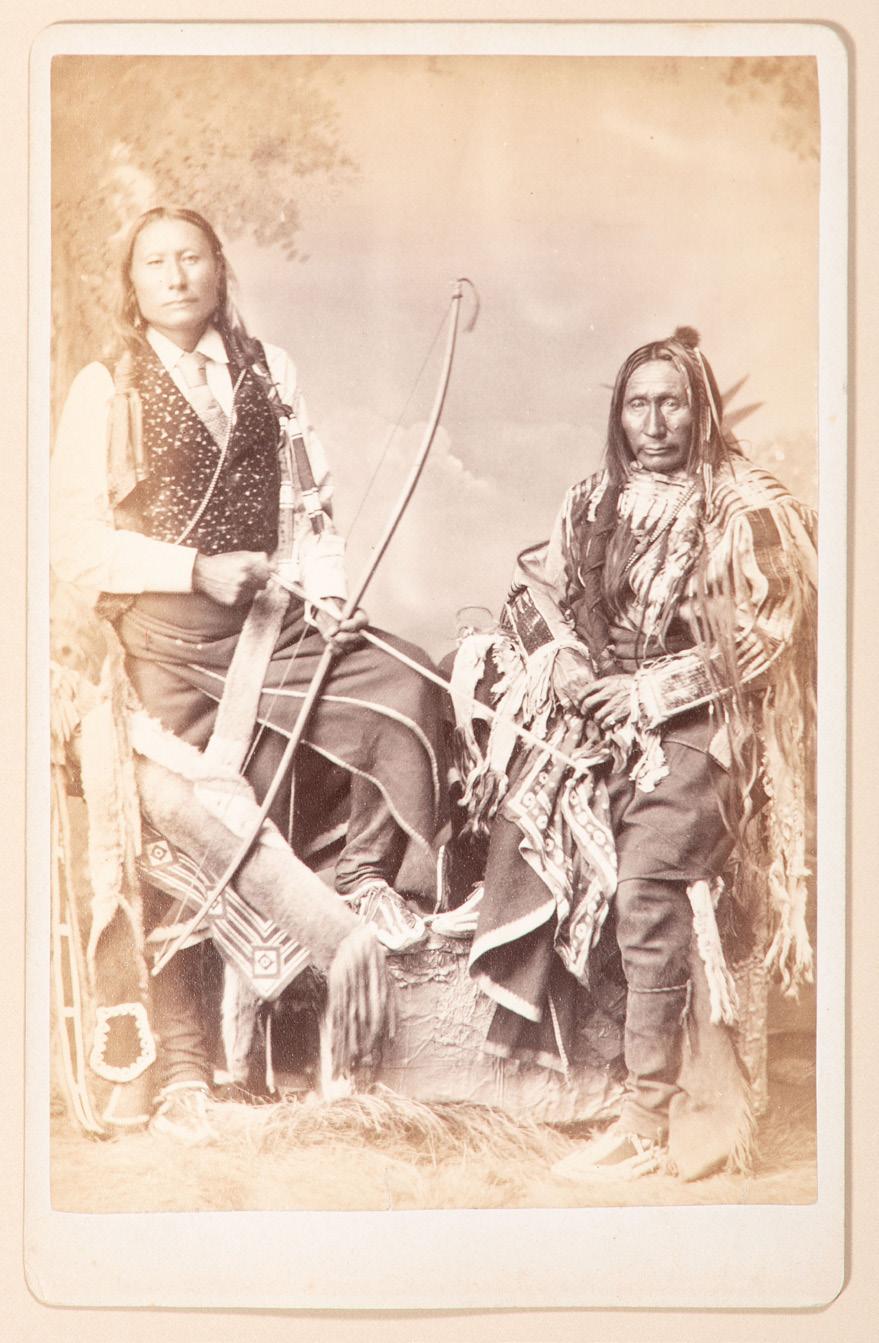
$400 - 600
445 [CHOATE, John N. (1848-1902), photographer]. Two cabinet cards featuring Arapaho Chief Little Raven with daughter Anna, and Cheyenne warrior Bobtail Horse with son Joseph. [Carlisle, PA], ca 1880.
$600 - 800

$500
$500

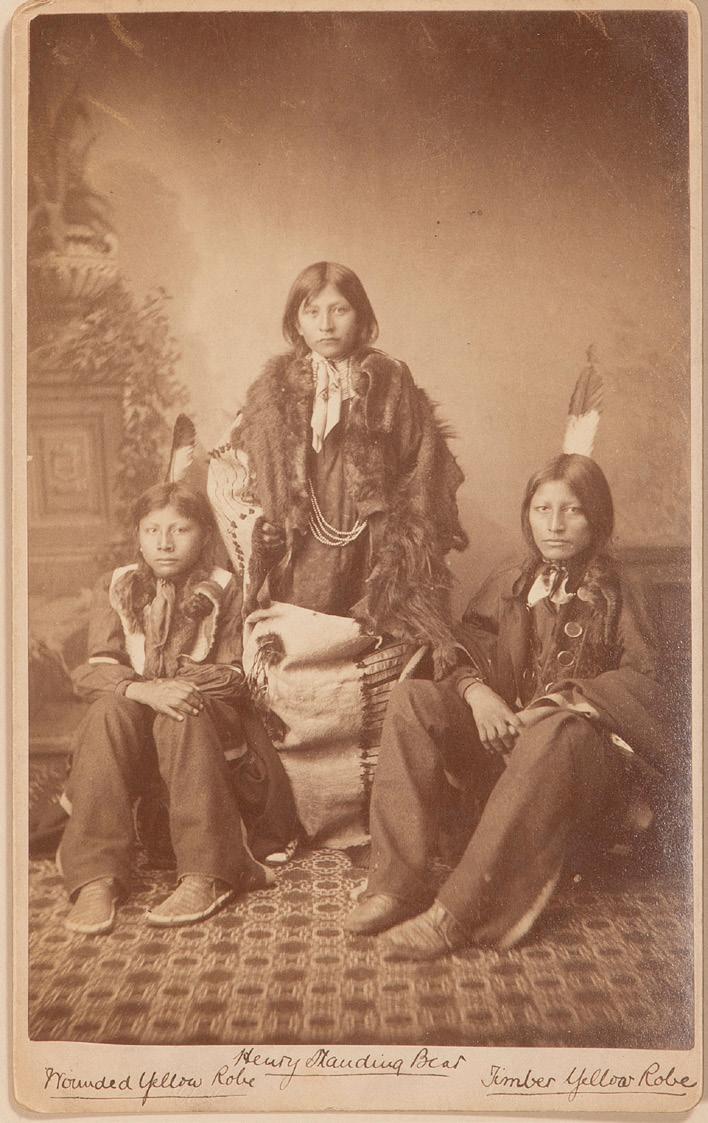
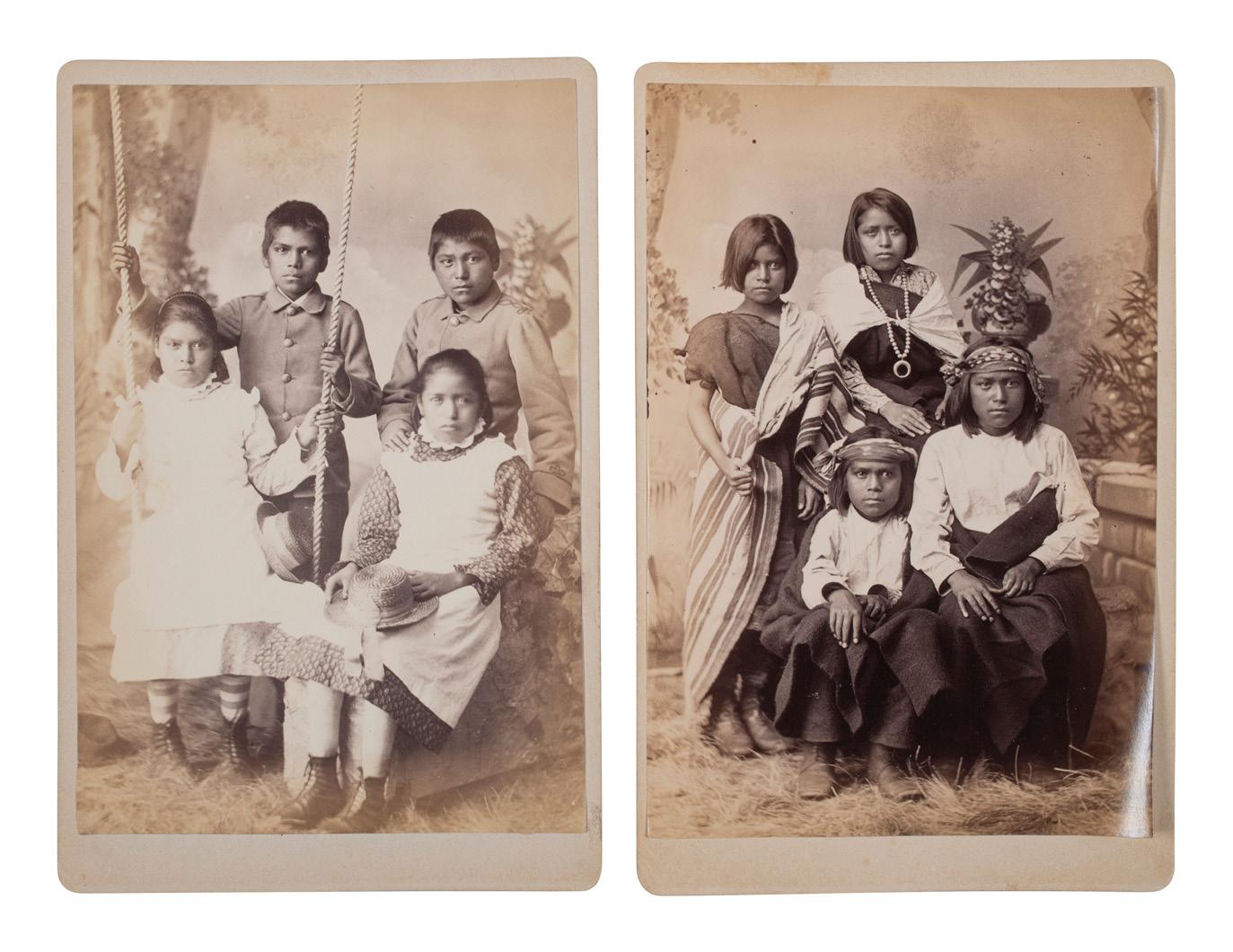
$500
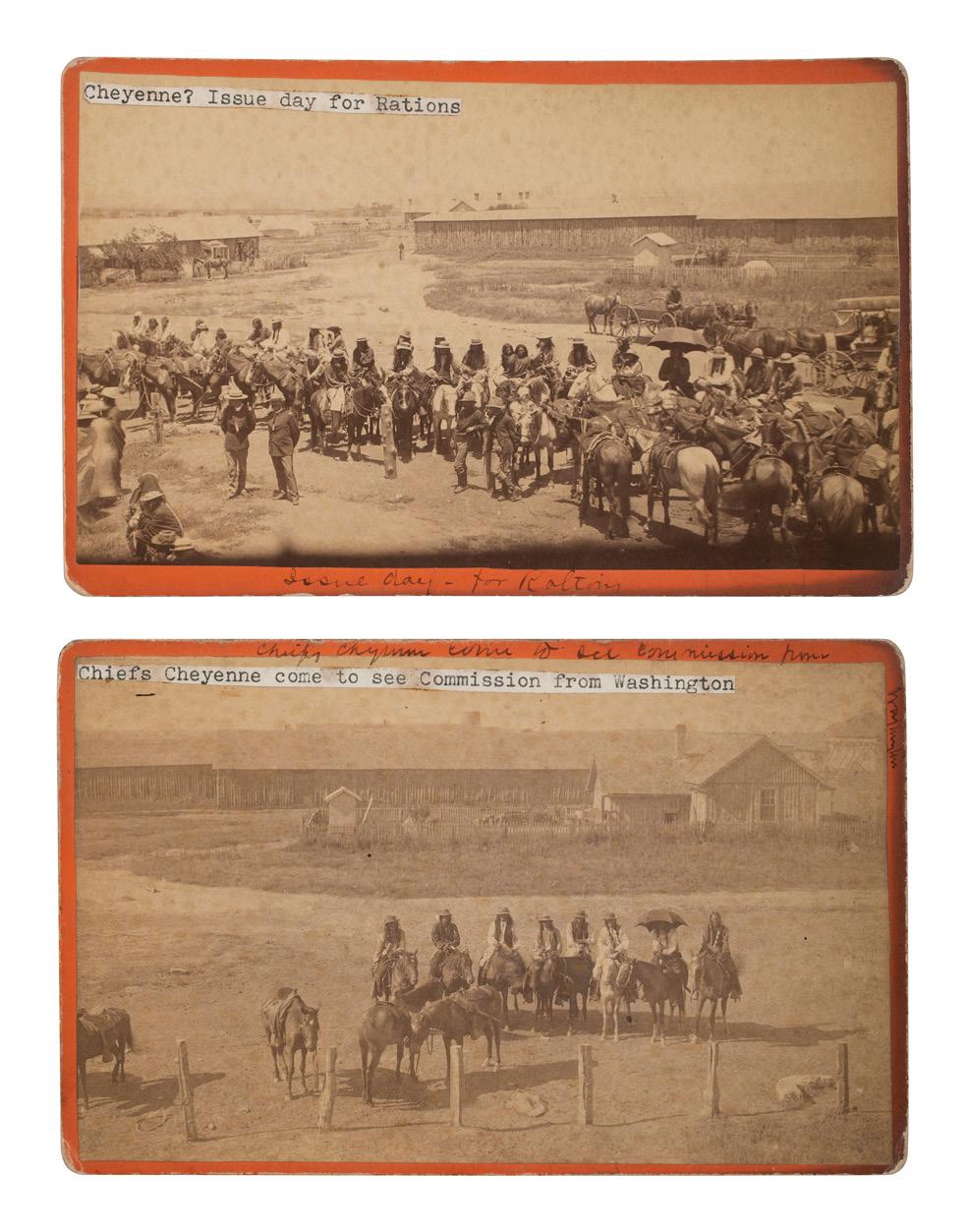

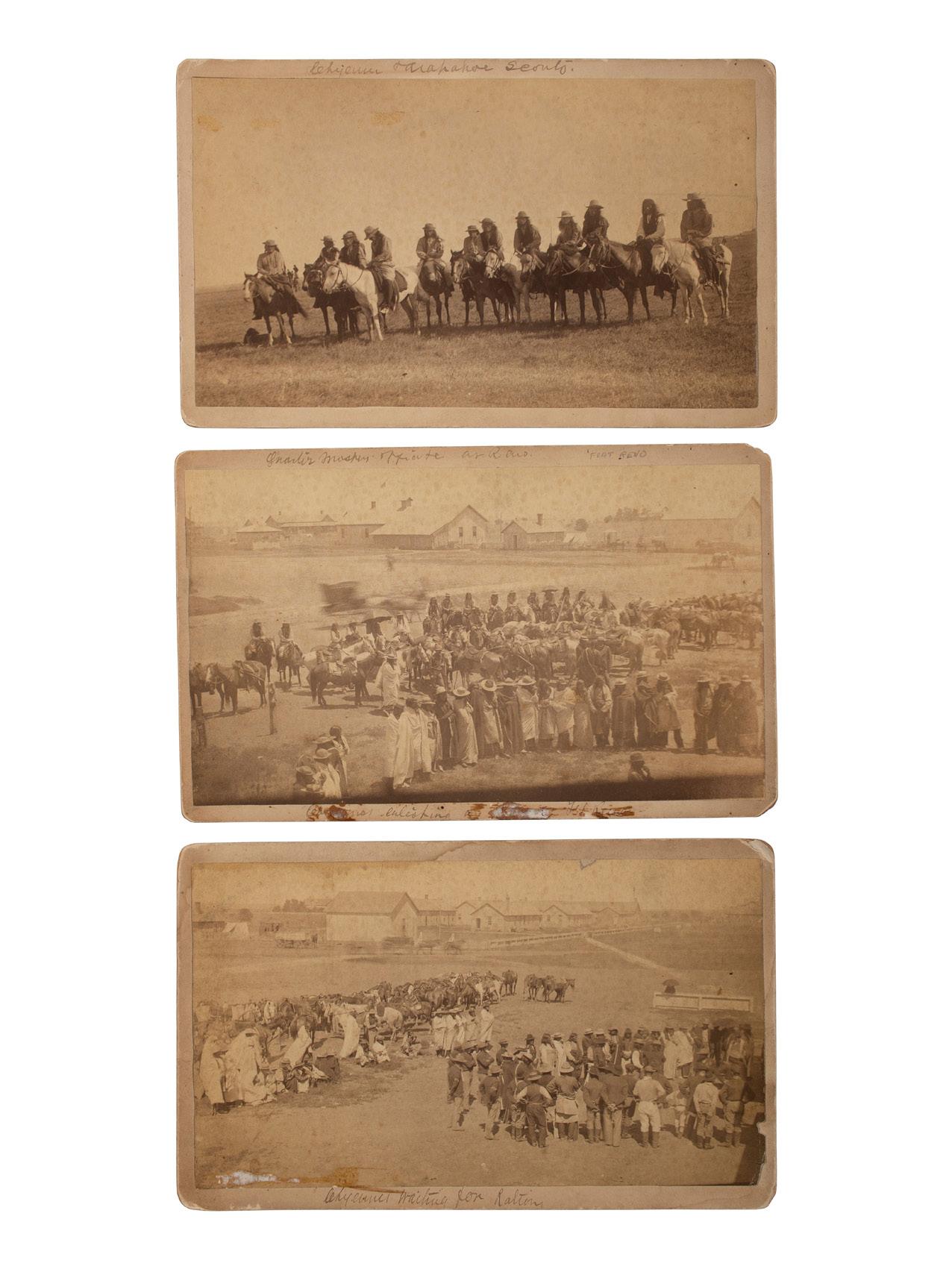
452 [NATIVE AMERICANS]. [IRWIN, William (1871-1935), photographer, attrib.]. A group of 2 cabinet cards of Comanche subjects.
$400 - 600
453
[NATIVE AMERICANS]. Tintype of Pima Indian Antonitto.
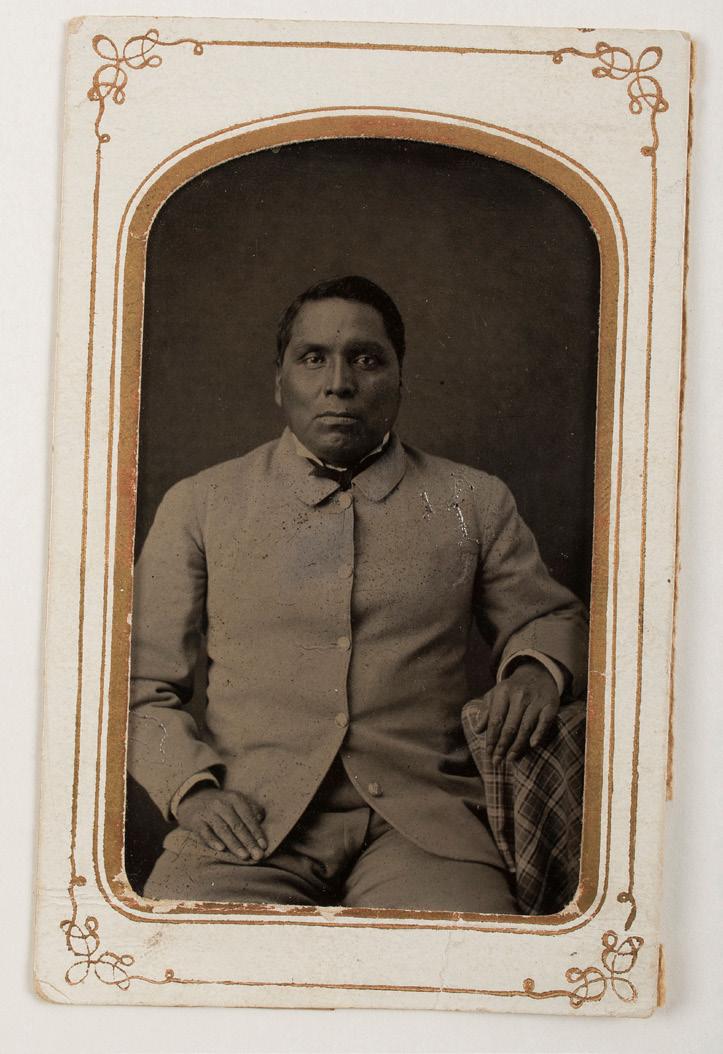
$300 - 400
454
[NATIVE AMERICANS]. FLANDERS & PENELON, photographers. A group of 2 stereoviews of Native American subjects taken at Verde and San Carlos Reservations. Arizona: [Spring-Summer 1874].
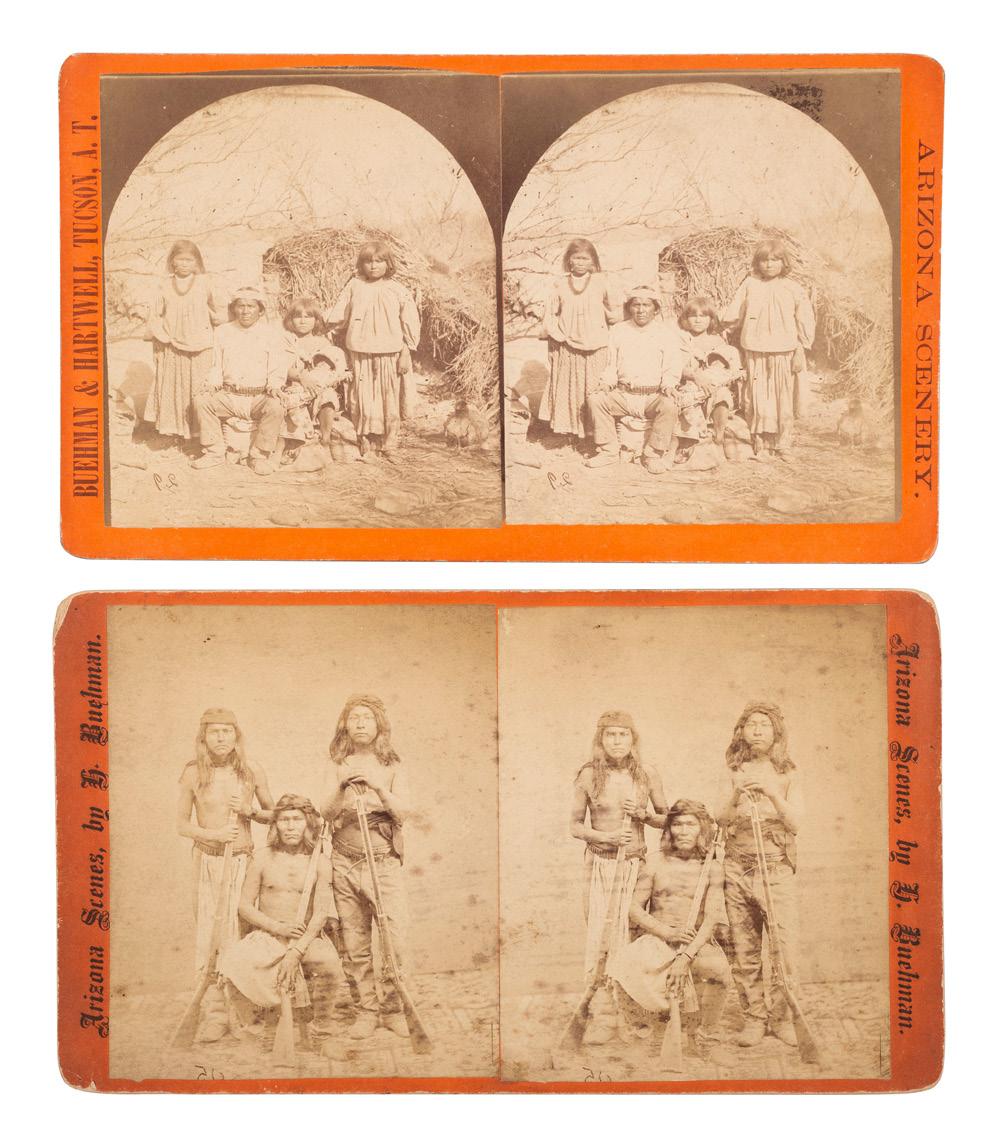
$500 - 700
455
[NATIVE AMERICANS]. BUEHMAN & HARTWELL, photographers. A group of 2 stereoviews of Apache Indians. Tucson, AZ: 1880s.

$400 - 600
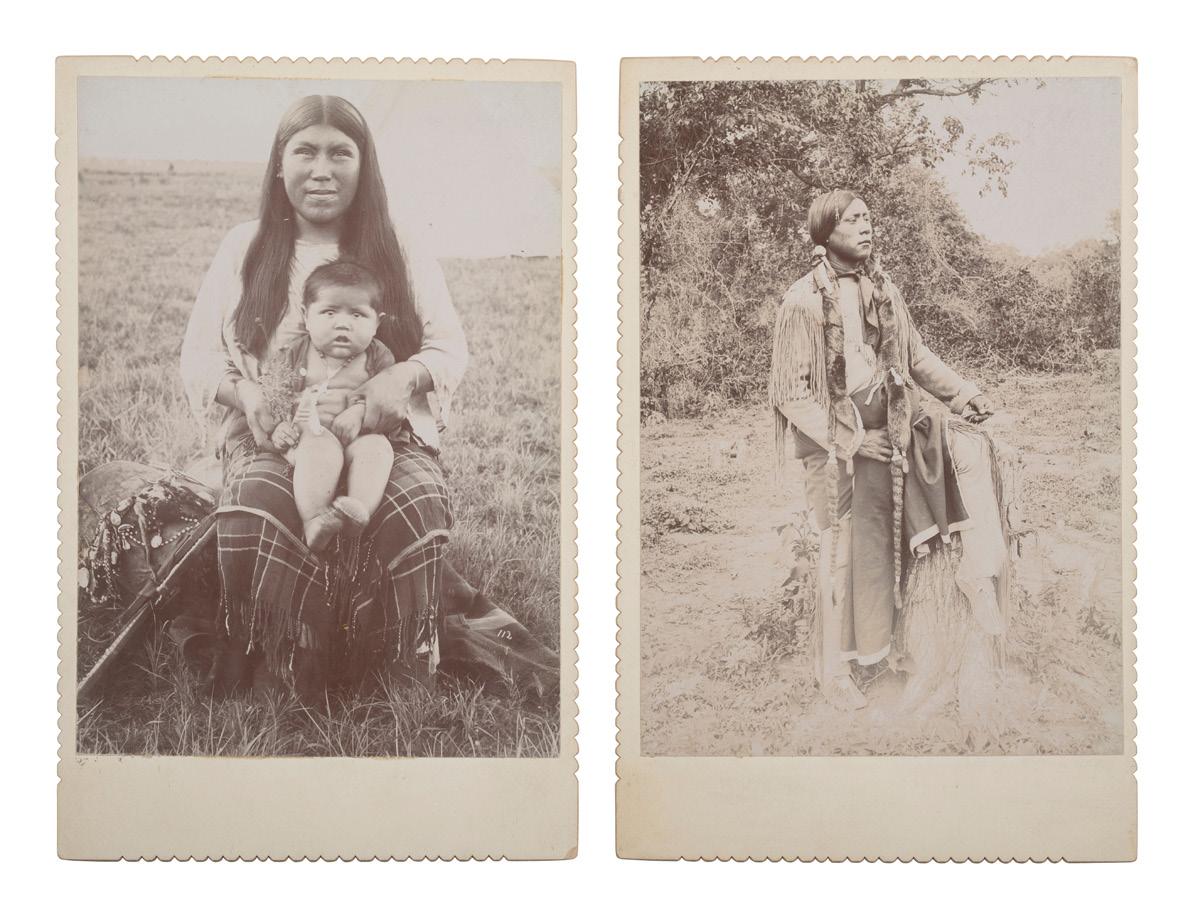
456 [NATIVE AMERICANS]. ROTHROCK, G.H. (1843-1924), photographer. A group of 2 stereoviews of Apache subjects. Phoenix, AZ.
$500 - 700
457 [NATIVE AMERICANS]. ROTHROCK, G.H. (1843-1924), photographer. A group of 2 stereoviews, incl. Indians Scouting, featuring Lieutenant John A. Rucker. [Phoenix, AZ].

$500 - 700
458 [NATIVE AMERICANS]. BURGE, J.C. (ca 1839-1897), photographer. Stereoview of Apaches bathing in the Gila. Globe City, AZ. Early 1880s.

$300 - 400
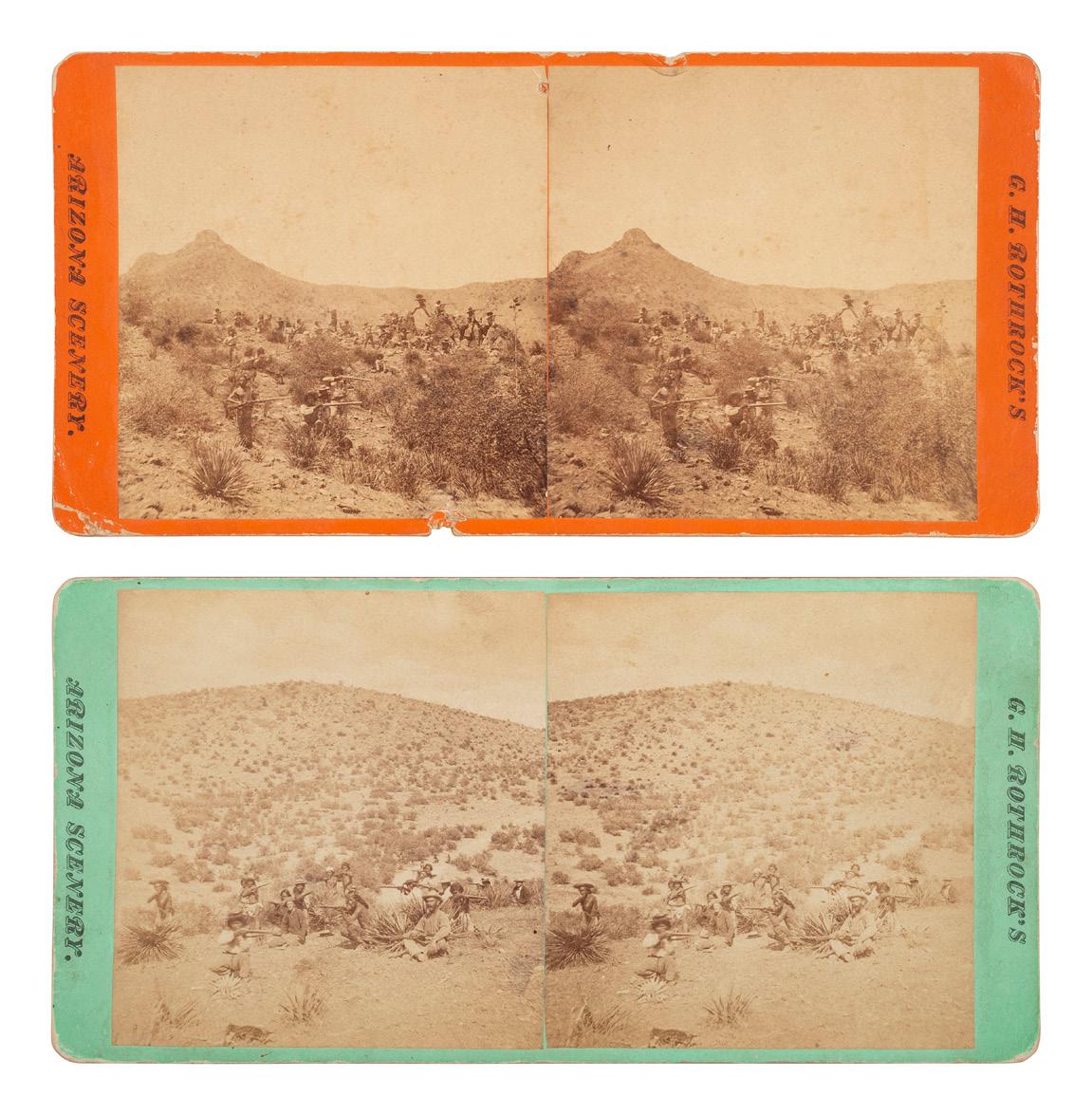
459 [NATIVE AMERICANS]. FLY, C.S. (1849-1901), photographer. Geronimo, Son and Two Picked Braves. Man with Long Rifle Geronimo Tombstone, AZ: 1886.
The photograph shows, from left to right, Yanozha, Geronimo’s brother-in-law; Chappo, Geronimo’s son from his 2nd wife; Fun, Geronimo’s 2nd cousin; and Geronimo who holds a model 1873 Springfield Infantry rifle. Taken during the Crook conference in the Sierra Madres, 2526 March 1886.
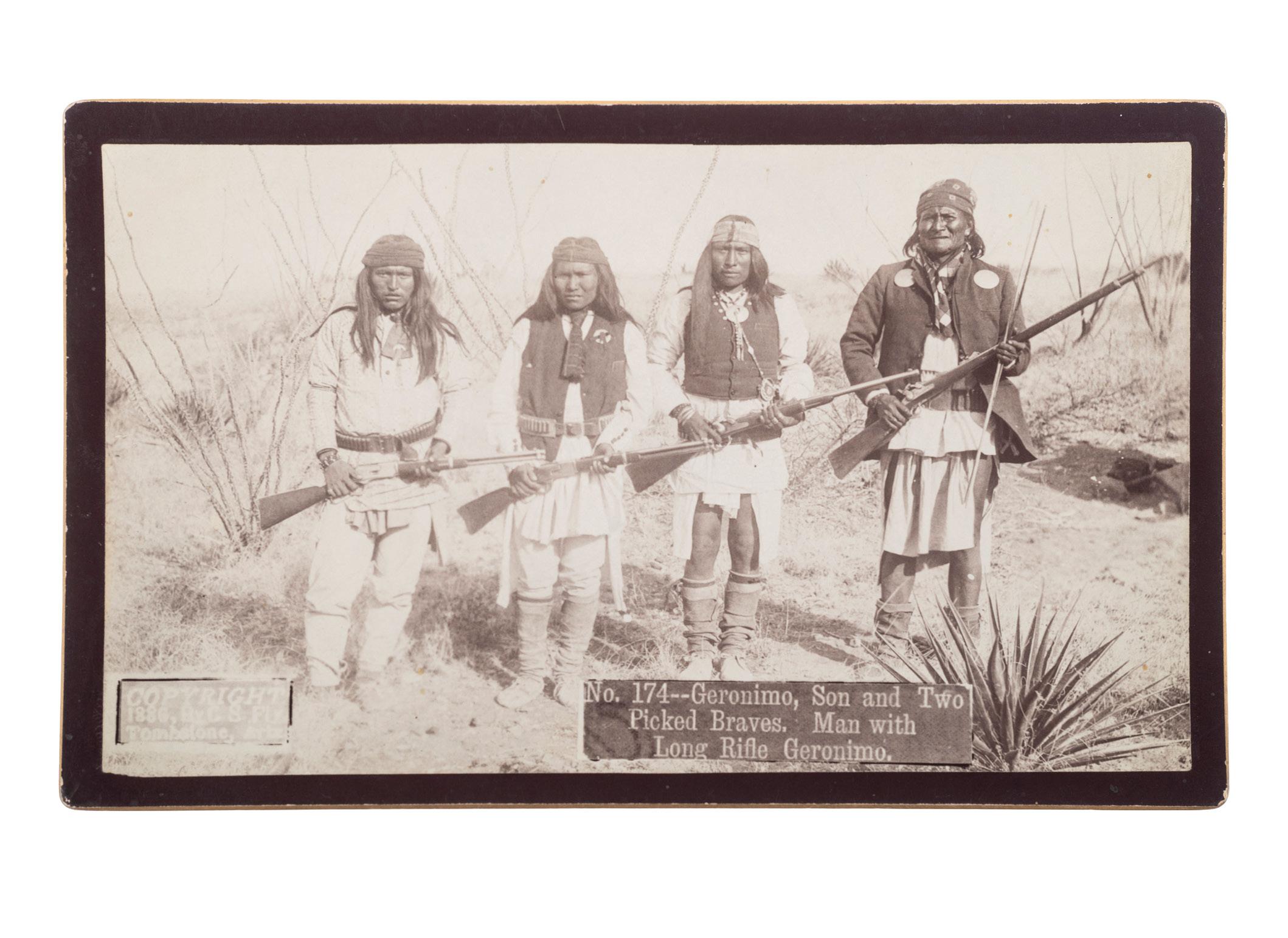
$3,000 - 4,000
460
[NATIVE AMERICANS]. GERONIMO (1829-1909). Signature obtained at the 1904 World’s Fair in St. Louis, MO.
$3,000 - 4,000
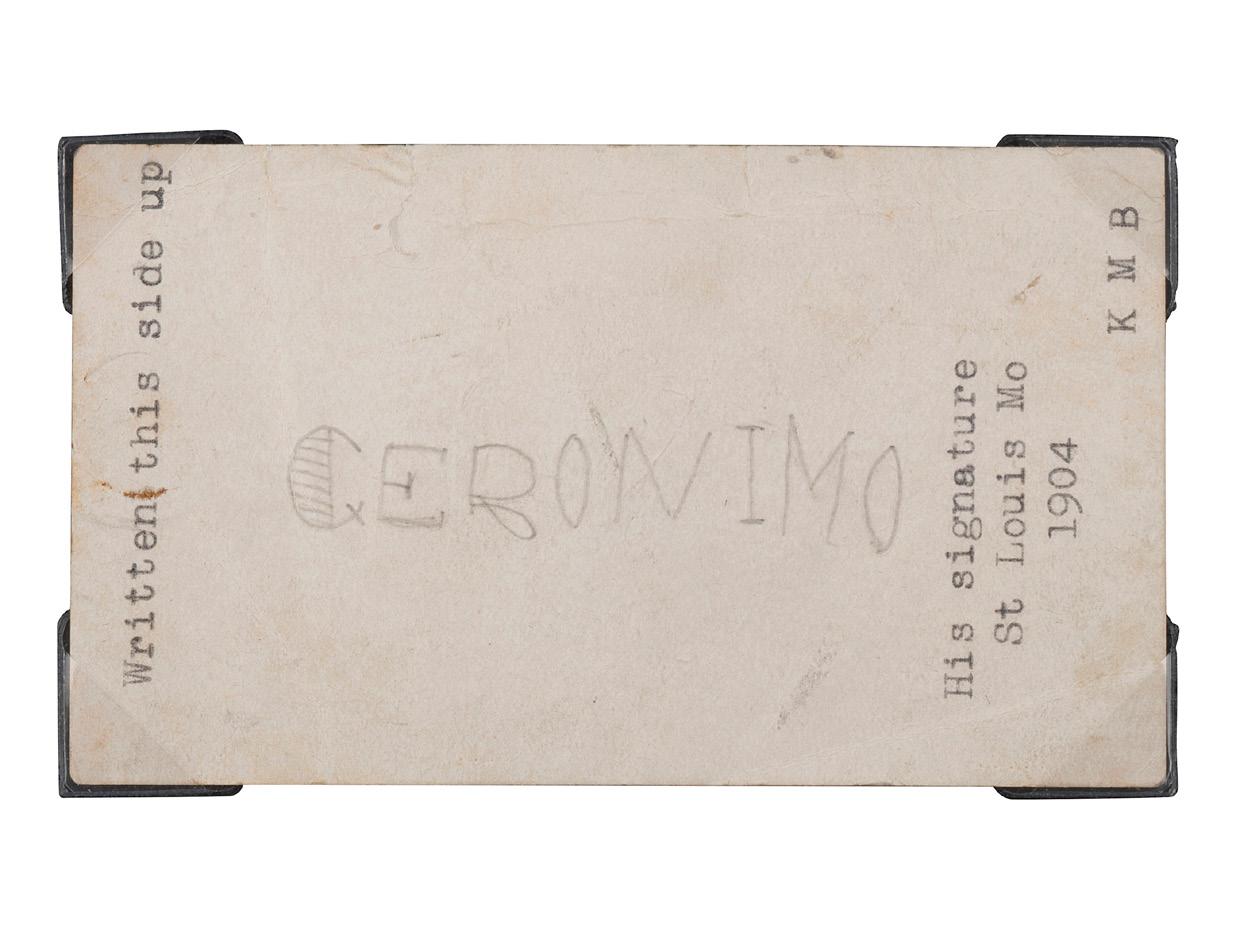

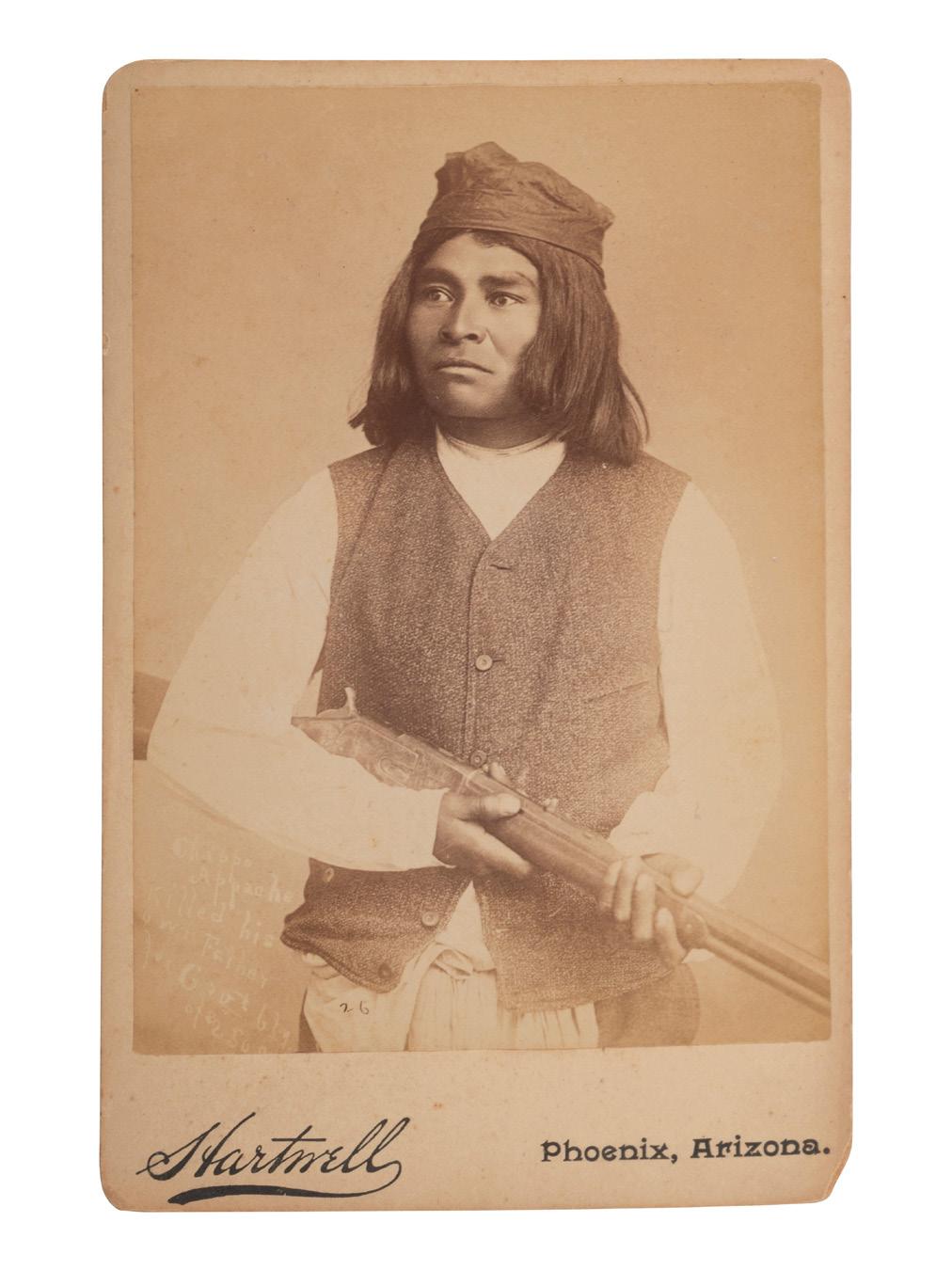

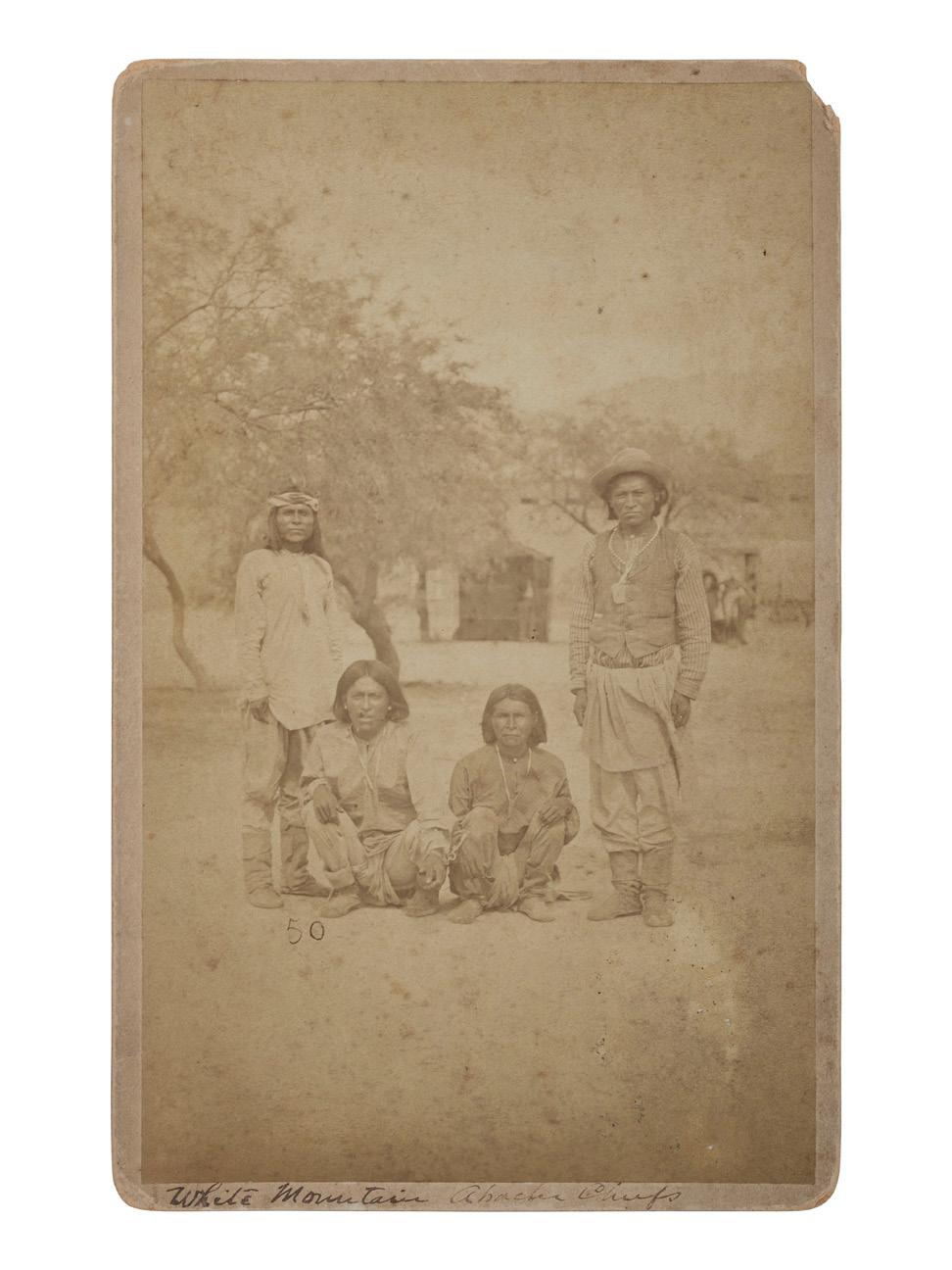
$300
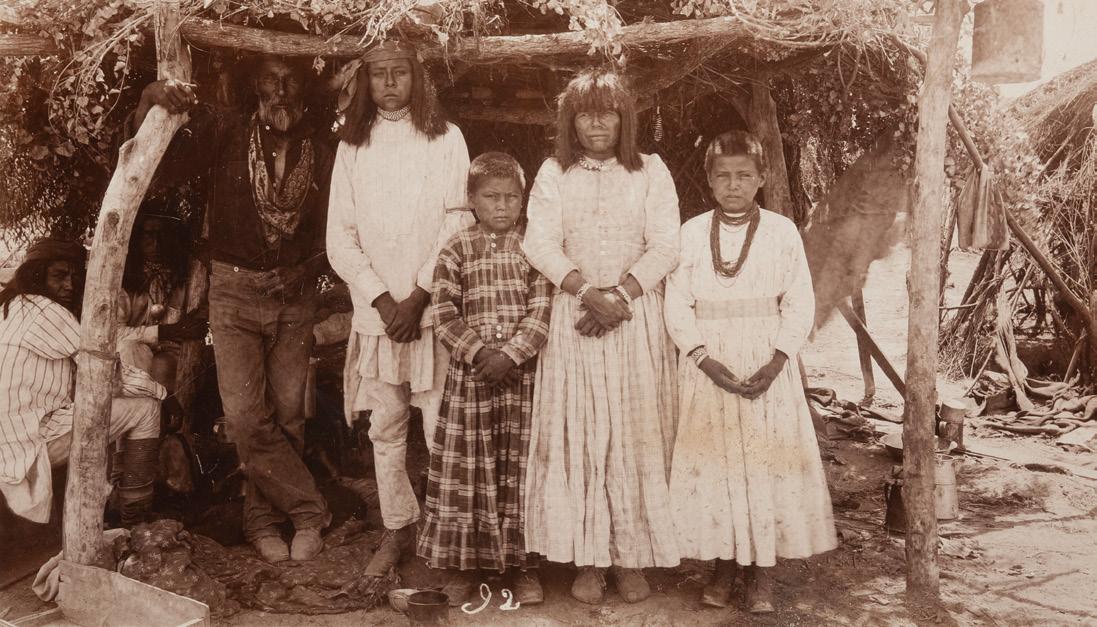

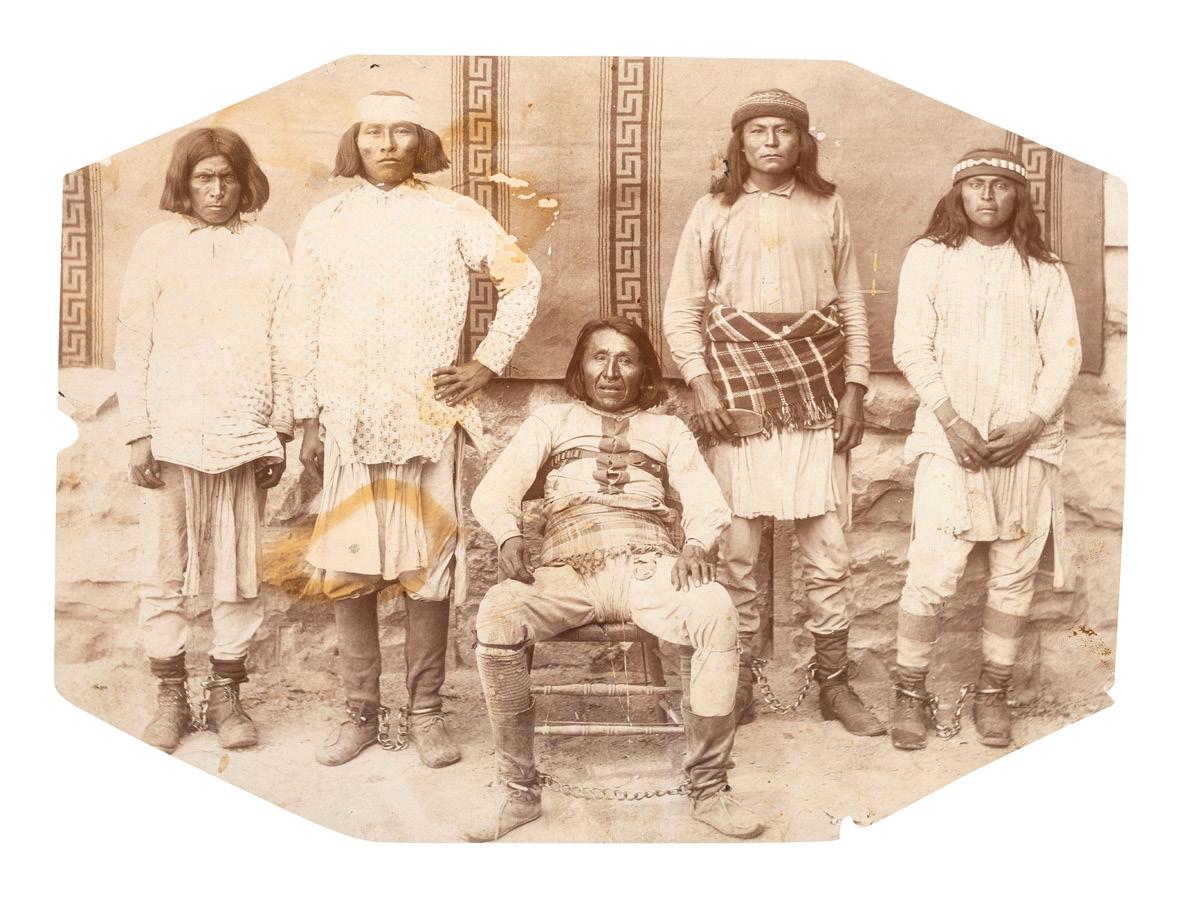
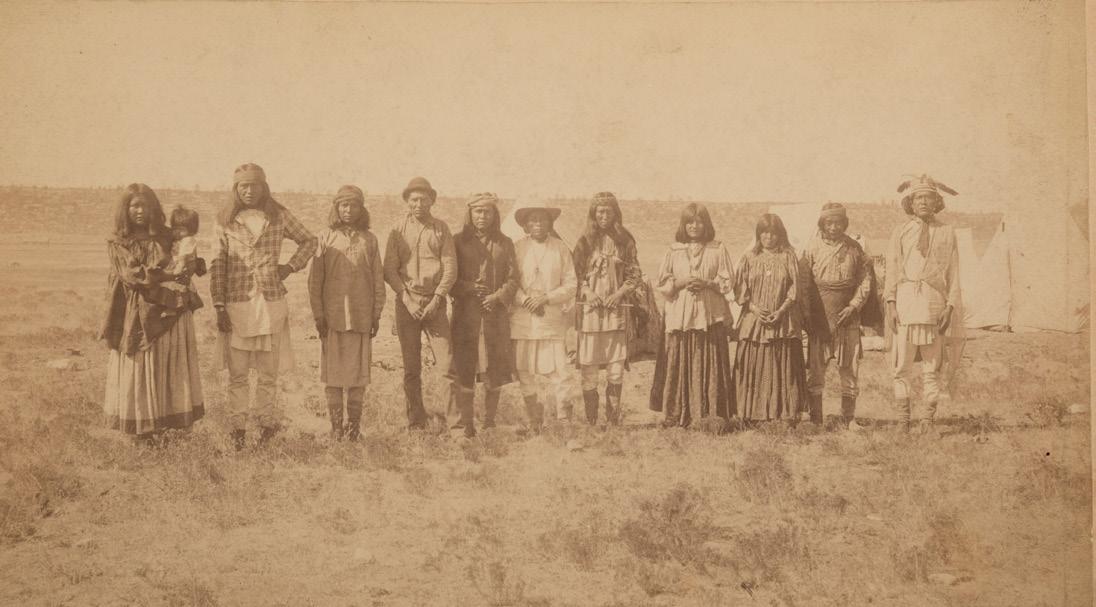
$700 - 1,000
$400
469
[NATIVE AMERICANS]. JONES, John Edward (1863-1922), photographer. Album containing 50 photographs of the San Carlos Indian Agency, including Apache civilians and police, agency buildings and dwellings, and scenic views. Ca 1904. Oblong octavo album, (7 1/4 x 11 in.). 50 silver gelatin photographs, majority approx. 5 x 7 in., partially mounted recto/verso on 7 x 10 in. album pages, most unidentified with the exception of 4 photographs. Leather-covered paper boards. Provenance: E.F. Kelner Collection (consignor notes).
A series of photographs taken on the San Carlos Indian Agency in Arizona, which served the Western Apache Indians. The first photograph, captioned “San Carlos Indian Agency Buildings & Traders Store,” is mounted on the reverse side of the album cover and provides a distant view of the agency’s buildings and surrounding landscape. Additional images of the agency and its environs include “Indian School Buildings” (as captioned on mount); “San Carlos River” (as captioned on mount); individuals posed next to tall saguaro cacti, some showing the photographer J.E. Jones and his family; and Apache wickiups.
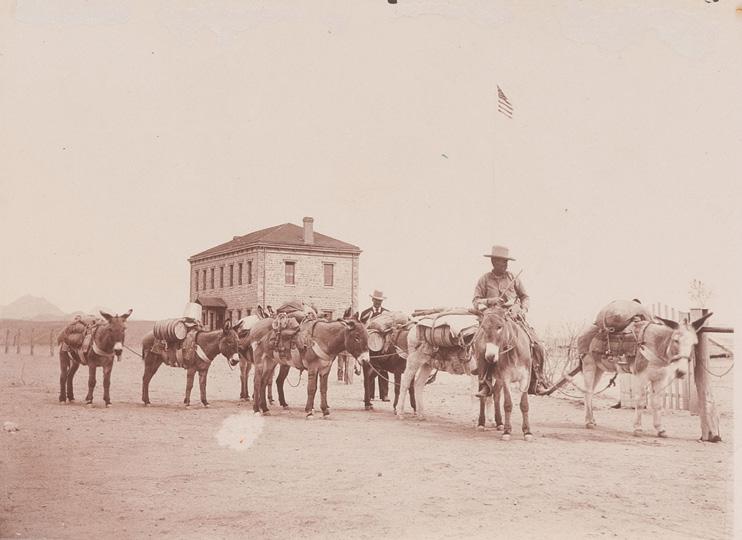


The album features many individual and group portraits of Apache men, women, and children, posed in both traditional and anglo-style clothing near wickiups or adobe structures. Included are portraits of young women with facial painting; two women posed with playing cards; a group of women and men in uniform gambling on a blanket on the ground with Model 1890 Remington Single-Action Army revolvers visible; a family group that shows the husband, in uniform, playing a onebow Apache fiddle while the wife weaves a basket; portraits of young Apache couples, one showing a husband wearing his police uniform and posed with his rifle; multiple views of families at their wickiups, one of which appears to include a Caucasian subject; a Caucasian prospector surrounded by mostly Apache subjects with burros and shovels; and a prospector’s outfit at San Carlos.
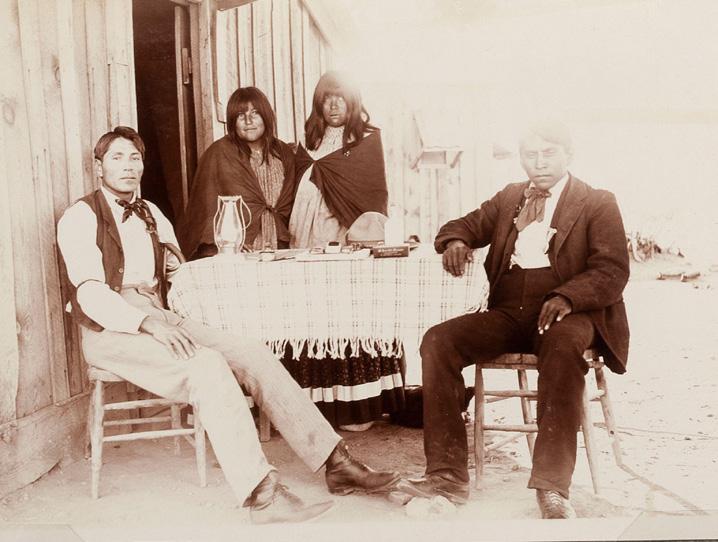
The album also contains at least 6 photographs of Apache police officers, many shown wearing badges and holding Model 1844 Springfield “trapdoor” carbines. Two capture large groups of men, mostly police officers, posed in front of the jail. Some of these photographs appear to be previously unknown.
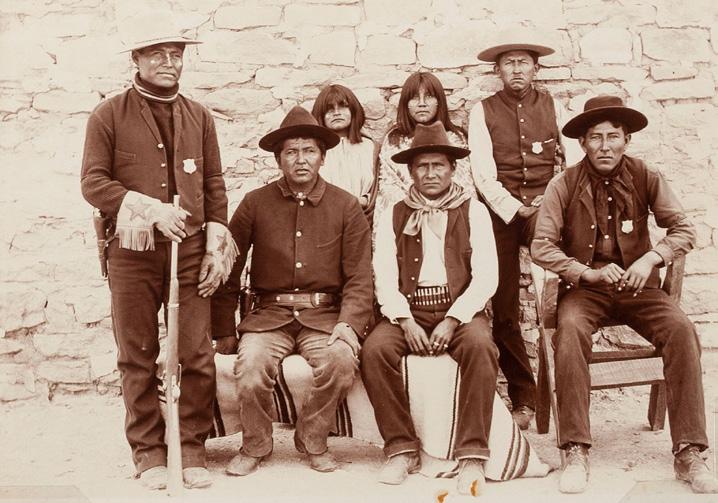

Additional highlights include: An image bearing the caption, “Al Sieber & Indian Scouts,” which shows at least twenty Apache scouts perched on the side of a rocky mountain, aiming their Springfield rifles and carbines at an unknown target. Albert Sieber (1843-1907), shown at center, served as a Chief of Scouts during the Apache Wars. He participated in Crook’s Apache campaign and was involved in trying to locate Geronimo. This image is almost certainly a period copy after the original example taken by J.C. Burge, Kingston, NM; 2 photographs of an unidentified Apache man holding a quiver in one hand and bows and arrow in the other; 2 period copy images documenting Apache ceremonies.
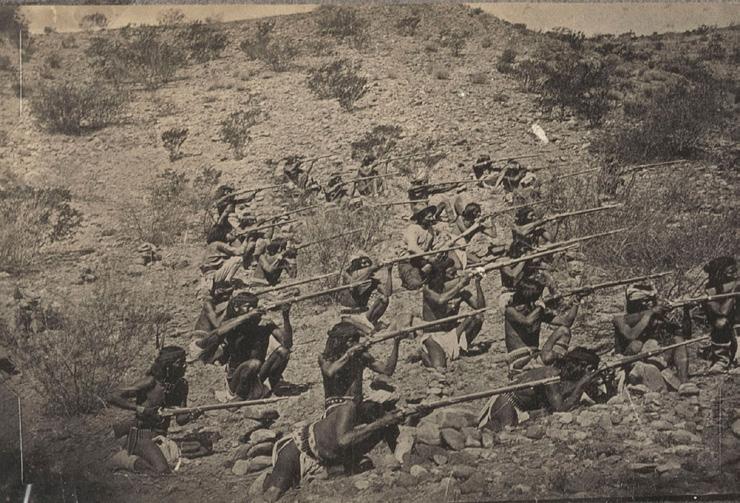
Although uncredited, the majority of the photographs housed in the album were produced by John Edward Jones (1863-1922), a native of Clark County, IL, who moved to Labette County, KS, with his family in 1873. Jones taught at the Colorado River Reservation in Arizona by 1899 but little is known about his work as a photographer outside of information provided by the National Cowboy & Western Heritage Museum, which has a number of Jones’ photographs in its holdings. He was almost certainly a government employee, probably with the Bureau of Indian Affairs. As the Museum’s catalog entry makes clear, Jones must have been seen as some authority figure considering the intimate access he had to the Apache subjects. (Information obtained from the National Cowboy & Western Heritage Museum website.)

$10,000 - 15,000
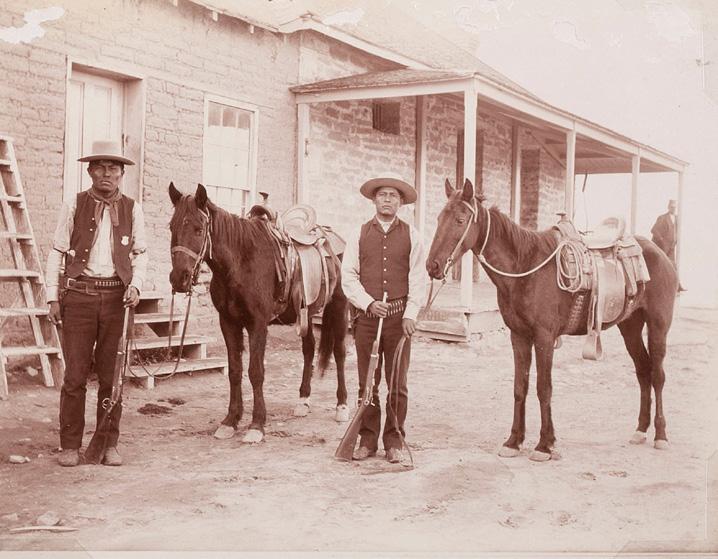
470 [WESTERN AMERICANA] - - [NATIVE AMERICANS]. HARVEY, Fred (1835-1901). Album containing 71 photographs documenting Native American subjects and the American Southwest. Ca 1920.

Small Folio leatherette album containing 71 silver gelatin photographs, each 8 x 6 1/4 in., mounted recto/verso on black pages; none identified, but scenes from Harvey’s extensive operation on the north rim of the Grand Canyon, n.d. but probably around 1920. Several are copyrighted within the negative “FH”, and we presume all were taken by an official Harvey photographer.
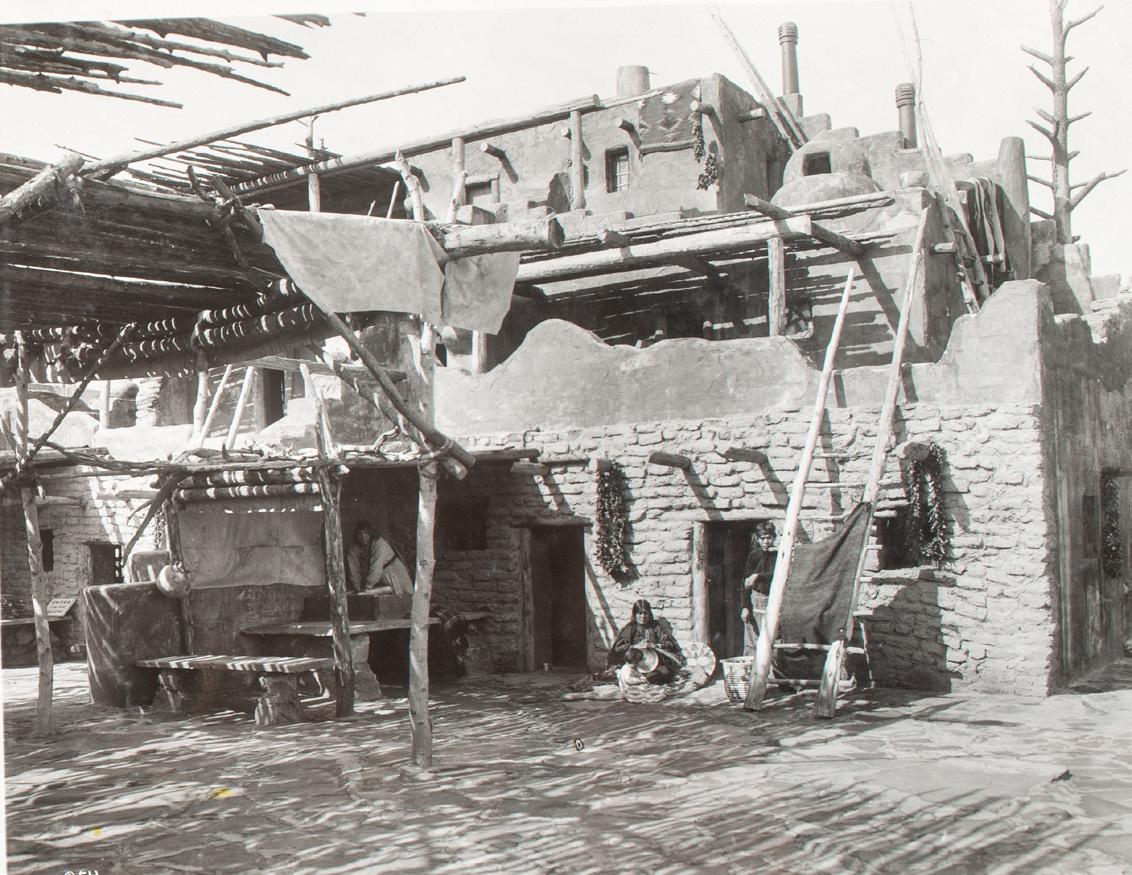
An exceptional album documenting the efforts by the Harvey organization to popularize the American Southwest, and the Grand Canyon in particular as a tourist destination.

$2,500 - 3,500
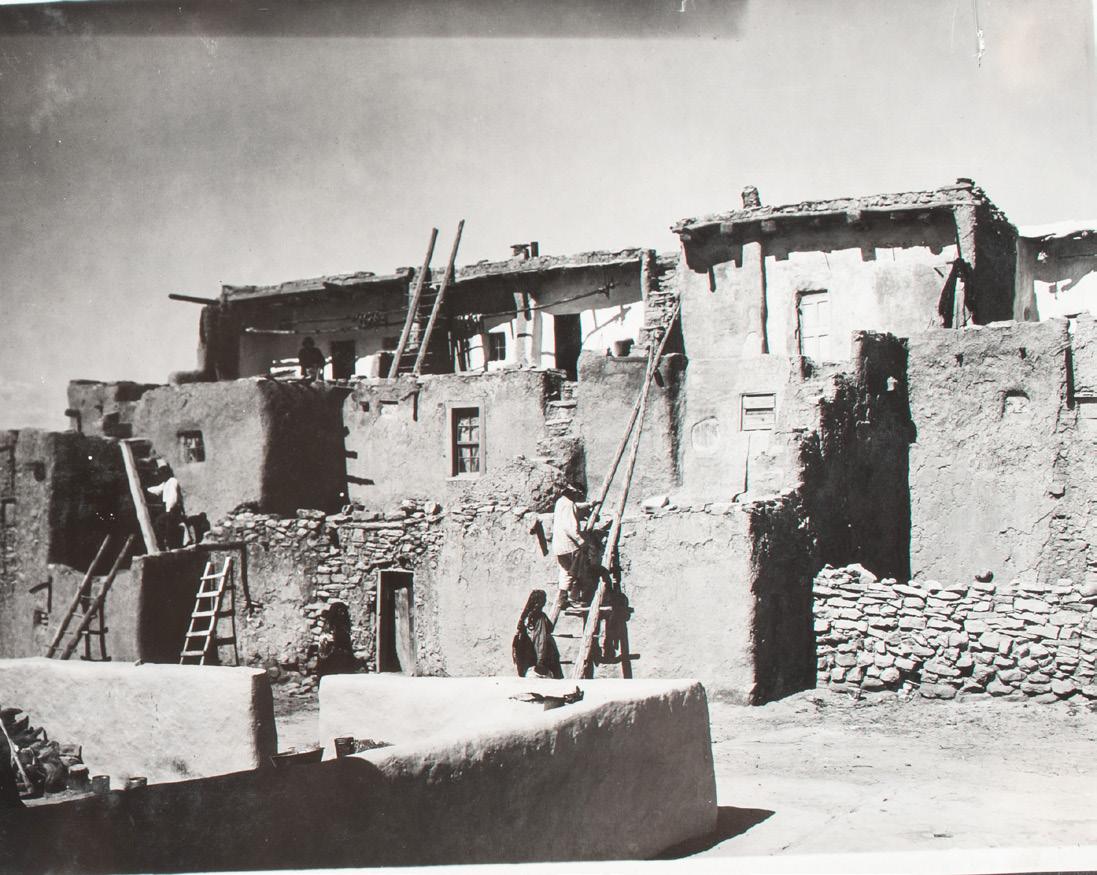
$600 - 800
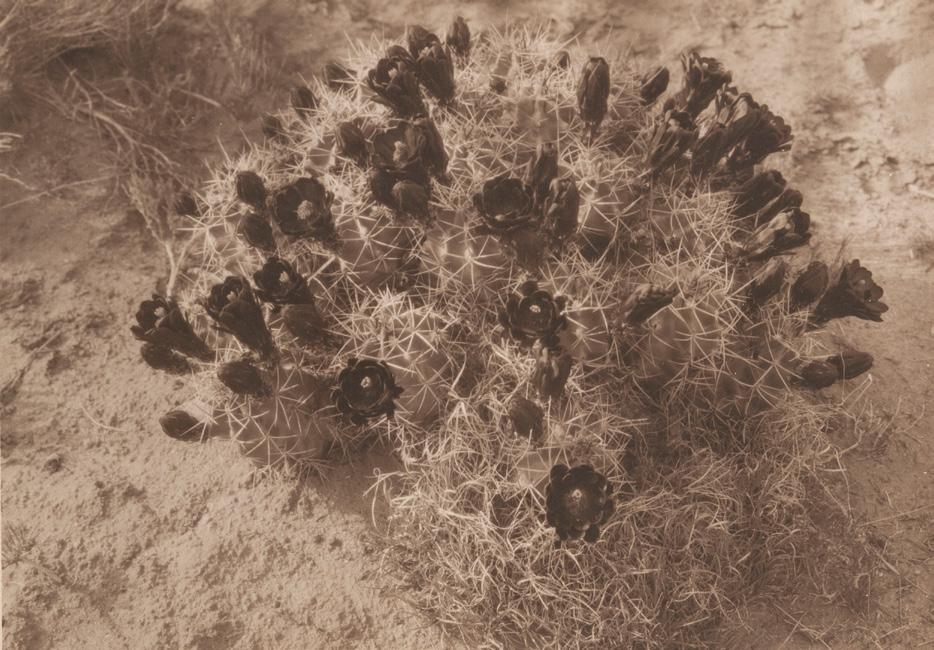
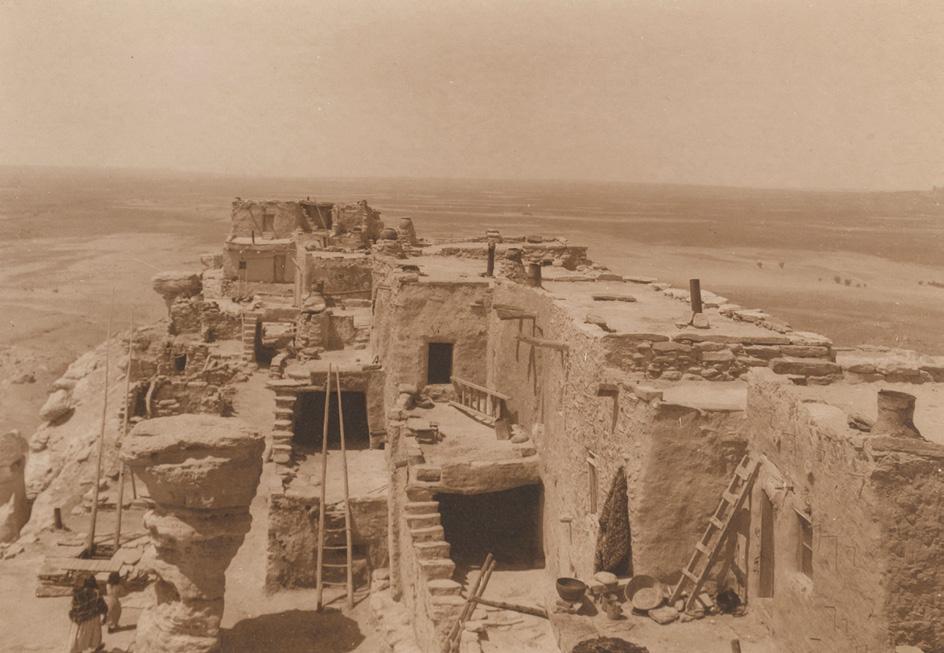
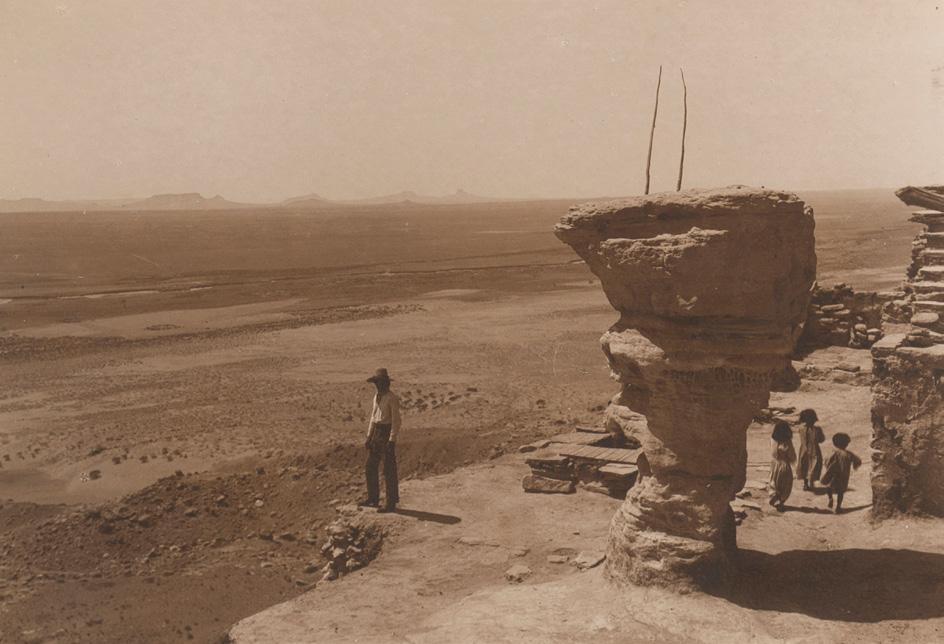



474
CURTIS, Edward (1868-1952). The North American Indian. Being a Series of Volumes Picturing and Describing the Indians of the United States and Alaska. Cambridge, MA: University Press, 1907. Volume 1.

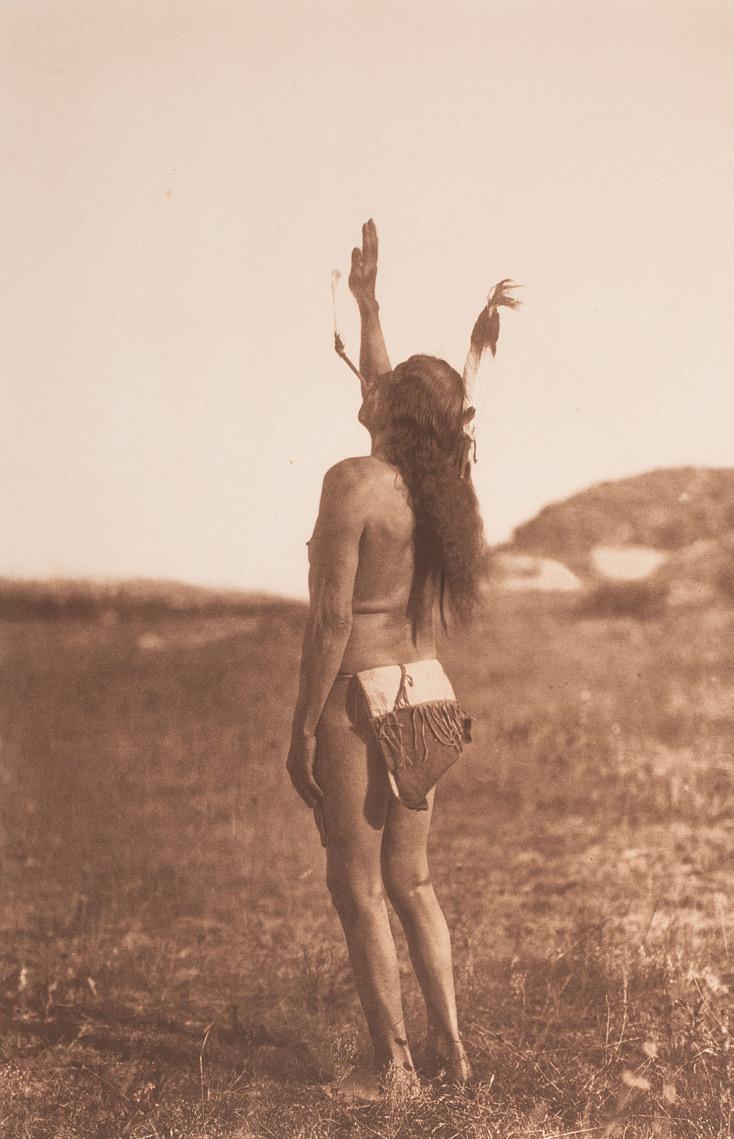
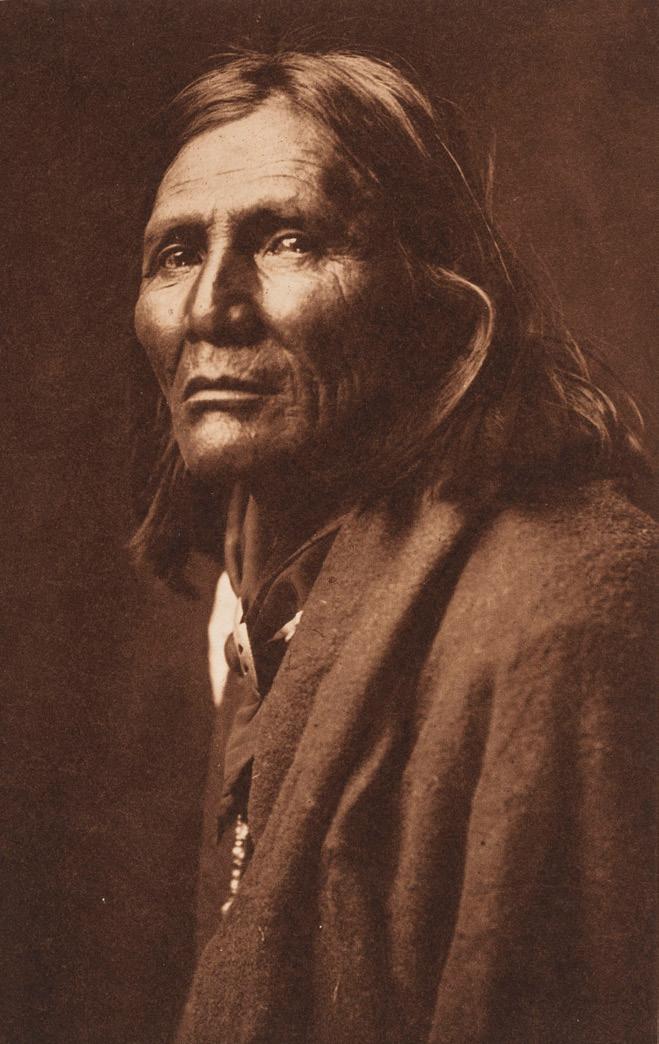
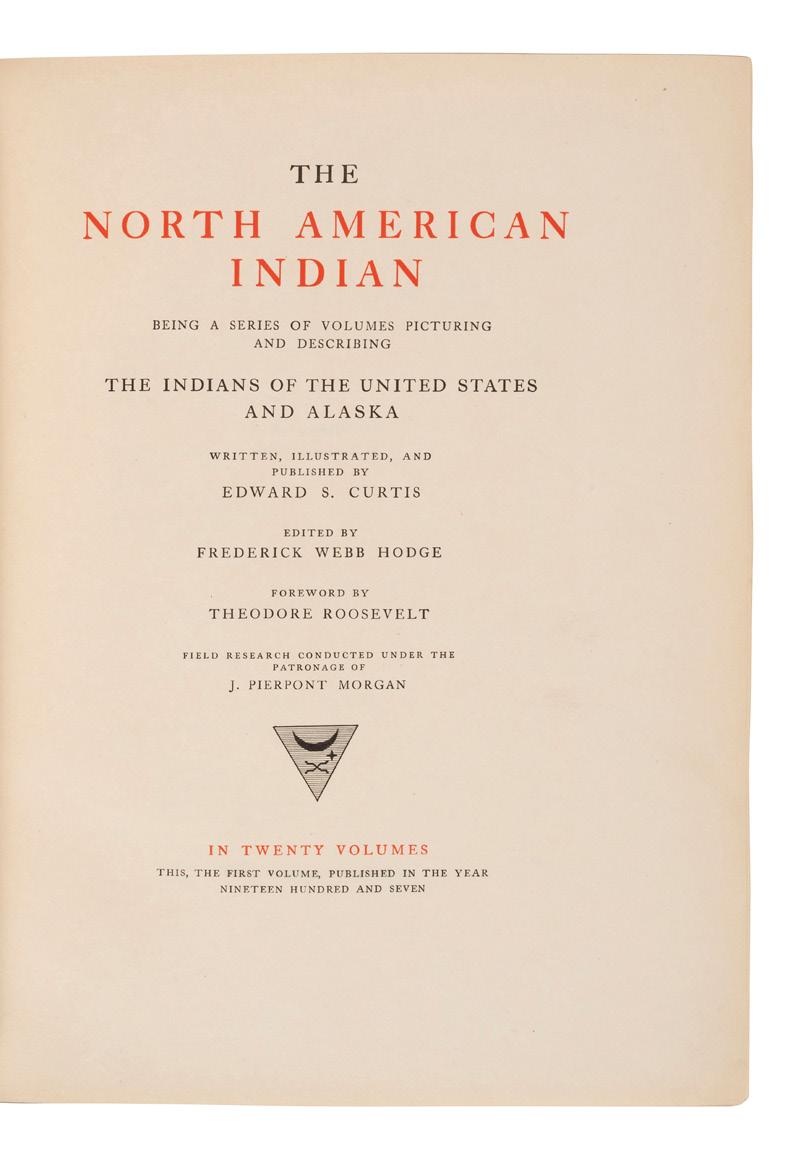
LIMITED EDITION, number 101 of 500 copies, this copy being on Japan vellum, including images of Apache, Jicarillas, and Navajo subjects
Property from the Collection of Stanley B. Slocum $5,000 - 7,000
475
477
CURTIS, Edward (1868-1952). A group of 2 portfolio photogravures featuring female Hopi subjects modeling traditional and modified hair styles.

Property from the Collection of Stanley B. Slocum
$500 - 700
478
CURTIS, Edward (1868-1952). A group of 25 portfolio photogravures from the North American Indian.
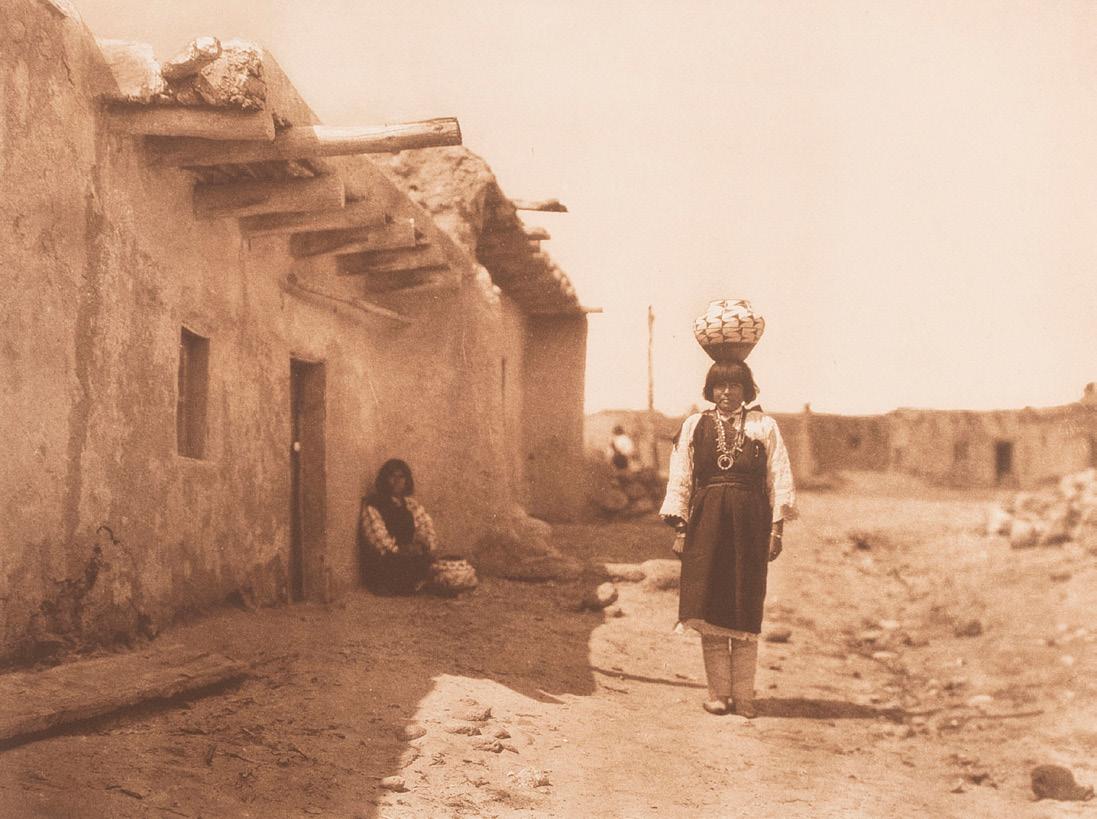

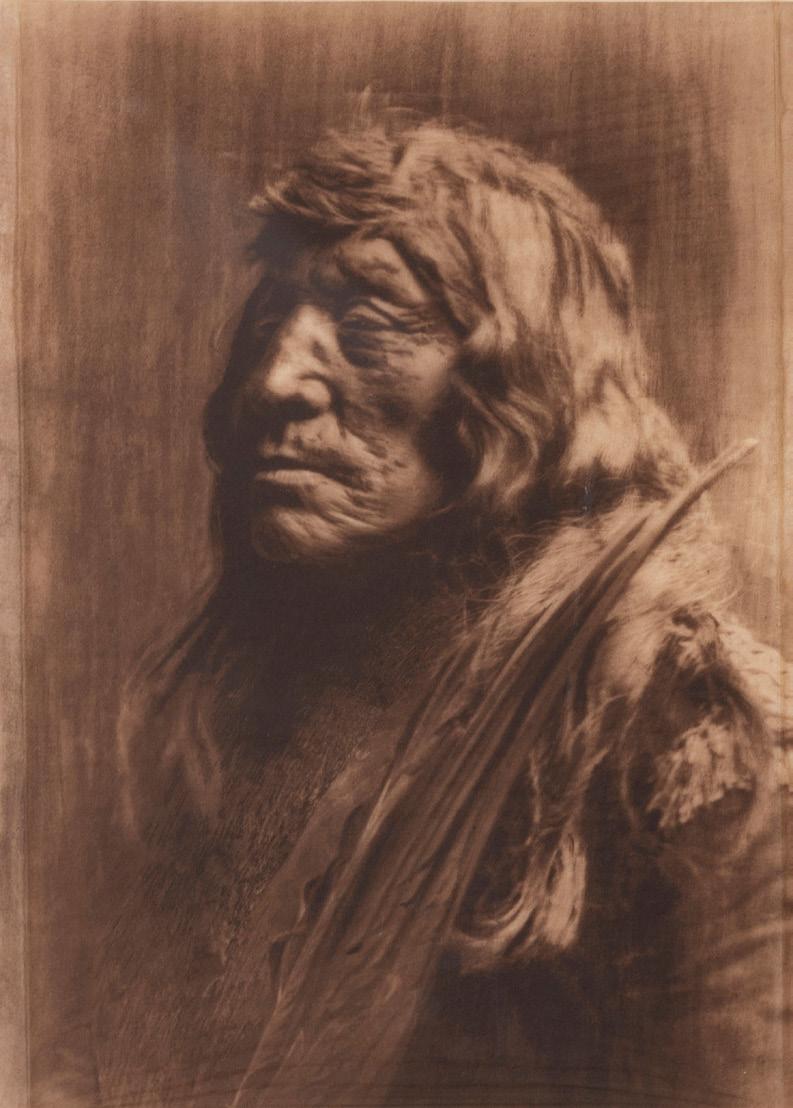
Property from the Collection of Stanley B. Slocum
$1,500 - 2,500
479
CURTIS, Edward (1868-1952). White Calf - Piegan. Portfolio photogravure.
$600 - 800
480 [NATIVE AMERICANS]. HILEMAN, Tomar J. (1882-1945), photographer. Turtle [Kalispell, Montana, ca 1911]. Photograph originally displayed at Hileman’s studio.
$1,000 - 1,500
481
[NATIVE AMERICANS]. HILEMAN, Tomar J. (1882-1945), photographer. Weasel Tail. [Kalispell, Montana, ca 1911]. Photograph originally displayed at Hileman’s studio.
$1,000 - 1,500
482
[NATIVE AMERICANS]. HILEMAN, Tomar J. (1882-1945), photographer. Turtle. [Kalispell, Montana, ca 1911]. Photograph originally displayed at Hileman’s studio.
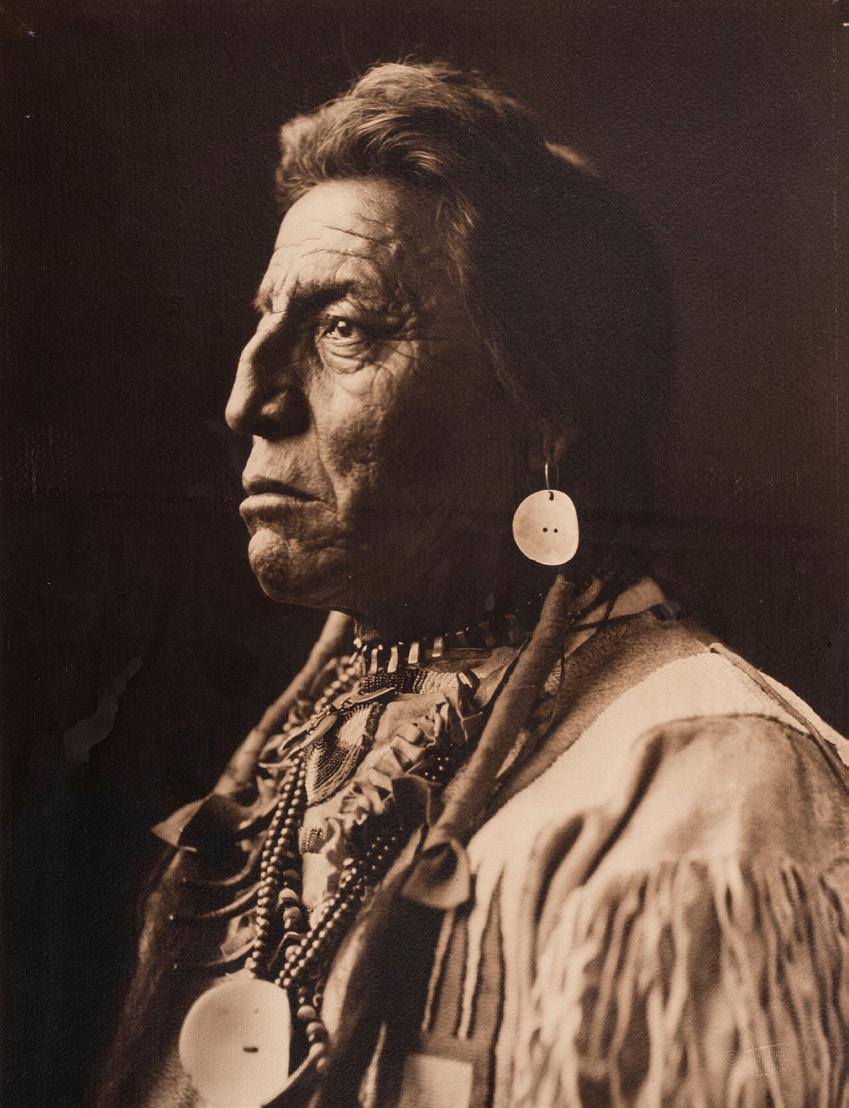


$1,000 - 1,500
483
[NATIVE AMERICANS]. HILEMAN, Tomar J. (1882-1945), photographer. Two Guns White Calf. [Kalispell, Montana, ca 1911]. Photograph originally displayed at Hileman’s studio.
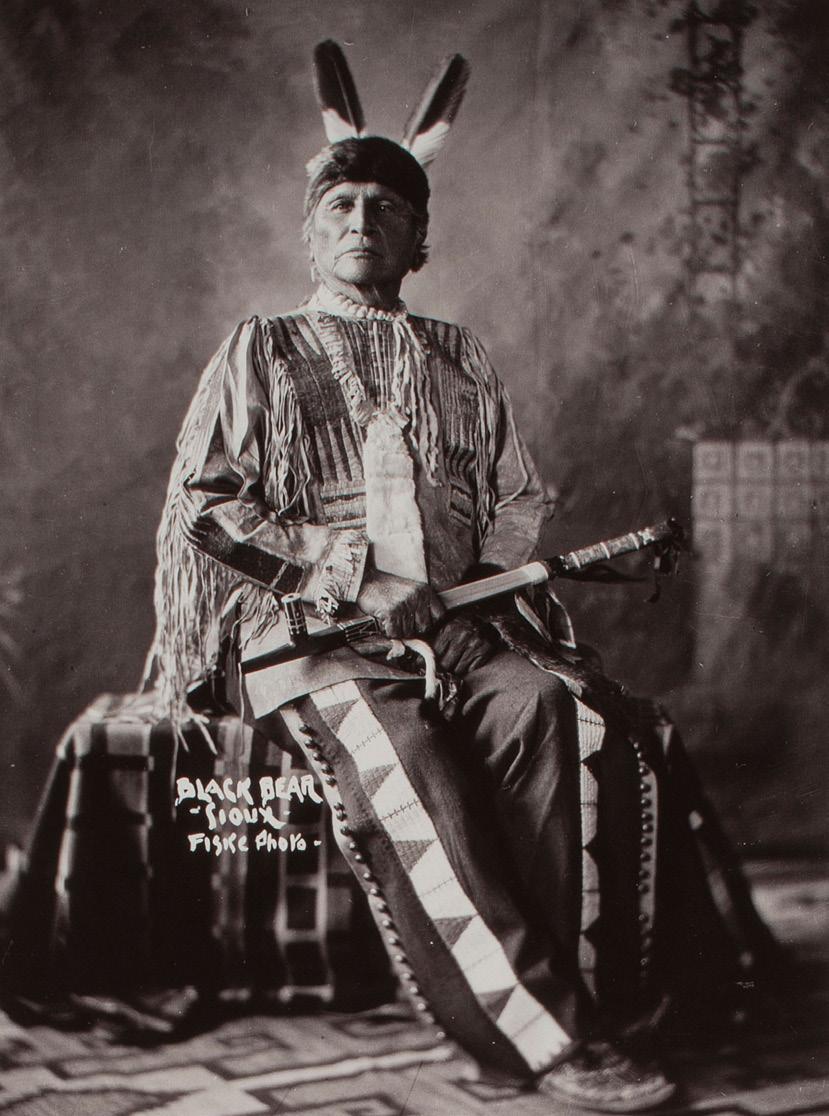
$1,000 - 1,500
484
FISKE, Frank B. (1883-1952). Portfolios I and II. 30 photographs, printed using the enlarged copy negatives made from the original glass plates at the State Historical Society of North Dakota. LIMITED EDITION, number 93 of 300 copies.
$1,000 - 1,500
485 [WESTERN AMERICANA] - - [NATIVE AMERICANS]. Collection of sketches drawn and compiled by U.S. Army officer Charles A.H. McCauley while serving in various military posts, including Native American ledger art from the Los Piños Ute Indian Agency.
Archive consisting almost entirely of more than 175 hand-drawn sketches, most created by career army officer Charles A.H. McCauley whose military service spanned nearly four decades. A talented artist, McCauley’s drawings depict the physical locations in which he served, but even more so are representative of the soldiers, civilians, and native inhabitants with whom he interacted. Included with McCauley’s sketches are more than 30 “ledger” drawings created by Native Americans of the Uncompahgre and Tabeguache Ute bands. Various places, ca 1875-1906. Provenance: By descent directly through the family of Captain (later Colonel) Charles A.H. McCauley to the present owner, Col. McCauley’s great-grandson.
AN EXCEPTIONAL COLLECTION FEATURING BEAUTIFULLY RENDERED EXAMPLES OF FRONTIER AND NATIVE AMERICAN ART.
Sketchbook with leather boards, 7 1/2 x 4 7/8 in., 51pp utilized, hand-titled on cover “Sketches among Black, White & Red Men by Lieut. McCauley, 3d Artillery, Asst. Engineer Dept Missouri, with the Ute Indian Commission in Colorado, New Mexico & Utah - 1878.” Interior ink inscription “Sketches by Lieut. McCauley 3d Artillery / Asst. Engineer Officer, Dept. Missouri / Fort Leavenworth, Kansas / with the / Ute Indian Commission / to the / Rocky Mountains / Colorado, New Mexico & Utah / in 1878.” Each page features either a pencil sketch by McCauley or a colored pencil sketch identified in McCauley’s hand to a Native American artist. McCauley’s drawings are typically portraits though occasionally he sketches scenes of frontier and military life. Notable sketches, most in pencil, include: “Residence of Ouray / Head Chief of the Tabeguache Utes / 9 miles north of Los Pinos Agency / Uncapahgre [sic] Agency, Colorado” dated 13 November 1878; “Madam Tom / The Squaw of a well-known Brave”; “Sketch of the The [sic] Old Saw Mill & the City thereof / 2/12 miles up the Uncapahgre [sic] River / south of Los Piños Indian Agency Colo” dated 15 November 1878; “The Symington Conservatory / on the / farm of the Los Piños Agency / Uncapahgre [sic] River Colo” dated 15 April 1878; and “’Old Colorado’ / or / Colorado Grande / Chief / of the Tabeguache Band / of Utes / Los Piños Agency / Uncapahgre [sic] River Colo” dated 14 November (?) 1878.
The 31 Native American sketches housed within McCauley’s sketchbook are consistently executed on a smaller piece of paper which is adhered to a sketchbook page. Plains ledger art emerged in the mid-nineteenth century as Native Americans adopted the medium as a means of historical representation. McCauley may have provided the sketch paper and drawing utensils to the artists whose work he collected for the express purpose of creating these drawings, as was common for military officers, traders, missionaries, and government agents to do during this period. The Native American artists are identified by McCauley in his manuscript inscriptions below the drawings, and include Ute men “Billy,” “Sam,” “Wass,” and “Young Shavano” as well as a Ute women “Stowt Wass.” The Ute artists portray warriors and warrior life, as well as other cultural elements such as hunting on the plains, horses, and tepees. Sketches all seem to have been made at Los Piños Agency. Notable sketches include: “’Old Colorow’ or Colorado grande as depicted by ‘Sam,’ A Rising Artist and Brave of the Tabequaches / Los Piños Agency / Westn Colorado” dated 11 November 1878; “Desperate Battle between Colorado Grande (Ute) and a Cheyenne as depicted by ‘Sam’ Artist of the Tabeguaches” dated 12 November 1878; “Fearful Fight between ‘Billy’ of the Tabeguache Utes and his mortal foe in the Arapahoes, resulting in death of the latter. Drawn by the Hero” dated 12 Noveber 1878; “Wass’ Favorite Squaw as drawn by Her ‘Old Man’ / ‘Stowt’ ne[?] Shavano, the Belle of the Tribe” dated 12 November 1878; “Wass’ Tepee drawn by Stowt His favorite Squaw” dated 14 November 1878; and “The Battle of the Blue fought A.D. 1861 between Ute and Arapohoe Chiefs” dated 12 (?) November 1878. Significantly, these drawings depict Ute life in their Colorado homeland. Roughly three years later, members of these bands would be removed from their ancestral lands and force-marched to a new reservation in Utah.
[With:] A group of 23 loose pencil sketches, ca 1876, most approx. 3 1/2 x 4 3/4 in., primarily portraits. Roughly 1/3 of the sketches appear to portray individuals of Native American or Mexican ethnicity. Captions include “Our Wagonmaster,” “The little Teamster,” “Belen 4-8-1876,” “’Lo’ at our camp near Los Lunas 4/9-76,” and “Albuquerque 4/-10-76.” - - Colored pencil sketch titled at bottom right “Pueblo of Taos, Near Mexico near North line of New Mexico 60 miles North of Santa Fe,” 26 1/4 x 10 in., ca 1876 (folds, chipping at edges particularly on upper right, approx. 1 3/4 in. tear top right). - - “Drawing Book,” ca 1876, 8 1/4 in x 6 3/4 in., 4pp utilized, with an assortment of ink drawings some of a comical and satirical nature. Also housing 3 loose ink sketches,

each approx. 5 1/2 x 5 3/4 in., showing comedic interpretations of western life and travel.
[With:] 3 1/2 x 5 3/4 in. sketchbook, missing cover but identified in ink on upper right corner “No.8 - 1875 / Colorado.” 42pp, each containing at least one pencil sketch, primarily portraits, though also scenes of western life. Many sketches are captioned. Folded within the notebook is a handwritten note “Rough sketches in the field - Various trips - Travelling with Lord Leigh, an English Nobleman as his guest in 1877, etc. in Rocky Mts, Colorado.” Though the date on the note does not match the date appearing on the sketchbook and various sketches, it seems the sketches may indeed be from a trip with Lord Leigh, as one is titled “Lord Leigh Unfinished Sketch.” Other captions include: “Me and My Pet” (apparently a self-portrait of McCauley), “Green Lake - the Cottage,” “Britton S. Hill Esq. St. Louis,” “Bound for Bear River Oct 3 - 75,” “Gansen the ‘boss’ Trout Fisherman of Hot Sulpher Springs,” “Ye grandHunt of My Lord - Oct 10 - 75,” “2d Day’s sport - A deer on the lookout,” and “”A day’s ‘sport’ of ‘my Lord’ - after antelopes - Unlucky Friday - Oct 22 1875.” Lord Leigh is likely the Honorable G.H.C. Leigh, a Liberal M.P. who died in Wyoming in 1884 while hunting. - - Blue pencil sketch, 8 1/2 x 5 1/2 in., portraying a figure identified in pencil as “Capt. McCauley / Drawn by / Call Her Na[me?] / Mar [?]” (significant chipping at edges affecting text and losses especially at bottom).
[With:] A group of six drawings and watercolors associated with McCauley’s duty in the Pacific Northwest and Alaska, each measuring approximately 6 5/8 x 10 in. One watercolor is captioned “Totem Poles, Fort Wrangel, Alaska. Drawn July 31, 1894, Major C.A.H. McCauley U.S. Army.” Another totem pole image is sketched and partially painted, with no caption. This image appears to be an earlier version of an August 1894 McCauley watercolor, “C.A.H. McCauley drawing of the totem pole of the Brown Bear and Crow (or Raven) Family” which is housed in the National Anthropological Archives, Smithsonian Institution. Three totem sketches are in pencil only, and are identified as “Sitka Miss Cork’s totem” and “Howkau” (2) respectively. The final watercolor is captioned “Douglas Mountains, Alaska.” - - Sketchbook with paper covers, 6 1/8 x 9 1/4 in., titled “Sketches on Islands of Panay, Negros, & Mindanao, Philippine Island 1903.” Book contains approximately 55 well-executed pencil sketches documenting a wide range of subjects including native inhabitants and culture, local architecture, wildlife, landscapes, and fellow soldiers, with most sketches bearing captions. - - Two loose sketches, both dated 1901, depicting scenes from the Philippines. - - Manuscript sermon, 18pp, 5 1/4 x 8in., “The Philippine Islands Missions, etc. / Grace Reformed Church Bayard & Dittridge Streets / Pittsburgh Pa / Wdy March 17 1909 / 8pm.”

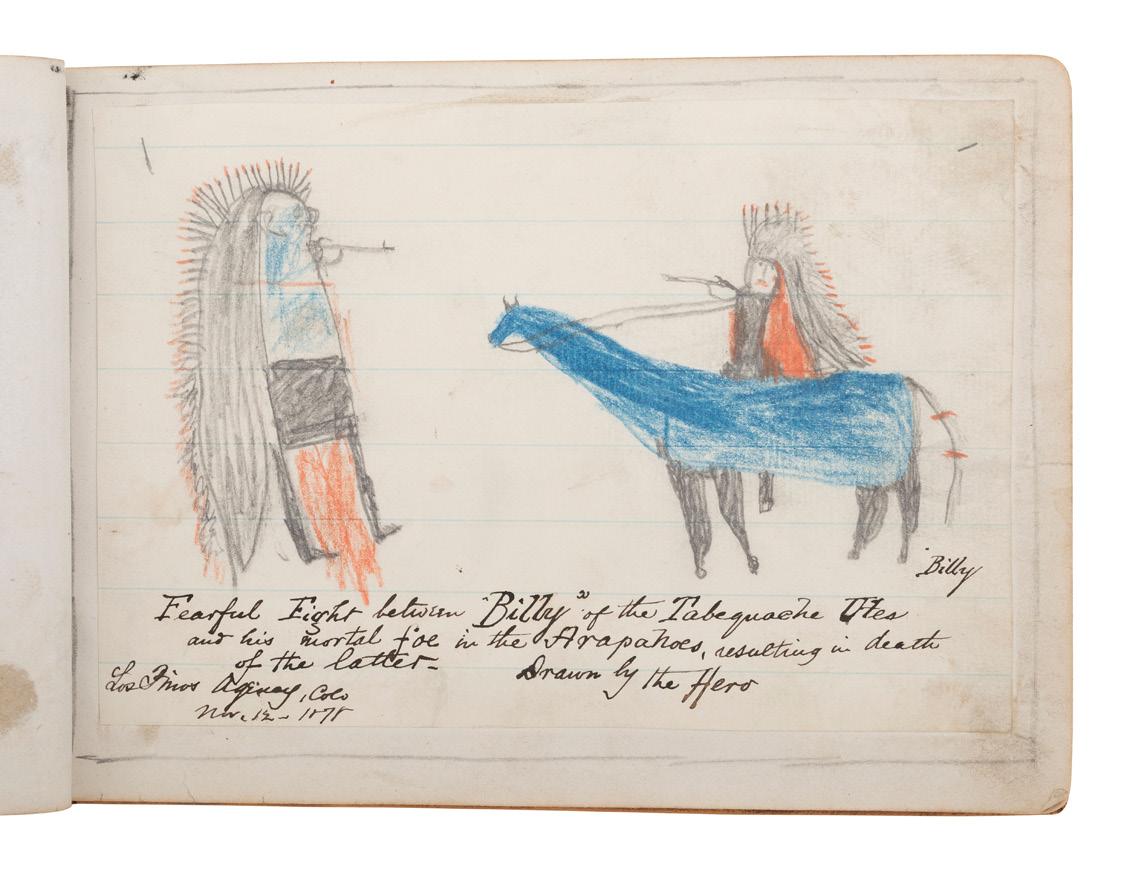
[Also with:] A 4 3/4 x 7 1/4 in. notebook sheet containing 12 English words/ phrases and their counterparts in an unidentified Native American language. -Small group of miscellaneous documents including several pages of McCauley family genealogical information. - - A cover from Colonel C.A.H. McCauley addressed to his daughter, Katherine Lay McCauley (1883-1945), with Denver, Colorado, cancellation, 1906, featuring a hand-drawn illustration.
Charles Adam Hoke McCauley (1847-1913) graduated West Point in 1870 and embarked upon a lengthy military career which included extensive service in the American West. McCauley was with the Survey of the Red River in Texas (1876); was in charge of San Juan Reconnaissance, Southwest Colorado and New Mexico (1877); and was with the Ute Indian Commission in Colorado and Utah (1878). From 1879-1882 McCauley was on frontier duty at Fort Steele, Wyoming, before taking charge of the supply depot at Rawlins, Wyoming Territory. Later frontier duty included service as Assistant Quartermaster of the Department of the Platte and Assistant Quartermaster of the Division of the Missouri. While serving as Purchasing and Disbursing Quartermaster at Portland, Oregon, McCauley spent time in Alaska during the 1890s. Following duty in Philadelphia prior to the Spanish-American War, McCauley was assigned in 1901 to the Philippines as Chief Quartermaster, Department South Luzon. Returning to the United States in 1903, he spent six more years in the service before retiring with the rank of Colonel in 1909. During his lifetime, McCauley authored several works on ornithology including “Ornithology of the Red River of Texas,” and he is credited as the inventor of the military system of signaling by mirrors. Additional publications by McCauley include “The San Juan Reconnaissance in Colorado and New Mexico” (1877), “Reports on the White River Indian Agency, Colorado, and the Uinta Indian Agency” (1879), and “Pagasa Springs, Colorado: It’s Geology and Botany” (1879).
It was during McCauley’s early period of frontier duty that the majority of the sketches in the archive were created. Though the nature of many drawings in the collection suggests that McCauley sketched for his private enjoyment, his work may have also been created for another more formal purpose. The 6 December 1879 issue of “Leslie’s Weekly” featured engravings related to the Meeker Incident/Ute Campaign of 1879, and credited the images as being “From Sketches by Lieutenant C.A.H. McCauley, Third U.S. Cavalry.” McCauley’s sketches may have been intended not just as a personal record of his travels and explorations, but also as documentation for newspapers, the army, and/or for his own publications.
$7,000 - 10,000
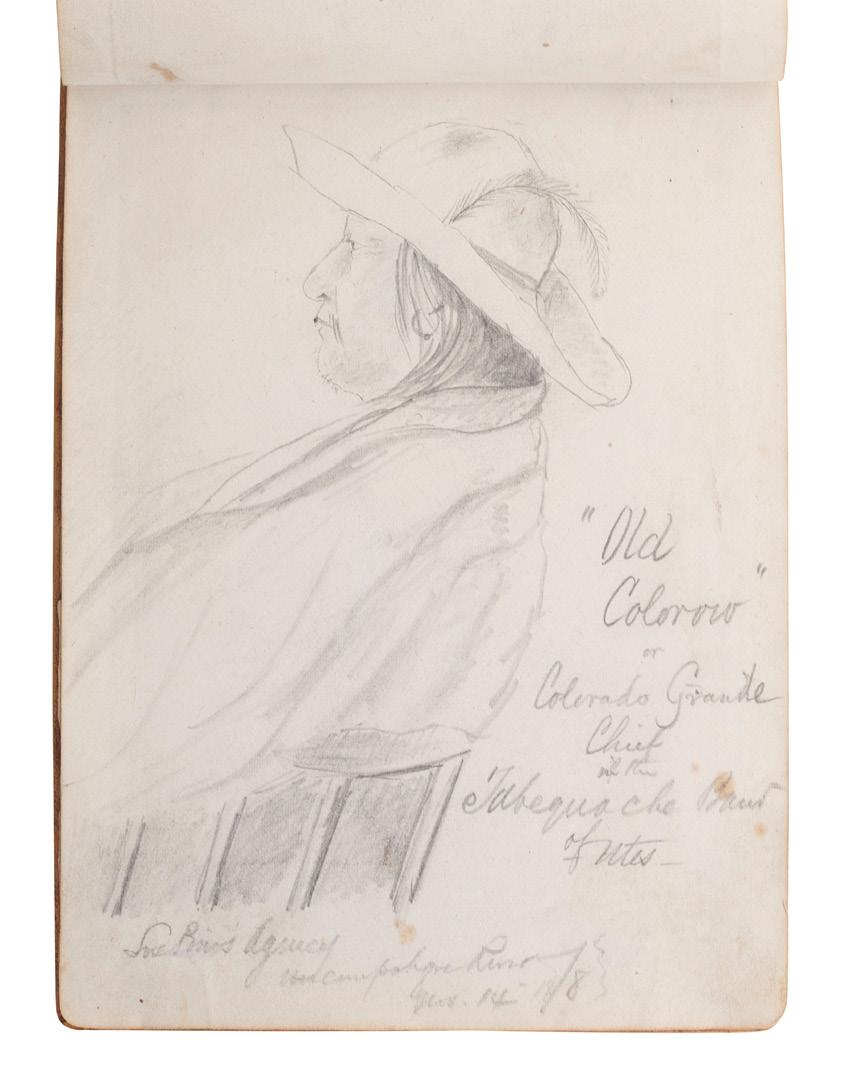
[JOHNSTON,

$500 - 700
486
[NATIVE AMERICAN] - - [GOLD RUSH]. An album of watercolor drawings by prospector George V. Storkey (ca 1867-1942) pertaining to British Columbian Indigenous people, possibly the Nlaka’pamux, ca late 1890s-early 1900s. Property from the Collection of Jonathan Holstein, San Francisco, California
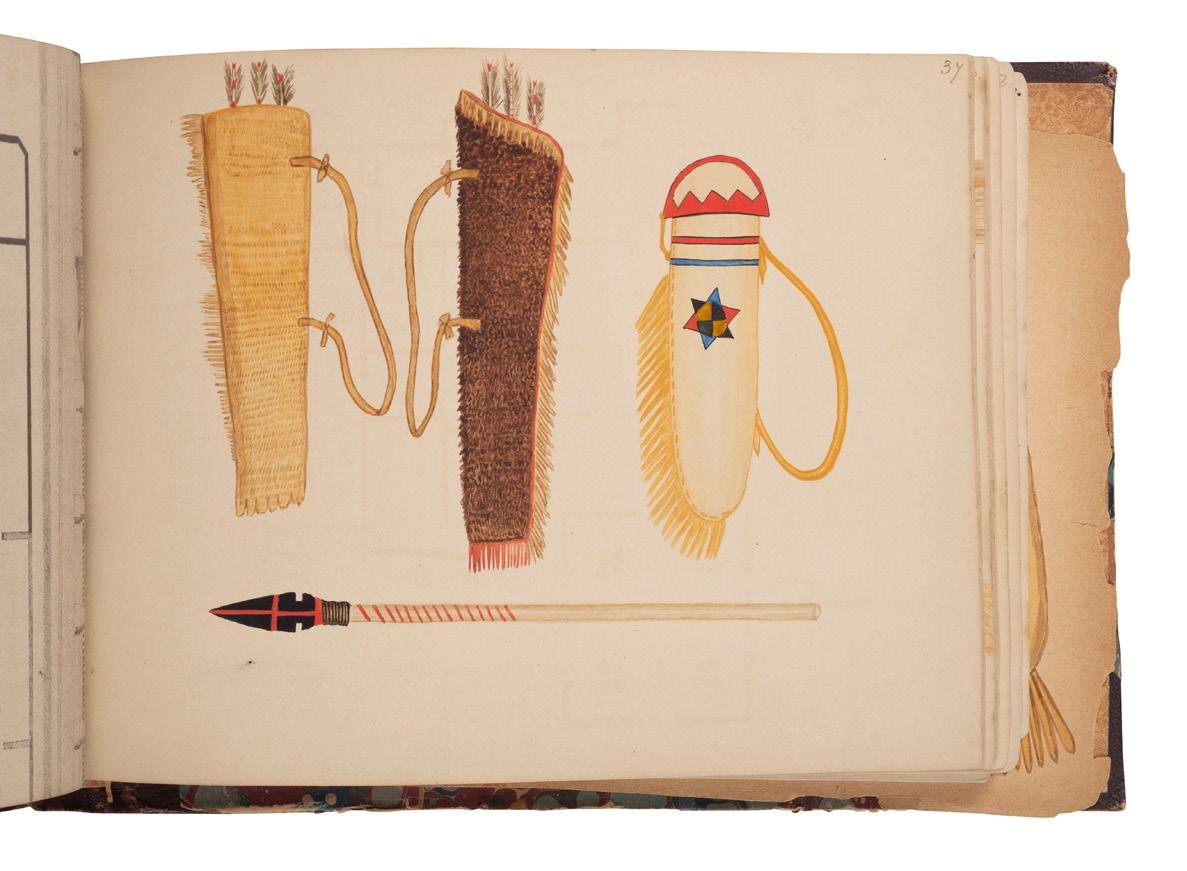
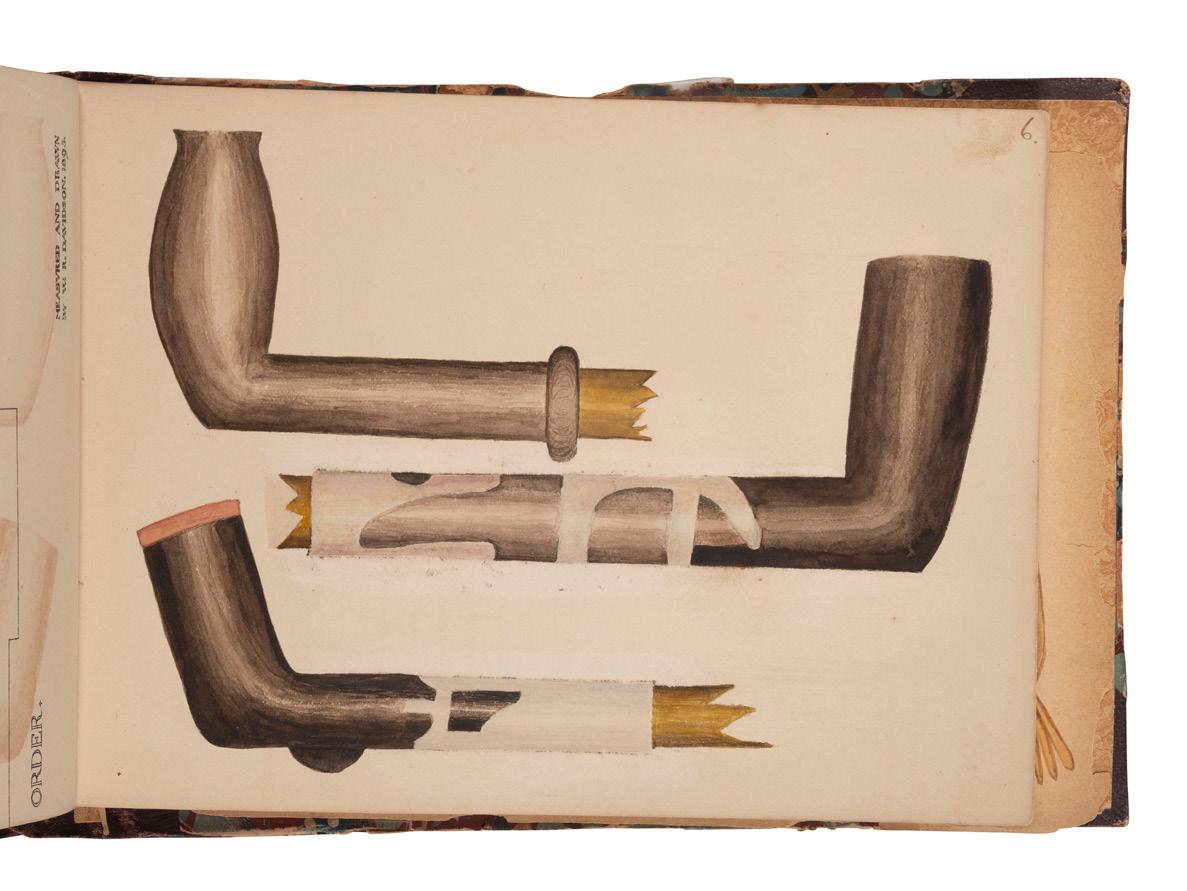
$4,000 - 6,000

488
[NATIVE AMERICANS]. PIERCE, Maris Bryant (1811-1874). Autograph letter signed (“M. B. Pierce”) as “Chief of the Seneca Nation.” Dartmouth College, 4 August 1837.
One page, on bifolium, 8 x 10 in. Addressed on integral leaf, postally used.
In this letter to Mrs. H. R. Storrs, Pierce writes, in full: “Here meets me the afflicting intelligence of the sudden death of your beloved husband and our most faithful friend. I cannot let this lamentable divine providence passed [sic] without having assured you & your family the deep sensation which we, the Senecas feel of our loss and I can say with certainty that all the Indian Nations East of Mississippi will lament & mourn of his departure. He has been our brother. He did not sit in silence when our destiny was about to be sealed in Congress but he stood up & with his strength defended our rights. This breach of the ranks of good men cannot be repaired, no one can fill his station. He therefore claims from us our expression of condolence for his loss and gratitude for his services.”

Maris Bryant Pierce was born on the Allegany Reservation, attending the Quaker-run Fredonia Academy and eventually graduating from Dartmouth College in 1840. During his time at Dartmouth, Pierce was appointed (along with 3 other attorneys) to legally represent the Senecas in opposing the Second Treaty of Buffalo Creek, which called for the sale of Seneca lands to the Ogden Land Company and the removal of the tribe to Oklahoma. Pierce went on to serve as an interpreter between the Senecas and the federal government, and to help the Seneca Nation to form an elective government before his death in August of 1874.
Henry Randolph Storrs (1787-1837) represented the state of New York in the US House of Representatives from 1817-1821 and 1823-1831, and was an outspoken critic of Andrew Jackson’s dealings with Native American tribes.
Property from the James Milgram, M.D., Collection of Broadsides, Ephemeral Americana, and Historical Documents
$700 - 1,000
489
[NATIVE AMERICAN]. ARMSTRONG, Charles D.
Property from the Collection of D. Zompolas, Grand-daughter of Chas. D. Armstrong
$5,000 - 7,000
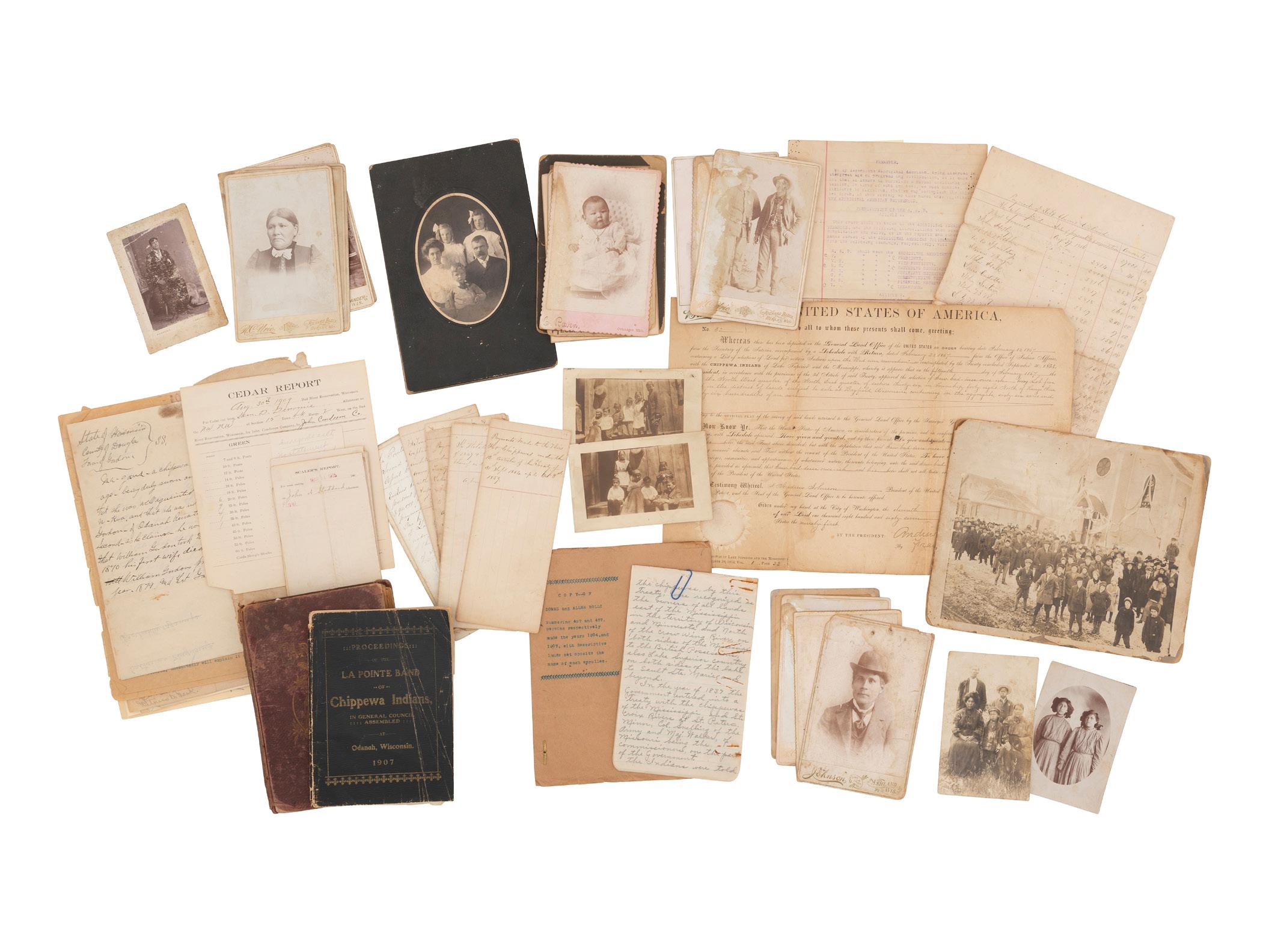
492 [DAKOTA TERRITORY]. Council Journal of the Second Session of the Legislative Assembly of the Territory of Dakota. Yankton, Dakota Territory: Kingsbury & Ziebach, 1862-3.
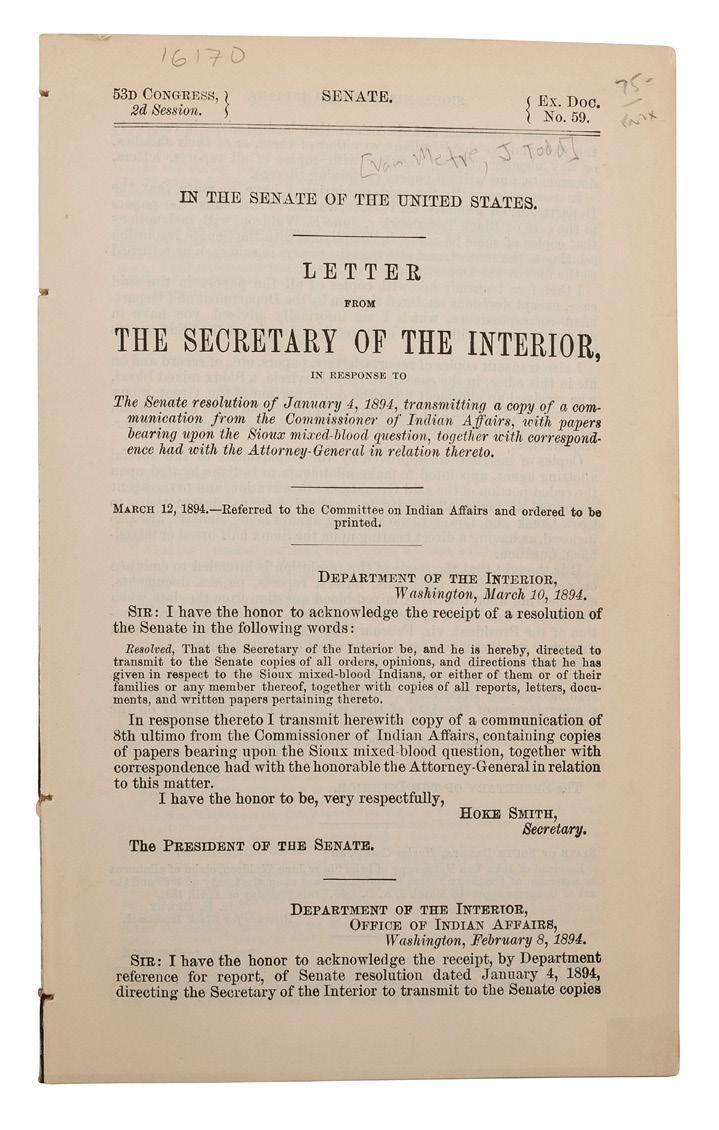

Property from the Patrick Atkinson Collection, Minneapolis, Minnesota
$300 - 500
490
[NATIVE AMERICANS] - - [HENDERSON, Daniel B. (1862-1940)]. An archive of letters and documents mostly related to Henderson’s work representing Native American interests of tribes near Fort Peck and Fort Belknap, Montana.
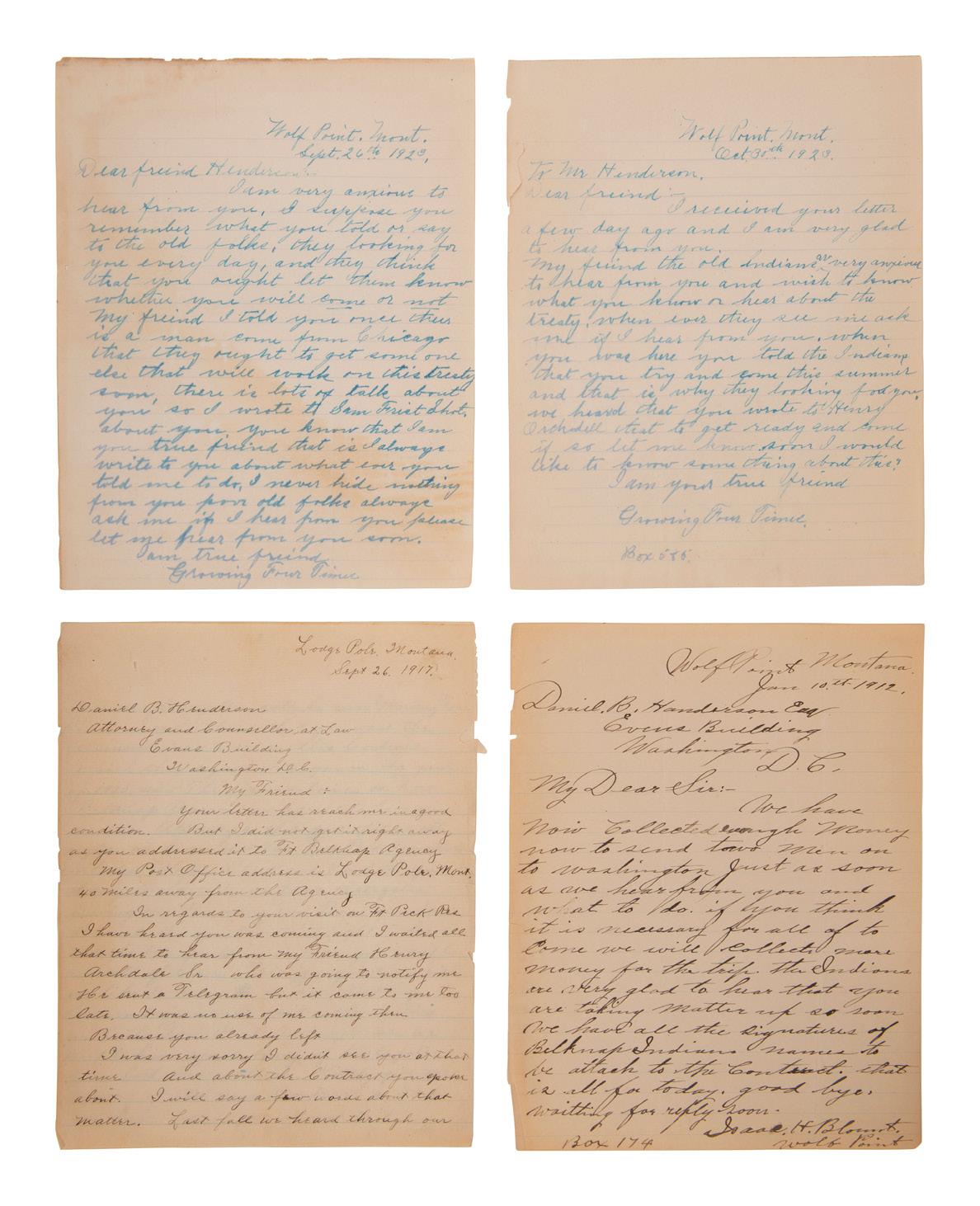
$600 - 800
493
[DAKOTA TERRITORY]. Articles of War, From the Revised Statutes of the United States. Edition of February 22, 1875. Headquarters Department of Dakota: N.p., 1 April 1876. 8vo. Stab-sewn in original wrappers; cloth folding case.
Property from the Patrick Atkinson Collection, Minneapolis, Minnesota
$300 - 500
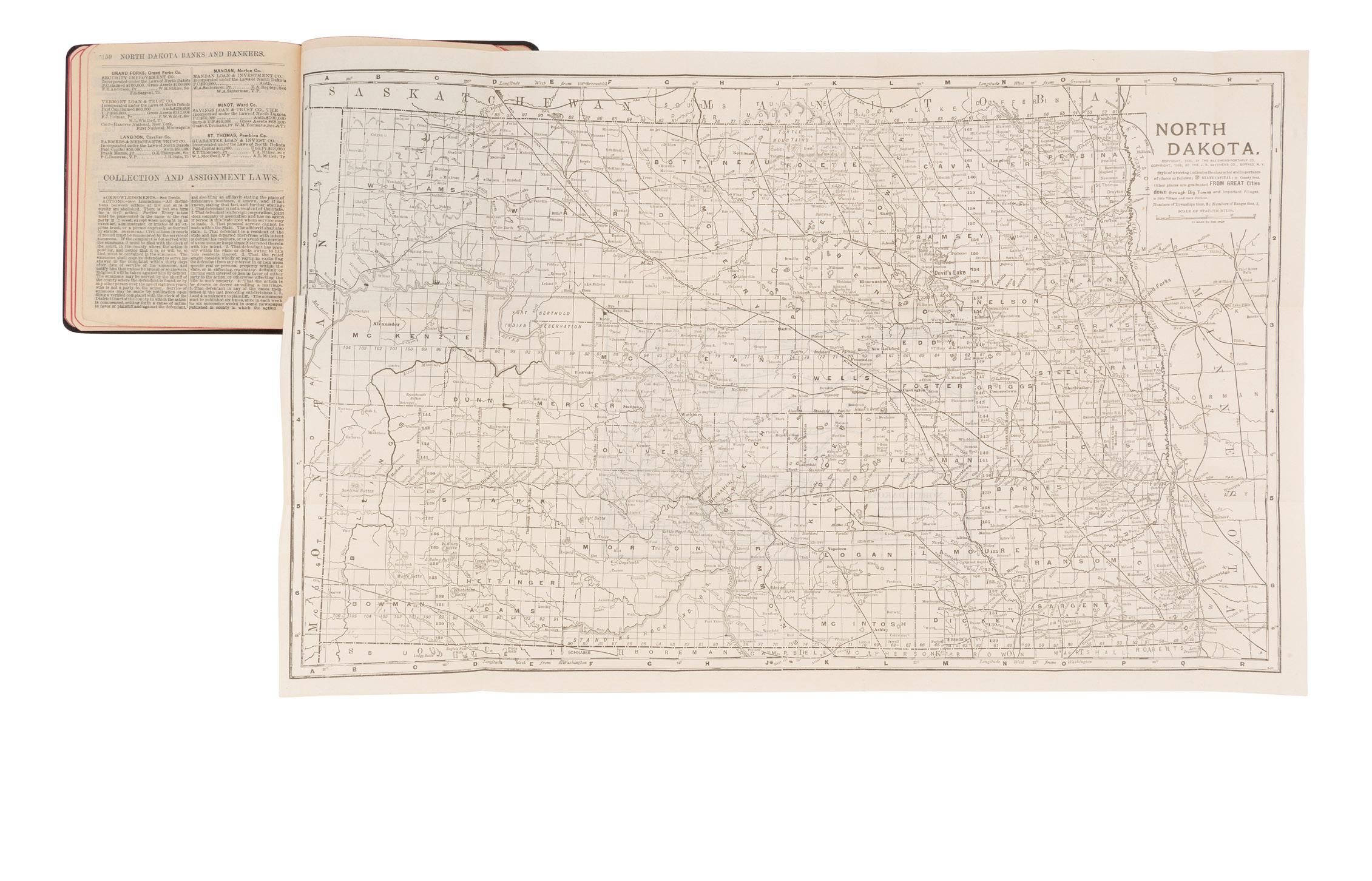
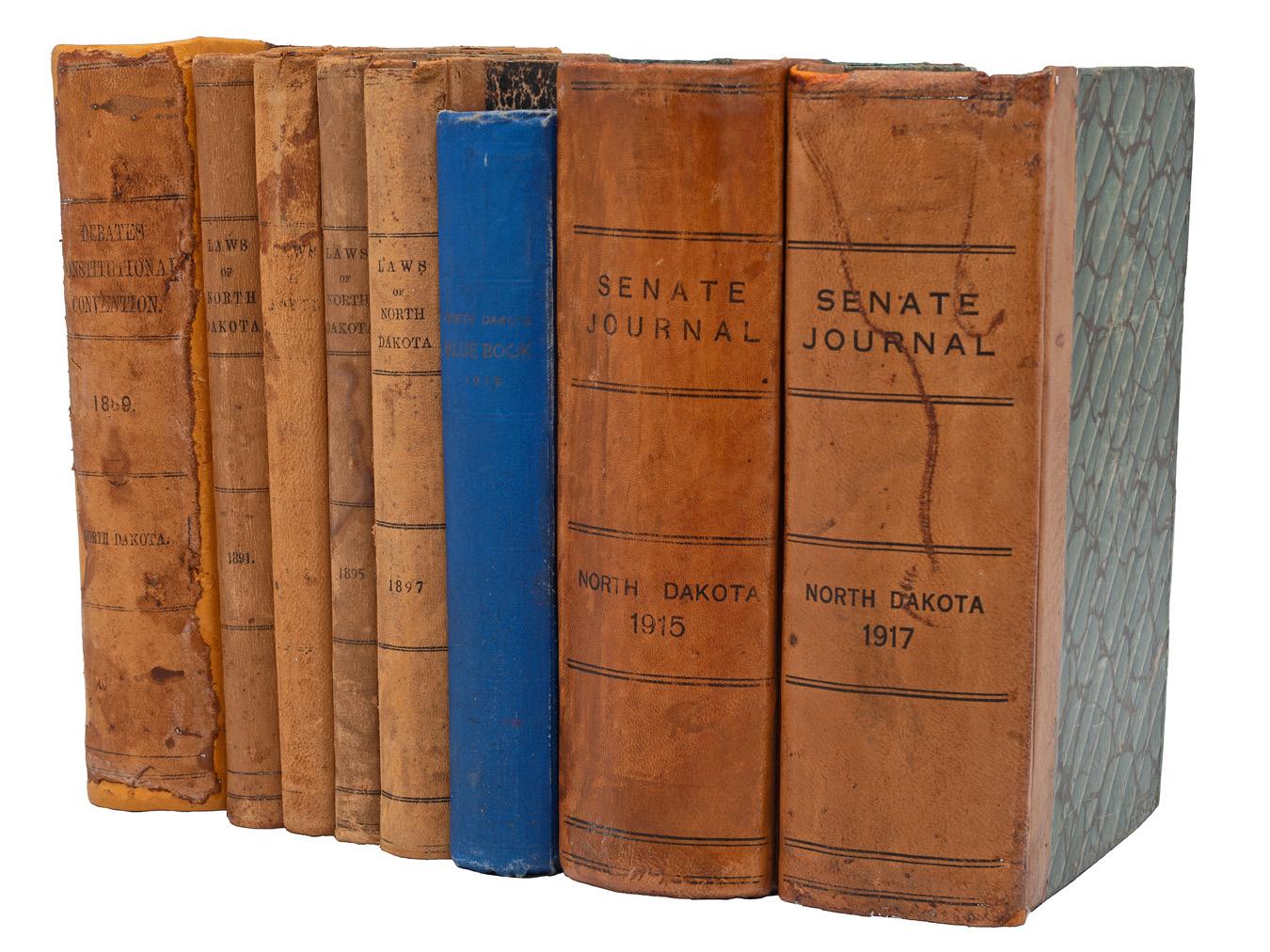
496 [WESTERN AMERICANA]. GRABILL, John C.H. (1849-1903), photographer. “A Mess Scene.” Scene on “Round Up” of 1887 in Dakota. [South Dakota], 1887. Property from the James Milgram, M.D., Collection of Broadsides, Ephemeral Americana, and Historical Documents

$500 - 700
498 [WESTERN AMERICANA]. GRABILL, John C.H. (1849-1903), photographer. Freighting in “The Black Hills.” Photographed between Sturgis and Deadwood. [South Dakota], 1887.
Property from the James Milgram, M.D., Collection of Broadsides, Ephemeral Americana, and Historical Documents
$500 - 700
497 [WESTERN AMERICANA]. GRABILL, John C.H. (1849-1903), photographer. Freighting in “The Black Hills.” Mrs. Canuteson of Rapid City, Dak. has been freighting with oxen to Rapid City, Sturgis and Deadwood for many years. [South Dakota], 1887.
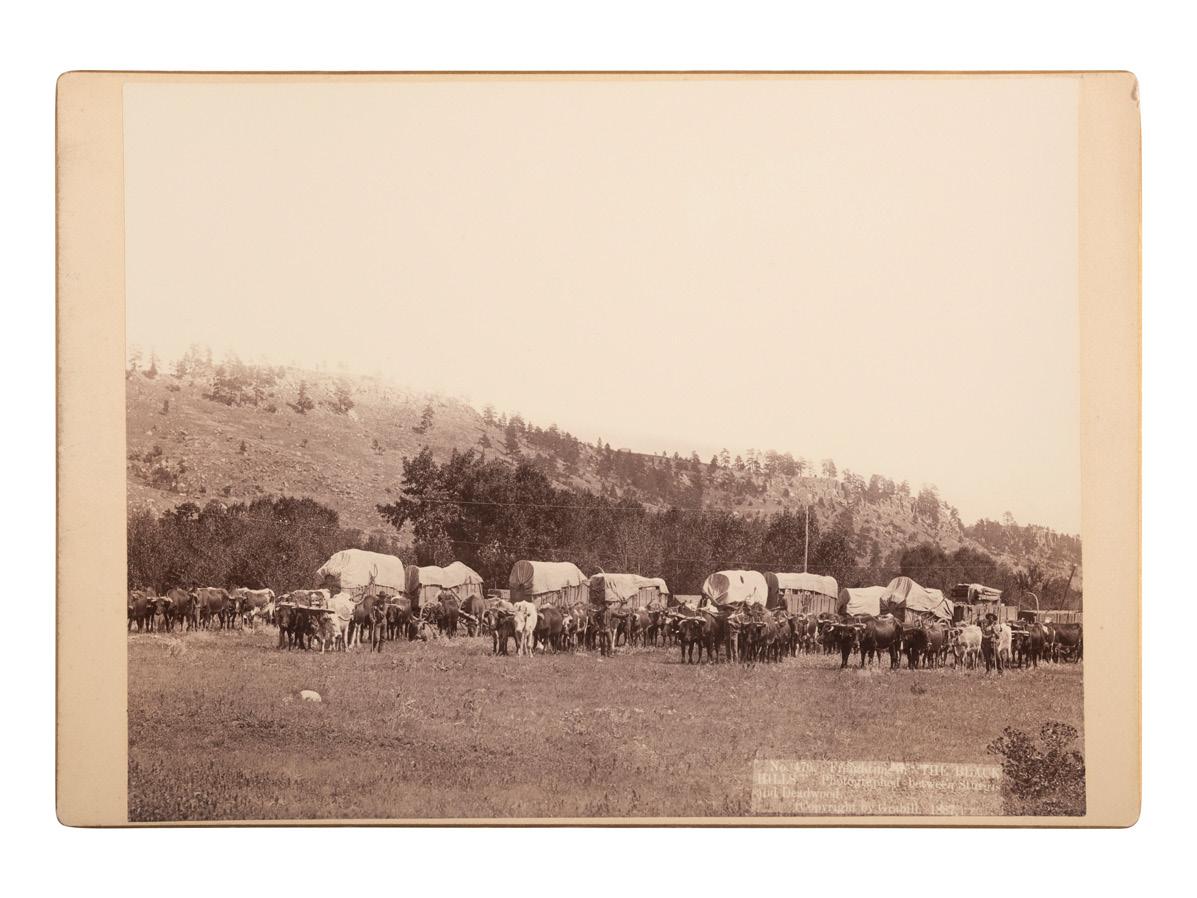
Property from the James Milgram, M.D., Collection of Broadsides, Ephemeral Americana, and Historical Documents
$400 - 600
499 [WESTERN AMERICANA]. GRABILL, John C.H. (1849-1903), photographer. “Stage Coach.” The Deadwood stage coach followed by the last US Treasure Coach. [South Dakota],1888.


Property from the James Milgram, M.D., Collection of Broadsides, Ephemeral Americana, and Historical Documents
$500 - 700
500
[WESTERN AMERICANA]. GRABILL, John C.H. (1849-1903), photographer. Tallyho Coaching. Sioux City party Coaching at the Great Hot Springs of Dakota. [South Dakota], 1889.
Property from the James Milgram, M.D., Collection of Broadsides, Ephemeral Americana, and Historical Documents
$500 - 700
502
[WESTERN AMERICANA]. Photograph of a camp scene. Property from the James Milgram, M.D., Collection of Broadsides, Ephemeral Americana, and Historical Documents
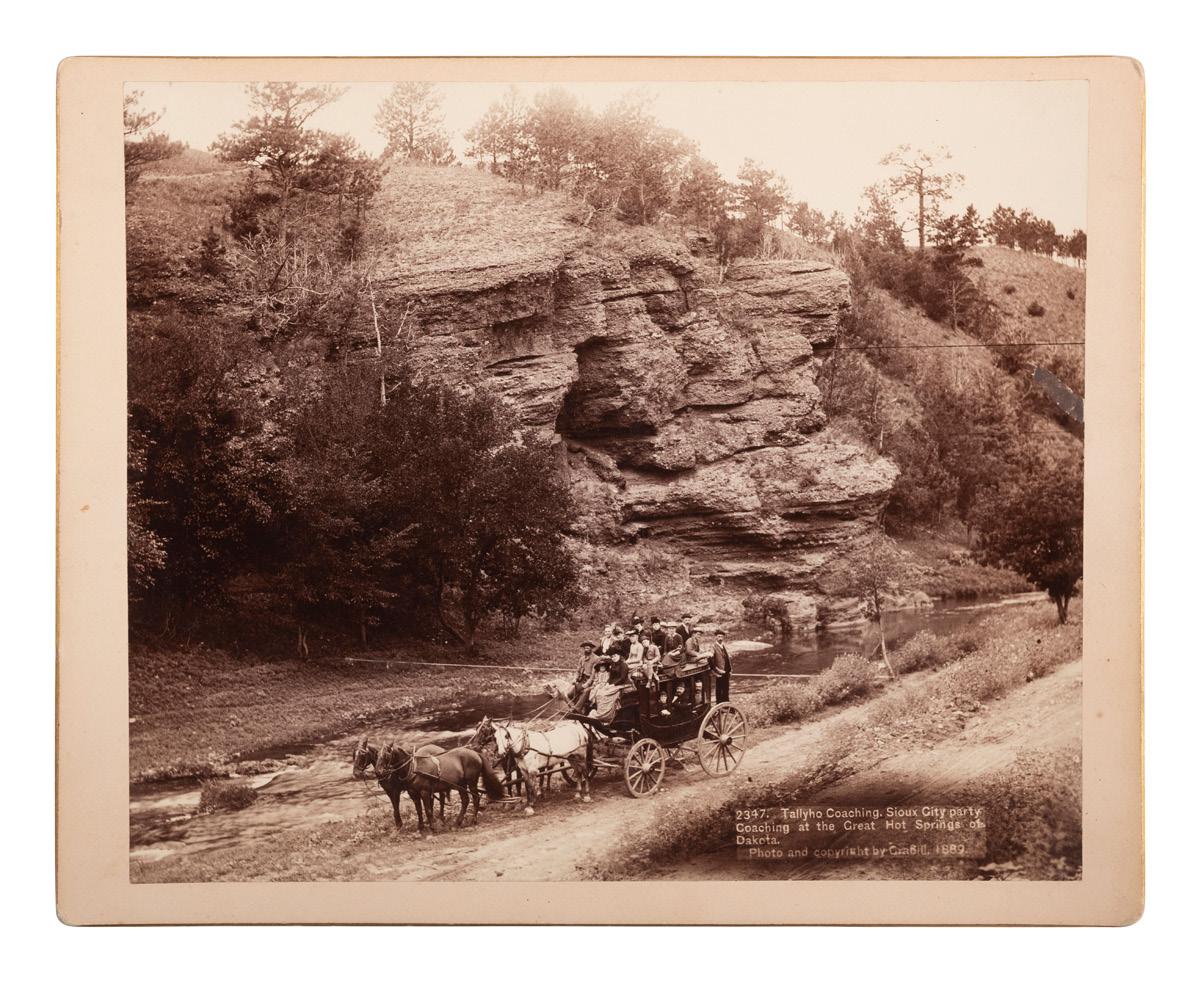

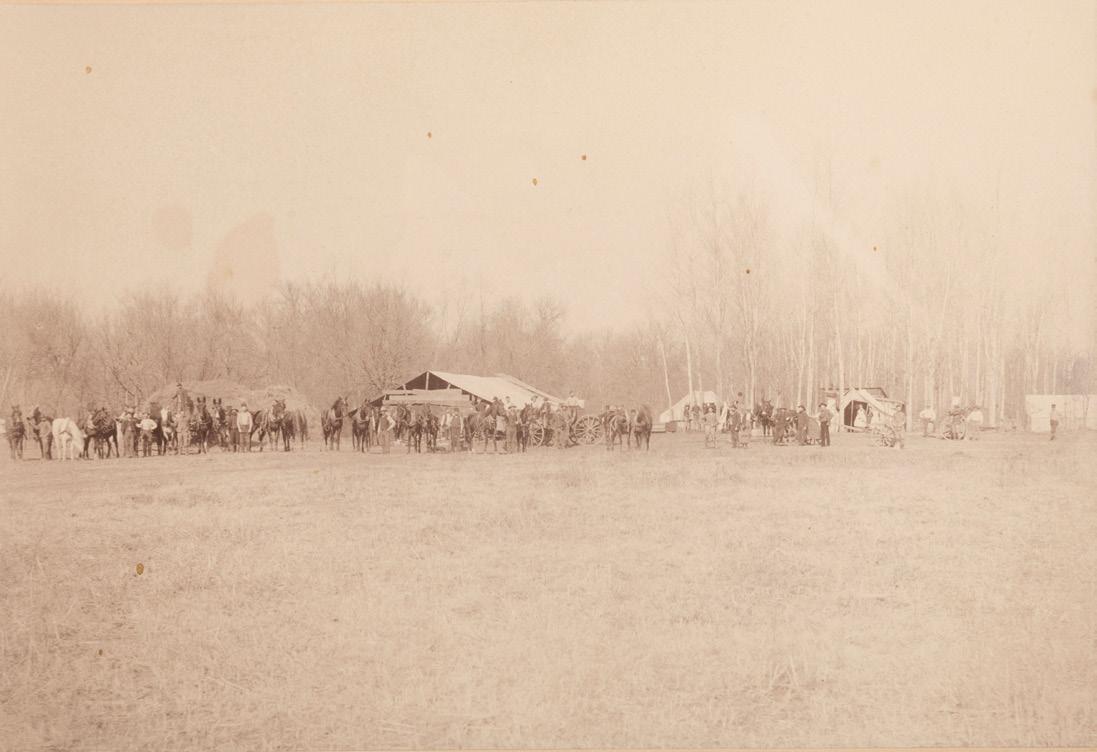
$300 - 500
501
[WESTERN AMERICANA]. GRABILL, John C.H. (1849-1903), photographer. Happy Hours in Camp. G. and B. & M. Engineers Corps and Visitors. Deadwood, South Dakota, 1889.
Property from the James Milgram, M.D., Collection of Broadsides, Ephemeral Americana, and Historical Documents
$600 - 800
503
[WESTERN AMERICANA]. A group of 2 photographs of surveyors with equipment, incl. example by John C.H. GRABILL, South Dakota, 1888. Property from the James Milgram, M.D., Collection of Broadsides, Ephemeral Americana, and Historical Documents
$600 - 800
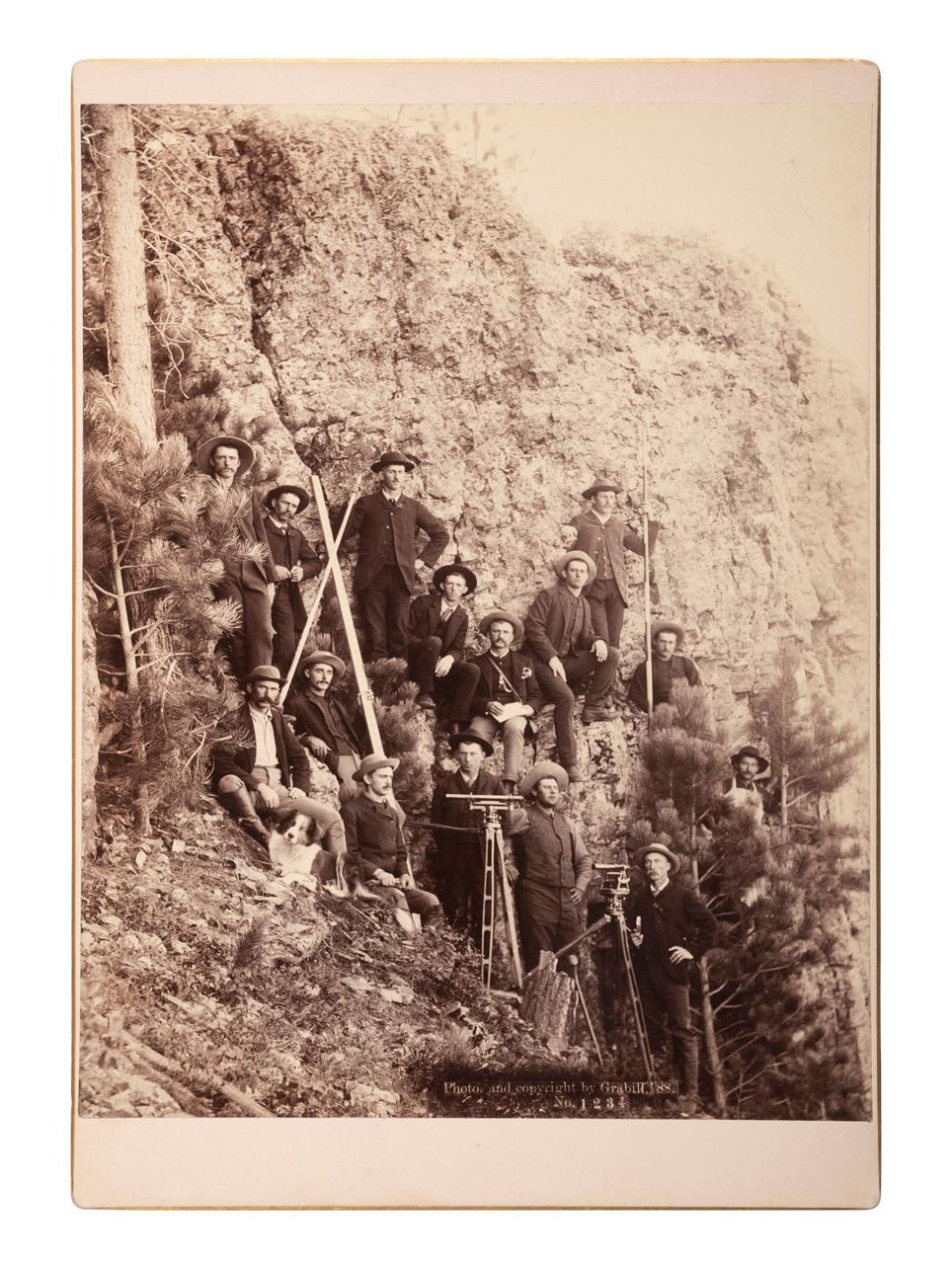
504 [WESTERN AMERICANA]. GRABILL, John C.H. (1849-1903), photographer. “Hunting Deer.” A deer hunt near Deadwood in winter ‘87 and ‘88. [South Dakota], 1888.

Property from the James Milgram, M.D., Collection of Broadsides, Ephemeral Americana, and Historical Documents
$500 - 700
506 [WESTERN AMERICANA]. GRABILL, John C.H. (1849-1903), photographer. The Interior. “Clean Up” day at the Deadwood Terra Gold Stamp Mill; one of the Homestake Mills, Terraville, Dakota. 1888.
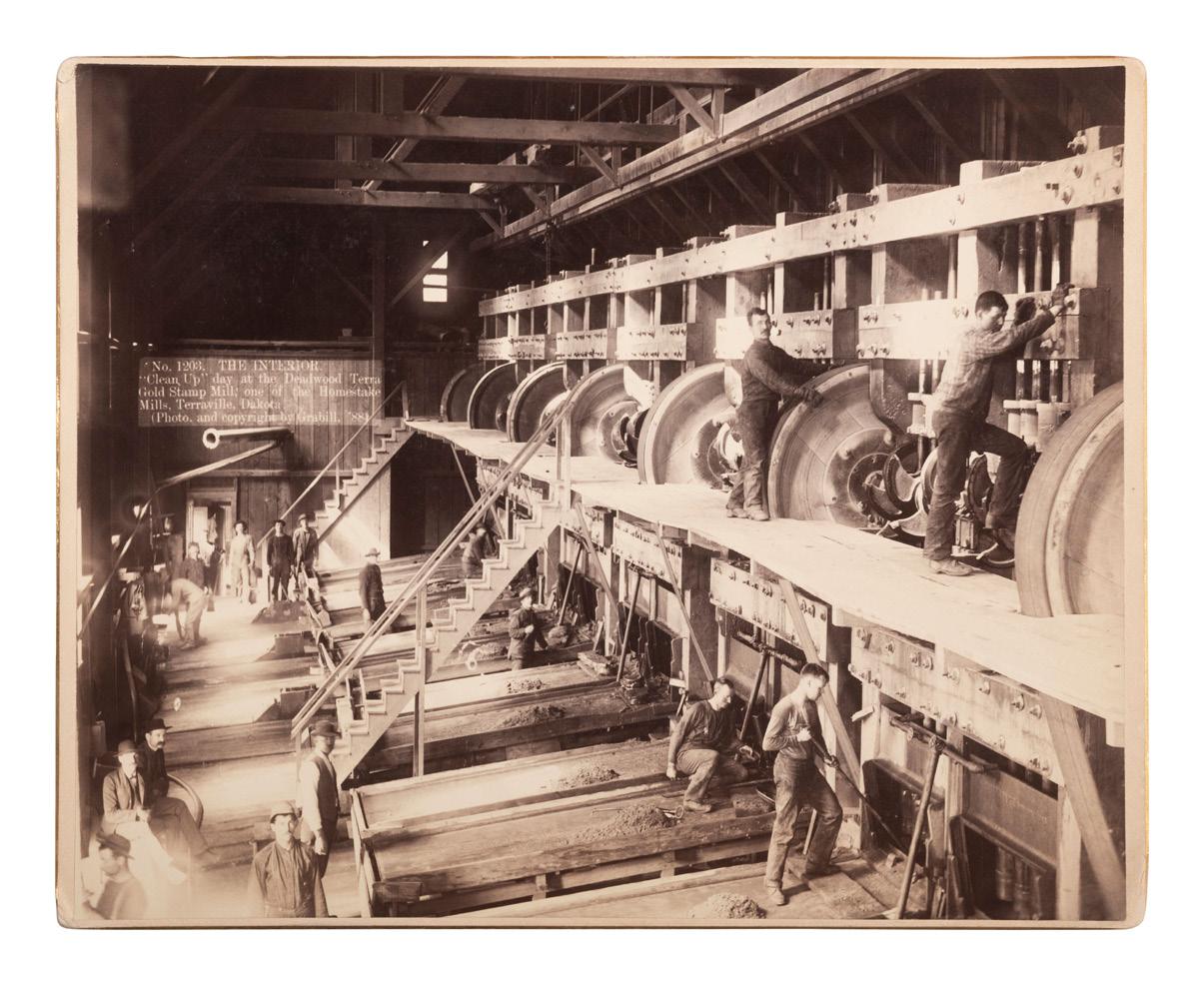
Property from the James Milgram, M.D., Collection of Broadsides, Ephemeral Americana, and Historical Documents
$500 - 700
505 [WESTERN AMERICANA]. GRABILL, John C.H. (1849-1903), photographer. “Deadwood, Dakota” (A part of the City from Forest Hill). [South Dakota], 1888.

Property from the James Milgram, M.D., Collection of Broadsides, Ephemeral Americana, and Historical Documents
$800 - 1,200
507 [WESTERN AMERICANA]. GRABILL, John C.H. (1849-1903), photographer. Open Cut in the great Homestake Mine, at Lead City, Dakota. 1888.
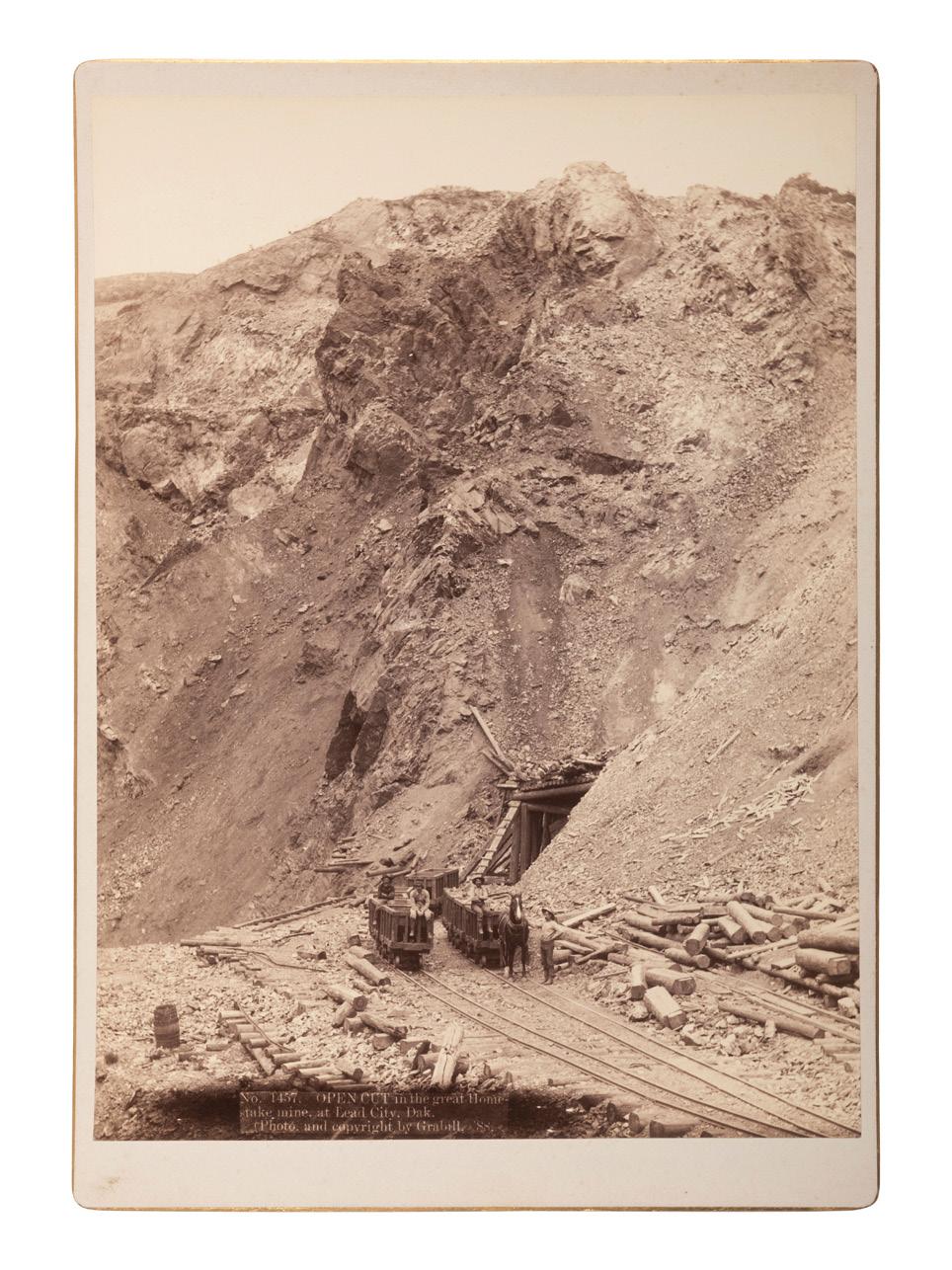
Property from the James Milgram, M.D., Collection of Broadsides, Ephemeral Americana, and Historical Documents
$500 - 700
$300 - 500
$700 - 900
510 [IDAHO TERRITORY]. THOMPSON, David P. (1834-1901). Autograph letter signed (“D. P. Thompson”), as Idaho Territory Governor, to Ulysses S. GRANT. Boise City, ID, 16 July 1876.

Property from the James Milgram, M.D., Collection of Broadsides, Ephemeral Americana, and Historical Documents

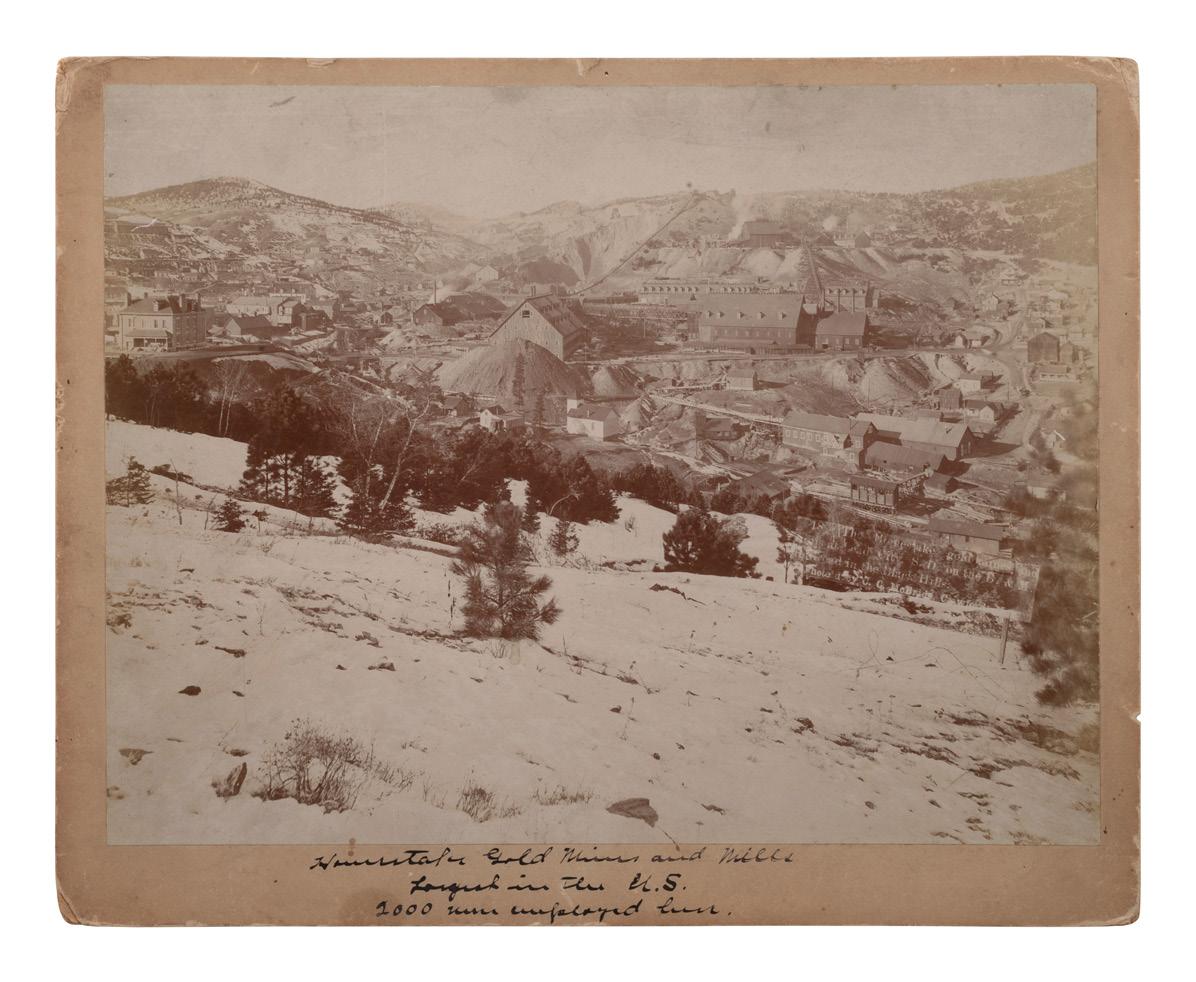
$300 - 500
511
HOUSTON, Sam (1793-1863). Land grant signed (“Sam Houston”), as Governor of Tennessee. 12 September 1828.
$1,500 - 2,500
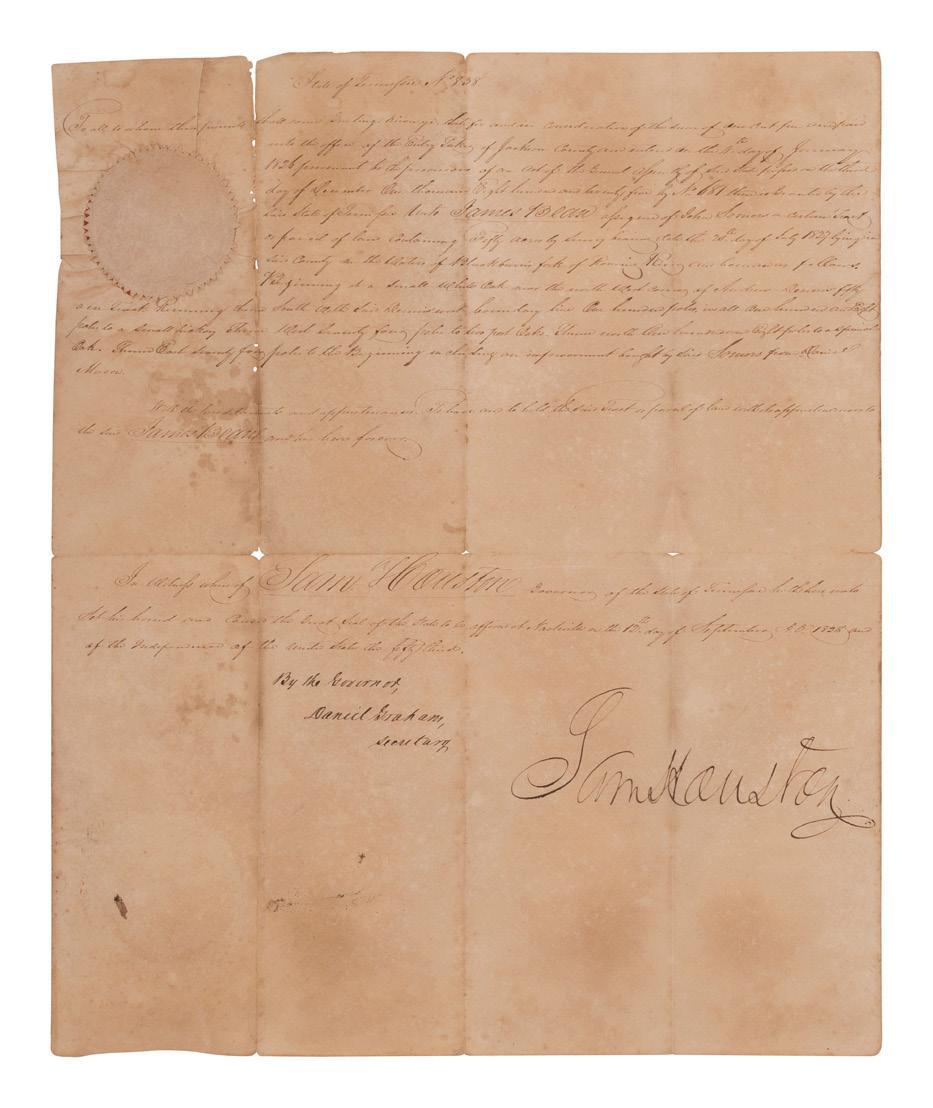
512 [TEXAS - HOUSTON, Sam (1793-1863)]. CDV of General Houston seated with cane. N.p., ca 1860.

$400 - 600
513 [TEXAS INDEPENDENCE]. The Frankfort Commonwealth. Vol. 4, No. 174. Frankfort, KY: Brown & Hodges, 8 June 1836. Report on the Battle of San Jacinto.
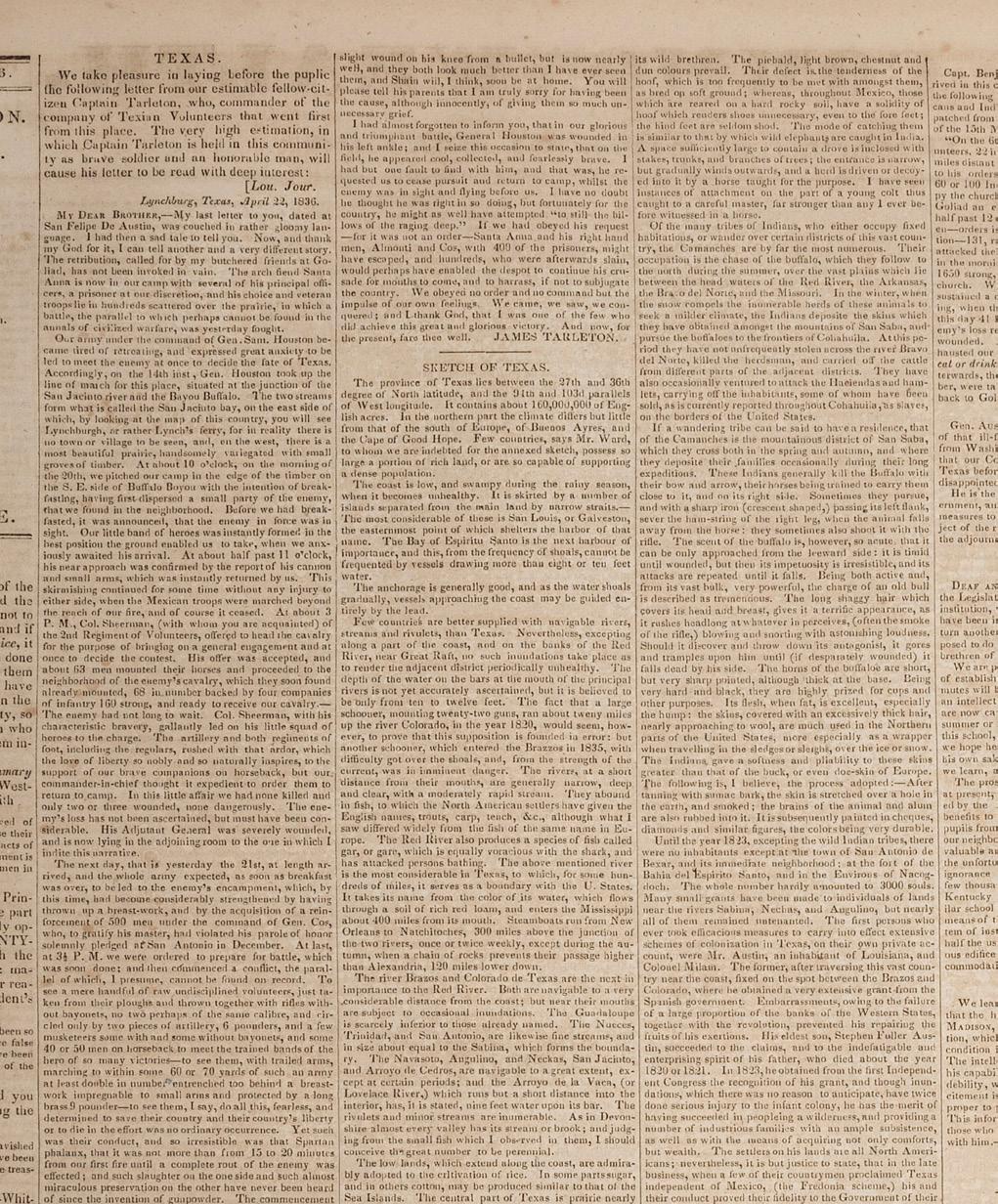
$500 - 700
514 [TEXAS]. UPSHAW, Horace L. Autograph letter signed twice (“H. L. Upshaw,” “H. Upshaw”), to George W. Blow Jr. San Antonio, 16 February 1845.
3 1/2 pages, 4to, on a bifolium, addressed on an integral leaf, with portion of wax seal
DISCUSSING THE DEATH OF JOHN WILLIAM SMITH, THE FIRST MAYOR OF SAN ANTONIO UNDER THE REPUBLIC
Upshaw writes to George W. Blow Jr.: “Through the medium of the newspapers or otherwise you have doubtless e’er this heard of the death of our old friend John W. Smith, senator from this county, who died in Washington on the 10th ult. while there attending to his duties; he died of some disease of the lungs or chest incidental to the Brazos of Trinity Country & of which the physicians know nothing, he was not aware of his condition & became speechless several days before his demise and was consequently unable to attend to any kind of business.”

Smith moved to Mexican Texas and settled in San Antonio in 1826. He fought in the Texas Revolution, serving as a messenger during the Siege of the Alamo. Before the final battle of the Alamo (and its fall), Smith was sent with a message to Washington-on-the-Brazos, assuring his escape from the fate of the Texas soldiers who were defending San Antonio. He was elected Mayor of San Antonio in 1837, and served until 1838. He was elected as Mayor again in 1840, serving until 1844. He served as a Texas Senator from 1842 until his death, most likely from pneumonia, and was buried at the Washington-on-theBrazos State Historical Park.
Property from the James Milgram, M.D., Collection of Broadsides, Ephemeral Americana, and Historical Documents
$300 - 500
515
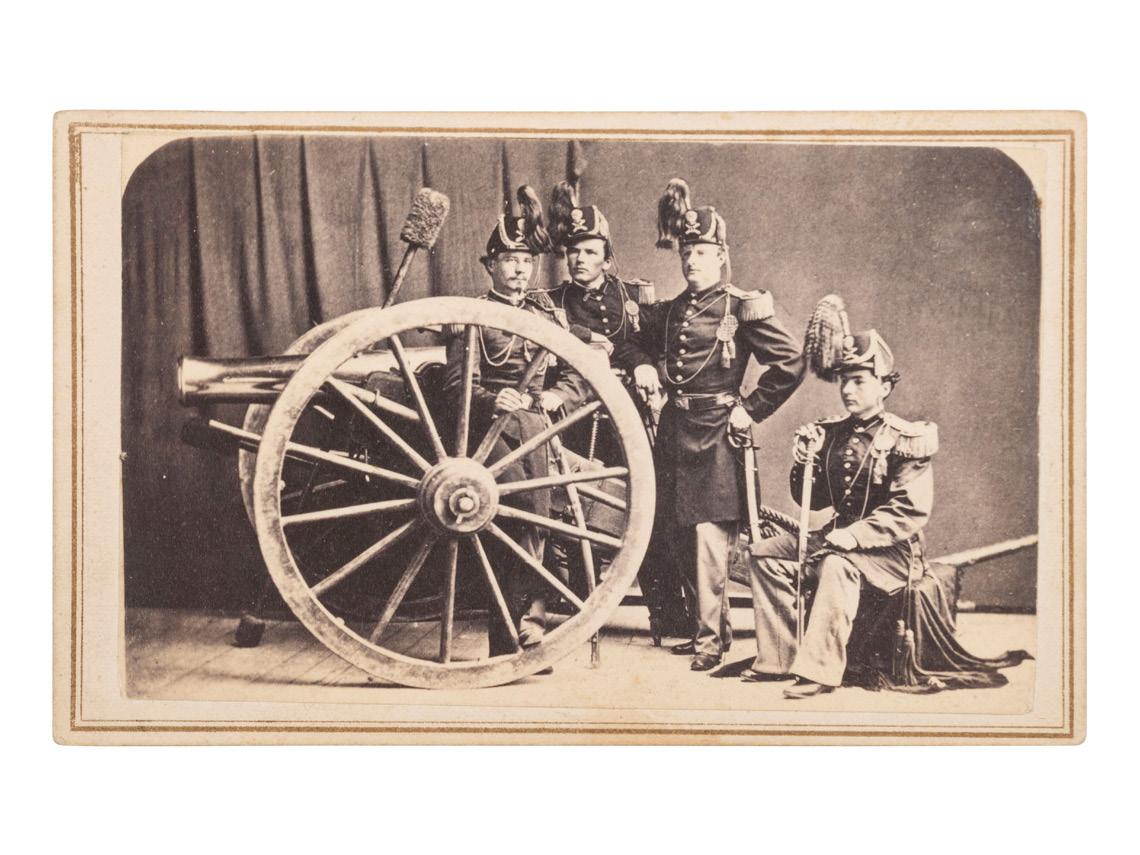
$3,000 - 4,000
$750 - 1,200

$300
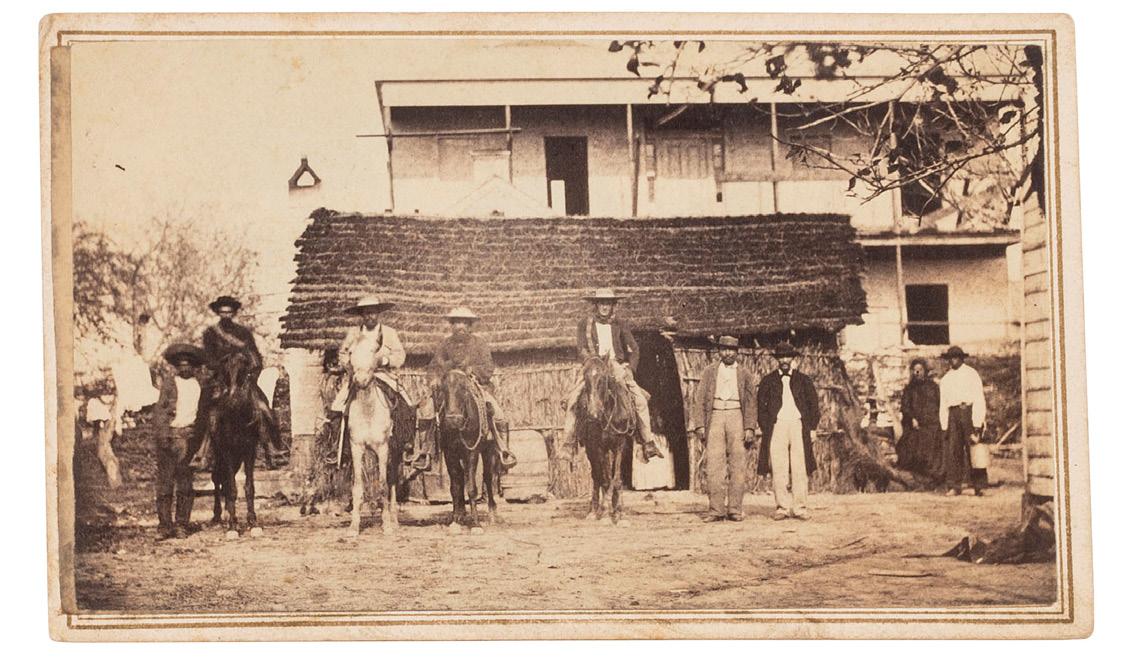
$500 - 700
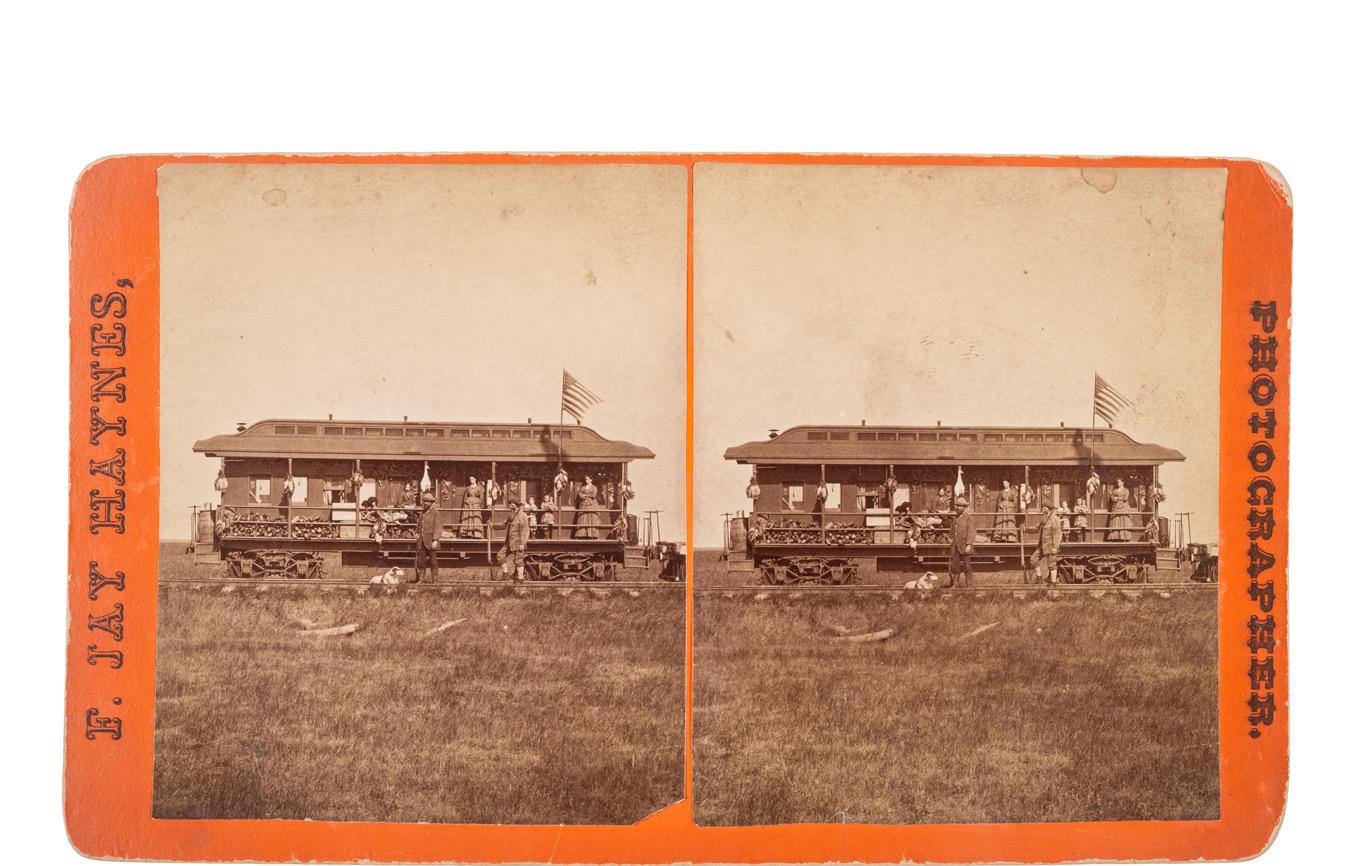
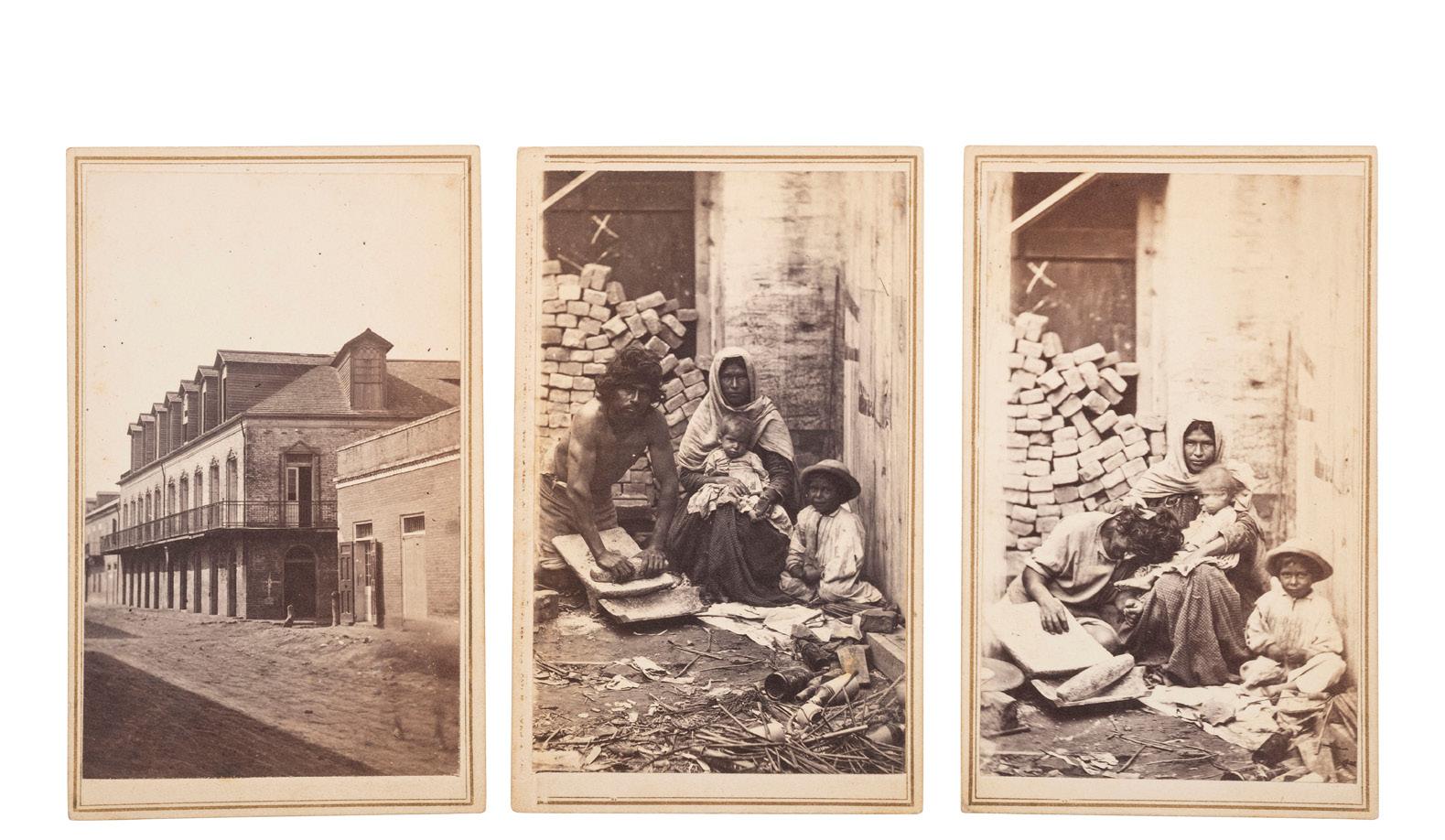
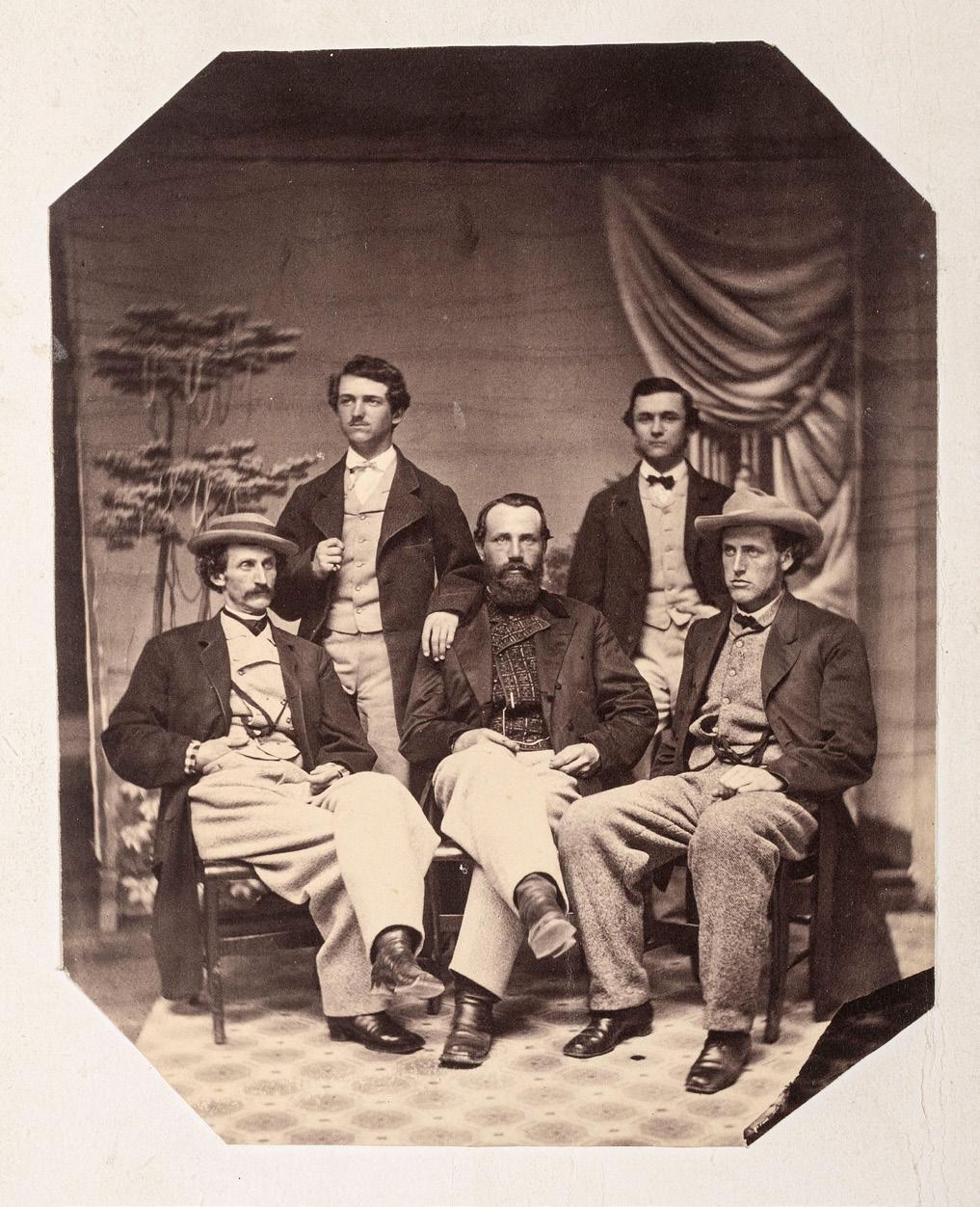
521
[EARLY PHOTOGRAPHY - WESTERN AMERICANA]. Album containing 122 photographs documenting Robert B. Stanton’s Survey of the Colorado River, 1889.
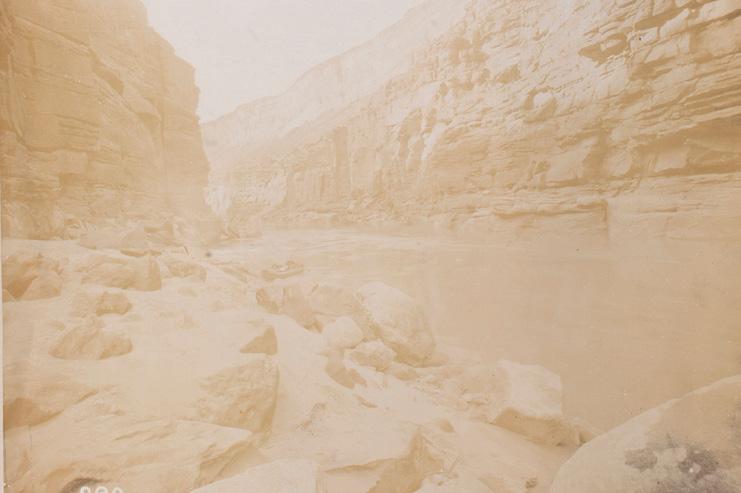
As chief engineer of the Denver, Colorado Canyon and Pacific Railroad Company, Robert Brewster Stanton headed up a surveying expedition from 1889-1890 to determine the plausibility of constructing a railroad through the Grand Canyon. He meticulously recorded the daily progress of the exploration survey through his writings and photography, as evidenced in the album offered here, which features numerous views documenting the rugged landscapes. The survey is considered one of the fullest primary records ever made of the Colorado River from Grand Junction, CO, to the Gulf of California. Both Miami University (Oxford, OH) and the New York Public Library (New York, NY) have materials related to Stanton and this expedition in their holdings. (Information obtained from Miami University’s Walter Havighurst Special Collections, University Archives & Preservation website.)


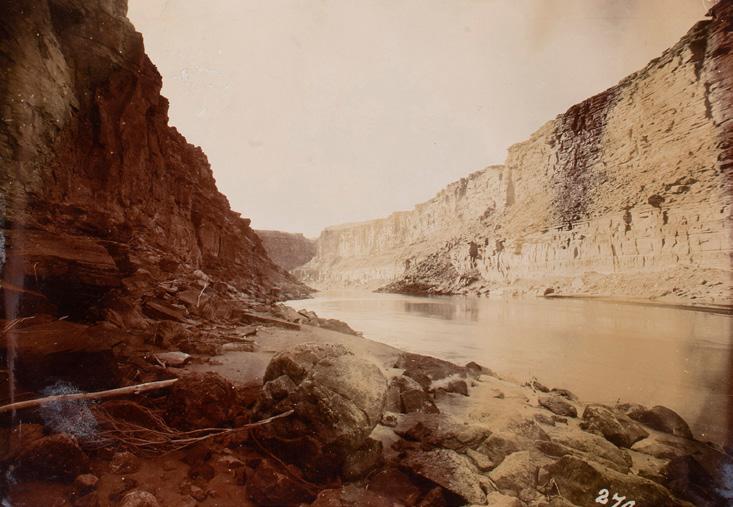
Property of a New York Lady
$1,000 - 1,500
522
[MORMONS]. National Intelligencer. Vol. XLV, No. 6483. Washington, DC: Gales & Seaton, 9 July 1844. Coverage of the death of Mormon leader Joseph Smith. $1,000 - 1,500
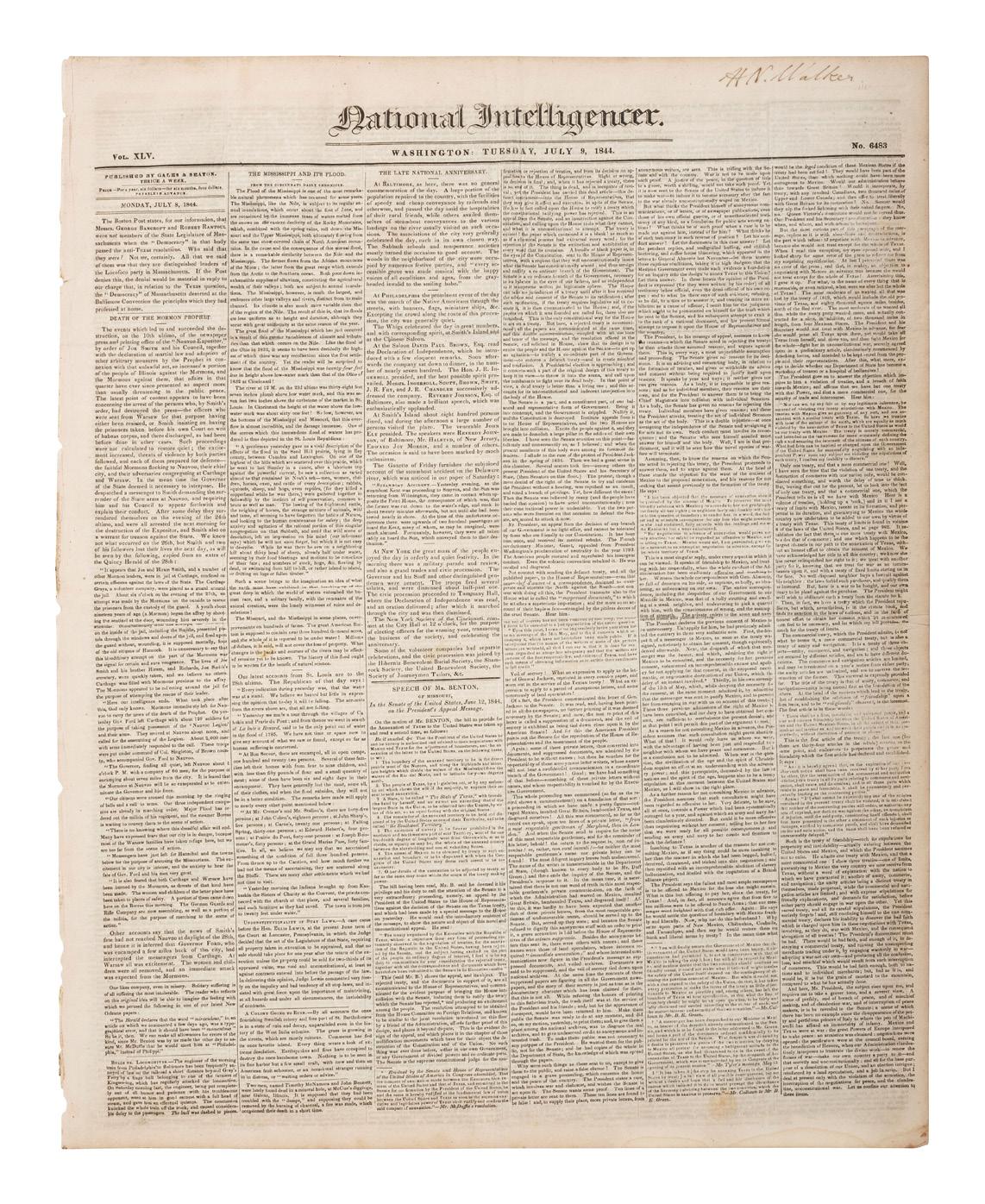
524
[WESTERN AMERICANA - ARIZONA]. FLANDERS, D.P., photographer. Camp Bowie and Helen’s Dome. Arizona Territory: [Summer 1874]. One of the earliest views of Fort Bowie, Apache Pass. $600 - 800
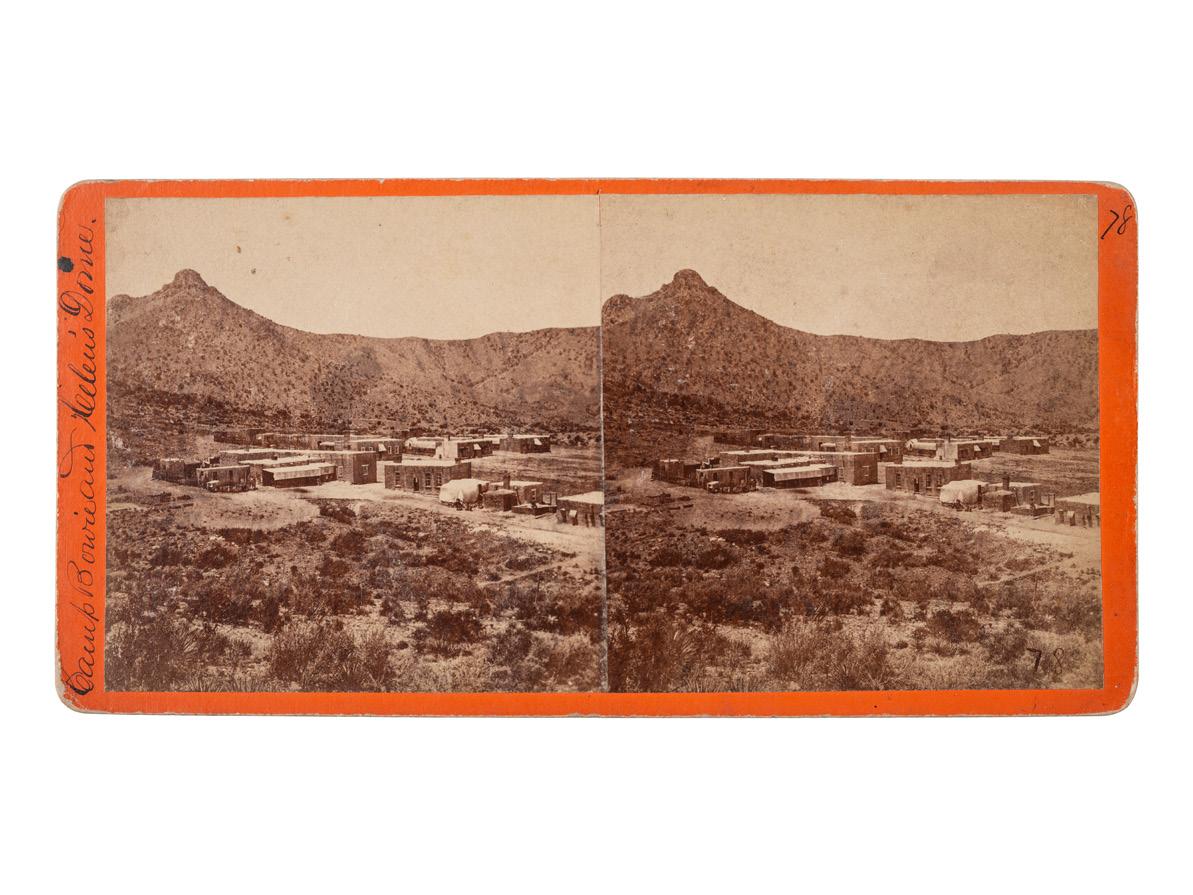
525
[WESTERN AMERICANA - ARIZONA]. WATKINS, Carleton (1829-1916), photographer. Street in Tucson, Arizona. San Francisco, CA: [1880].
$1,200 - 1,600
526
[WESTERN AMERICANA - ARIZONA]. BUEHMAN, Henry (1851-1912), photographer. A group of 2 stereoviews of Tucson, incl. view of Congress Street and horse-drawn ore cart passing through town. Tucson, Arizona Territory, ca 1870s.
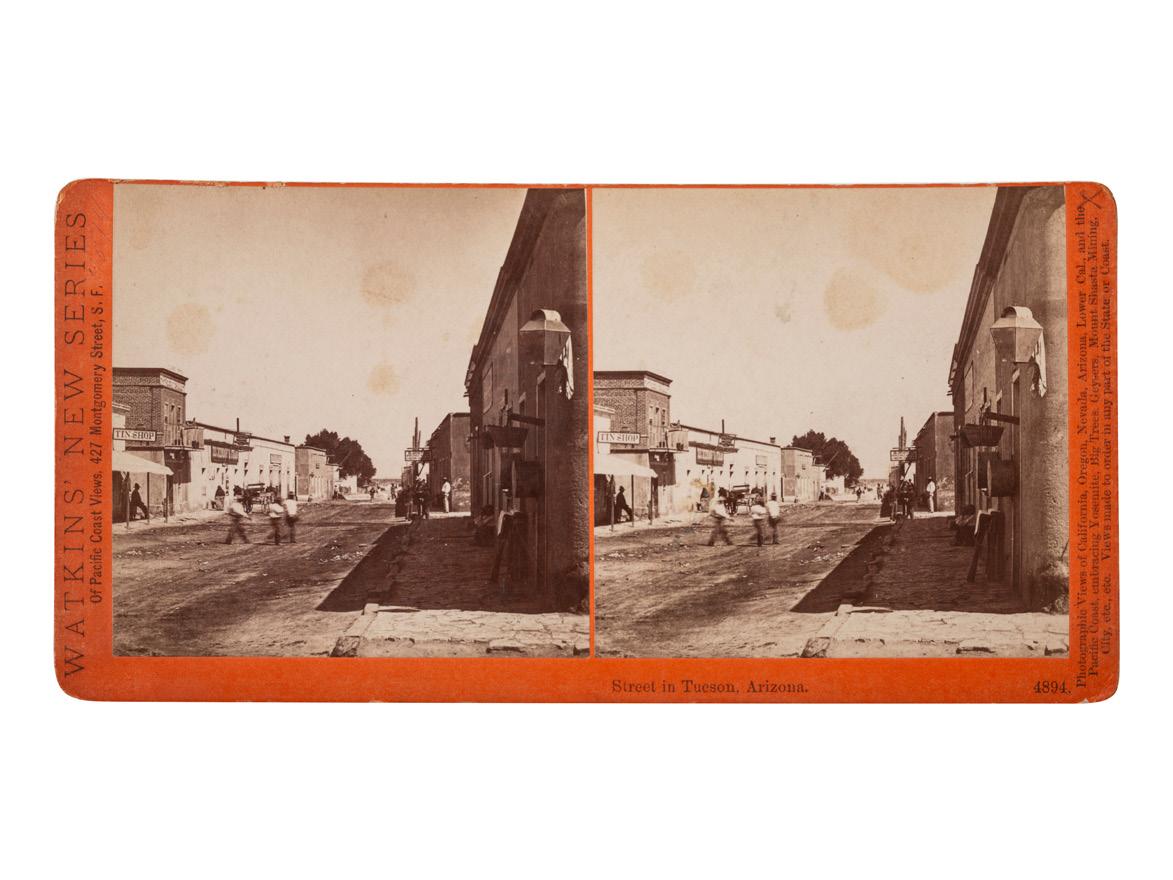

$600 - 800
527
[WESTERN AMERICANA - MINING]. [HEISTER, H.T., photographer]. A group of 3 stereoviews, incl. images of gold mining in New Mexico and the Exchange Hotel. [Santa Fe, NM]: ca 1870s.
$900 - 1,200
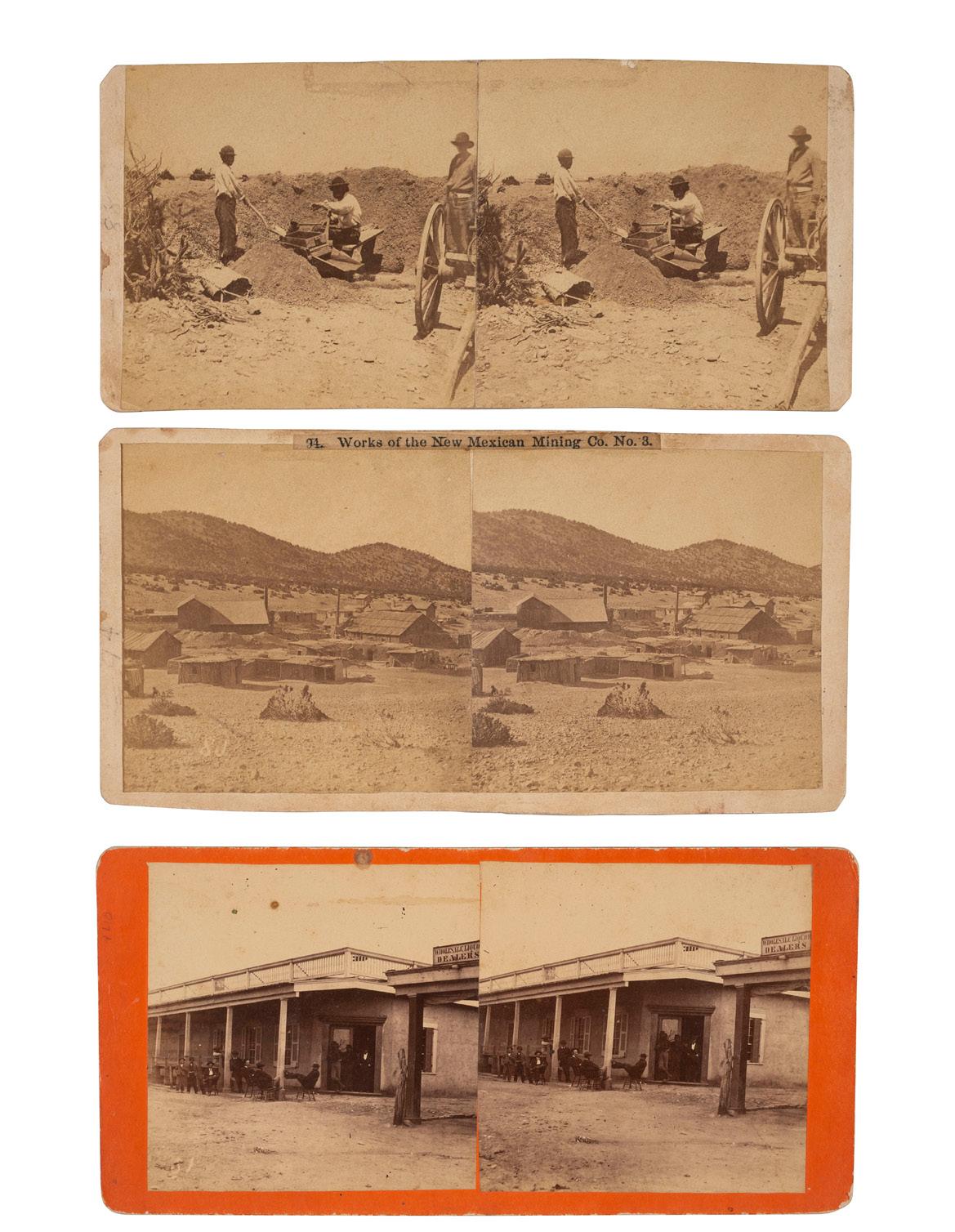
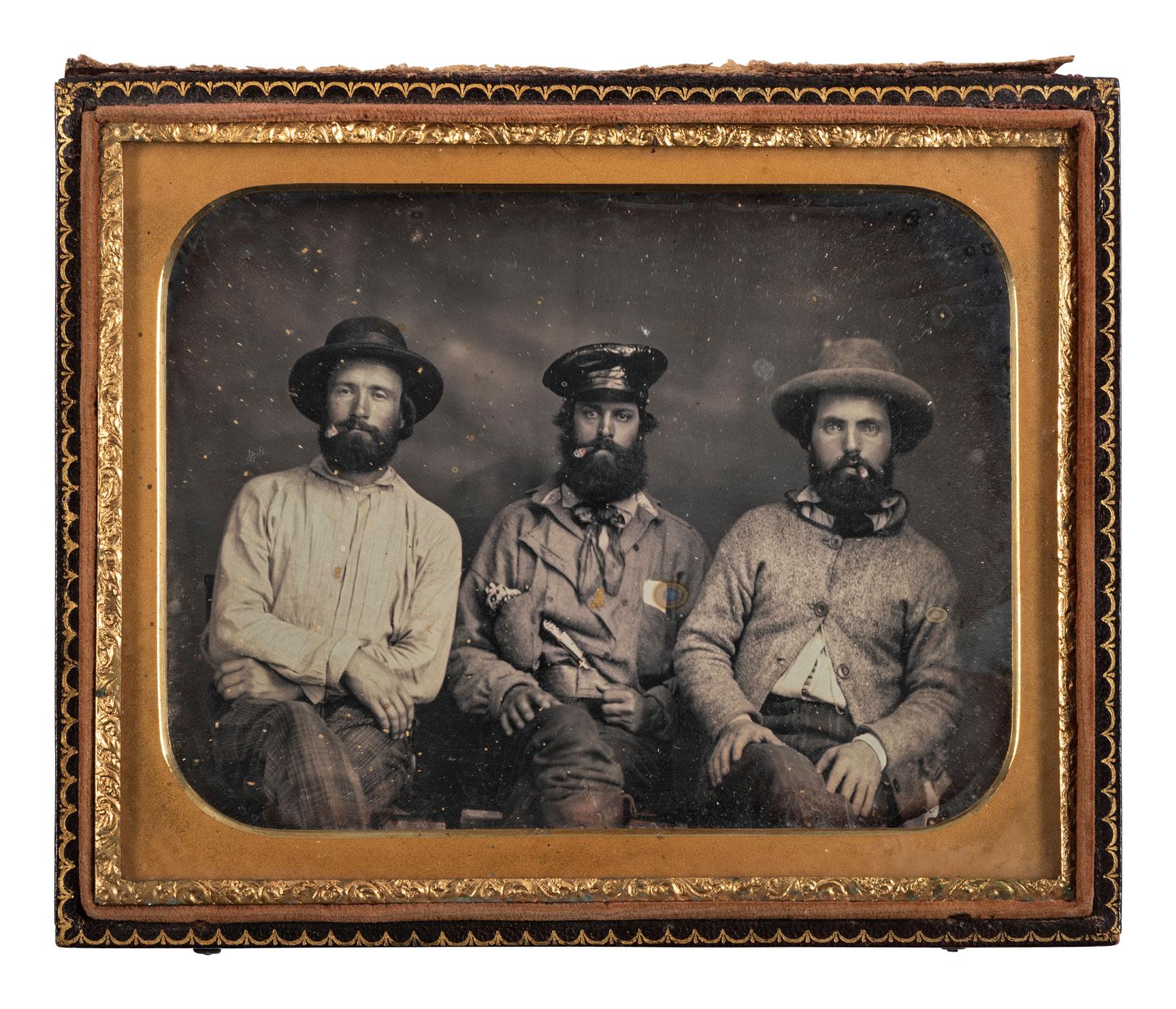
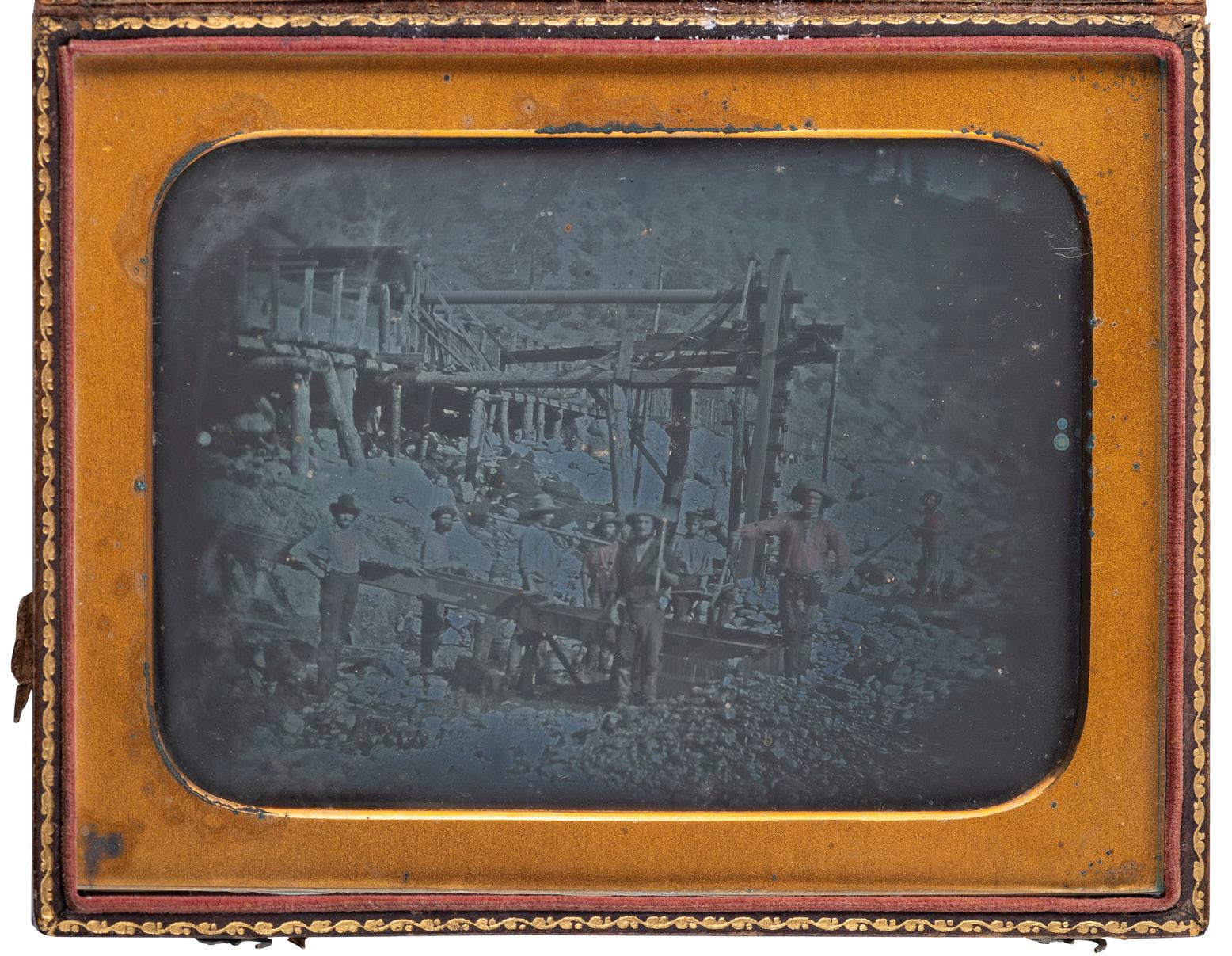
530 [WESTERN AMERICANA - MINING]. Sixth plate daguerreotype of a possible gold miner.

$500 - 700
531
[WESTERN AMERICANA - MINING]. SHAW, E.T. & JOHNSON, John, photographers. Sixth plate daguerreotype of a gold miner with shovel in hand. San Francisco, CA, ca 1852.
$500 - 700
[WESTERN AMERICANA - MINING]. Sixth plate daguerreotype of a possible gold miner wearing a bib shirt.

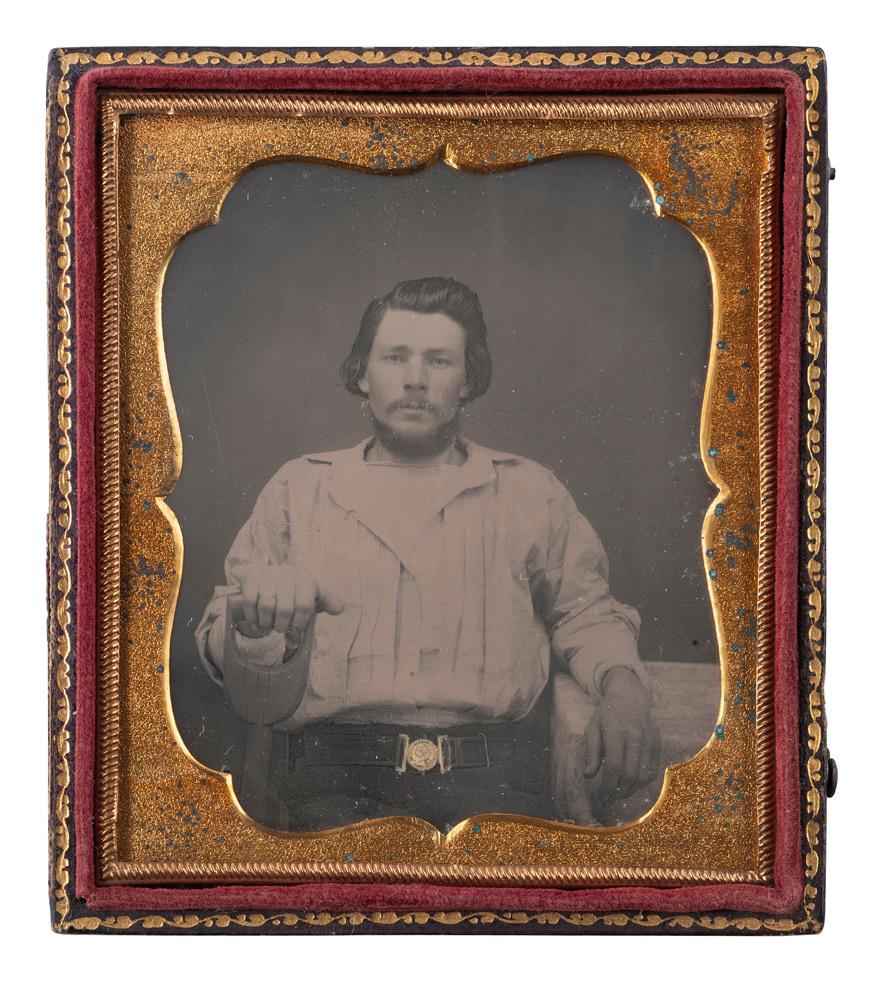
$400 - 600
533
[WESTERN AMERICANA - MINING]. Quarter plate and sixth plate tintypes of gold miners, including portrait of identified “California Gold Seekers,” James Standley and Nate Hadden. Ca 1860.
$400 - 600

535
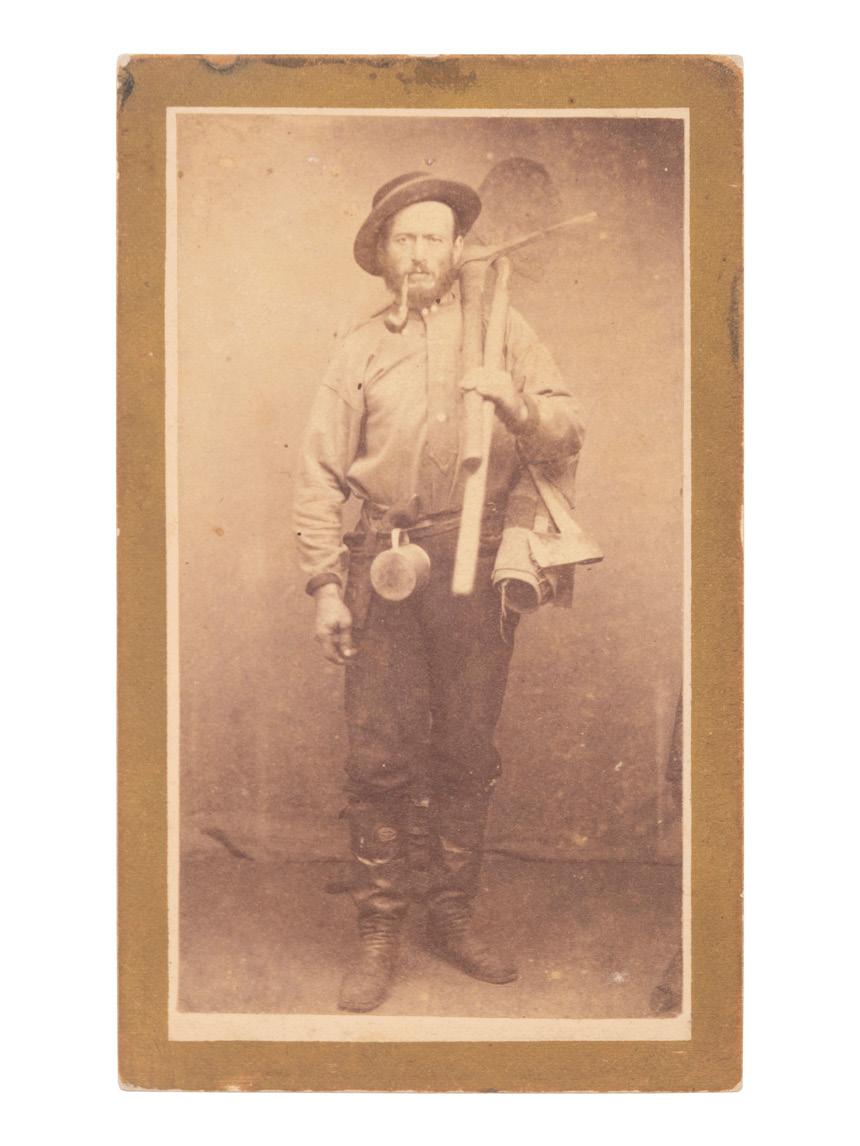
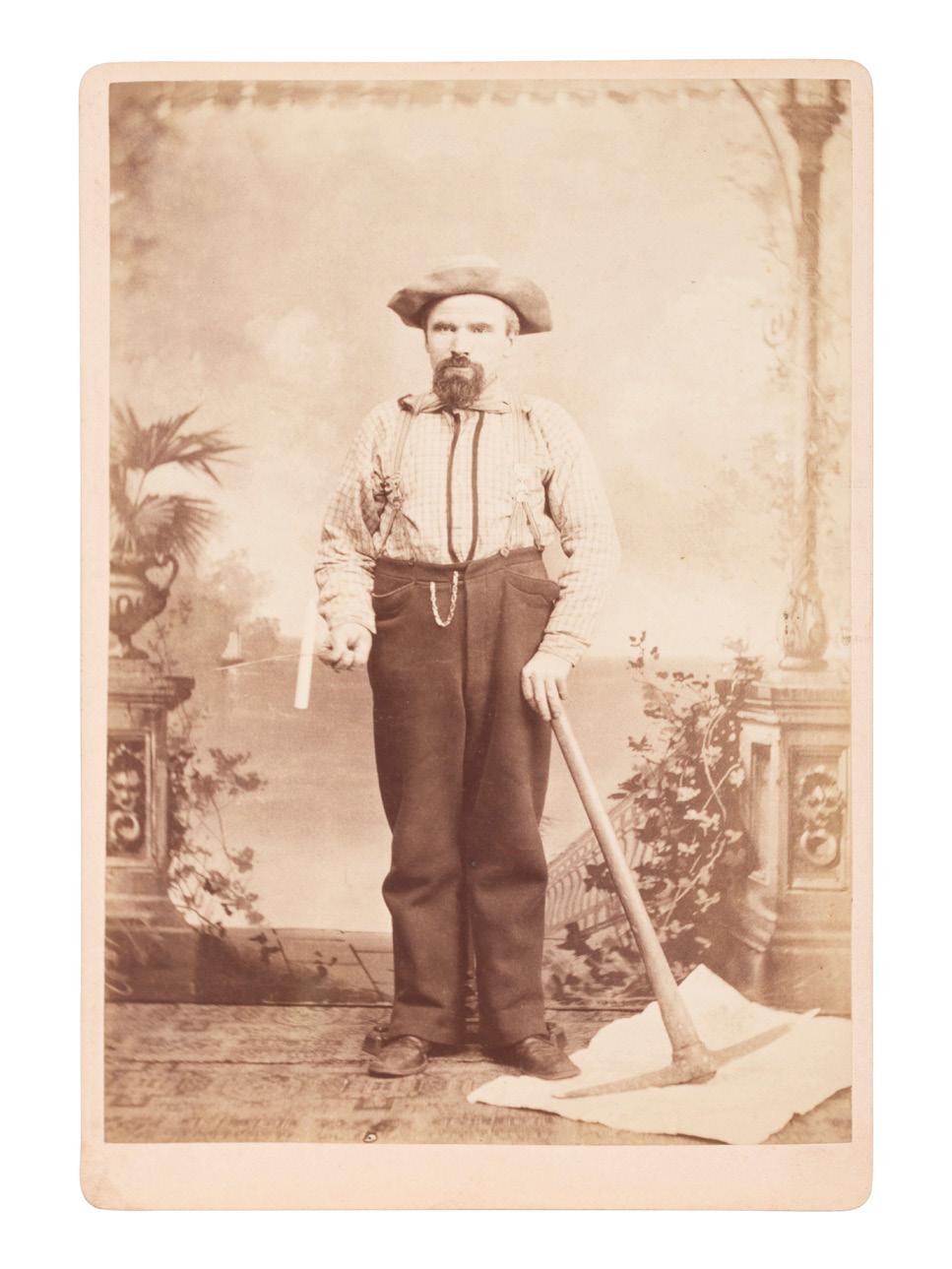
$600
$500
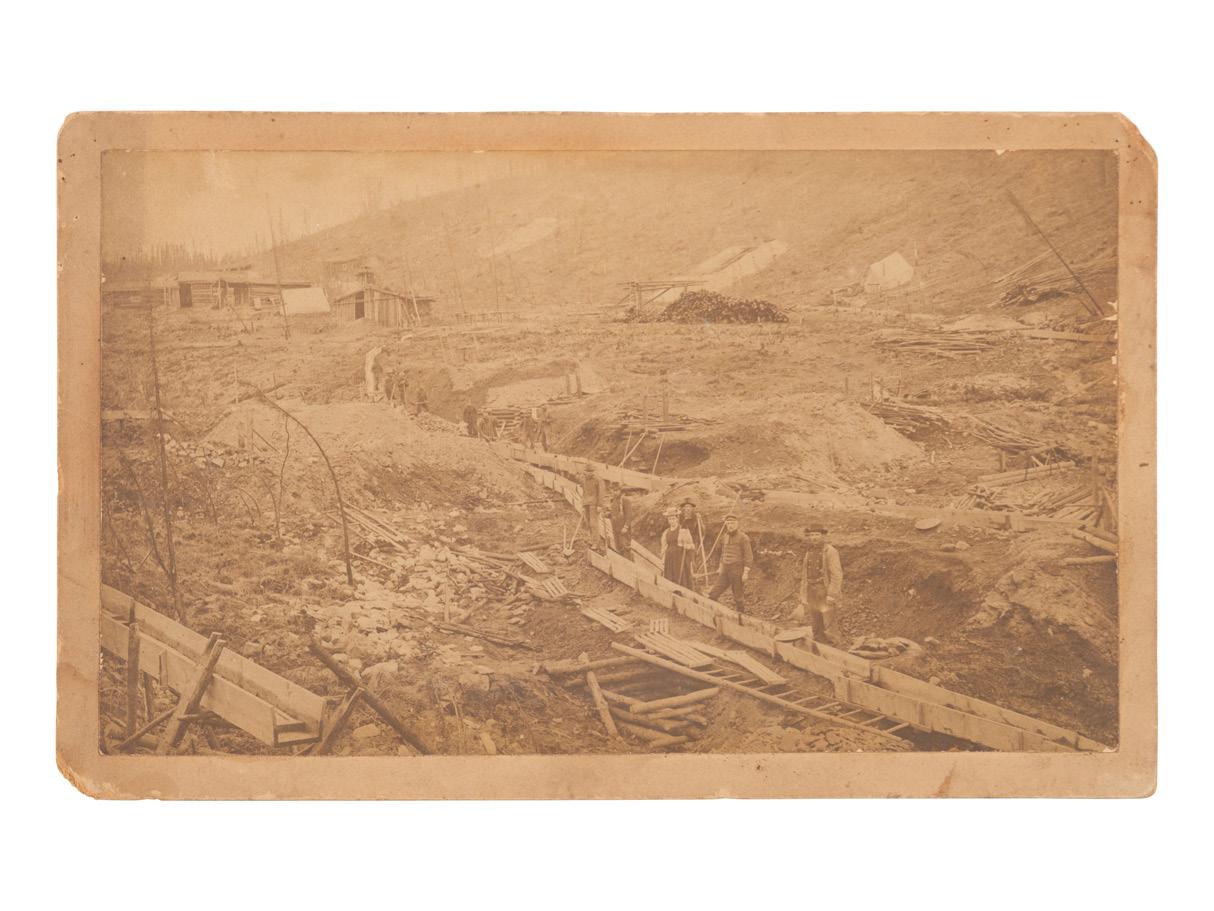
538
[CALIFORNIA - GOLD MINING] - - [CIVIL WAR]. A group of approx. 20 letters from James Newhouse to James Knots, incl. discussions involving California, gold mining, and experiences during the Civil War.
Property from the James Milgram, M.D., Collection of Broadsides, Ephemeral Americana, and Historical Documents
$2,000 - 3,000
539
[CALIFORNIA - DROVING]. BRAINARD, William. A group of 5 autograph letters signed (“W. N. Brainard”), to R. Morehouse, Esq. Most written in a humorous tone, including references to his travels and droving in California.
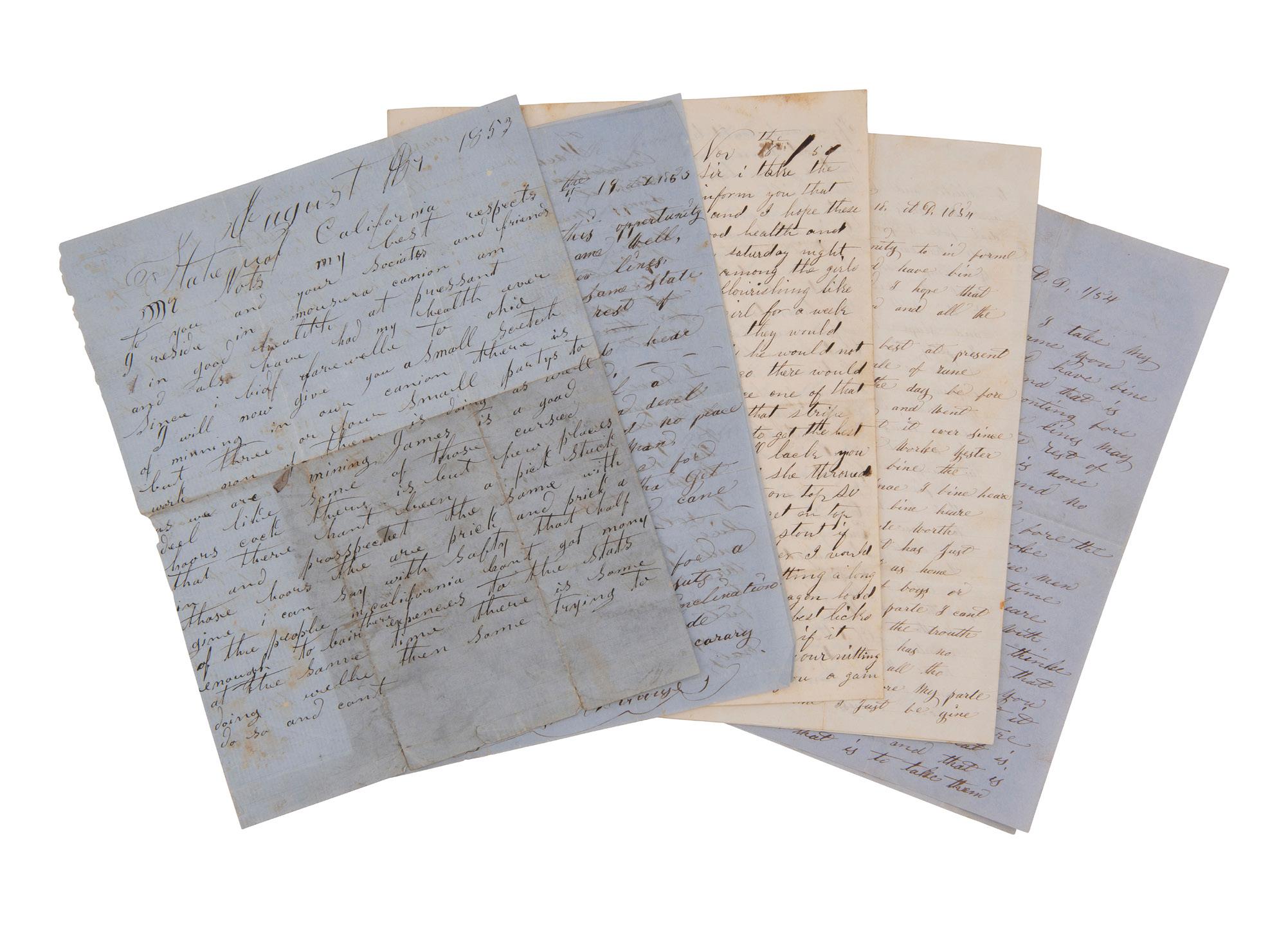
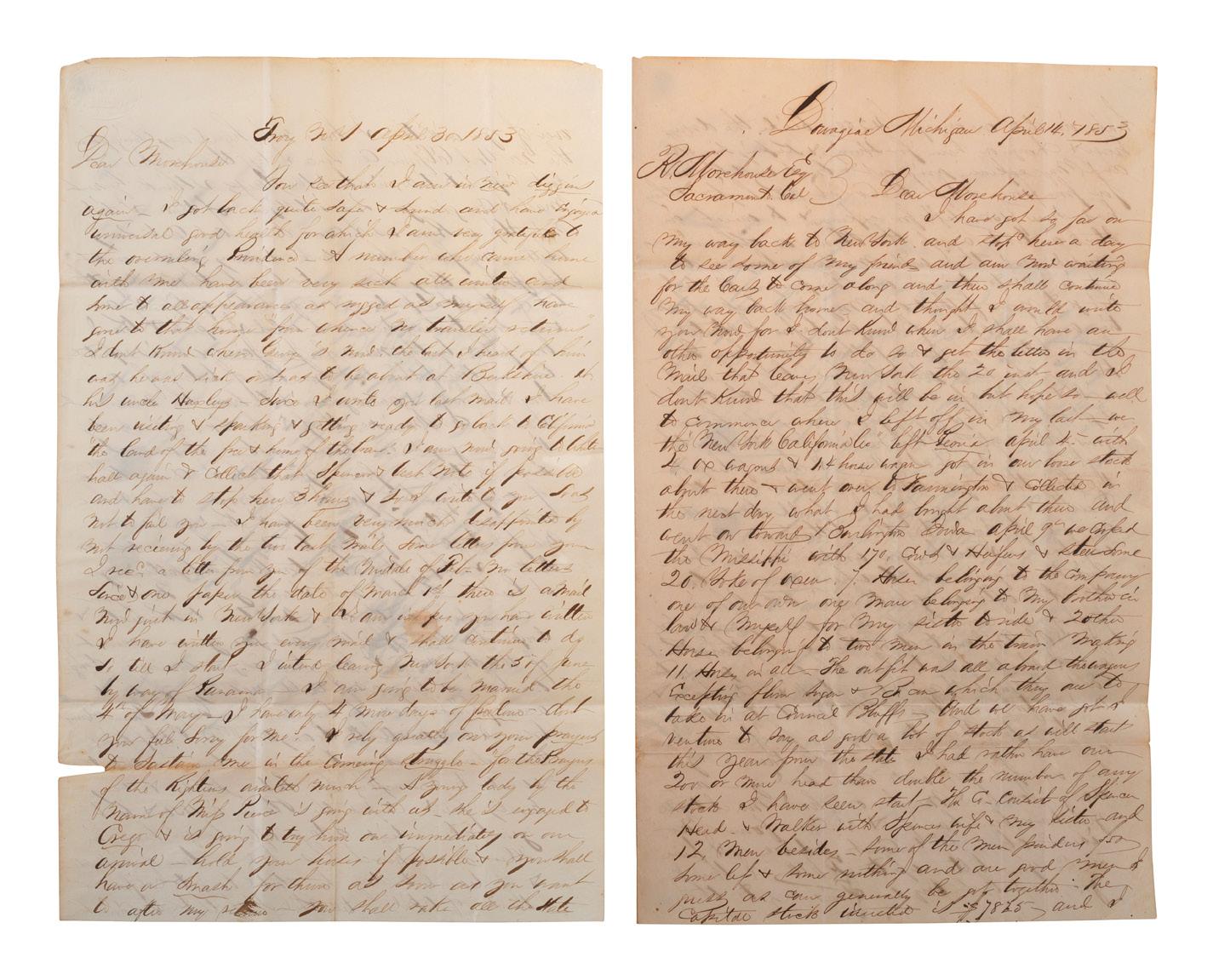
Property from the James Milgram, M.D., Collection of Broadsides, Ephemeral Americana, and Historical Documents
$800 - 1,200
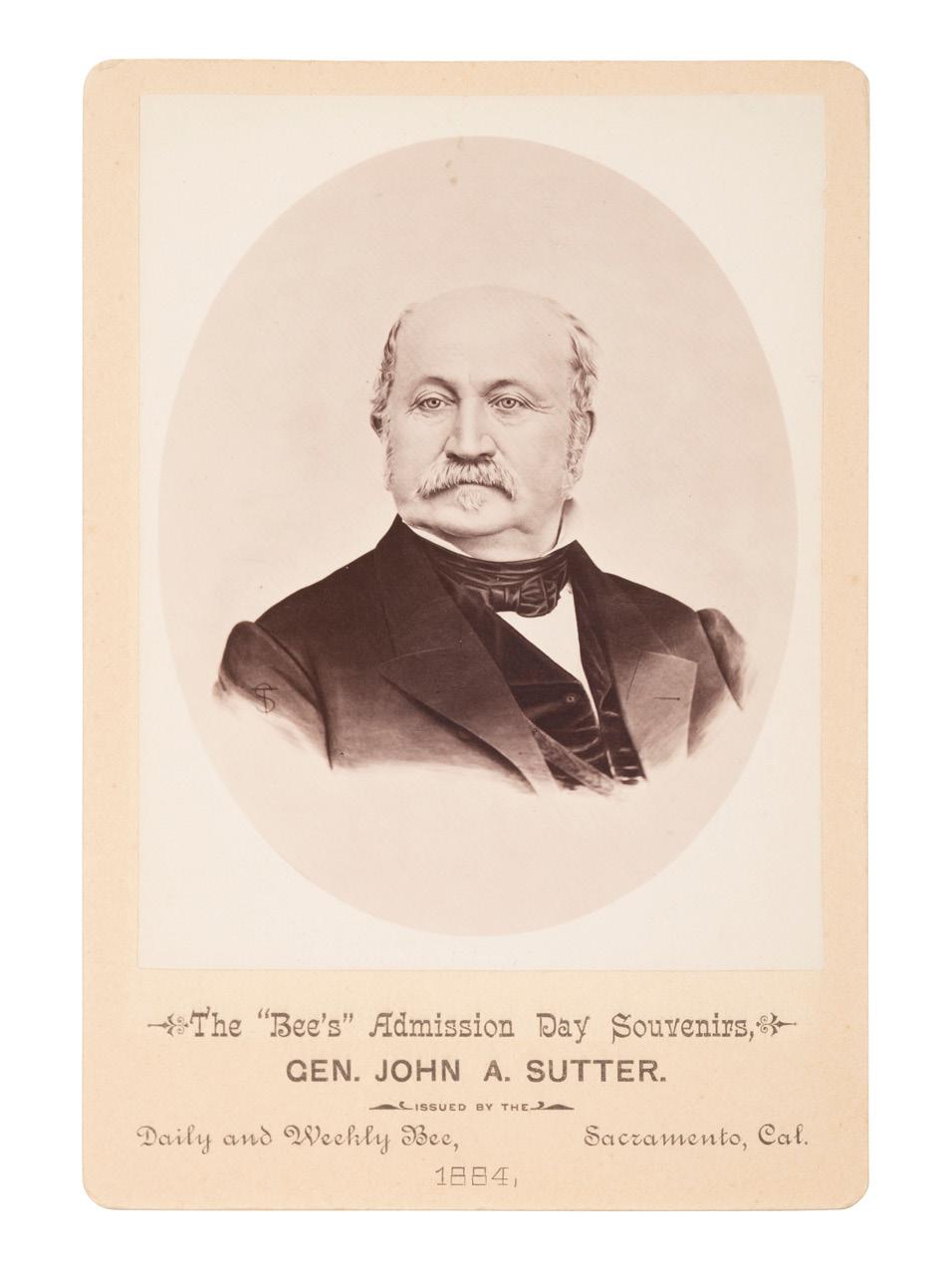
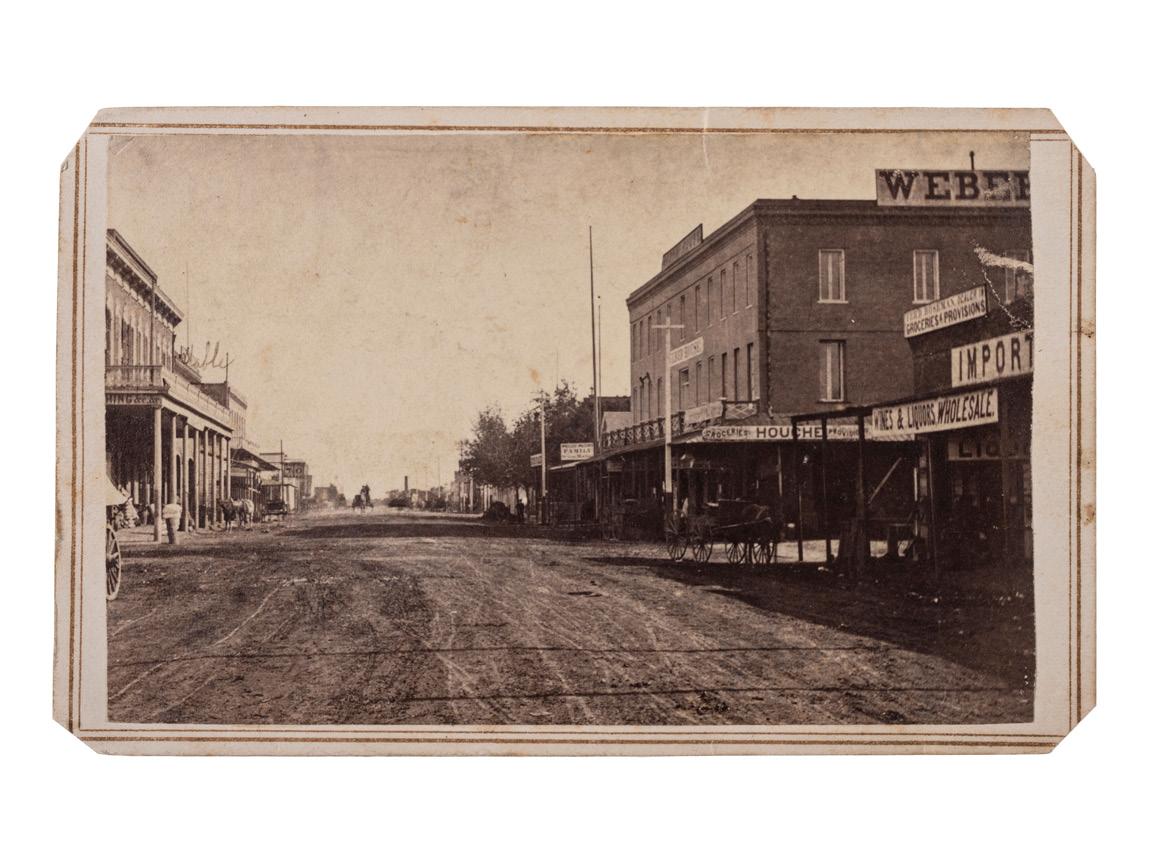

543
[CALIFORNIA - - SACRAMENTO COUNTY]. History of Sacramento County, California, with Illustrations Descriptive of Its Scenery, Residences, Public Buildings, Fine Blocks, and Manufactories. Oakland, CA: Thompson & West, 1880.

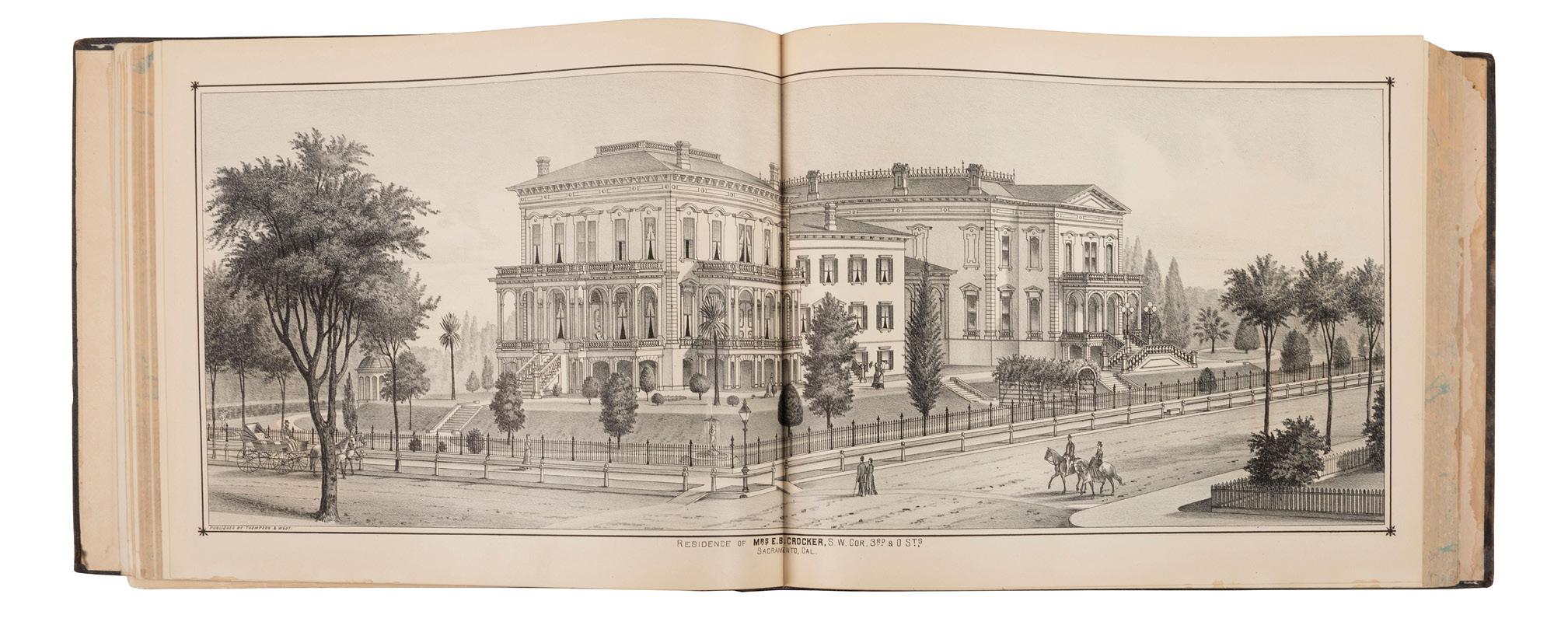
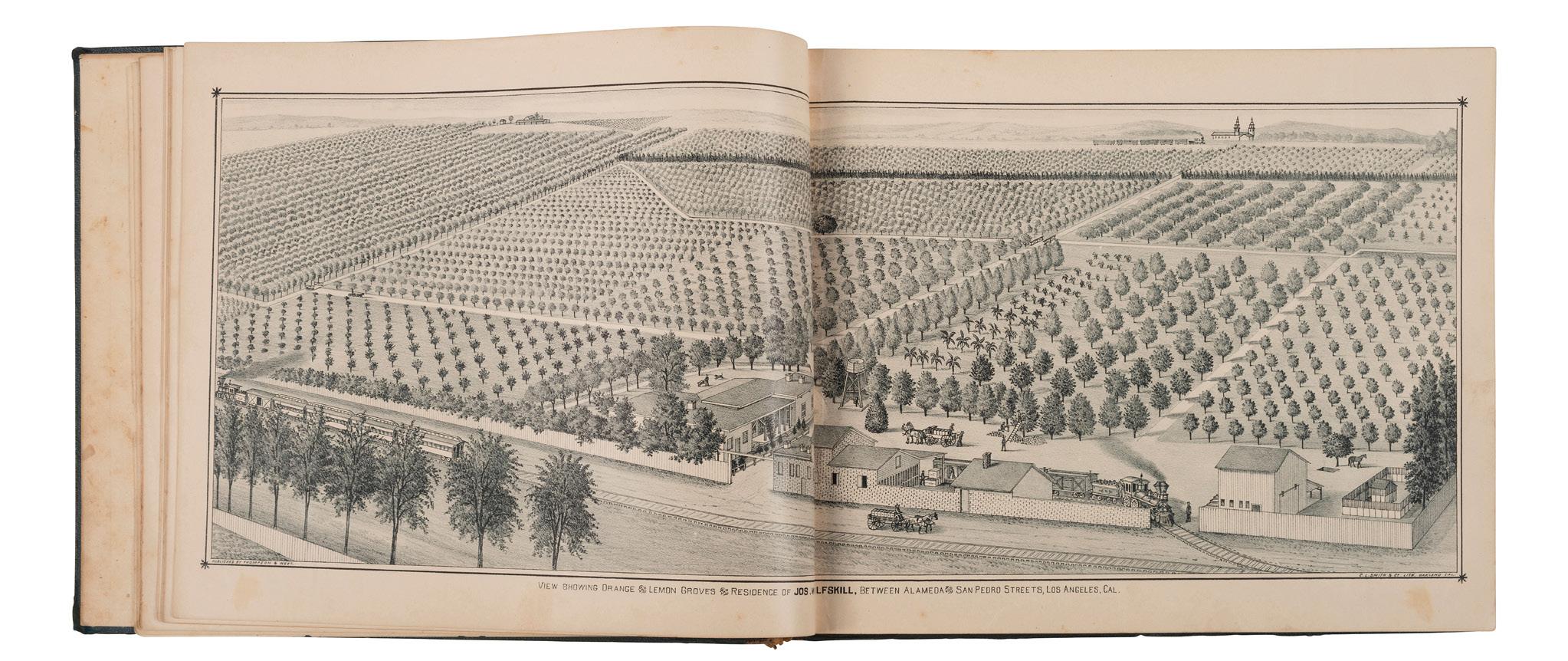
$600 - 800
544
[CALIFORNIA - - LOS ANGELES COUNTY]. History of Los Angeles County, California, with Illustrations Descriptive of Its Scenery, Residences, Fine Blocks, and Manufactories. Oakland, CA: Thompson & West, 1880.
$800 - 1,000



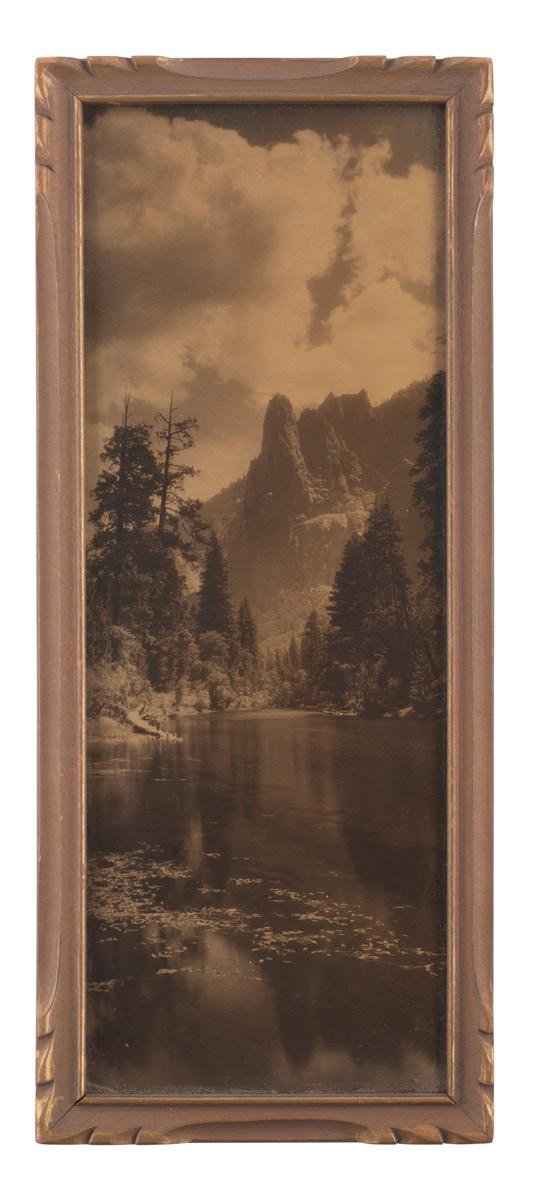

$1,000 - 1,500


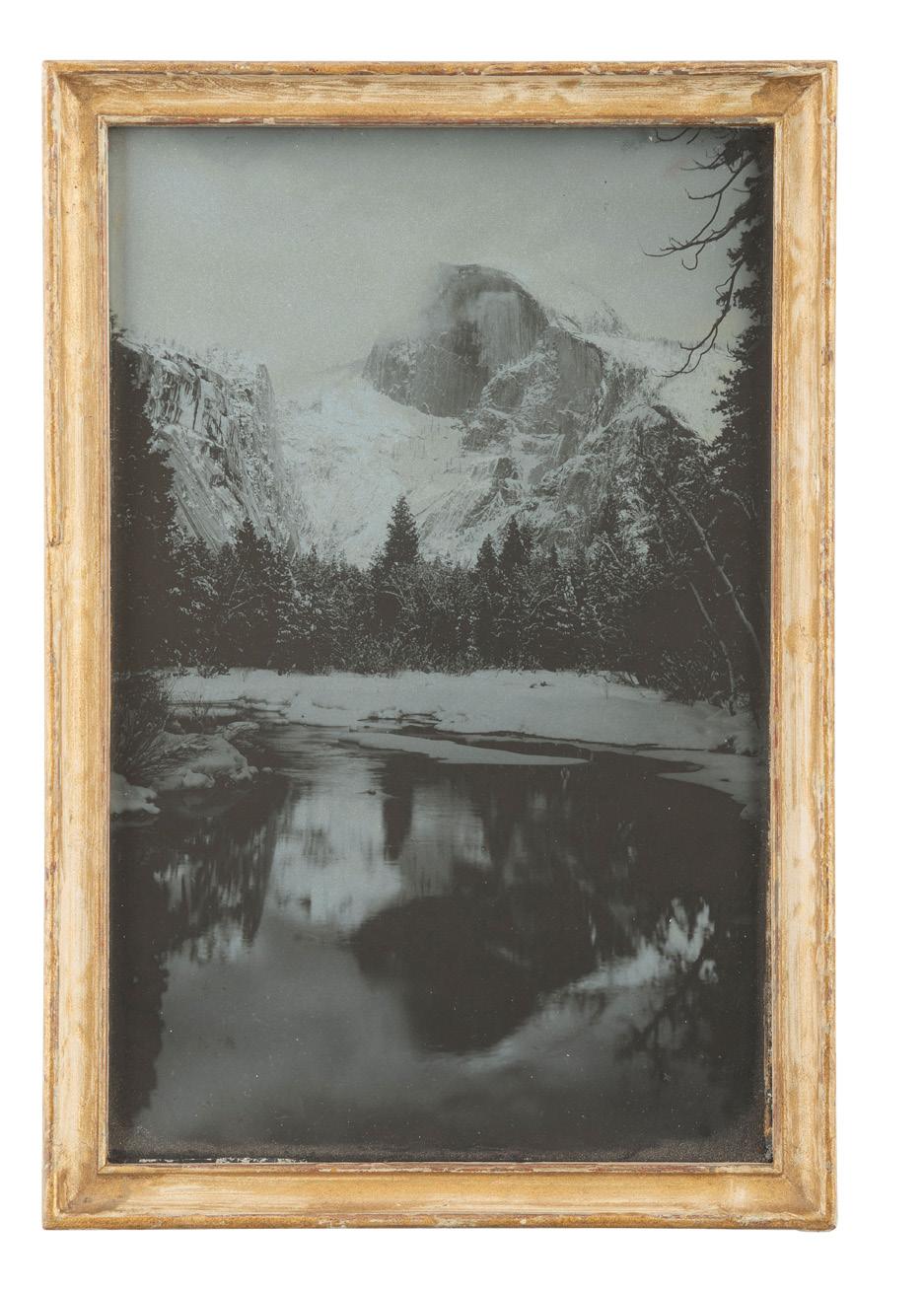

$500 - 700
$500 - 750

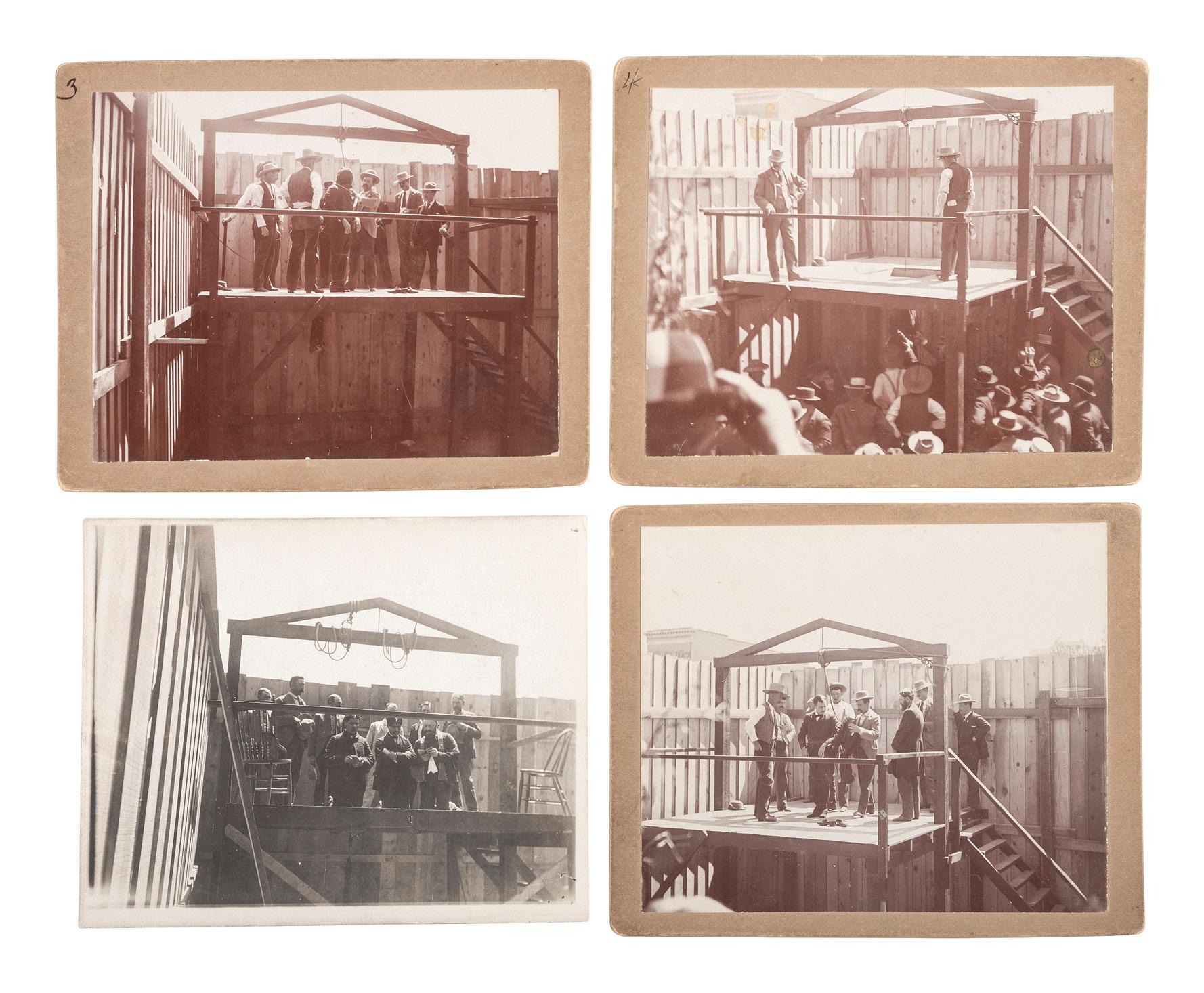
552 [WESTERN AMERICANA]. A group of 3 photographs of armed cowboys, incl. large format photograph taken by Mrs. ALBRIGHT, Albuquerque, NM. Ca 1880s.
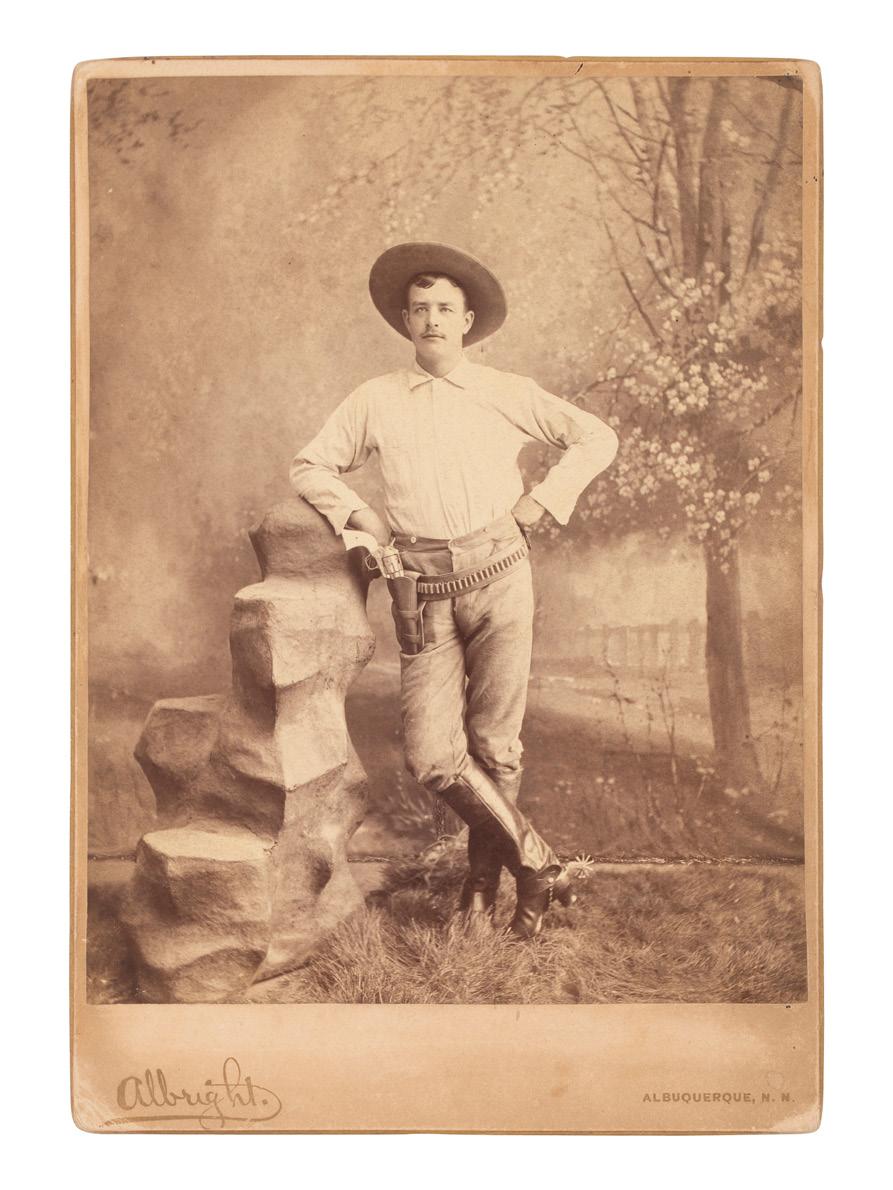
$600 - 800
553
[WESTERN AMERICANA]. HUFFMAN, L.A., photographer. A group of 3 collotypes featuring cowboys.

Property from the Collection of Stanley B. Slocum

$500 - 700
554
[WESTERN AMERICANA]. BURBANKS, Jerome, M.D. Detailed ALS about “the West.”
Property from the James Milgram, M.D., Collection of Broadsides, Ephemeral Americana, and Historical Documents
$300 - 600
$1,000 - 1,500
$500 - 700
A scarce period copy image of Hickok made after the original example credited to A.P. Trott of Abilene. In The West of Wild Bill Hickok, Joseph G. Rosa (1982: 4-5; 138-139) suggests the image was likely made about 1871 when Hickok was traveling between Abilene and nearby Junction City, Kansas.

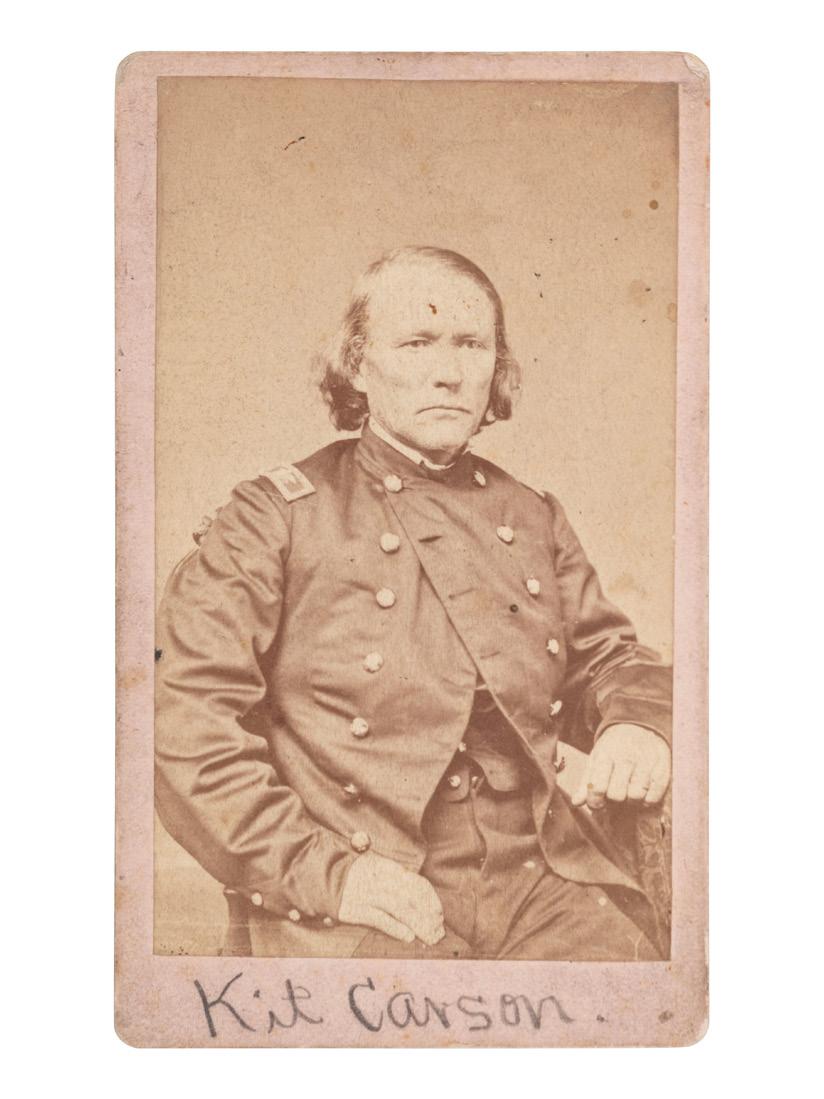
$5,000 - 7,000
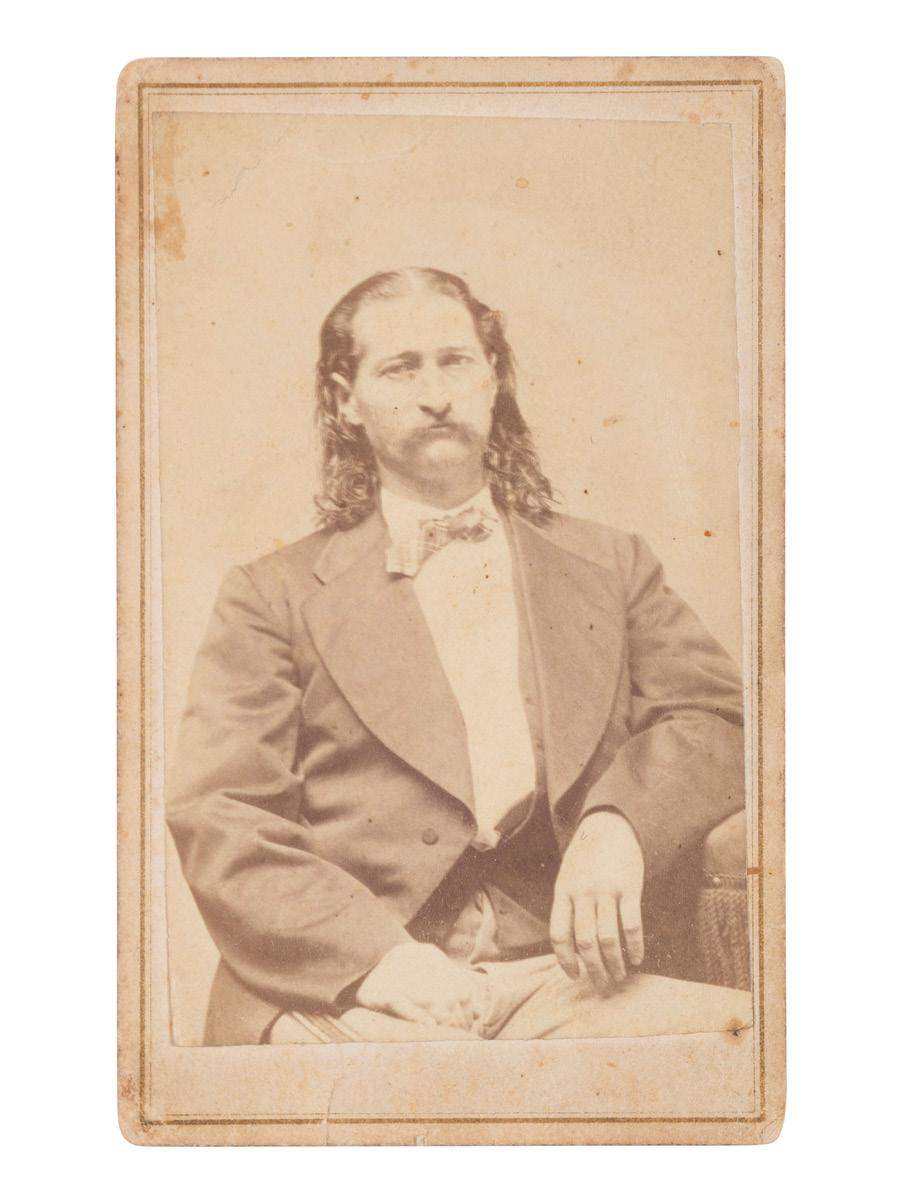

559
[WESTERN AMERICANA]. WILSON, photographer. Cabinet card featuring Calamity Jane. Chicago, ca 1880s-1890s.
Property from the Collection of Stanley B. Slocum
$1,500 - 2,500
560 [WILD WEST SHOWS]. SARONY, Napoleon (1821-1896), photographer. CDV of William F. “Buffalo Bill” Cody. New York, ca 1875.
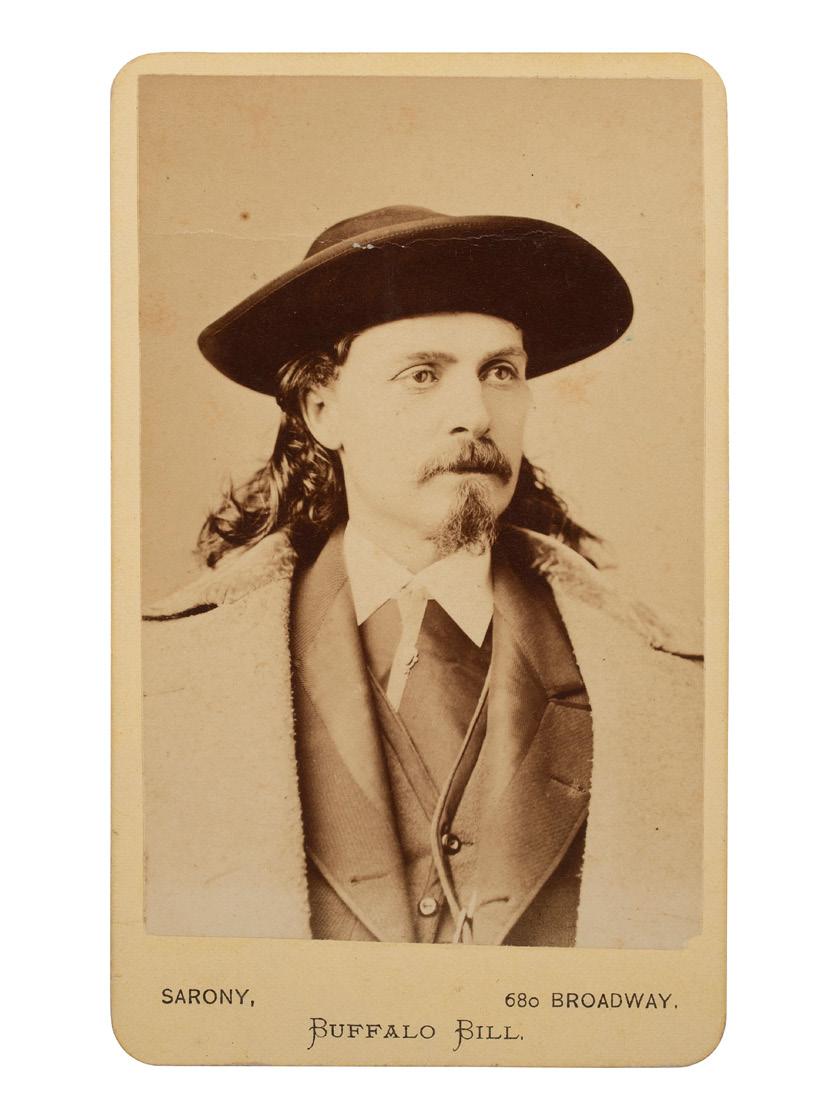
$400 - 600
561
[WILD WEST SHOWS]. PIROU, Eugen, photographer. Signed and inscribed cabinet card of William F. “Buffalo Bill” Cody. Paris, 1889.

$700 - 1,000
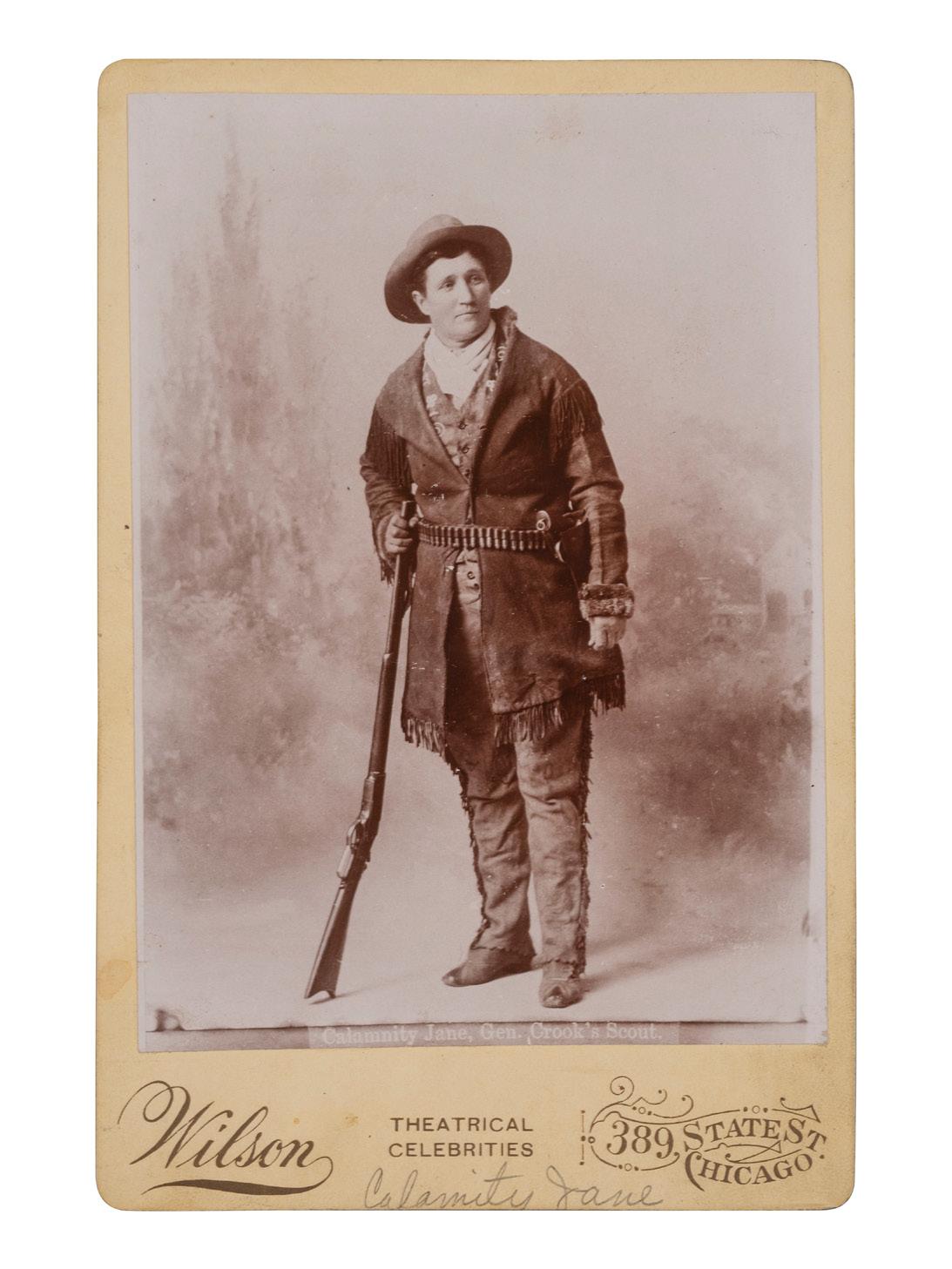

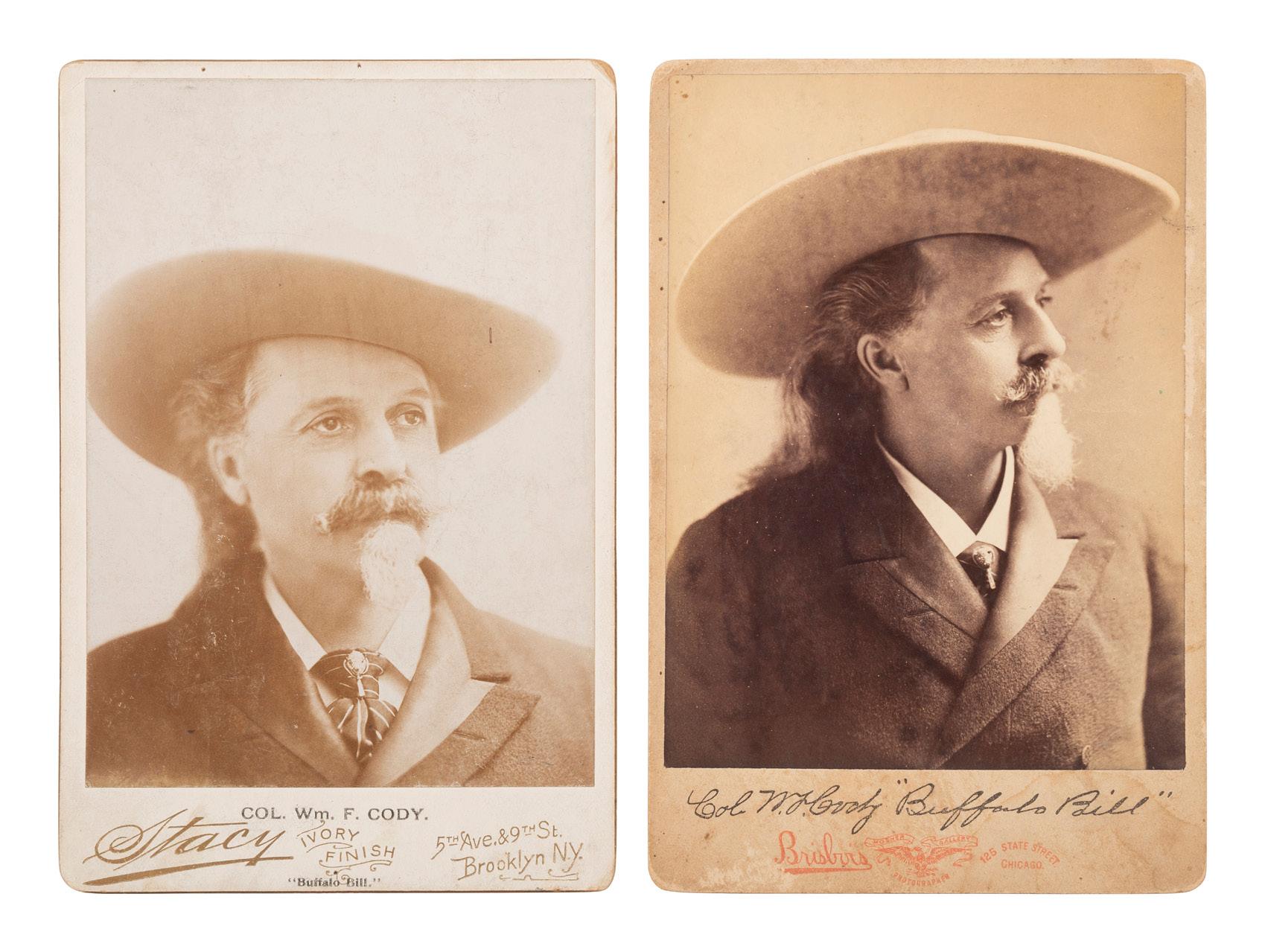
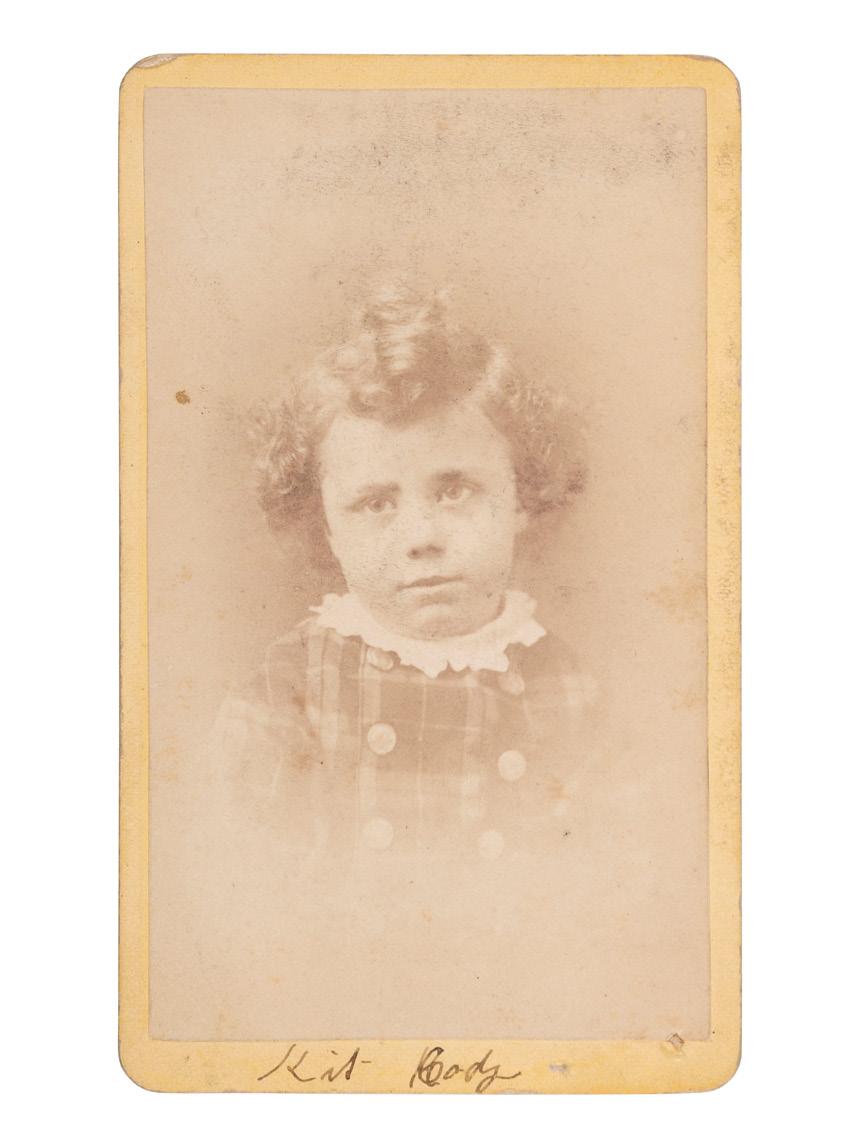
565 [WILD WEST SHOWS]. ELLIOTT & FRY, photographers. Indian Warriors and Tepees, Buffalo Bill’s Wild West. London, ca 1887.


$300 - 400
566 [WILD WEST SHOWS]. CODY, William Frederick (“Buffalo Bill”) (1846-1917). Signature (“W. F. Cody”) on the business card of L. E. Decker, representative of Col. W. F. Cody and Buffalo Bill’s Wild West.
$1,000 - 1,500
567
[WILD WEST SHOWS]. A group of 3 Buffalo Bill’s Wild West Show programs for 1889, 1900, and 1902.
$700 - 900

GRETCHEN HAUSE
VICE PRESIDENT, SENIOR SPECIALIST
312.334.4229 GRETCHENHAUSE @HINDMANAUCTIONS.COM
KATIE HORSTMAN SENIOR SPECIALIST
513.666.4958 KATIEHORSTMAN @HINDMANAUCTIONS.COM
EMILY PAYNE SPECIALIST
513.666.4943 EMILYPAYNE @HINDMANAUCTIONS.COM
KAYLAN GUNN SPECIALIST
513.666.4959 KAYLANGUNN @HINDMANAUCTIONS.COM
ALYSSA D. QUINLAN CHIEF EXECUTIVE OFFICER 312.447.3272 ALYSSAQUINLAN @HINDMANAUCTIONS.COM
ATLANTA
KRISTIN VAUGHN
VICE PRESIDENT
404.800.0192
KRISTINVAUGHN @HINDMANAUCTIONS.COM
CHICAGO
MIRANDA MAXFIELD
312.334.4208
MIRANDAMAXFIELD @HINDMANAUCTIONS.COM
CINCINNATI
VAUGHN H. SMITH 513.666.4987
VAUGHNSMITH @HINDMANAUCTIONS.COM
CLEVELAND
CARRIE PINNEY
216.292.8300
CARRIEPINNEY
@HINDMANAUCTIONS.COM
JAY FREDERICK KREHBIEL EXECUTIVE CHAIRMAN JAYKREHBIEL @HINDMANAUCTIONS.COM

ANDREW SELTZER INTERIM CHIEF OPERATING OFFICER 312.280.1212 ANDREWSELTZER @HINDMANAUCTIONS.COM


MOLLY MORSE LIMMER EXECUTIVE VICE PRESIDENT, DEPUTY CHAIRMAN 312.447.3275 MOLLYLIMMER @HINDMANAUCTIONS.COM



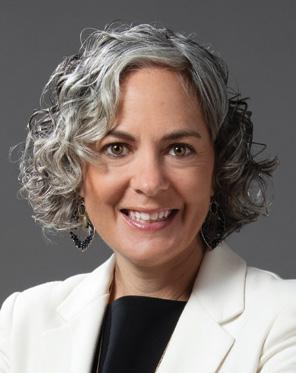
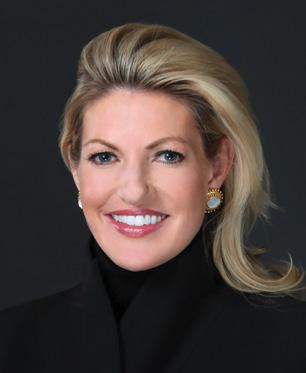
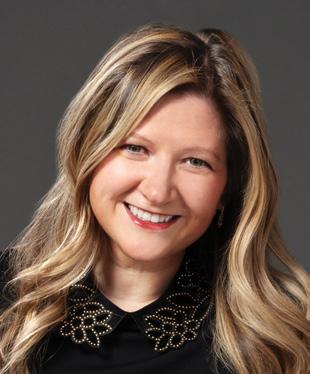
312.334.4235 MOLLYGRON @HINDMANAUCTIONS.COM
TIM
CAI, BAS, MPPA, ISA-AM MANAGING DIRECTOR 561.833.8053 TIMLUKE @HINDMANAPPRAISALS.COM
DENVER
MARON HINDMAN
303.825.1855
MARONHINDMAN @HINDMANAUCTIONS.COM
DETROIT
PAM IACOBELLI 313.774.0900
PAMELAIACOBELLI @HINDMANAUCTIONS.COM
MIAMI
ELIZABETH RADER, PHD 239.643.4448
ELIZABETHRADER @HINDMANAUCTIONS.COM
MILWAUKEE
SARA MULLOY 414.220.9200
SARAMULLOY @HINDMANAUCTIONS.COM
NAPLES
ALLISON DURIAN 239.643.4448
ALLISONDURIAN @HINDMANAUCTIONS.COM
NEW YORK
CAROLINE BAKER SMITH 212.243.3000
CAROLINEBAKERSMITH @HINDMANAUCTIONS.COM
PALM BEACH
ELIZABETH MARSHMAN 561.621.8461
ELIZABETHMARSHMAN @HINDMANAUCTIONS.COM
SAN DIEGO
KATIE GUILBAULT, G.G. VICE PRESIDENT 858.442.6104

KATIEGUILBAULT @HINDMANAUCTIONS.COM
SCOTTSDALE
LOGAN BROWNING
480.546.5150
LOGANBROWNING @HINDMANAUCTIONS.COM
ST. LOUIS
ANNA SHAVER 314.833.0833
ANNASHAVER @HINDMANAUCTIONS.COM
WASHINGTON, D.C.
MAURA ROSS VICE PRESIDENT 202.853.1638
MAURAROSS @HINDMANAUCTIONS.COM
Updated 4.7.23
LEADERSHIP
Alyssa D. Quinlan Chief Executive Officer alyssaquinlan @hindmanauctions.com
Jay Frederick Krehbiel Executive Chairman
Leslie Hindman Founder & Chairman Emeritus
Wes Cowan Vice-Chair Maron Hindman Vice-Chair
Andrew Seltzer Interim Chief Operating Officer andrewseltzer @hindmanauctions.com
Molly Morse Limmer Executive Vice President, Deputy Chairman mollylimmer @hindmanauctions.com
AUCTION OPERATIONS, CLIENT SERVICES
Maggie Porter Vice President, Sales Strategy maggieporter @hindmanauctions.com
Rita Swanberg Manager, Client Experience ritaswanberg @hindmanauctions.com
Dawnie Komotios Operations Director Cincinnati dawniekomotios @hindmanauctions.com
Nicole Joy Regional Manager Auction Operations nicolejoy @hindmanauctions.com
FINANCE
Marco Gusella Vice President, Finance marcogusella @hindmanauctions.com
TRUSTS, ESTATES & PRIVATE CLIENTS
Molly E. Gron, J.D. Managing Director mollygron @hindmanauctions.com
Miranda Maxfield Senior Manager mirandamaxfield @hindmanauctions.com
Allison Durian Manager allisondurian @hindmanauctions.com
Samantha Schwartz Senior Associate samanthaschwartz @hindmanauctions.com
Hannah Unger Manager hannahunger @hindmanauctions.com
Kathryn Hodge Senior Associate, West kathrynhodge @hindmanacutions.com
Erin Madarieta Associate, East erinmadarieta @hindmanauctions.com
APPRAISALS
LaGina Austin Senior Director, Appraisals & Valuations laginaaustin @hindmanappraisals.com
Margaret Cece Appraisals Supervisor margaretcece @hindmanappraisals.com
MUSEUM SERVICES
Michael Shapiro Senior Advisor, Museums & Private Collections
Briar Koehl Oleferchik Manager, Museum services
FINE ART Monica Brown Vice President, Director Prints & Multiples monicabrown @hindmanauctions.com
Zack Wirsum Vice President, Director Post War & Contemporary Art zacharywirsum @hindmanauctions.com
Katherine Hlavin Senior Specialist katherinhlavin @hindmanauctions.com
Madalina Lazen Director, Senior Specialist European Art madalinalazen @hindmanauctions.com
Laura Paterson Director, Senior Specialist Photographs laurapaterson @hindmanauctions.com
Aaron Cator Senior Specialist Post War & Contemporary Art aaroncator @hindmanauctions.com
Pauline Archambault Specialist
Angela Whitaker Senior Appraiser, Fine Art
Alexandria Dreas
Associate Specialist
Julianna Tancredi Senior Researcher
Thea Andrus Cataloguer
Christina Kiriakos Cataloguer
John Martinez Department Coordinator
Sarah Gray Department Coordinator
EUROPEAN FURNITURE & DECORATIVE ARTS
Corbin Horn Vice President, Senior Specialist corbinhorn @hindmanauctions.com
Nick Coombs Senior Specialist nickcoombs @hindmanauctions.com
Donna Tribby Senior Specialist
Sam Cowan National Head of Sale, The Collected Home
Nicholas Gordon Associate Specialist
Elizabeth Reed Associate Specialist
Alison Lynch Associate Cataloguer
Tyler Wilson Department Coordinator
AMERICAN FURNITURE, FOLK & DECORATIVE ARTS
Ben Fisher Vice President, Senior Specialist benfisher @hindmanauctions.com
Leah Vogelpohl Specialist
Katie Benedict Associate Specialist
ANTIQUITIES & ANCIENT ART
Jacob Coley Director, Senior Specialist jacobcoley @hindmanauctions.com
Sean Galvin Associate Cataloguer
DESIGN
Hudson Berry Director, Senior Specialist hudsonberry @hindmanauctions.com
Sabrina Granados Associate Specialist
John Martinez Department Coordinator
NATIVE AMERICAN, PREHISTORIC & TRIBAL ART
Danica Farnand Vice President, Senior Specialist danicafarnand @hindmanauctions.com
Erin Rust Specialist
William Norwood Department Coordinator
ARMS, ARMOR & MILITARIA
Tim Carey Director, Senior Specialist timcarey @hindmanauctions.com
Emma Fulmer ATF Manager and Senior Coordinator
Barrett Sharpnack Cataloguer
Tucker Etnoyer Cataloguer
BOOKS & MANUSCRIPTS
Gretchen Hause Vice President, Senior Specialist gretchenhause @hindmanauctions.com
Katie Horstman Senior Specialist katiehorstman @hindmanauctions.com
Emily Payne Specialist
Kaylan Gunn Specialist
Leslie Winter Associate Specialist
Joshua McCracken Department Coordinator
ASIAN ART
Annie Wu Vice President, Senior Specialist anniewu @hindmanauctions.com
Flora Zhang Specialist
Megan Sadler Associate Specialist
Datura Zhou Department Coordinator
JEWELRY & WATCHES
Ruth Thuston, G.G. Senior Specialist ruththuston @hindmanauctions.com
Katie Hammond Guilbault, G.G. Senior Specialist San Diego katieguilbault @hindmanauctions.com
Sean Johnson Senior Specialist, Watches seanjohnson @hindmanauctions.com
Marisa Palmer, G.G. Senior Appraiser marisapalmer @hindmanauctions.com
Karina Hammer, G.G. Senior Specialist karinahammer @hindmanauctions.com
April Matteini, G.G. Senior Specialist aprilmatteni @hindmanauctions.com
Leslie Roskind, G.G. Senior Specialist, New York leslieroskind @hindmanauctions.com
Madeline Schroeder, G.G. Associate Specialist
Gina O’Connor Cataloguer
Morgan Reed Department Coordinator
LUXURY HANDBAGS & COUTURE
Timothy Long Director, Senior Specialist timothylong @hindmanauctions.com
Tanner Branson Cataloguer
Rachael Wasaff Department Coordinator
SPORTS MEMORABILIA
James Smith Director, Senior Specialist jamessmith @hindmanauctions.com
Joshua McCracken
Department Coordinator
MARKETING & DESIGN
Ashley Galloway Vice President, Marketing
Zoë Bare Director, Photography
David Jackson Supervisor, Photography
Photographers:
Carmen Colome
Chad Feierstone
Jared Hefel
Deogracias Lerma*
Roberto Martinez
Libby Moore
Mike Reinders
Bill Ross
Maddie Scarpone*
Rachel Smith
Dallas Tolentino
Brian Maslouski Senior Designer
Jennifer Castle* Graphic Designer
*Lead Photography and Design for Sale 1192
Updated 5.22.23
Evaluation of Property
Hindman is pleased to provide complimentary auction estimates for items you’re considering consigning. You are welcome to submit items electronically (consign@hindmanauctions.com) or to contact any of our offices directly.
Our specialists are eager to help you learn more about your collection and current auction sale estimates.
To begin an estimate, our specialists will need:
• At least 3 photos
• Detailed description
• Details on signatures or marks
Shipping Arrangements
Buyers assume full responsibility for the packing and shipping of lots won at auction. Our Recommended Shippers offer a wide variety of local, domestic, and international shipping options.
In the interest of our clients, Hindman requires a written authorization from the buyer in order to release property to anyone other than the purchaser of record (including but not limited to our recommended shippers). You may submit the Shipping Release Form via fax to 312.280.1211 or email to shipping@hindmanauctions.com
Appraisals
Our exceptional team of specialists regularly appraises property by analyzing market trends and conducting comprehensive research. Specialists evaluate thousands of objects each year for auction, allowing them to closely monitor the nuances of the current market.
Professional appraisals are prepared for estate tax, gift tax, charitable contribution, insurance and for equitable distribution purposes.
• Estate Tax
• Gift Tax
• Charitable Contribution
• Insurance
• Appraisals for Corporate Valuation Needs
Our trust and estates department recognizes that each client and appraisal situation is unique and often involves multiple asset categories and residences. Fees for appraisals are determined by the number of specialists, hours involved and the necessary travel and expenses. Our competitive fees are negotiated based upon the express needs of each client and are competitive within the marketplace.
Please contact our Appraisals Department (appraisals@ hindmanauctions.com) for more information.
Estate Services
Estate settlement is a meticulous and multi-faceted process. Hindman provides executors, fiduciaries and beneficiaries throughout the country with confidential and customized appraisals and disposition services. All appraisals are prepared fully in accordance with USPAP guidelines and meet all current requirements set forth by the IRS.
We recognize that each client and appraisal situation is unique and often involves multiple asset categories and residences. Our Trusts and Estates department offers services that are tailored to meet our clients’ timelines and specifications.
Our specialists offer complimentary walk-through services with the goal of providing an accurate representation of each items’ value based on the current auction market. A detailed proposal outlining the manner in which a sale will be conducted from the initial value assessment to removal of the property and settlement is provided to all parties involved.
Please contact our Estate Services (inquiries@hindmanauctions.com) team for more information.
All bidders with Hindman LLC must read and agree to Conditions of Sale posted in this catalogue prior to bidding at an auction.
It is highly recommended that all prospective bidders either view the sale via our online catalogue or contact Hindman LLC for further images or to schedule an appointment to view objects in person.
Estimates
Hindman LLC provides catalogue descriptions and pre-auction estimates for each lot included in the sale. These estimates are a guide for prospective bidders. They are not definitive. All pre-sale estimates are subject to revision.
We are happy to provide a condition report for lots with a low estimate of $300 and above. Nevertheless, intending buyers are reminded that condition reports are statements of our opinion only, and that each lot is sold “AS IS,” per our Conditions of Sale, as outlined in the back of this catalogue. All lots should be viewed personally by prospective buyers or their agents to evaluate the condition of the property offered for sale due to the highly subjective nature of condition reports.
The highest bidder acknowledged by the auctioneer will be the purchaser. In addition to the hammer price, the buyer agrees to pay Hindman LLC a buyer’s premium as well as any applicable taxes.
Bidding generally opens at half the low estimate and advances in the following order, although the auctioneer may vary the bidding increments during the course of the auction.
The standard bidding increments are:
Updated 1.13.23
In-House Bidding
Our auctions are free and open to the public with no obligation for attendees to bid. Registration requires your full contact information, photo identification, credit card information, your signature and agreement to the Conditions of Sale.. If you are the successful bidder, your paddle number and the hammer price will be announced by the auctioneer.
Live Bid Online
Hindman LLC allows absentee and live bidding through our website at hindmanauctions.com as well as absentee and live bidding through third party online bidding providers which vary by sale. For more information regarding online bidding please visit our website at hindmanauctions.com.
If you are unable to attend an auction, you may place an absentee bid, either through our website at hindmanauctions.com or through the bid form provided at the back of this catalogue. An absentee bid is the highest price you are willing to pay exclusive of buyer’s premium and applicable sales tax. Hindman LLC will exercise absentee bids at no additional charge. Absentee bids are always confidential, and bids are executed at the lowest price possible by the auctioneer according to reserves and competing bids.
You may register telephone bid requests either through our website at hindmanauctions.com or through the bid form provided at the back of this catalogue. Upon registering for a telephone bid, you will be called on the day of the auction by a Hindman representative approximately five lots before your item is scheduled to be sold. They will communicate to you the bidding activity and will relay your bids to the auctioneer at your discretion. Please note we can only accept telephone bids for lots with a low estimate of $500 or above unless otherwise noted online. Telephone bids may be requested up to 2 hours prior to the auction start time.
These Conditions of Sale set out the terms upon which Hindman LLC (“we,” “us,” or “our”) sells property by lot in this catalogue. You agree to be bound by these terms by registering to bid and/or by bidding in our auction.
1. LOT DESCRIPTIONS AND WARRANTIES
Our description of a lot, any statement of a lot’s condition, and any other oral or written statement about a lot—such as its nature, condition, artist, period, materials, dimensions, weight, exhibition or publication history, or provenance— are our opinion and shall not to be relied upon by you as a statement of fact. Except for the limited authenticity warranty contained in paragraphs E and F below, we do not provide any guarantee of our description or the nature of a lot.
The physical condition of lots in our auctions can vary due to age, normal wear and tear, previous damage, and restoration/repair. All lots are sold “AS IS,” in the condition they are in at the time of the auction, and we and the seller make no representation or warranty and assume no liability of any kind as to a lot’s condition. Any reference to condition in a catalogue description or a condition report shall not amount to a full accounting of condition and may not include all faults, inherent defects, restoration, alteration, or adaptation. Likewise, images in our catalogue may not depict a lot accurately, as colors and shades may appear different in print or on screen than on physical inspection. We are not responsible for providing you with a description of a lot’s condition in the catalogue or in a condition report.
We offer pre-auction viewings, either scheduled or by appointment, that are free of charge. If you believe that the catalogue description or condition reports are not sufficient, we suggest you inspect a lot personally or through a knowledgeable representative before you bid on a lot to make sure that you accept the description and its condition. We recommend you hire a professional adviser if you are not familiar with how to address the nature or condition of an object. Hindman has several salerooms throughout the country and the location of sales, or individual items may vary. It is important to check with our website and be aware of where each lot is located, for both viewing and for shipping purposes.
4.
Estimates of a lot account for the condition, rarity, quality, and provenance of the object and are based upon prices realized for similar objects in past auctions. Neither you nor anyone else may rely on our estimates as a prediction or guarantee of the actual selling price of a lot or its value for any other purpose. Estimates do not include the buyer’s premium, any applicable taxes, and any other applicable charges.
We may, in our sole discretion, withdraw a lot from auction at any time prior to or during the sale and shall have no liability to you for our decision to withdraw.
We reserve the right to reject any bid. By participating in the sale, you represent and warrant that:
(a) The bidder and/or purchaser is not subject to trade sanctions, embargoes or any other restriction on trade in the jurisdiction in which it does business as well as under the laws and regulations of the United States, and is not owned (nor partly owned) or controlled by such sanctioned person(s) (collectively, “Sanctioned Person(s)”); (b) Where you are acting as agent, your principal is not a Sanctioned Person(s) nor owned (or partly owned) or controlled by Sanctioned Person(s); and
(c) The bidder and/or purchaser undertakes that none of the purchase price will be funded by any Sanctioned Person(s), nor will any party be involved in the transaction including financial institutions, freight forwarders or other forwarding agents or any other party be a Sanctioned Person(s) nor owned (or partly owned) or controlled by a Sanctioned Person(s), unless such activity is authorized in writing by the government authority having jurisdiction over the transaction or in applicable law or regulation.
New bidders must register at least twenty-four (24) hours before an auction and must provide us with documentation of their identity.
(a) Individuals must provide photo identification (driver’s license, non-driver ID card, or passport) and, if not shown on the photo identification, proof of current address (a current utility bill or bank statement). (b) Corporate clients must provide a Certificate of Incorporation or its equivalent bearing the company’s
name and registered address, together with documentary proof of directors and beneficial owners. (c) Trusts, partnerships, offshore companies, and other business entities must contact us in advance of the auction to discuss our requirements. If we are not satisfied with the information you provide us in our bidder identification and other registration procedures, we may refuse to register you to bid, and if you make a successful bid, we may cancel the contract for sale between you and the seller. New bidders may be required to provide us with a financial reference and/or a deposit before we allow them to bid.
3. RETURNING BIDDERS
If you have not bought anything from us recently, then we may require you to register as a new bidder, as described in the paragraph above. Please contact us at least twenty-four (24) hours prior to the auction.
4. BIDDING FOR ANOTHER PERSON
If you are bidding as an agent on behalf of another person, your principal must be a registered bidder and must provide us with written authorization allowing you to bid. You, as the agent, shall accept personal liability to pay the purchase price and all other sums due unless we have agreed in writing before the auction that you are acting as an agent on behalf of your principal and that we will only seek payment from your principal.
5. BIDDING IN THE SALEROOM
If you wish to bid in the saleroom, you must first acquire a bidding paddle at least thirty (30) minutes before the auction.
6. OUR BIDDING SERVICES
We offer the following bidding services as a convenience to our clients, subject to these Conditions of Sale. We shall not be responsible for any error, omission, or failure, human or otherwise, in providing these services.
(a) Phone Bids: You must contact us at least twenty-four (24) hours prior to the auction to arrange a phone bid. We will accept bids by telephone for lots only if our staff is available to take the bids. We agree that we may record telephone bids.
(b) Internet Bids: You can bid in our live sales via our bidding platform or through third-party bidding sites.
(c) Written Bids: You can find a Written Bid Form at the auction location, or online at www.hindmanauctions.com. We must receive your completed Written Bid Form at least twenty-four (24) hours before the auction. We will endeavor to execute written bids at the lowest possible price consistent with the reserve. If you make a written bid on a lot that does not have a reserve and there is no higher bid than yours, we will bid on your behalf at approximately fifty percent (50%) of the low estimate or, if lower, the amount of your bid. The first written bid we receive of those for identical amounts will be given priority over other bids.
7. CREDIT CARD AUTHORIZATION HOLD
When you register to bid you may be asked to provide us with a valid credit card number. You authorize us to verify the validity of the credit card by placing a temporary authorization hold on the card that will remain until it falls off, usually within 2 to 7 days.
C. DURING THE AUCTION
1. BIDDING IN THE AUCTION
(a) Live Auctions. We will appoint an individual auctioneer to administer a live auction. The auctioneer may accept bids from (a) written bids left with us by bidders before the auction; (b) bidders in the saleroom; (c) telephone bidders; and (d) Internet bidders, including bidders through third-party bidding sites. Bidding generally starts below the low estimate and increases in steps, called bid increments. The auctioneer will decide at his/her sole option where the bidding should start and the bid increments. Bid increments may vary from auction to auction. You shall comply with all laws and regulations in force that govern your bidding.
(b) Online Auctions. The auctioneer will accept bids from Internet bidders, including bidders through third-party bidding sites. Bidding generally starts below the low estimate and increases in steps, called bid increments. The auctioneer will decide at his/her sole option where the bidding should start and the bid increments. Bid increments may vary from auction to auction. You shall comply with all laws and regulations in force that govern your bidding.
(c) Timed Auctions. Bids may only be submitted on our website between the dates and times specified in the lot’s description. Your bid is submitted once you place and confirm your bid amount. You agree that a bid is final once it is placed and that you may never amend or revoke your bid. You are fully responsible for any errors you make in bidding. Bidding generally opens at or below the low estimate and increases in steps (bidding increments) to be determined in Hindman’s sole discretion.
2. AUCTIONEER’S DISCRETION
The auctioneer shall have absolute discretion to (a) admit a bidder into or remove a bidder from the saleroom or online auction; (b) accept or refuse any bid; (c) change the order of the lots in the auction; (d) move the bidding backward or forward; (e) withdraw any lot from the auction; (f) divide any lot or combine any two or more lots; (g) reopen or continue the bidding even after the hammer has fallen; and (h) continue the bidding, determine the successful bidder, cancel the sale of the lot, or reoffer and resell any lot in the event that there is an error or dispute related to bidding or the application of the reserve, whether during or after the auction. You must provide us with written notice within three (3) business days of the date of the auction if you believe that the auctioneer has accepted the successful bid in error. The auctioneer will consider the claim and decide in good faith if the sale of the lot is final, whether he/she will cancel the sale of the lot, or whether he/she will reoffer and resell the lot. The auctioneer’s decision in exercise of this discretion is final. This paragraph does not in any way affect our ability to cancel the sale of a lot under other applicable provisions of these Conditions of Sale, including the rights of cancellation set forth in sections B(1), D(6), E(2), and G(1).
3. BIDDING ON BEHALF OF THE SELLER
The auctioneer may, at his/her sole option, bid on behalf of the seller up to one bidding increment before the reserve by making either consecutive or responsive bids. The auctioneer will not identify these as bids made on behalf of the seller. If a lot is offered without reserve, the auctioneer will open the bidding at a set increment lower than the lot’s low estimate and will solicit higher bids from that amount. If there are no bids on a lot, the auctioneer may deem the lot unsold.
4. SUCCESSFUL BIDS AND INVOICES
Subject to paragraph C(2), the contract of sale between the seller and the successful bidder is formed when the final bid is accepted and the auctioneer’s hammer strikes. The successful bid price is the hammer price, and we will issue an invoice only to the registered bidder who made the successful bid. While we send out invoices by mail and/or email after the auction, we shall not be responsible for telling you whether your bid was successful. You should contact us immediately after the auction to find out the success of your bid in order to avoid having to pay storage charges. Please note that Hindman will not accept payments for purchased lots from any party other than the purchaser, unless otherwise agreed between the purchaser and Hindman prior to the sale.
1. THE BUYER’S
In addition to the hammer price, the successful bidder agrees to pay us a buyer’s premium on the hammer price of each lot sold. On all lots we charge twenty-six percent (26%) of the hammer price up to and including $1,000,000; twenty percent (20%) of any amount in excess of $1,000,001 up to and including $5,000,000; and fifteen percent (15%) of any amount in excess of $5,000,001. If the bidder bids through a third-party platform the bidder agrees to pay us a surcharge equal to the fee levied by the third-party platform. The third-party platform fee is in addition to the buyer’s premium
The successful bidder is responsible for any applicable taxes, including any sales or use tax or equivalent tax wherever such taxes may arise on the hammer price, the buyer’s premium, and/or any other charges related to the lot. A sales or use tax is dependent upon a number of factors, including, but not limited to, our volume of sale and the place of delivery of the lot, regardless of the nationality or citizenship of the successful bidder. The applicable sales tax rate will be determined based upon the state, county, or locale to which the lot will be shipped or where it is picked-up in person. We collect sales tax in states where legally required.
(a) Immediately following the auction, you must pay the purchase price, consisting of the hammer price, plus the buyer’s premium, plus any applicable duties and sales, use, or other applicable taxes. Payment is due no later than by the end of the seventh (7th) calendar day following the date of the auction, which we refer to as the due date.
(b) We will only accept payment from the registered successful bidder. Once issued, we cannot change the buyer’s name on an invoice or reissue the invoice in a different name.
(c) You must pay for lots in US dollars in one of the following ways:
(i) Wire transfer.
(ii) Bank checks: You must make these payable to Hindman LLC, and we may impose other conditions. Once we have deposited your check, property cannot be released until five (5) business days have passed.
(iii) Personal checks: You must make these payable to Hindman LLC, and they must be drawn from US dollar accounts from a US bank. The property will not be released until the check has cleared and the funds are received by us.
(iv) Credit card: Credit card payments may not exceed $10,000 and a
convenience fee of 3% will be added to each credit card payment.
(v) ACH Bank Transfer
(d) You must quote your invoice number when making a payment. All payments sent by post must be sent to Hindman LLC, 1338 West Lake Street, Chicago, IL 60607, ATTN: Client Accounting Department.
4. TRANSFERRING OWNERSHIP TO YOU
You will not own the lot and title will not pass to you until we have received full payment in good funds of the purchase price, even in circumstances where we have released the lot to you.
5. TRANSFERRING RISK TO YOU
Unless we have agreed otherwise with you, the risk in and responsibility for the lot will transfer to you from whichever is the earlier of the following: (a) when you collect the lot; or (b) the end of the thirtieth (30th) day following the date of the auction or, if earlier, the date the lot is taken into care by a third-party warehouse.
6. YOUR FAILURE TO PAY
If you fail to pay us the purchase price in full in good funds by the due date, we will be entitled to do one or more of the following (as well as enforce any other rights and remedies we have by law) at our sole discretion:
(a) We can charge interest from the due date at a rate of up to one and one-half percent (1.5%) per month on the unpaid amount due.
(b) We can cancel the sale of the lot and sell the lot again, publicly or privately, on such terms as we believe appropriate, in which case you must pay us any shortfall between the amount you owe us and the resale price, plus all costs, expenses, losses, damages, and legal fees we incur due to the cancellation.
(c) We can pay the seller the amount due to them, in which case you acknowledge and understand that we will have all the seller’s rights to pursue you for such amount.
(d) We can hold you legally responsible for the amount you owe us and bring legal proceedings against you to recover the amount owed by you, plus other losses, interest, legal fees, and costs as allowed by law.
(e) We can reveal your identity and contact details to the seller.
(f) We can reject any bids made by or on behalf of you in future auctions or require you to provide us with a deposit before accepting any bids.
(g) We can exercise all the rights and remedies of a person holding security over any property in our possession owned by you, whether by way of pledge, security interest, or in any other way as permitted by the law of the place where such property is located. You will be deemed to have granted such security to us and we may retain such property as collateral security for your obligations to us.
(h) We can take any other action we deem necessary or appropriate.
(a) You must collect purchased lots within thirty (30) days of the auction. We can assist in making shipping arrangements by suggesting art handlers, packers, transporters, or experts, but you must arrange all transport and shipping with them, and we are not responsible for their acts, failure to act, or neglect. Hindman has several salerooms throughout the country and the location of sales, or individual items may vary. It is important to check with our website and be aware of where each lot is located, for both viewing and for shipping.
(b) If you do not collect any purchased lot within thirty (30) days following the auction, we may, at our sole option, (i) charge you storage and insurance costs; (ii) move the lot to another Hindman location or to a third-party warehouse, whereupon we will charge you transport costs, insurance costs, and administration fees for doing so, and you will be subject to the third-party storage warehouse’s standard terms and responsible for paying its standard fees and costs; or (iii) sell the lot in any commercially reasonable way we think appropriate.
(c) In accordance with applicable state law, if you have paid for the lot in full but you do not collect the lot within the time specified by the law of the state where the auction takes place, we may charge you state sales tax for the lot.
(d) Nothing in this paragraph is intended to limit our rights under paragraph D(6).
8. EXPORTING, IMPORTING, AND ENDANGERED SPECIES
(a) The shipping of a lot is affected by United States export laws or the import laws of other countries. If you are outside the United States, then local laws may prevent you from importing a lot. You alone are responsible for seeking advice prior to bidding and meeting the requirements of any law or regulation applying to the export or import of a lot.
(b) Lots made of or including (regardless of the percentage) endangered and other protected species of wildlife—such as, among other things, ivory, tortoiseshell, crocodile skin, rhinoceros horn, whalebone, certain species of coral, and Brazilian rosewood—may be subject to export controls in the US and import controls in other countries. You should check the relevant wildlife laws and regulations before bidding on any lot containing wildlife material if you plan to export the lot from the United States, import the lot into another country, or ship the lot between states. Your purchase of a lot containing endangered and other protected species of wildlife is at your own risk, and you shall be
responsible for any scientific test or other reports required for export from the United States or for shipment between states. We will not cancel your purchase and refund the purchase price if your lot may not be exported, imported, or shipped between states, or if it is seized for any reason by a government authority. It is your responsibility to determine and satisfy the requirements of any applicable laws or regulations relating to import, export, and/or interstate shipping of a lot containing endangered and other protected species of wildlife.
E. WARRANTIES
1. SELLER’S WARRANTIES
For each lot, the seller gives a warranty that the seller (a) is the owner of the lot or a joint owner of the lot acting with the permission of the other co-owners or, if the seller is not the owner or a joint owner of the lot, has the permission of the owner to sell the lot or the right to do so by law; and (b) has the right to transfer ownership of the lot to the buyer without any restrictions or claims by anyone else. If either of the above warranties are incorrect, the seller shall not have to pay more than the purchase price (as defined in paragraph D(3) above) paid by you to us. The seller will not be responsible to you for any reason for loss of profits or business, expected savings, loss of opportunity or interest, costs, damages, other damages, or expenses. The seller gives no warranty other than as set out above, and as far as the seller is allowed by law, all warranties from the seller to you, and all other obligations upon the seller that may be added to this agreement by law, are excluded. No employee or agent of Hindman is authorized to make a representation or provide other information, whether orally or in writing, that amends the seller’s warranties or creates an additional warranty on behalf of the seller with respect to a lot. Any such representation, other information, or additional warranty shall be null and void.
Our limited authenticity warranty, which lasts for one (1) year from the date of a live auction or three (3) months from an online only auction, is that the lots in our sales are authentic as defined in paragraph H, below. You must notify Hindman regarding concerns of authenticity in writing within one (1) year of the date of a live auction or within three (3) months of the date of an online only auction. Following receipt of that written notification, subject to the terms below, Hindman will refund the purchase price paid by the client. The terms of this limited authenticity warranty are as follows:
(a) It will be honored for claims notified in writing within a period of one (1) year from the date of a live auction or three (3) months from an online only auction. After such time, we will not be obligated to honor the limited authenticity warranty.
(b) It is given only for information shown in UPPERCASE type in the first line of the catalogue description (the Heading). It does not apply to any information other than that in the Heading, even if it is shown in UPPERCASE type.
(c) It does not apply to any Heading or part of a Heading that is qualified.
“Qualified” means limited by a clarification in a lot’s catalogue description or by the use in a Heading of one of the terms listed in the definition of “qualified” provided in paragraph H, below. Qualified Headings are not covered at all by this limited authenticity warranty.
(d) It applies to the Heading as amended by any saleroom notice.
(e) It does not apply where scholarship has developed since the auction, leading to a change in generally accepted opinion. Further, it does not apply if the Heading either matched the generally accepted opinion of experts at the date of the auction or drew attention to any conflict of opinion.
(f) It does not apply if the lot can only be shown not to be authentic by a scientific process that, on the date we published the catalogue, was not available or generally accepted for use, was unreasonably expensive or impractical, or was likely to have damaged the lot.
(g) Its benefit is only available to the original buyer shown on the invoice for the lot, issued at the time of the sale, and only if, on the date of the notice of claim, the original buyer is the full owner of the lot and the lot is free from any claim, interest, or restriction by anyone else. The benefit of this limited authenticity warranty may not be transferred by the original buyer to anyone else.
(h) In order to make a claim under the limited authenticity warranty, you must
(i) give us written notice of your claim within one (1) year of the date of a live auction or three (3) months from an online only auction ; (ii) at our option, pay for and provide us with the written opinions of two recognized experts in the field, mutually agreed upon by you and us, confirming that the lot is not authentic (we reserve the right to obtain additional opinions at our expense); and (iii) return the lot at your expense to the saleroom from which you bought it in the condition it was in at the time of sale.
(i) Your only right under this limited authenticity warranty is to cancel the sale and receive a refund of the purchase price paid by you to us. We will not, under any circumstances, be required to pay you more than the purchase price, nor will we be liable for any loss of profits or business, loss of opportunity or value, expected savings or interest, costs, damages, other damages, or expenses.
(j) No employee or agent of Hindman is authorized to make a representation or provide additional information, whether orally or in writing, that amends the limited authenticity warranty or creates an additional warranty with respect to a lot. Any such representation, other information, or additional warranty shall be null and void.
If the lot is a book, then we give an additional warranty to the original buyer shown on the invoice for the lot issued at the time of the sale in the following circumstances:
(a) We will refund the purchase price to the original buyer if we, in our sole discretion, are convinced that the book is defective in text or illustration, subject to the following terms:
(i) This additional warranty does not apply to (A) the absence of blanks, half titles, tissue guards, or advertisements; or damage in respect of bindings, stains, spotting, marginal tears, or other defects not affecting the completeness of the text or illustration; (B) drawings, autographs, letters or manuscripts, signed photographs, music, atlases, maps, or periodicals; (C) books not identified by title; (D) lots sold without a printed estimate; (E) books that are described in the catalog as sold not subject to return; or (F) defects stated in any condition report or announced at the time of sale.
(ii) To make a claim under this additional warranty, you must give written details of the defect within twenty-one (21) days of the date of the sale and return the lot within twenty-one (21) days of the date of the sale to the saleroom at which you bought it in the same condition as at the time of sale.
(iii) Paragraphs E(2)(b), (c), (d), (e), (h), and (i) also apply to a claim under this additional warranty. (c) No employee or agent of Hindman is authorized to make a representation or provide other information, whether orally or in writing, that amends the additional warranty for books or creates an additional warranty with respect to a lot. Any such representation, other information, or additional warranty shall be null and void.
4. JEWELRY
(a) Colored gemstones (such as rubies, sapphires, and emeralds) may have been treated to improve their appearance through methods such as heating and/or various clarity enhancements. These methods are considered common by the international jewelry trade but may make a gemstone more fragile and/or cause the gemstone to require special care over time.
(b) All types of gemstones may have been improved by some method. You may request a gemological report for any item that does not have a report if the request is made to us at least three (3) weeks before the date of the auction and you pay the fee for the report.
(c) We do not obtain a gemological report for every gemstone sold in our auctions. When we do get gemological reports from internationally accepted gemological laboratories, such reports are described in the catalogue. Reports from American gemological laboratories describe any improvement or treatment to the gemstone. Reports from European gemological laboratories describe any improvement or treatment only if we request that they do so, but they do confirm when no improvement or treatment has been made. Because of differences in approach and technology, laboratories may not agree on whether a gemstone has been treated, the amount of treatment, or whether that treatment is permanent. The gemological laboratories only report on the improvements or treatments known to them at the date they make the report.
(d) For jewelry sales, estimates are based on the information in any gemological report. If no report is available, assume that the gemstones may have been treated or enhanced.
5. WATCHES AND CLOCKS
(a) Almost all clocks and watches are repaired in their lifetime and may include parts that are not original. We do not give a warranty that any individual component part of any watch is authentic. Watchbands described as “associated” are not part of the original watch and may not be authentic. Clocks may be sold without pendulums, weights, or keys.
(b) As collectors’ watches often have very fine and complex mechanisms, you are responsible for any general service, change of battery, or further repair work that may be necessary. We do not give a warranty that any watch is in good working order. Certificates are not available unless described in the catalogue. (c) Most wristwatches have been opened to find out the type and quality of movement. For that reason, wristwatches with water-resistant cases may not be waterproof, and we recommend you have them checked by a competent watchmaker before use.
(d) Many of the watches offered for sale in this catalogue are pictured with straps made of endangered or protected animal materials such as alligator or crocodile skin. When straps are shown for display purposes only and are not for sale. We may remove and retain the strap prior to shipment from the sale site. Please check with the department for details on a lot with such a strap.
You warrant to us and the seller that (a) the funds you use for payment are not connected with any criminal activity, including tax evasion, and neither are you under investigation, nor have you been charged with or convicted of money laundering, terrorist activities, or other crimes; (b) where you are bidding on behalf of another person, (i) you have conducted appropriate customer due diligence on the ultimate buyer(s) of the lot(s) in accordance with all applicable anti-money
laundering and sanctions laws, you consent to us relying on this due diligence, you will retain for a period of not less than five (5) years the documentation evidencing the due diligence, and you will make such documentation promptly available for immediate inspection by an independent third-party auditor upon our written request to do so; (ii) the arrangements between you and the ultimate buyer(s) in relation to the lot or otherwise do not, in whole or in part, facilitate tax crimes; (iii) you do not know, and have no reason to suspect, that the funds used for payment are connected with or the proceeds of any criminal activity, including tax evasion, or that the ultimate buyer(s) are under investigation for, or have been charged with or convicted of, money laundering, terrorist activities, or other crimes.
F. OUR LIABILITY TO YOU
(a) We give no warranty in relation to any statement made, or information given, by us or our representatives or employees about any lot other than as set out in the limited authenticity warranty or in the additional warranty for books, and as far as we are allowed by law, all warranties and other terms that may be added to this agreement by law are excluded. The seller’s warranties contained in paragraph E(1) are their own, and we do not have any liability to you in relation to those warranties.
(b) We are not responsible to you for any reason (whether for breaking this agreement or for any other matter relating to your purchase of, or bid for, any lot) other than in the event of fraud or fraudulent misrepresentation by us, or other than as expressly set out in these Conditions of Sale.
(c) WE DO NOT GIVE ANY REPRESENTATION, WARRANTY, OR GUARANTEE OR ASSUME ANY LIABILITY OF ANY KIND IN RESPECT OF ANY LOT WITH REGARD TO MERCHANTABILITY, FITNESS FOR A PARTICULAR PURPOSE, DESCRIPTION, SIZE, QUALITY, CONDITION, ATTRIBUTION, AUTHENTICITY, RARITY, IMPORTANCE, MEDIUM, PROVENANCE, EXHIBITION HISTORY, LITERATURE, OR HISTORICAL RELEVANCE. EXCEPT AS REQUIRED BY LOCAL LAW, ANY WARRANTY OF ANY KIND IS EXCLUDED BY THIS PARAGRAPH.
(d) Our written and telephone bidding services, online bidding services, and condition reports are free services, and we are not responsible to you for any error, omission, or failure of these services.
(e) We have no responsibility to any person other than a buyer in connection with the purchase of any lot.
(f) If, despite the terms in paragraphs F(a)–(e) or E(2)–(3) above, we are found to be liable to you for any reason, we shall not have to pay more than the purchase price paid by you to us. We will not be responsible to you for any reason for loss of profits or business, loss of opportunity or value, expected savings or interest, costs, damages, or expenses.
G. OTHER TERMS
1. OUR ABILITY TO CANCEL
In addition to the other rights of cancellation contained herein, we can cancel a sale of a lot if (i) any of your warranties in paragraph E(4) are not correct; (ii) we reasonably believe that completing the transaction is, or may be, unlawful; or (iii) we reasonably believe that the sale places us or the seller under any liability to anyone else or may damage our reputation.
2. RECORDINGS
We may videotape and/or audio record proceedings at any auction. We will keep any personal information confidential, except to the extent that disclosure is required by law. If you do not want to be videotaped, you may decide to make a telephone or written bid or bid online instead. Unless we agree otherwise in writing, you may not videotape or record proceedings at any auction.
3. COPYRIGHT
We own the copyright in all images, illustrations, and written material produced by or for us relating to a lot, including the contents of our catalogues, unless otherwise noted therein. You cannot use them without our prior written permission. We make no representation and offer no guarantee that the buyer of a lot will gain any copyright or other reproduction rights.
4. ENFORCING THIS AGREEMENT
If a court finds that any part of this agreement is invalid, illegal, or impossible to enforce, that part of the agreement will be treated as being deleted, and the rest of this agreement will not be affected.
5. TRANSFERRING YOUR RIGHTS AND RESPONSIBILITIES
You may not grant a security over or transfer your rights or responsibilities under these terms unless we have given our written permission. This agreement will be binding on your successors or estate and anyone who takes over your rights and responsibilities.
6. PERSONAL INFORMATION
We will hold and process your personal information in line with our privacy policy at www.hindmanauctions.com.
7. WAIVER
No failure or delay to exercise any right or remedy contained herein shall constitute a waiver of that or any other right or remedy, nor shall it prevent or restrict the further exercise of that or any other right or remedy. No single or partial exercise of such right or remedy shall prevent or restrict the further exercise of that or any other right or remedy.
8. LAW AND DISPUTES
This agreement, and any noncontractual obligations arising out of or in connection with this agreement, or any other rights you may have relating to the purchase of a lot will be governed by the laws of Illinois. You and we agree to try to settle the dispute by mediation submitted to JAMS, or its successor, for mediation in Illinois. If the dispute is not settled by mediation within sixty (60) days from the date when mediation is initiated, then the dispute shall be submitted to JAMS, or its successor, for final and binding arbitration in accordance with its Comprehensive Arbitration Rules and Procedures or, if the dispute involves a non-US party, the JAMS International Arbitration Rules. The seat of the arbitration shall be Illinois, and the arbitration shall be conducted by one arbitrator, who shall be appointed within thirty (30) days after the initiation of the arbitration. The language used in the arbitral proceedings shall be English. The arbitrator shall order the production of documents only upon a showing that such documents are relevant and material to the outcome of the dispute. The arbitration shall be confidential, except to the extent necessary to enforce a judgment or where disclosure is required by law. The arbitration award shall be final and binding on all parties involved. Judgment upon the award may be entered by any court having jurisdiction thereof or having jurisdiction over the relevant party or its assets. This arbitration and any proceedings conducted hereunder shall be governed by Title 9 (Arbitration) of the United States Code and by the United Nations Convention on the Recognition and Enforcement of Foreign Arbitral Awards of June 10, 1958.
H. GLOSSARY
authentic: a genuine example, rather than a copy or forgery of (a) the work of a particular artist, author, or manufacturer, if the lot is described in the Heading as the work of that artist, author, or manufacturer; (b) a work created within a particular period or culture, if the lot is described in the Heading as a work created during that period or culture; (c) a work of a particular origin or source, if the lot is described in the Heading as being of that origin or source; or (d) in the case of gems, a work that is made of a particular material, if the lot is described in the Heading as being made of that material. buyer’s premium: the charge the buyer pays us along with the hammer price. catalogue description: the description of a lot in the catalogue for the auction, as amended by any saleroom notice.
due date: has the meaning given to it in paragraph D(3)(a).
estimate: the price range included in the catalogue or any saleroom notice within which we believe a lot may sell. Low estimate means the lower figure in the range, and high estimate means the higher figure. The mid estimate is the midpoint between the two.
hammer price: the amount of the highest bid the auctioneer accepts for the sale of a lot.
Heading: has the meaning given to it in paragraph E(2).
limited authenticity warranty: the guarantee we give in paragraph E(2) that a lot is authentic other damages: any special, consequential, incidental, or indirect damages of any kind or any damages that fall within the meaning of “special,” “incidental,” or “consequential” under local law.
purchase price: has the meaning given to it in paragraph D(3)(a). provenance: the ownership history of a lot. qualified: has the meaning given to it in paragraph E(2), subject to the following terms:
(a) “Cast from a model by” means, in our opinion, a work from the artist’s model, originating in his circle and cast during his lifetime or shortly thereafter.
(b) “Attributed to” means, in our opinion, a work probably by the artist.
(c) “In the style of” means, in our opinion, a work of the period of the artist and closely related to his style.
(d) “Ascribed to” means, in our opinion, a work traditionally regarded as by the artist.
(e) “In the manner of” means, in our opinion, a later imitation of the period, of the style, or of the artist’s work.
(f) “After” means, in our opinion, a copy or after-cast of a work of the artist. reserve: the confidential amount below which we will not sell a lot. saleroom notice: a written notice posted next to the lot in the saleroom and on www.hindmanauctions.com, which is also read to prospective telephone bidders and provided to clients who have left commission bids, or an announcement made by the auctioneer either at the beginning of the sale or before a particular lot is auctioned.
UPPERCASE type: type having all capital letters. warranty: a statement or representation in which the person making it guarantees that the facts set out in it are correct.
Updated 1.13.23
SALE 1191
SUMMER FASHION & ACCESSORIES
JUNE 9 | CHICAGO | ONLINE
SALE 1167
THE COLLECTED HOME
JUNE 14 | CHICAGO | TIMED
SALE 1192
AMERICAN HISTORICAL EPHEMERA & PHOTOGRAPHY
JUNE 15-16 | CINCINNATI | LIVE + ONLINE
SALE 1196
ASIAN WORKS OF ART ONLINE
JUNE 22 | CHICAGO | ONLINE
SALE 1197
NATIVE AMERICAN ART ONLINE
JUNE 23 | CINCINNATI | TIMED
SALE 1195
SPORTS MEMORABILIA
JUNE 26 | CHICAGO | TIMED
SALE 1198
FINE ART & DESIGN SELECTIONS
JUNE 27 | CHICAGO | TIMED
SALE 1199
JEWELS ONLINE
JUNE 28 | CHICAGO | TIMED
SALE 1268
EUROPEAN FURNITURE & DECORATIVE ARTS
JUNE 29 | CHICAGO | LIVE + ONLINE
SALE 1194
AMERICAN HISTORICAL EPHEMERA & PHOTOGRAPHY ONLINE
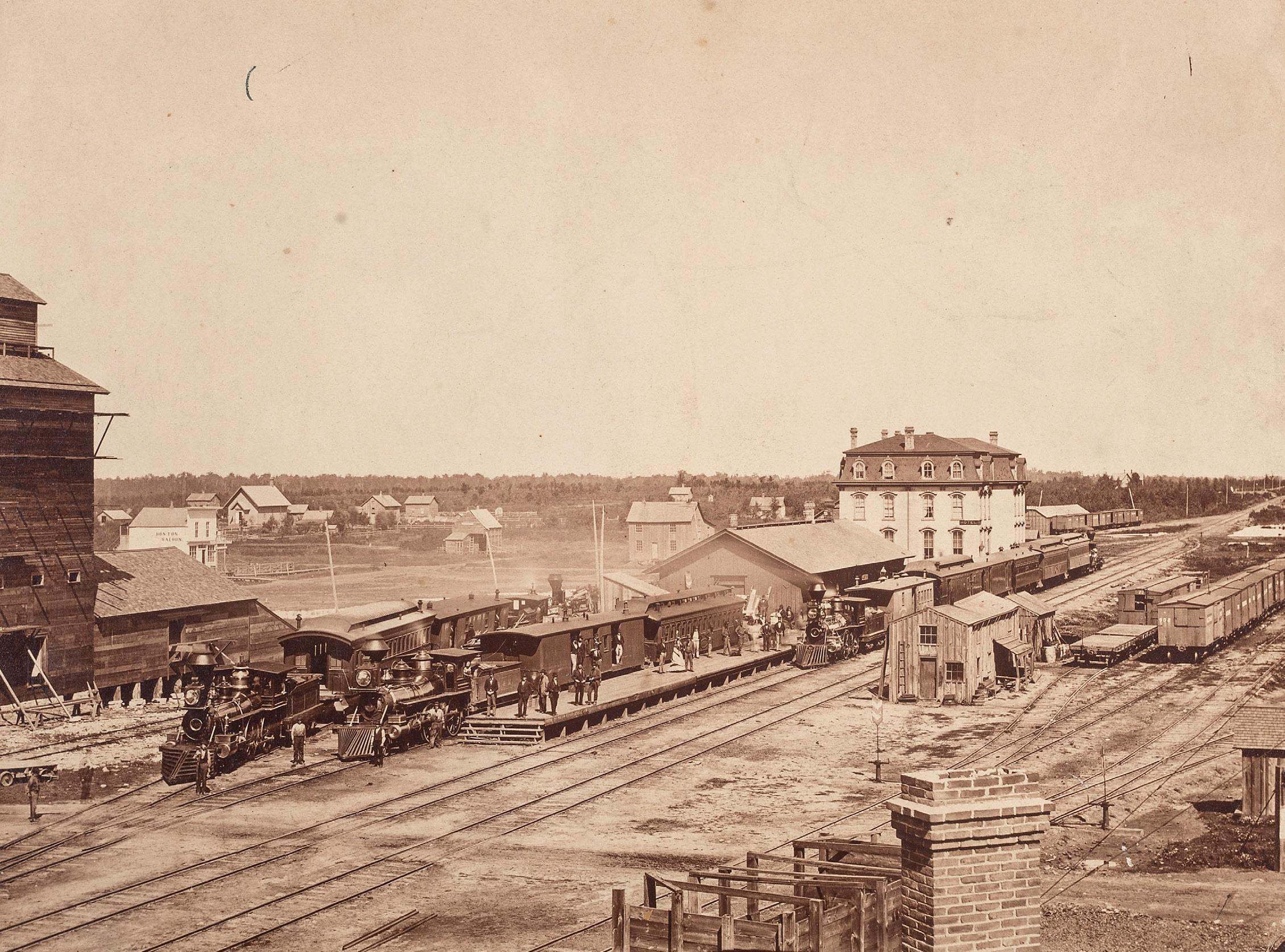
JUNE 30 | CINCINNATI | TIMED
SALE 1206 SUMMER WATCHES
JULY 11 | CHICAGO | ONLINE
SALE 1168
THE COLLECTED HOME
JULY 12 | CHICAGO | TIMED
SALE 1204
NATIVE AMERICAN JEWELRY
JULY 13 | CINCINNATI | ONLINE
SALE 1197
NATIVE AMERICAN ART
JULY 17 | CINCINNATI | TIMED
SALE 1207
ARMS, ARMOR & MILITARIA
JULY 18 | CINCINNATI | TIMED
SALE 1208 + 1209
EUROPEAN FURNITURE & DECORATIVE ARTS
JULY 19-20 | CHICAGO | LIVE + ONLINE
SALE 1210
EUROPEAN FURNITURE & DECORATIVE ARTS ONLINE
JULY 21 | CHICAGO | TIMED
SALE 1205
NEVER TOO MUCH
JULY 27 | CHICAGO | LIVE + ONLINE
We are accepting American Historical Ephemera and Photography consignments for auction. Contact us to receive an estimate on a single item or an entire collection.
Ninth plate daguerreotype portrait of General James Birdseye McPherson (1828-1864)

Estimate: $4,000 - 6,000
To be offered November 2023, American Historical Ephemera & Photography, including Property from the Early Photography Collection of Jules Martino
Katie Horstman | 513.666.4958
katiehorstman@hindmanauctions.com
HINDMANAUCTIONS.COM
